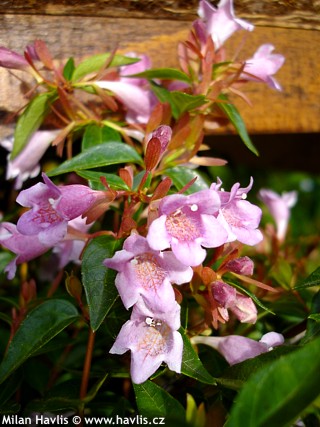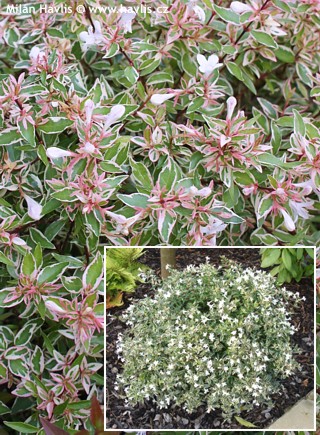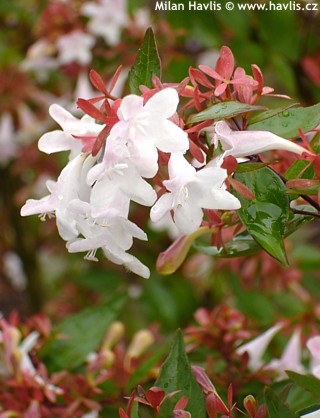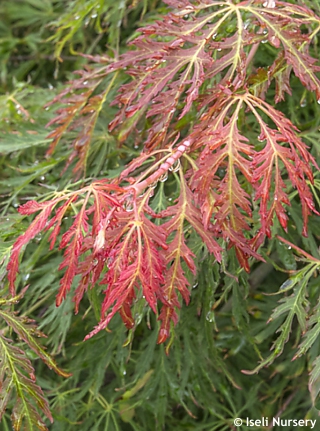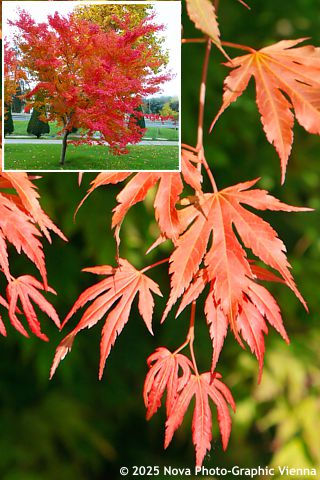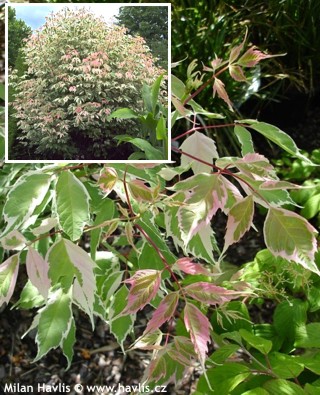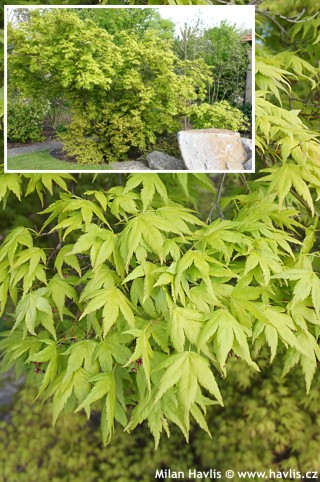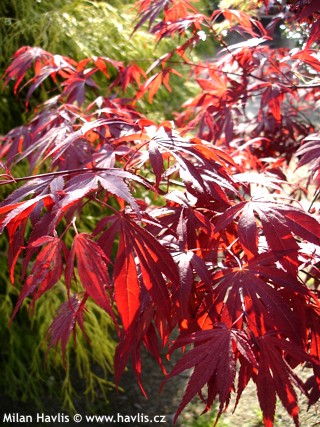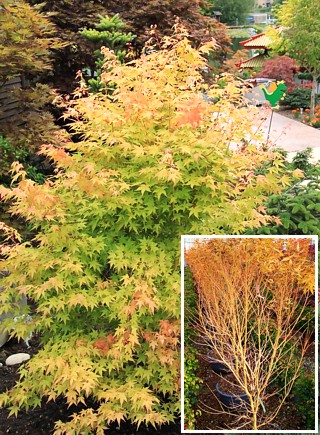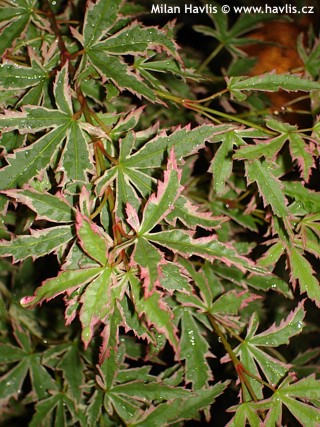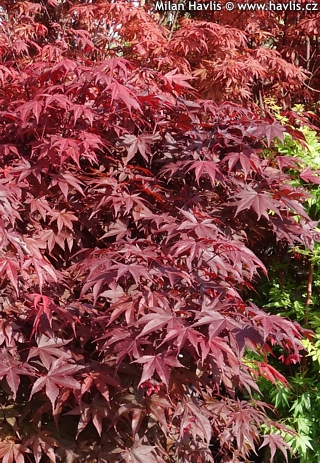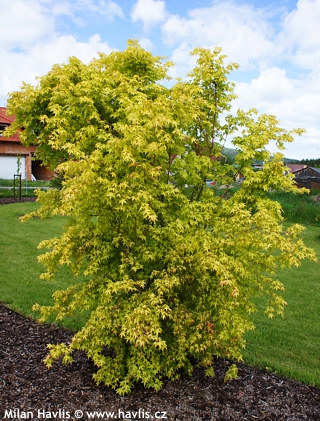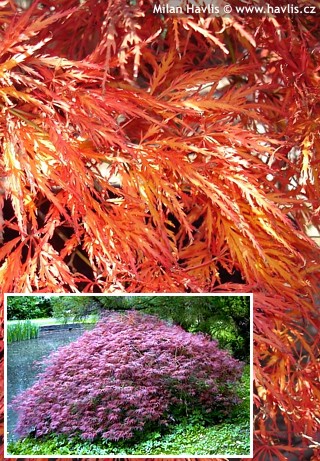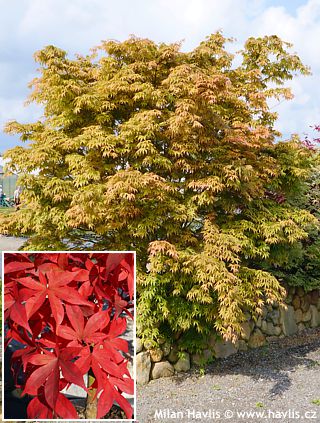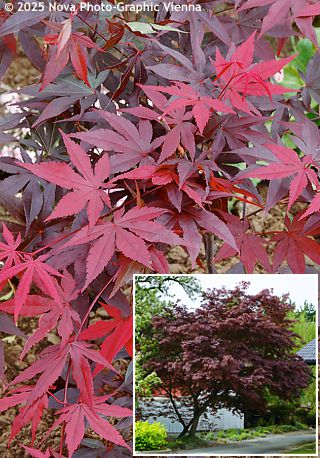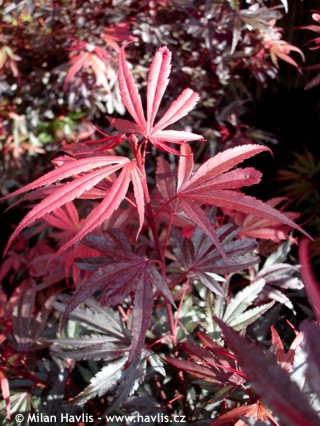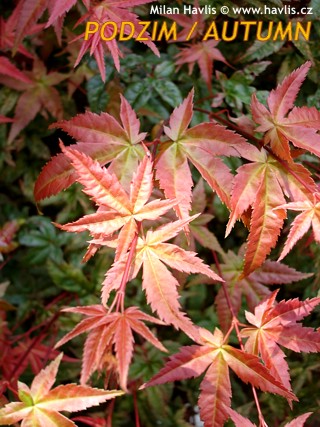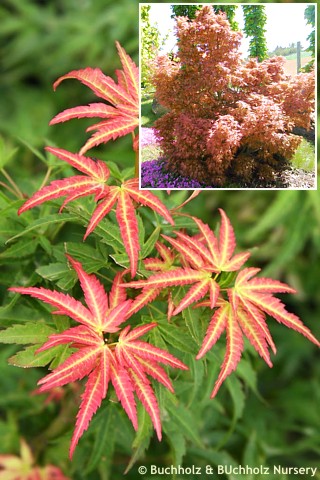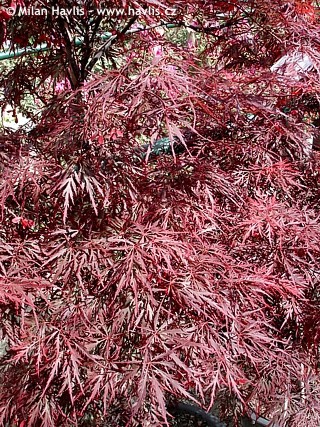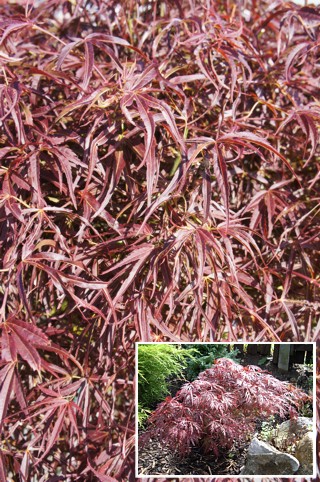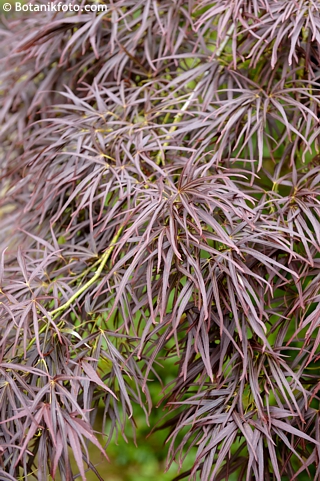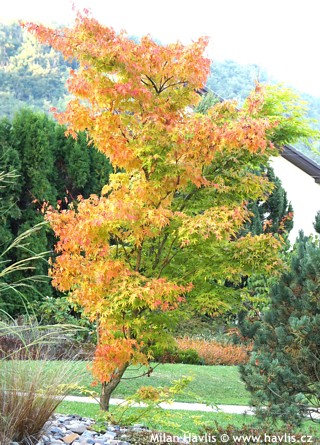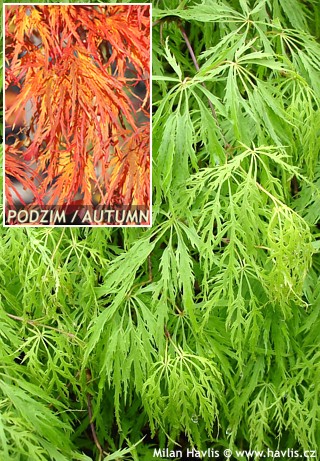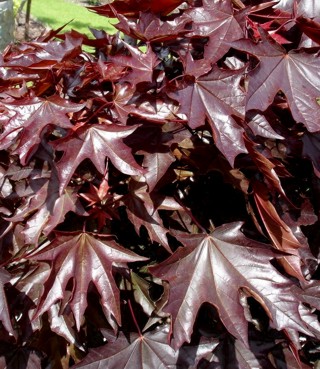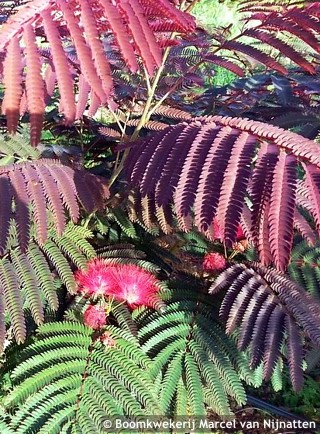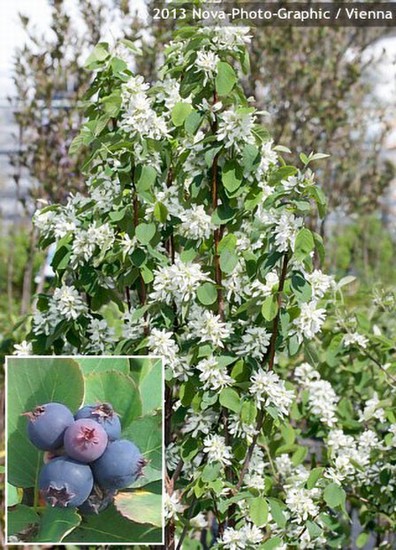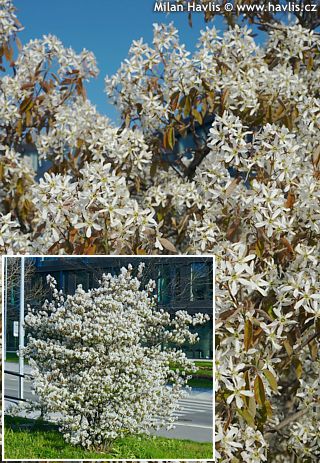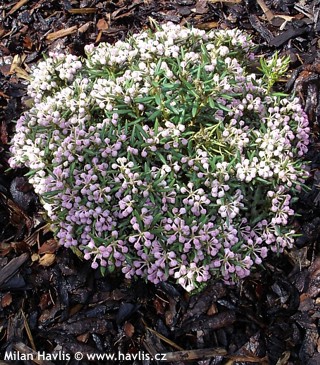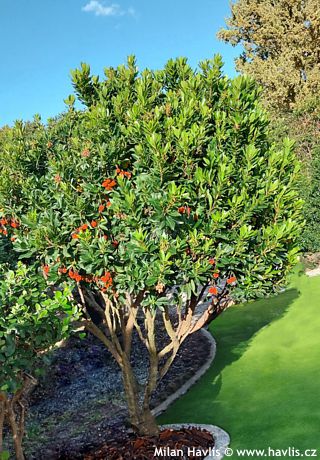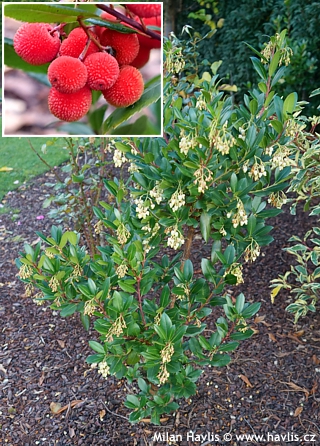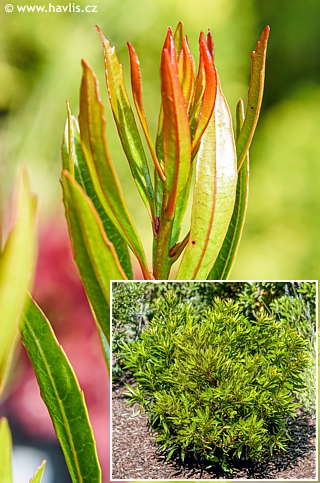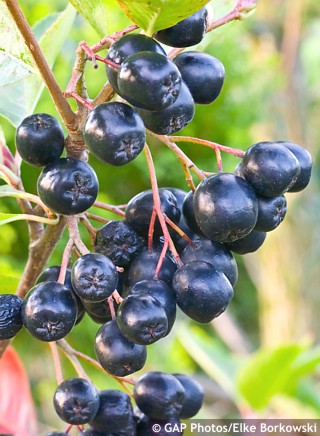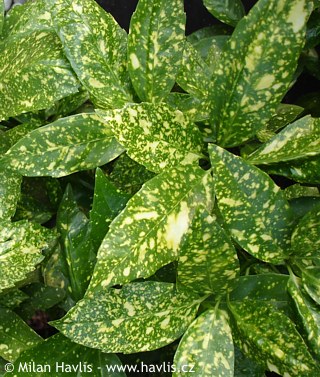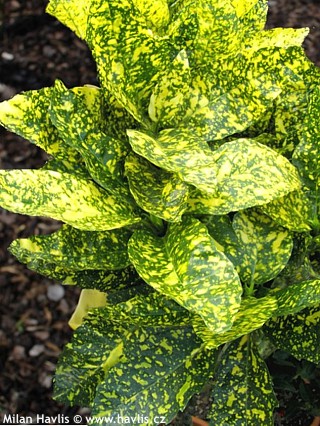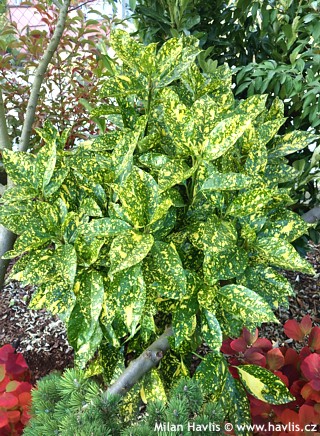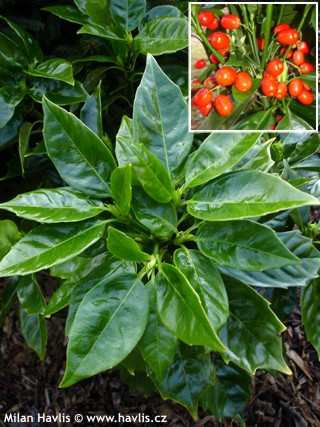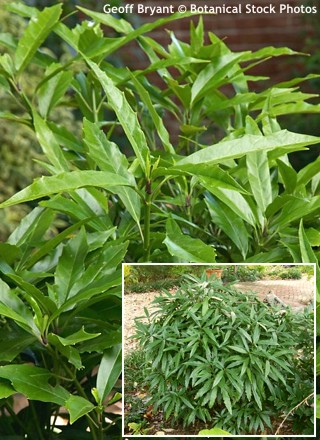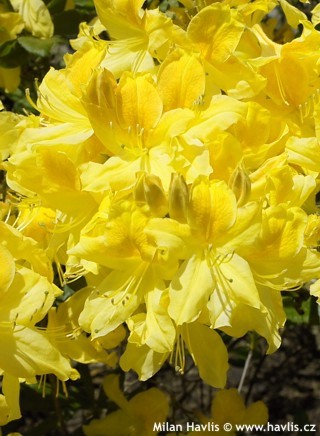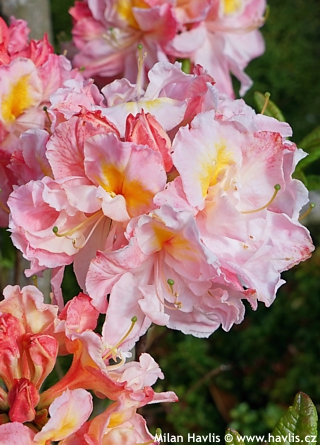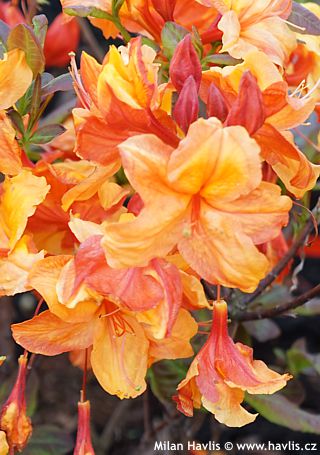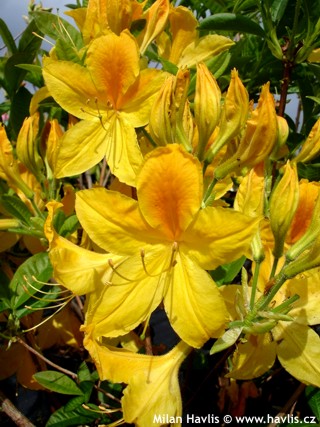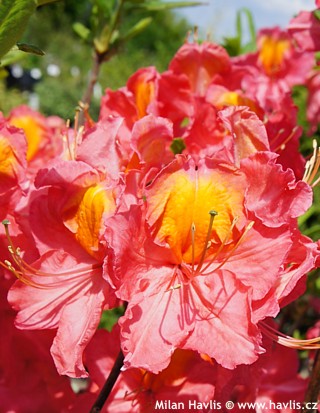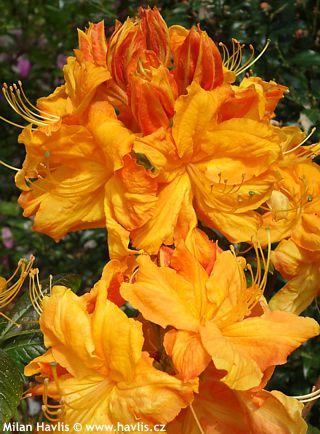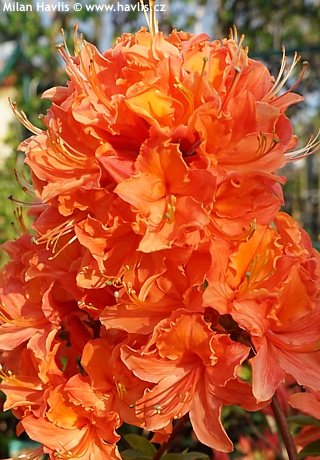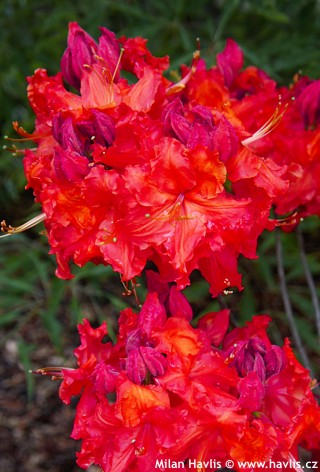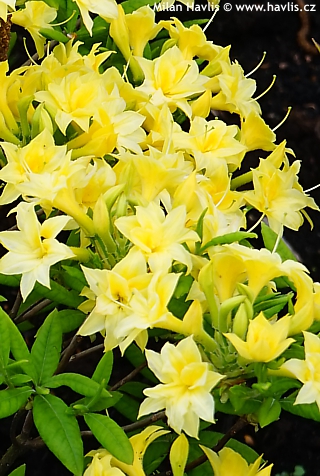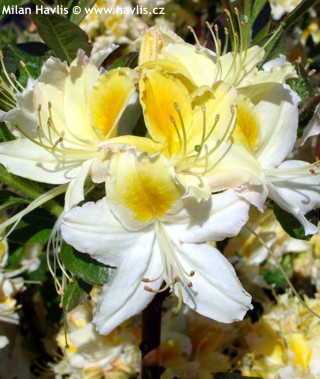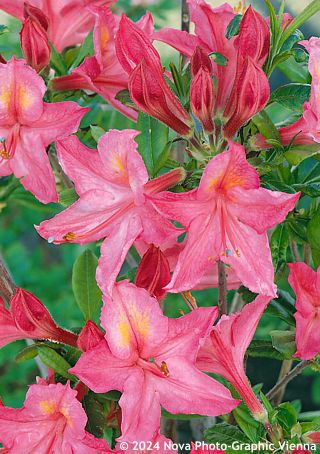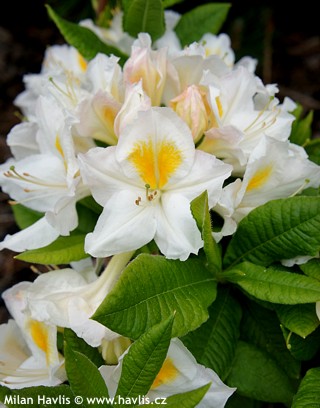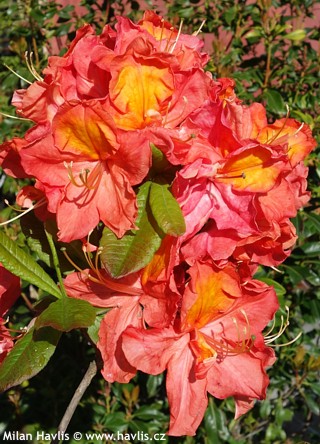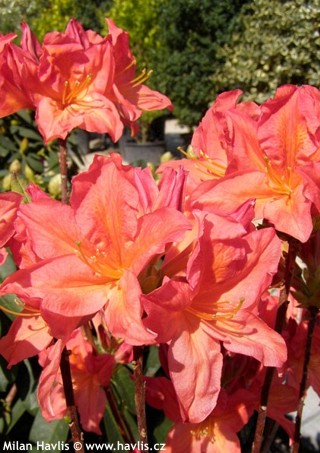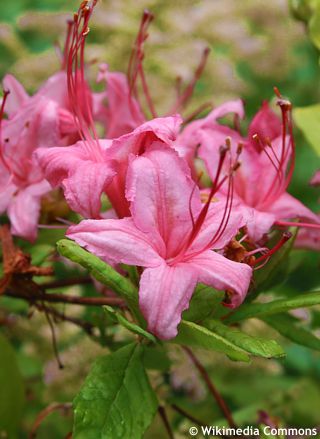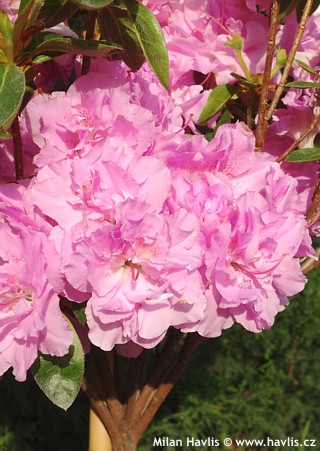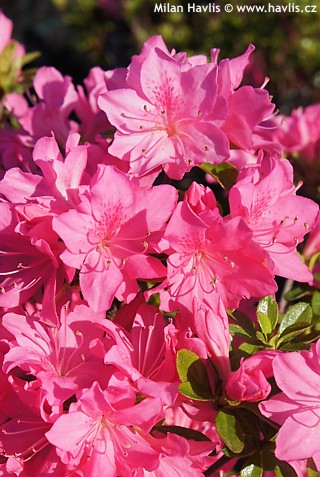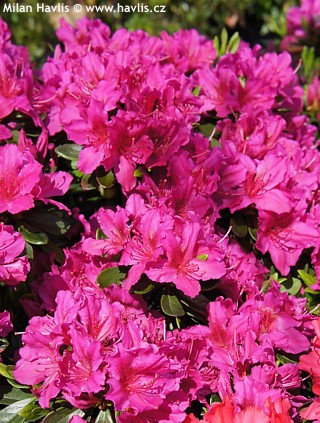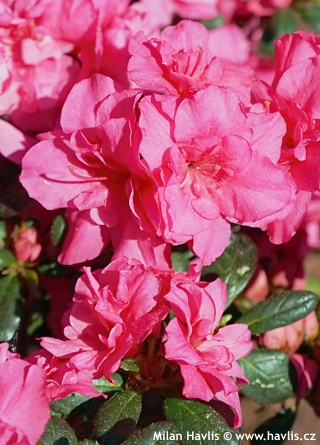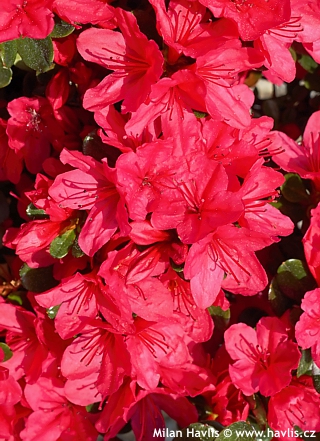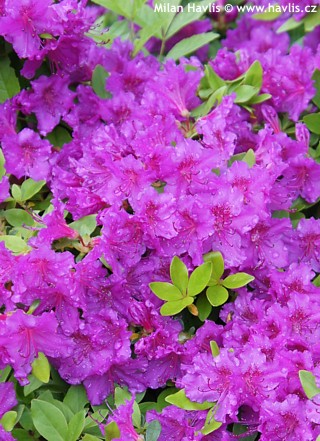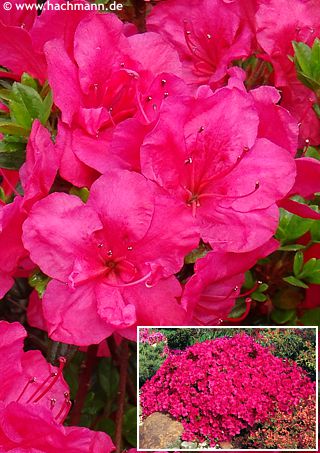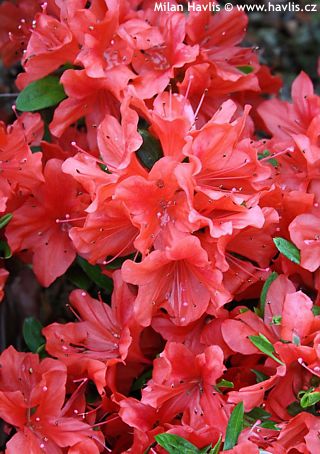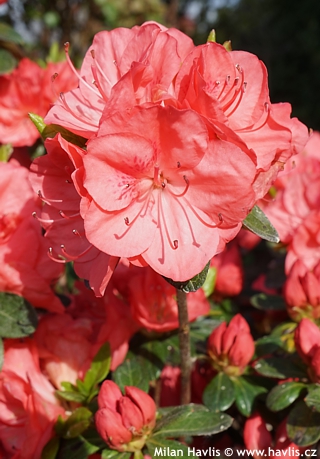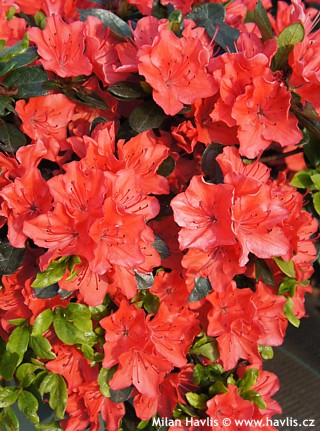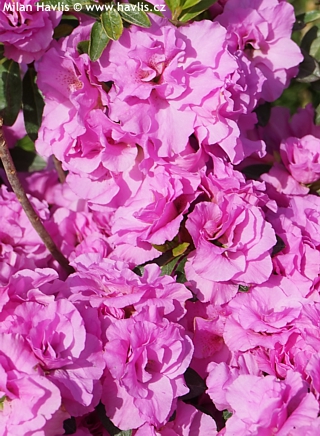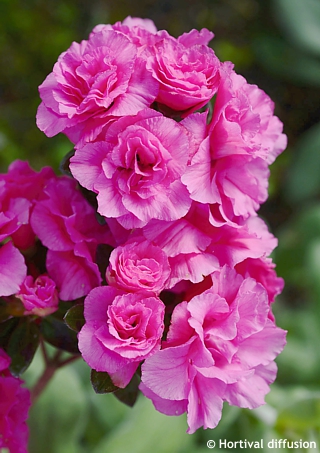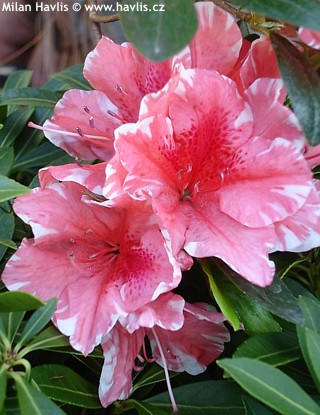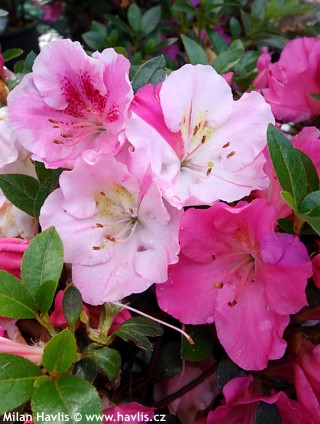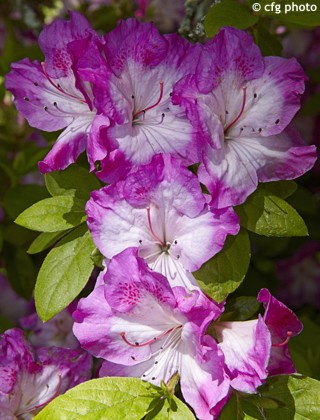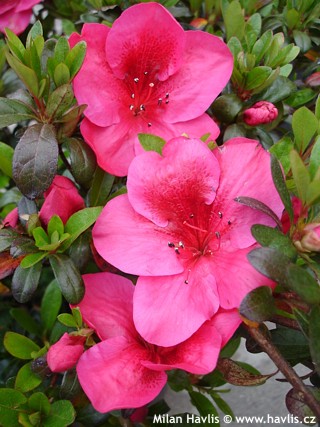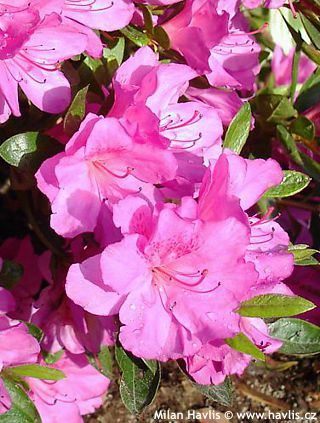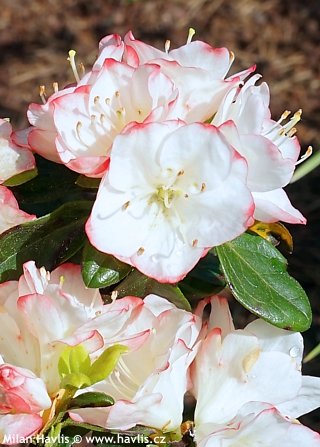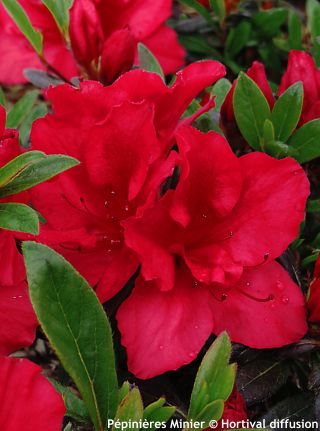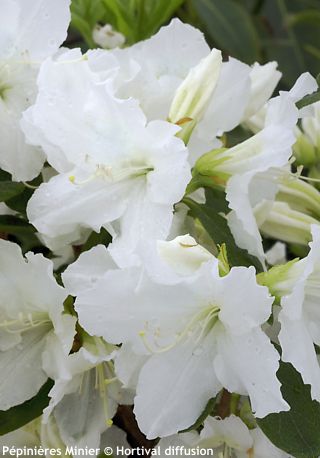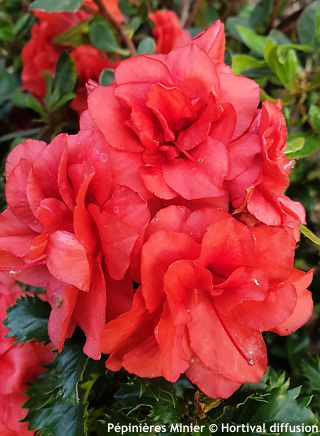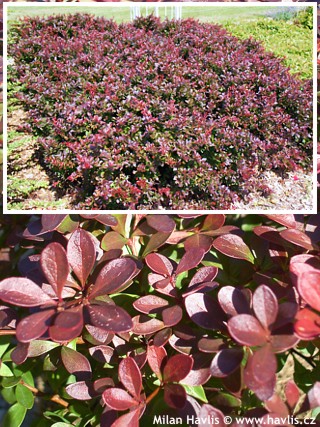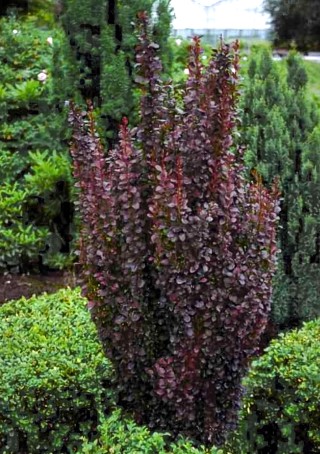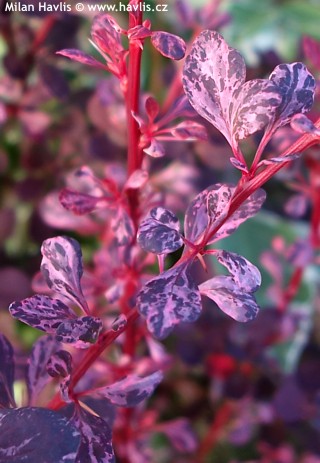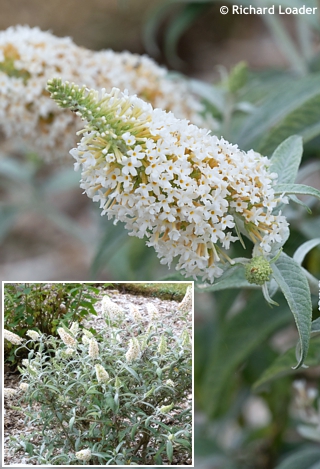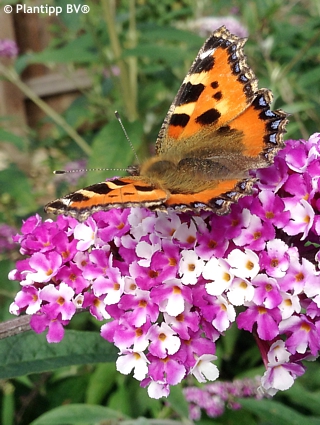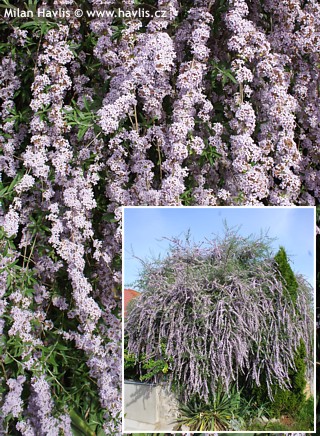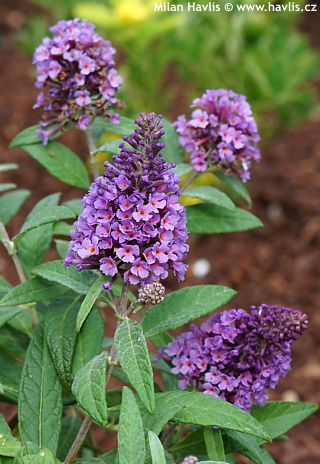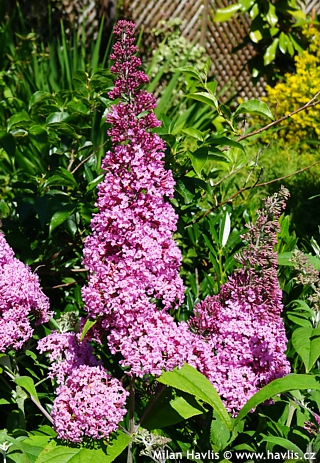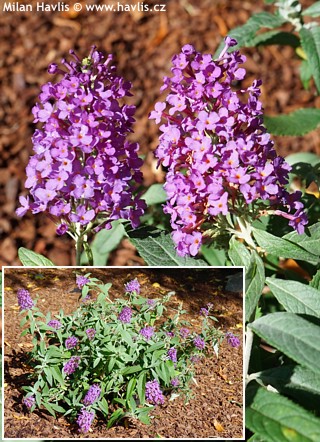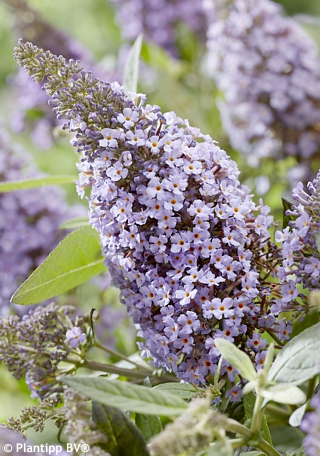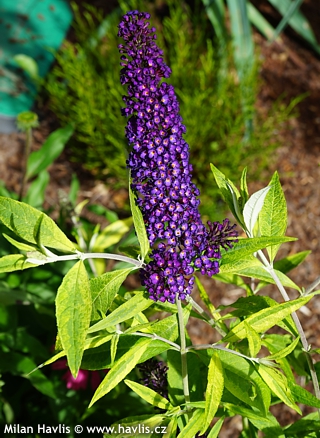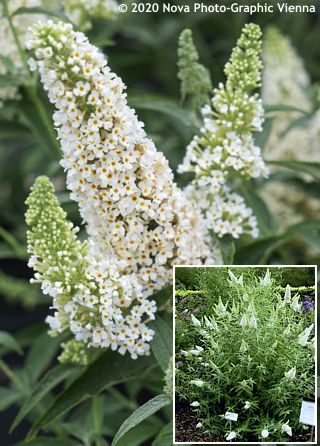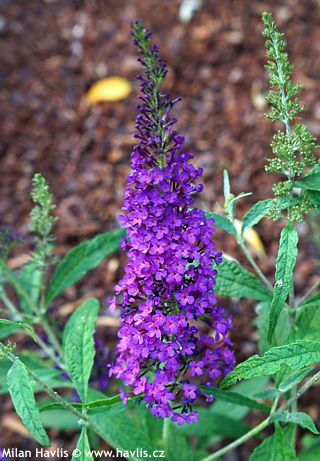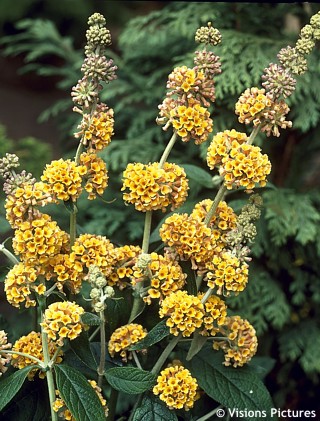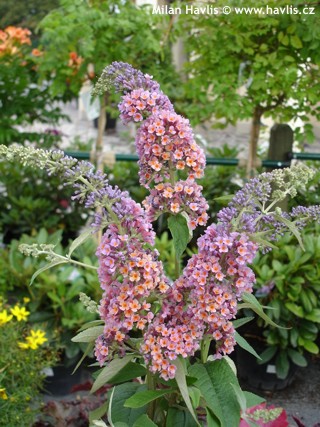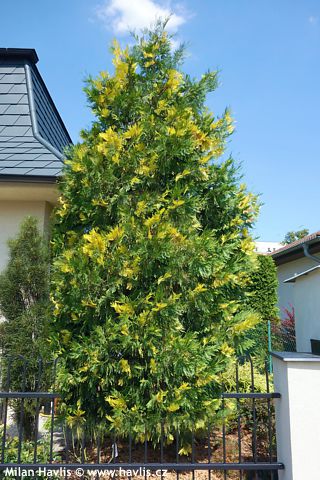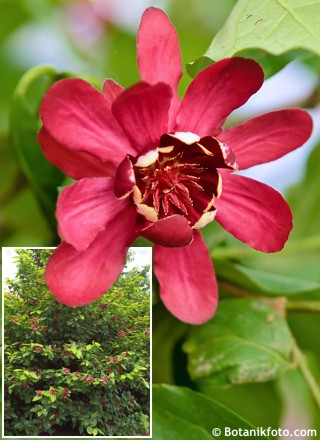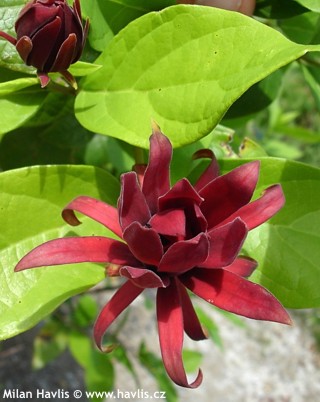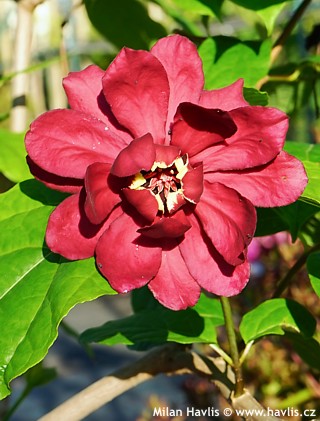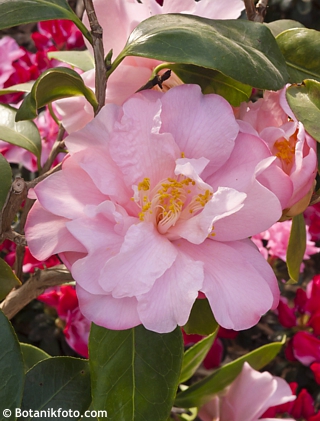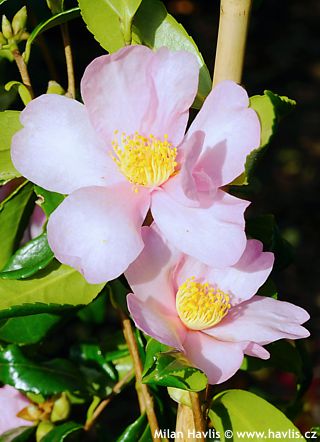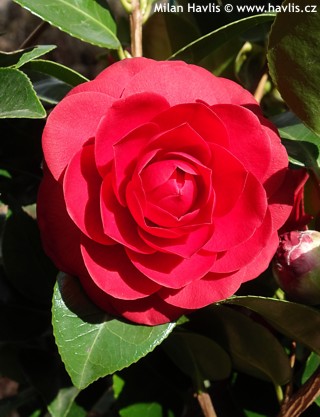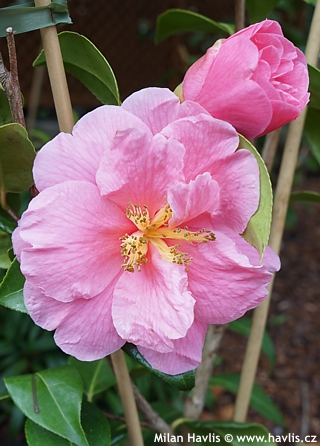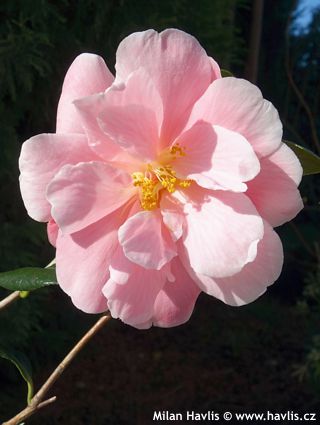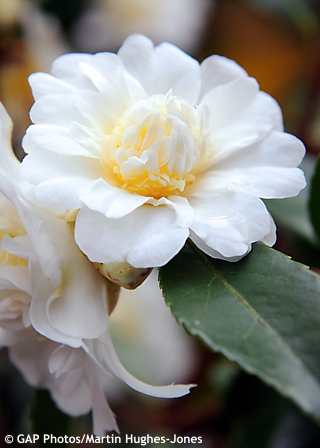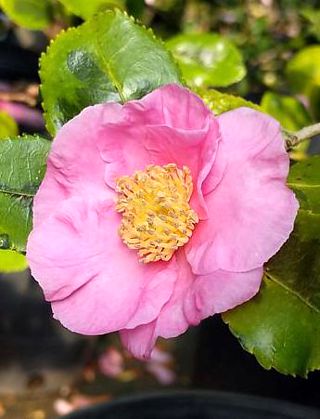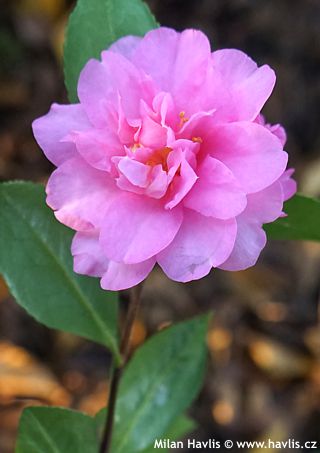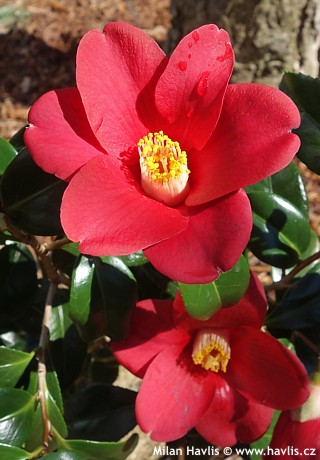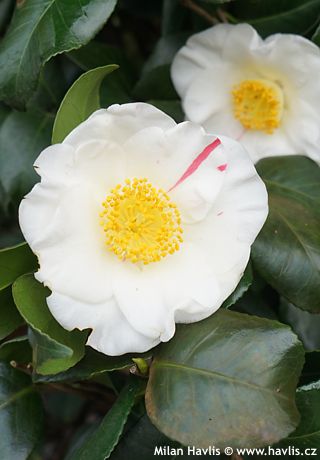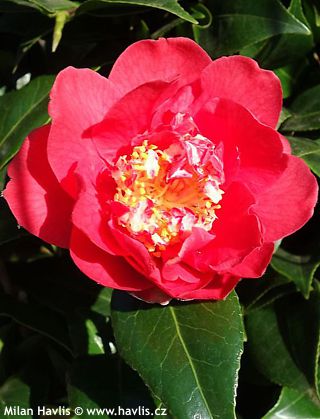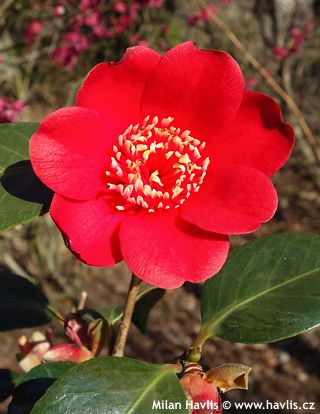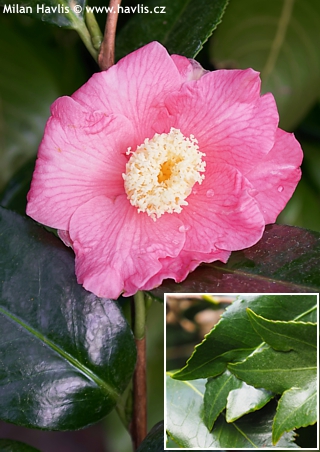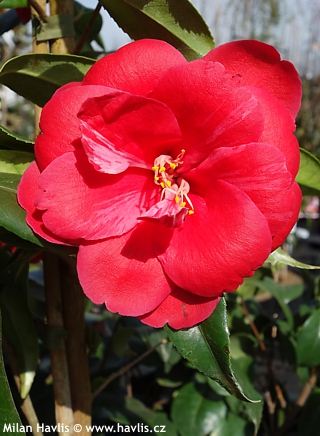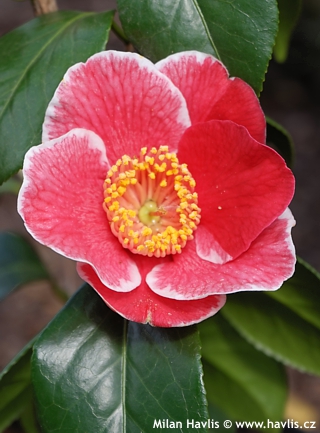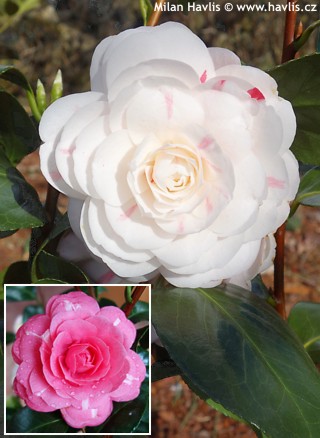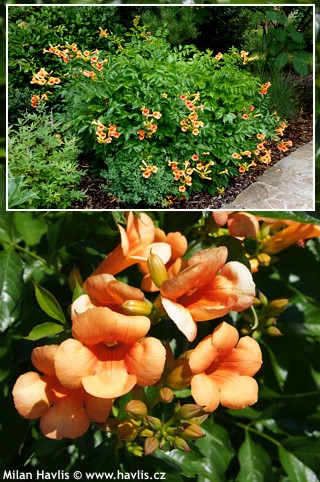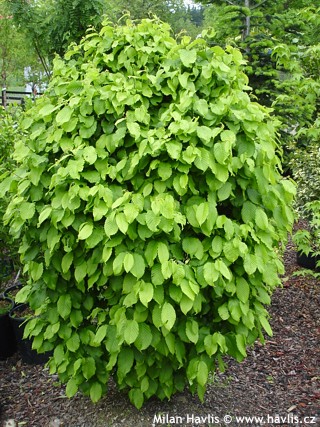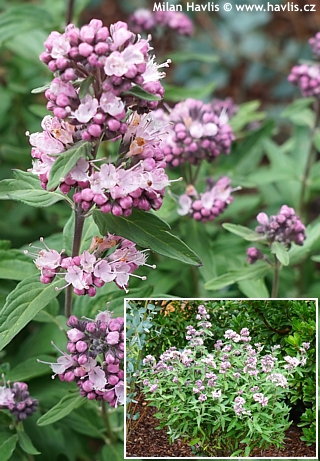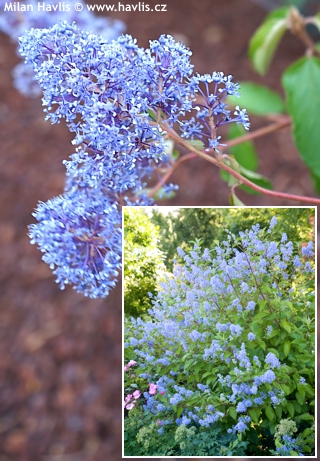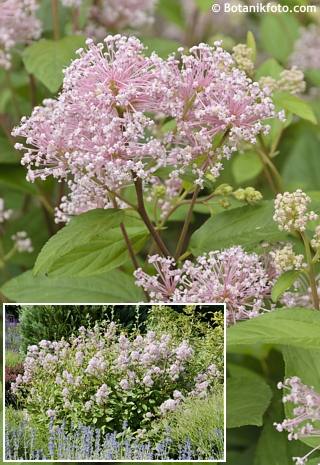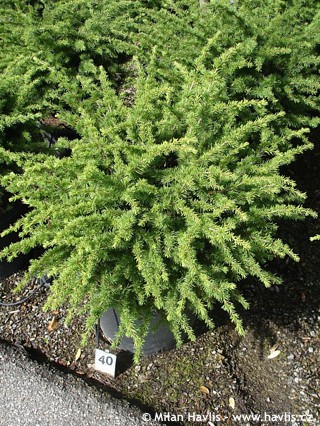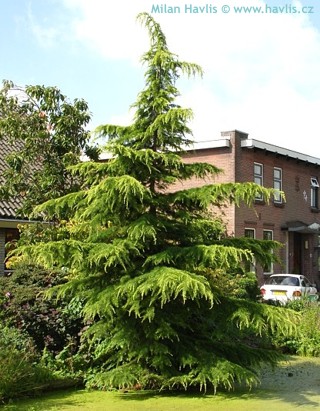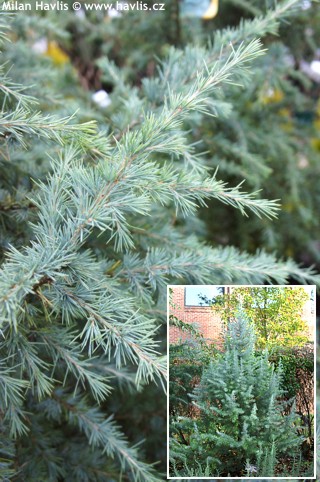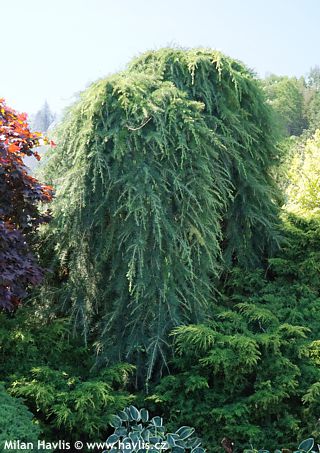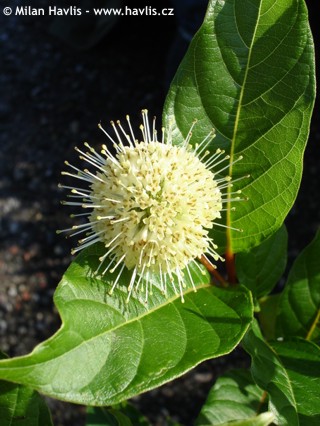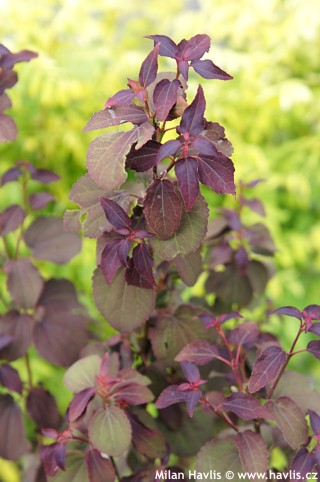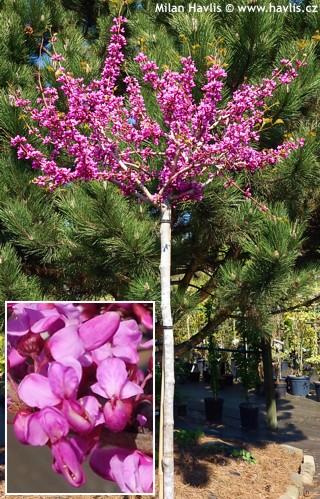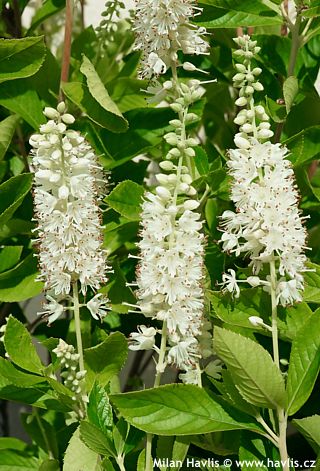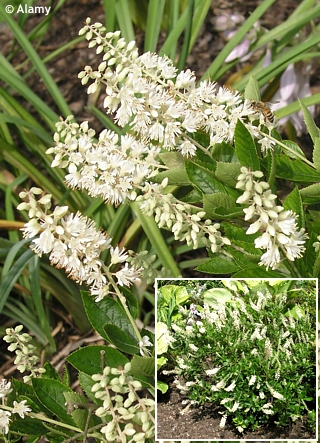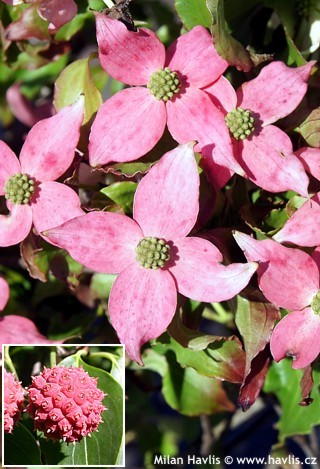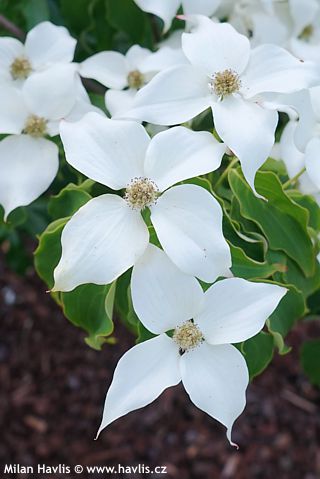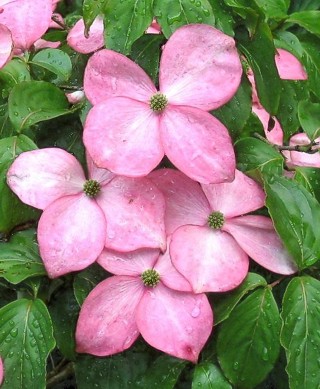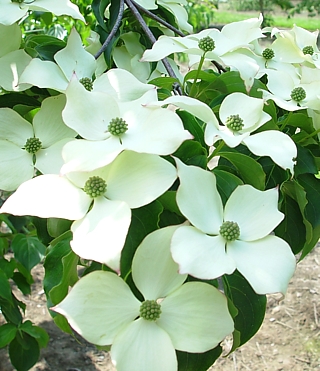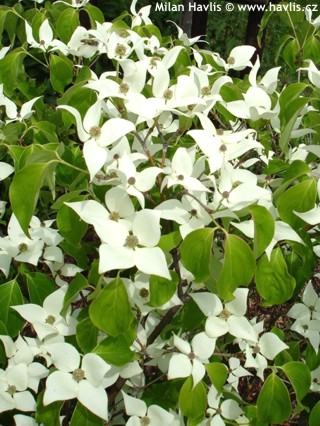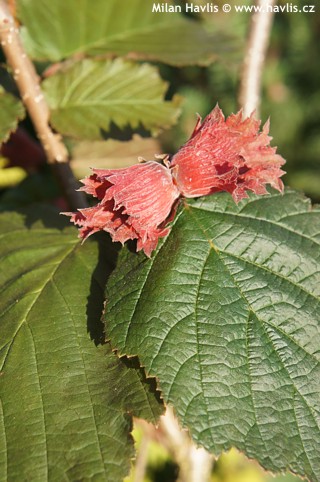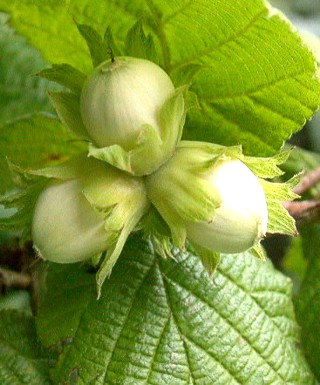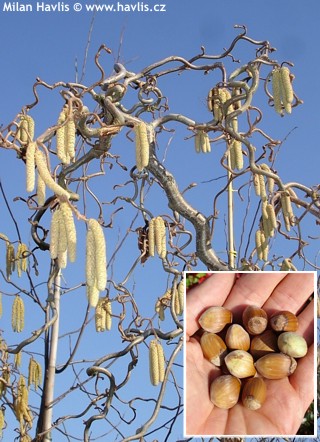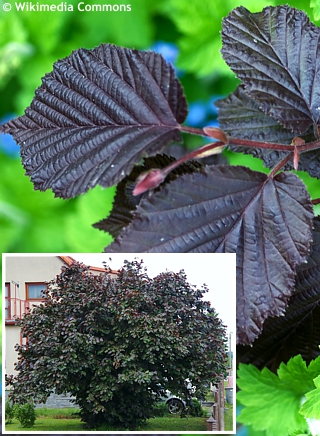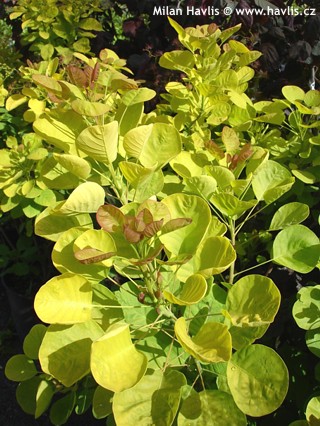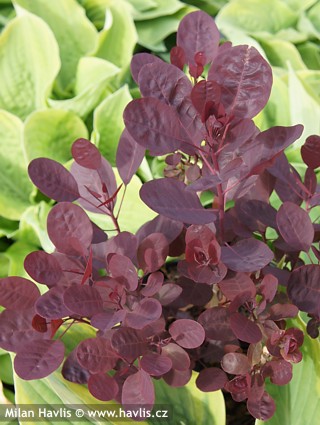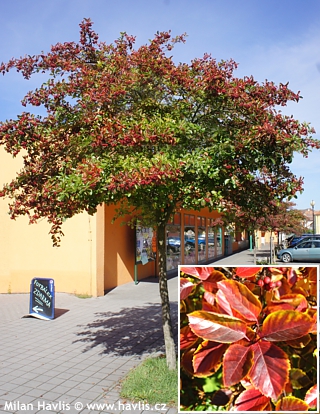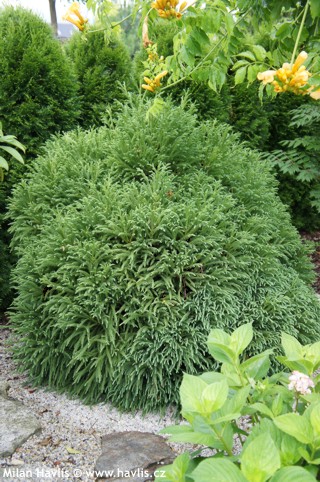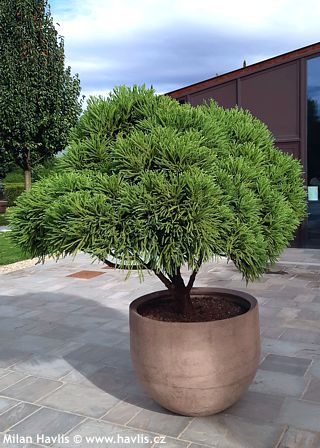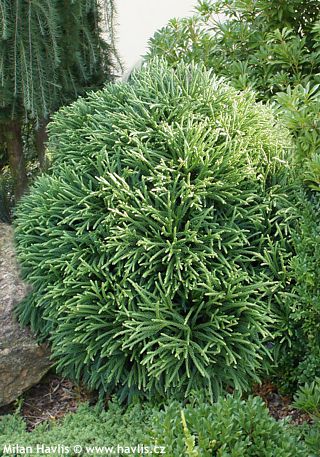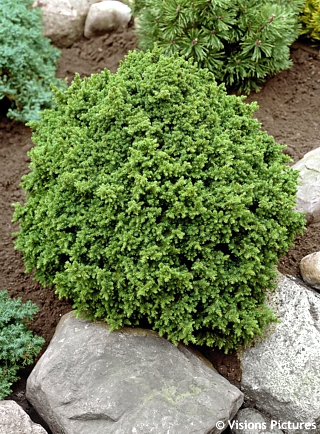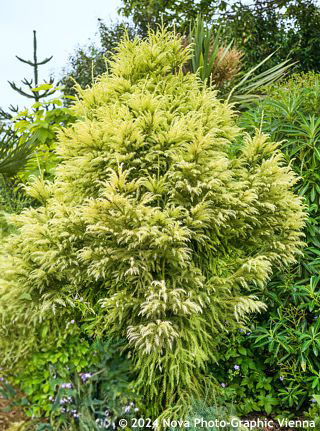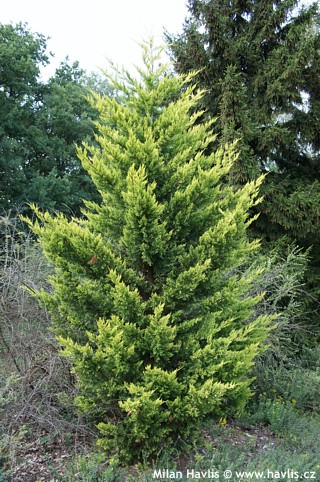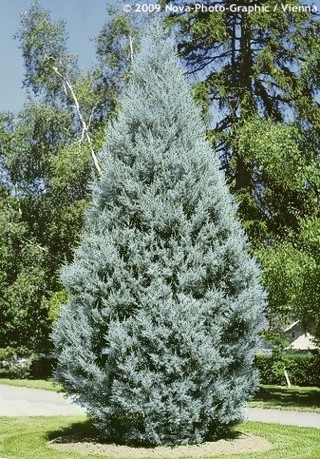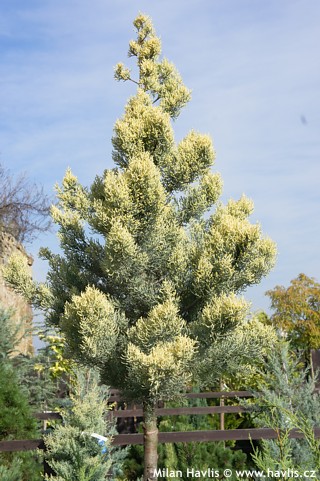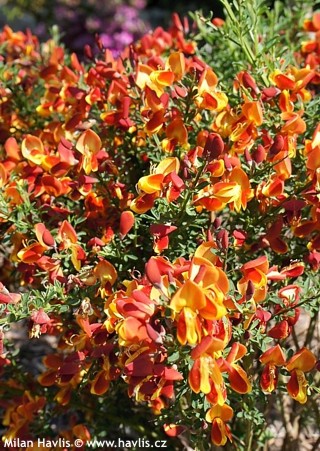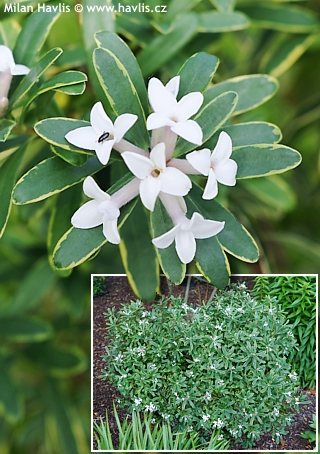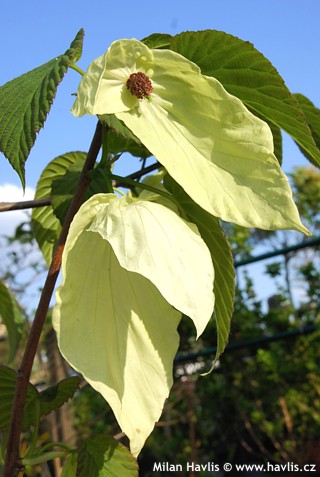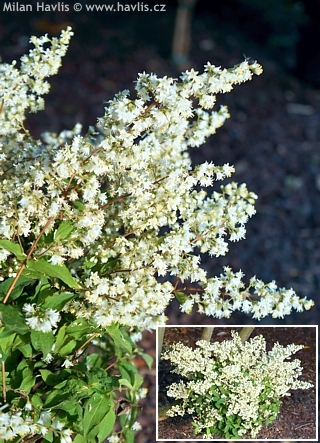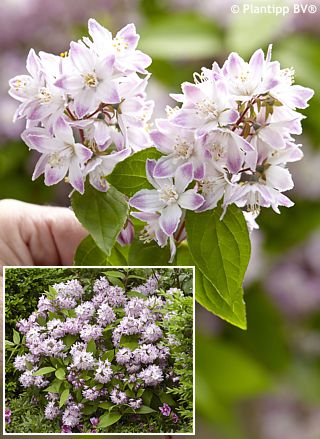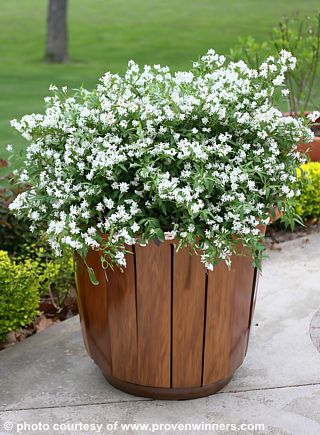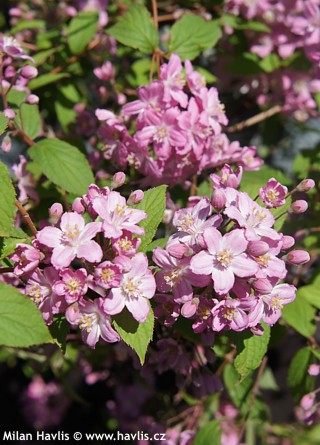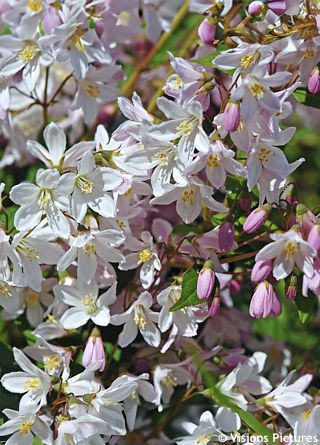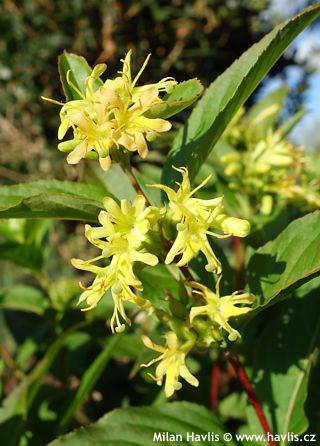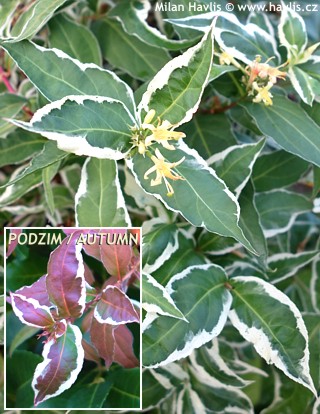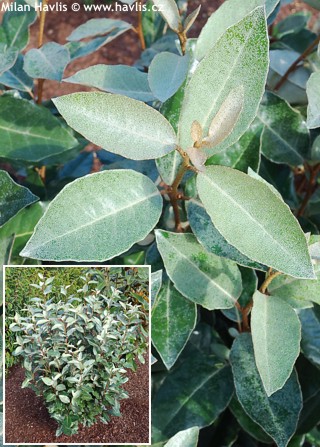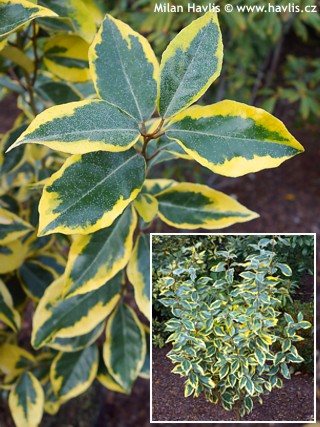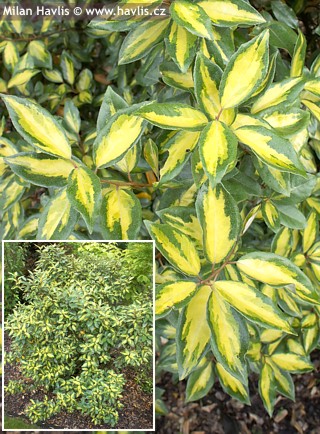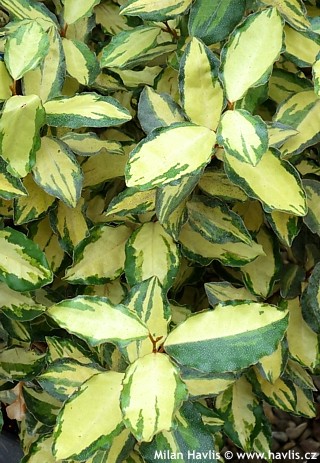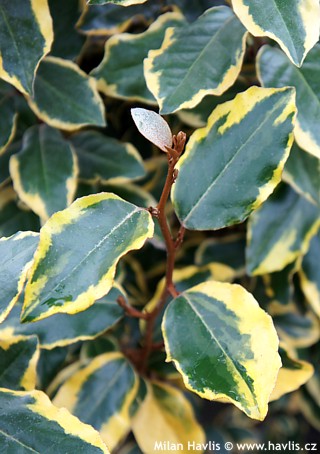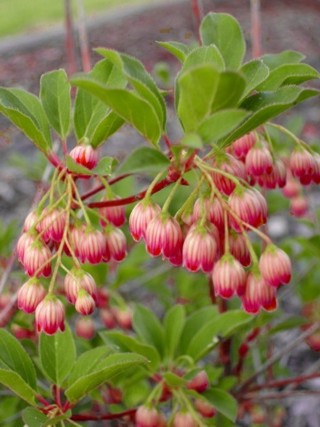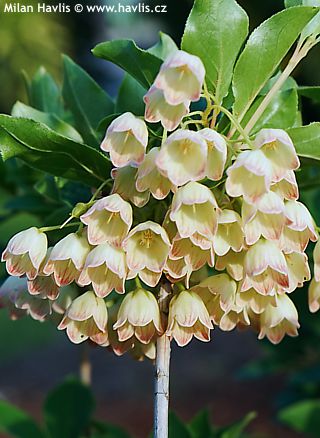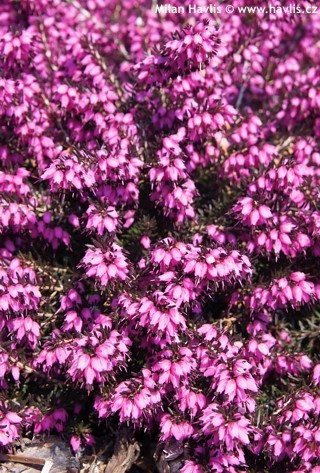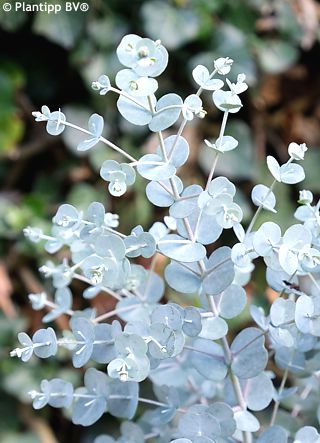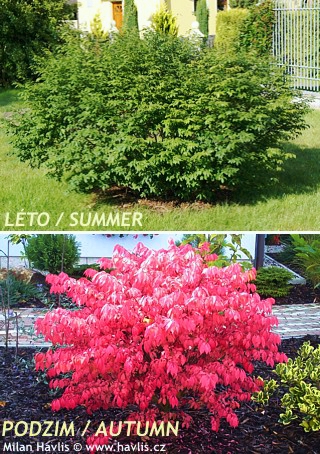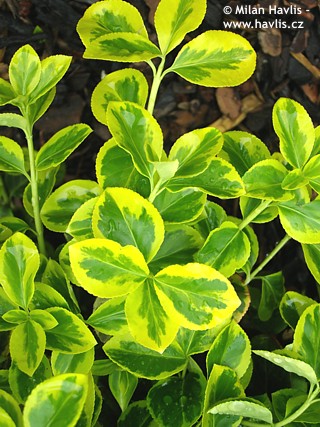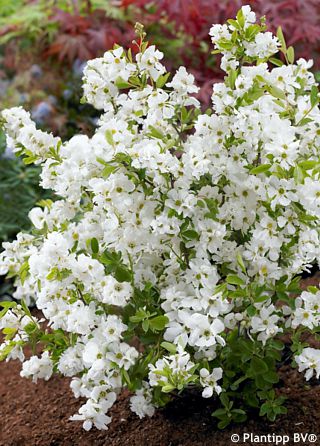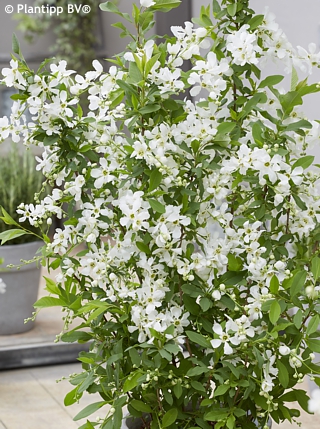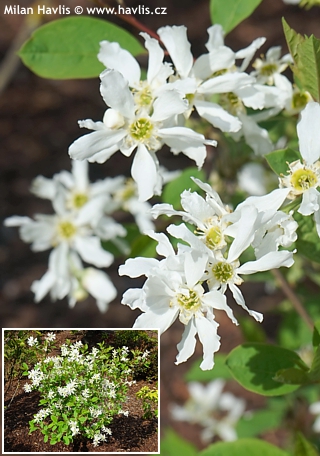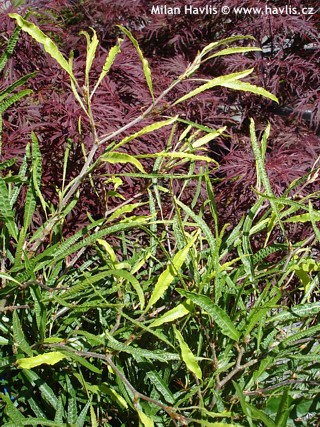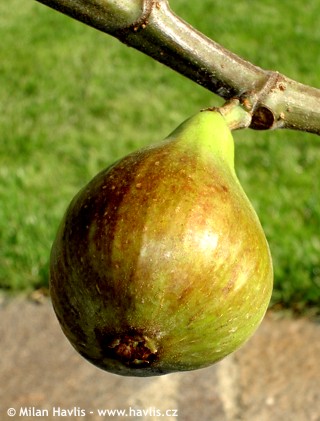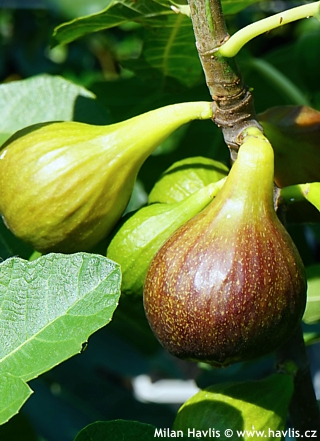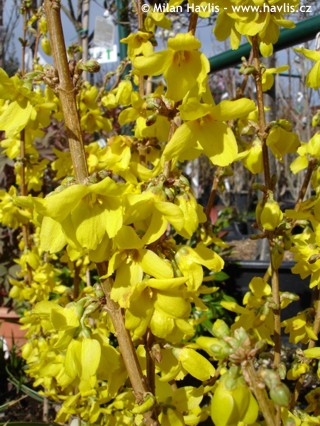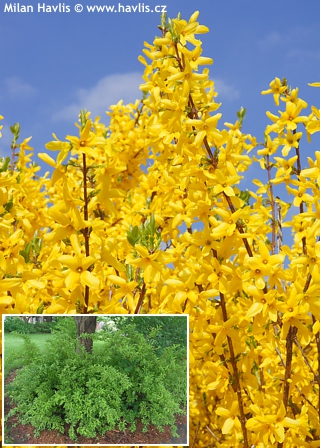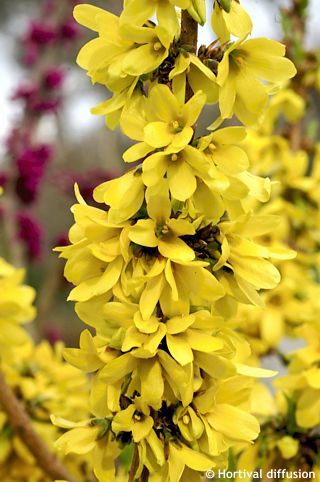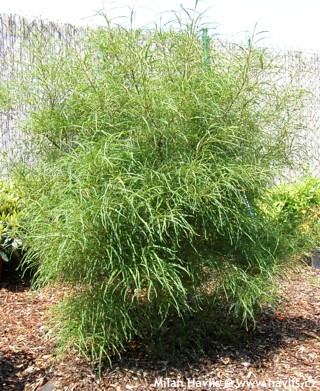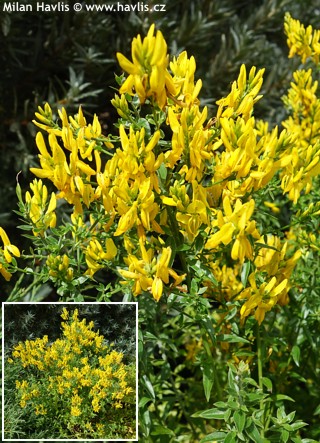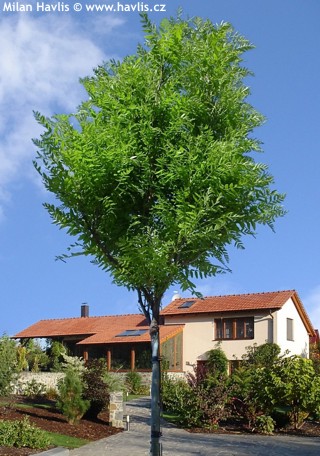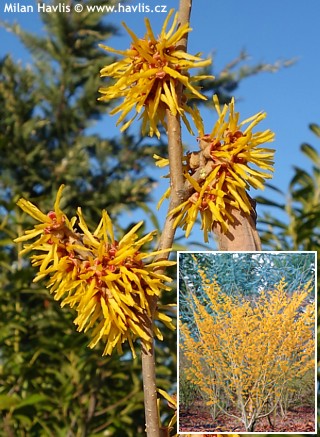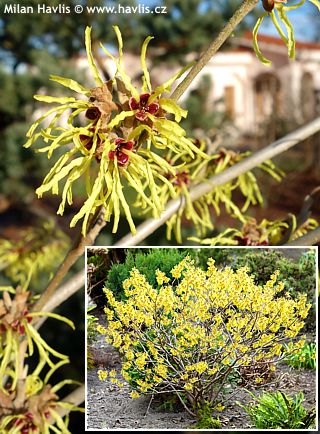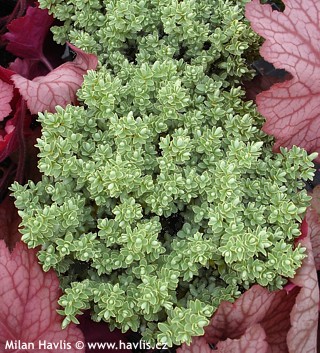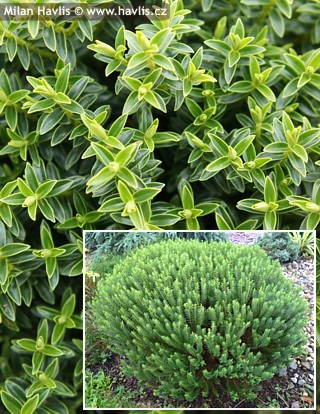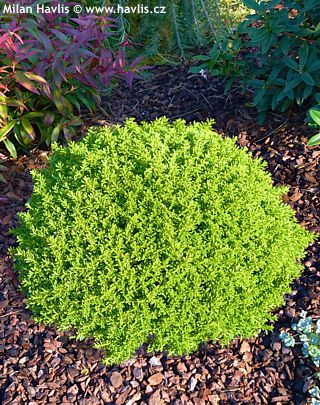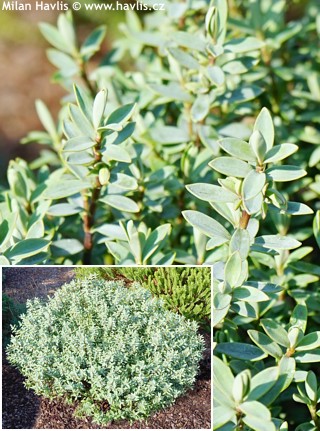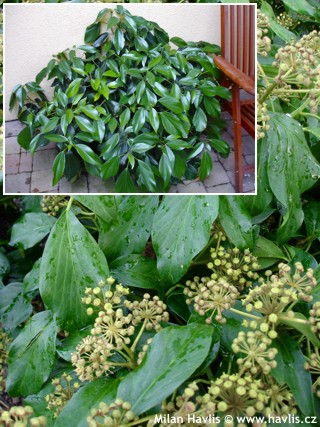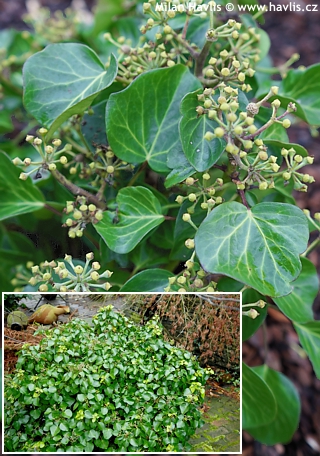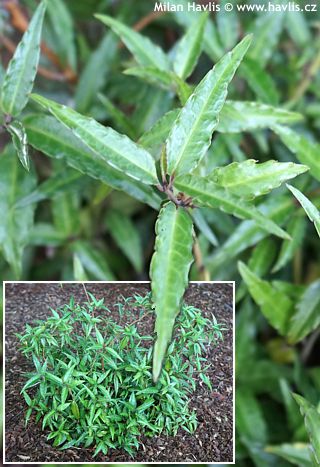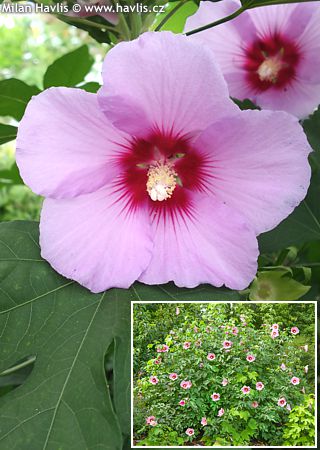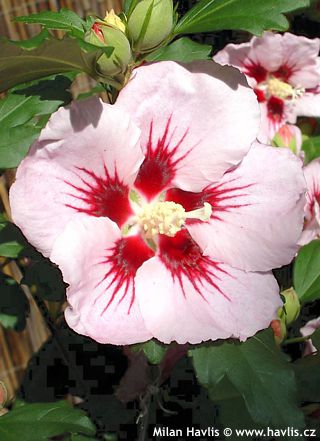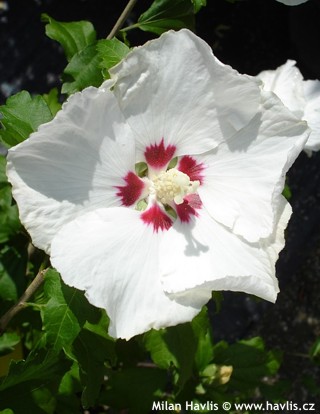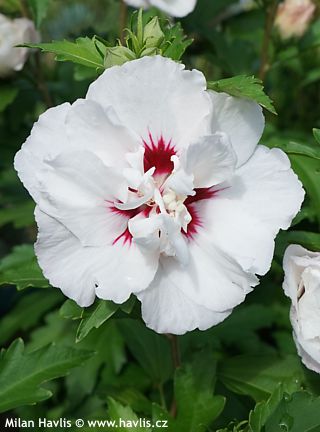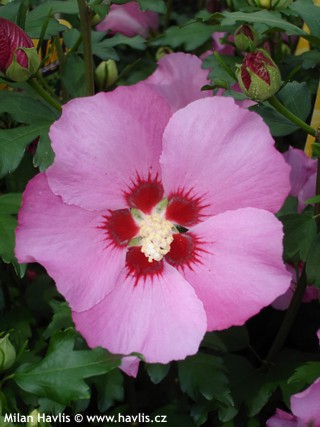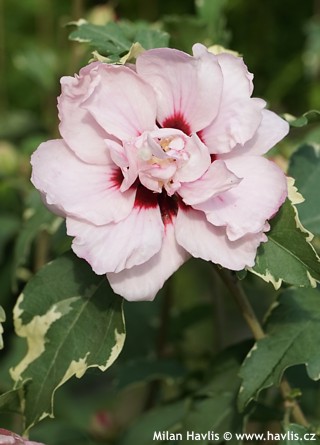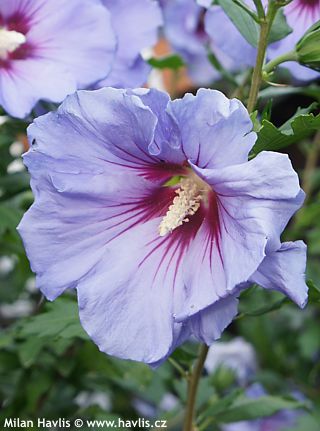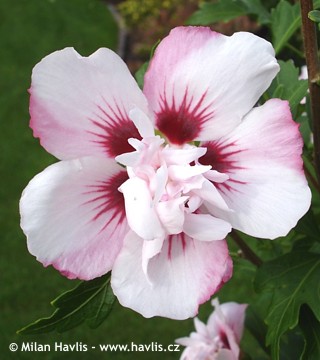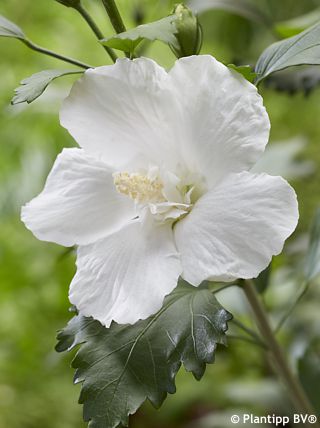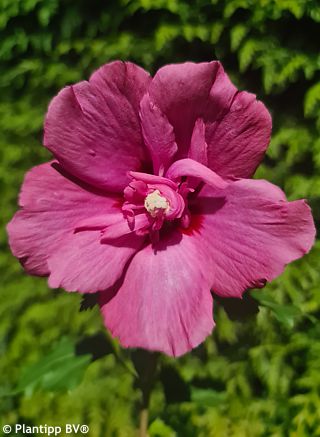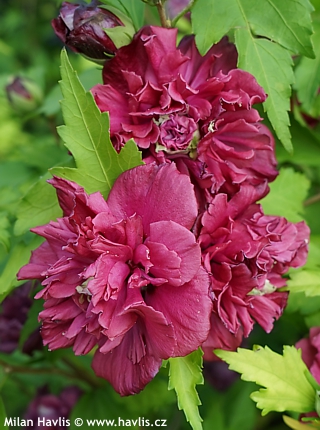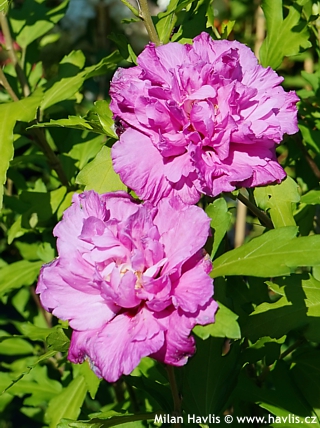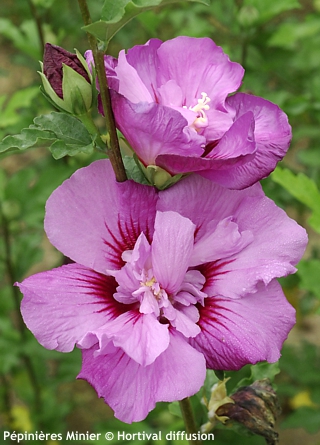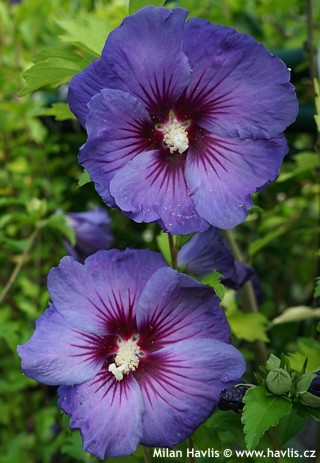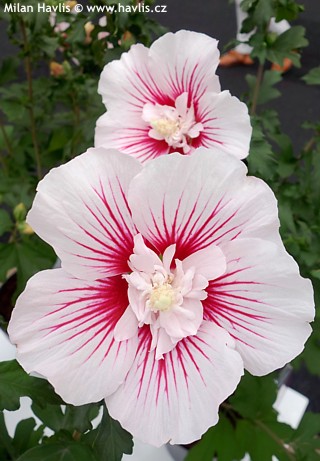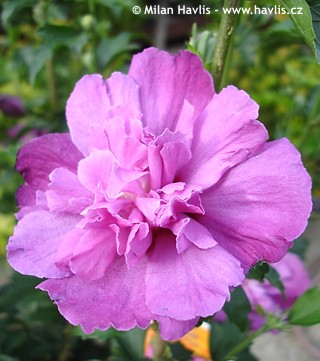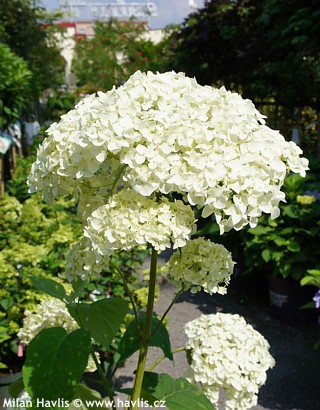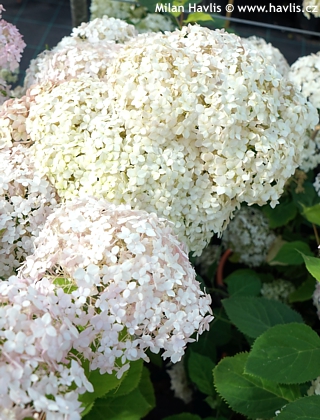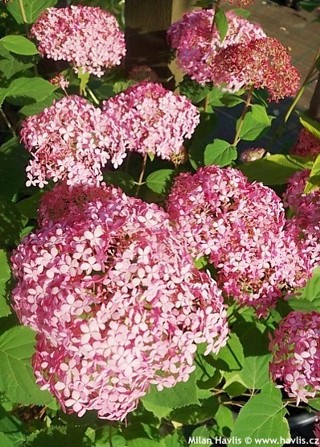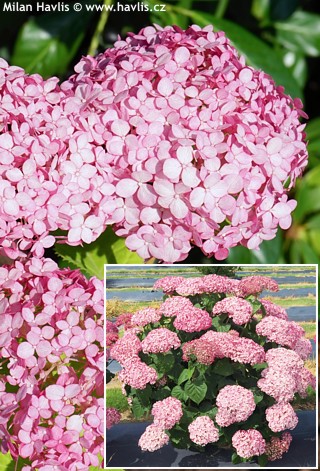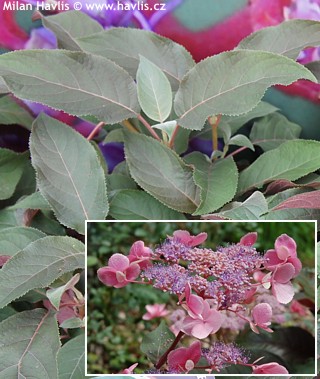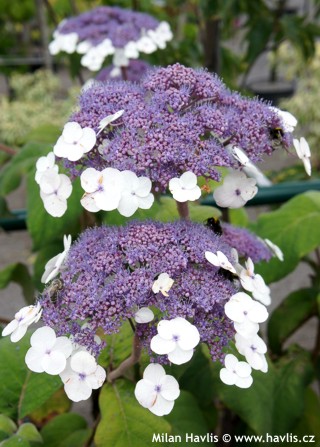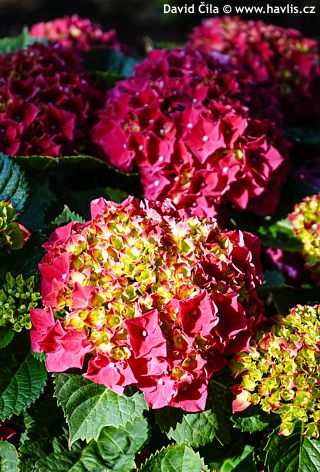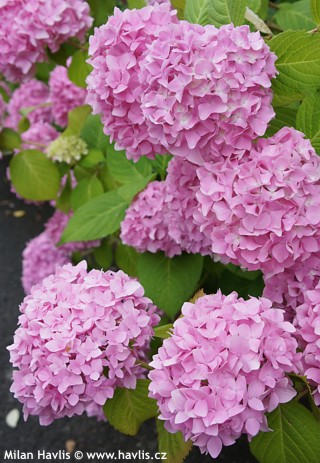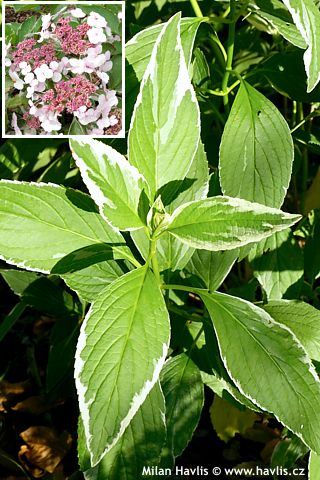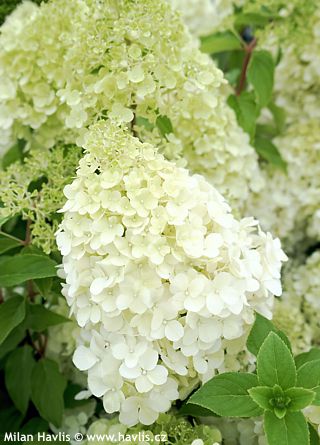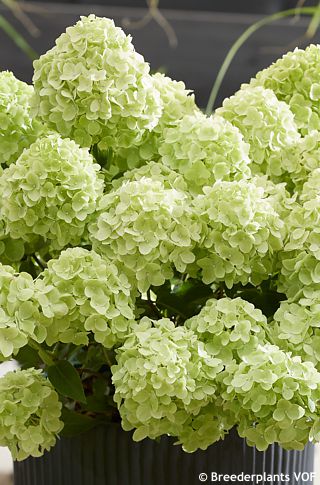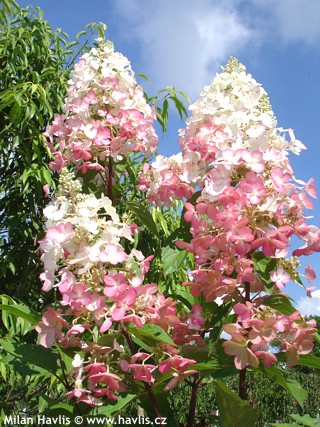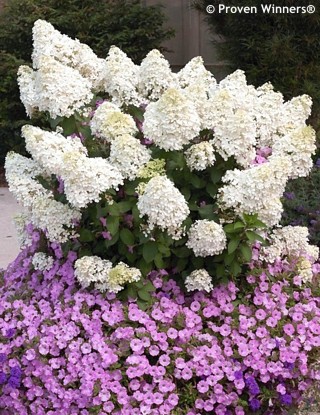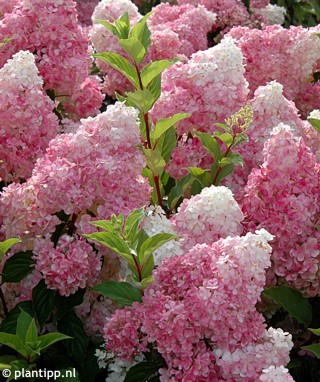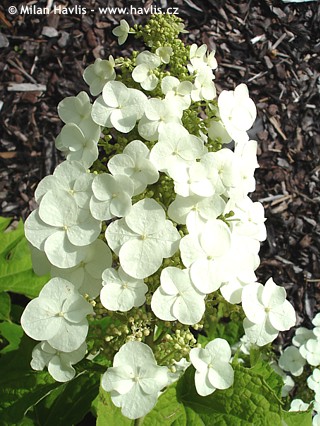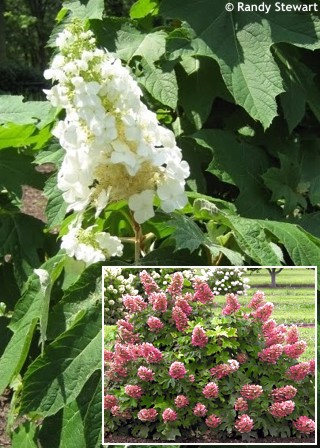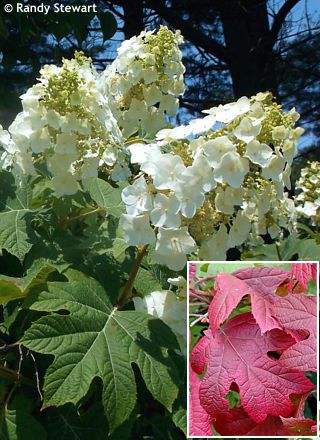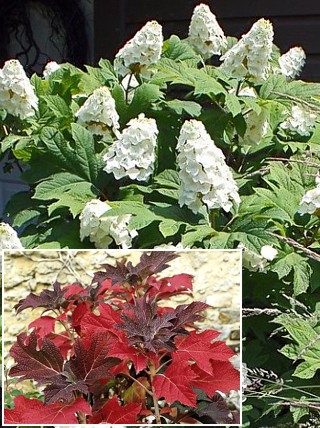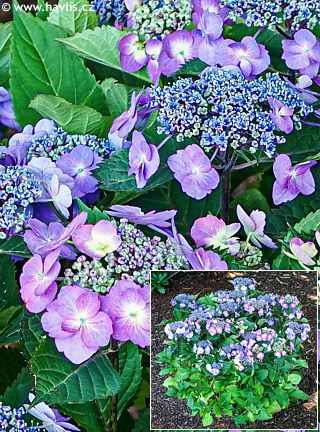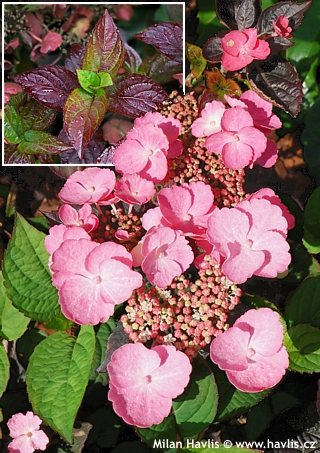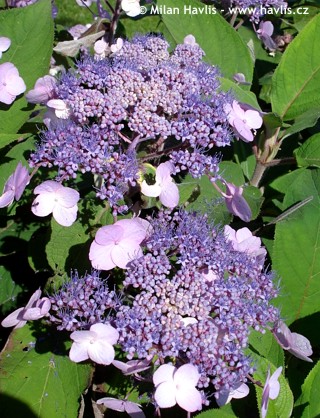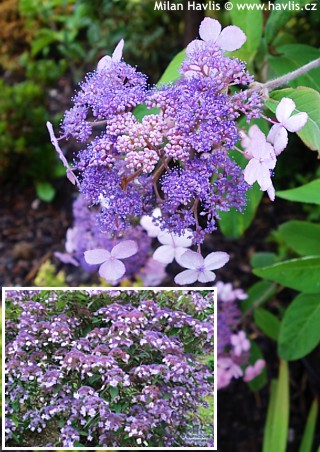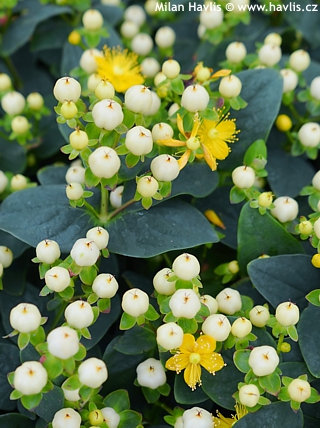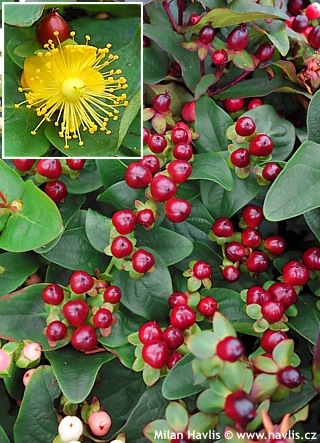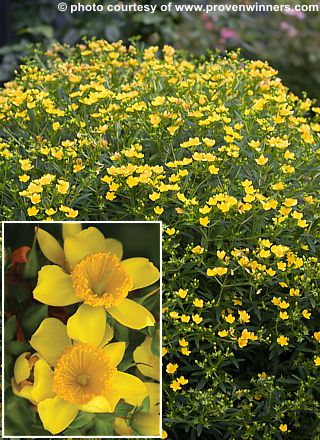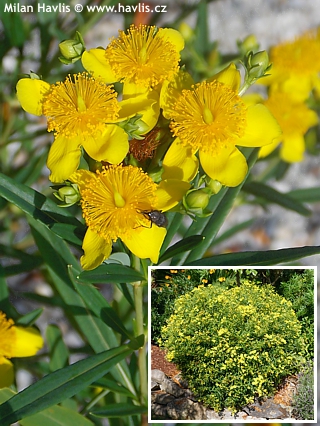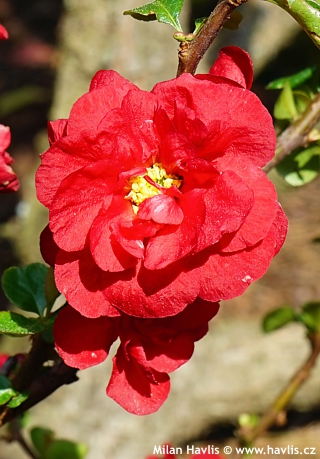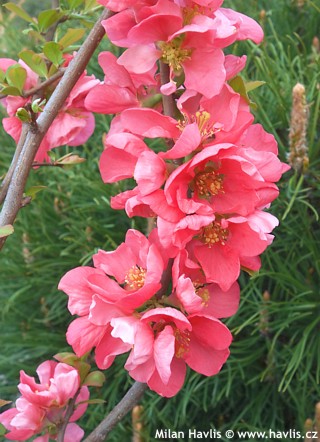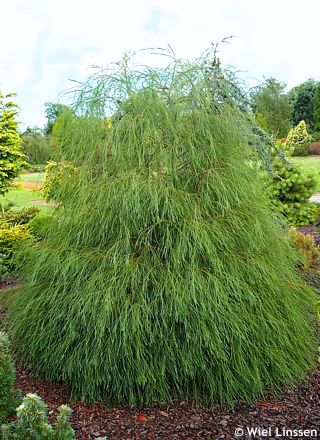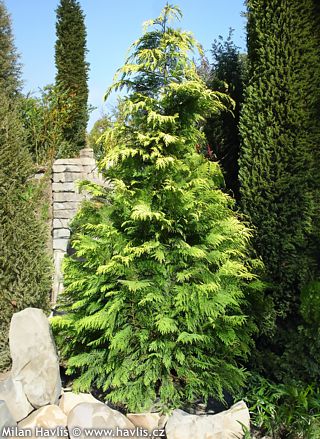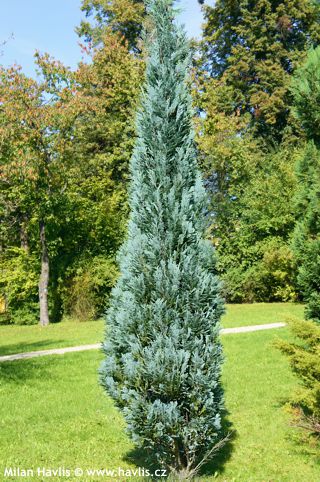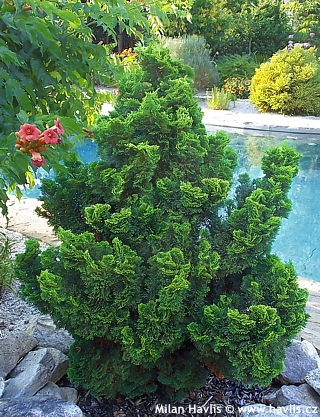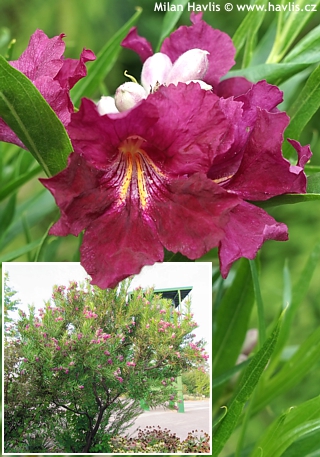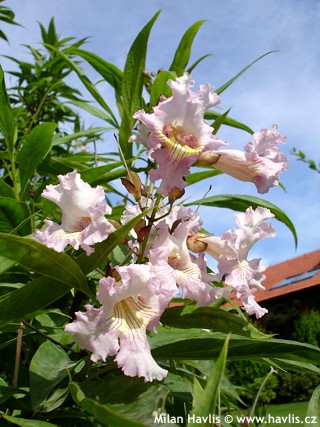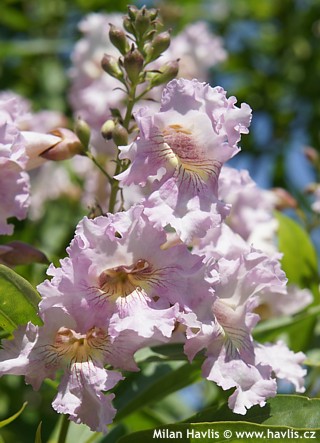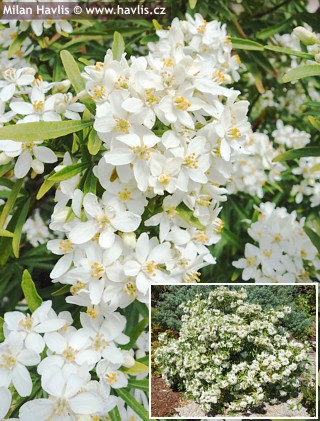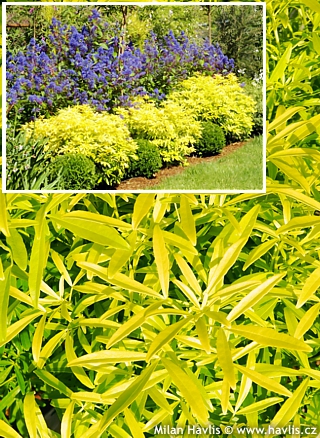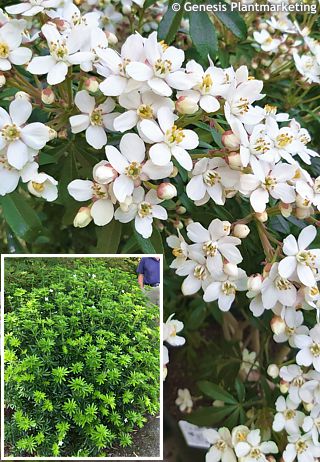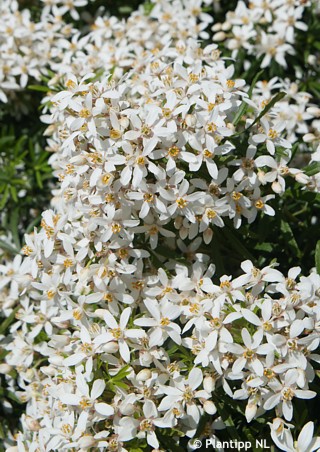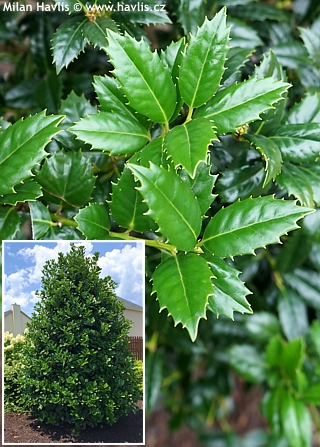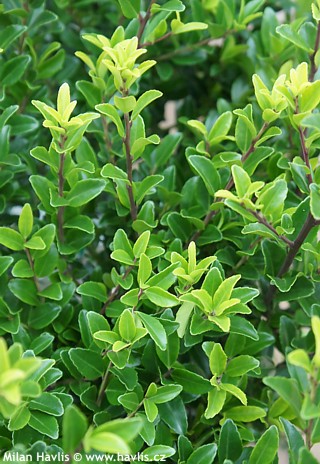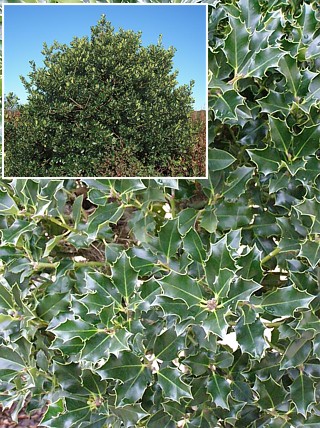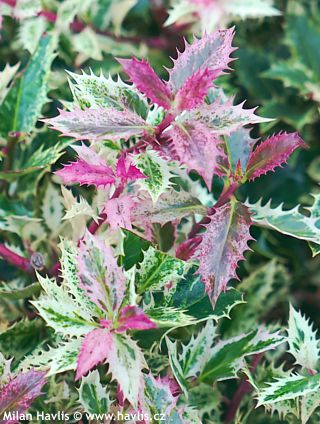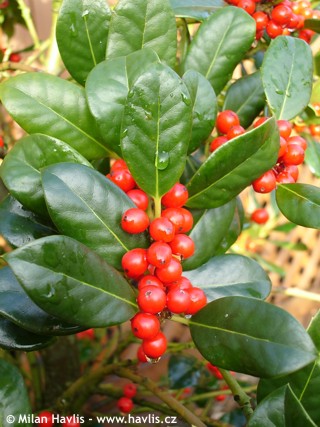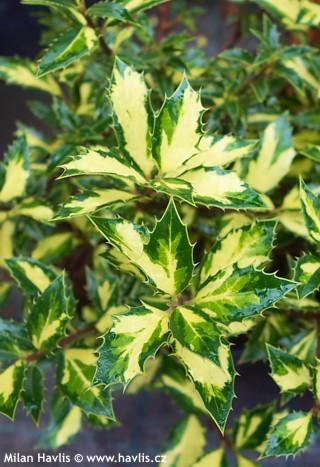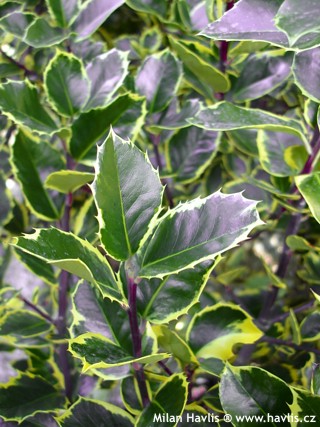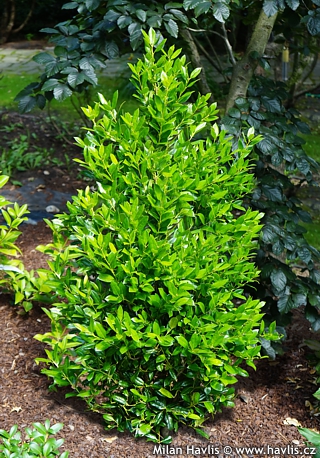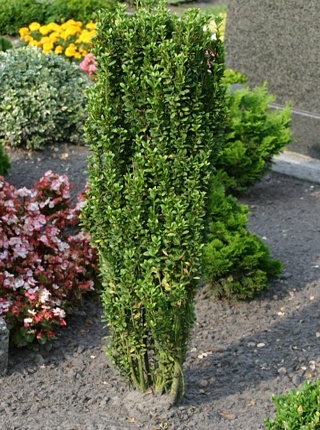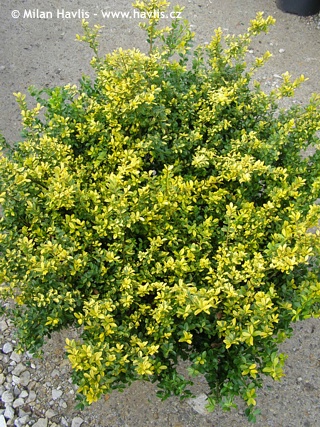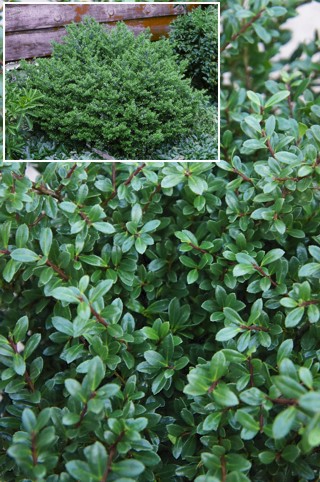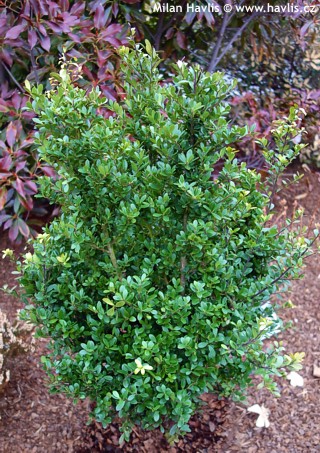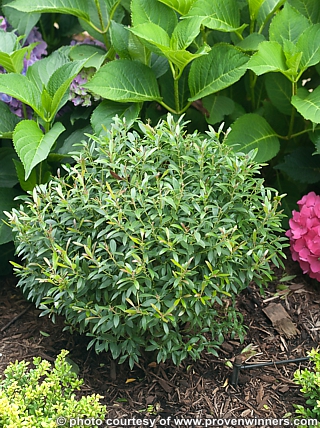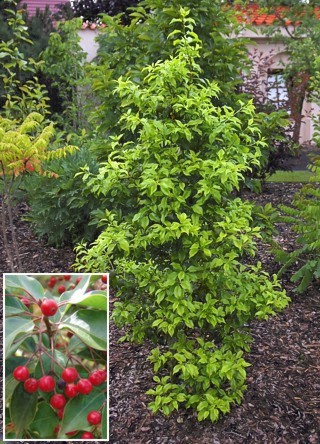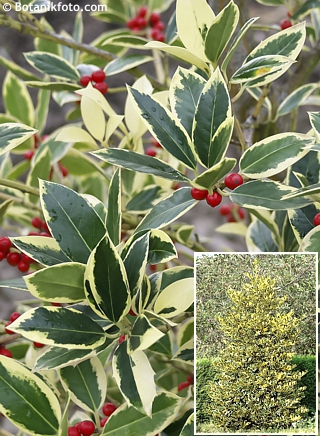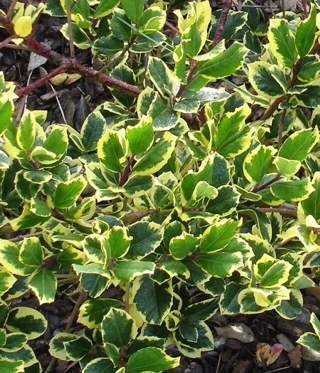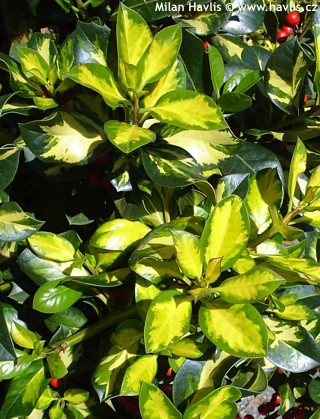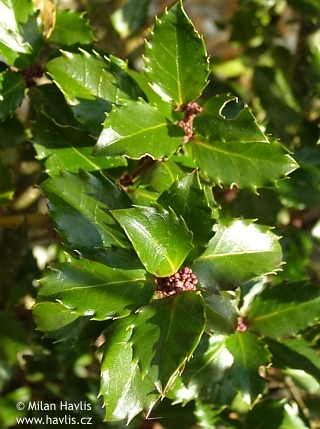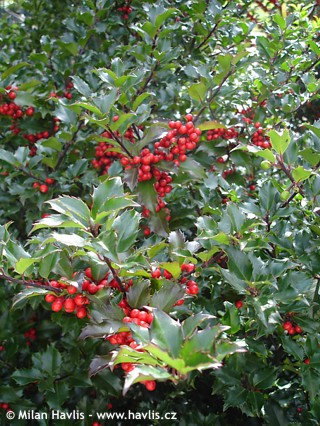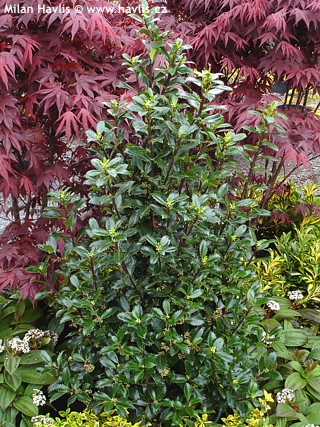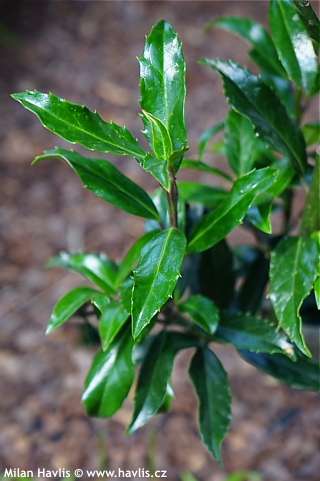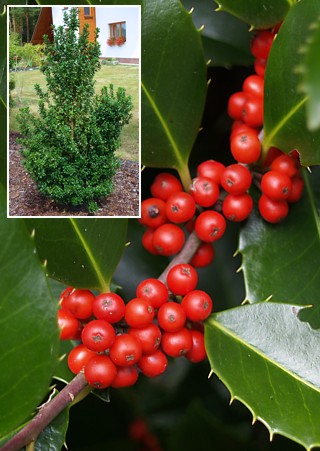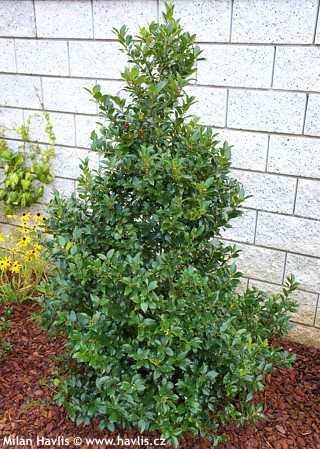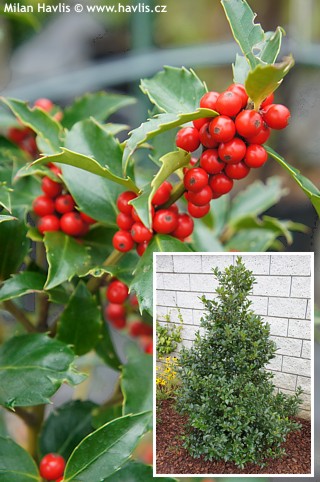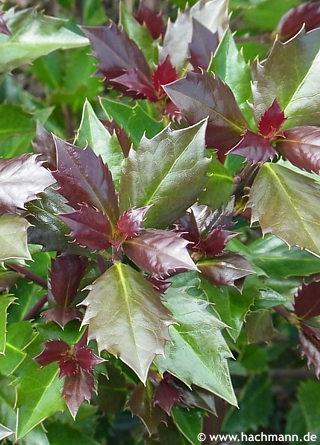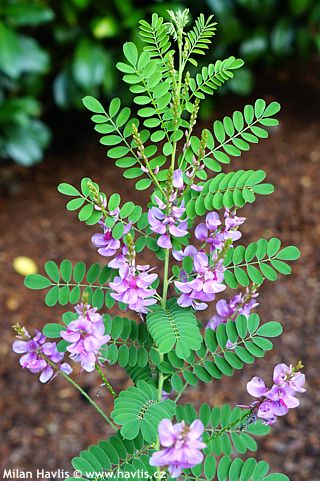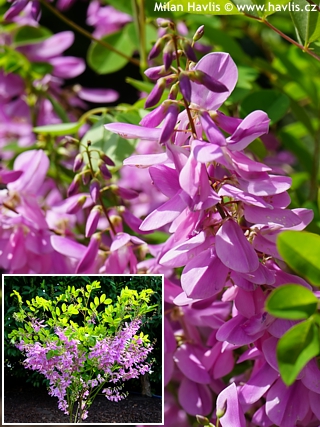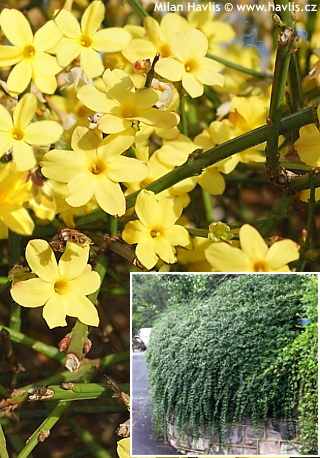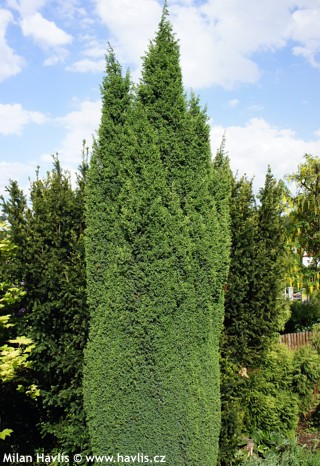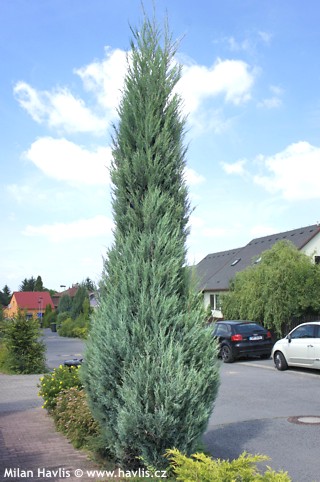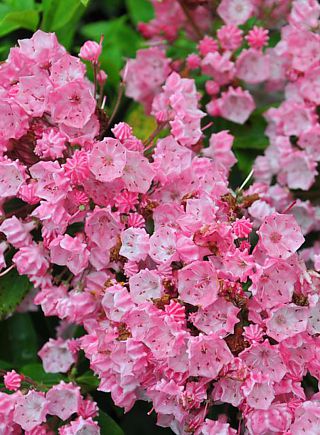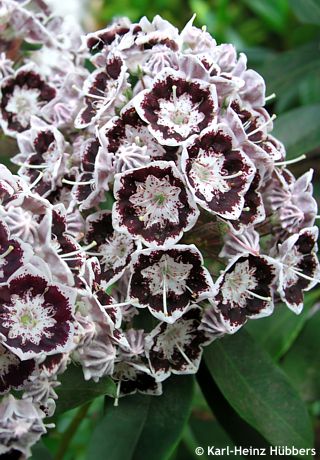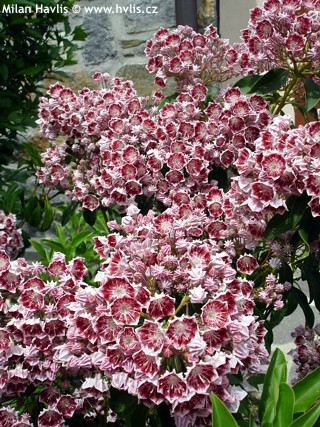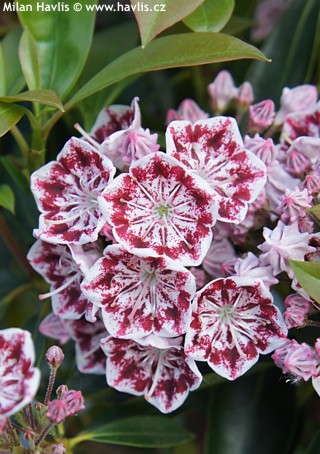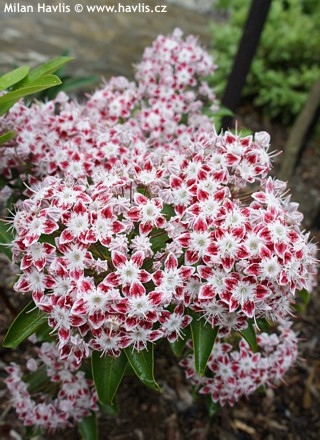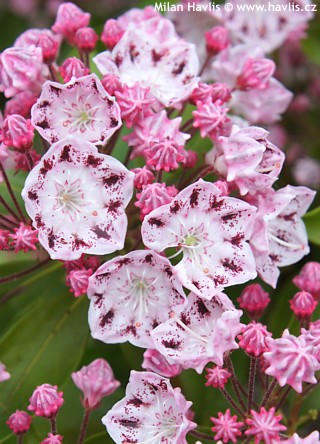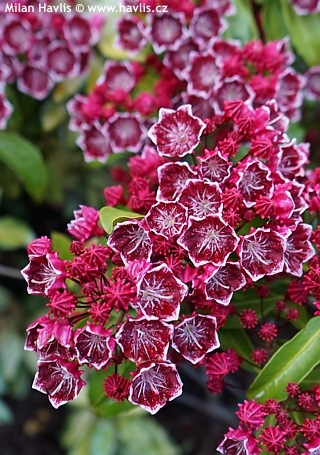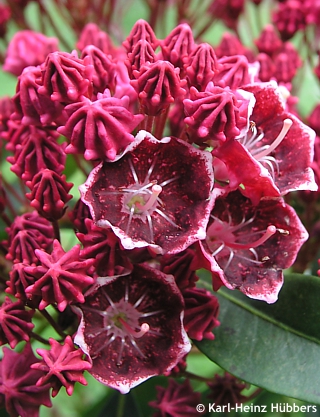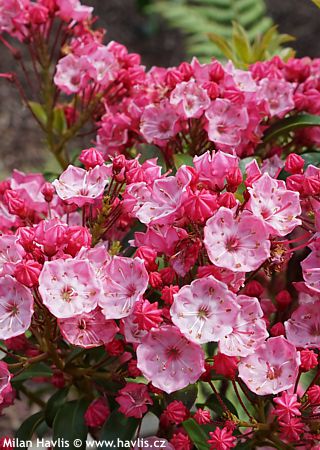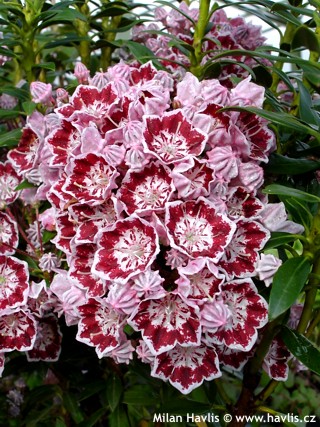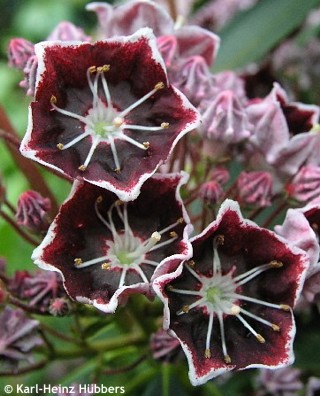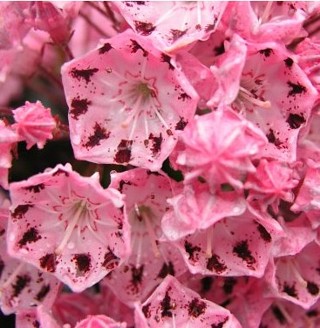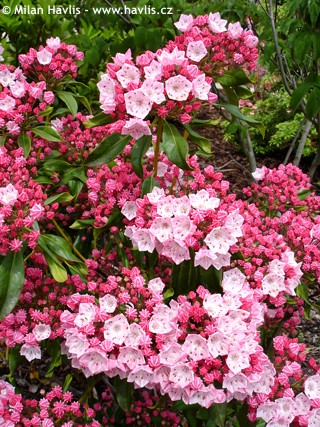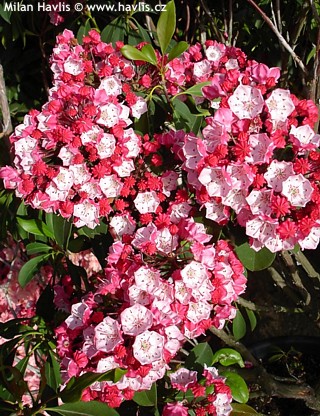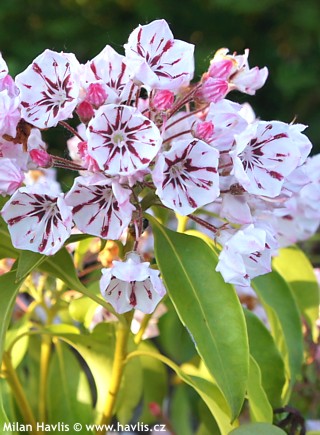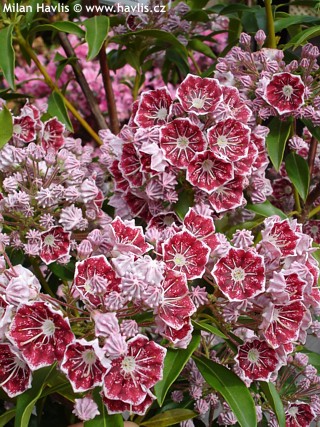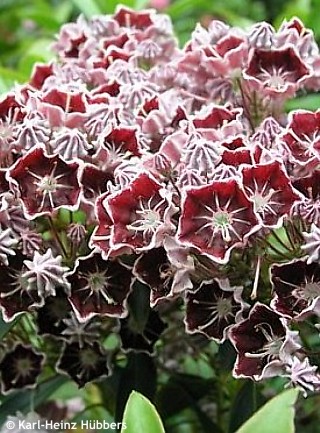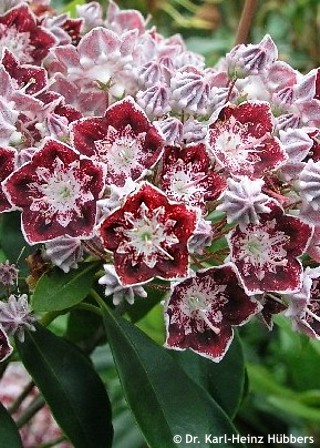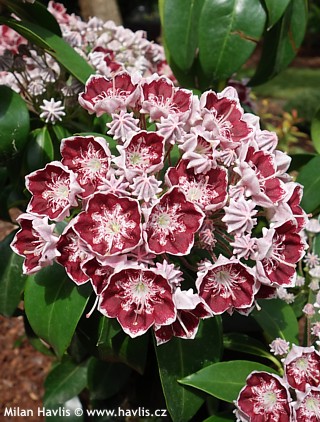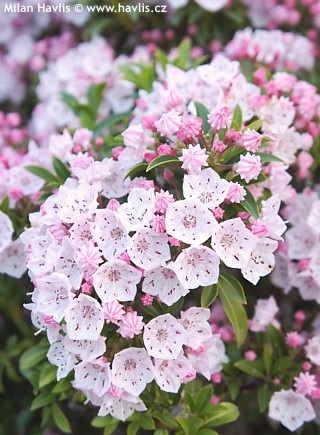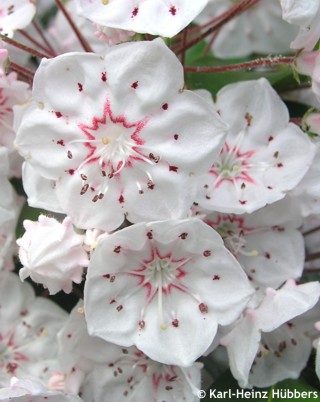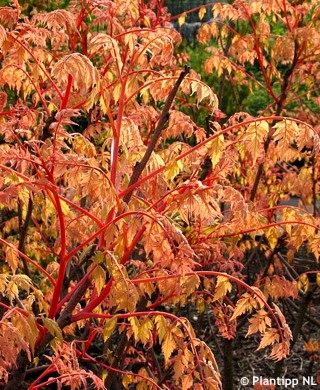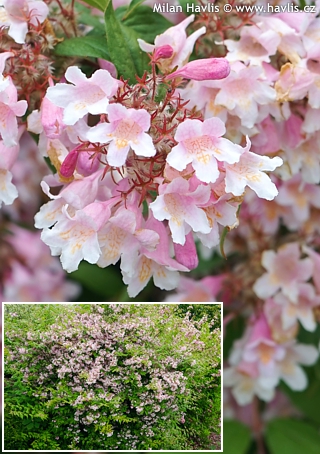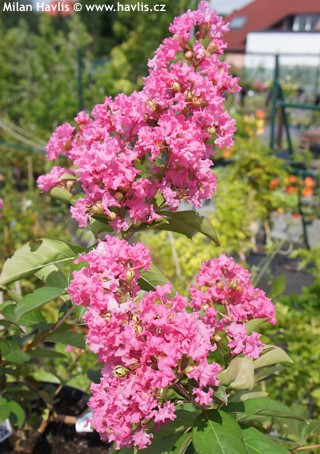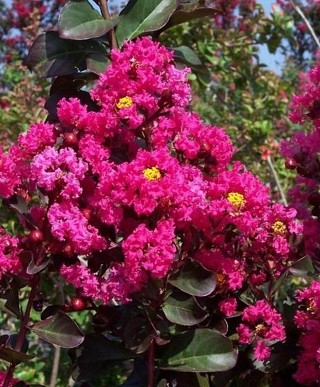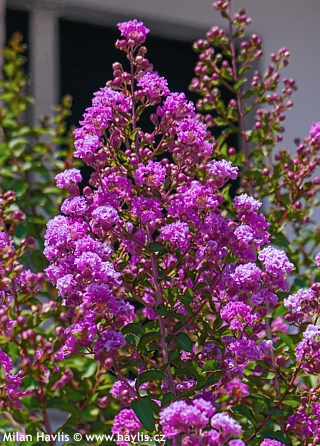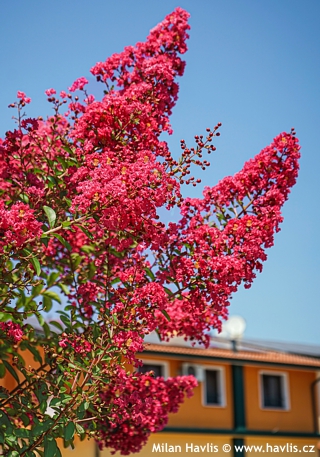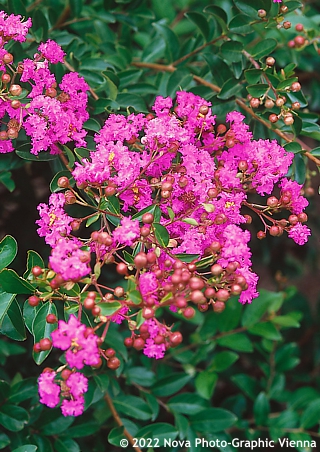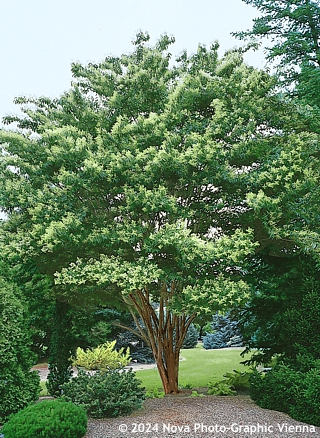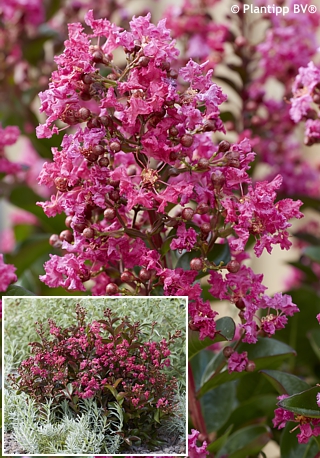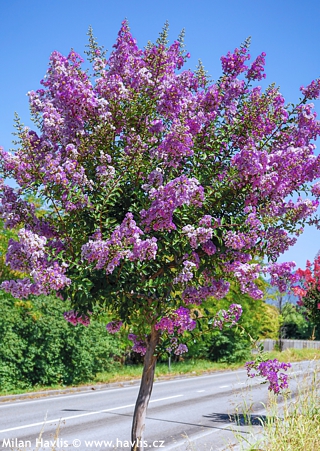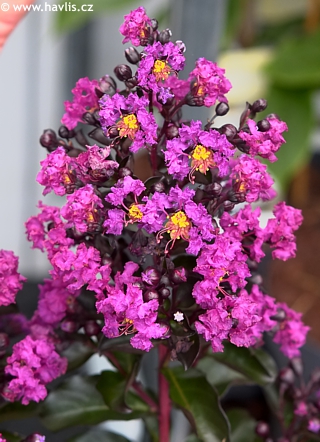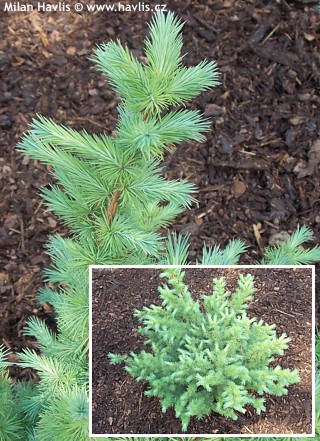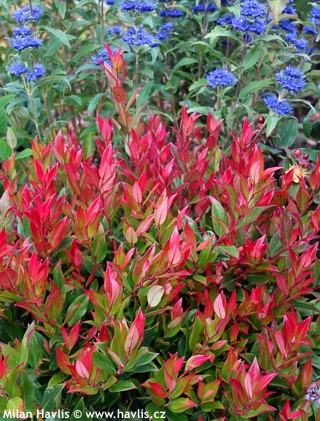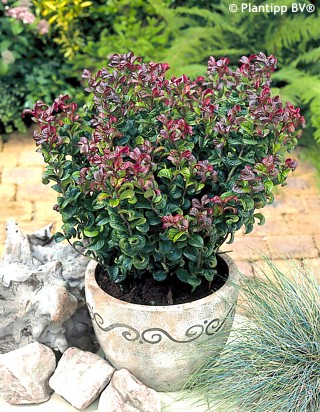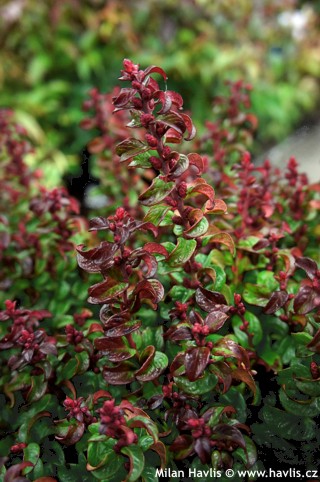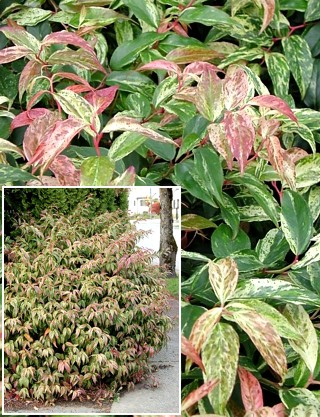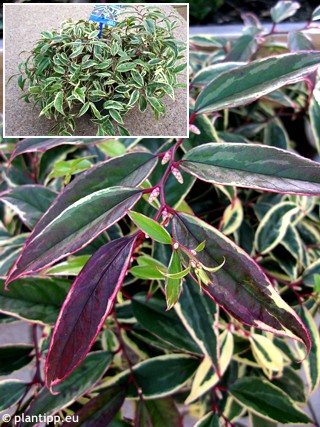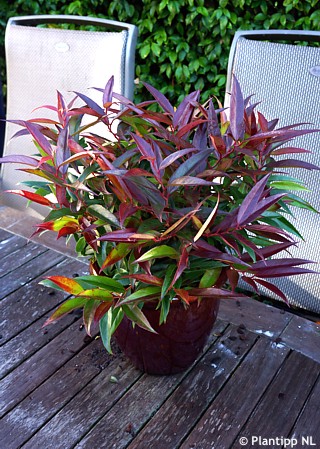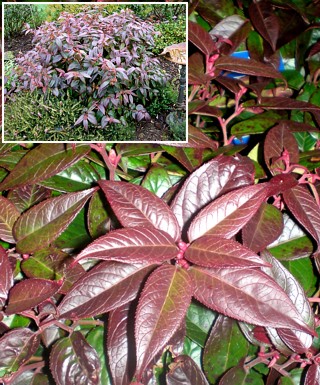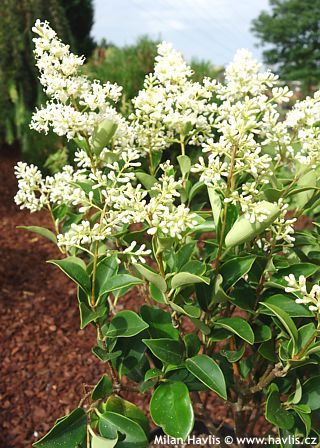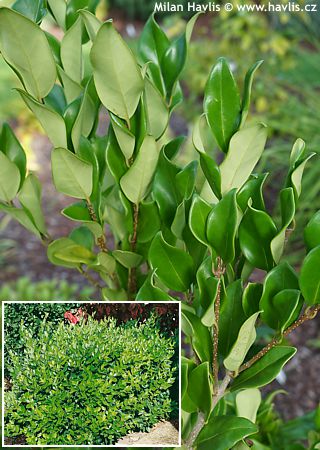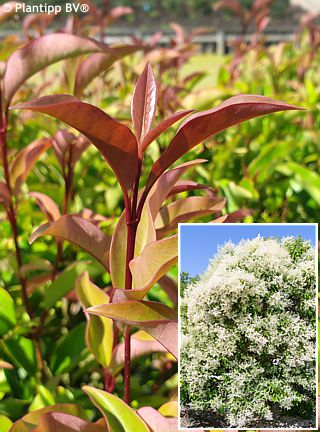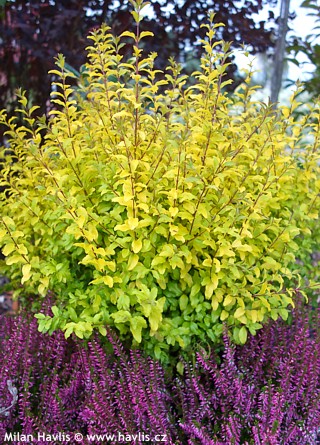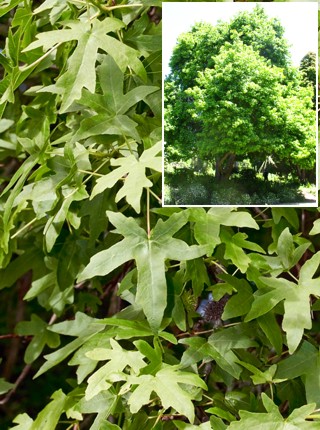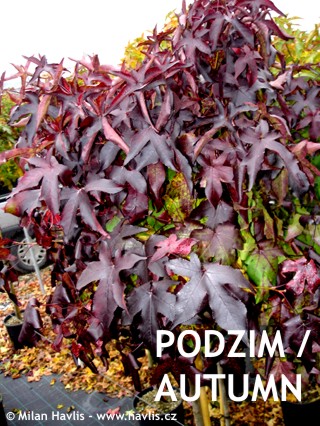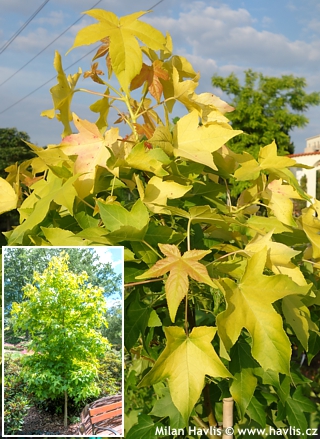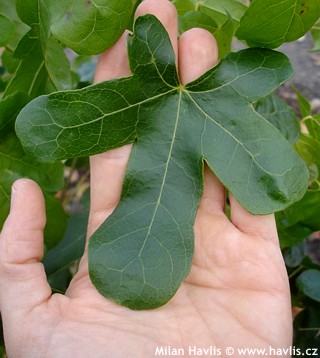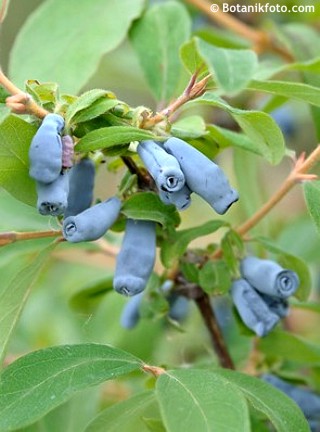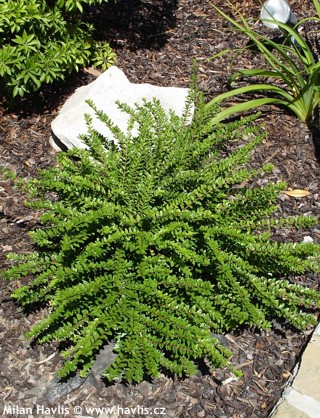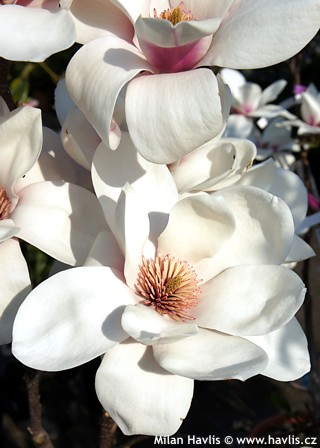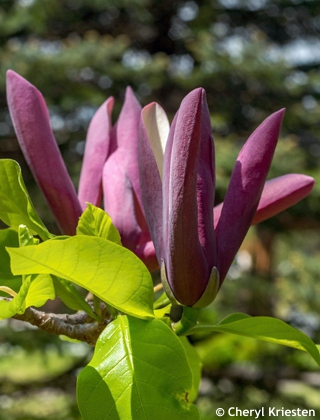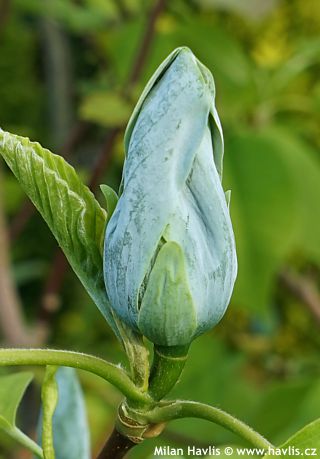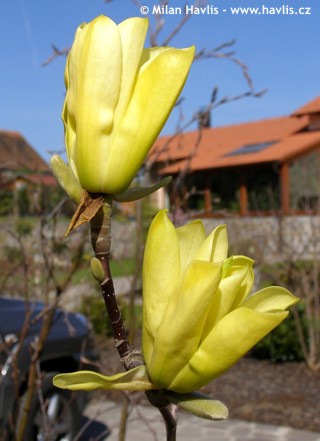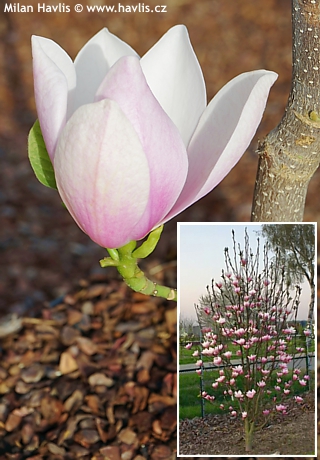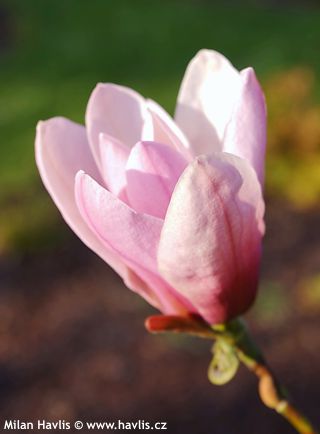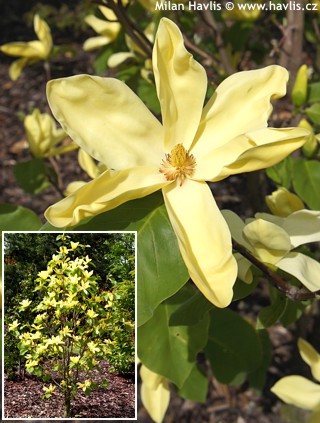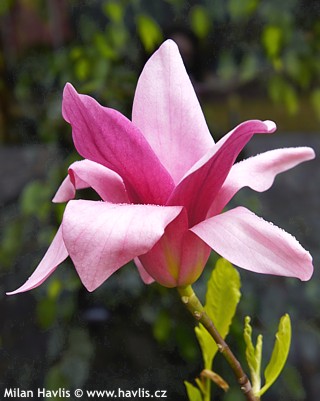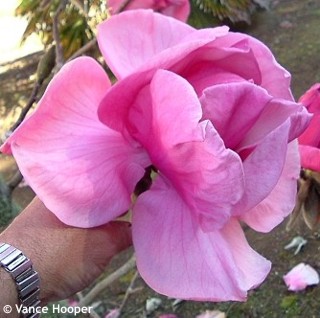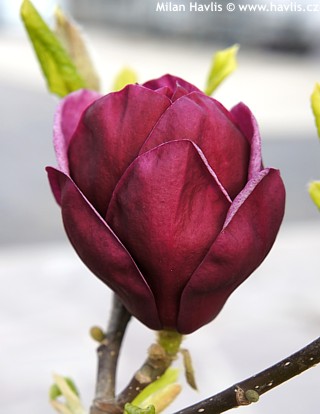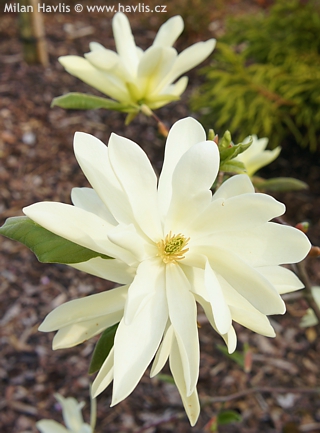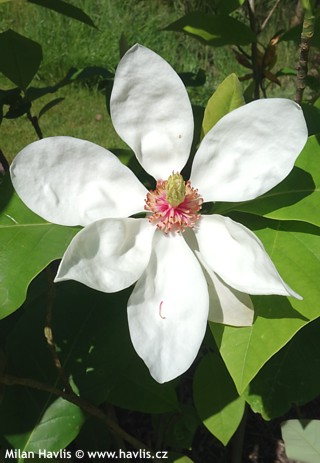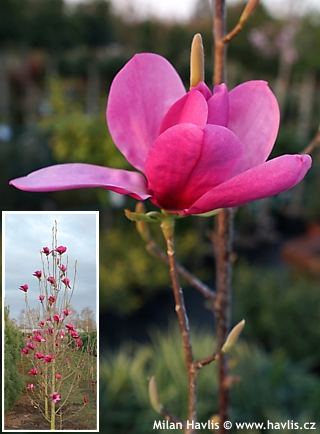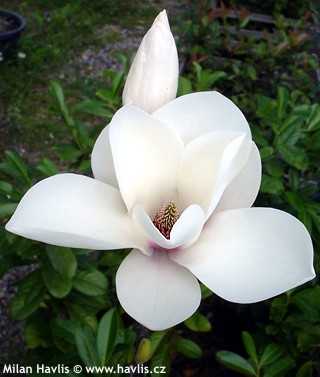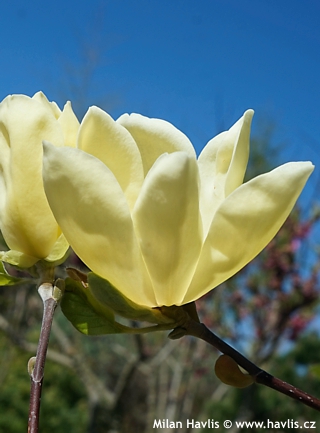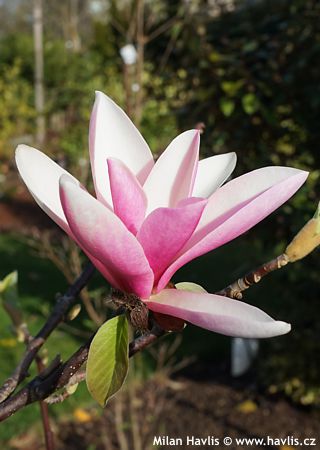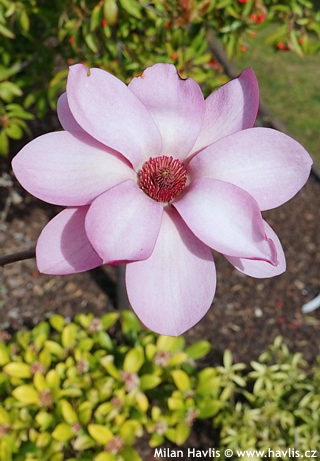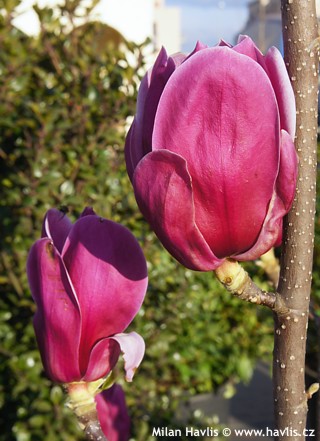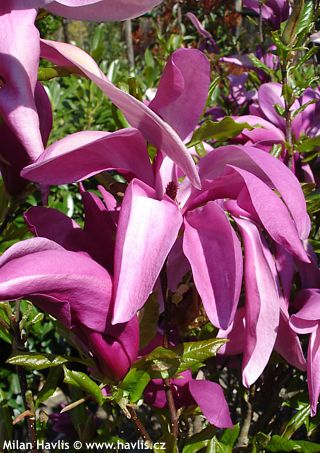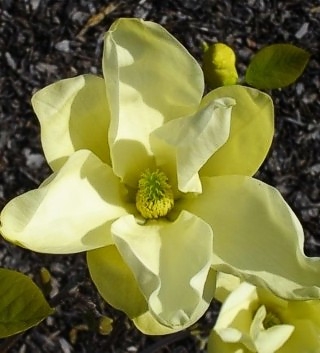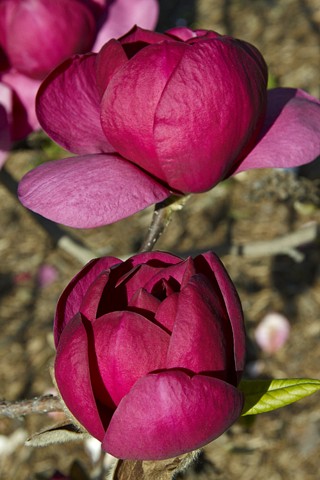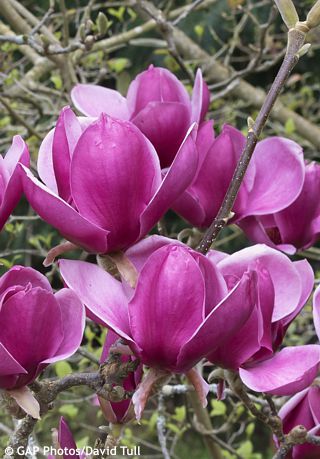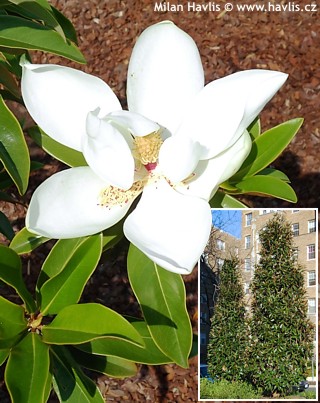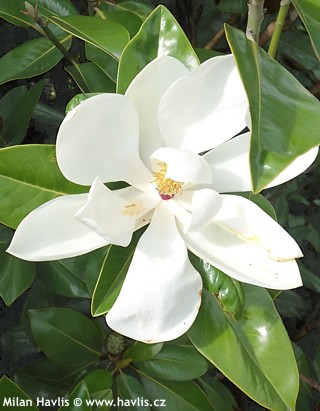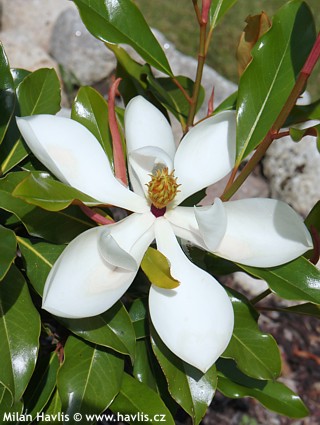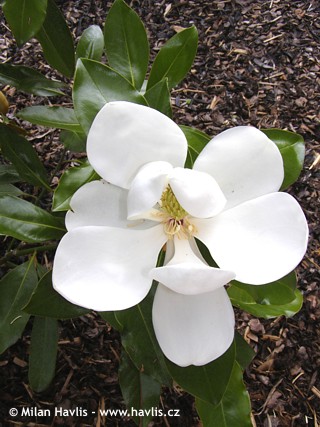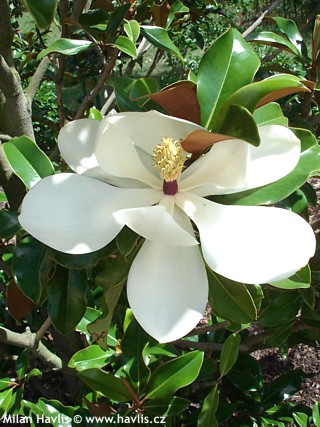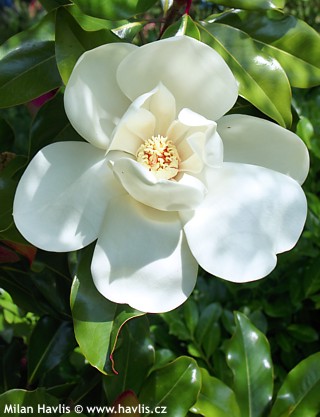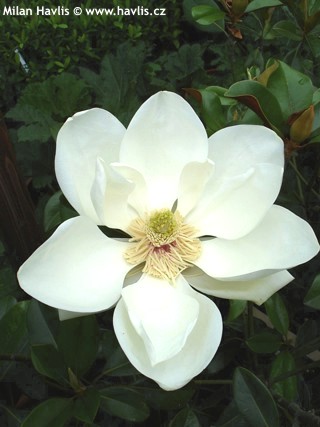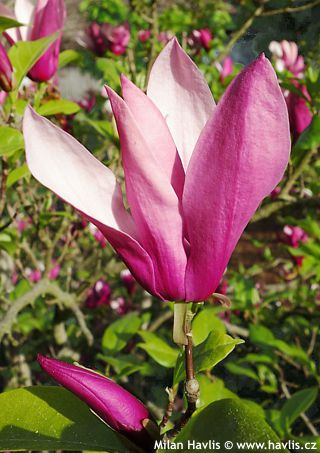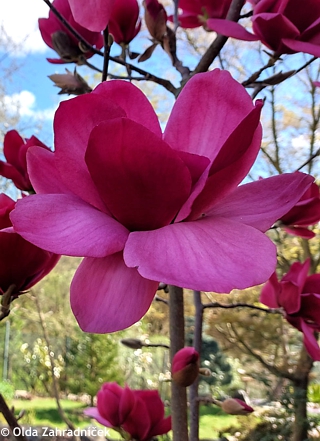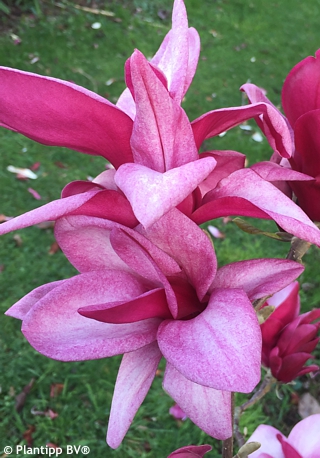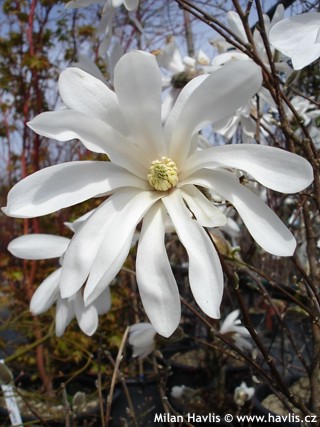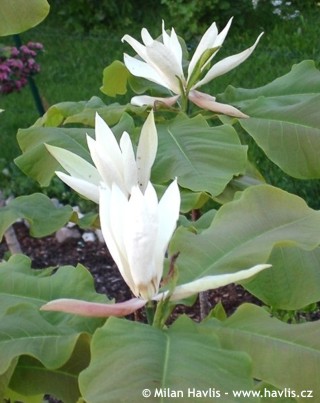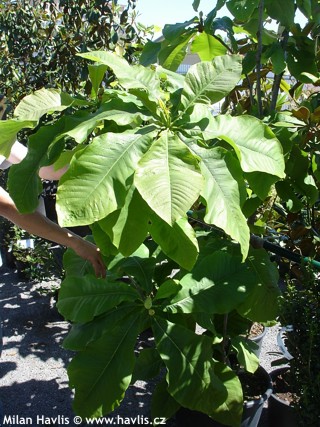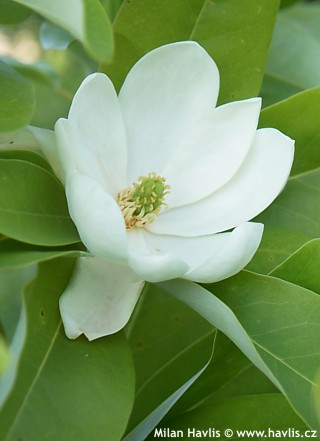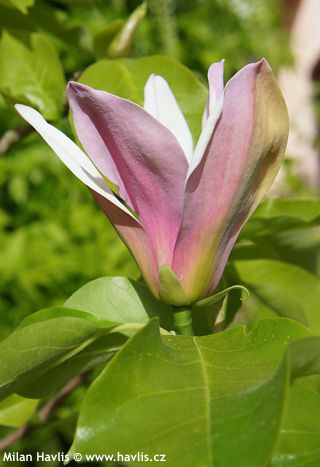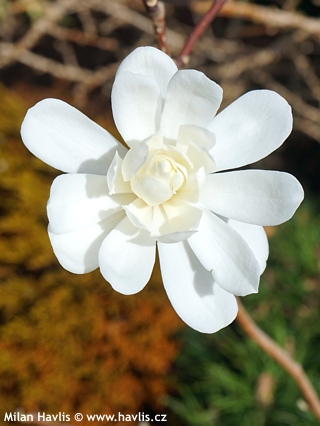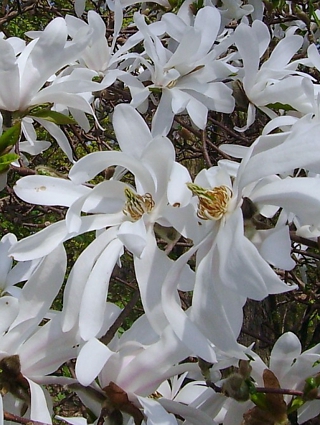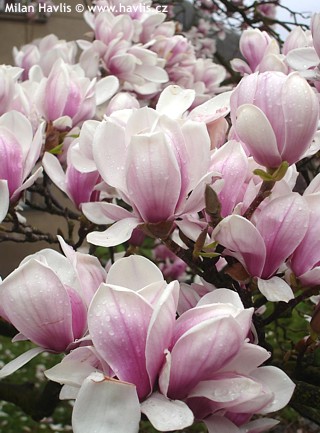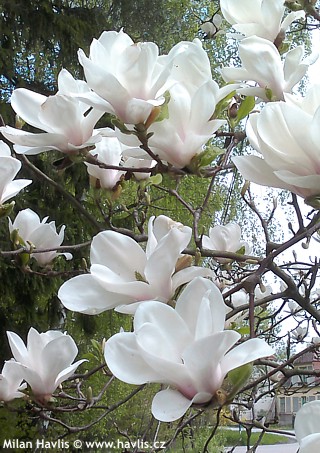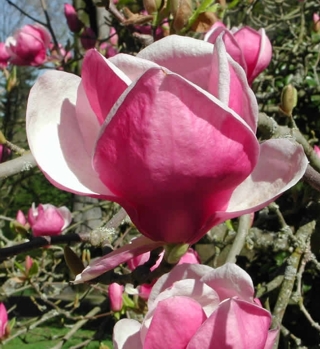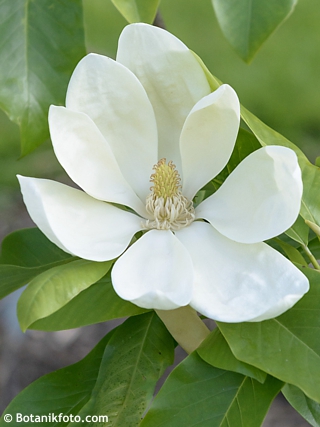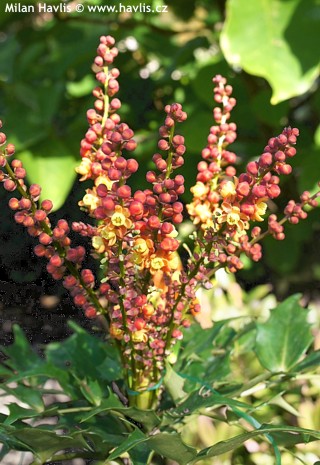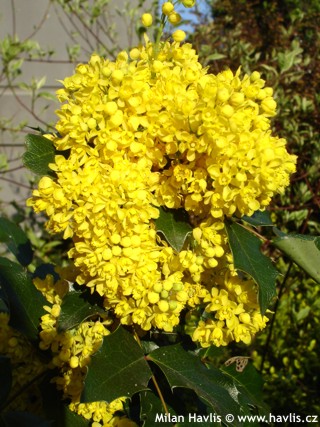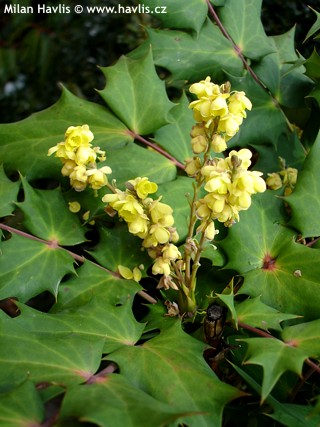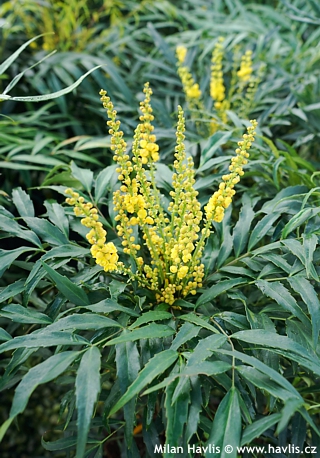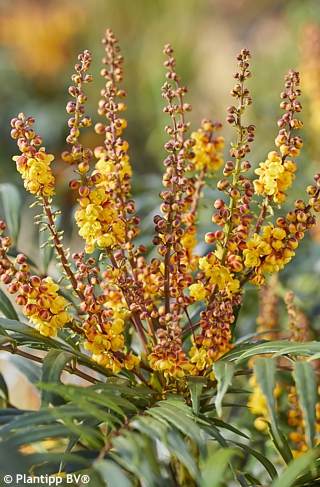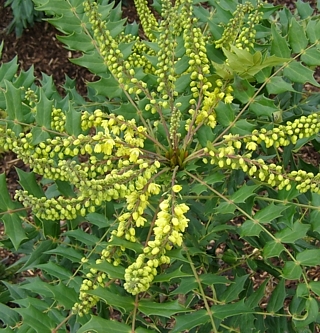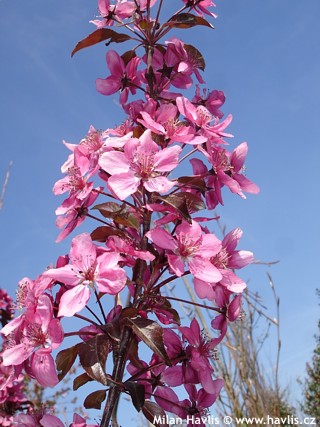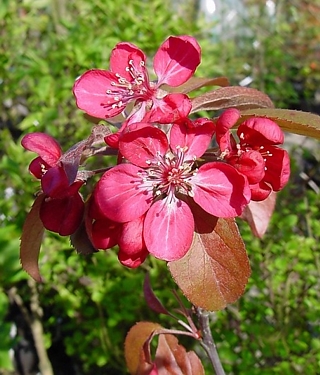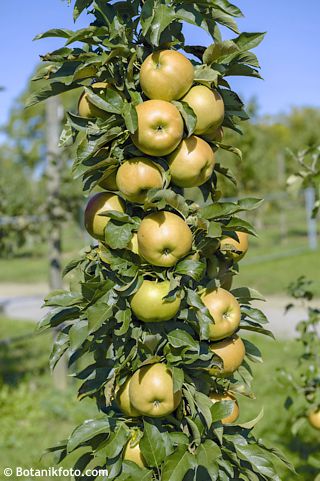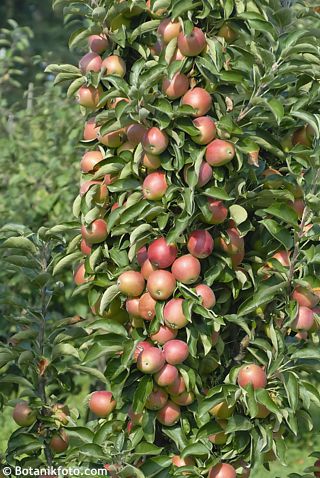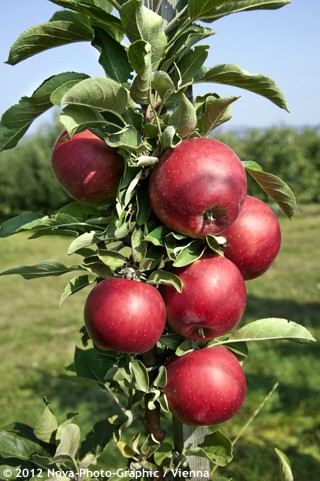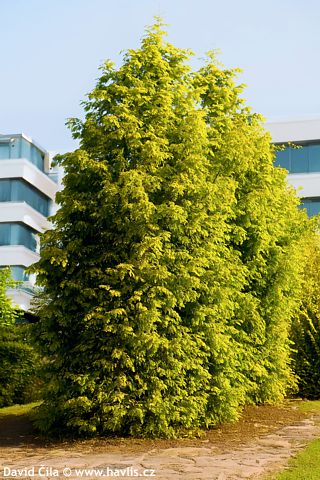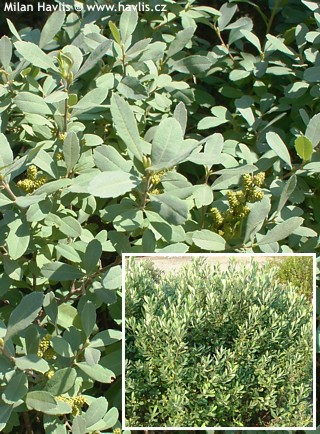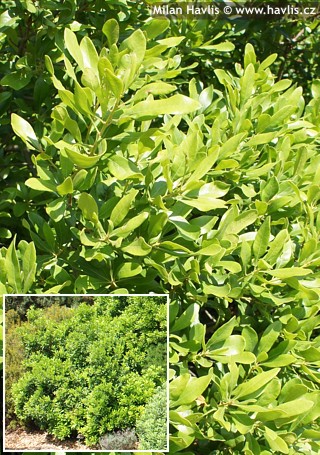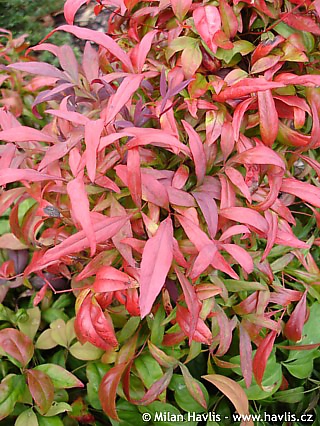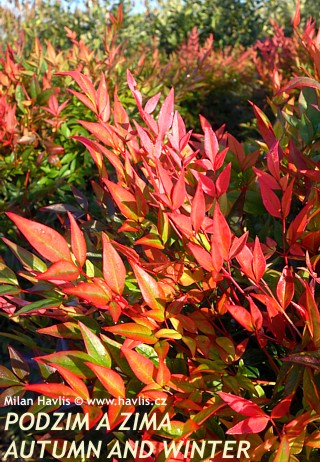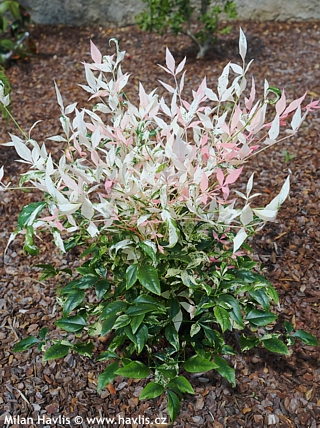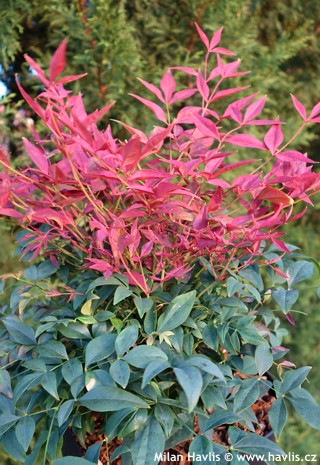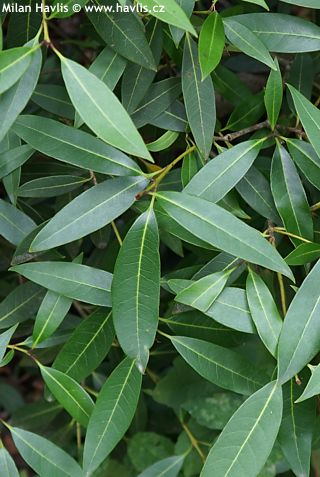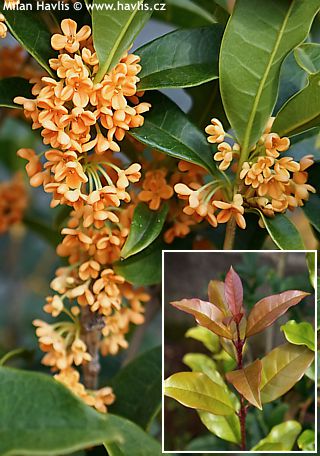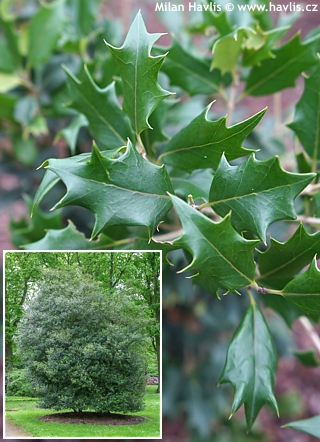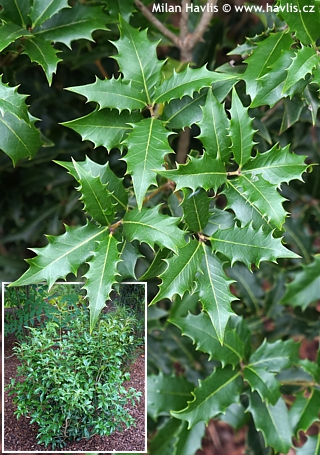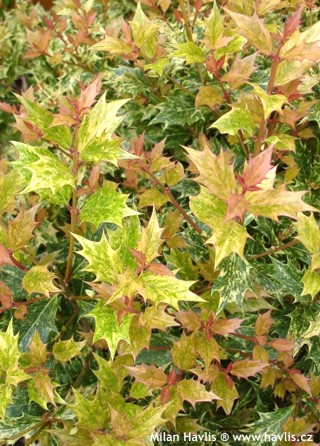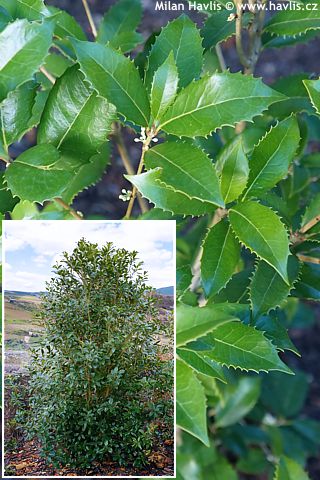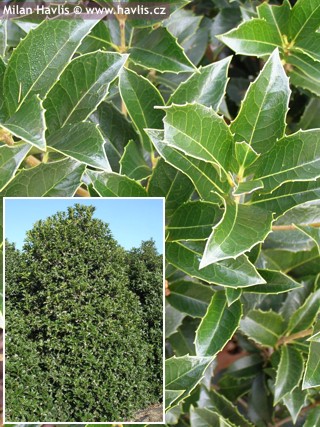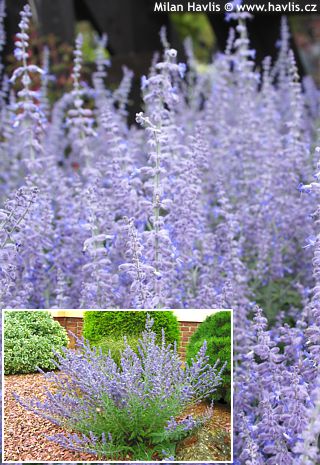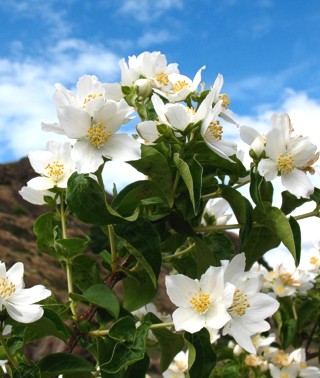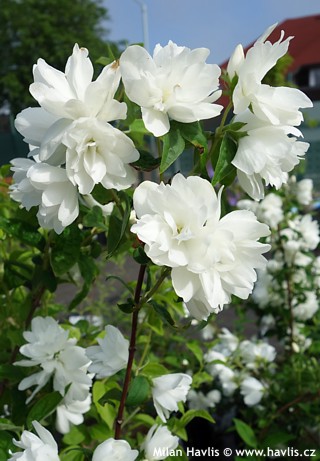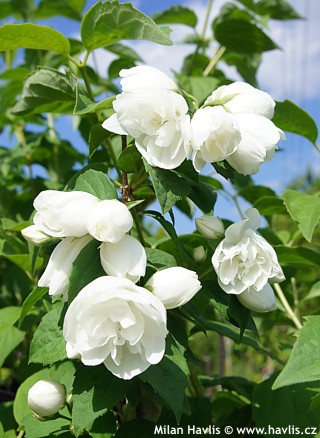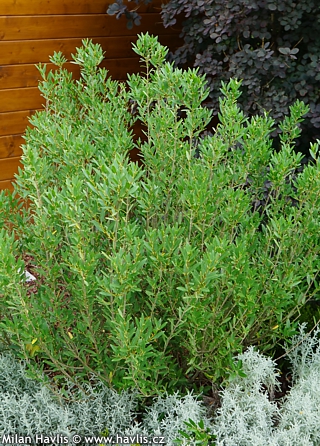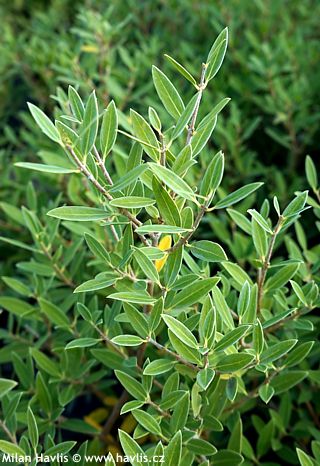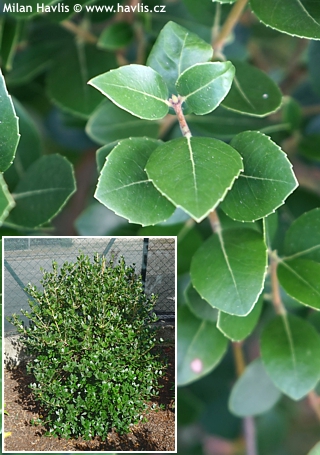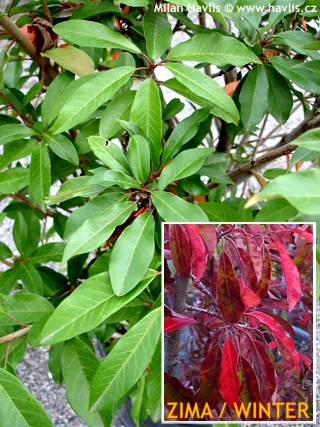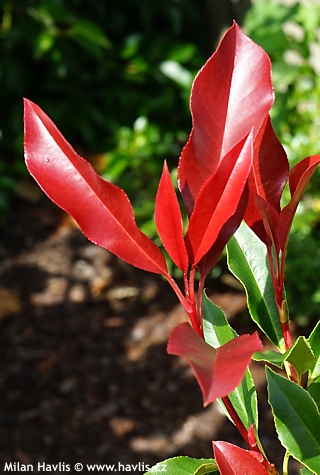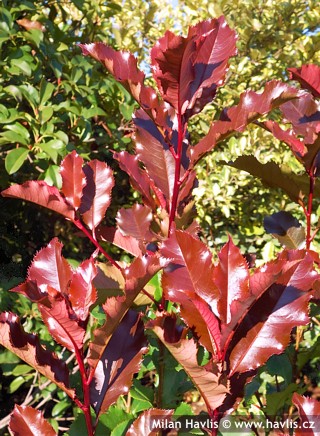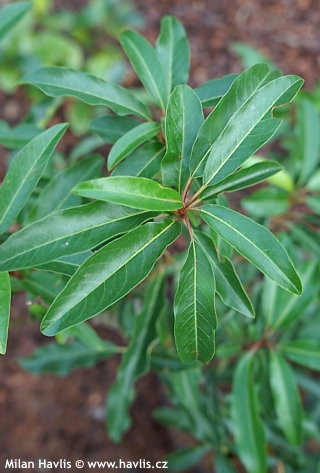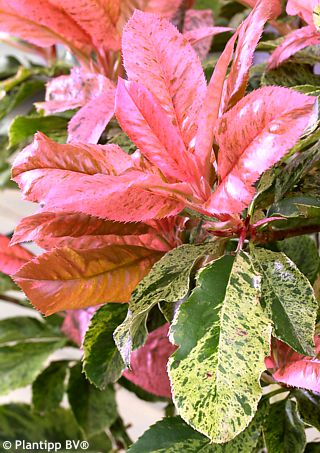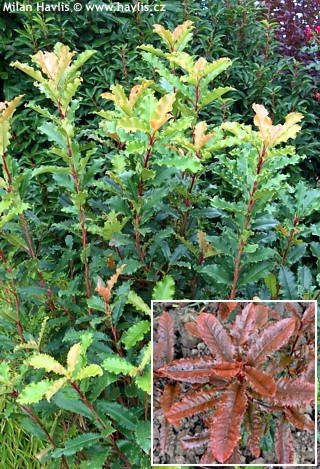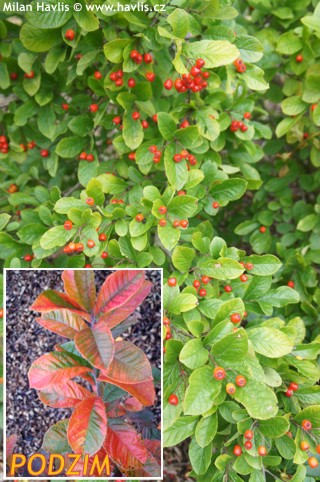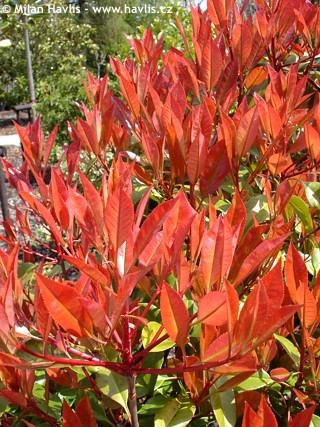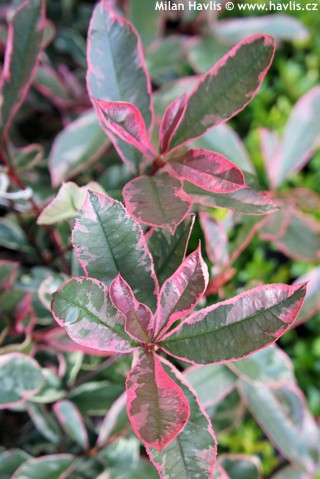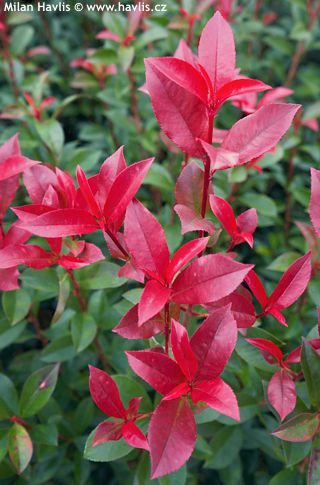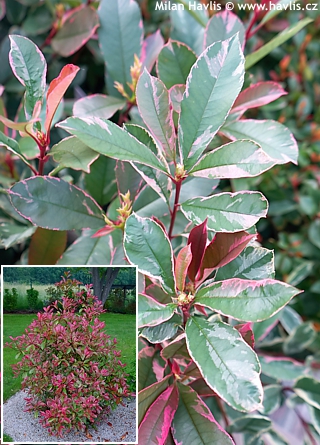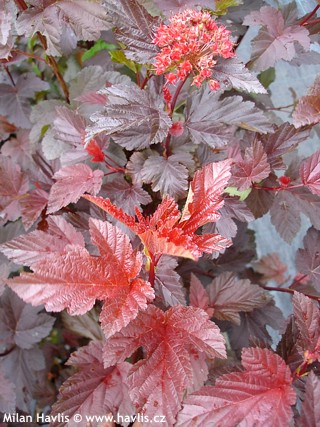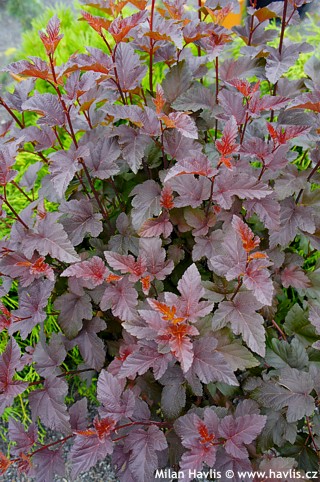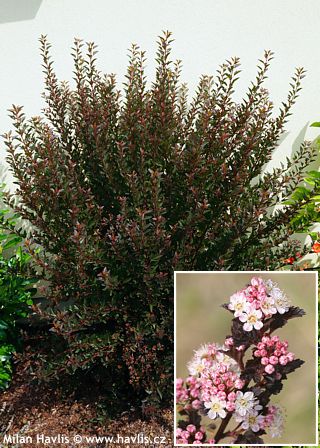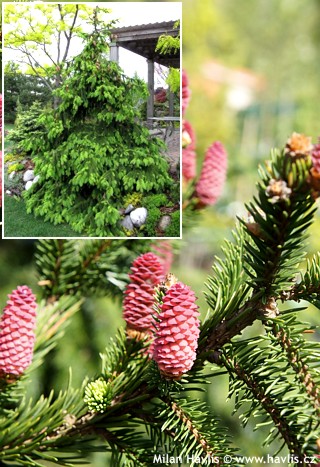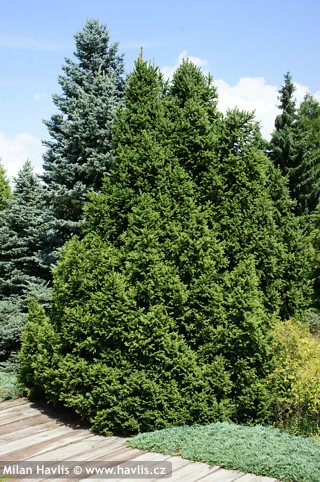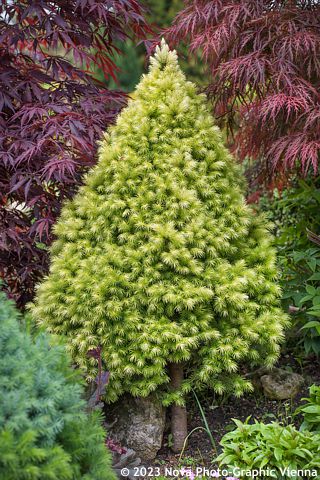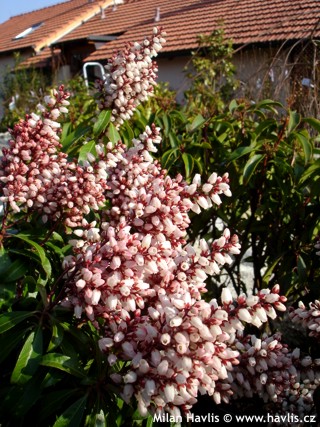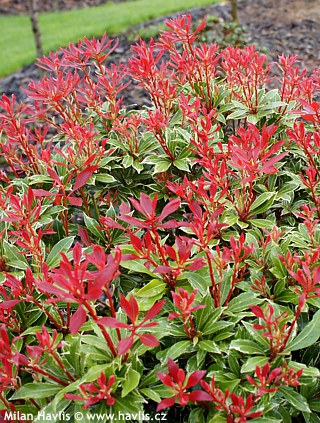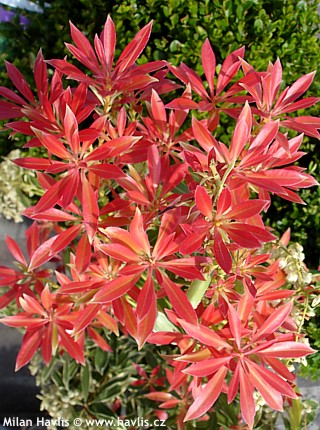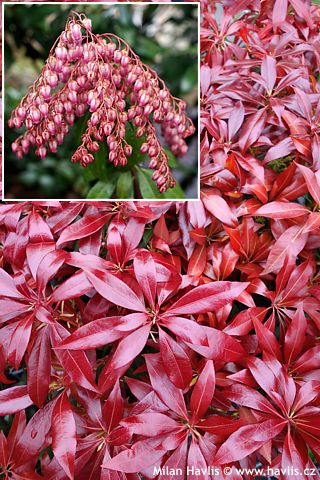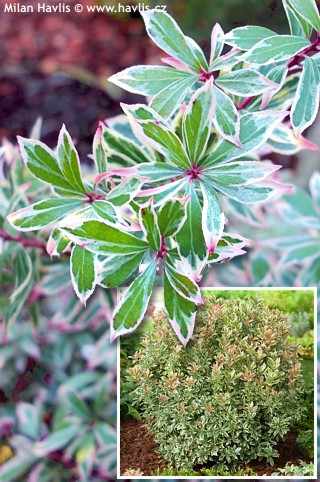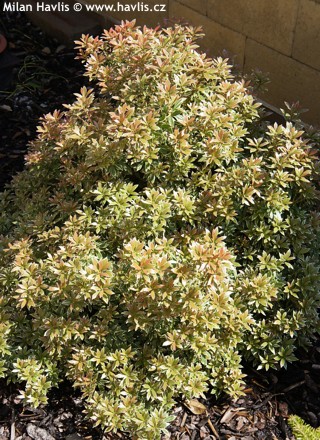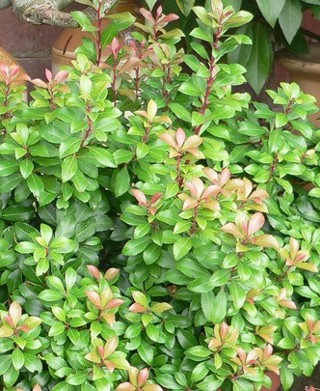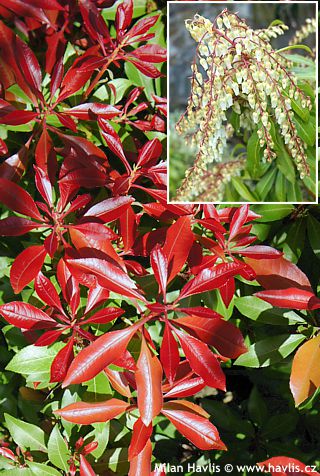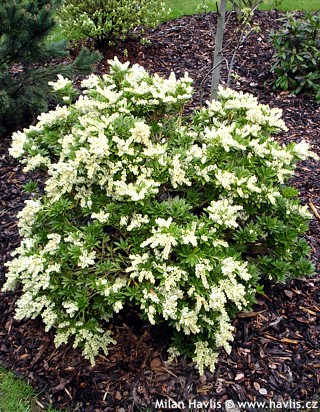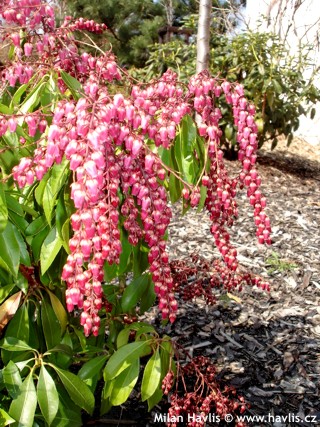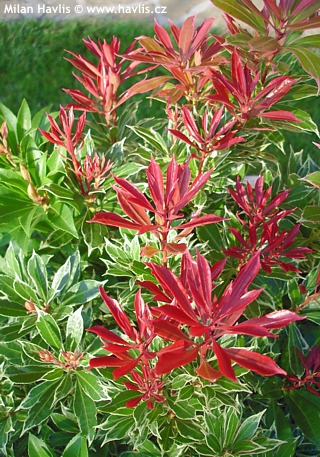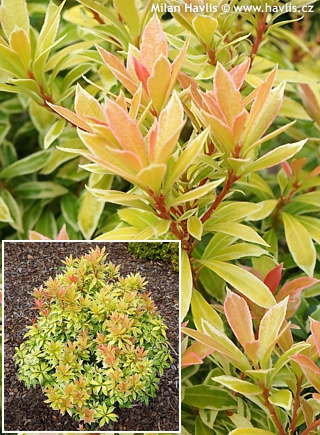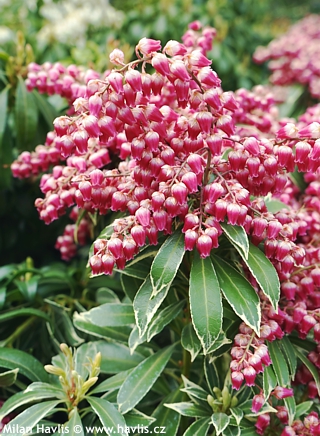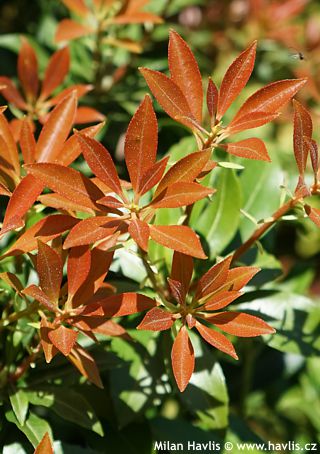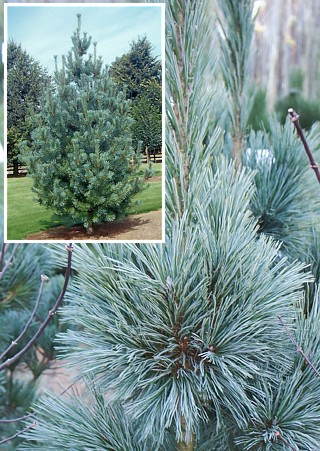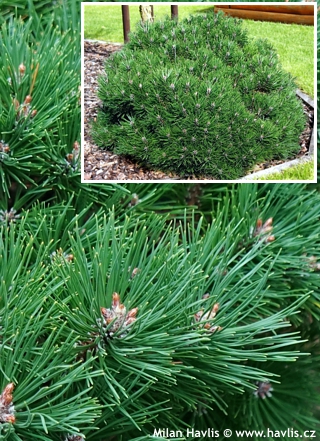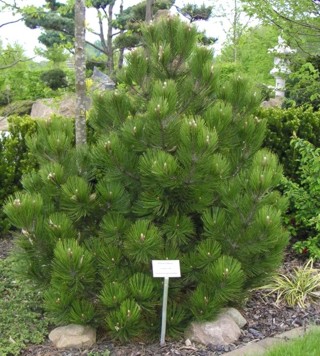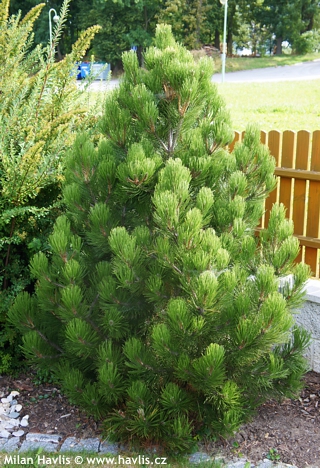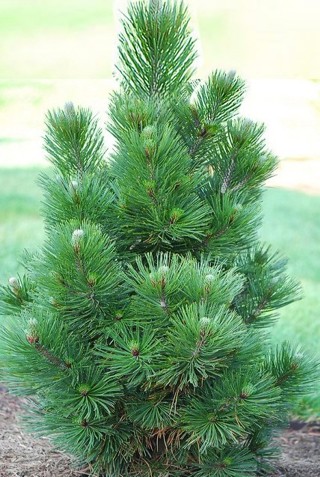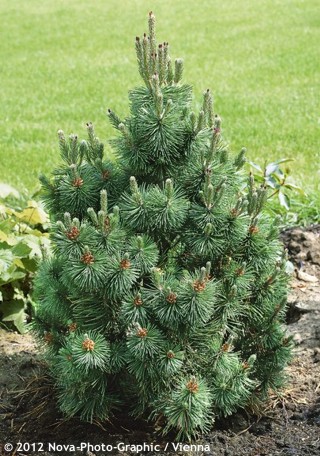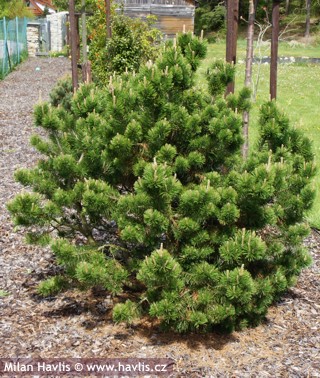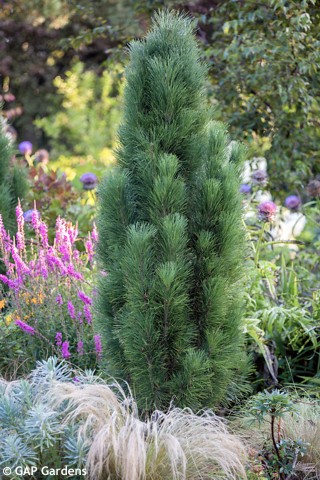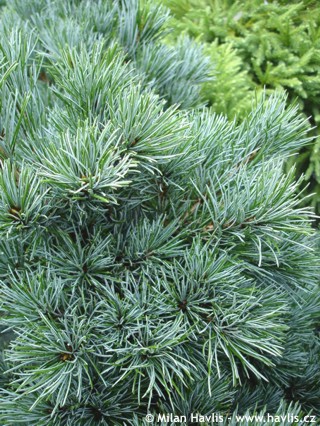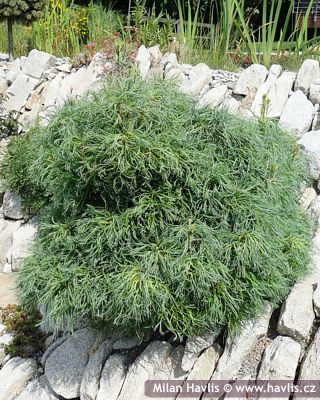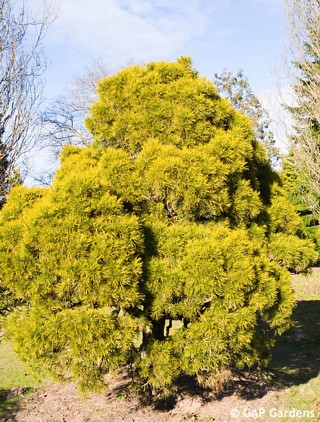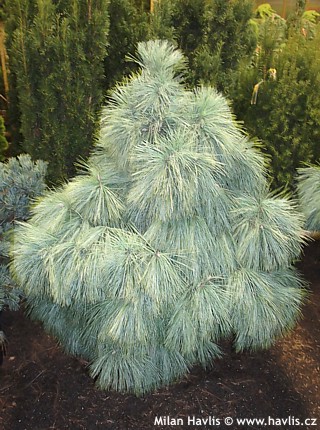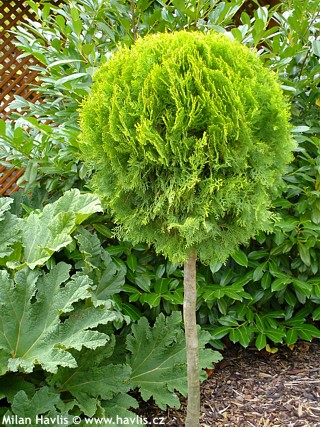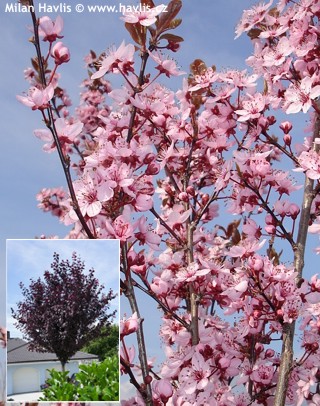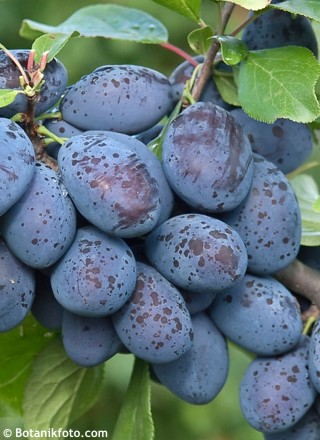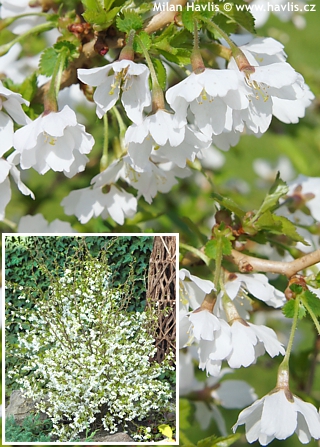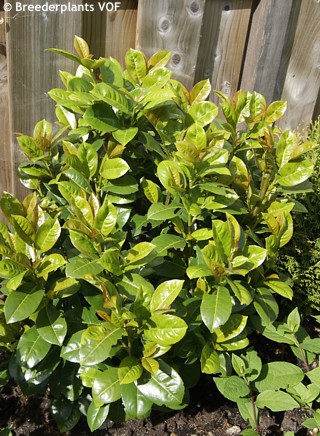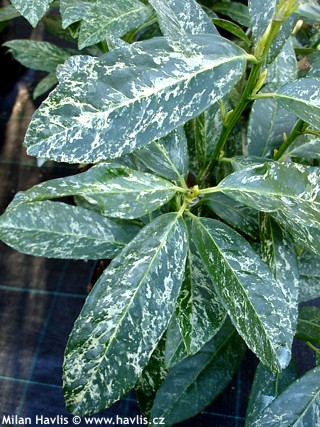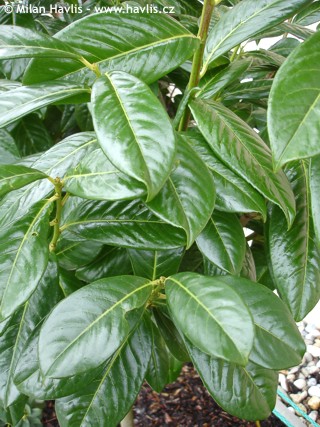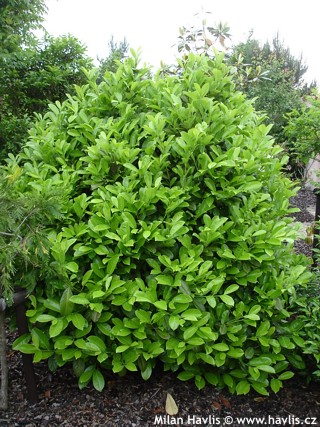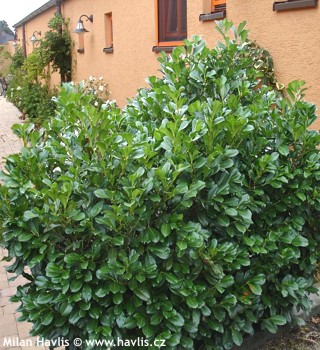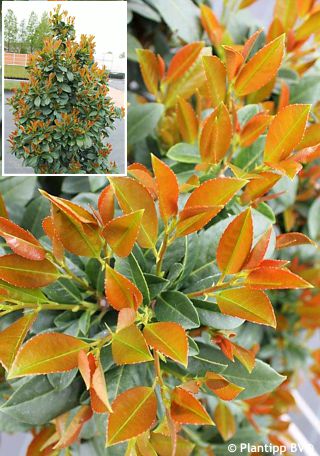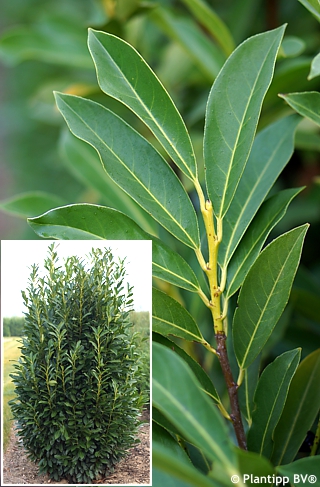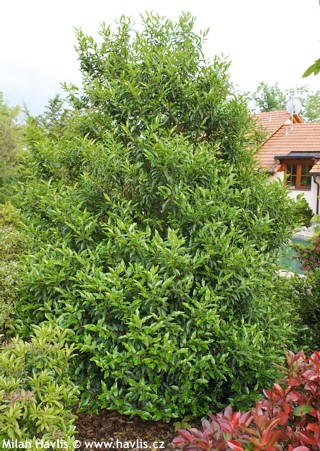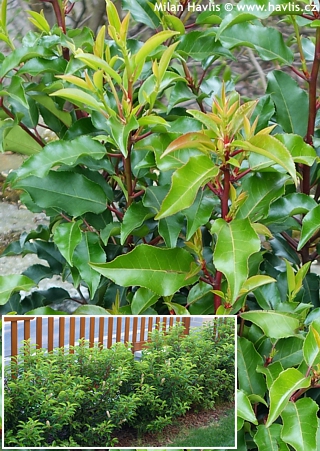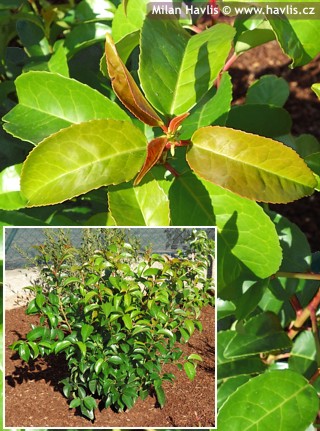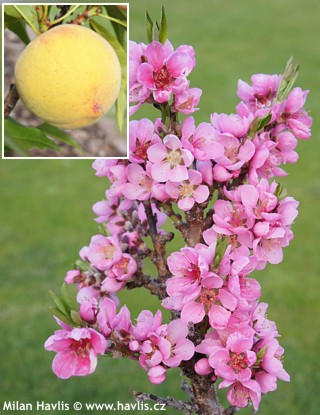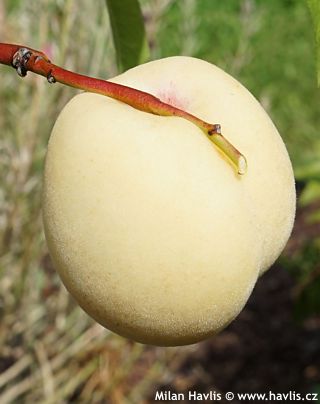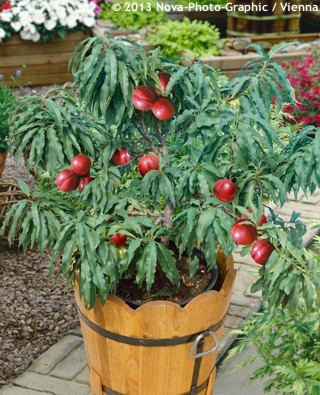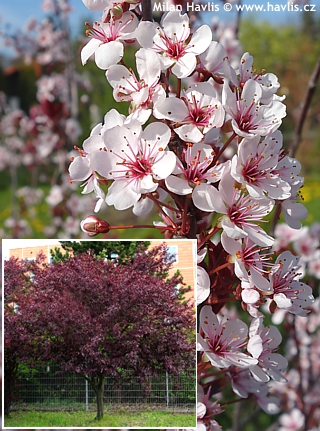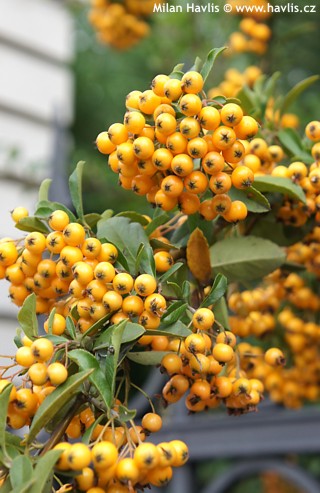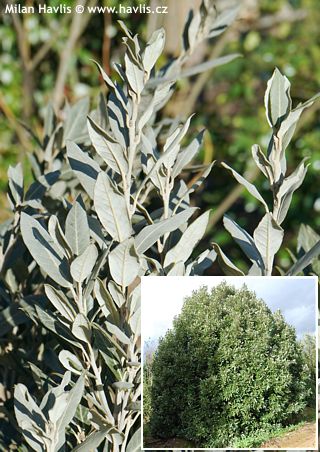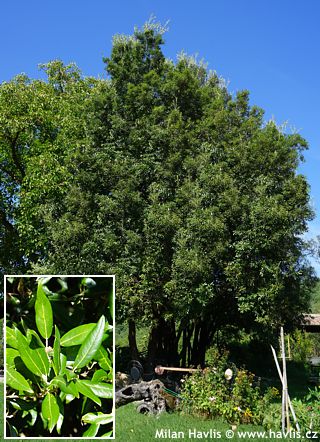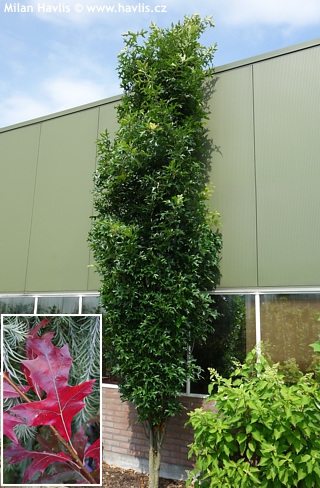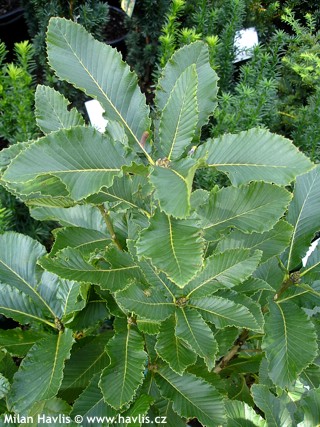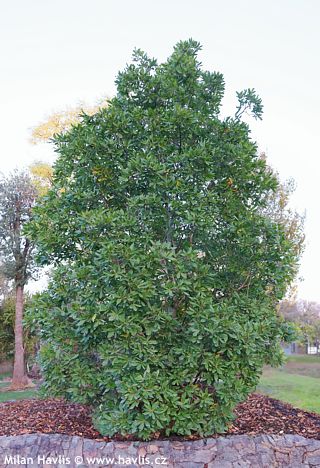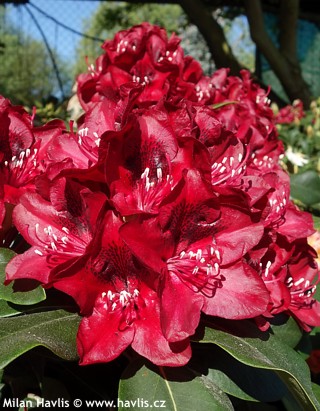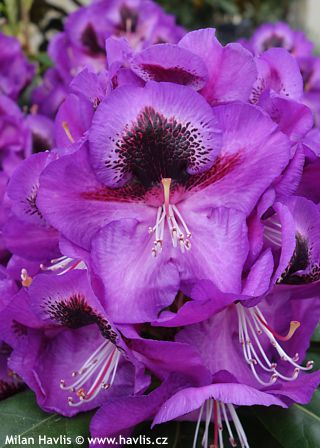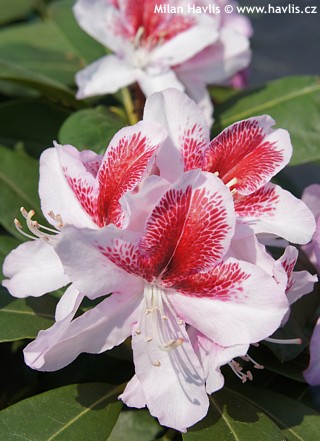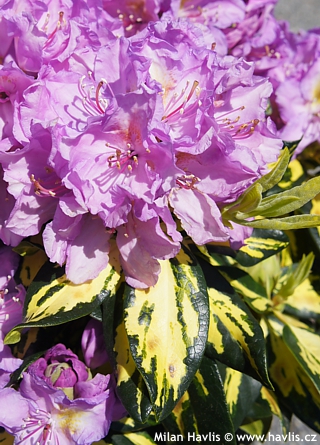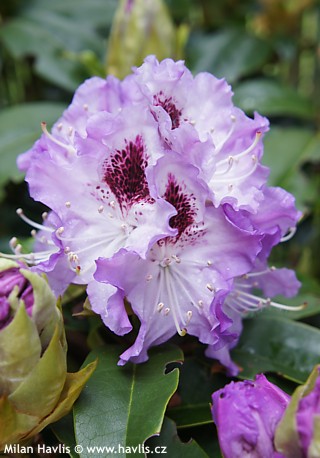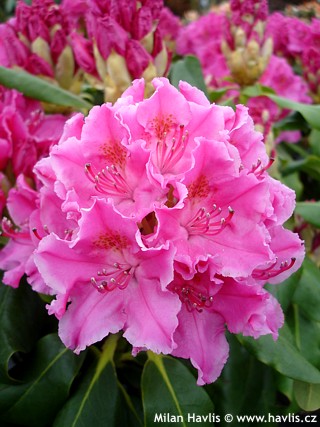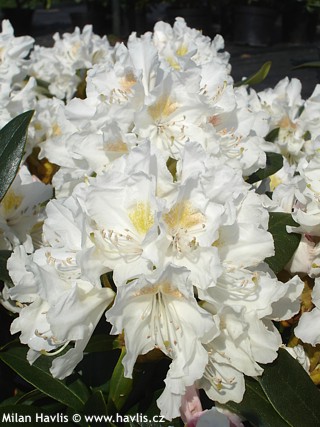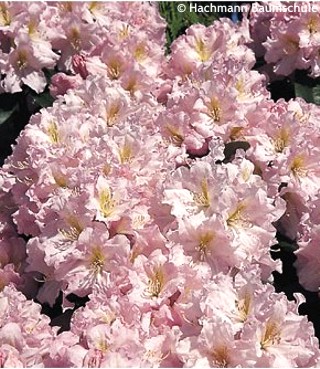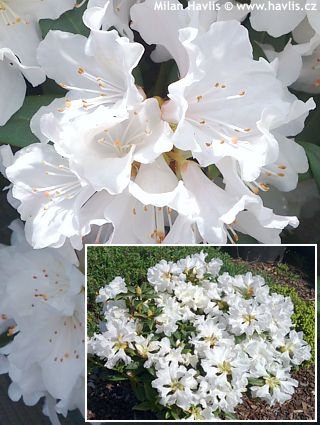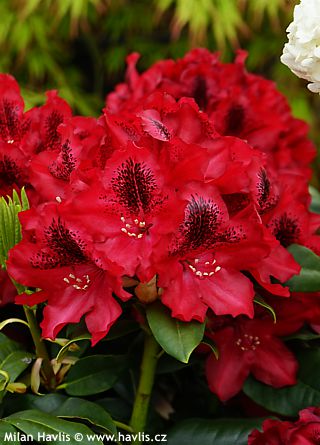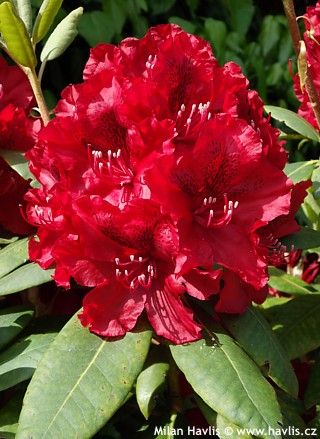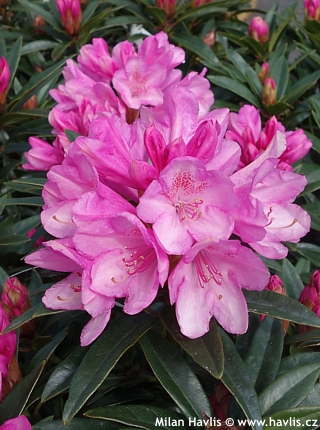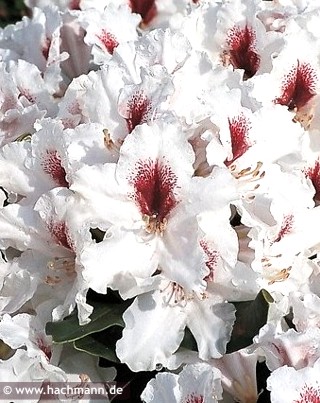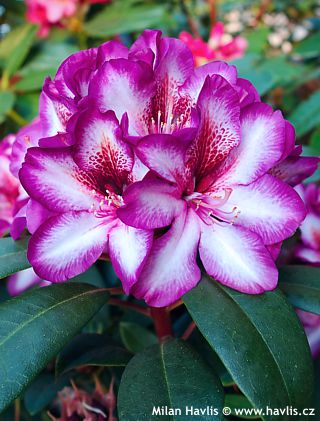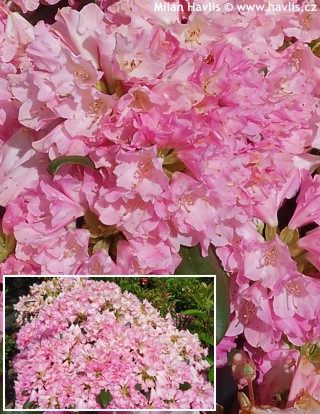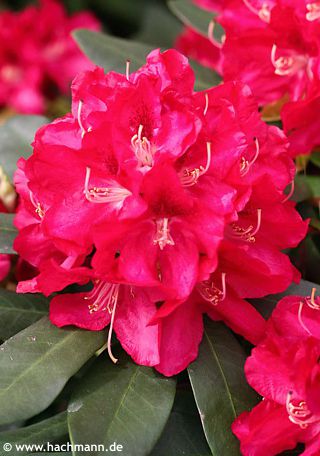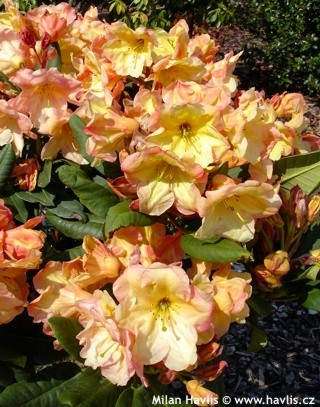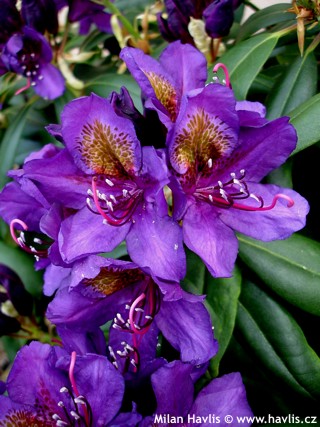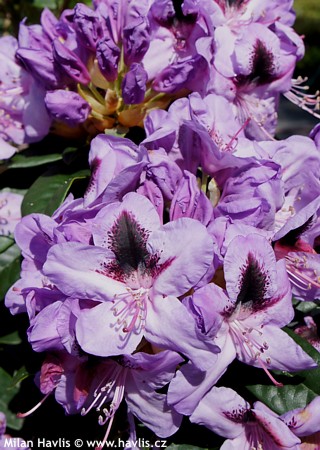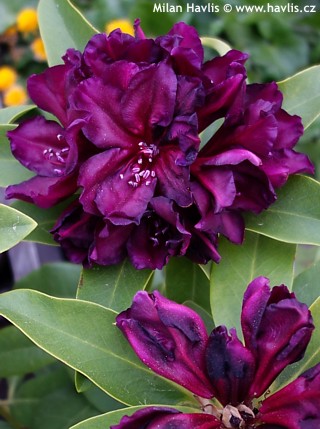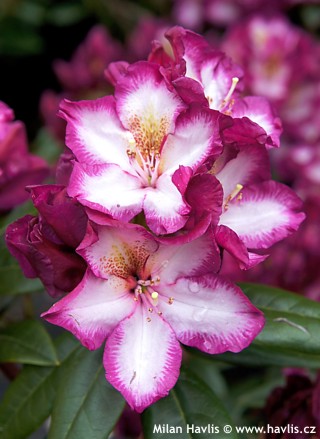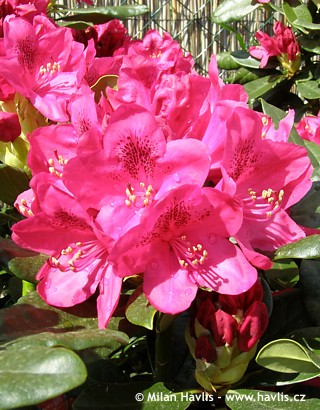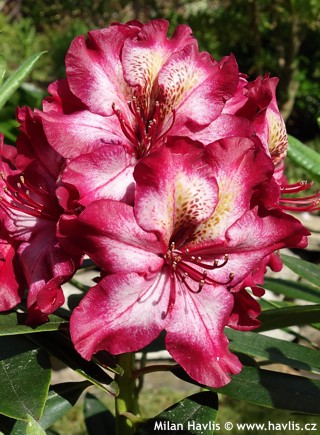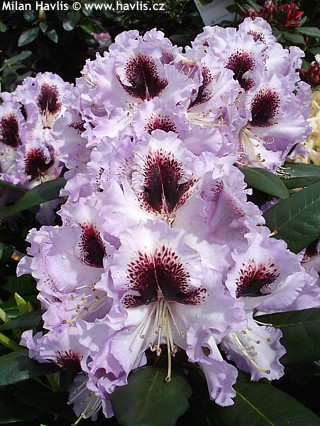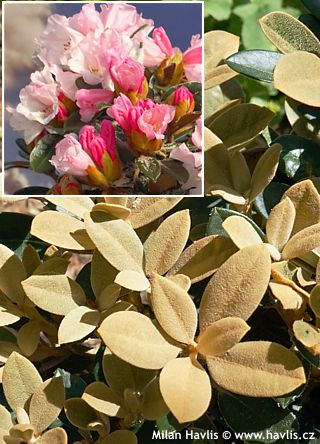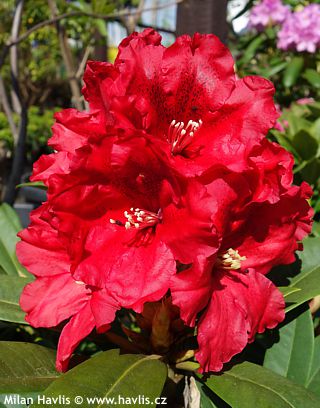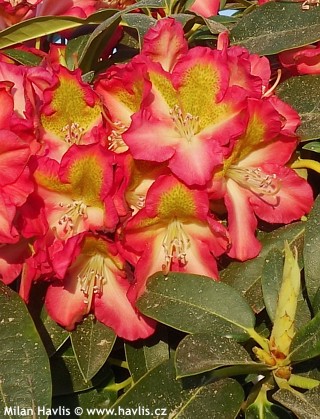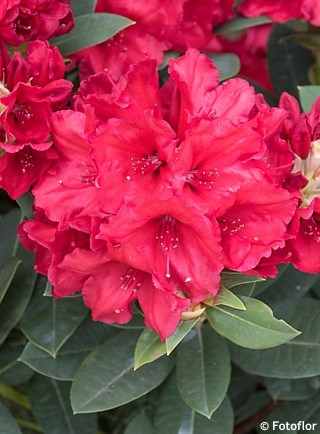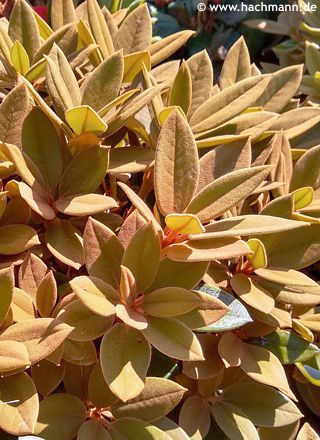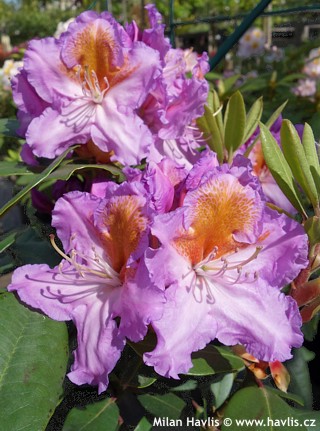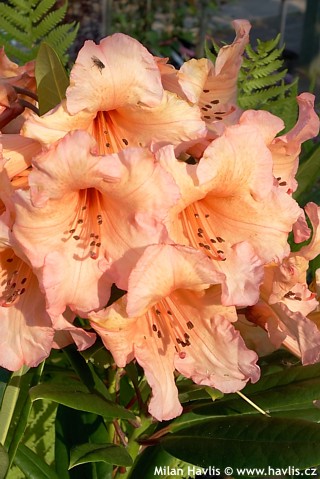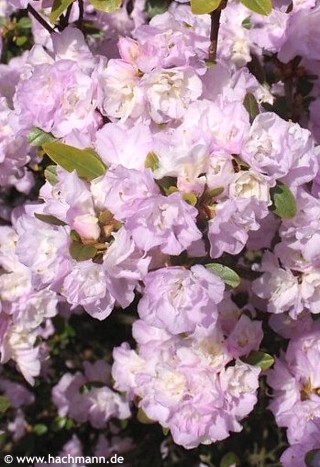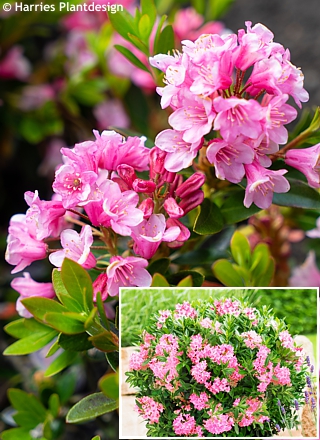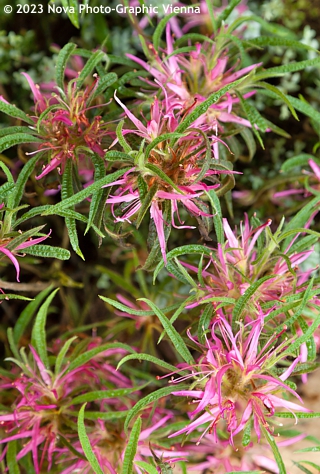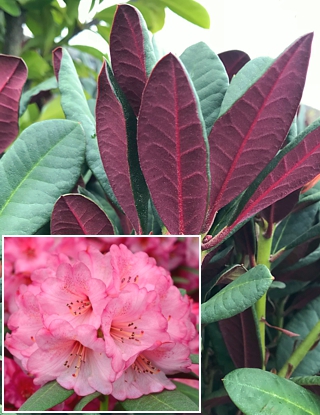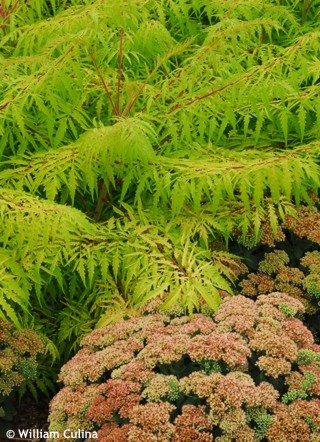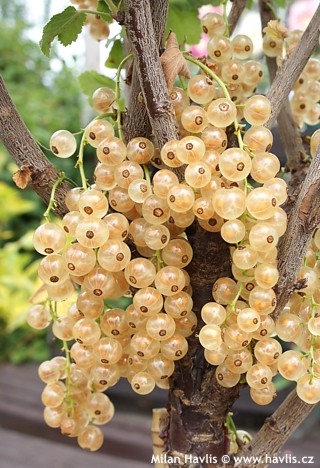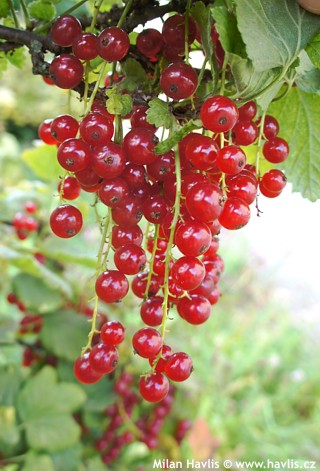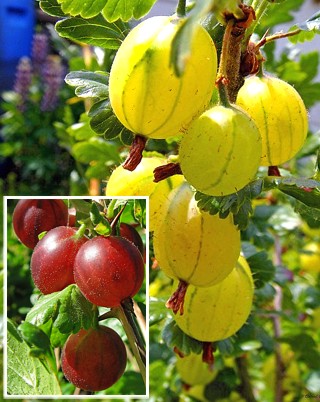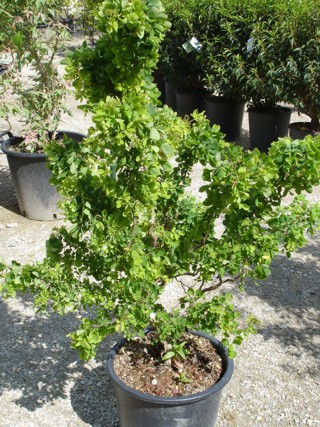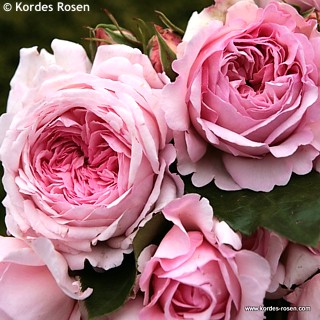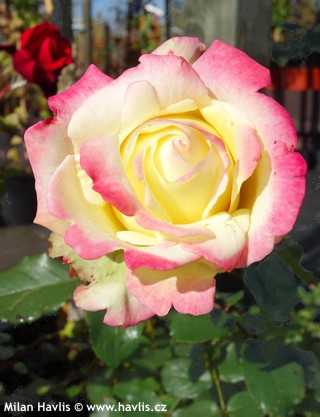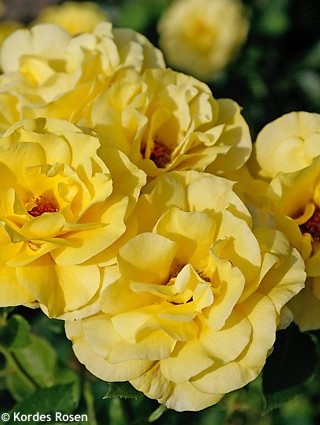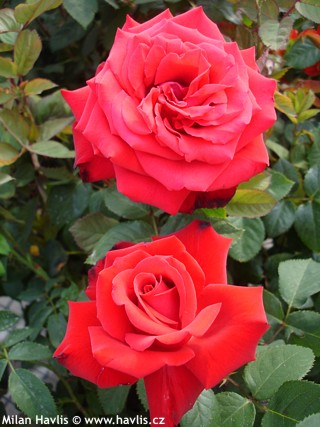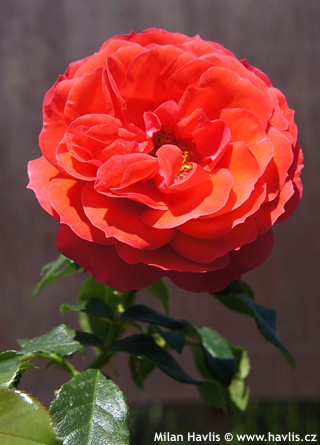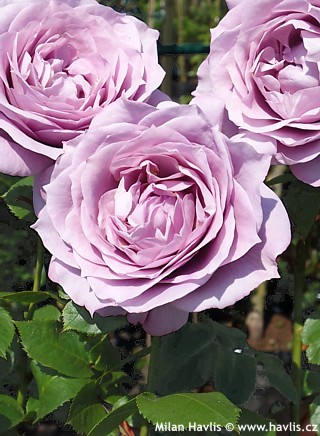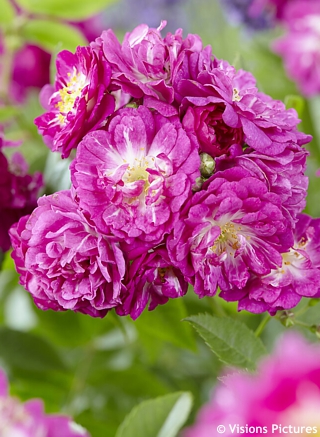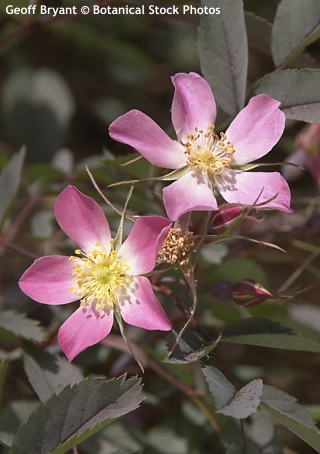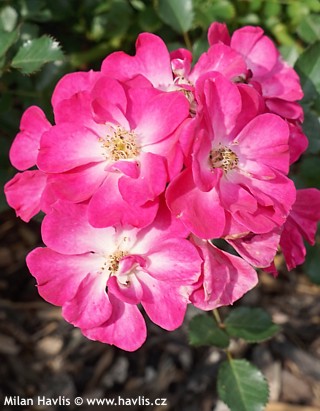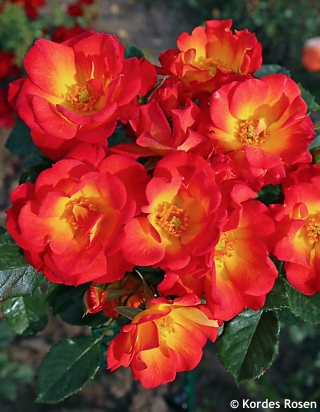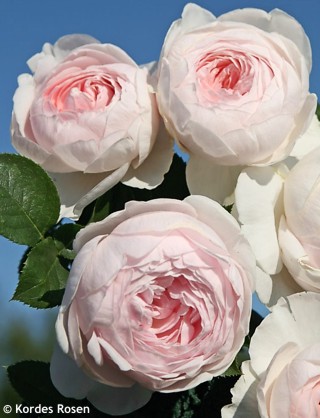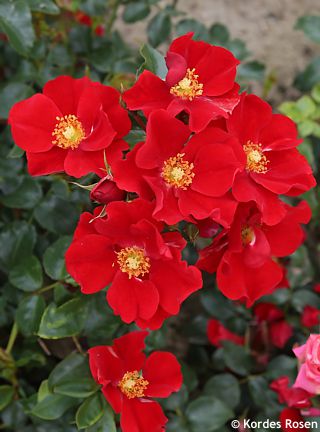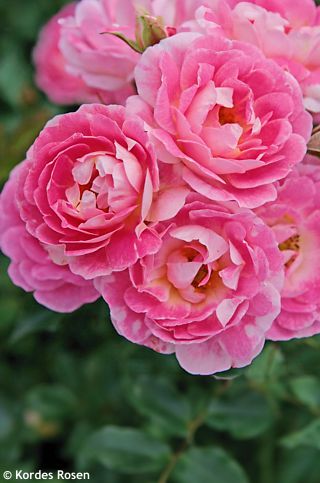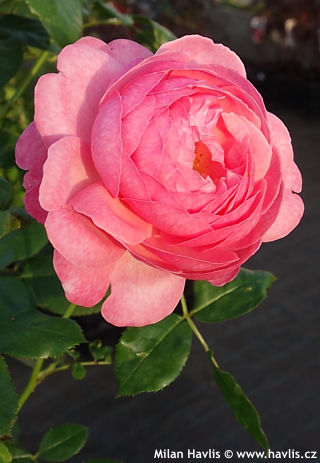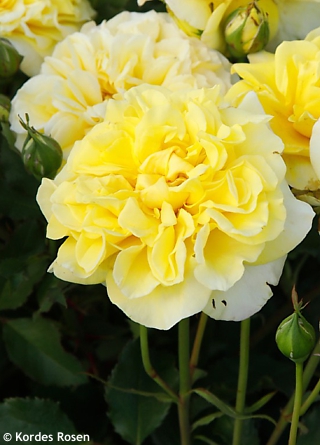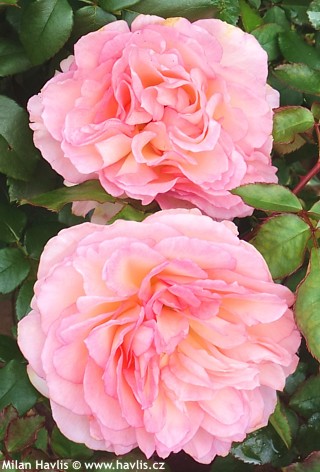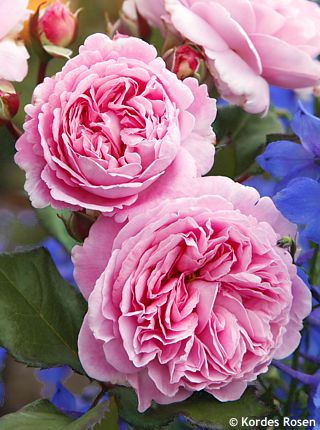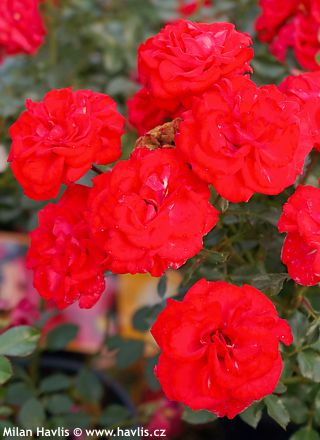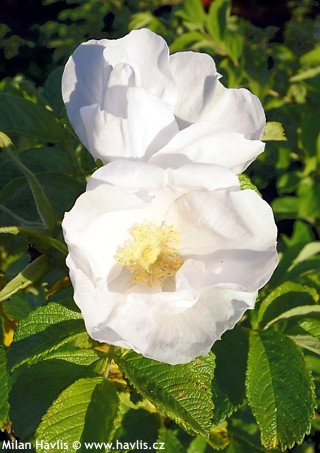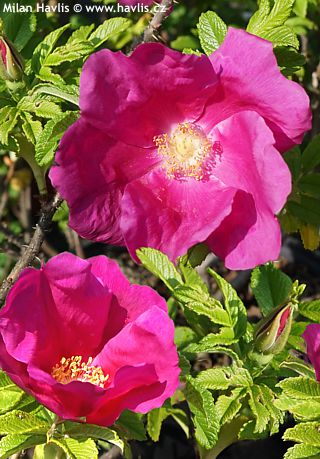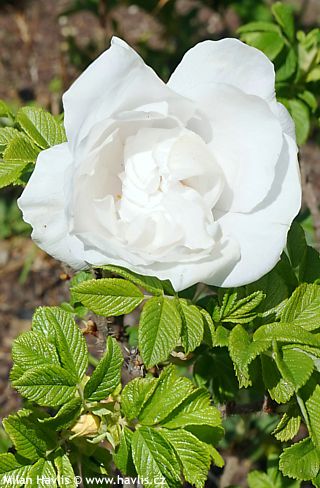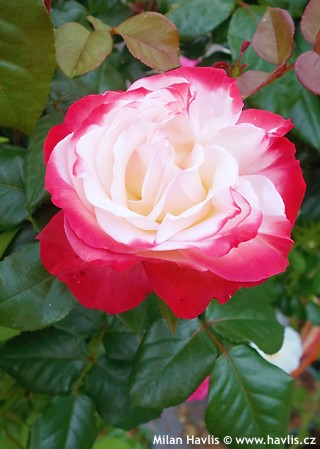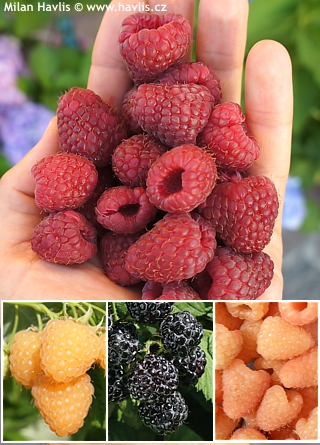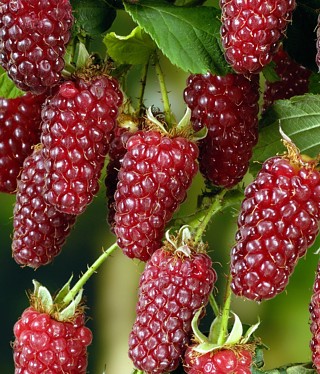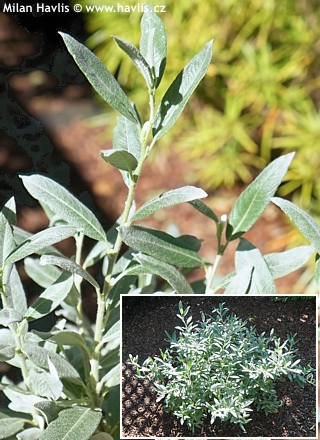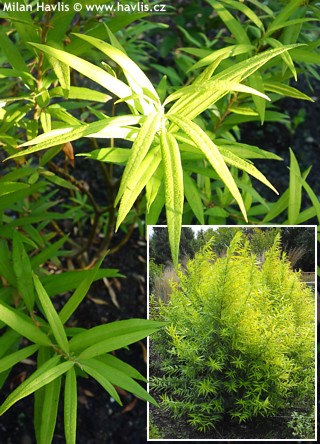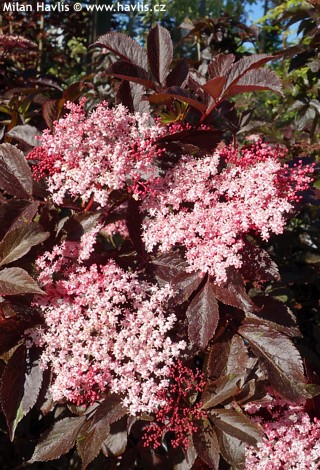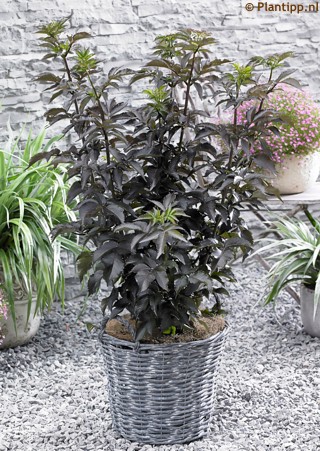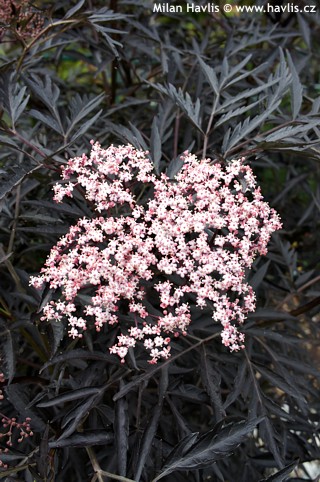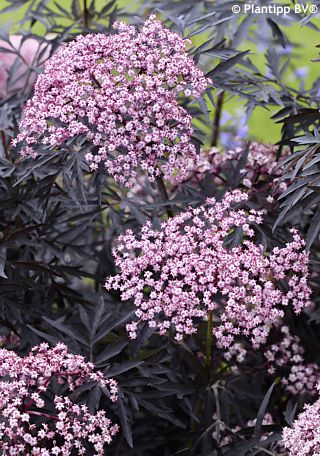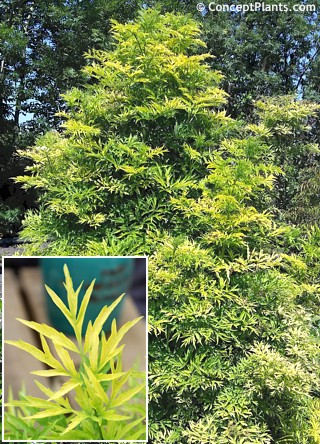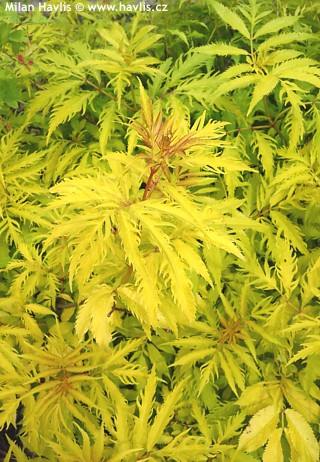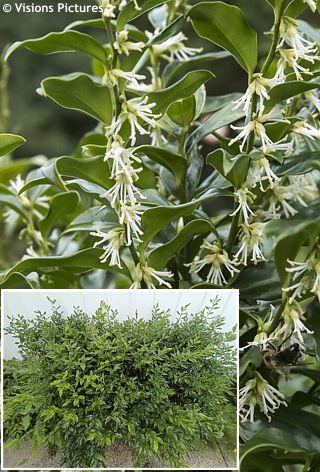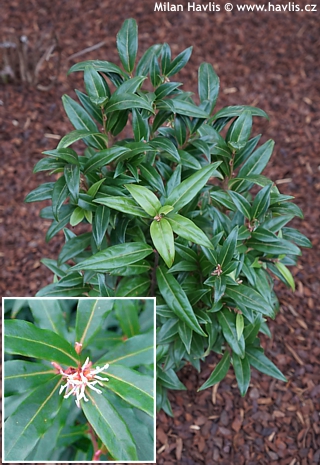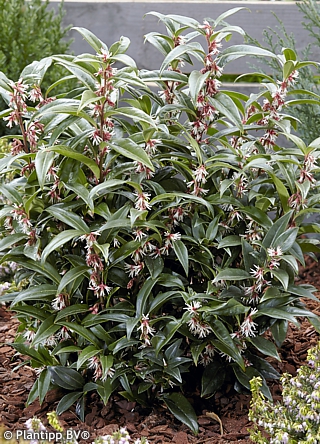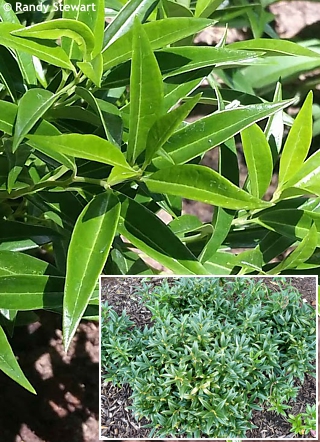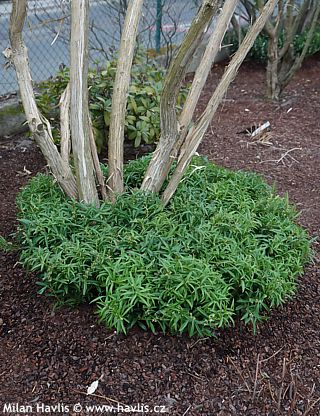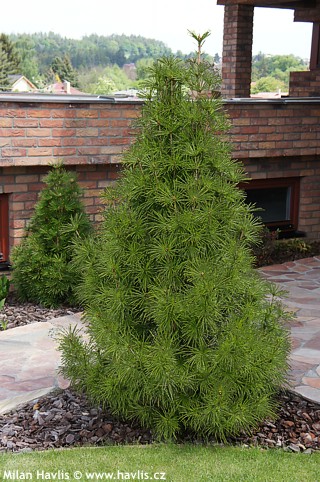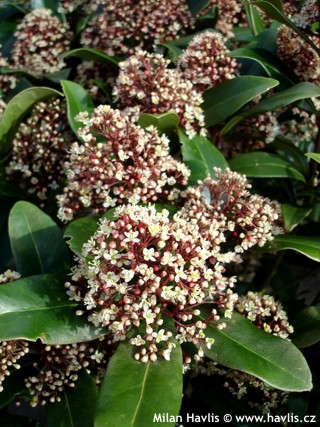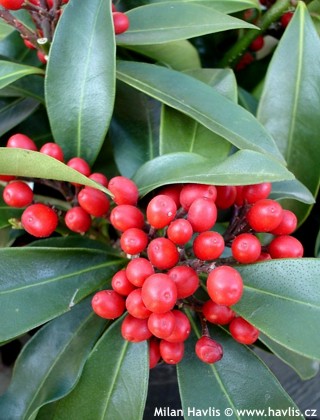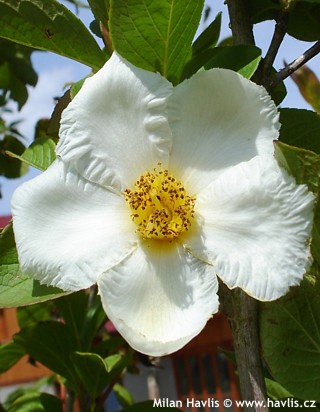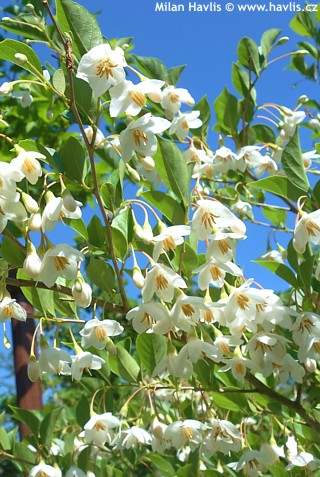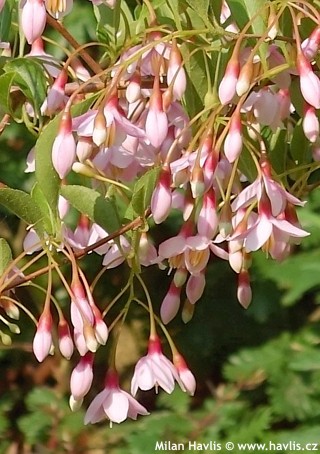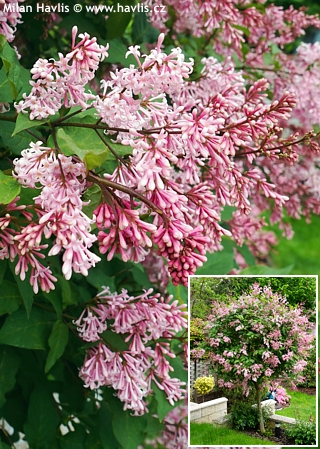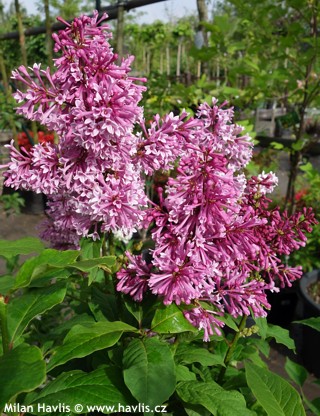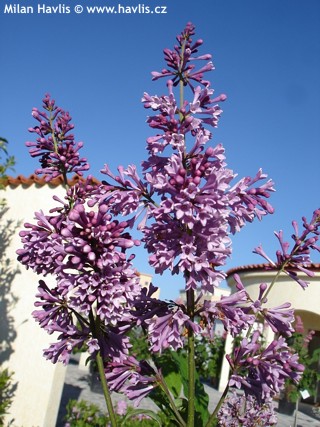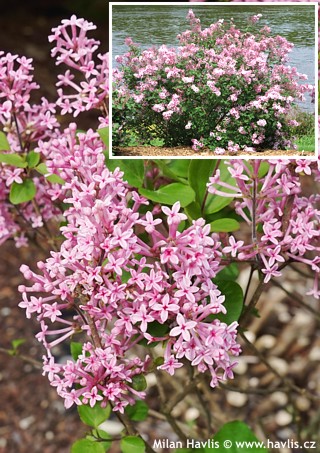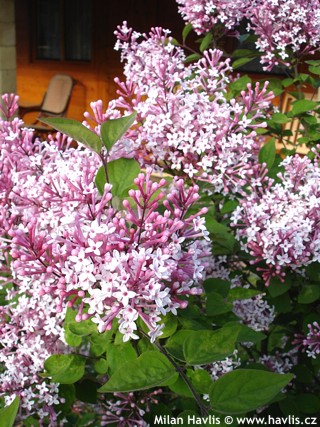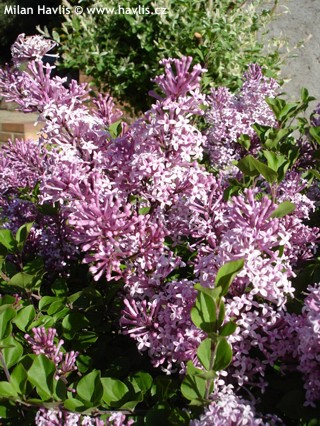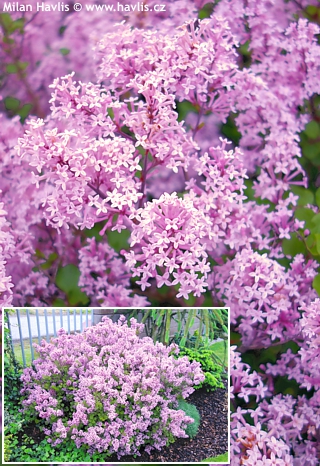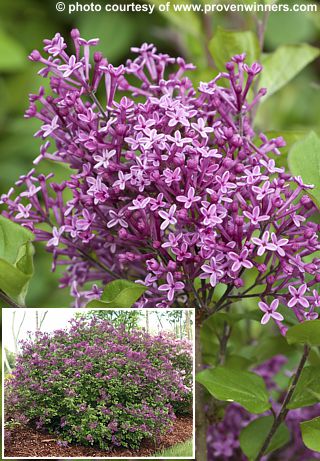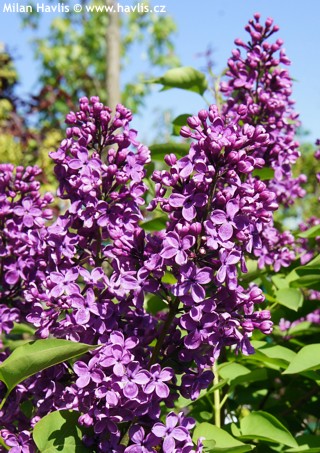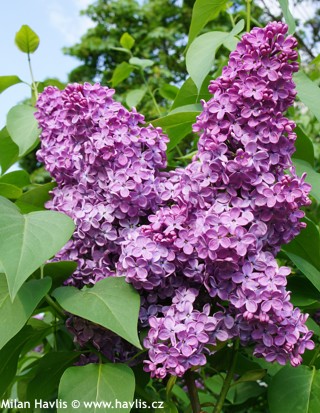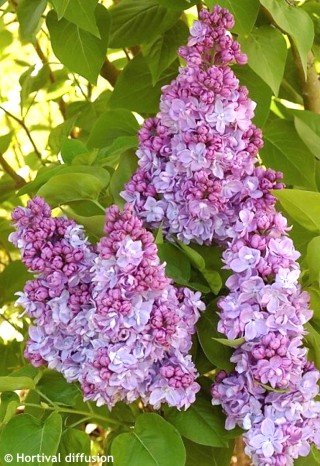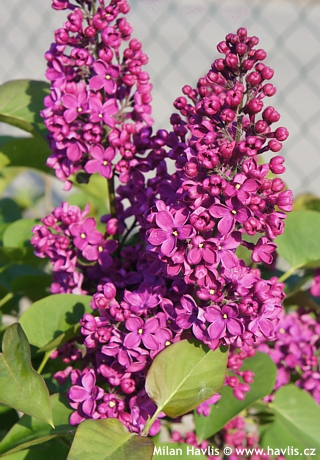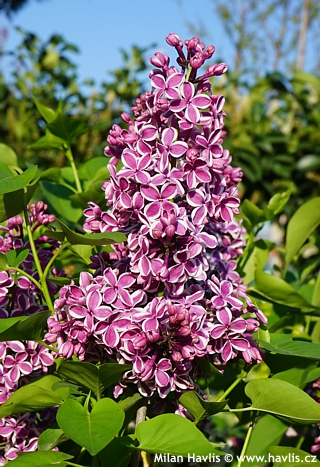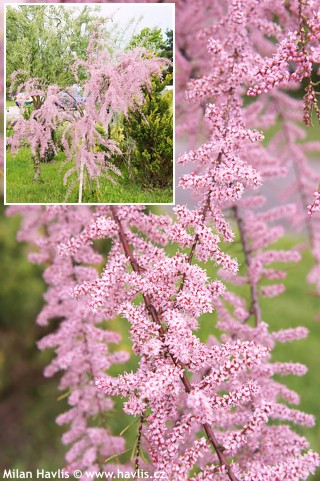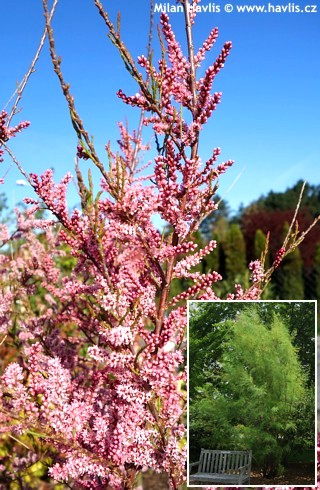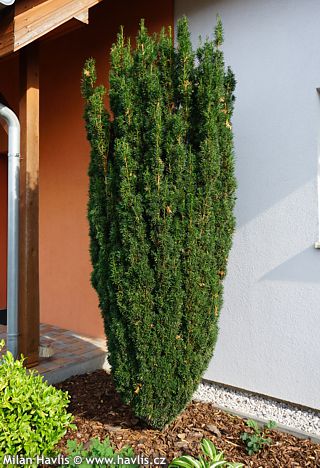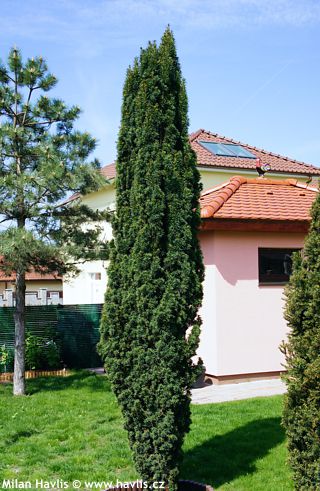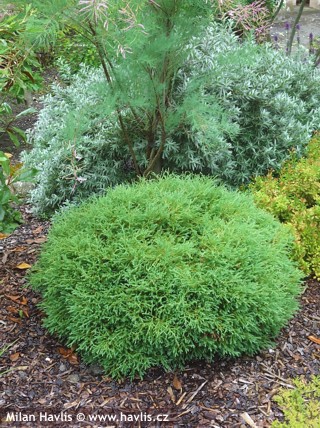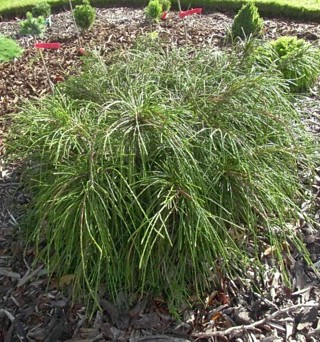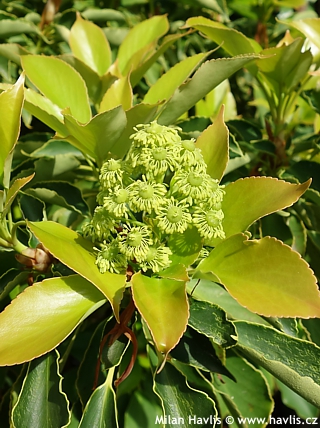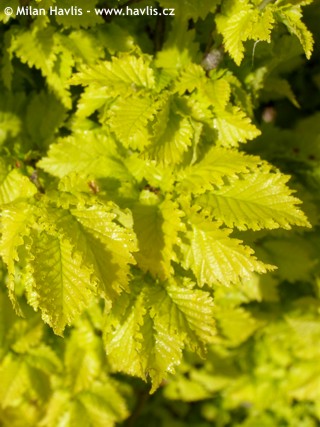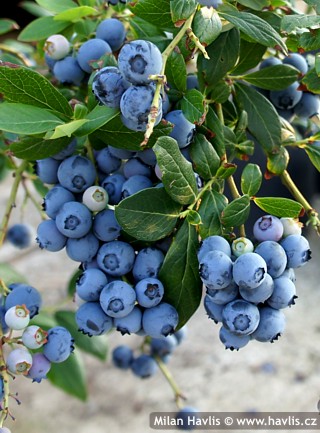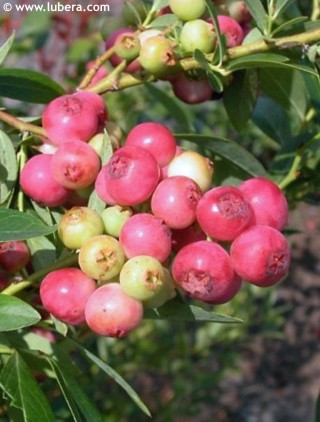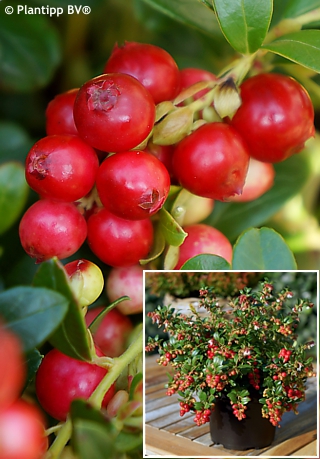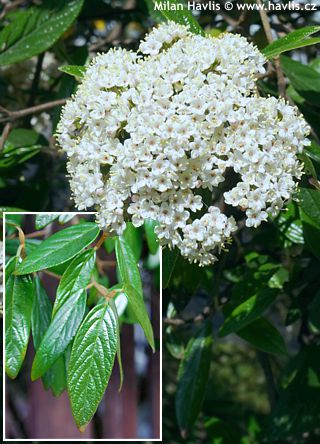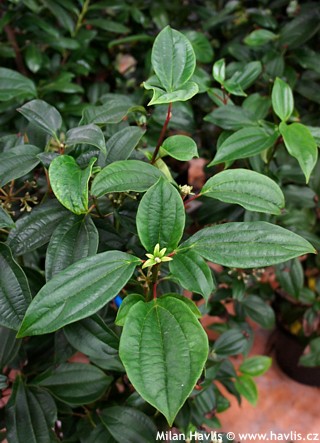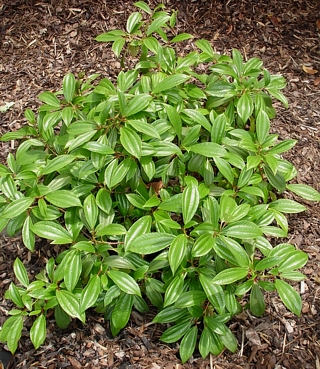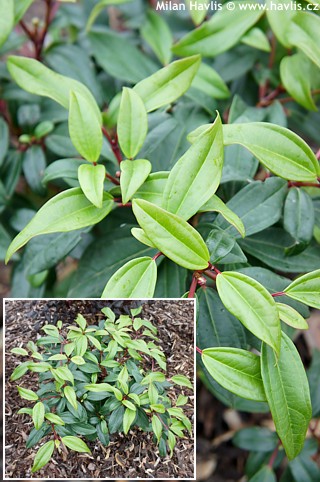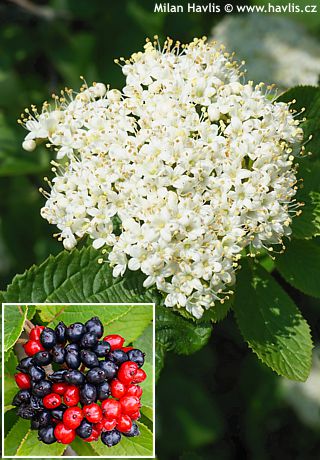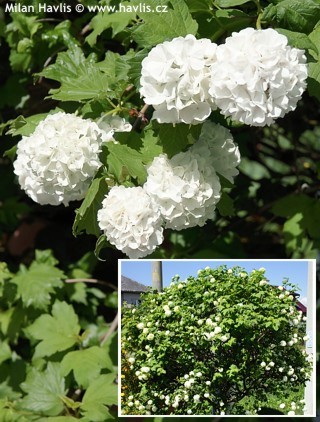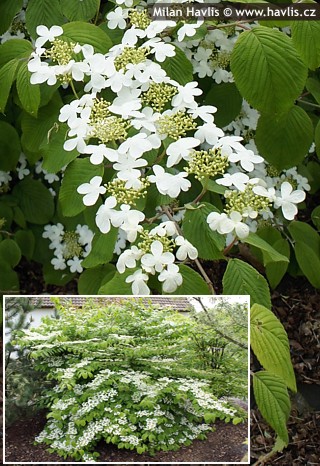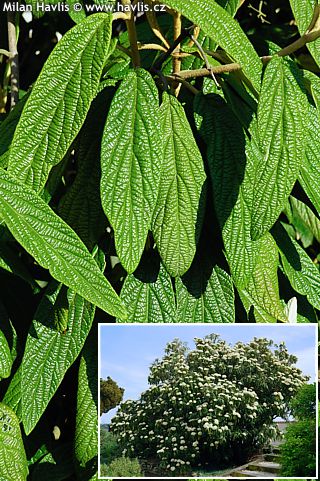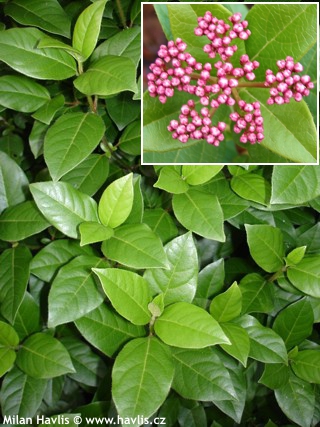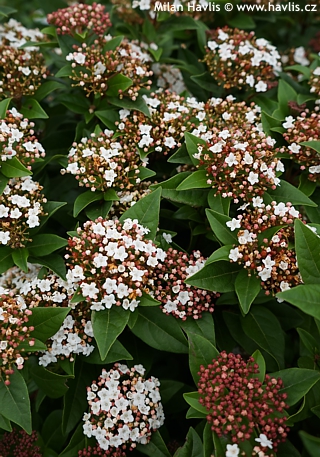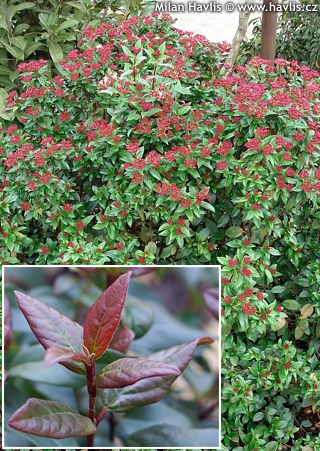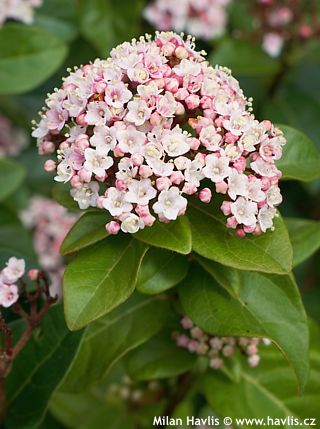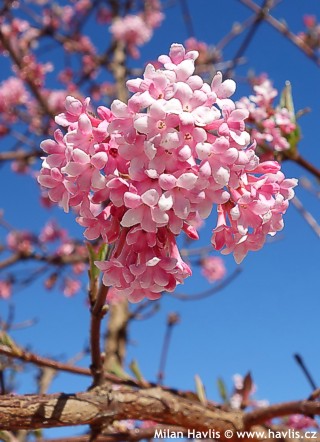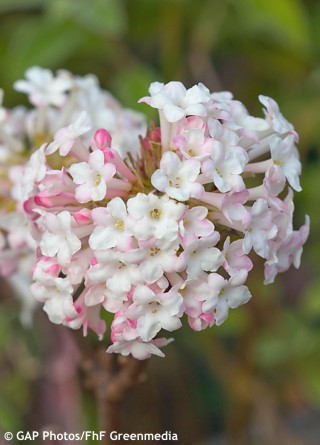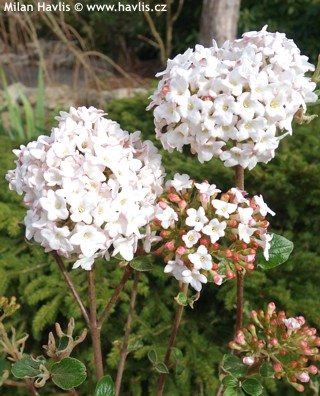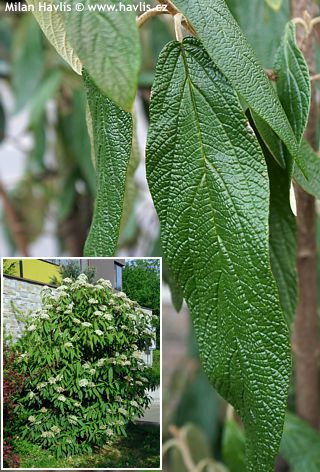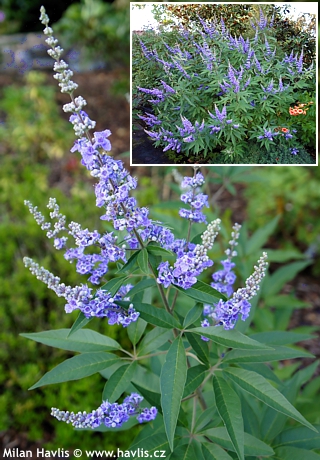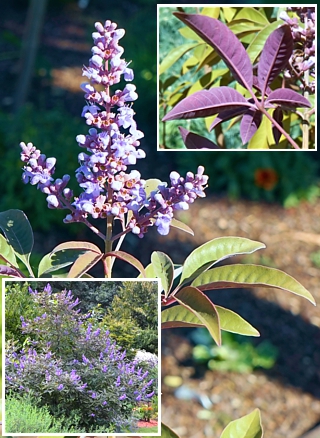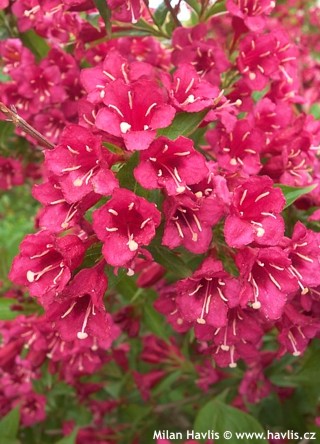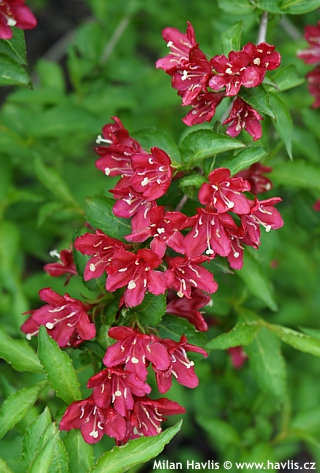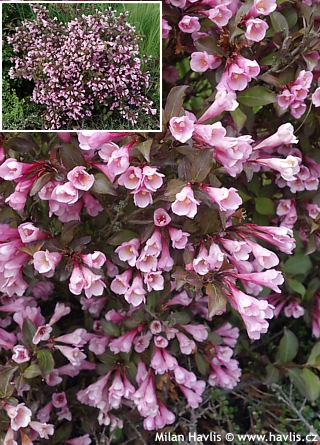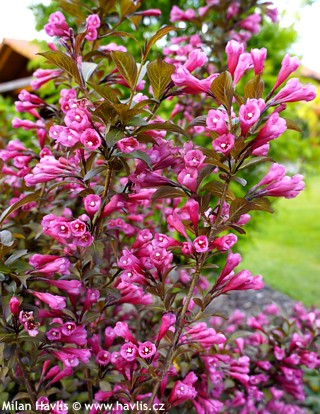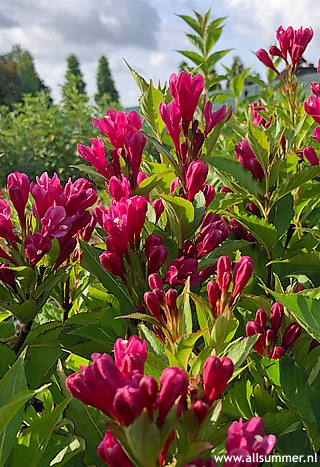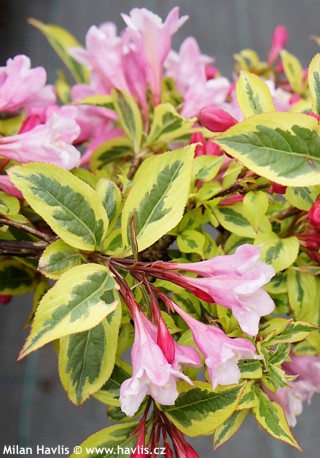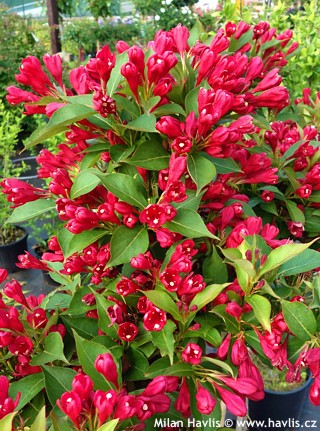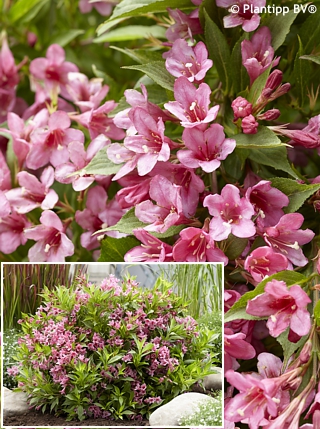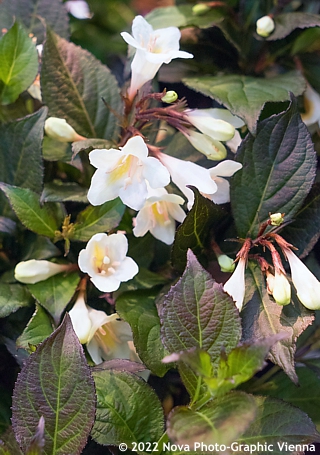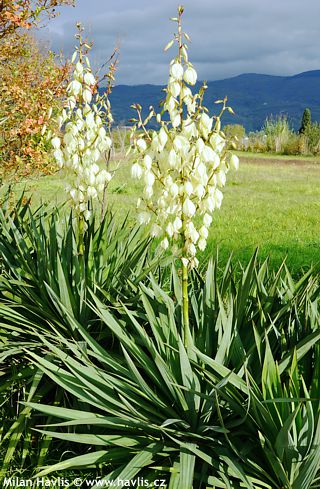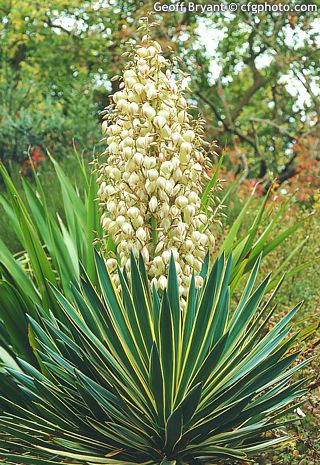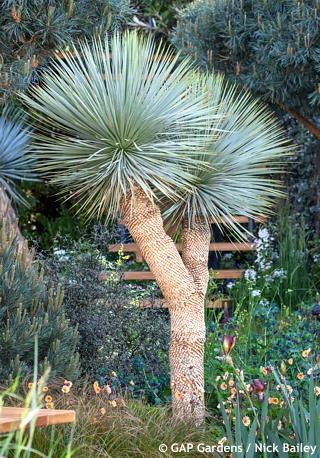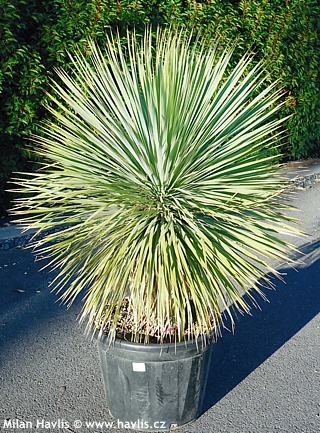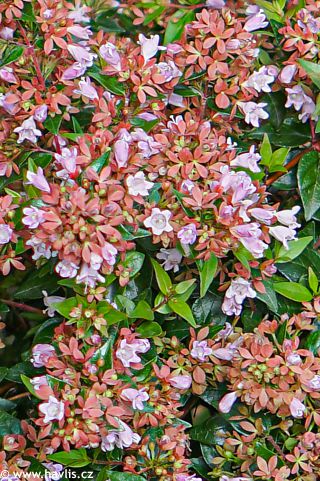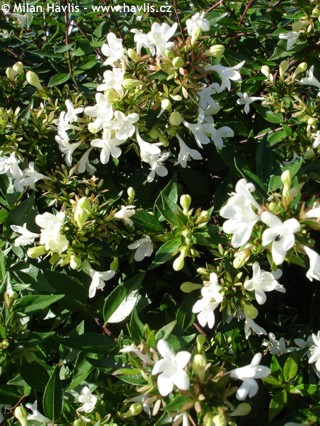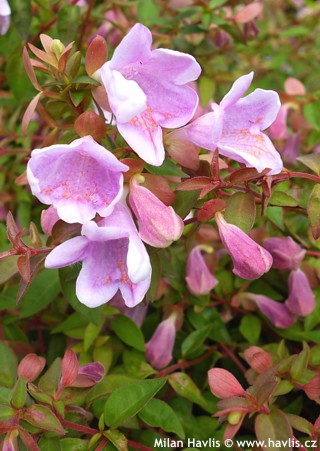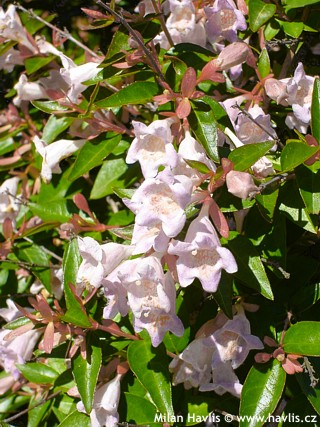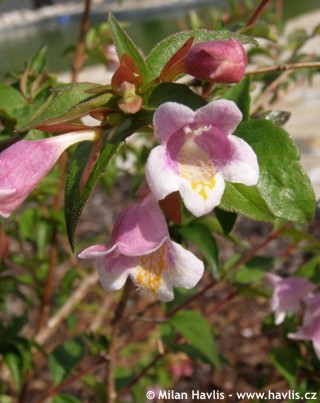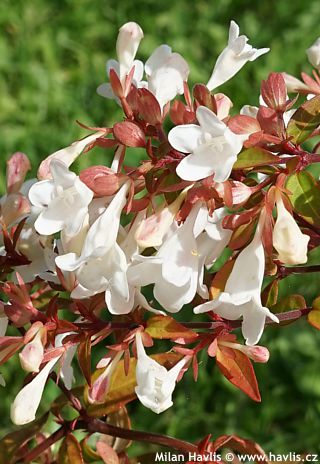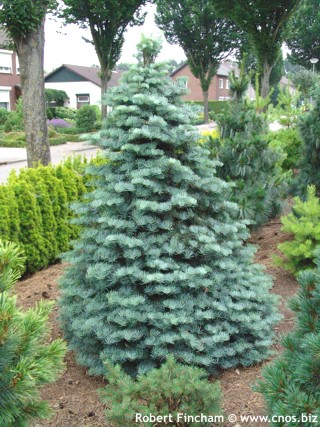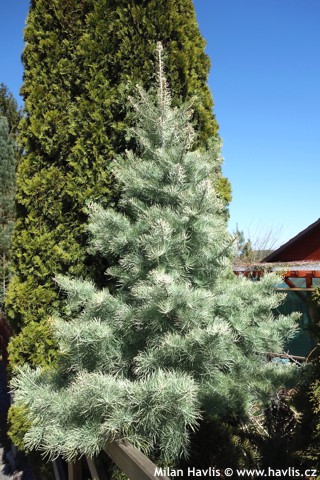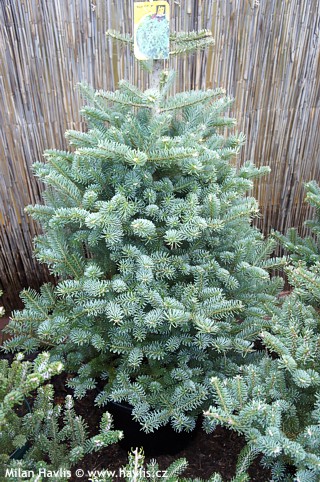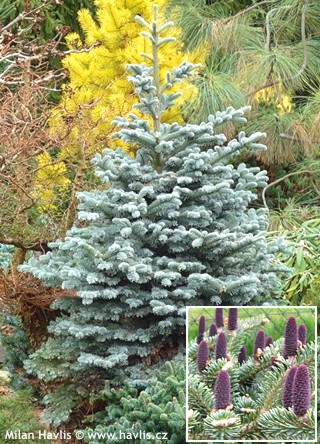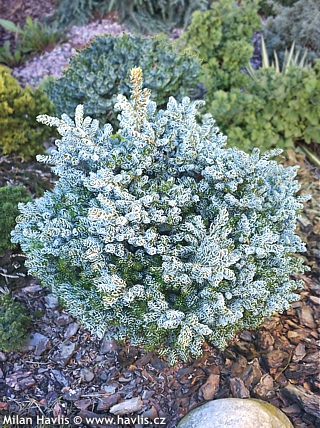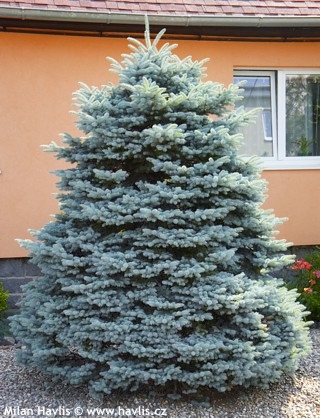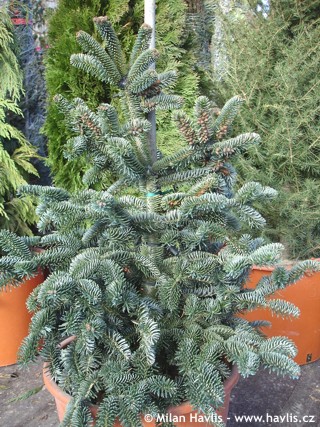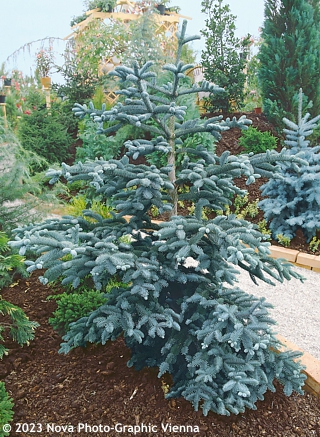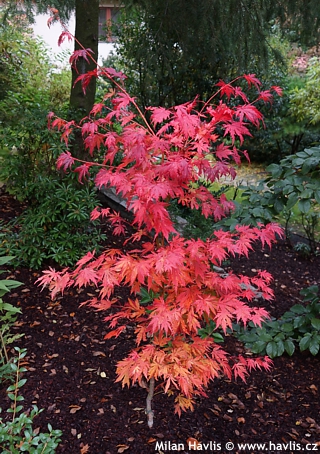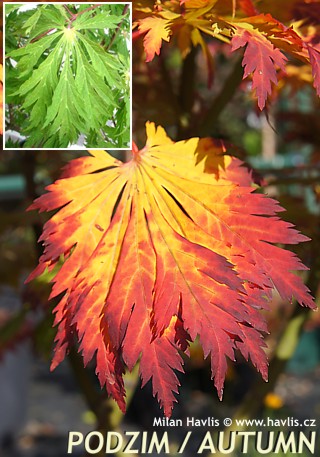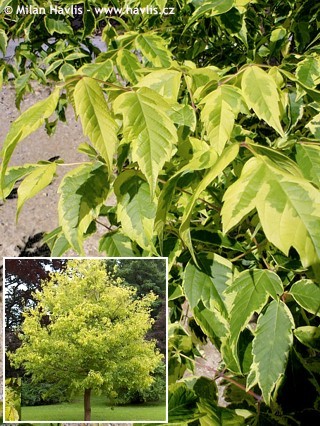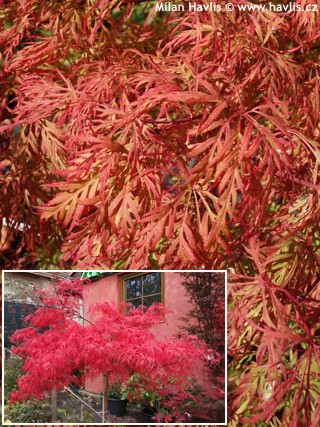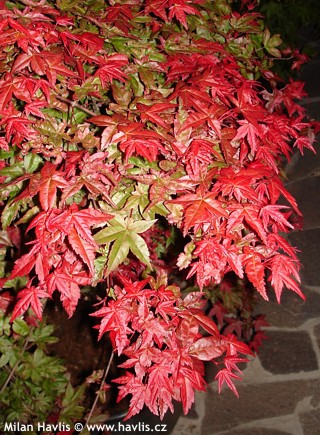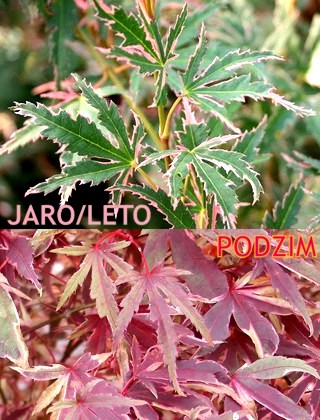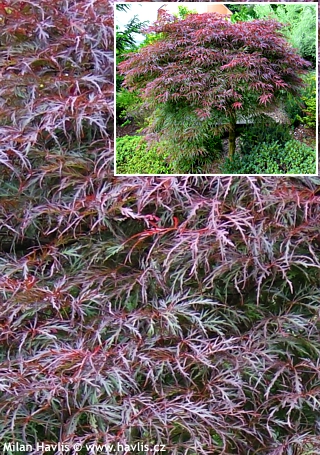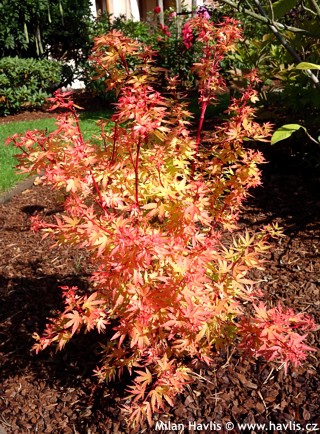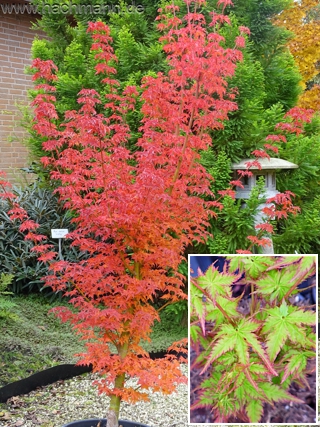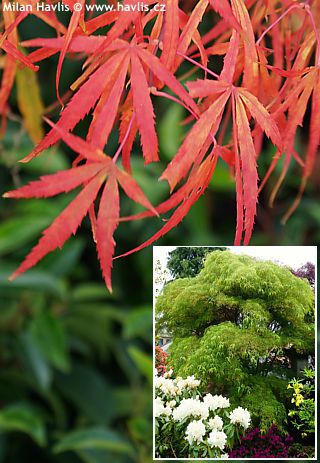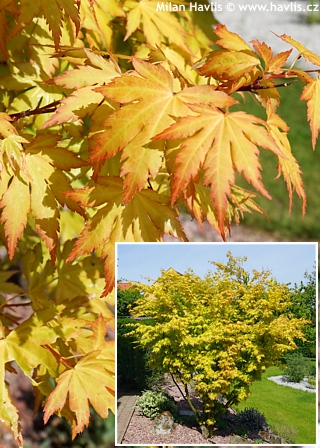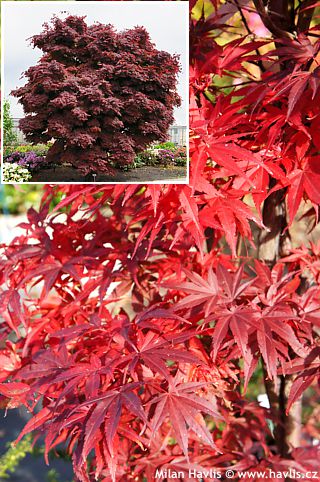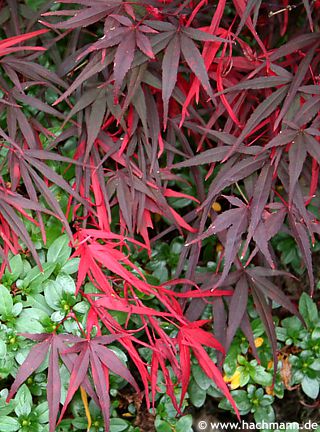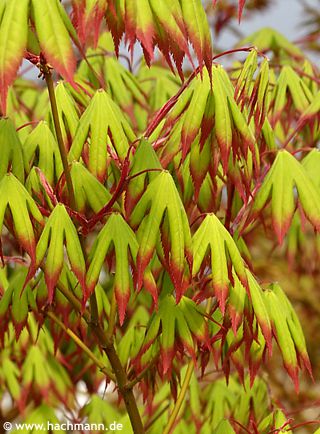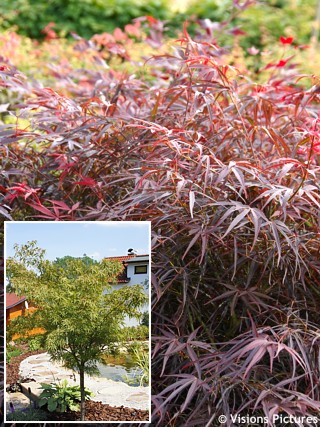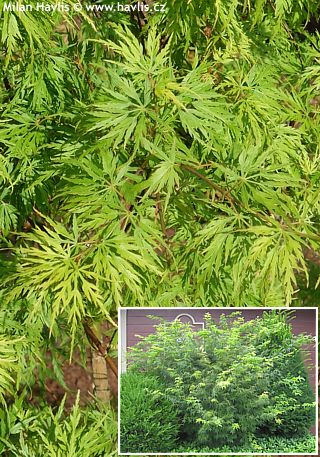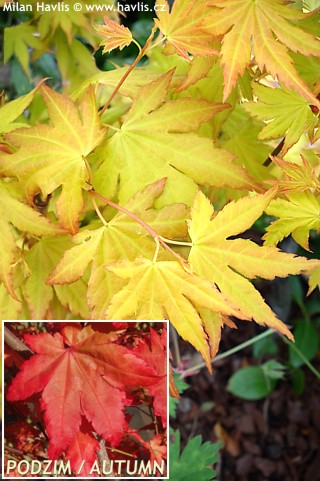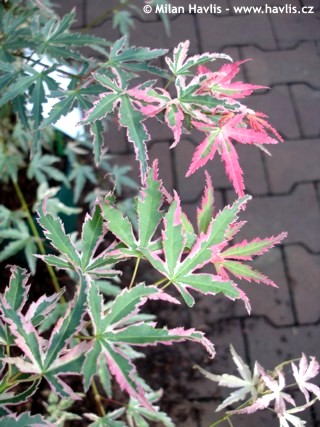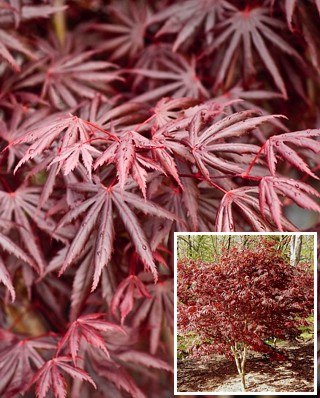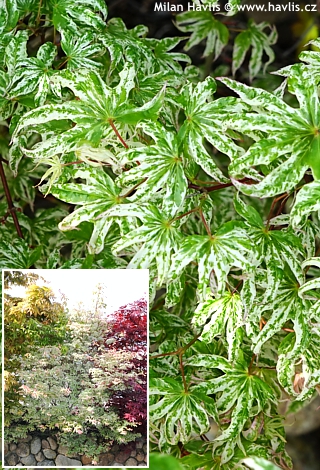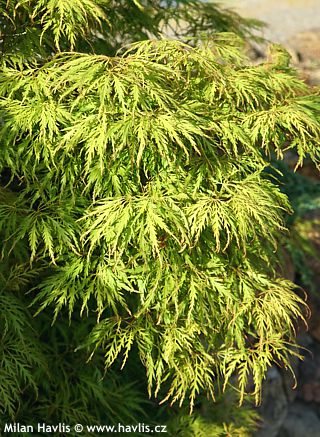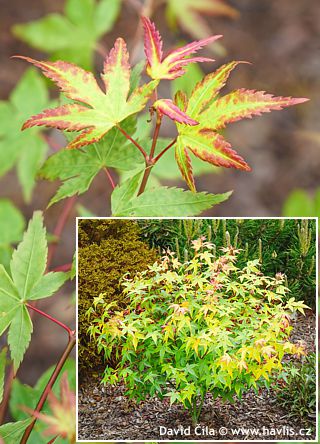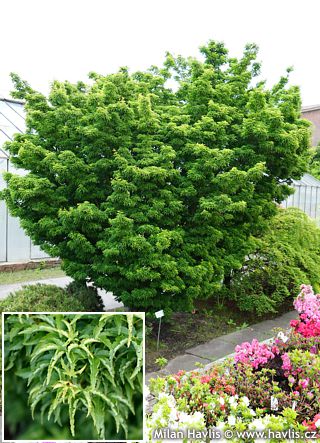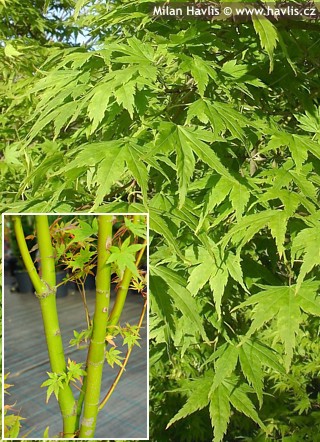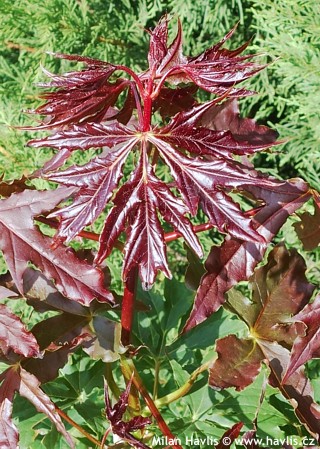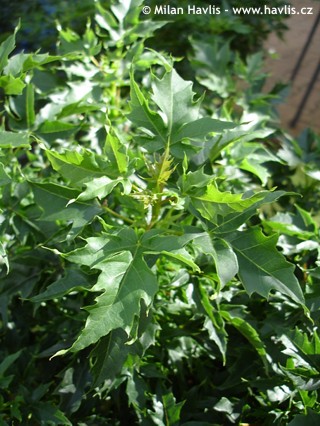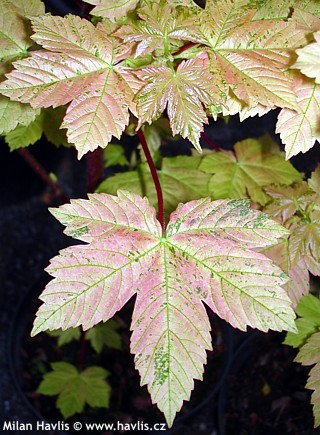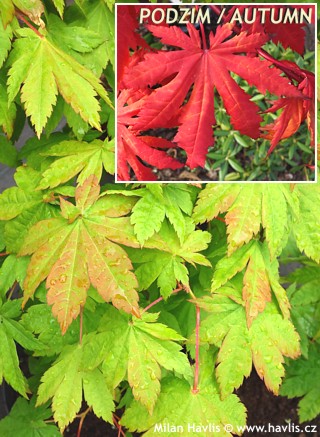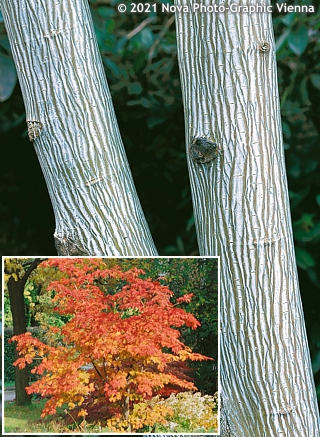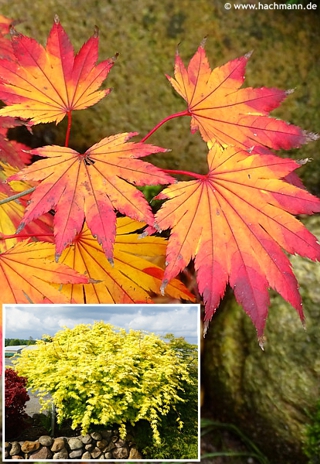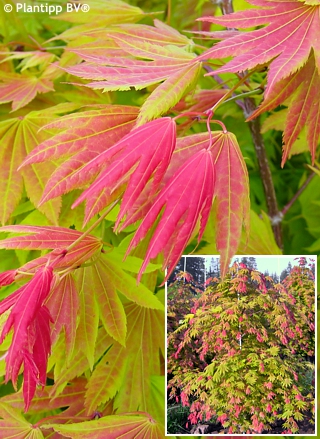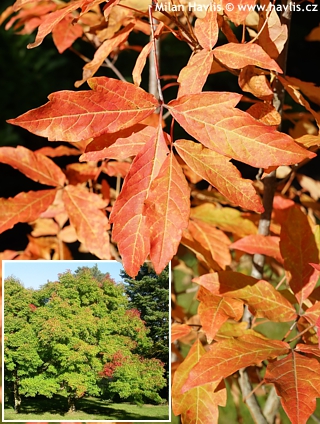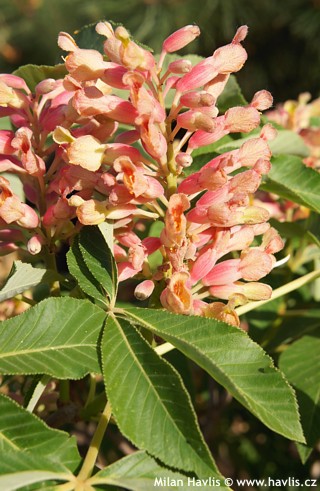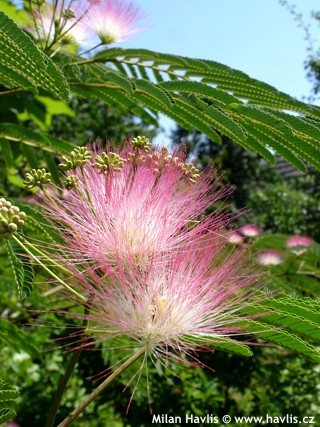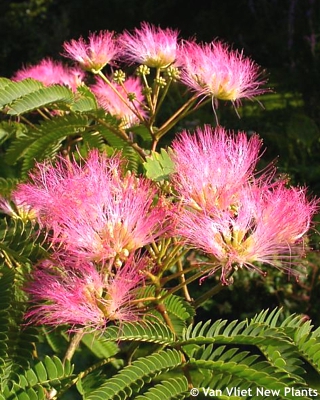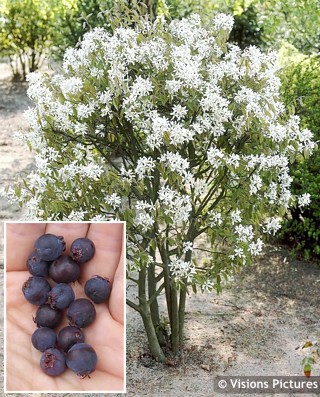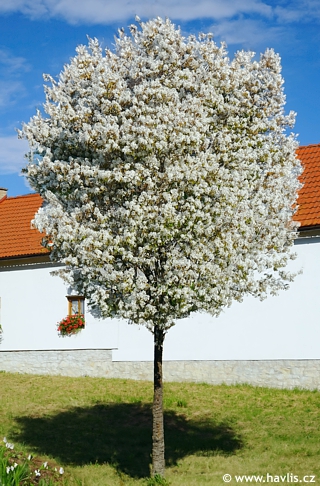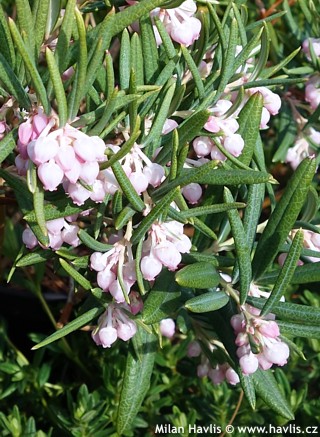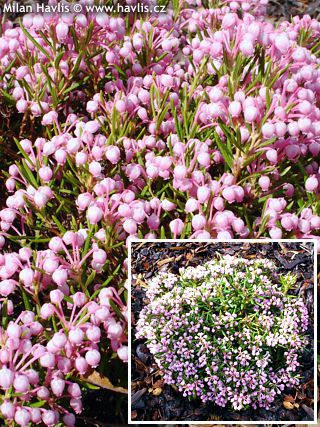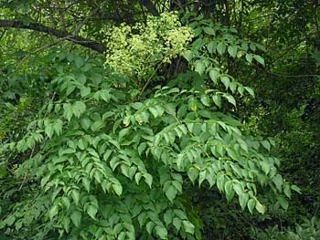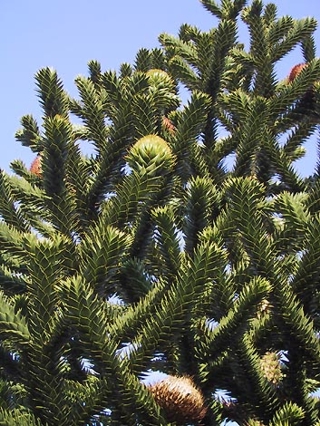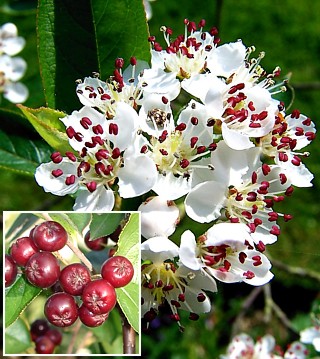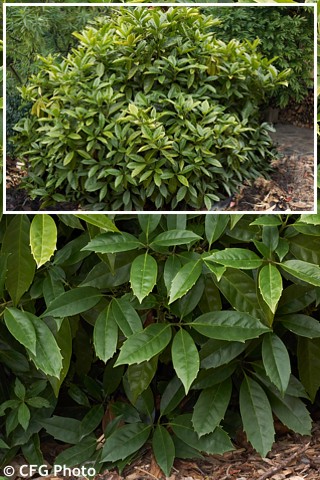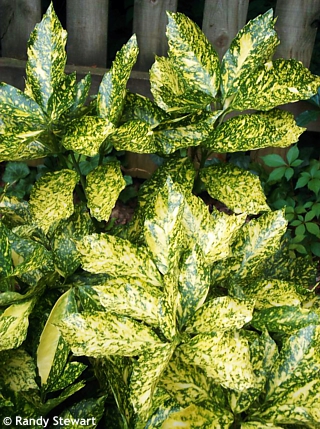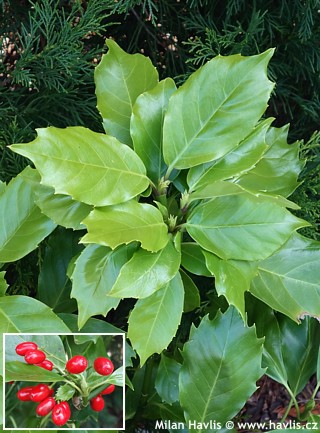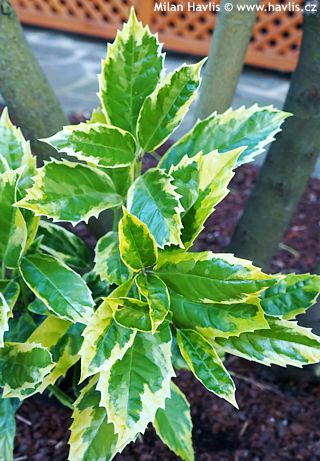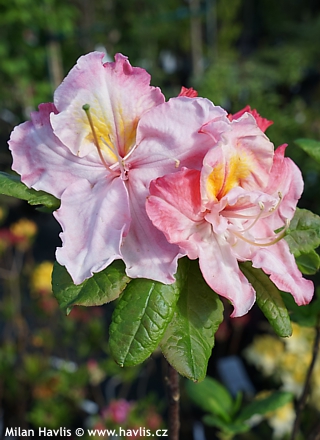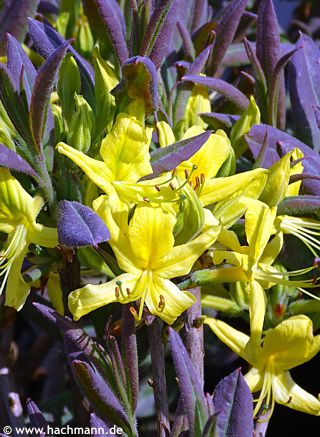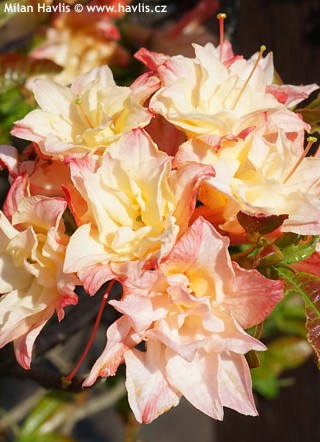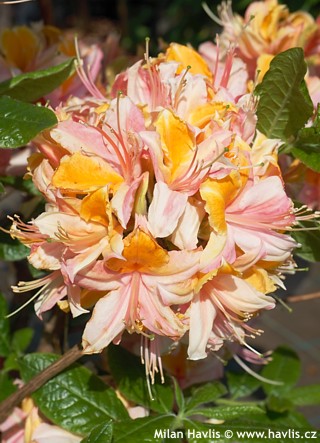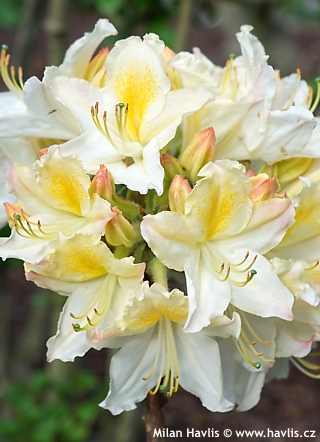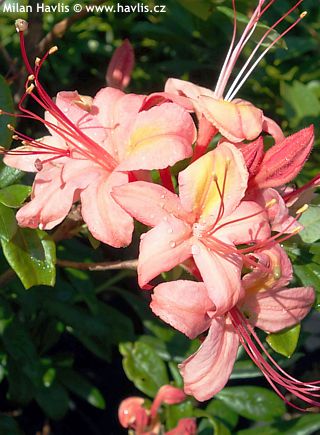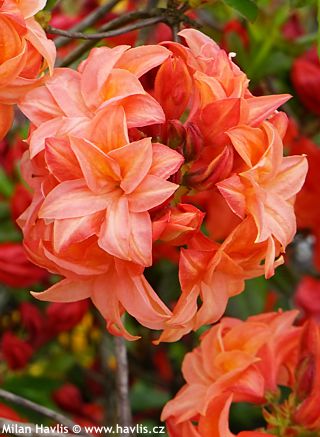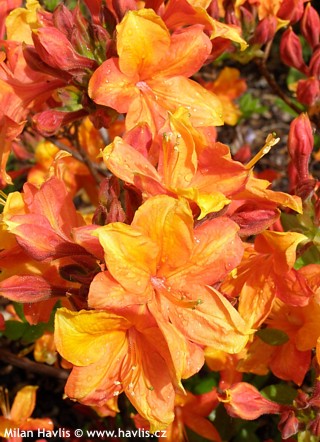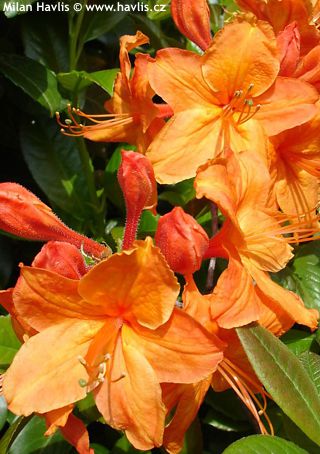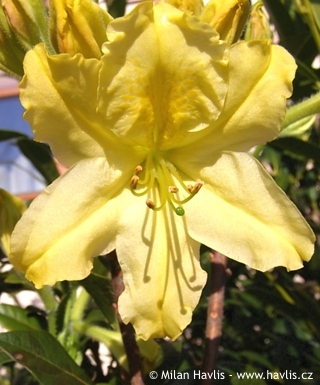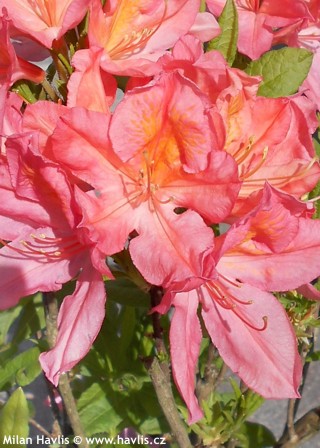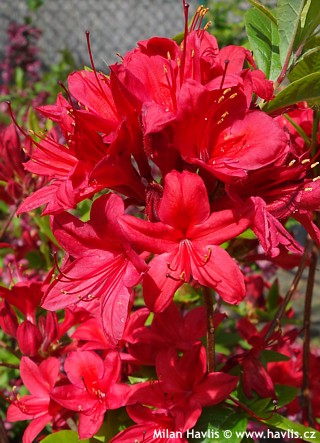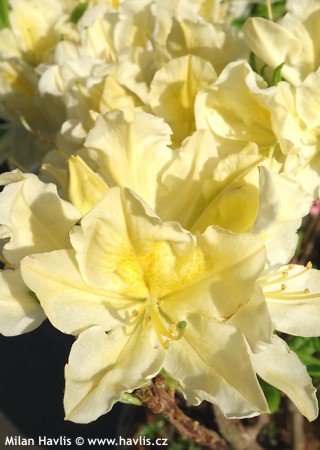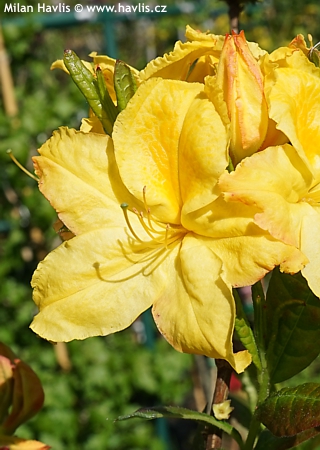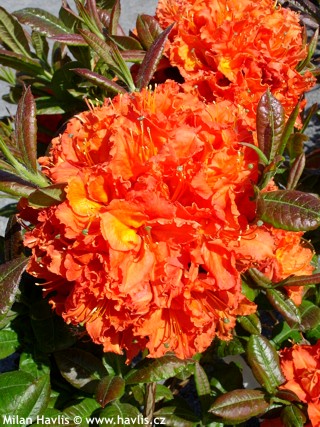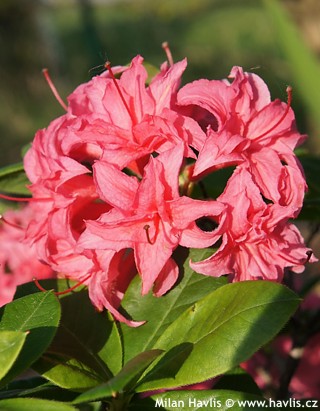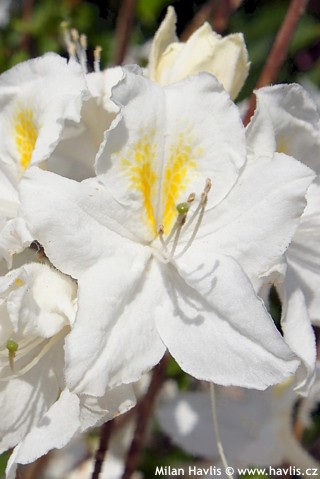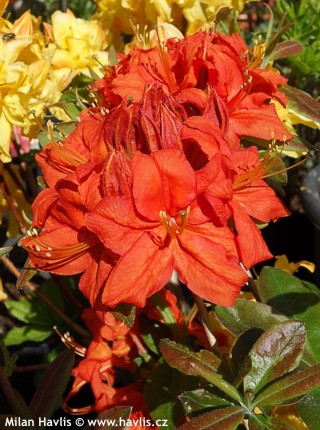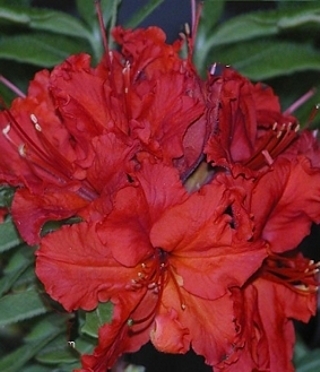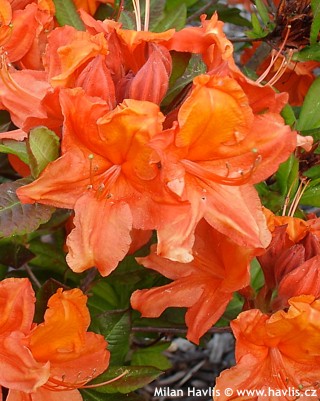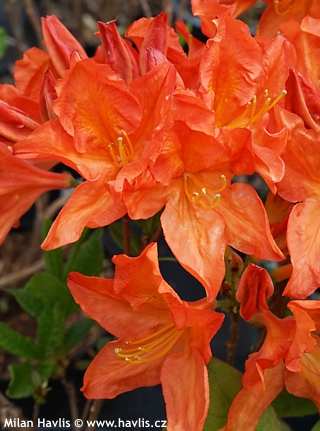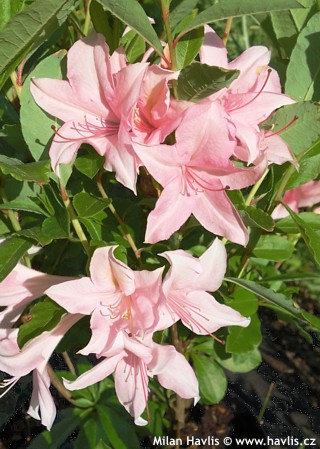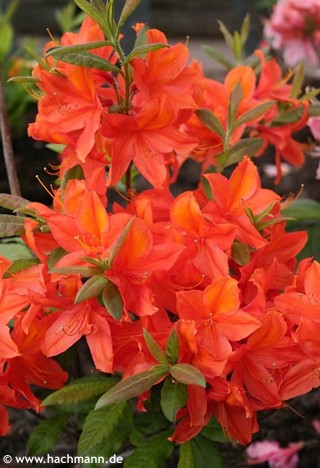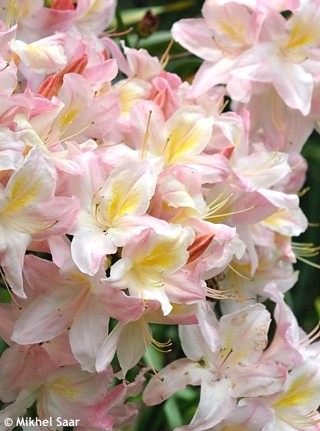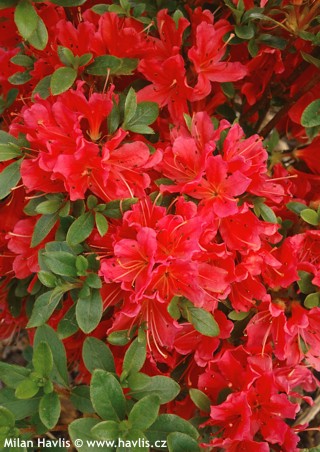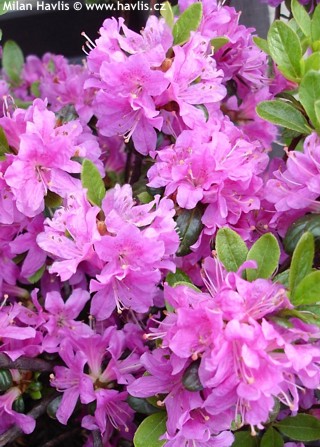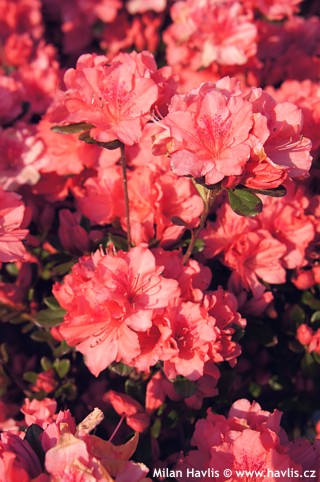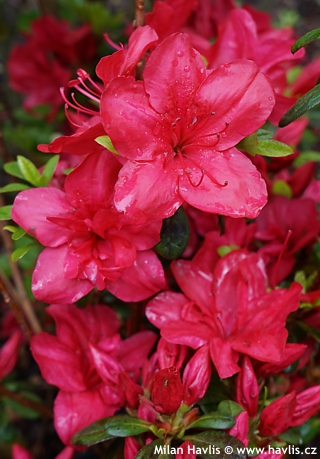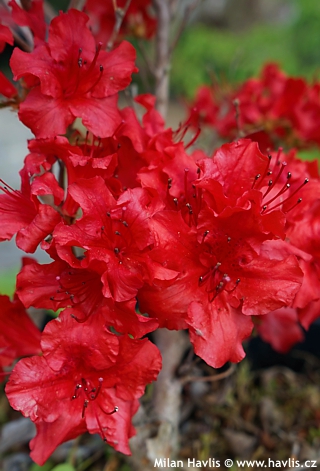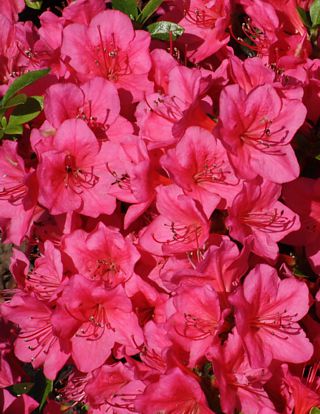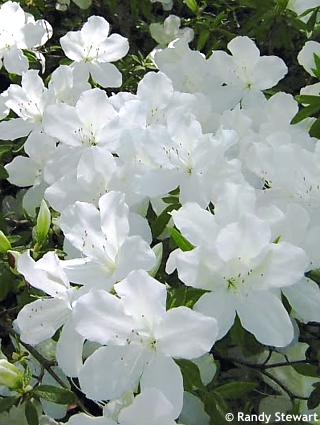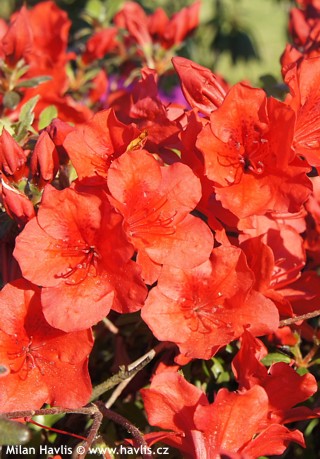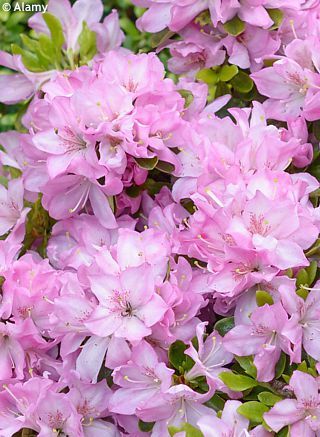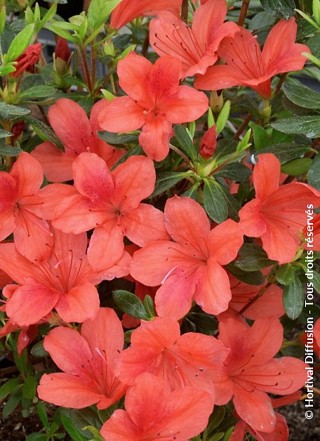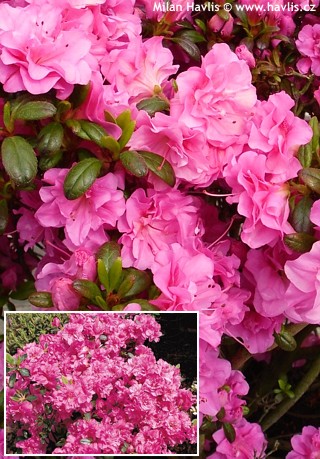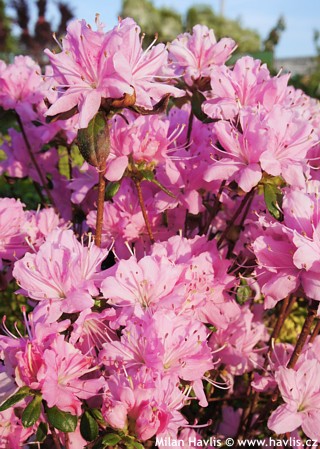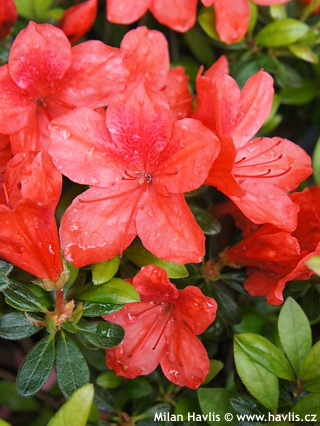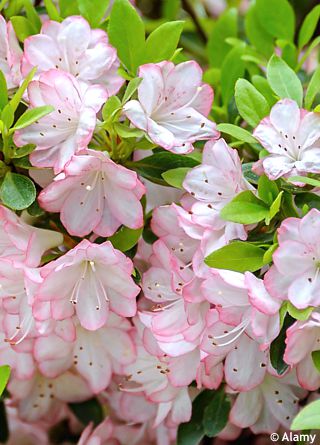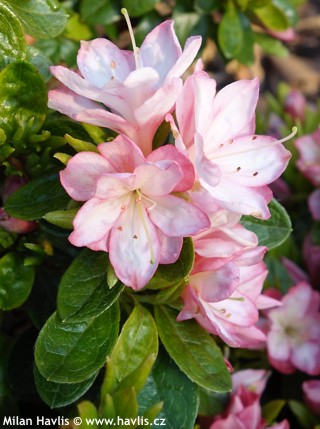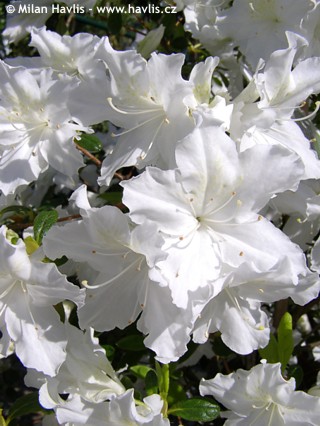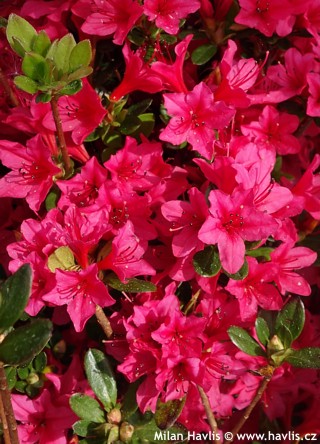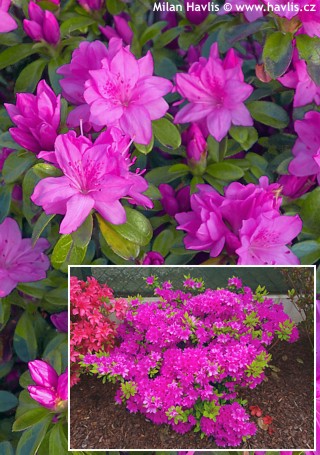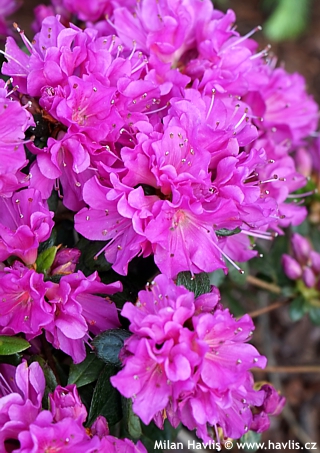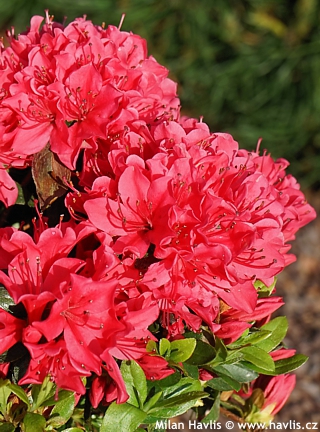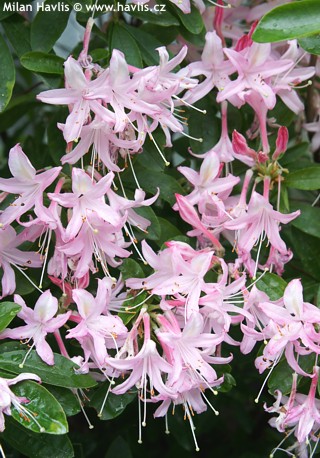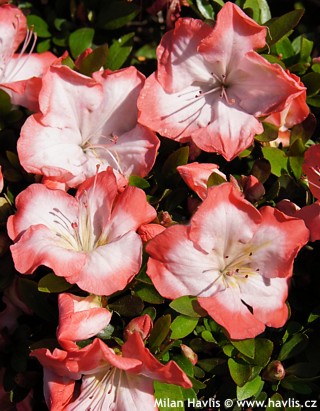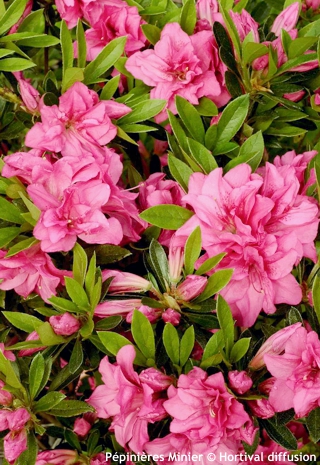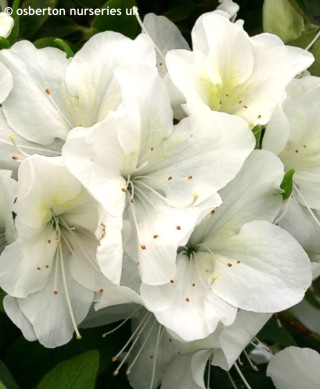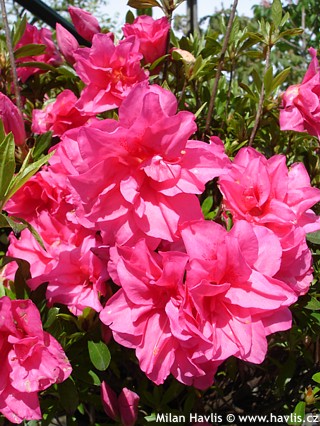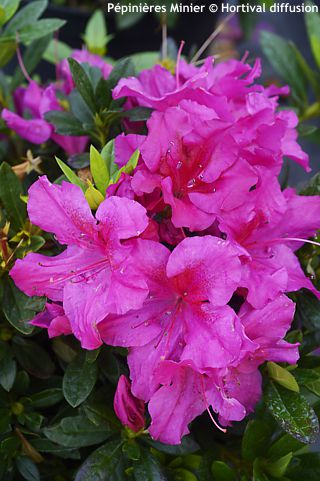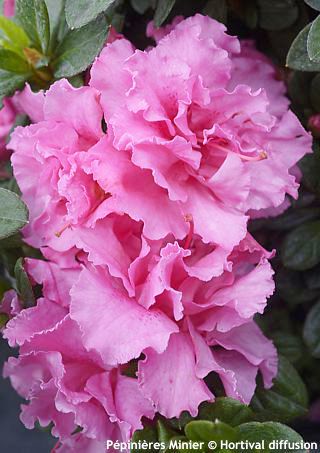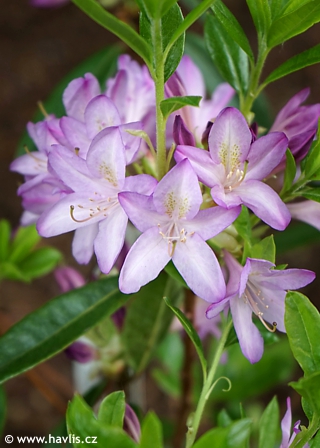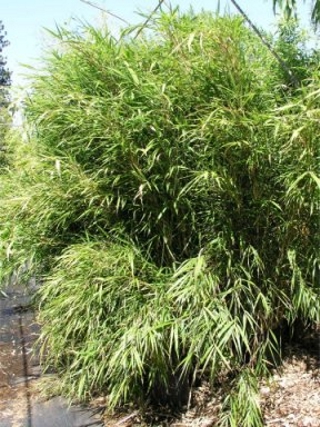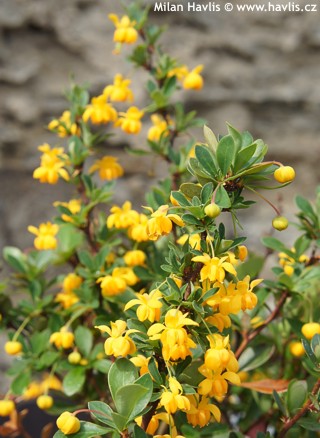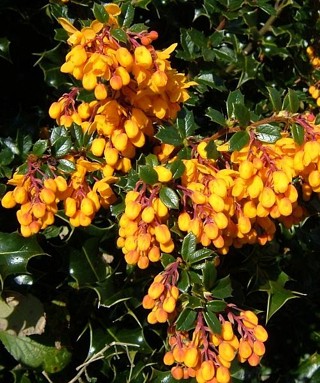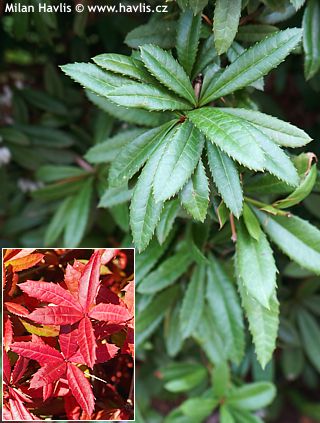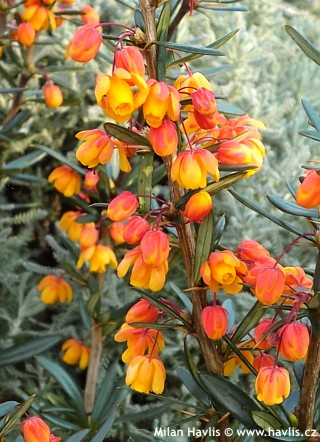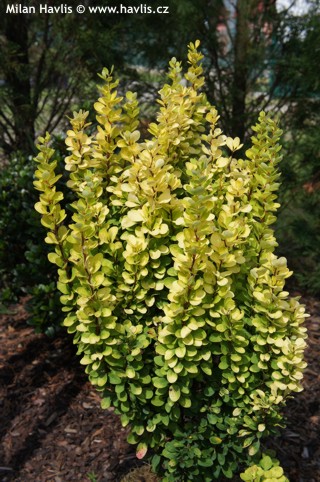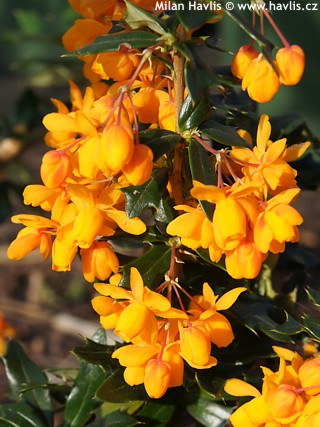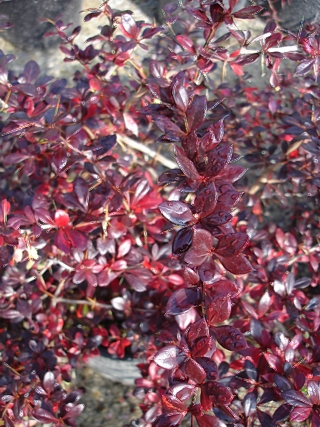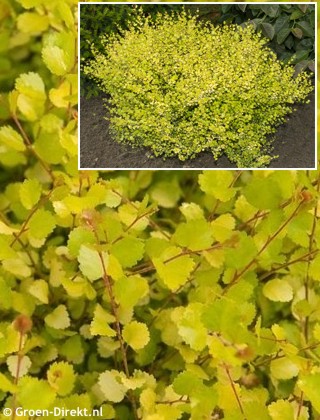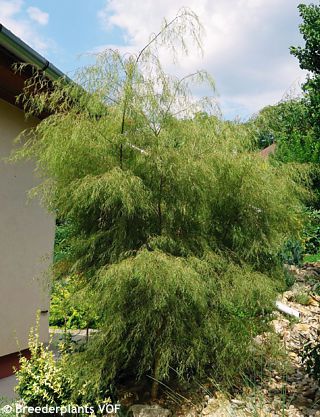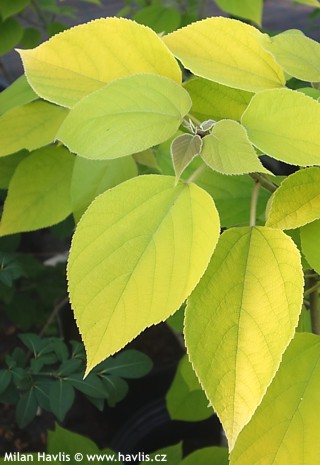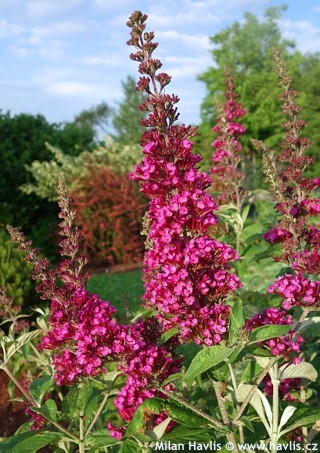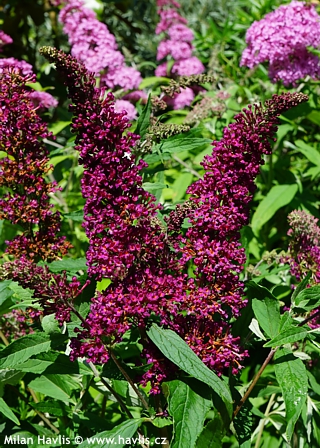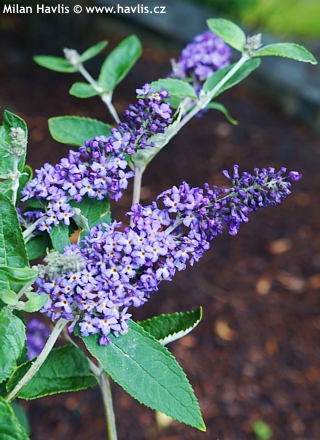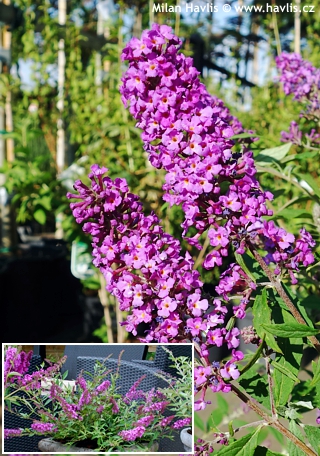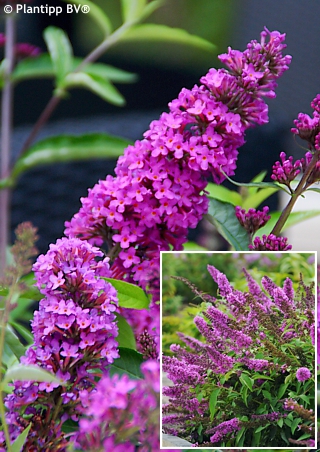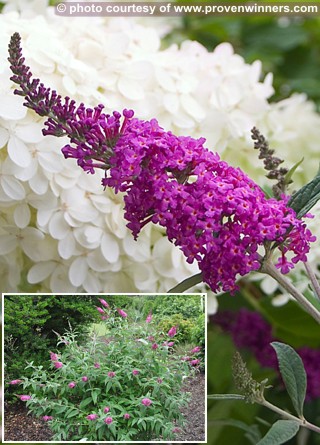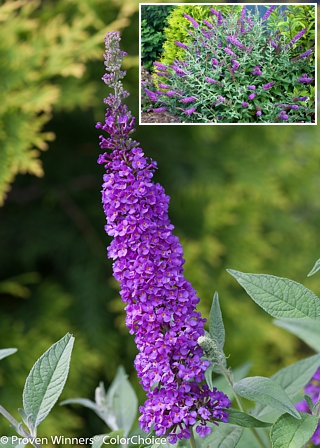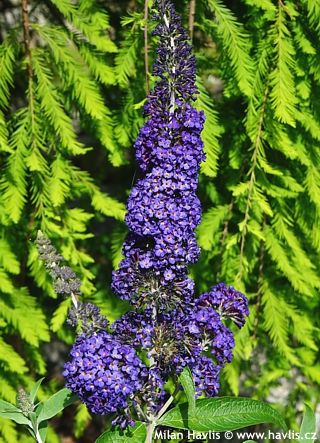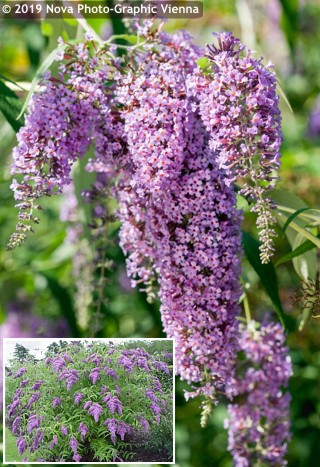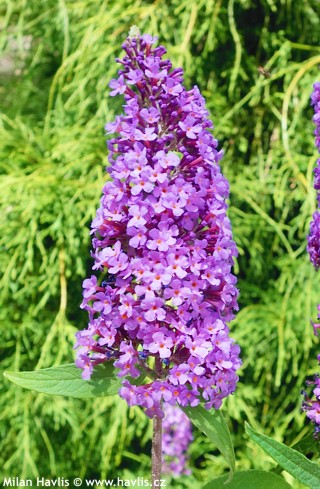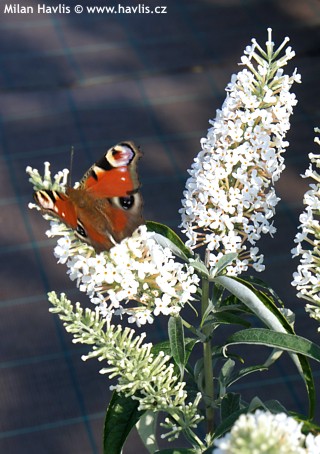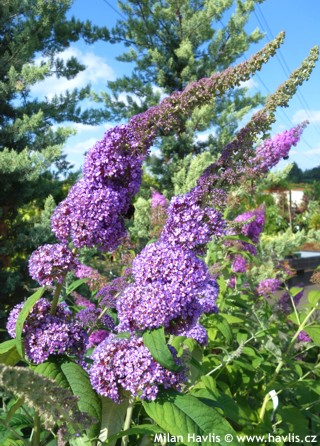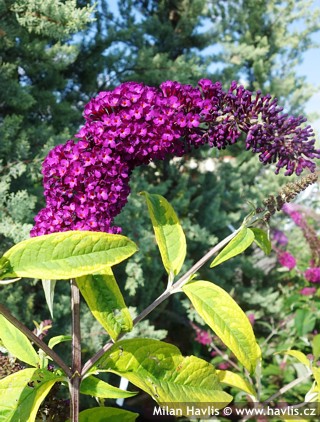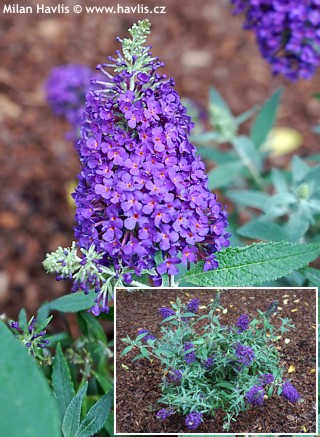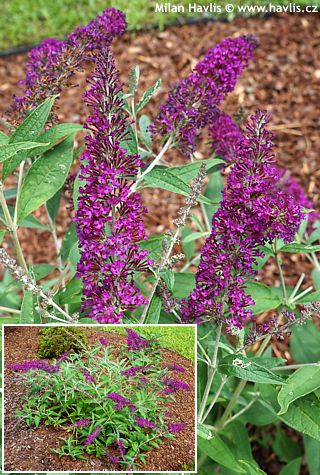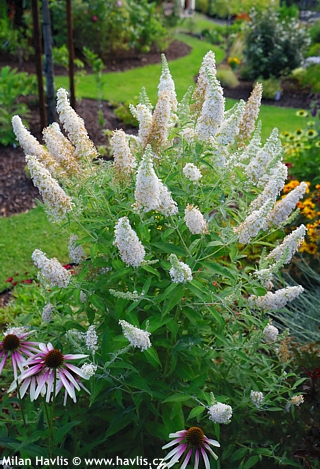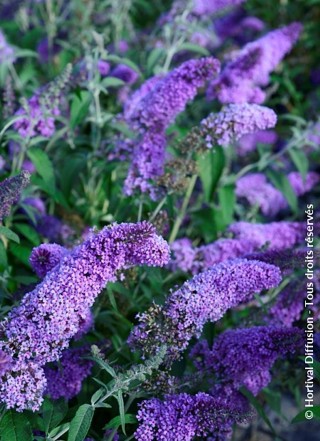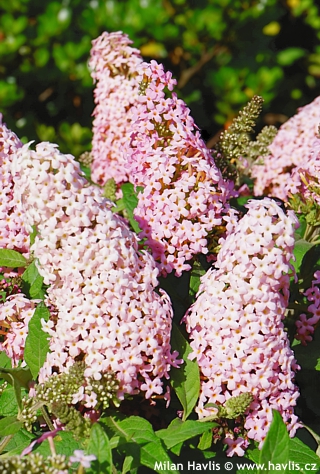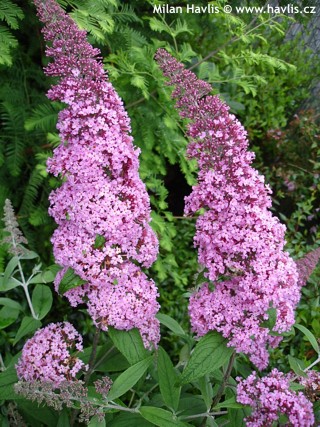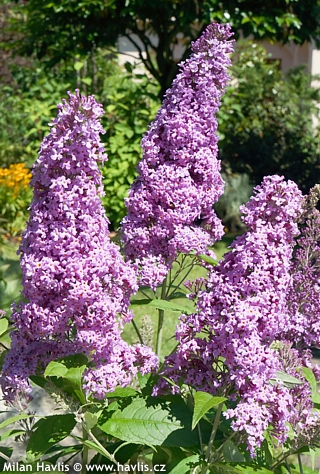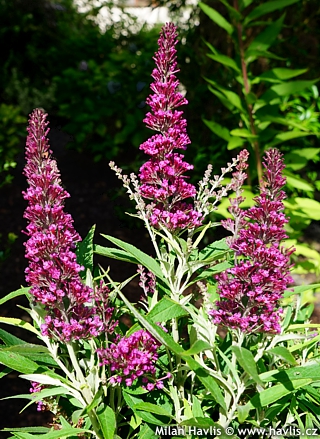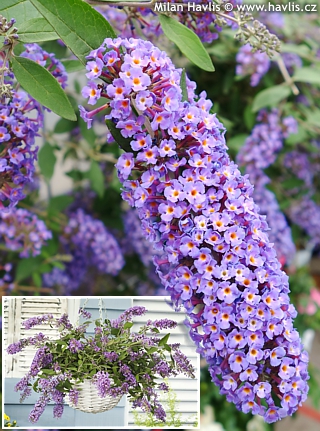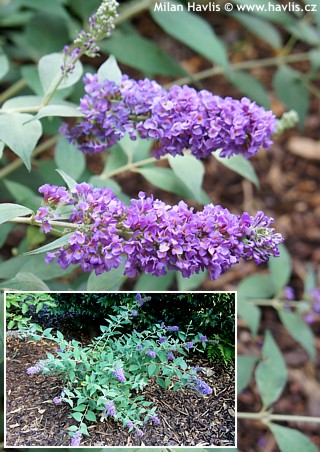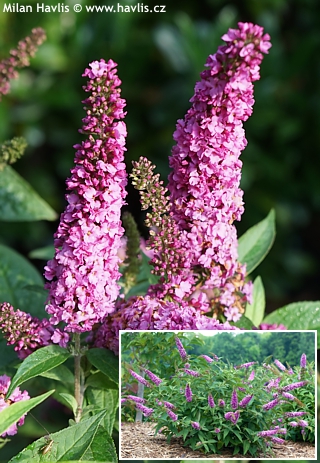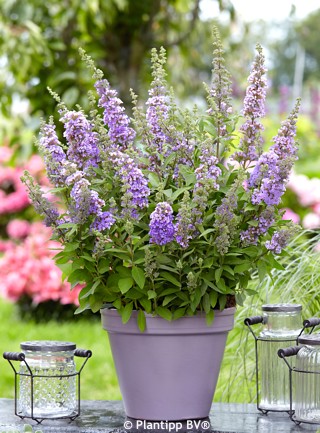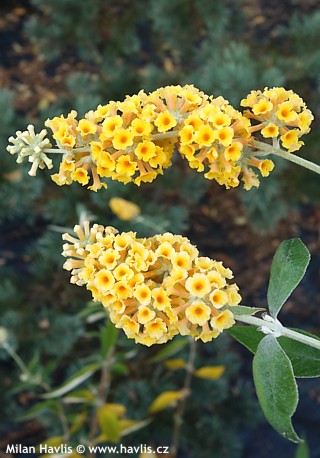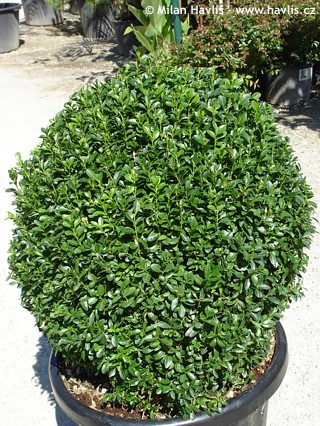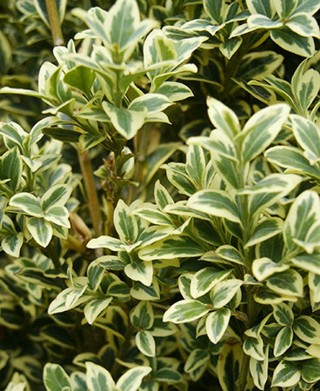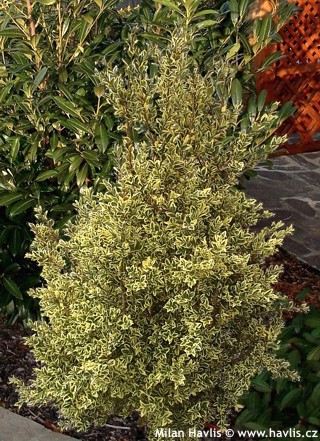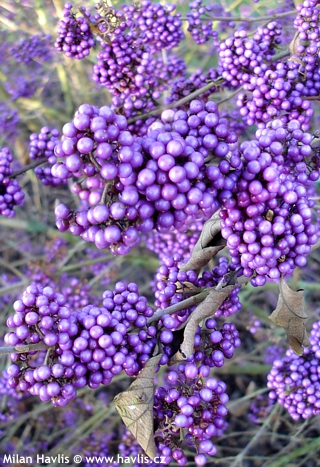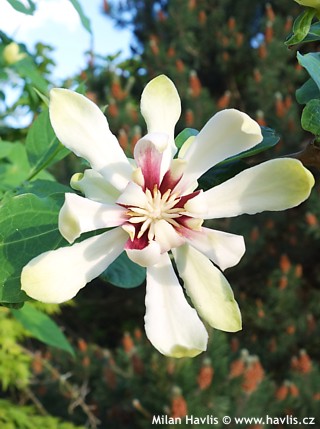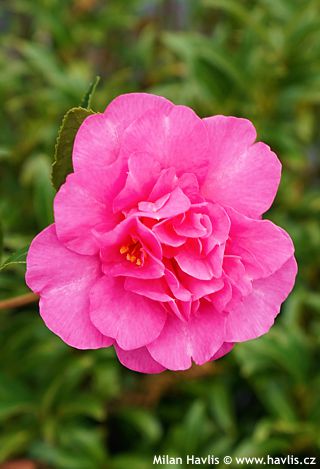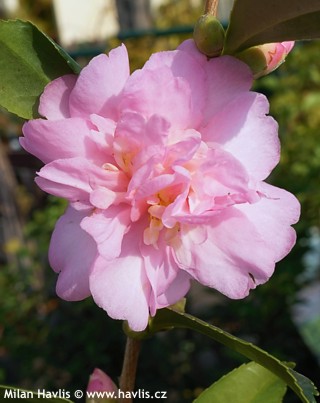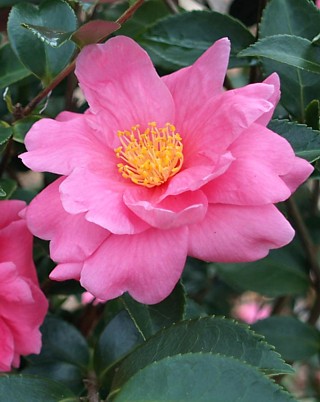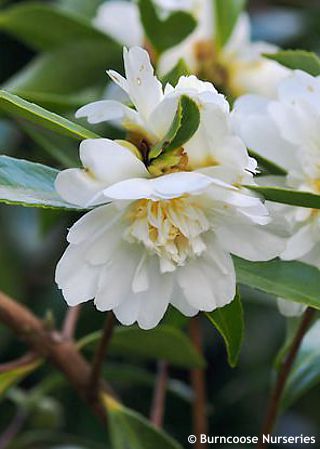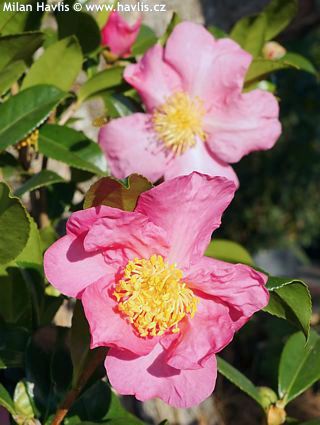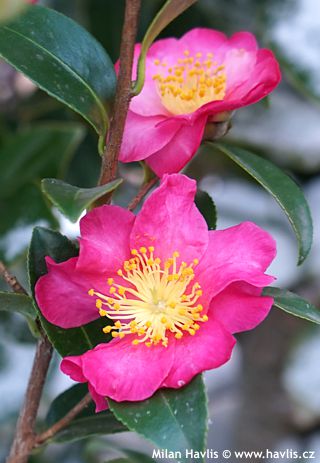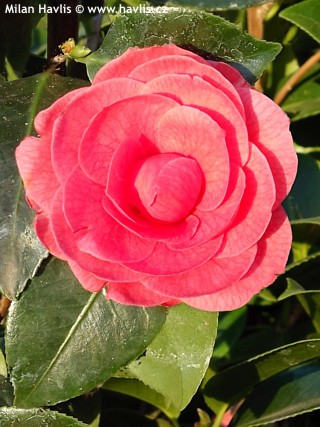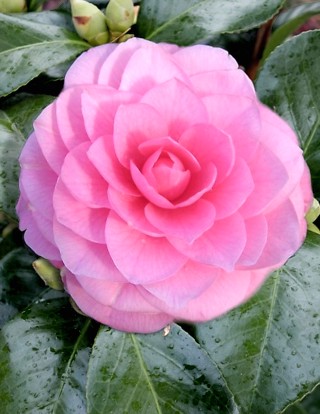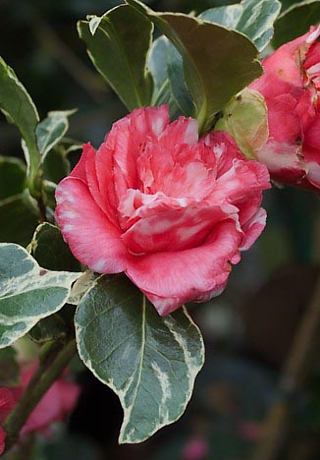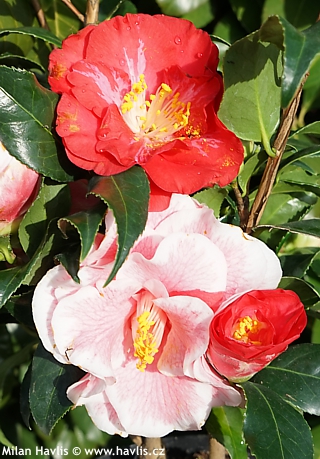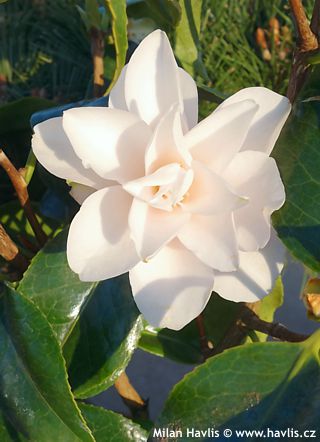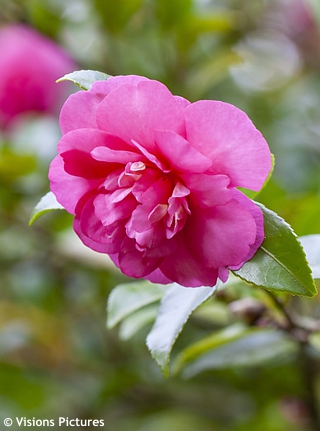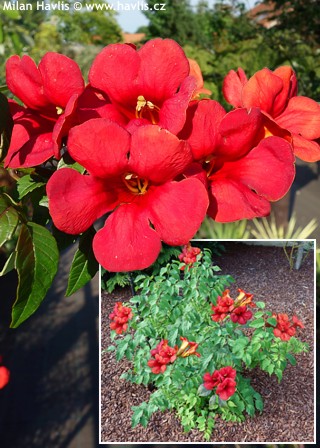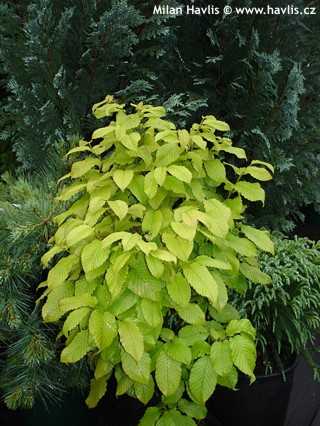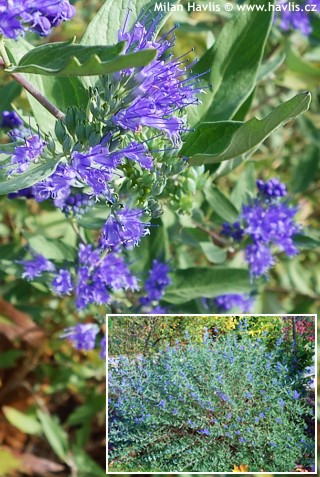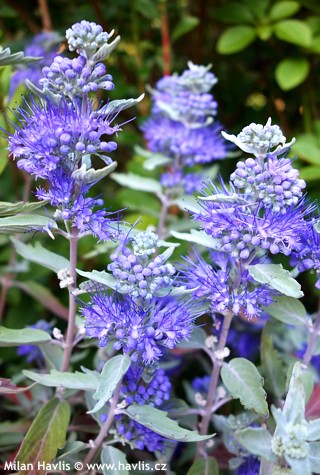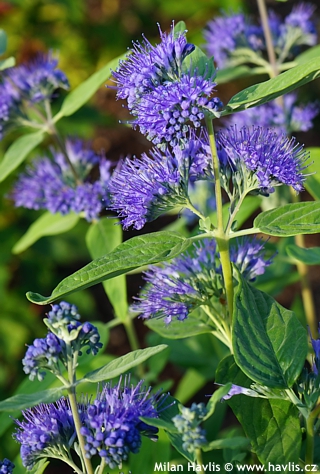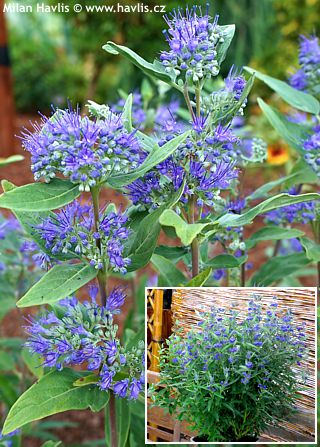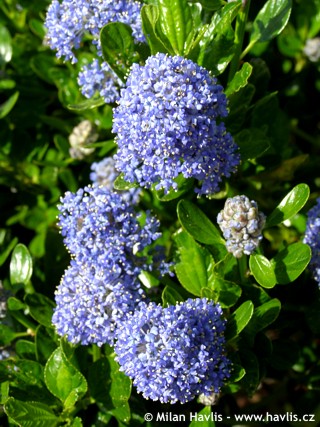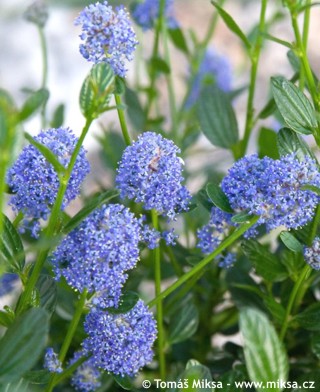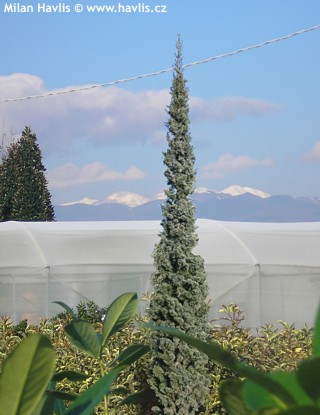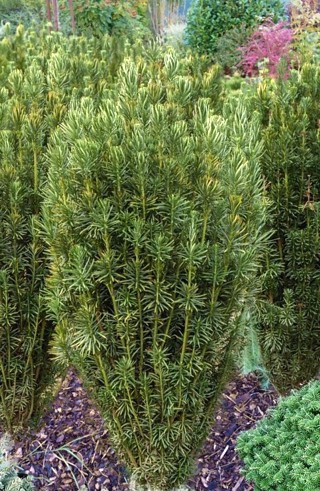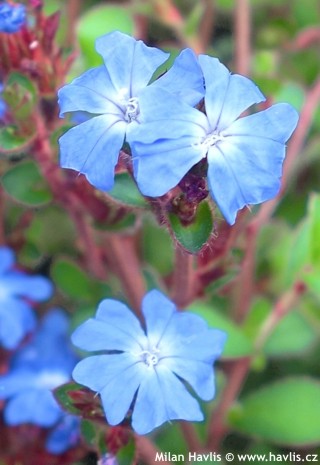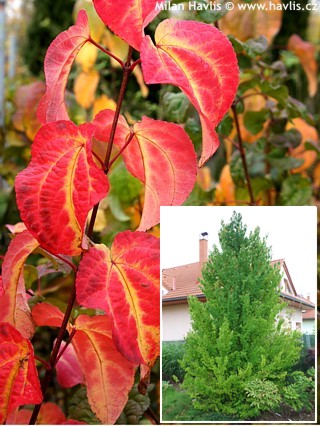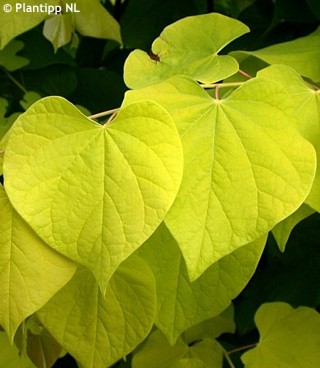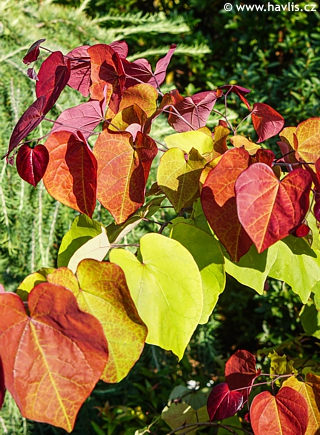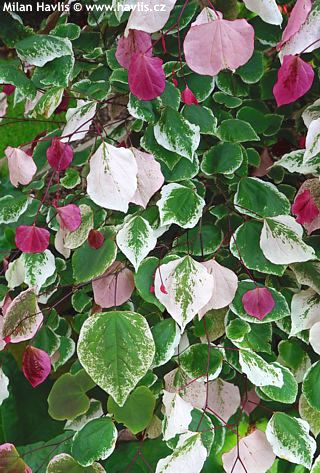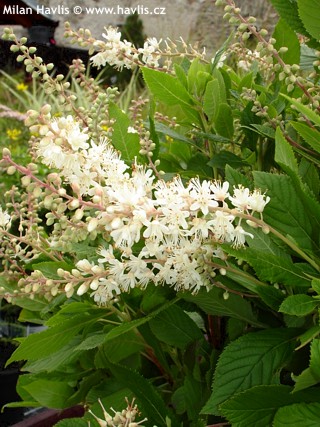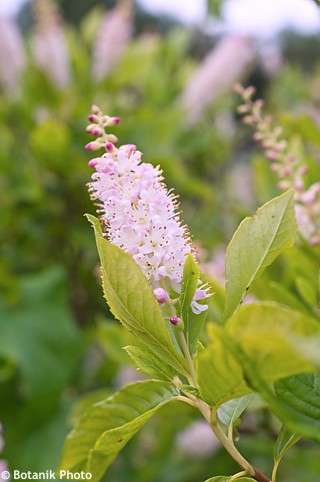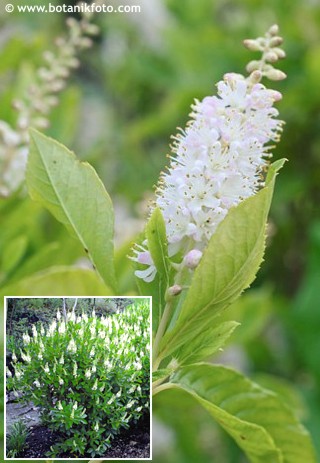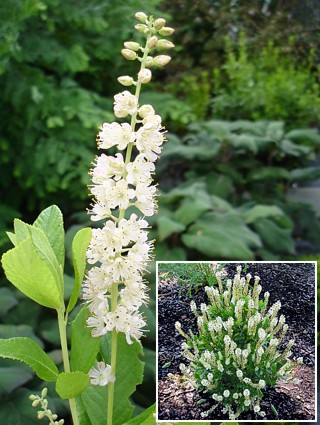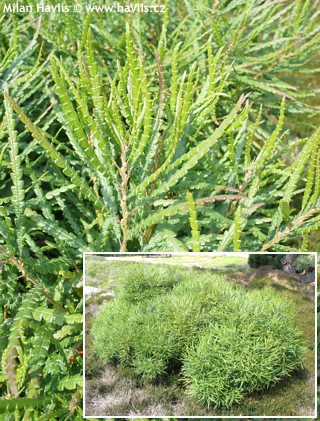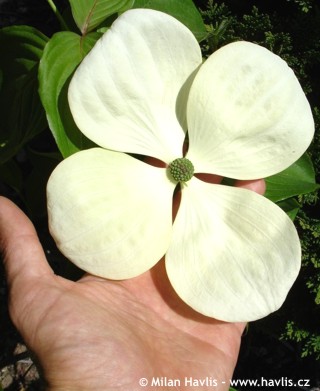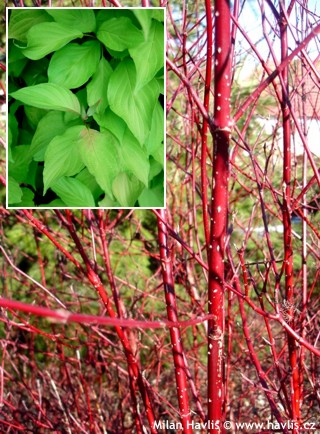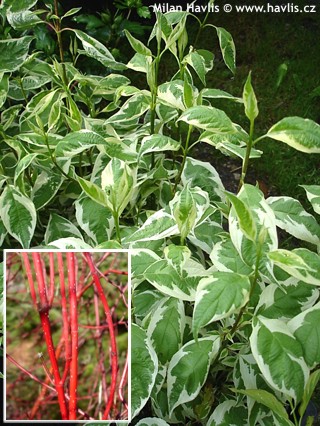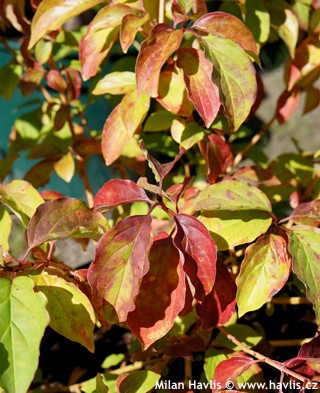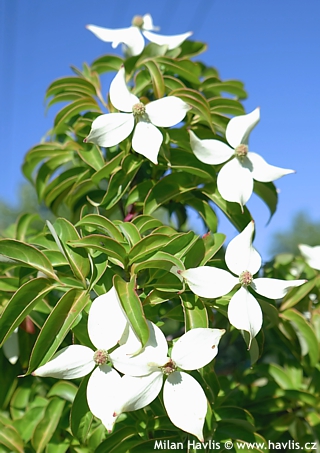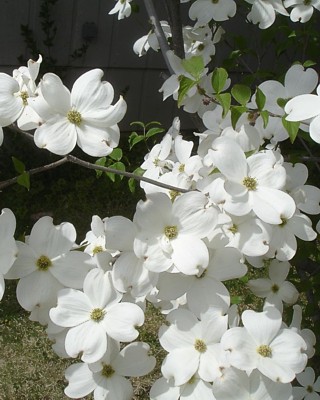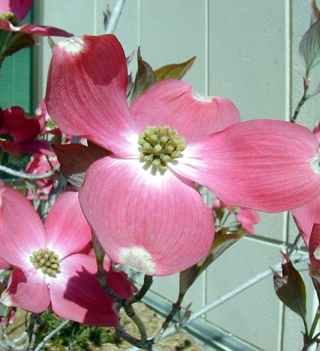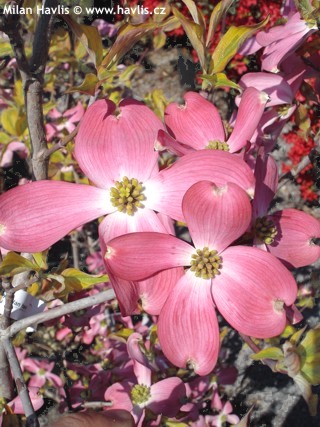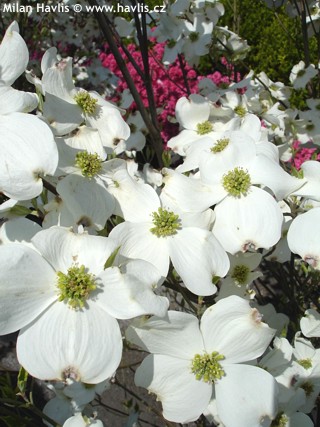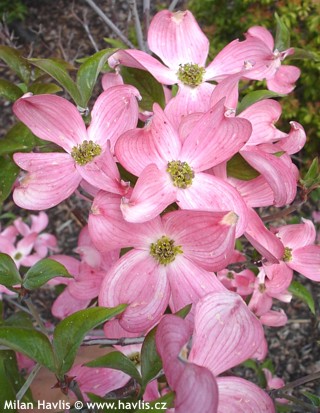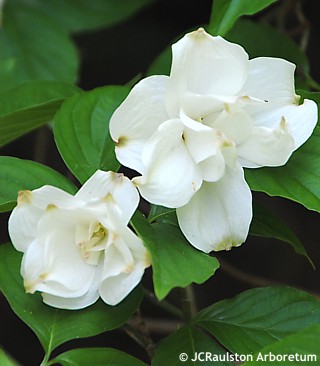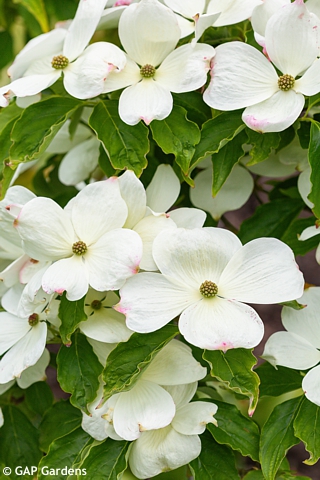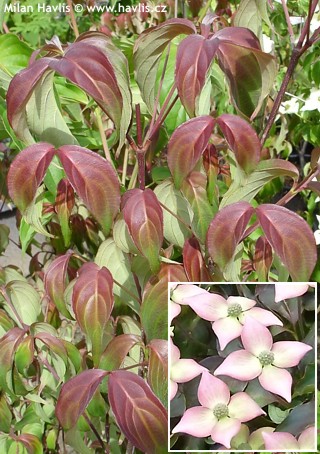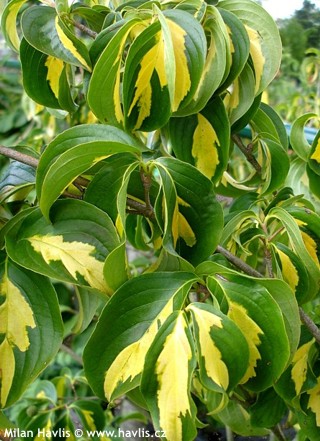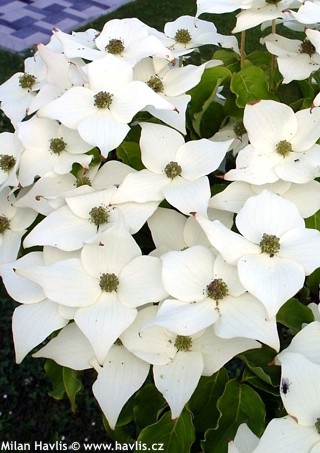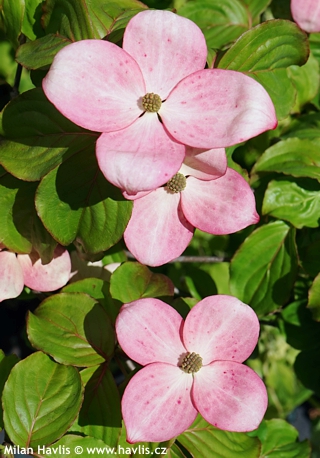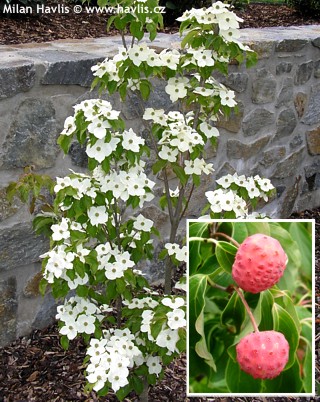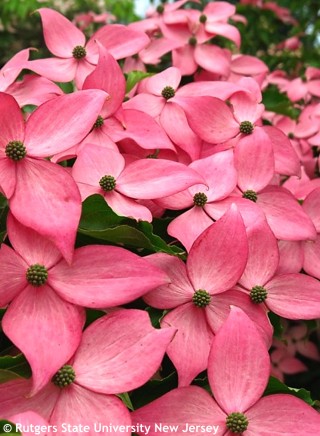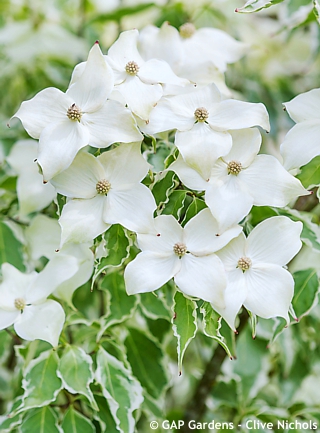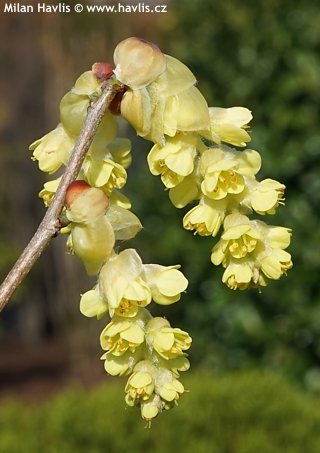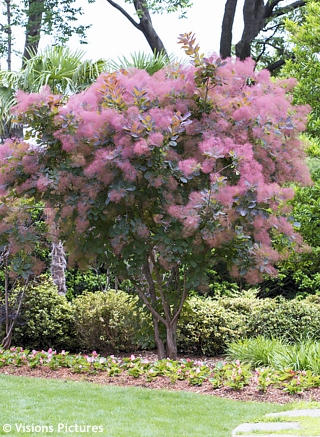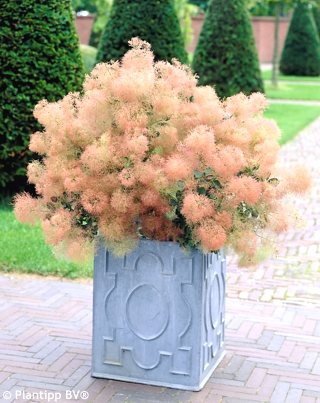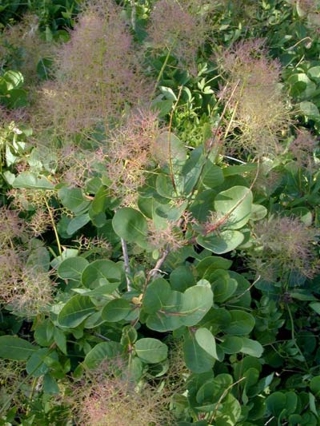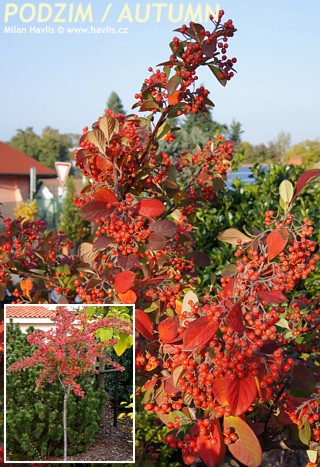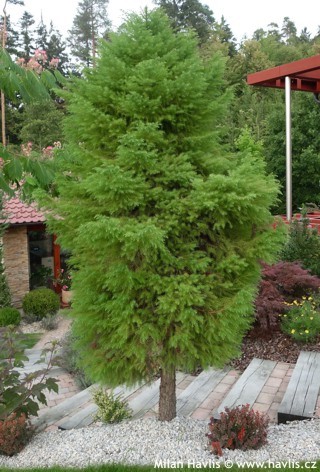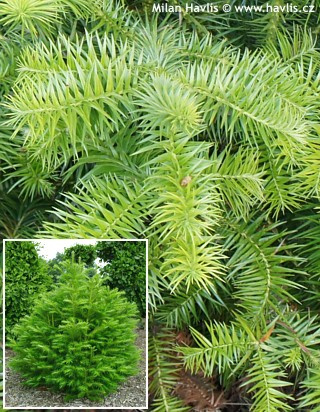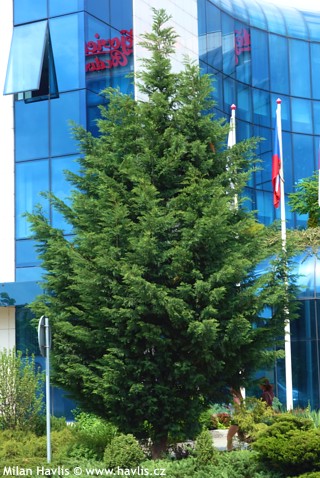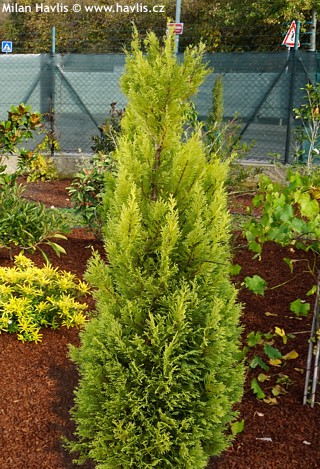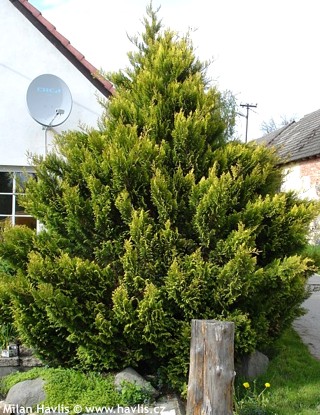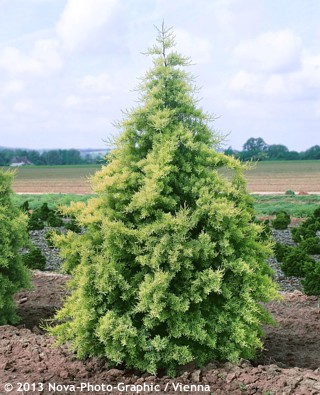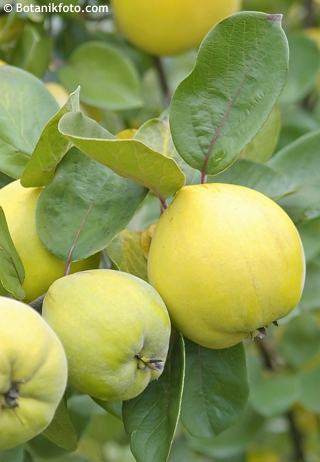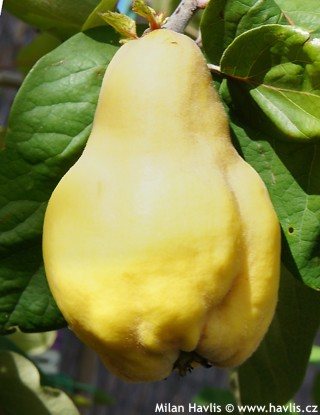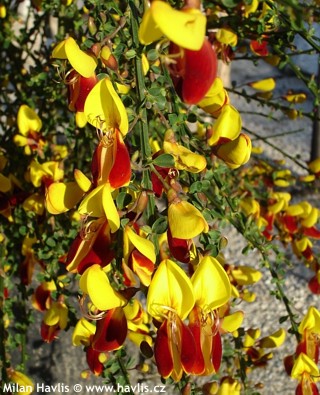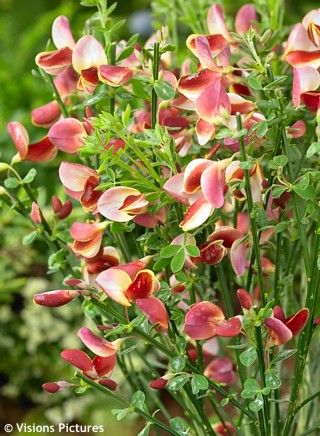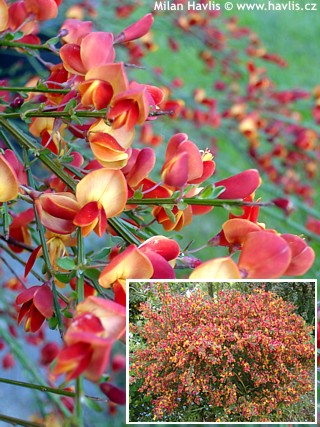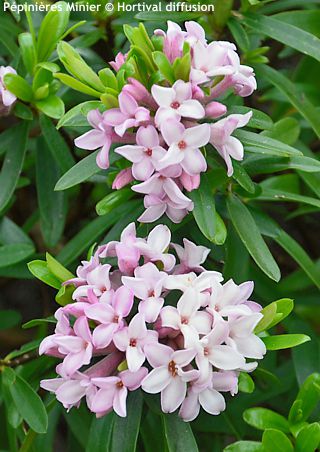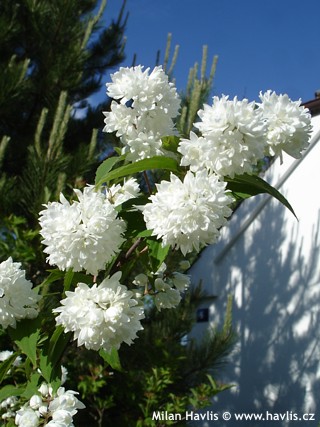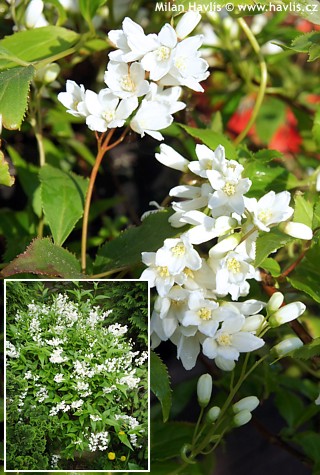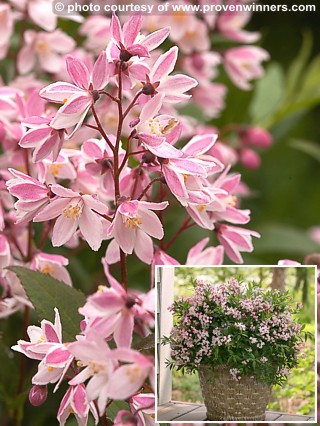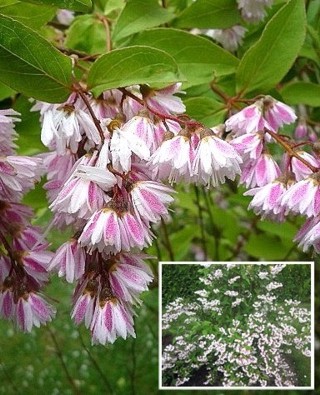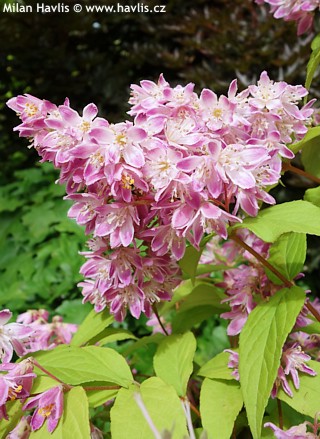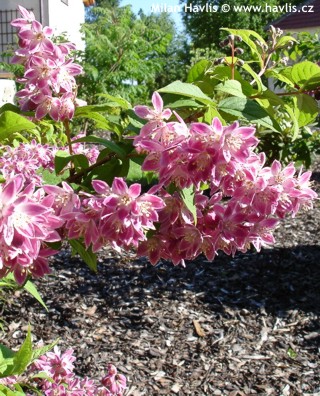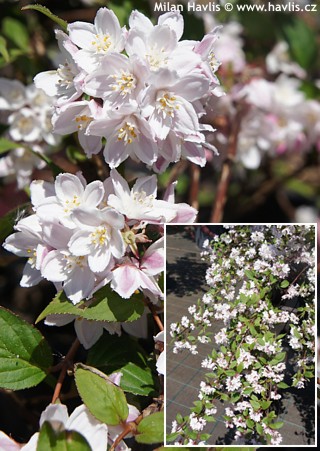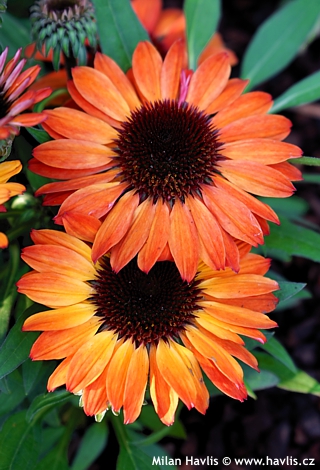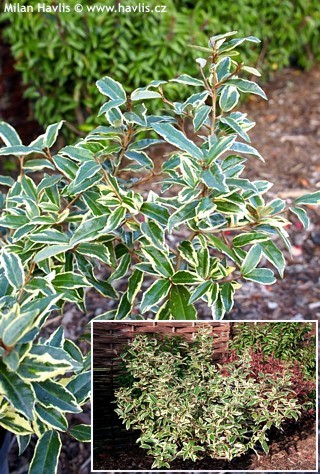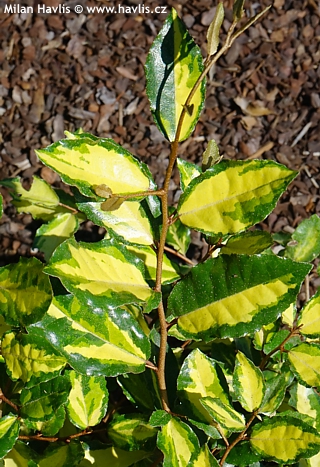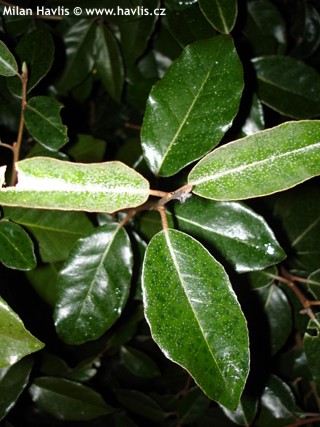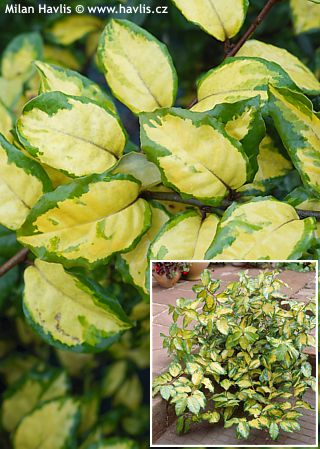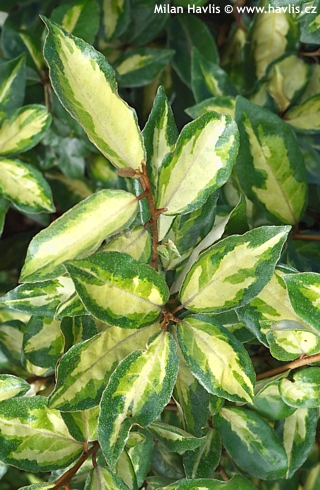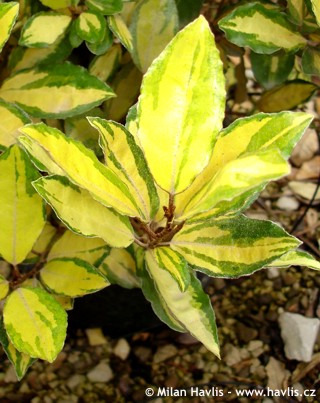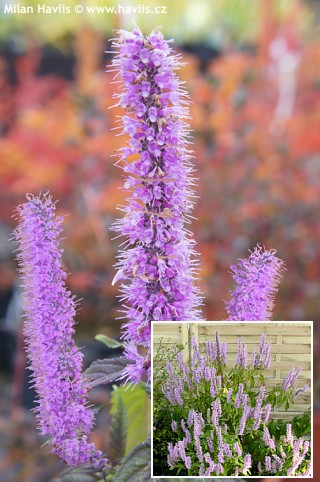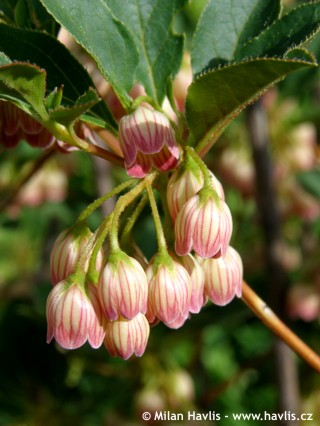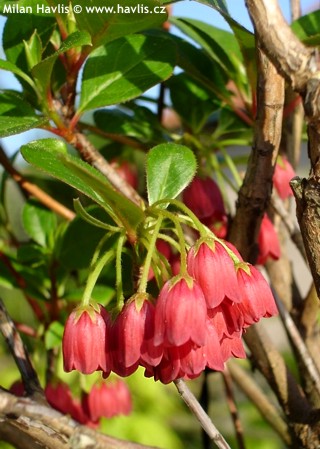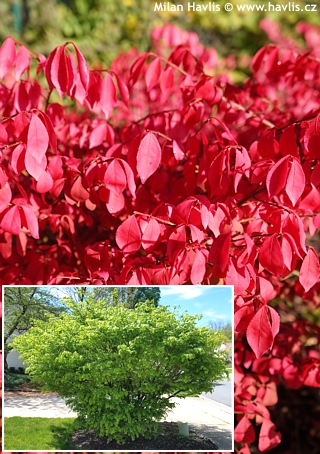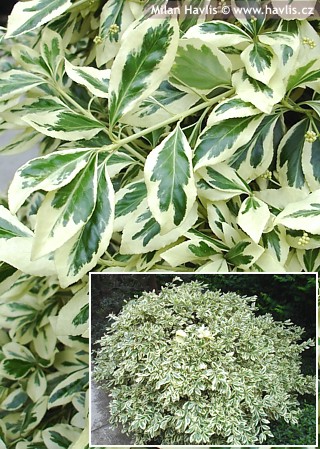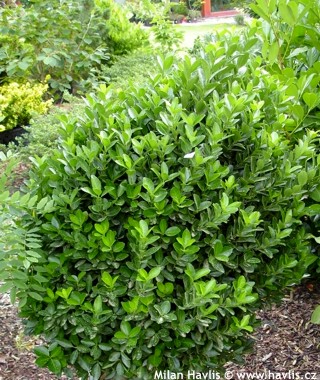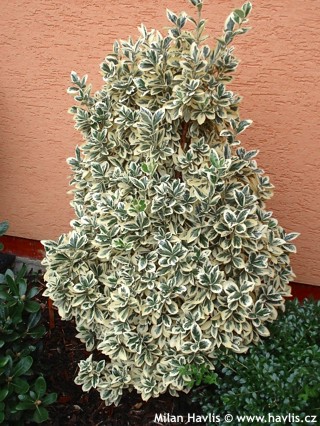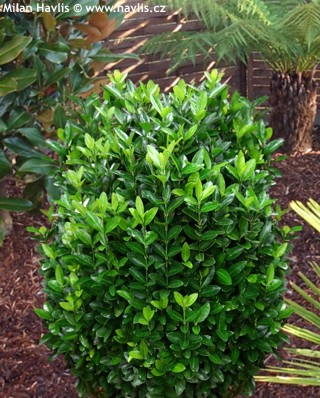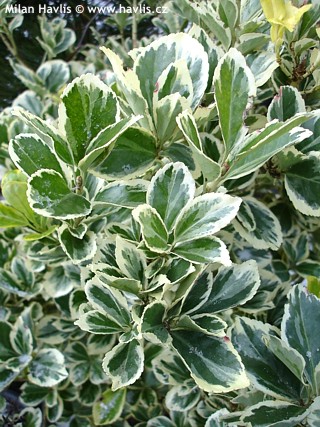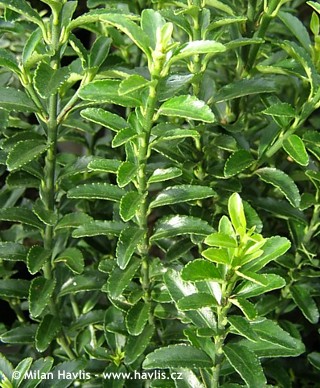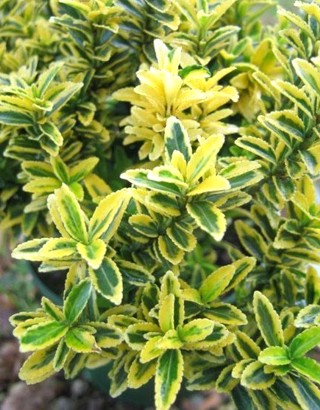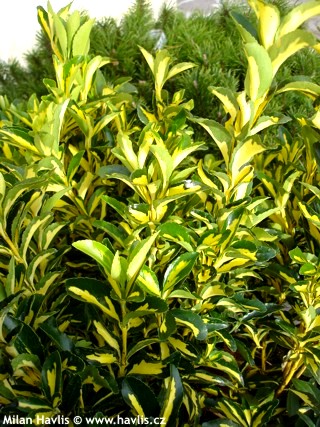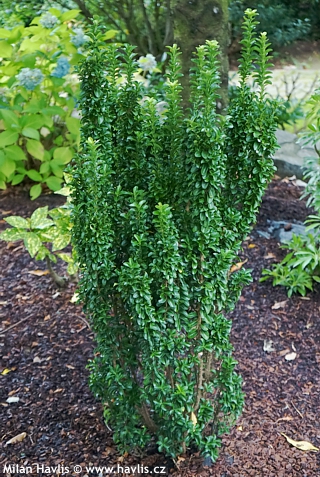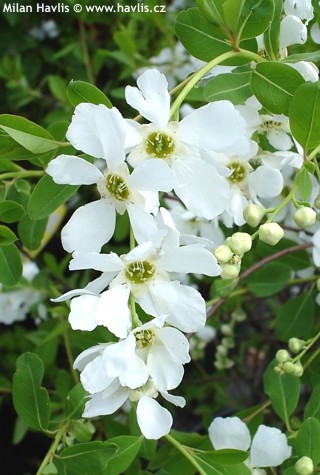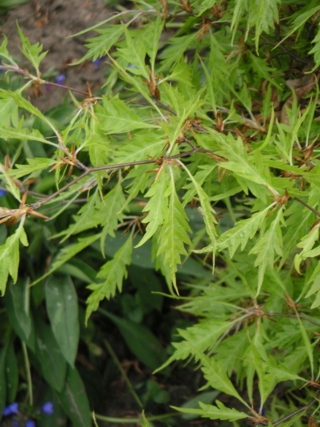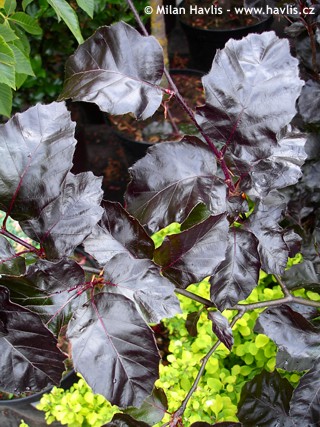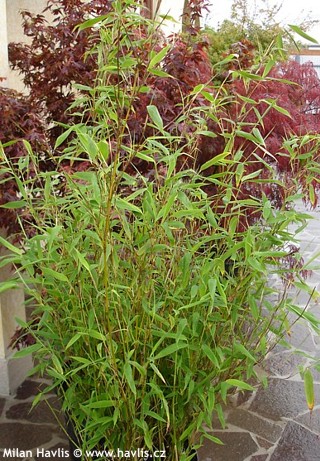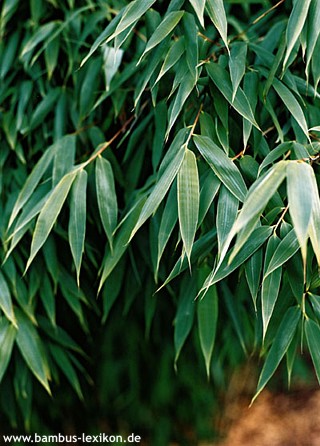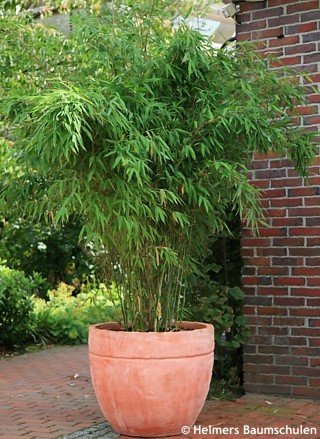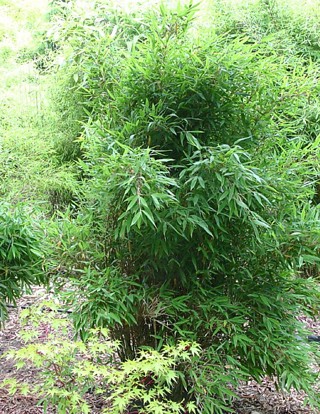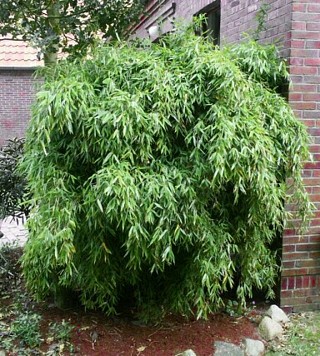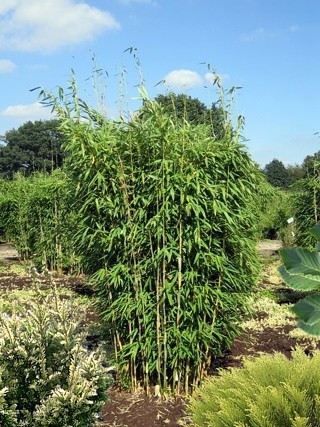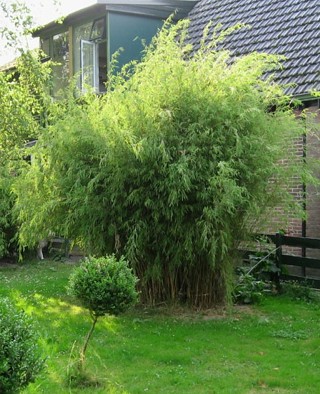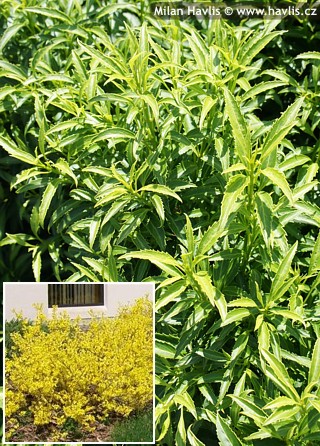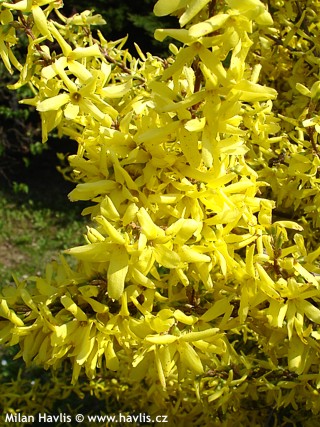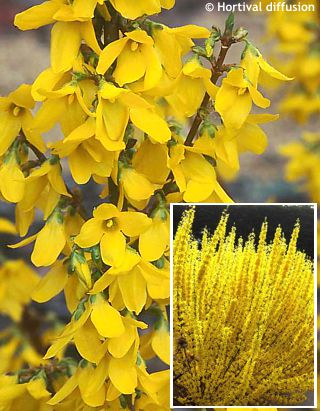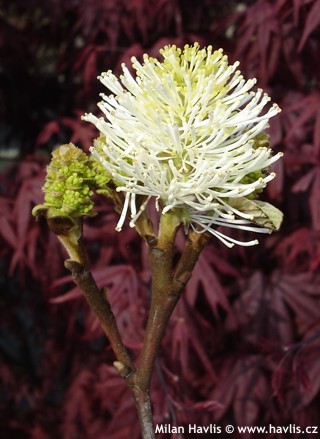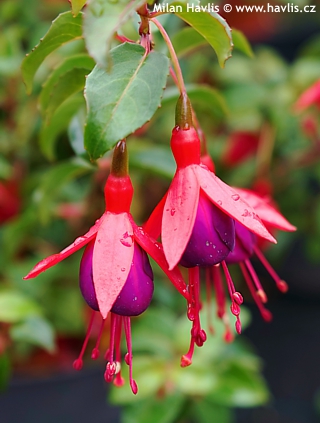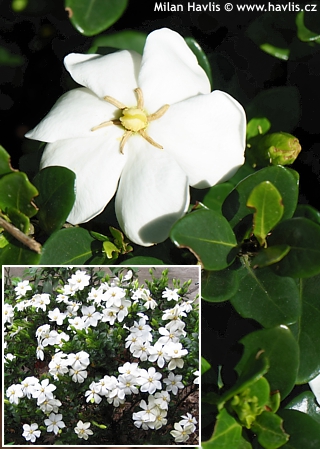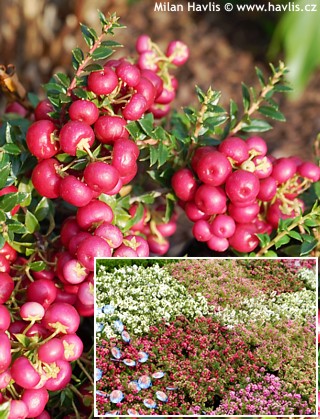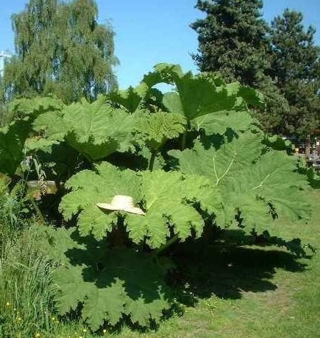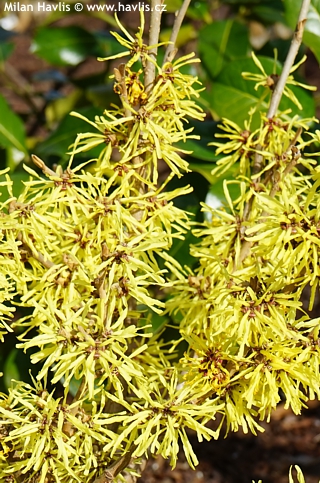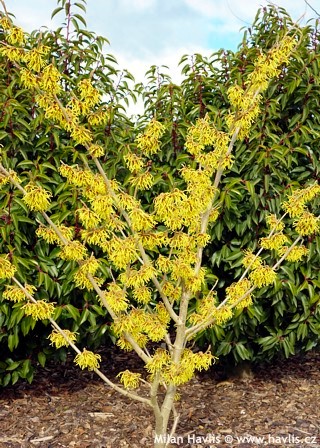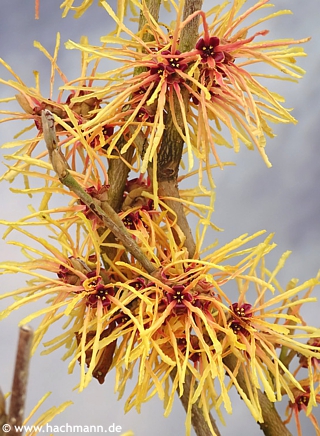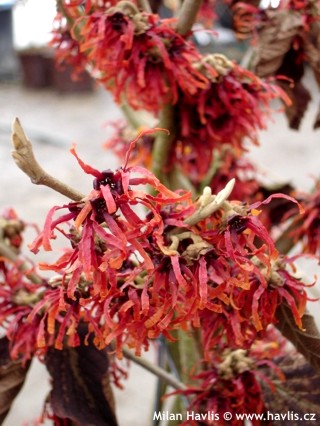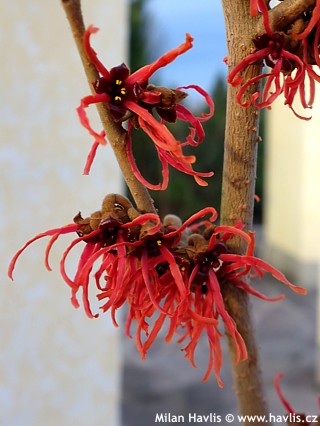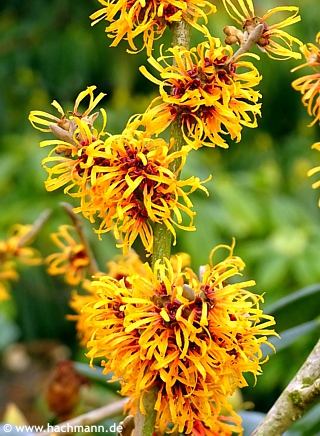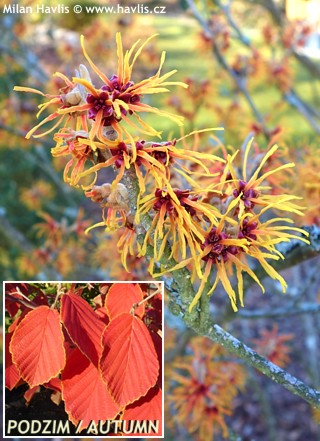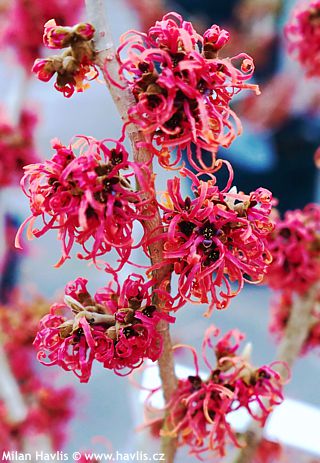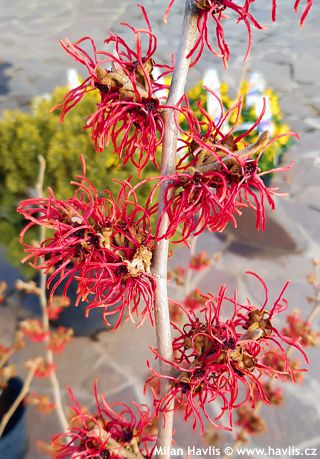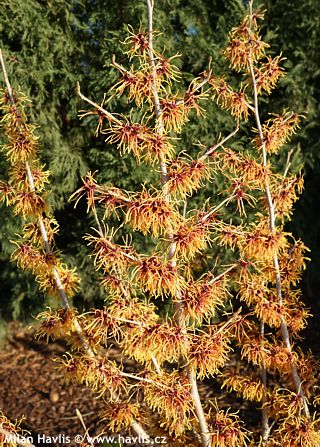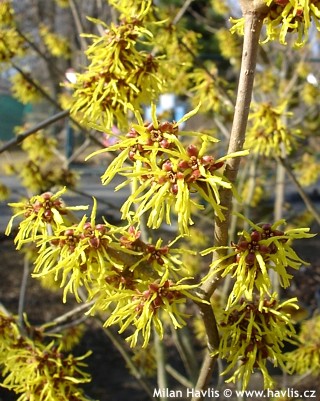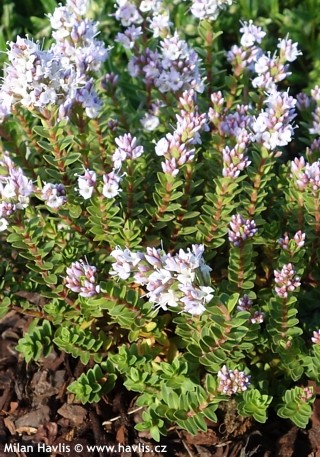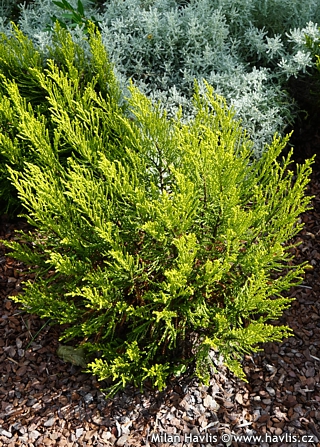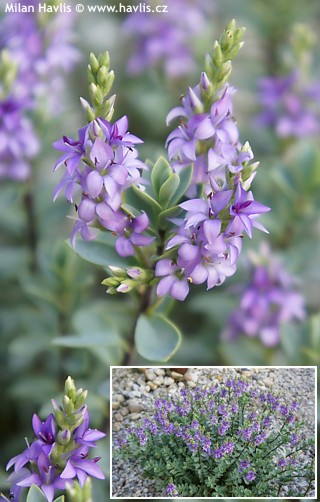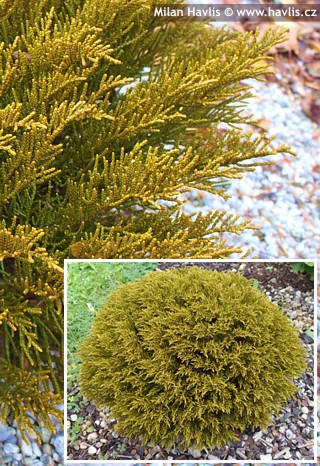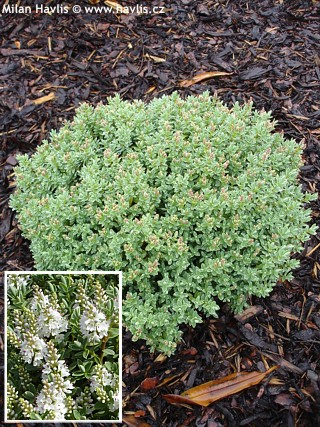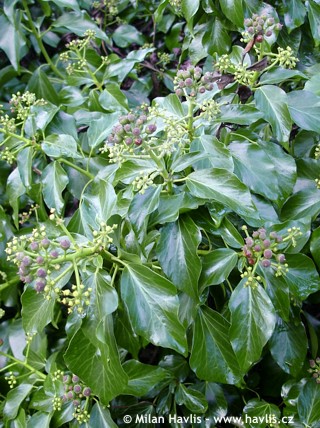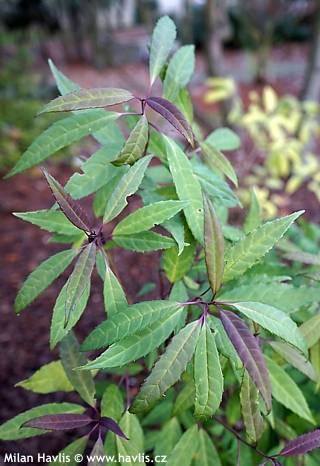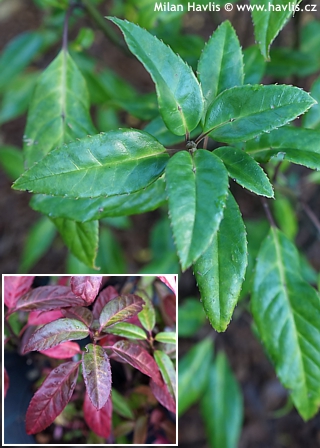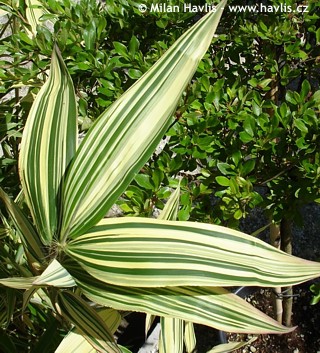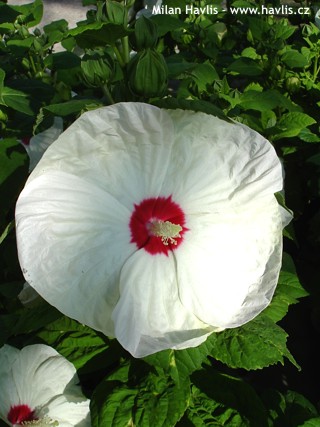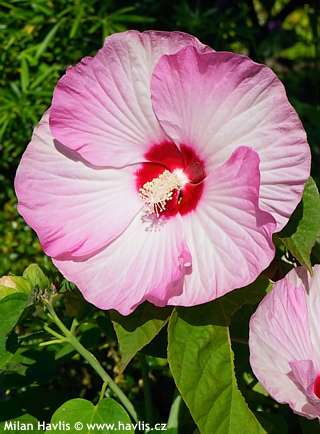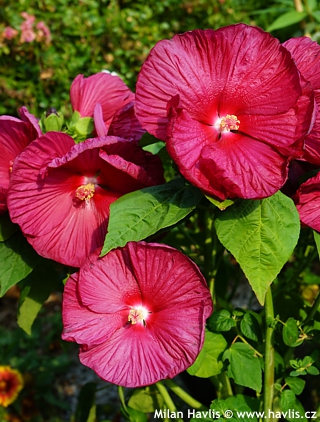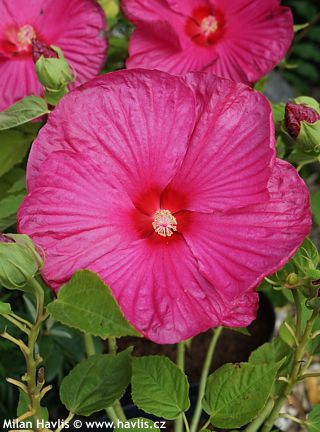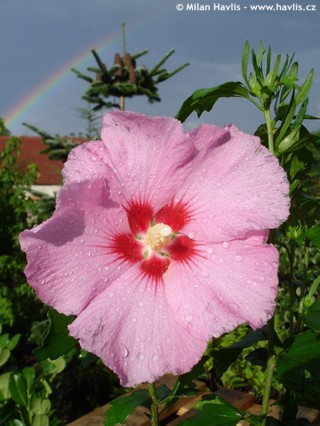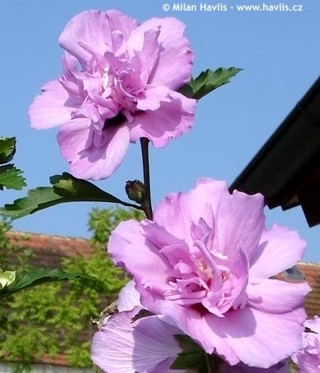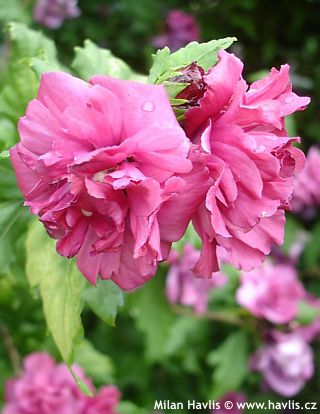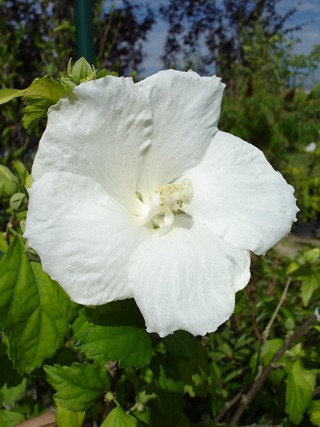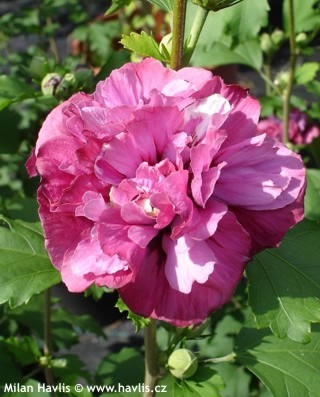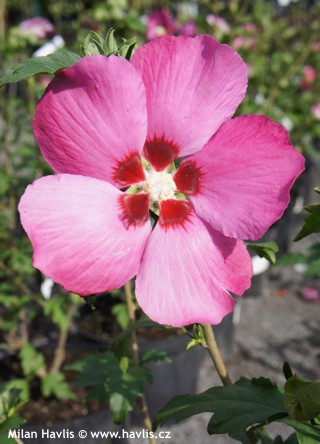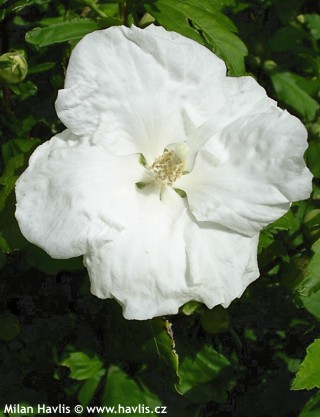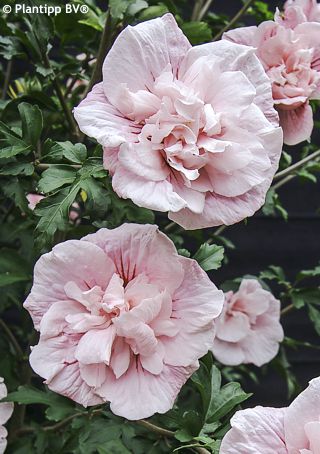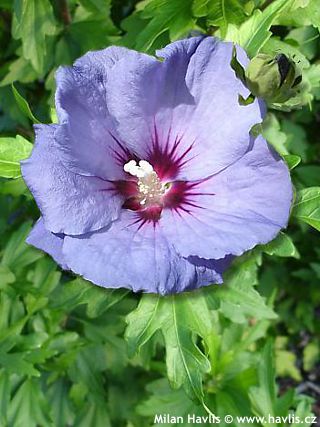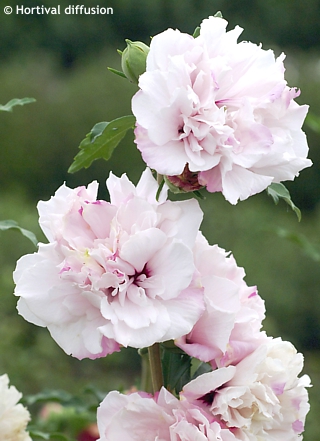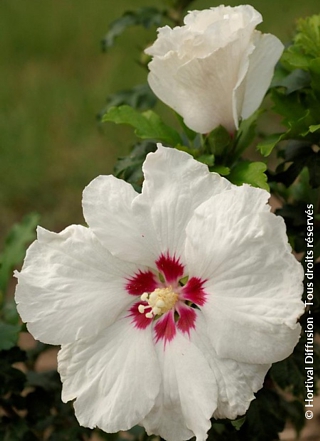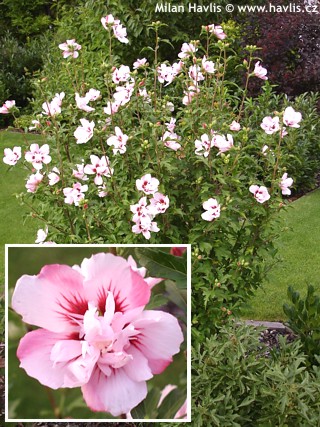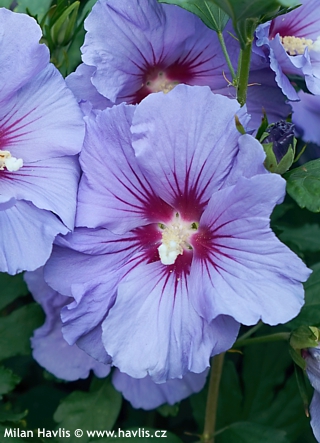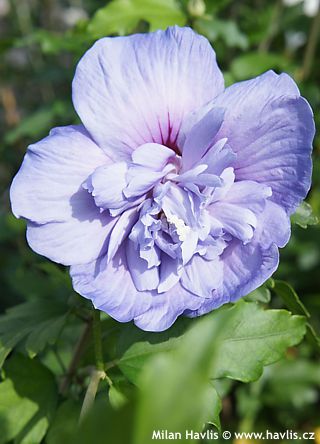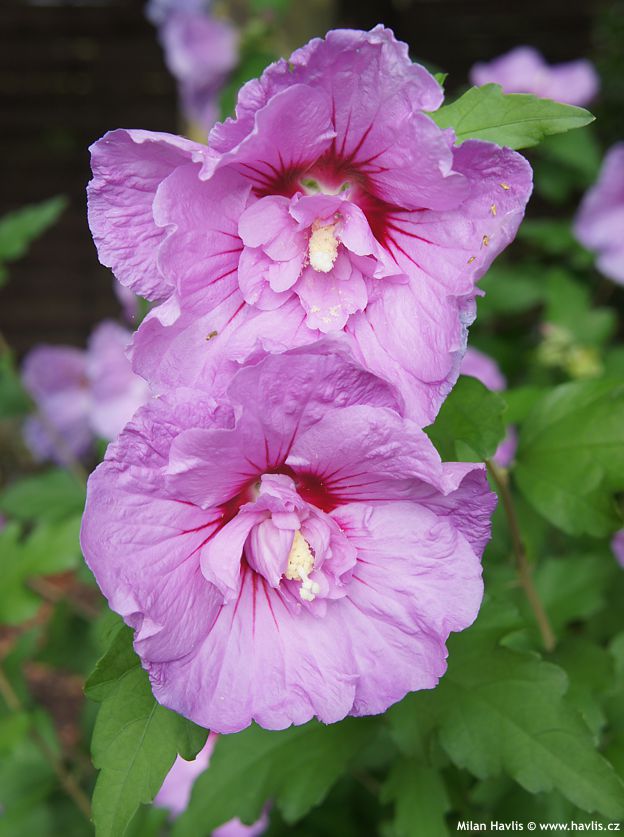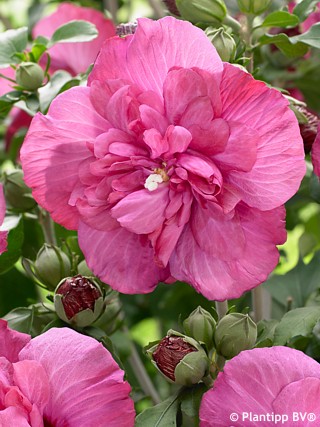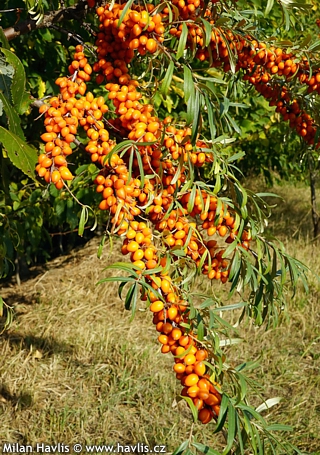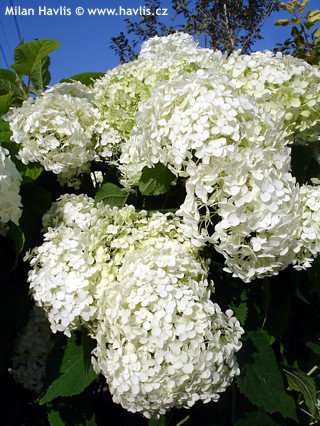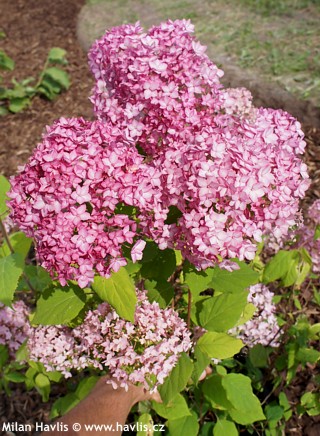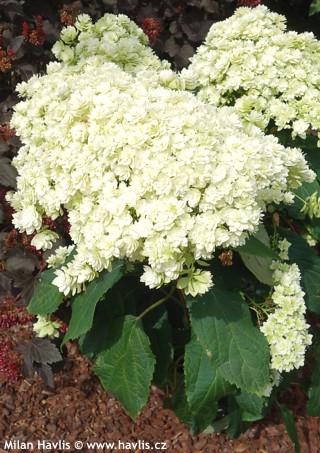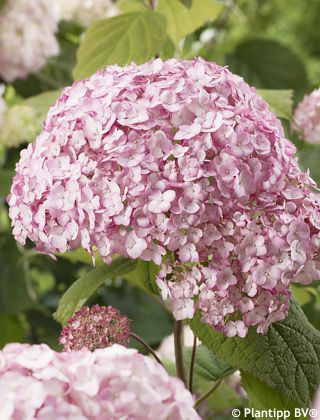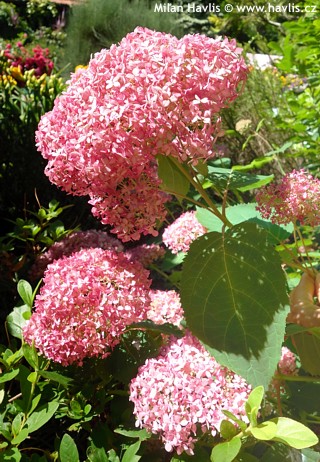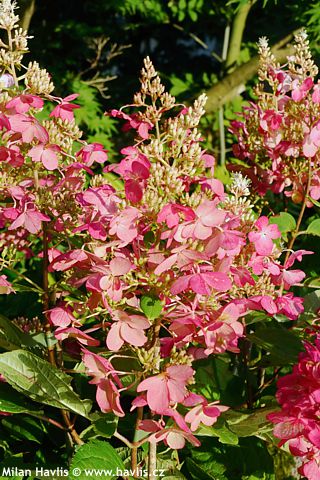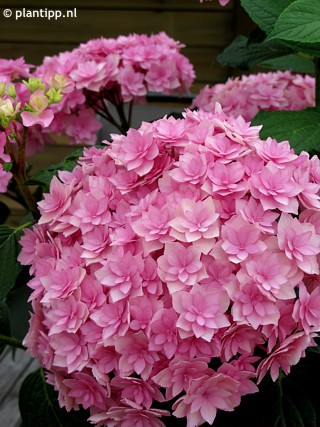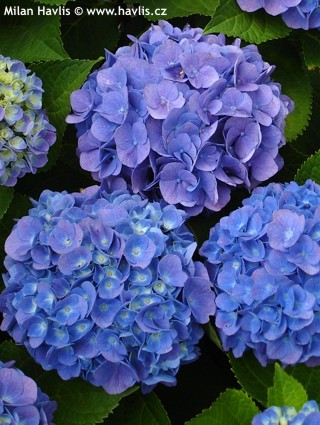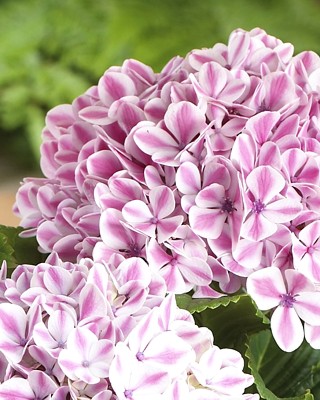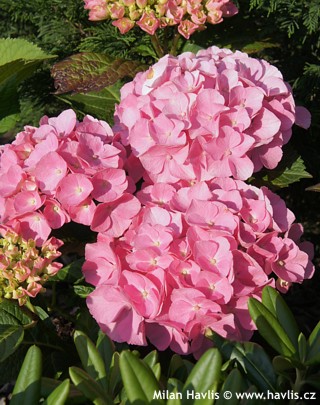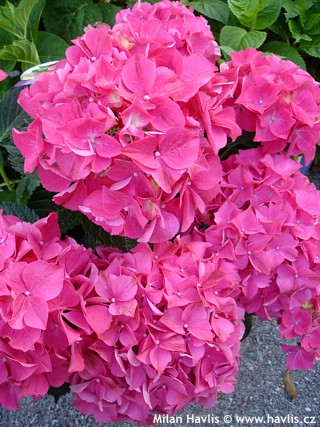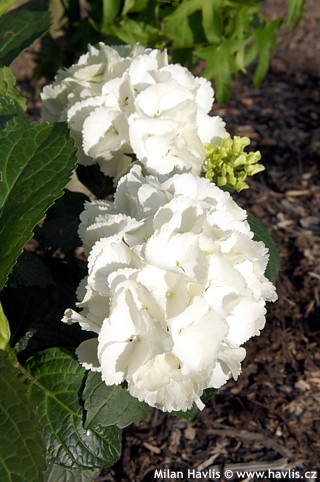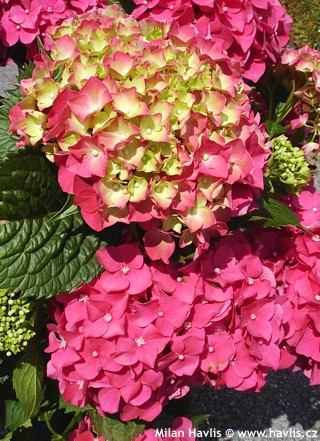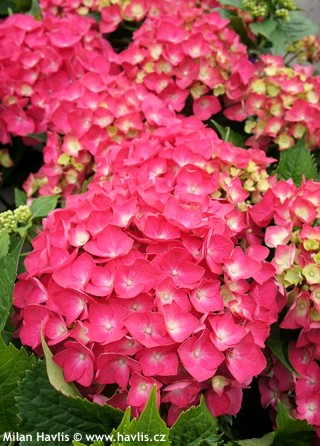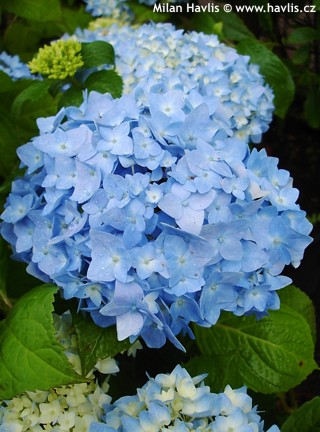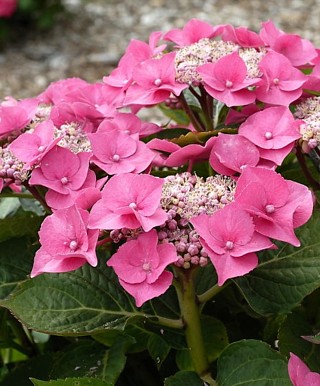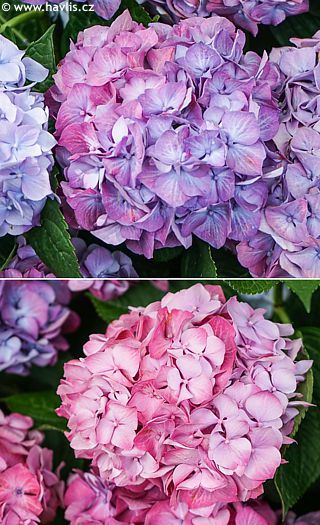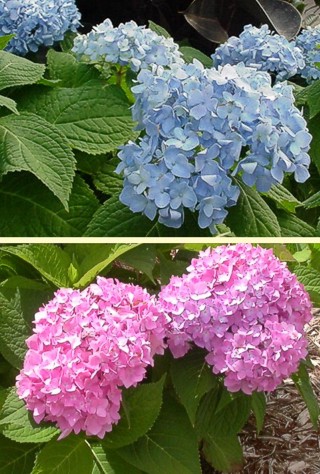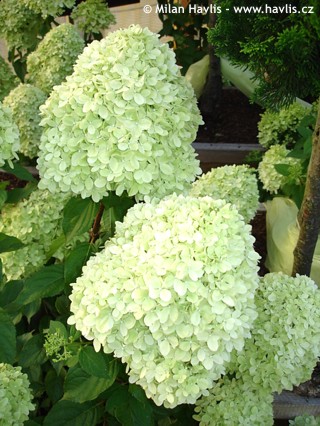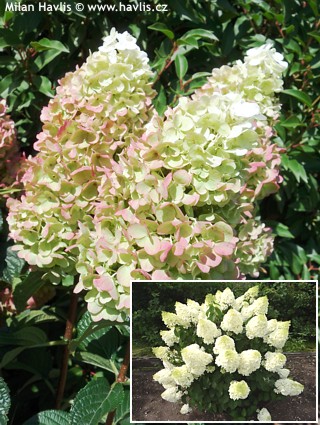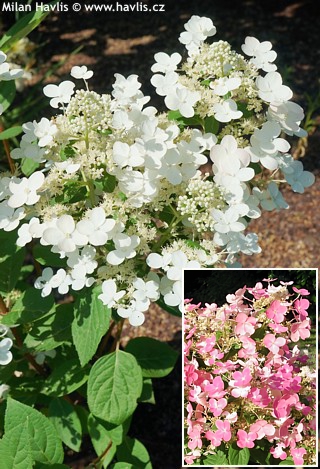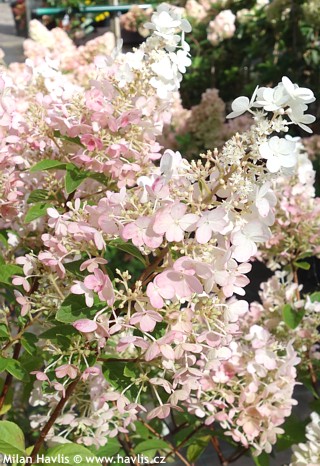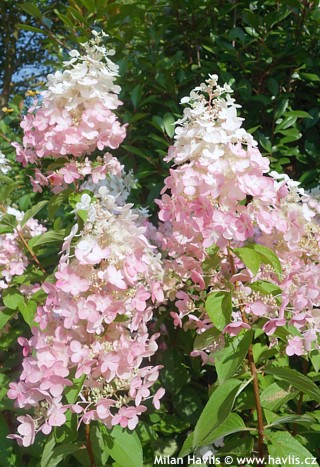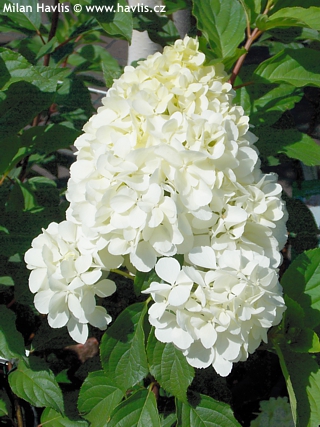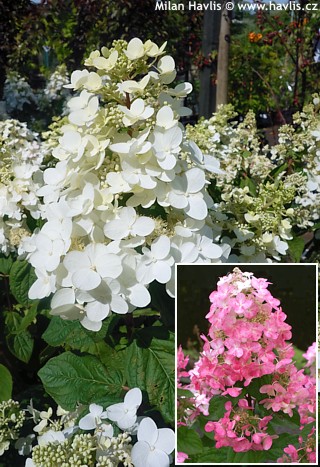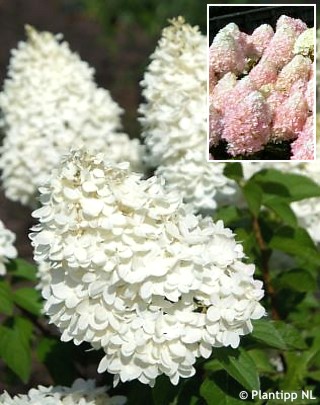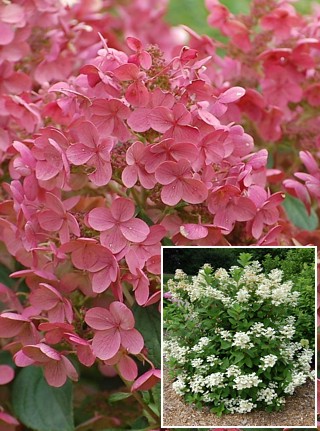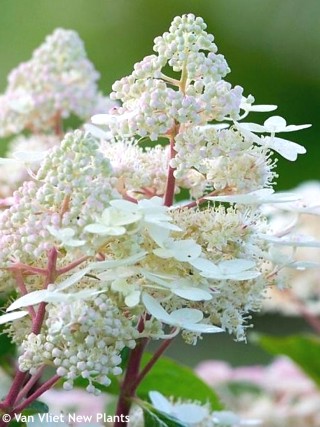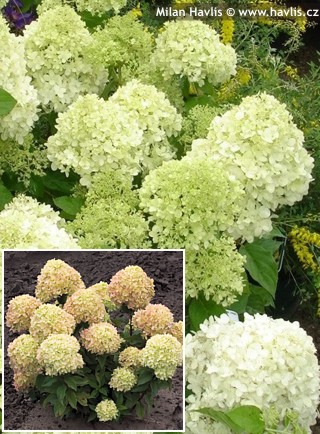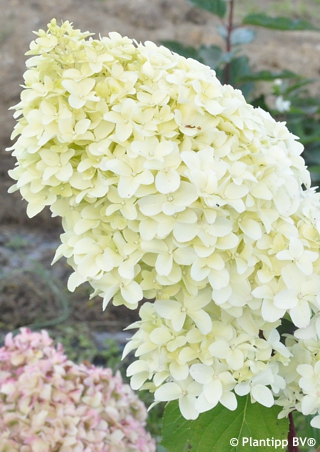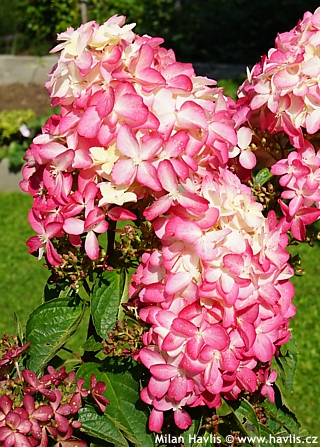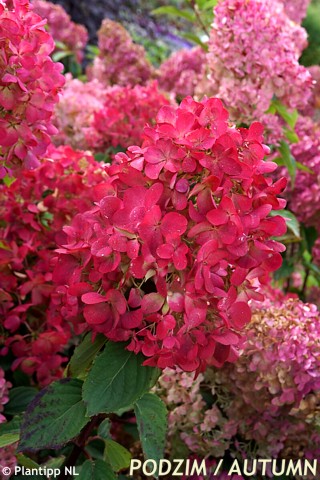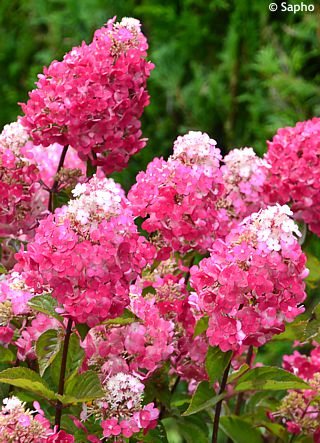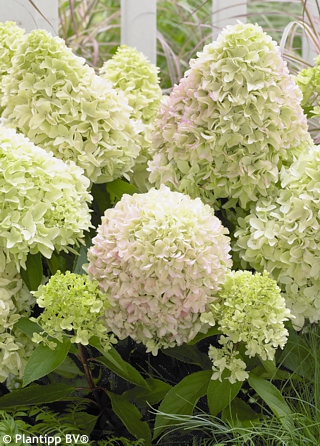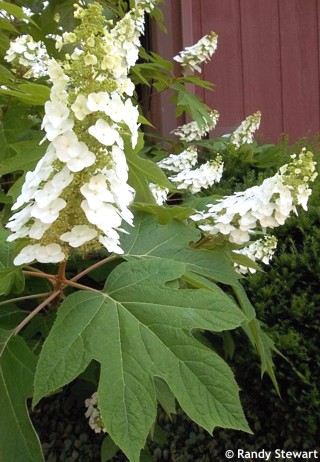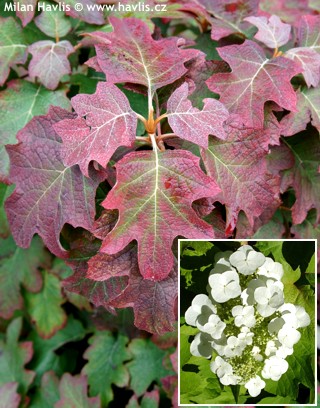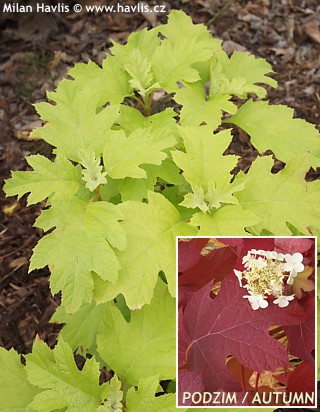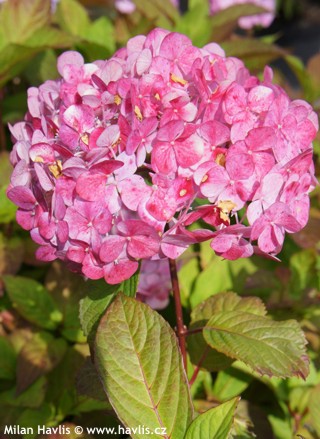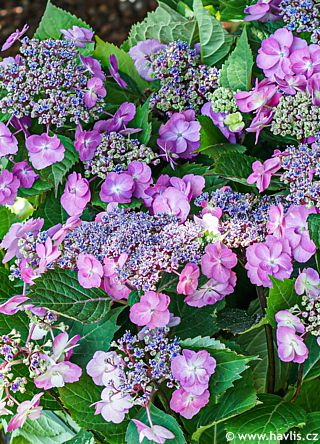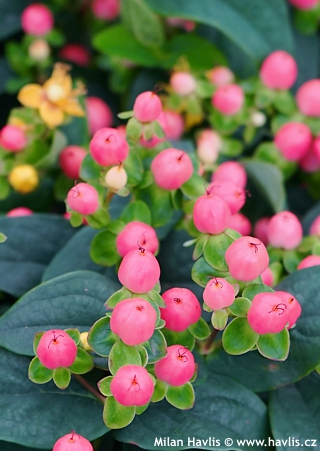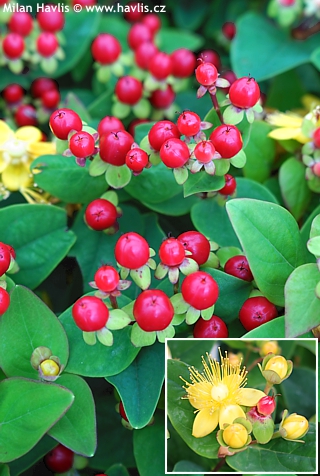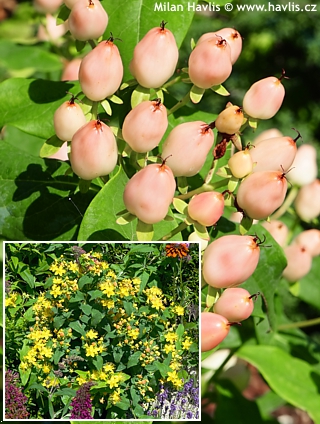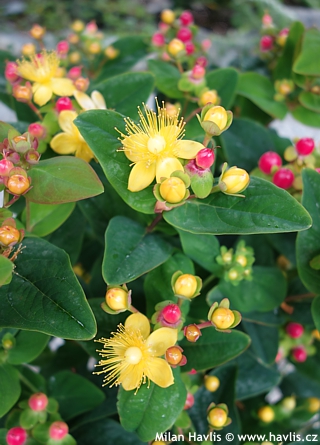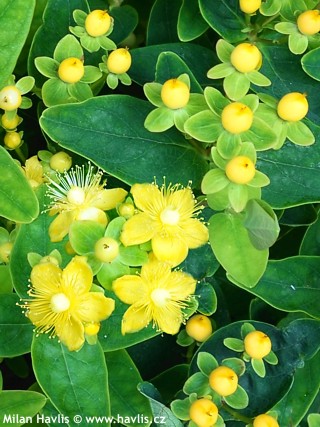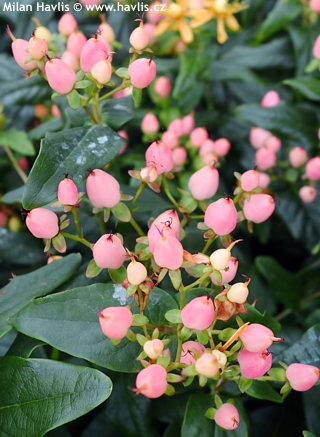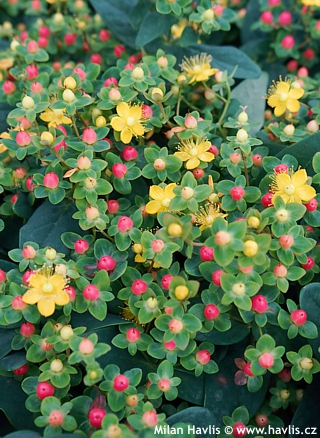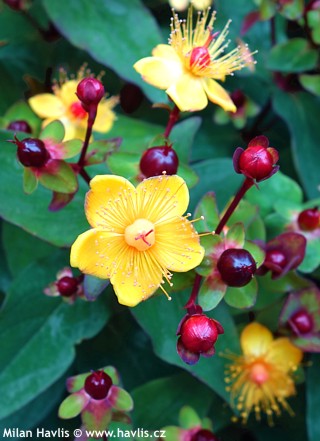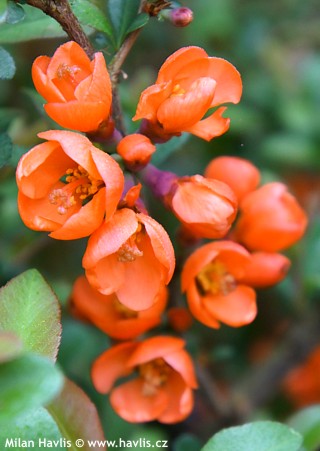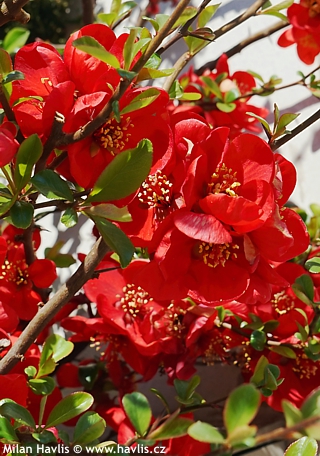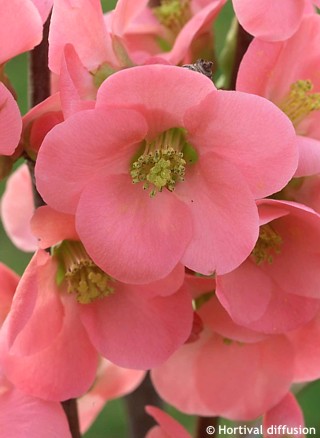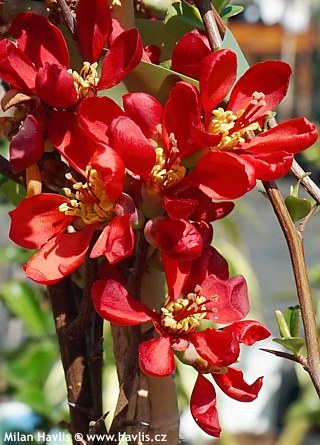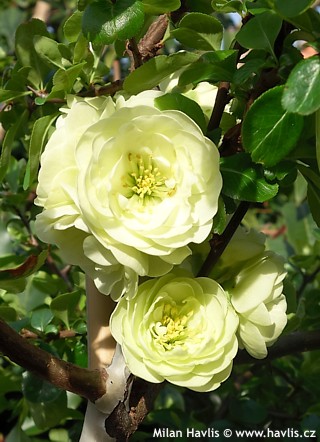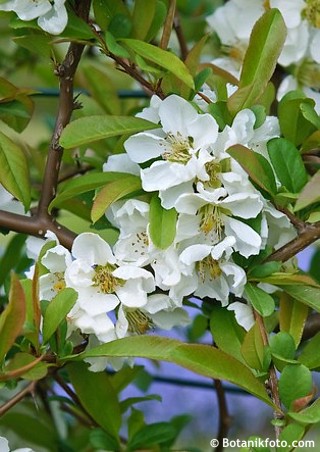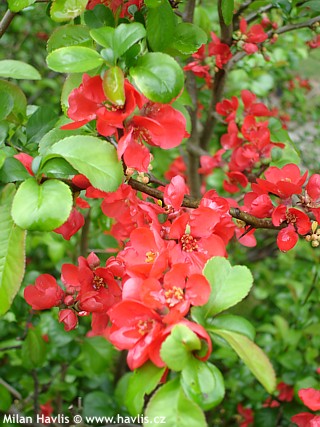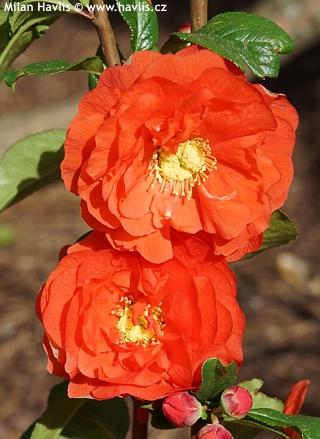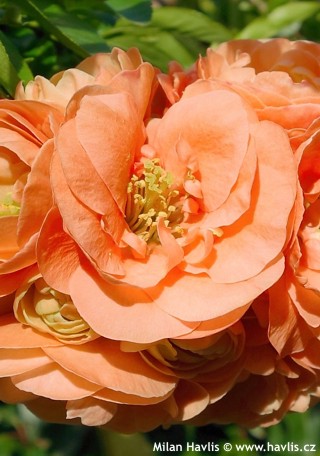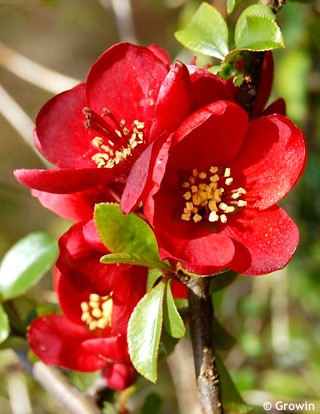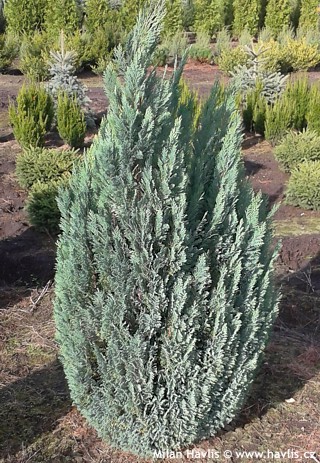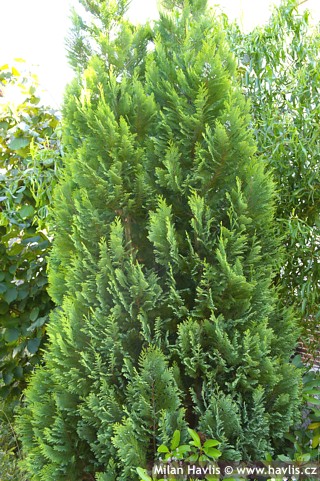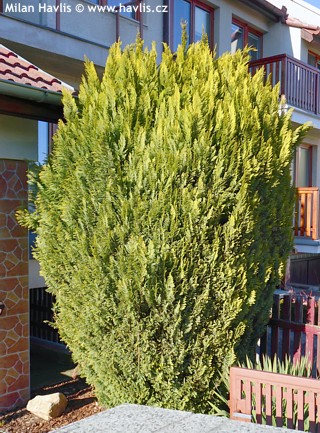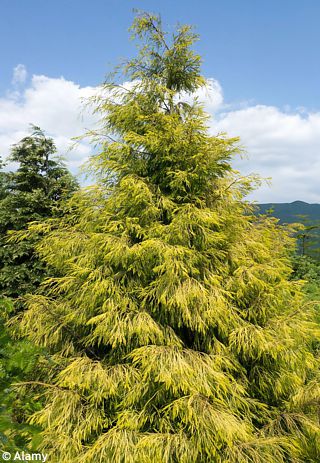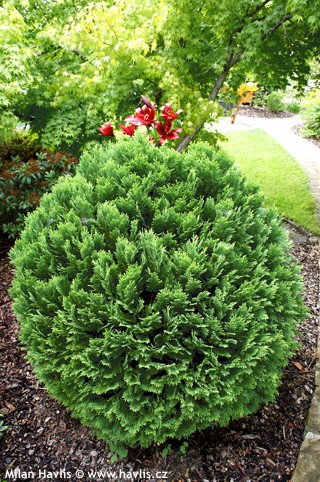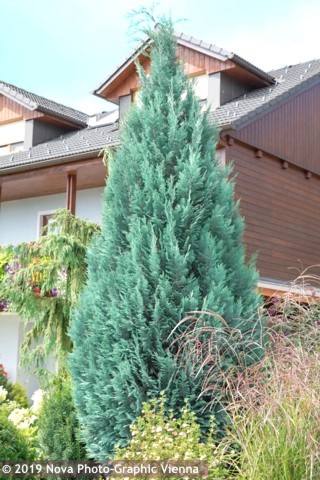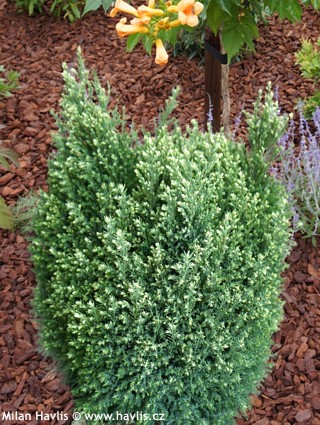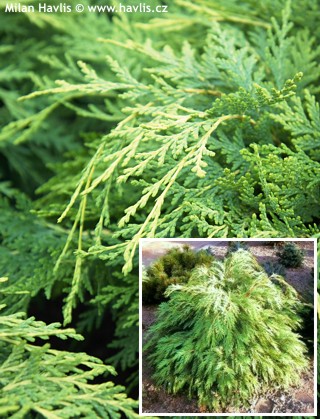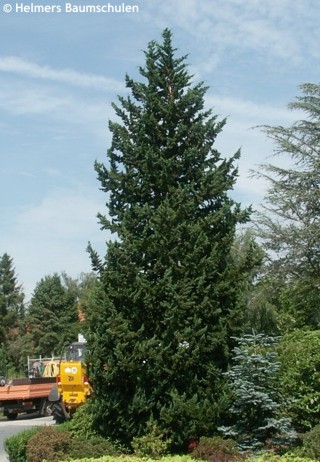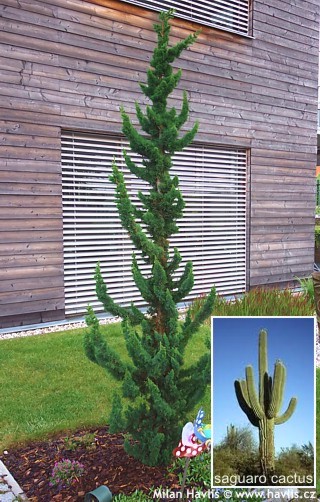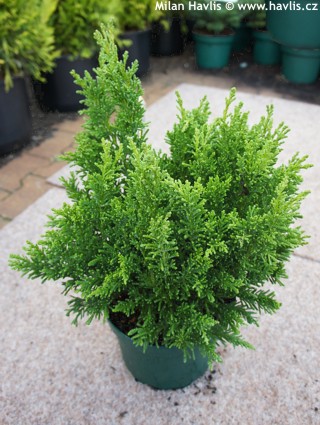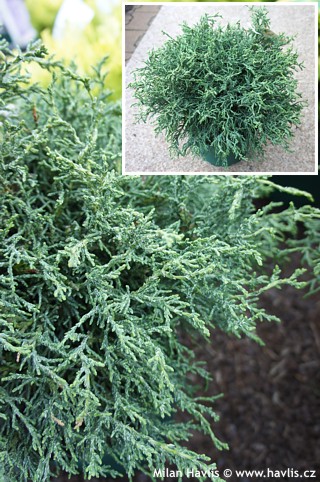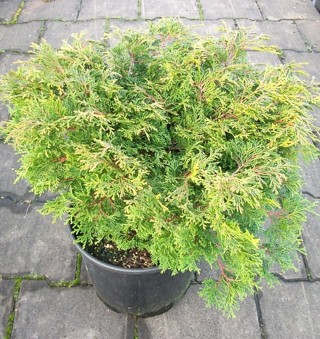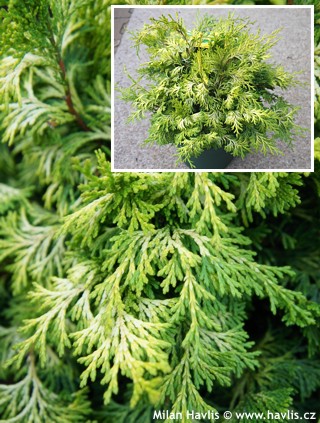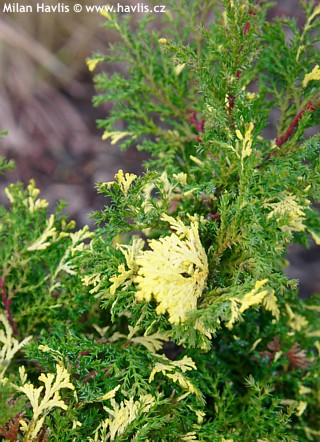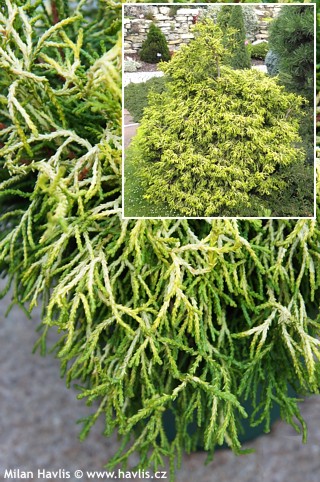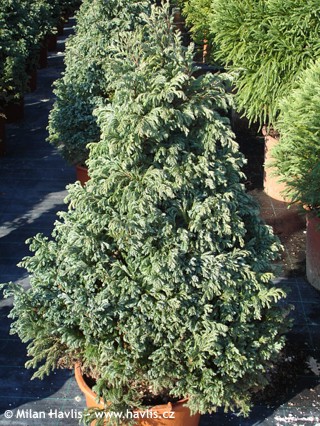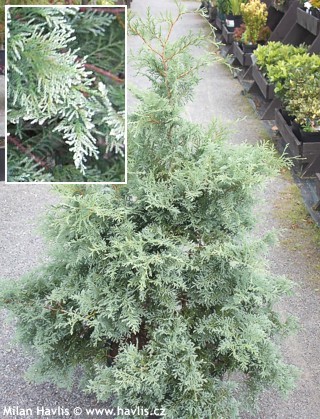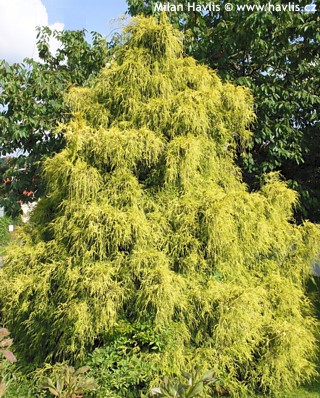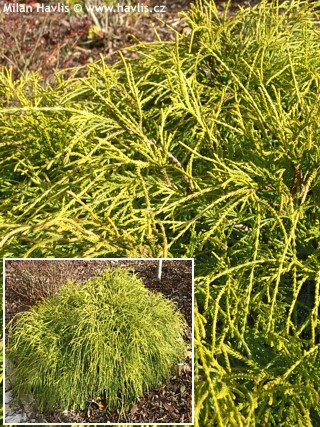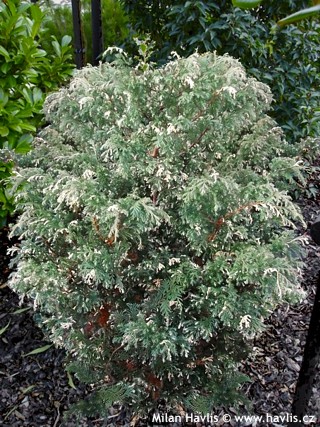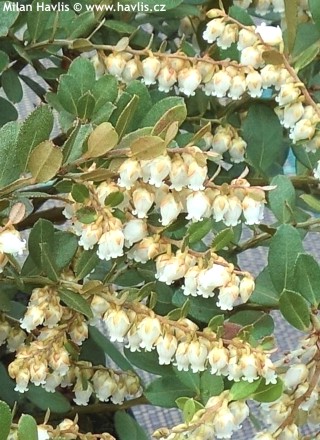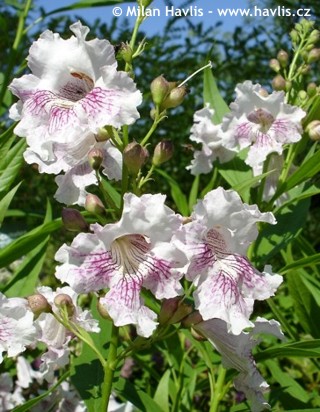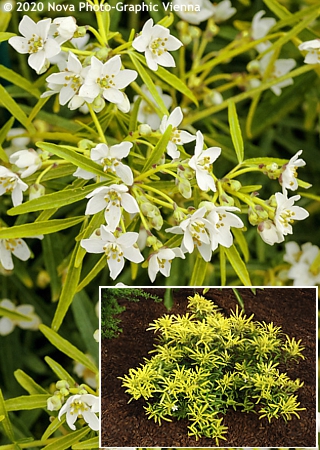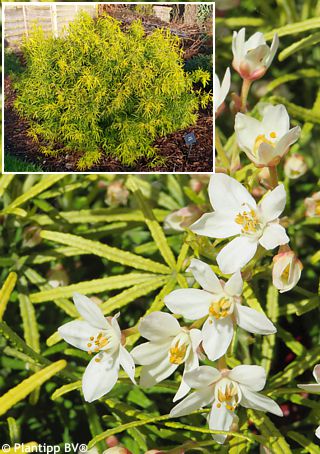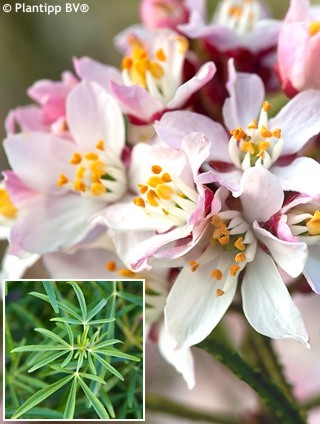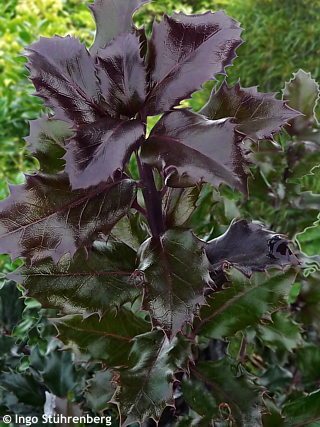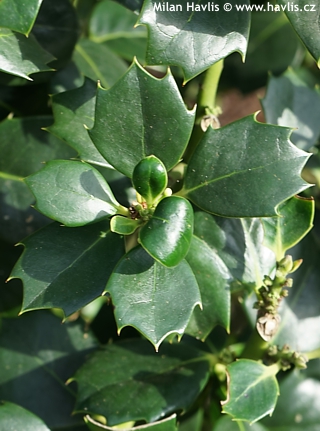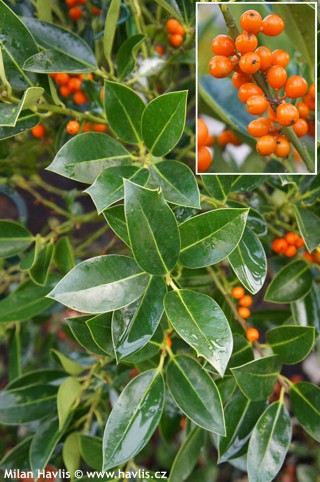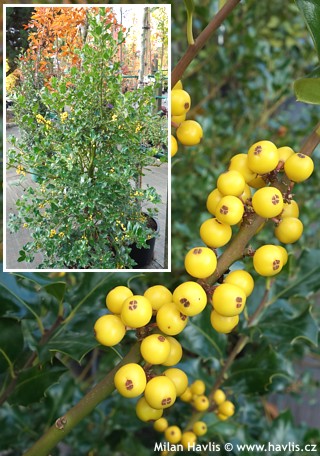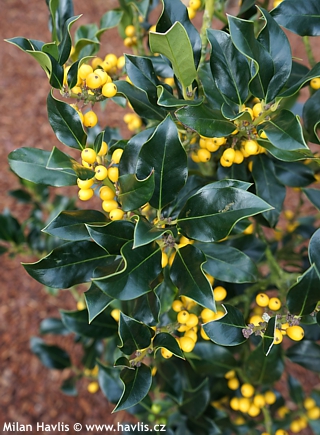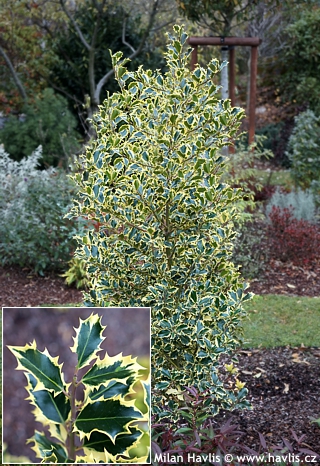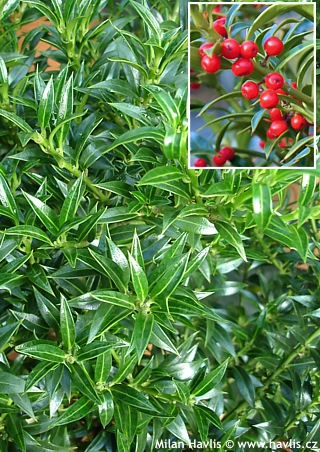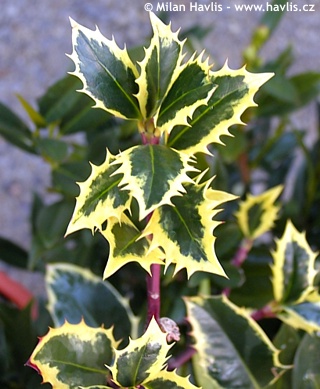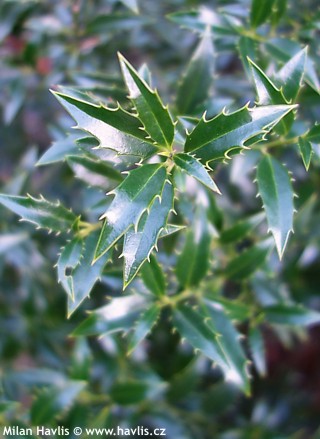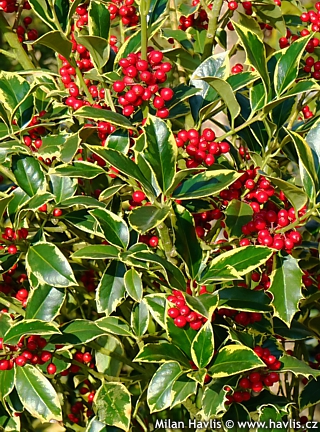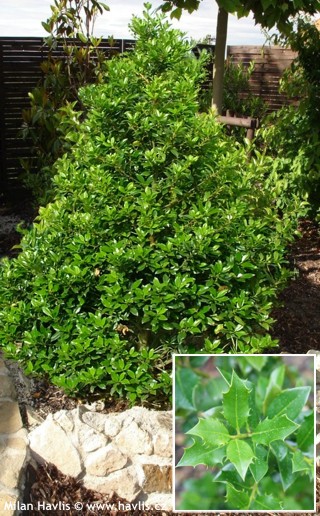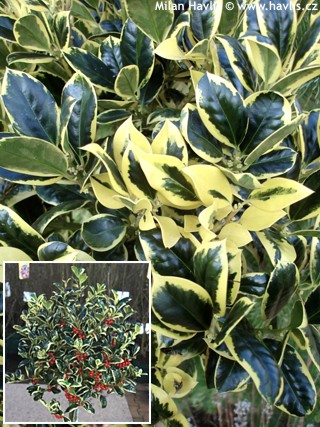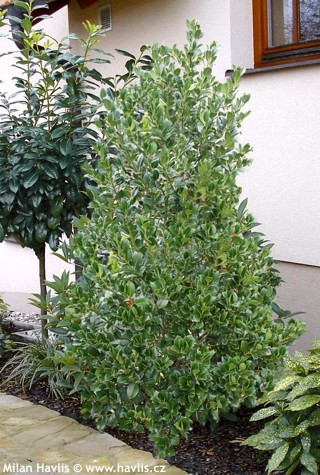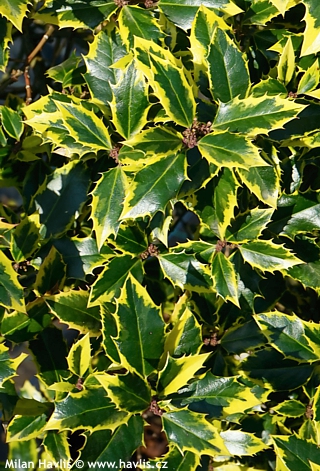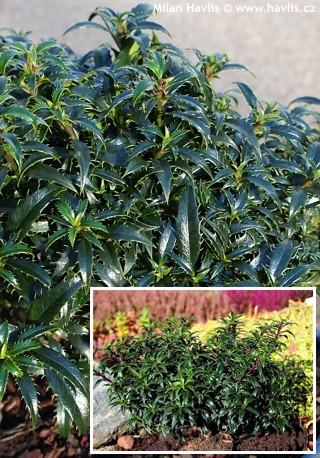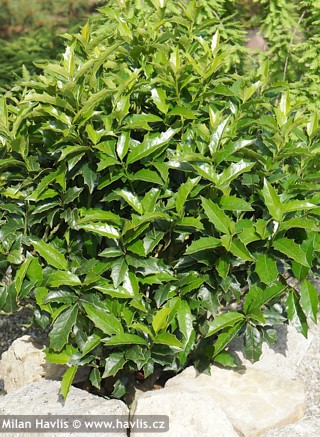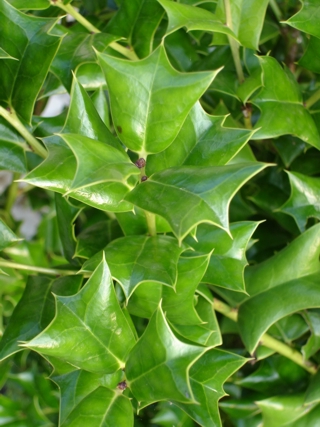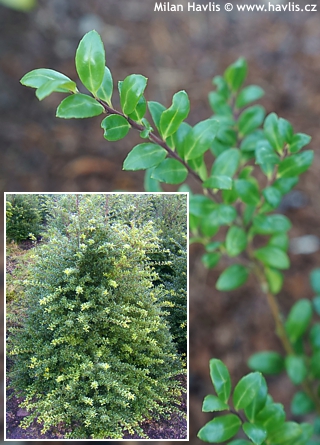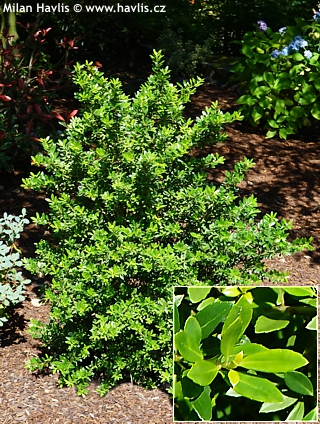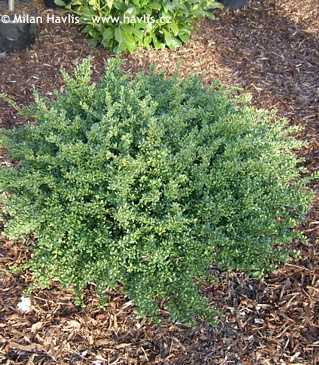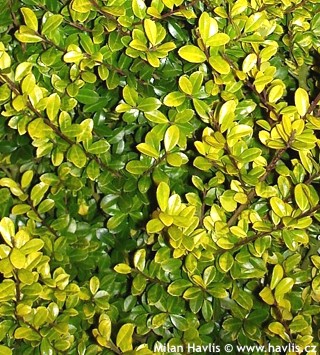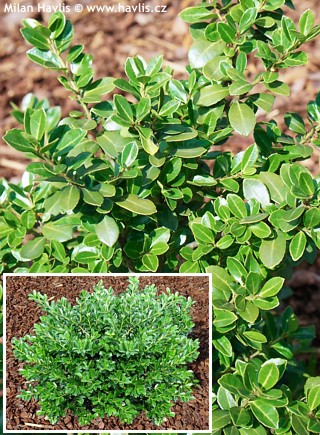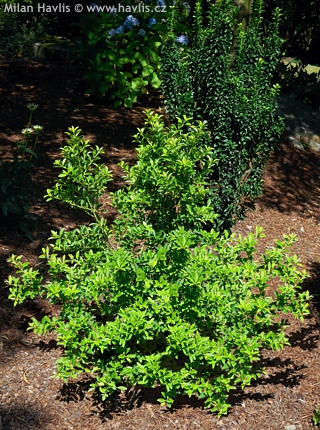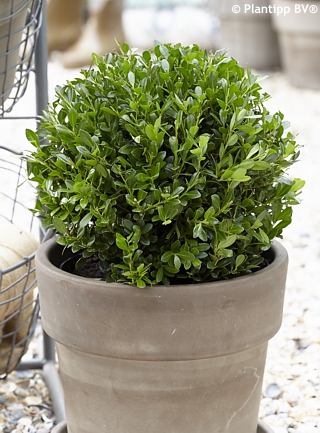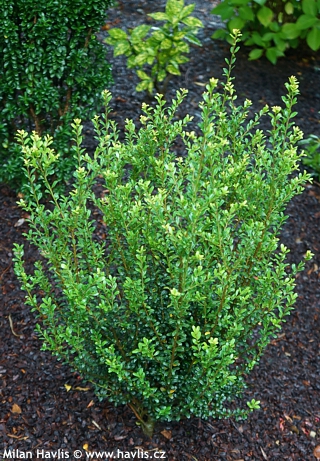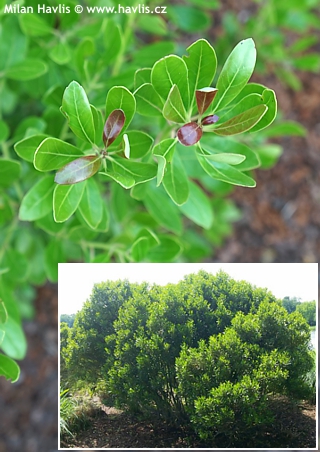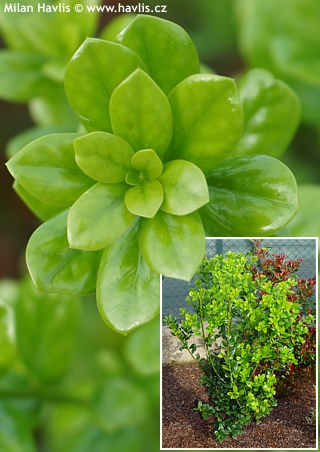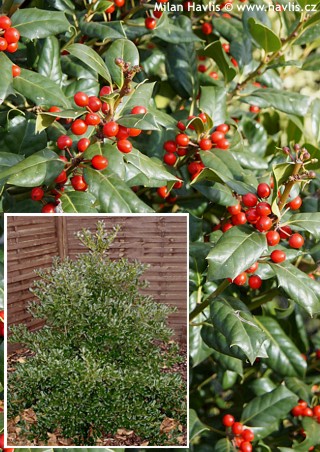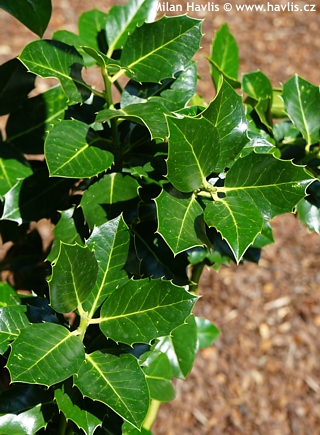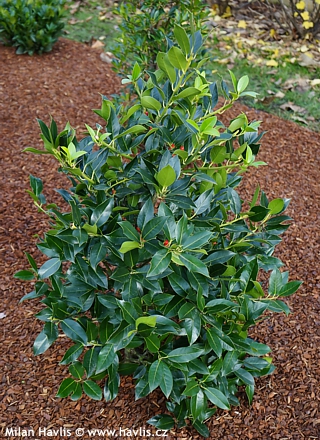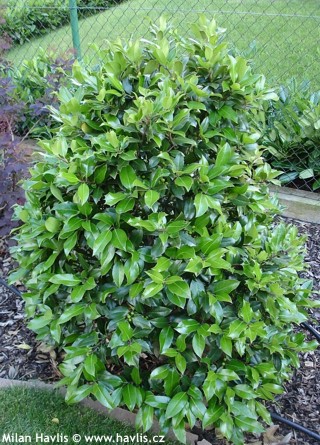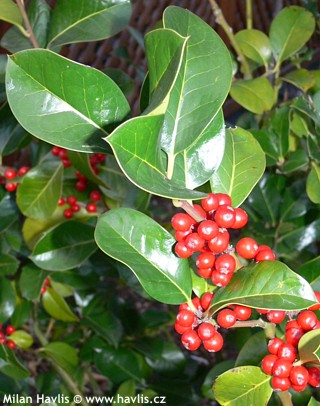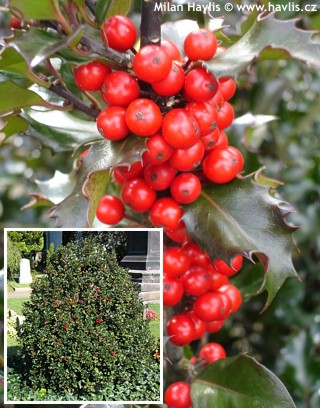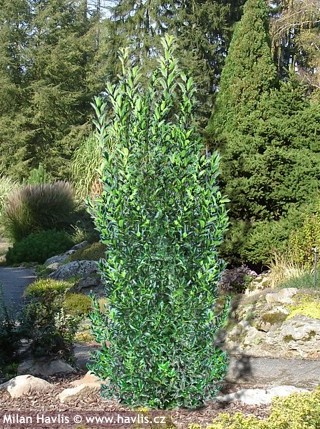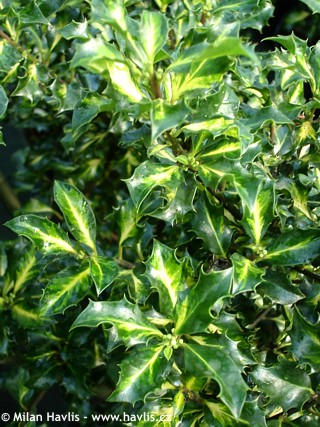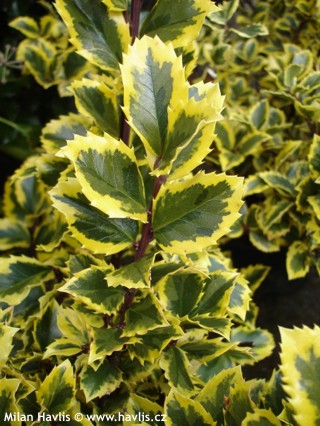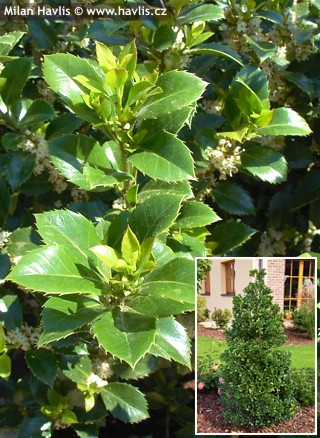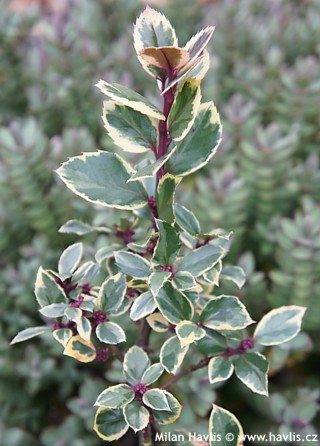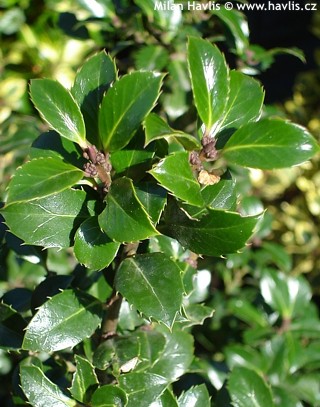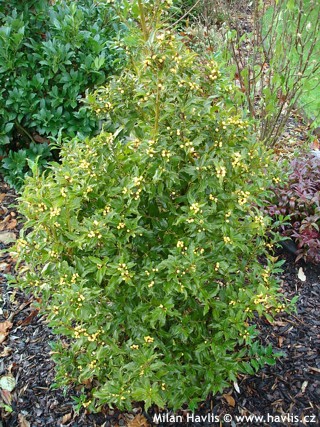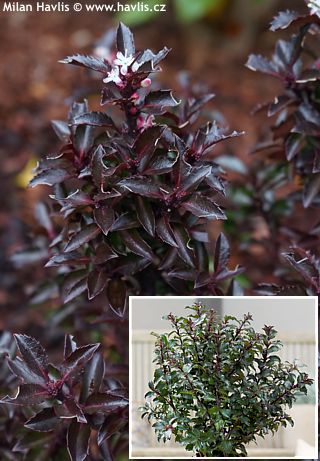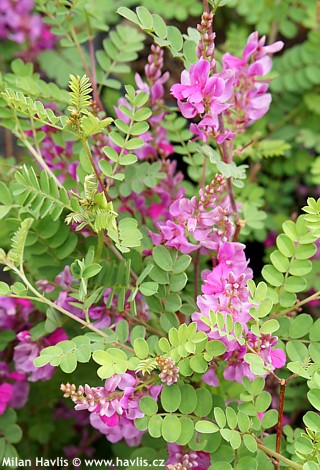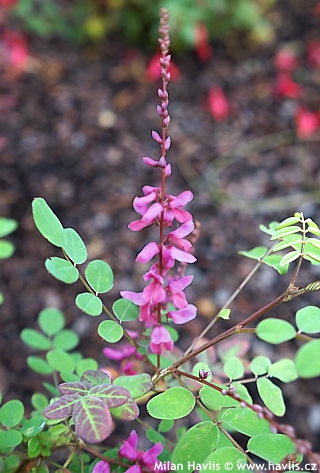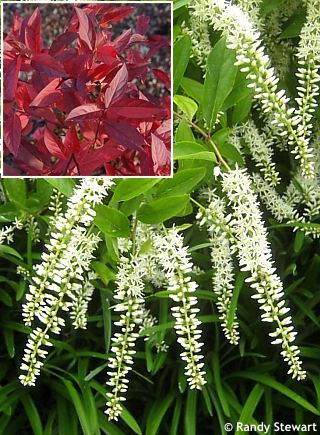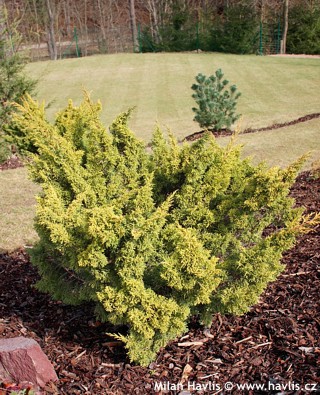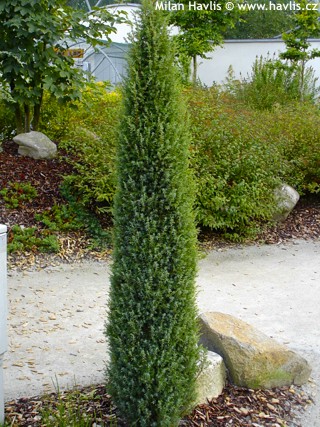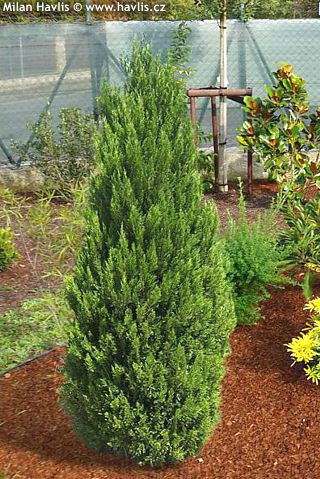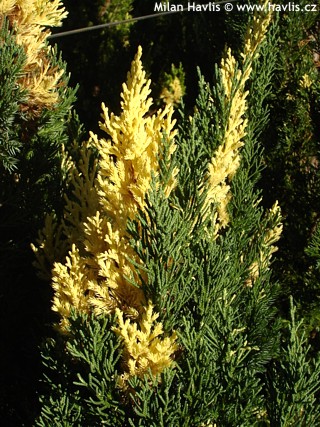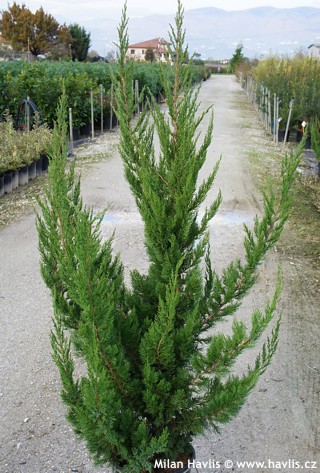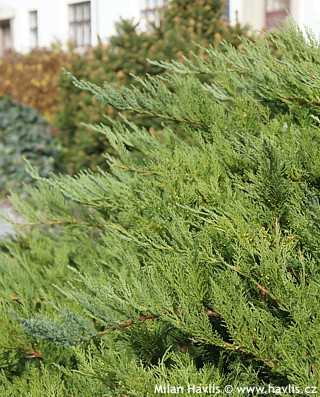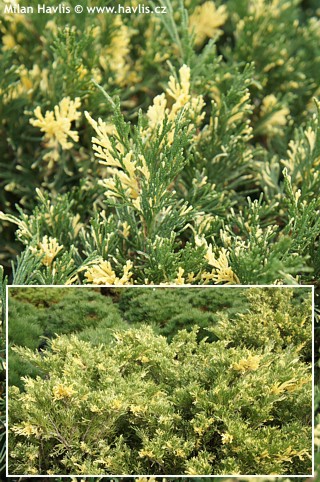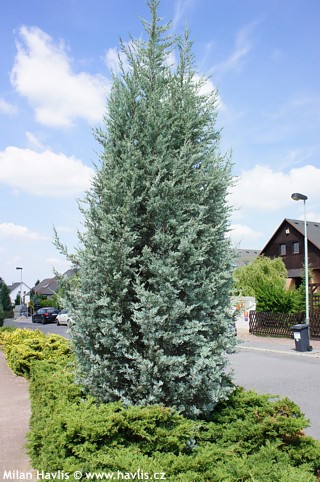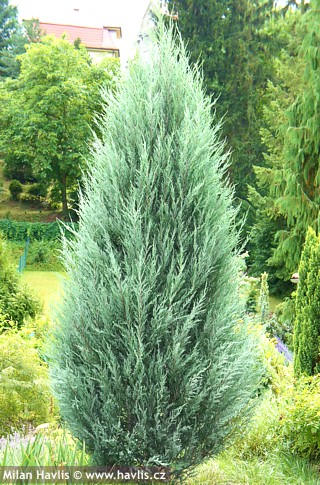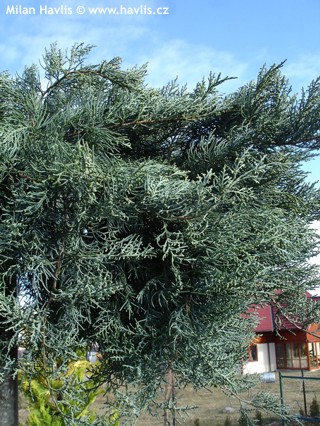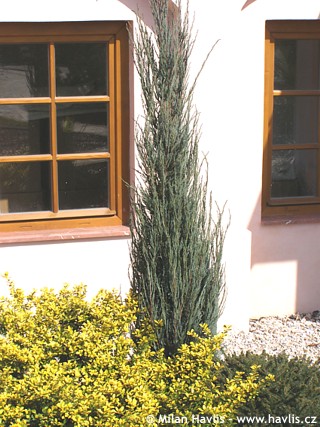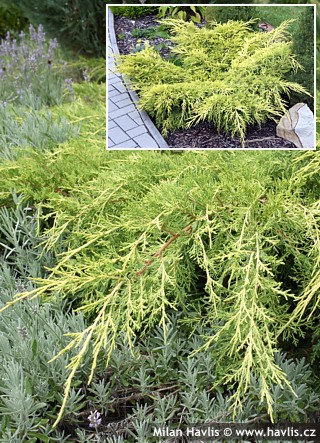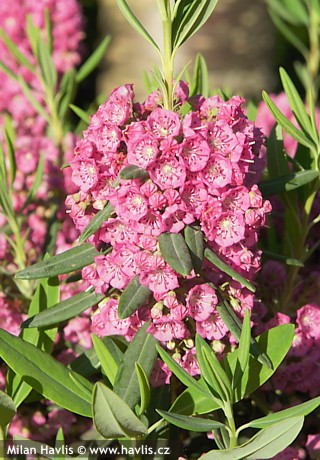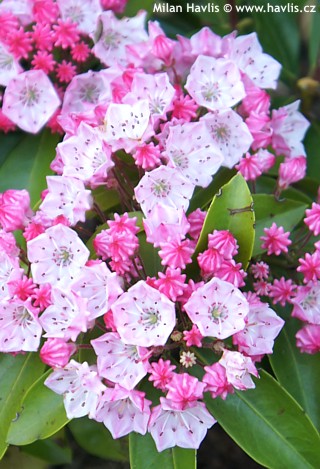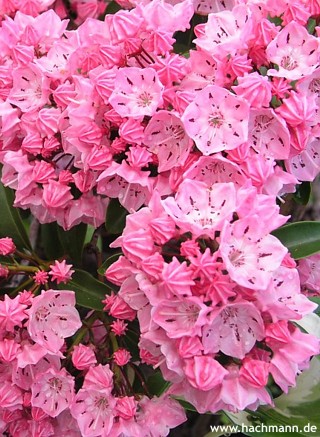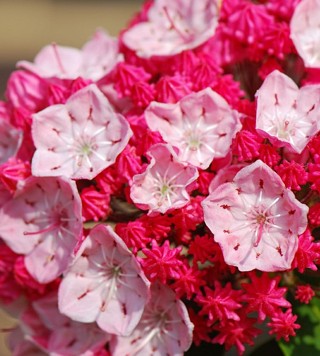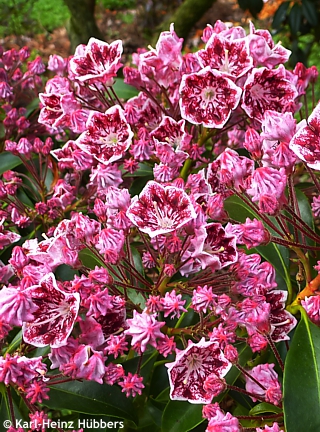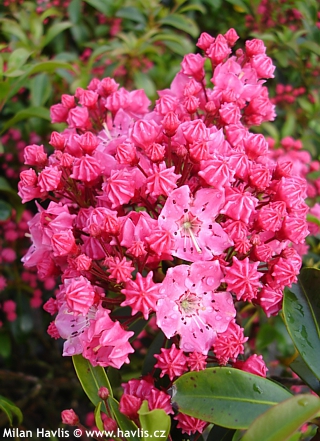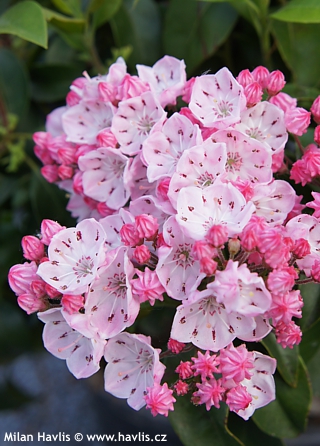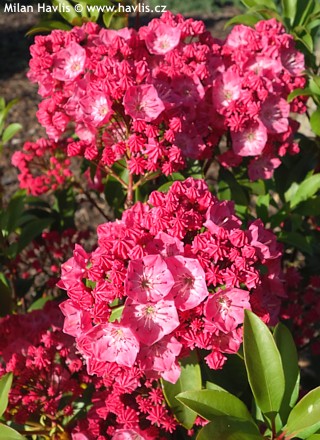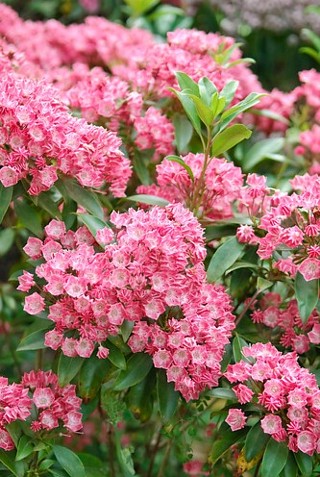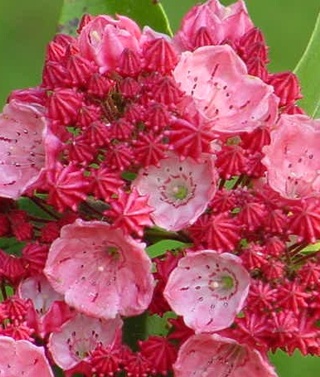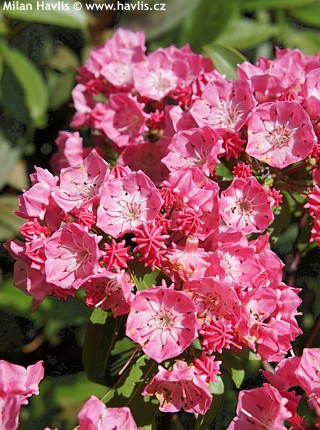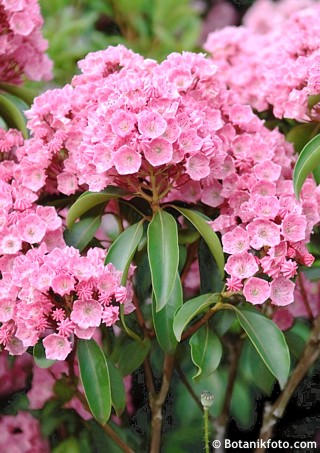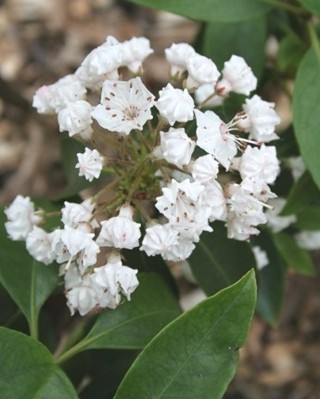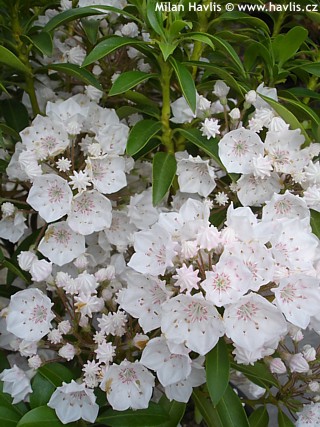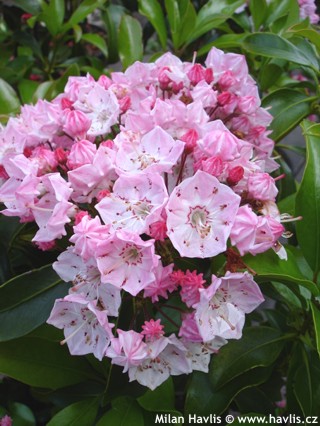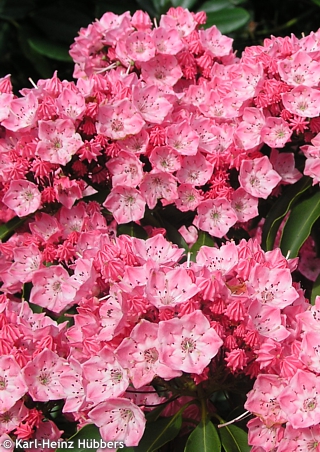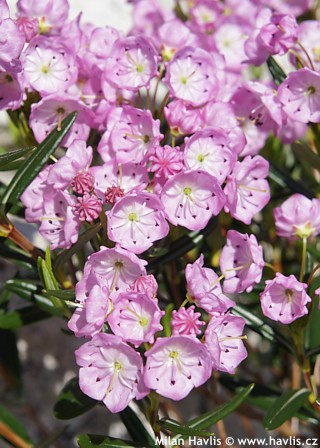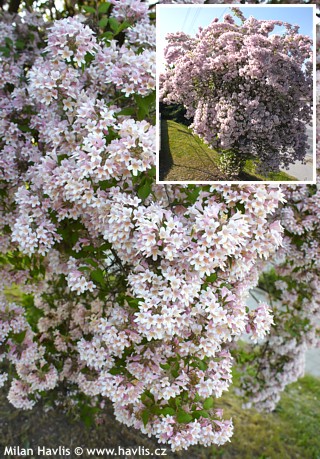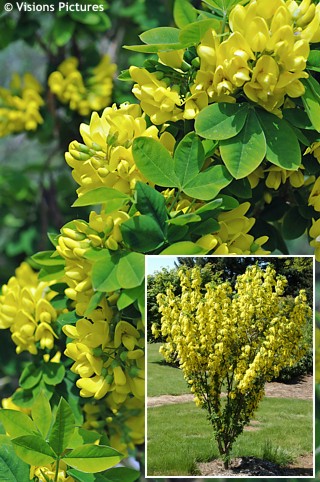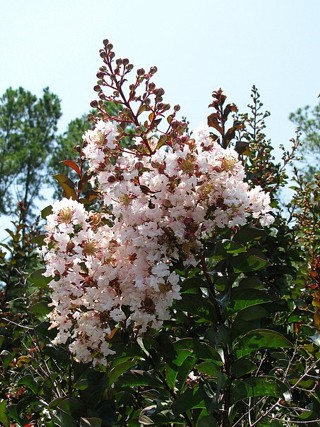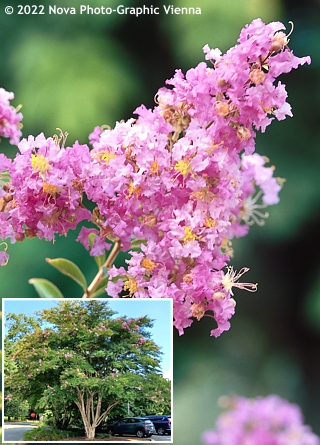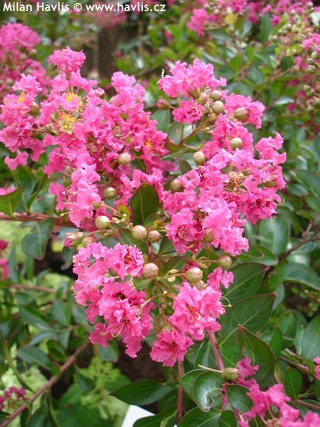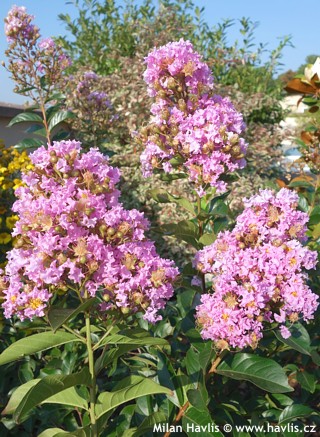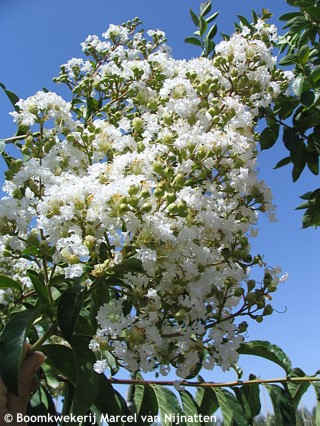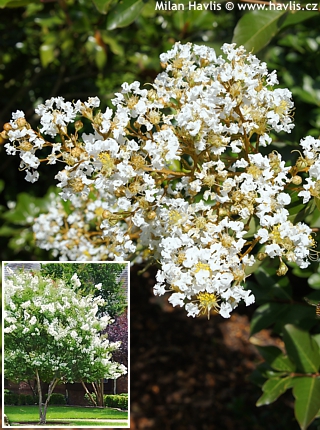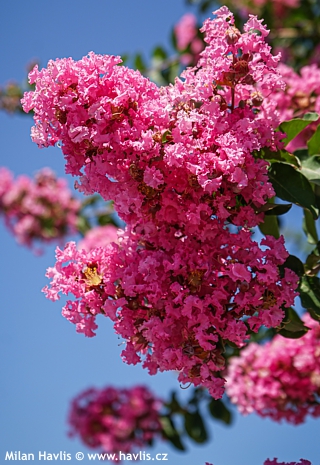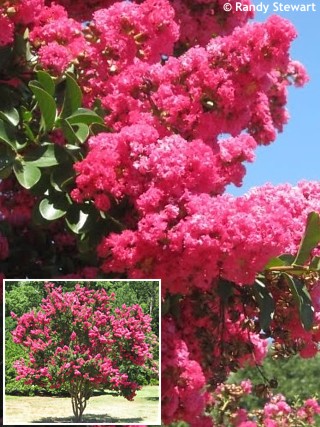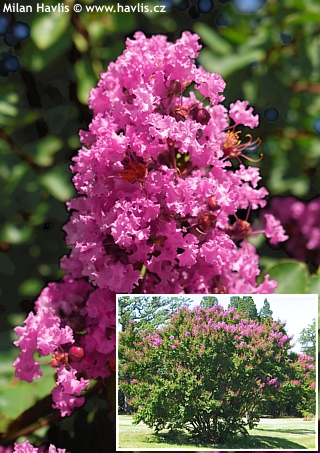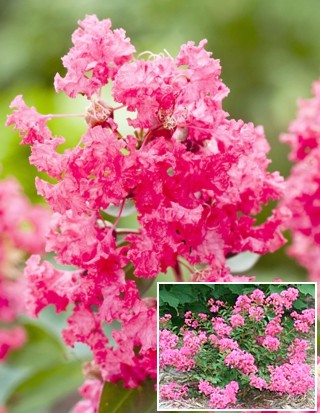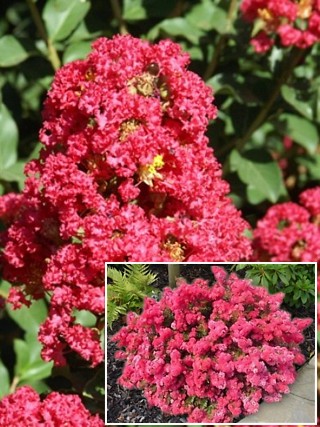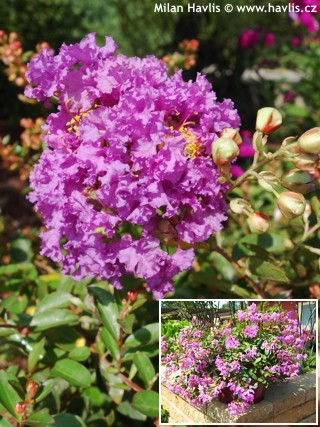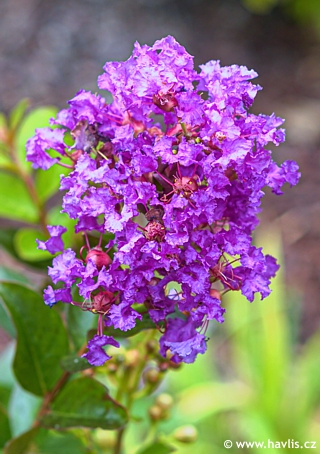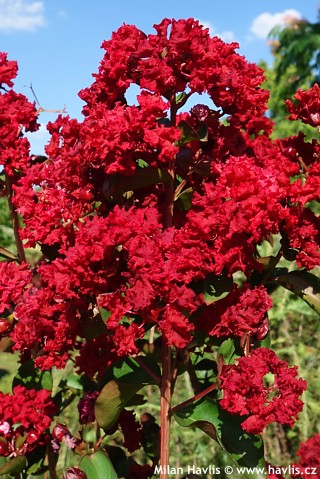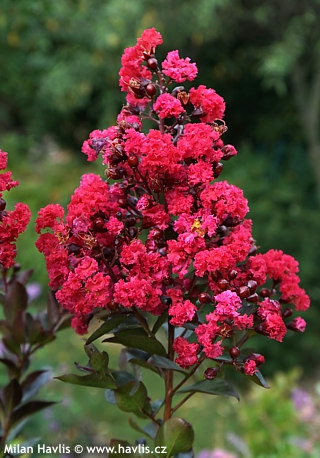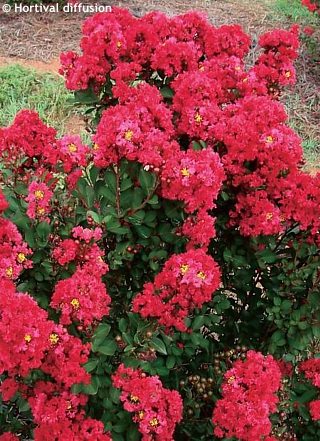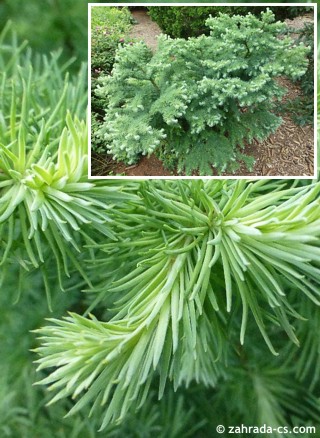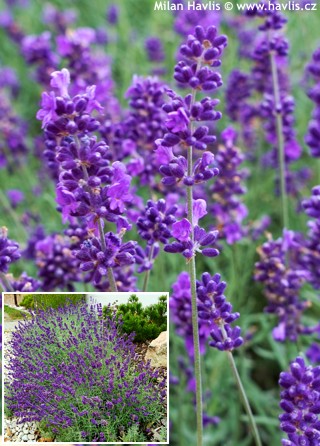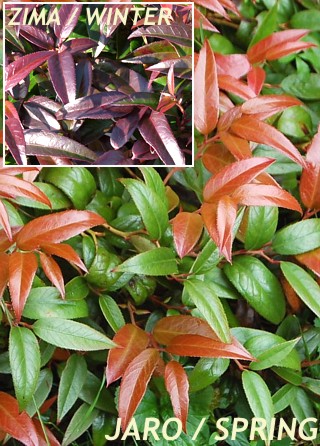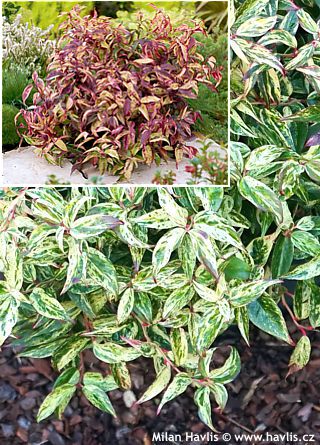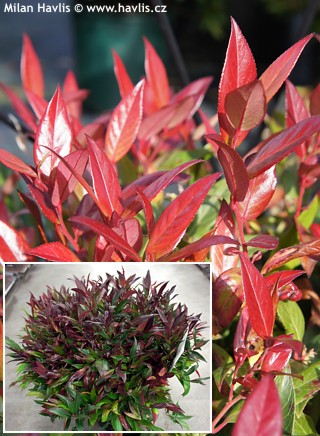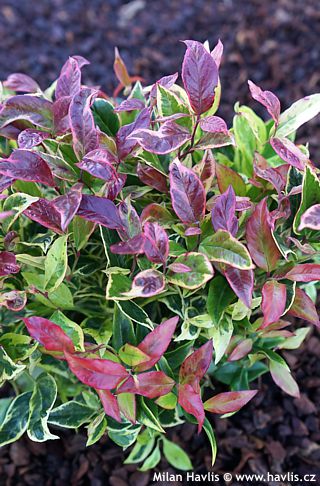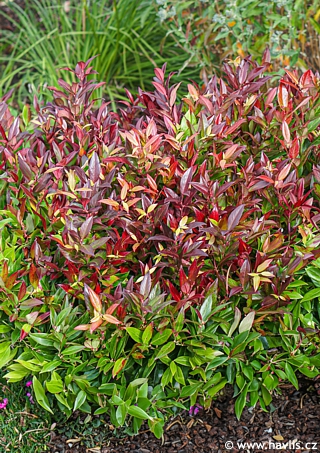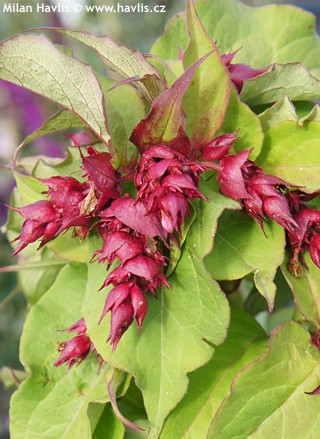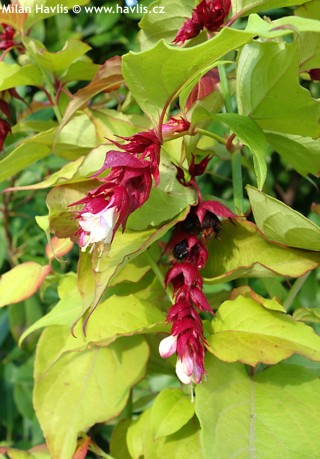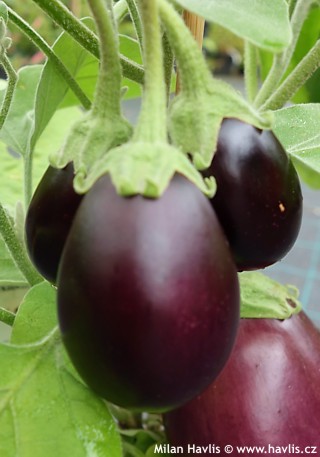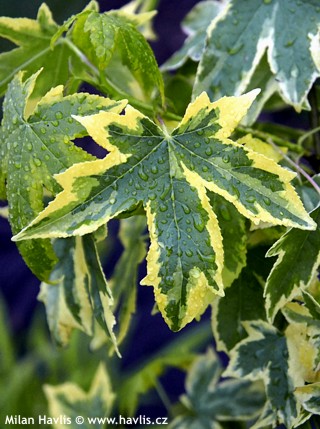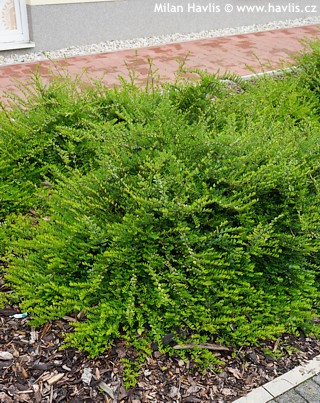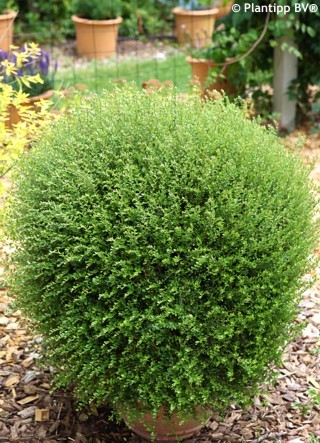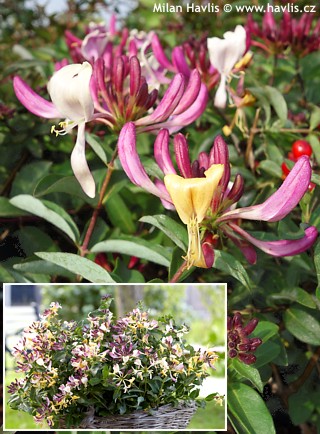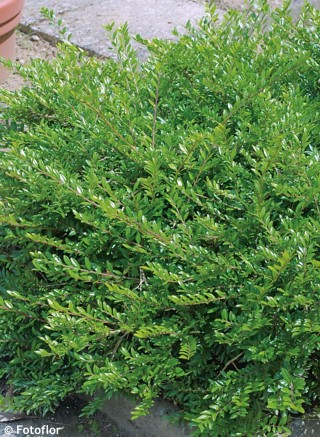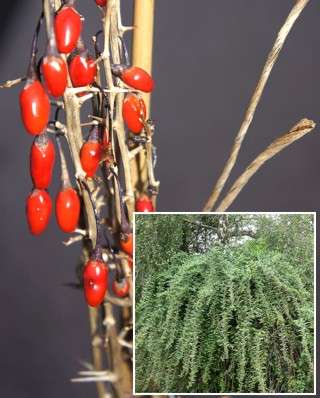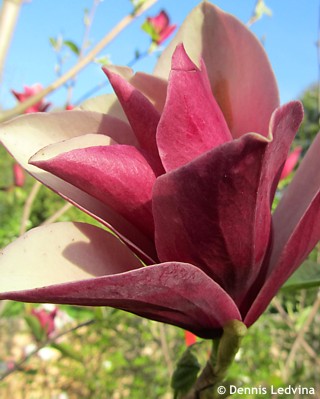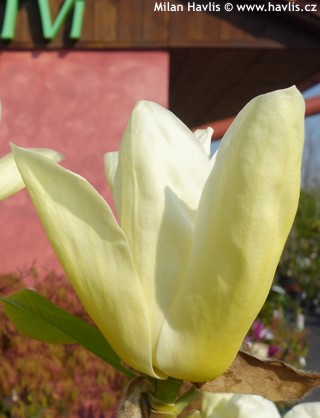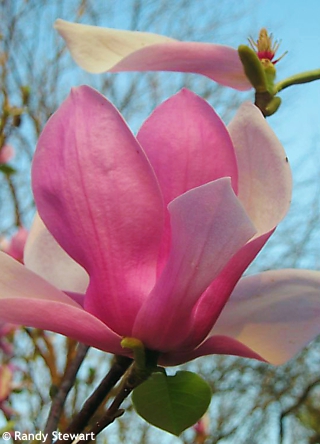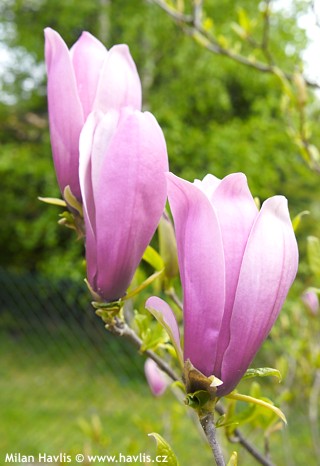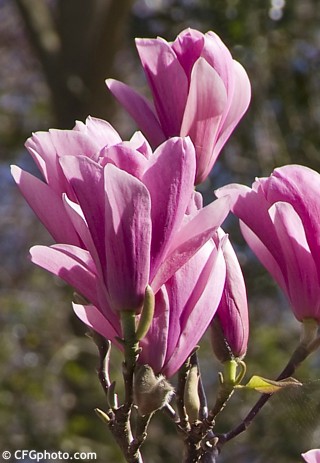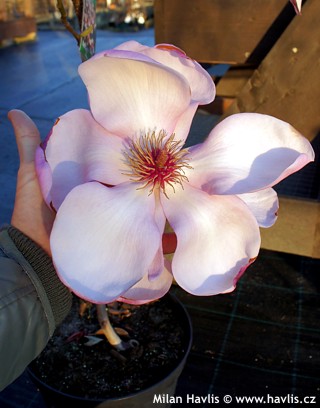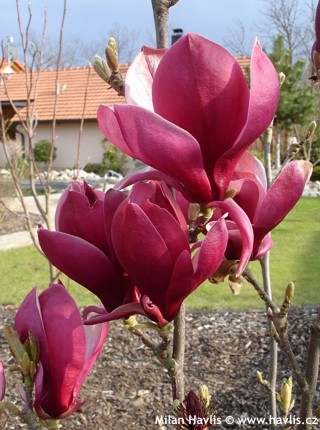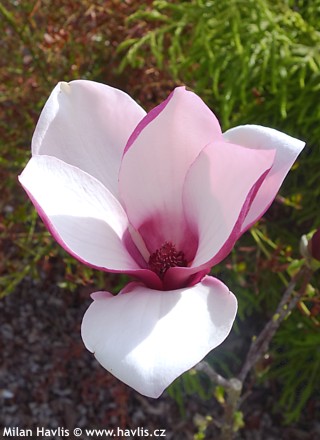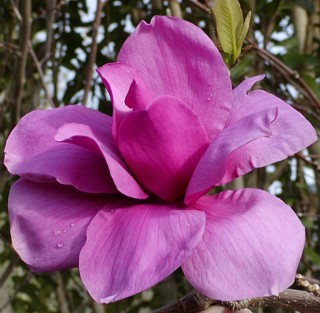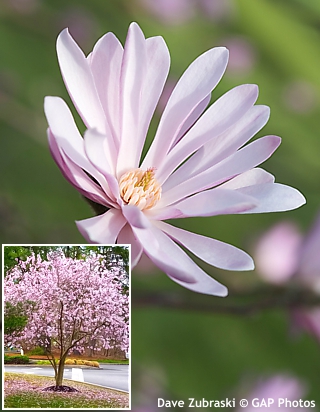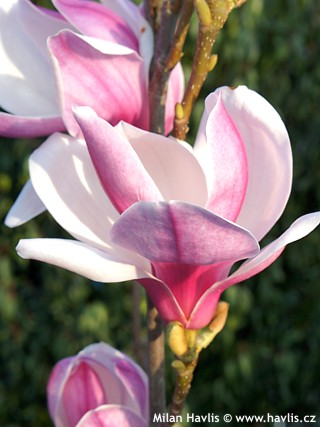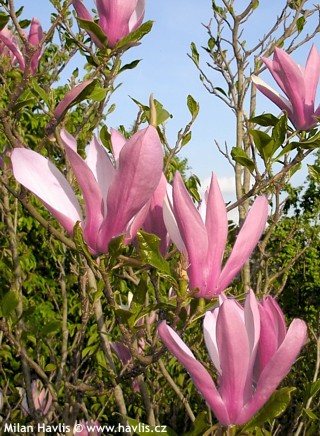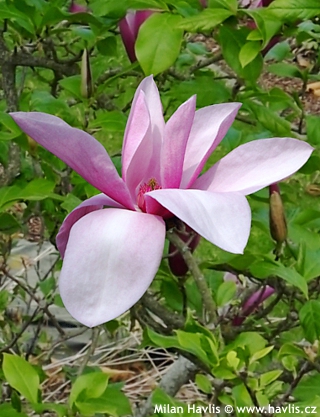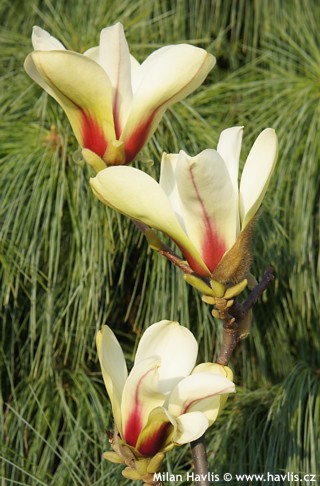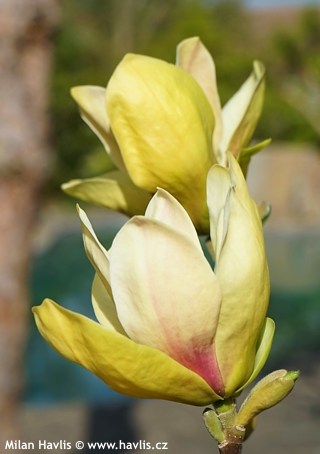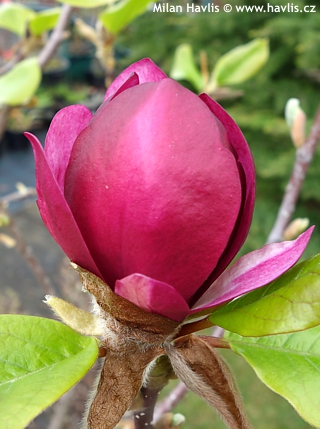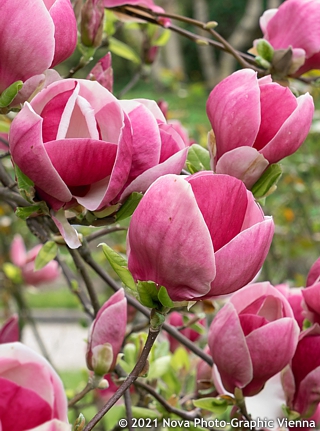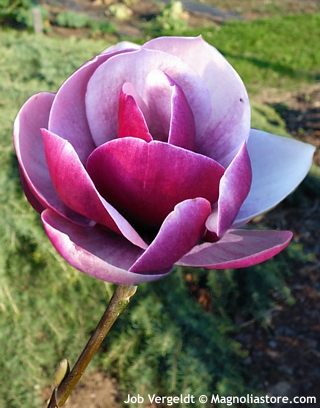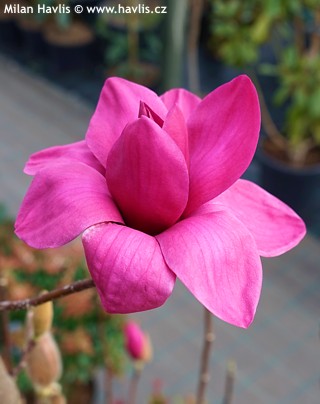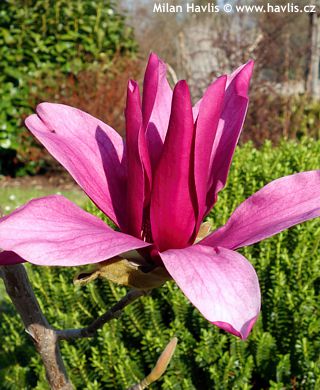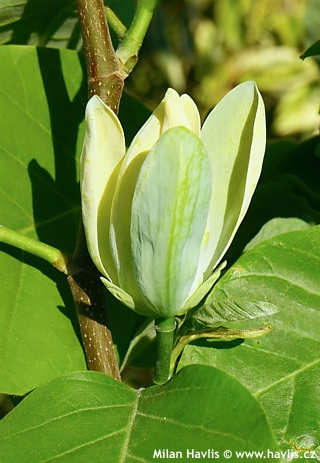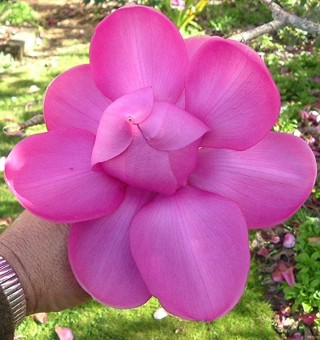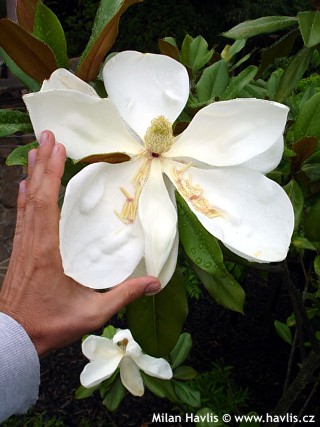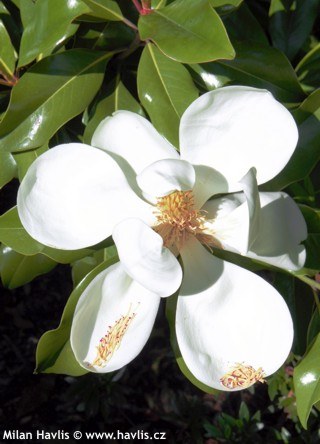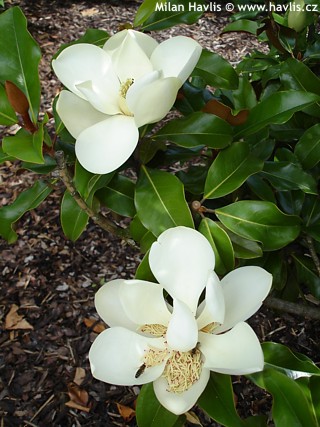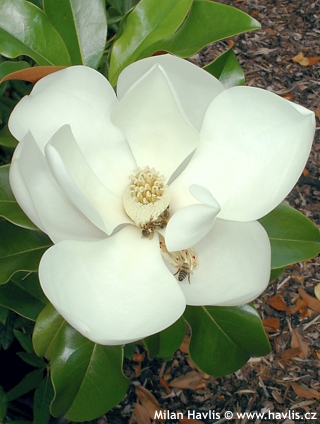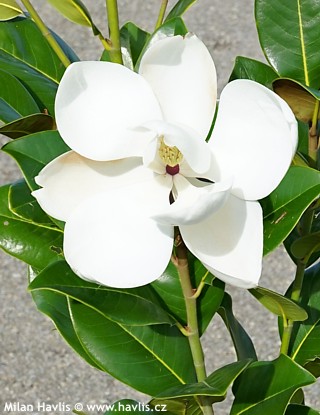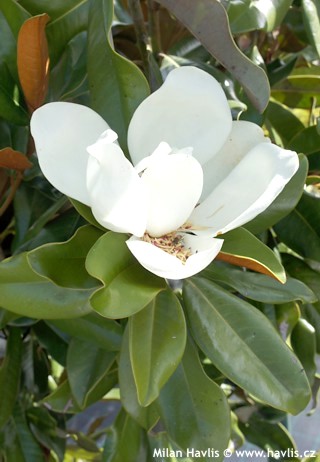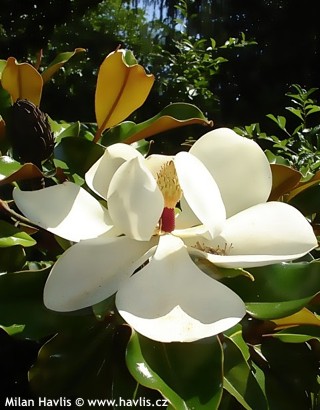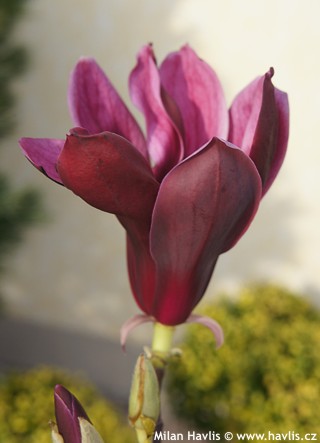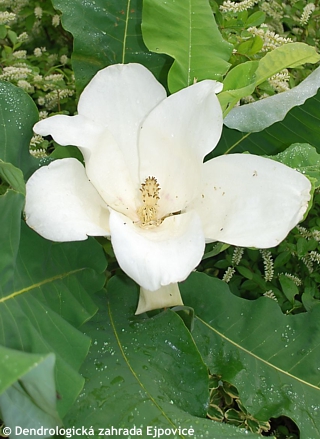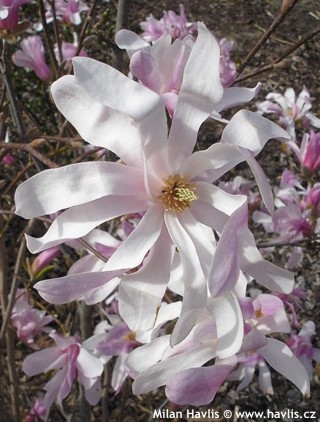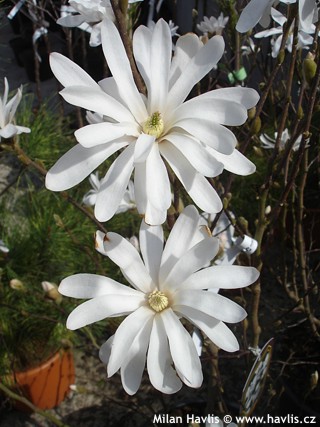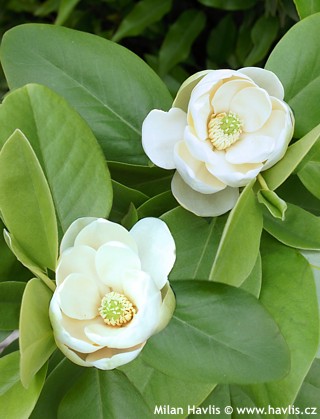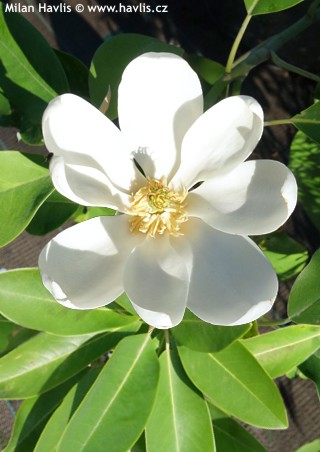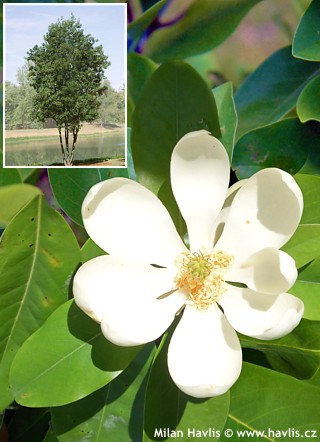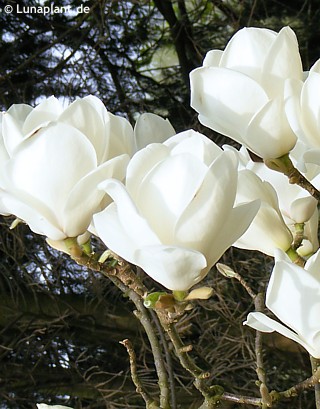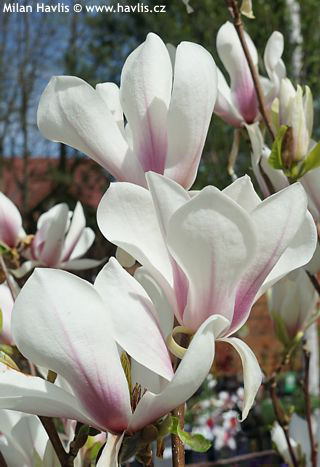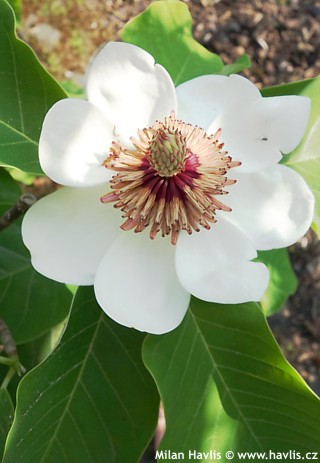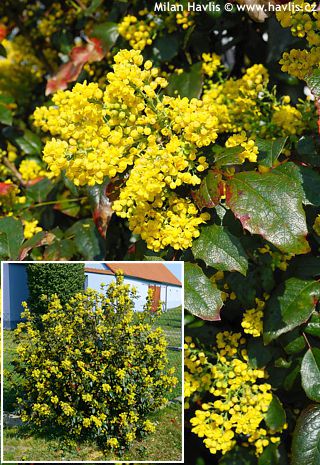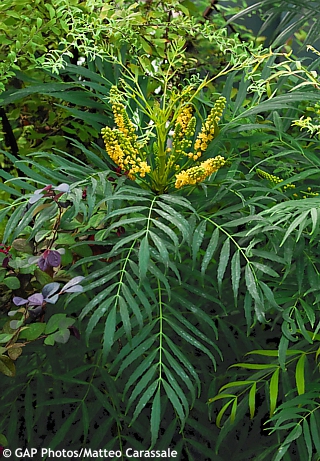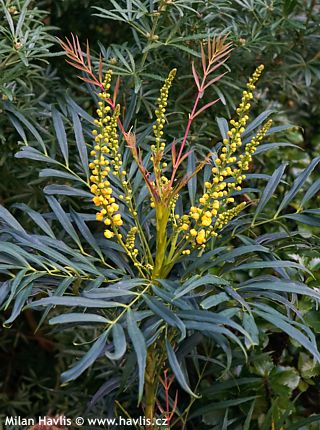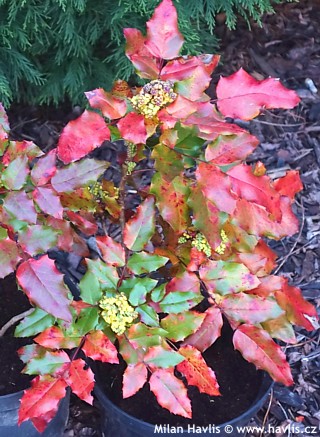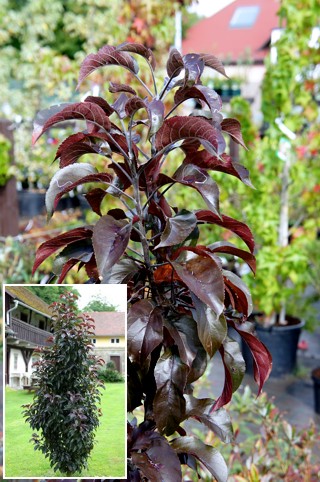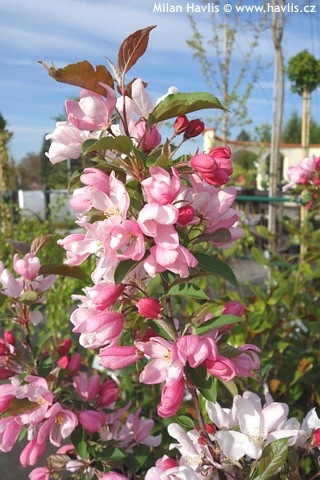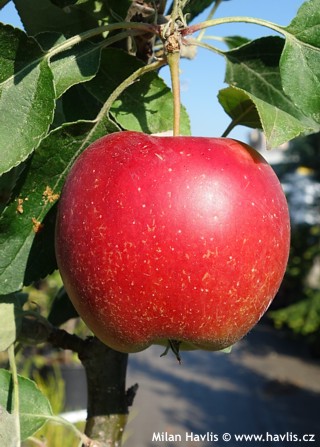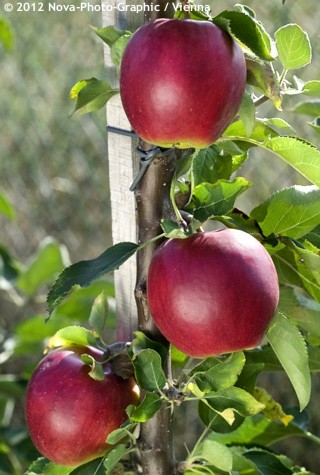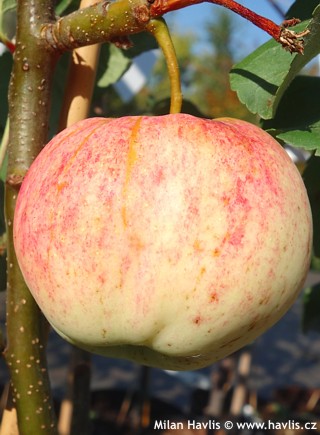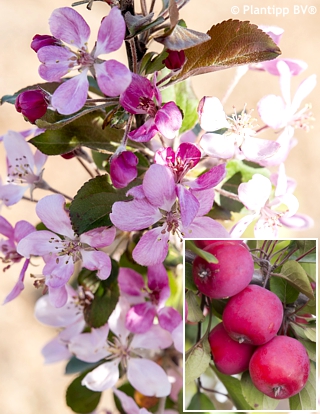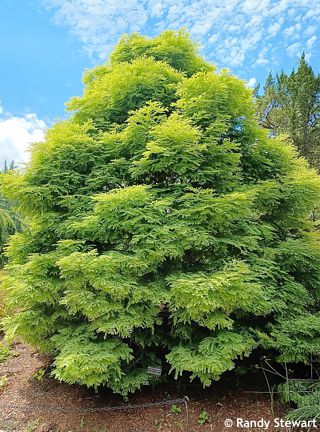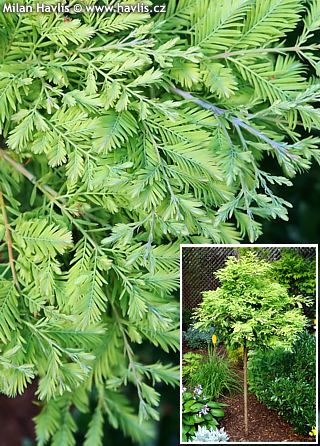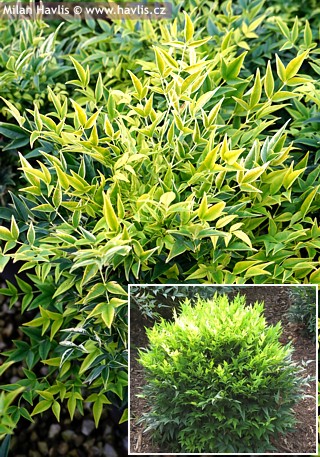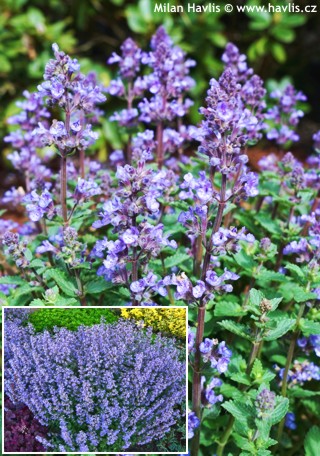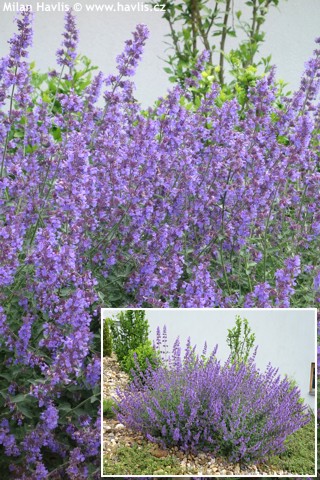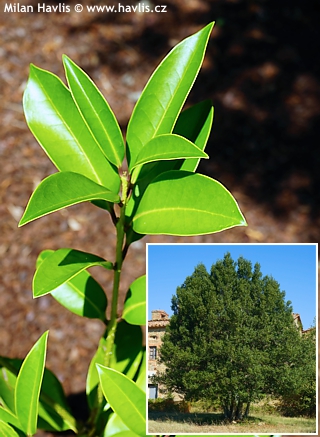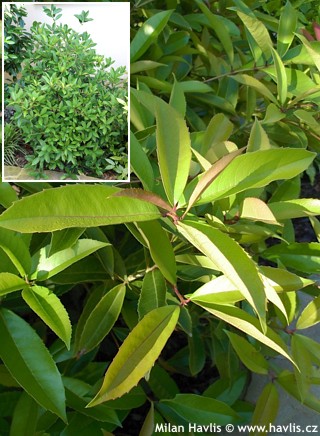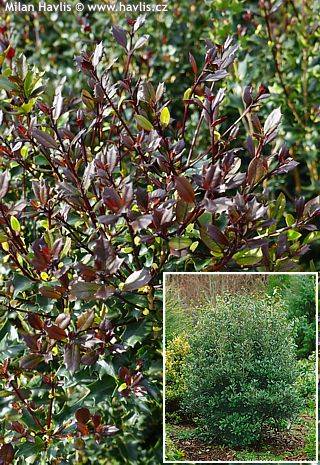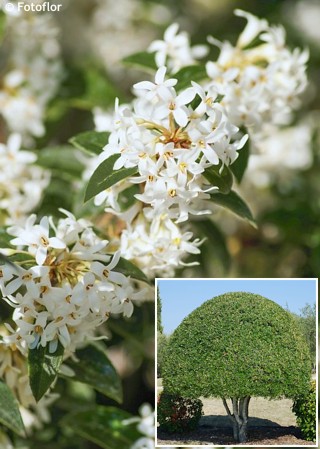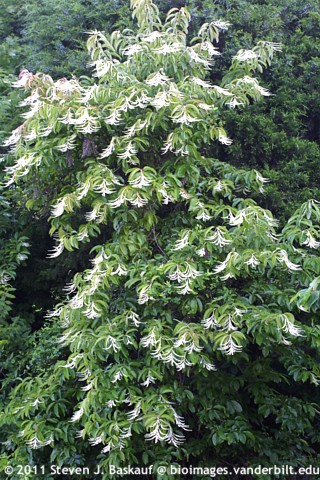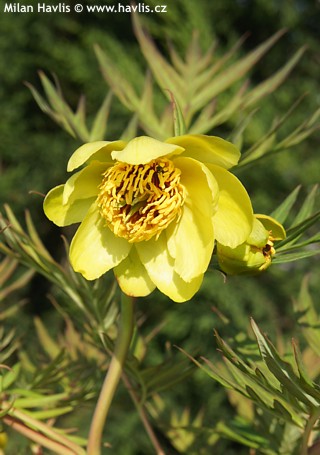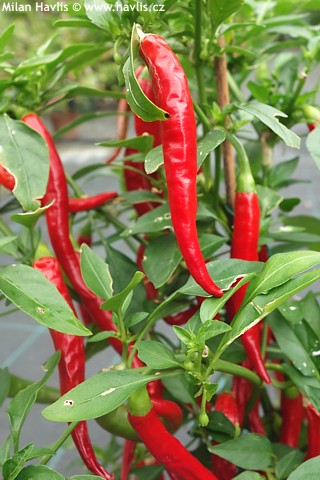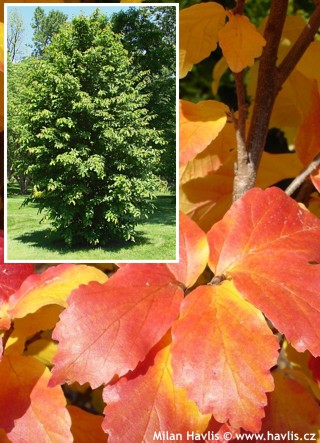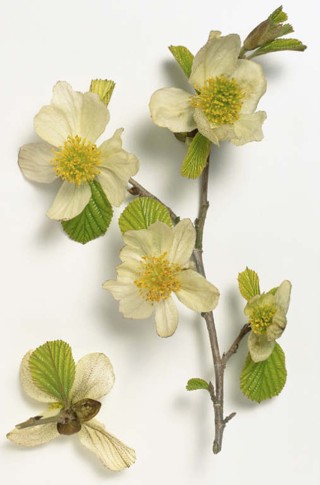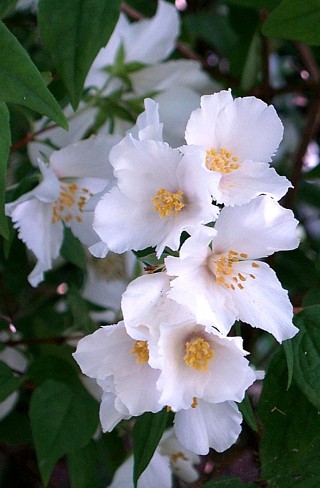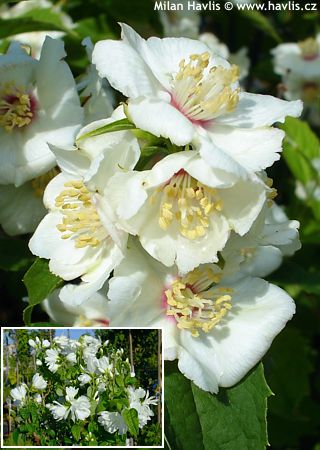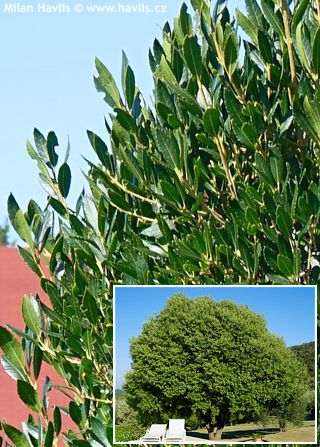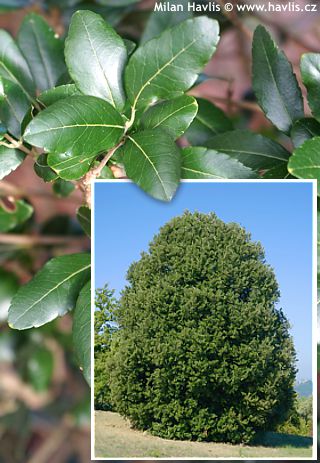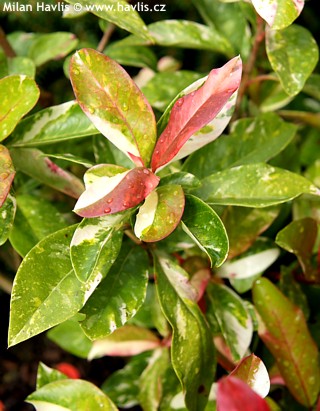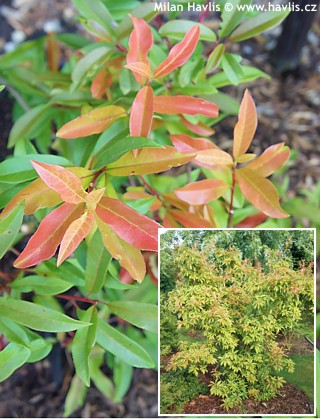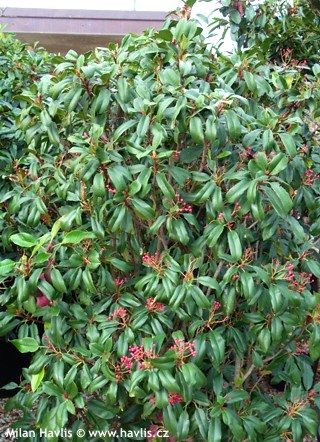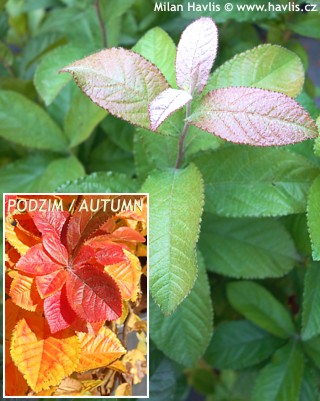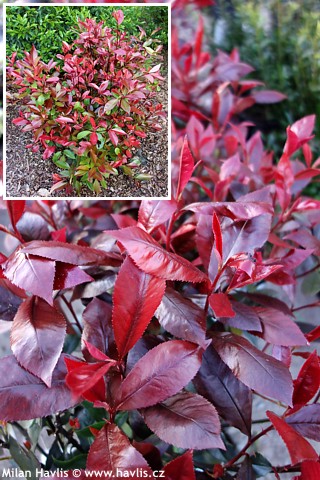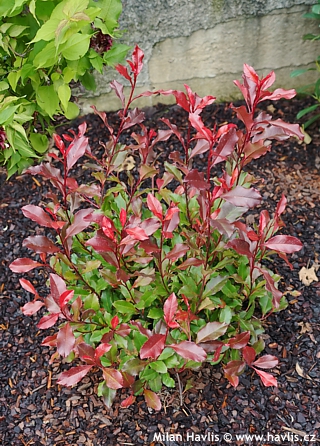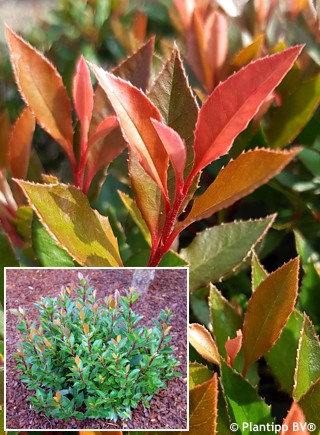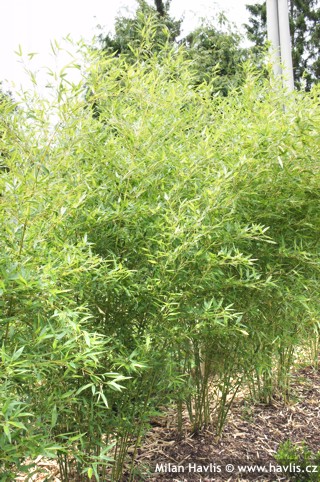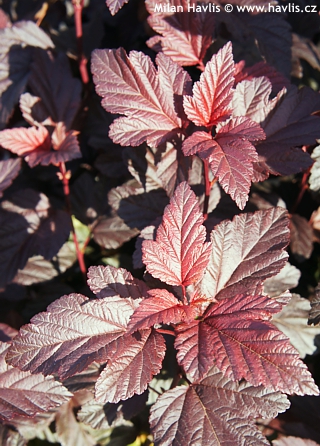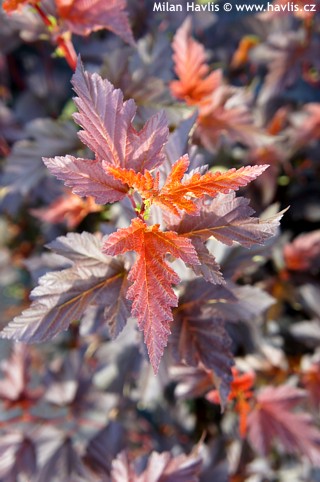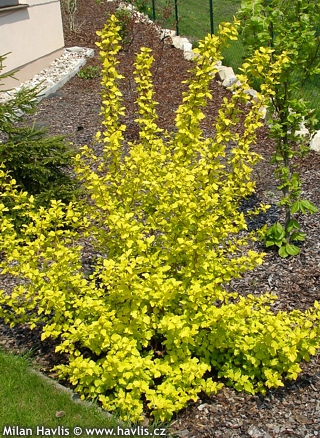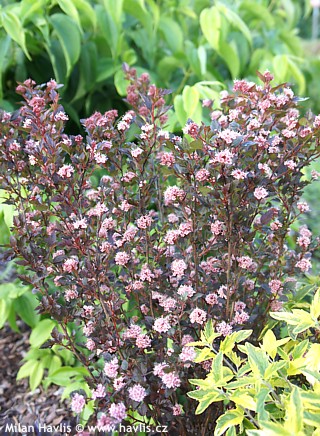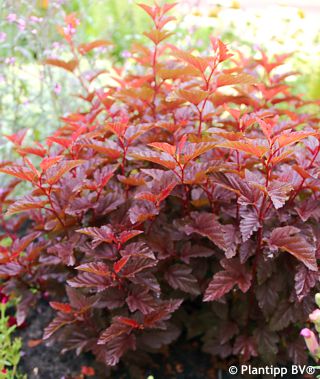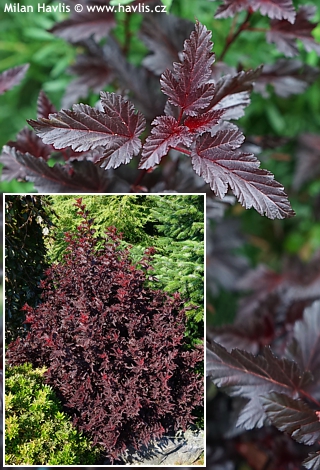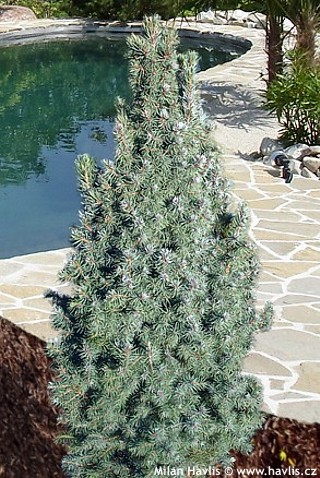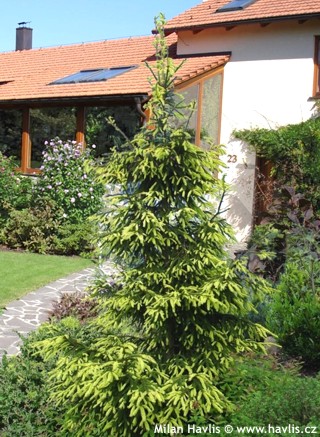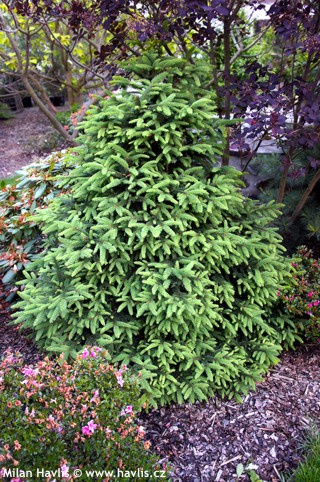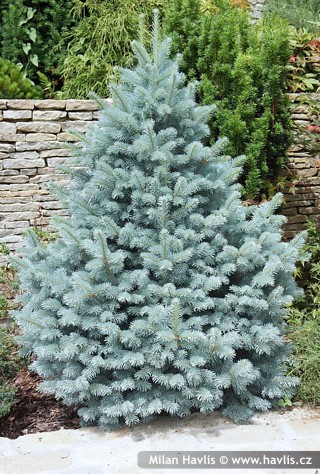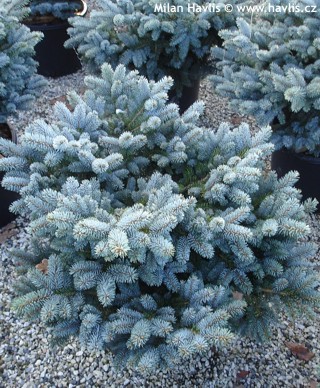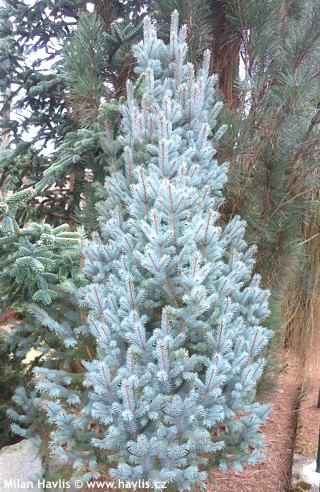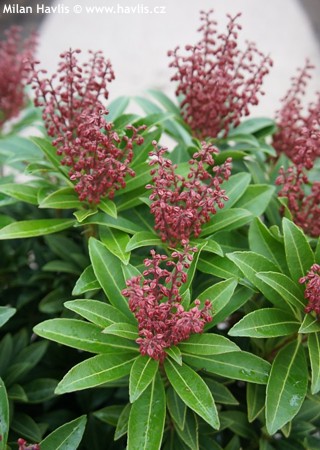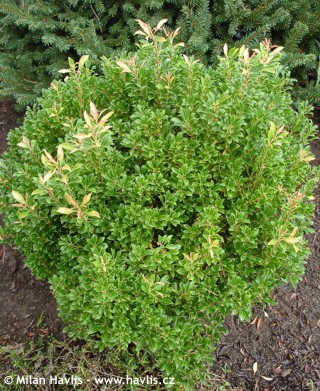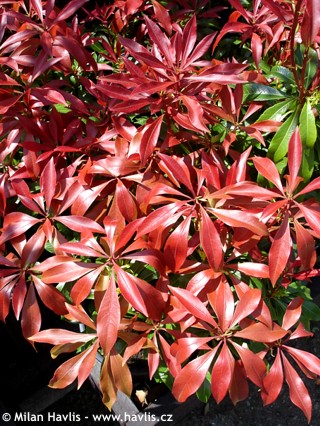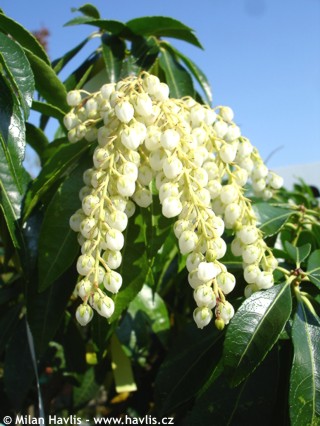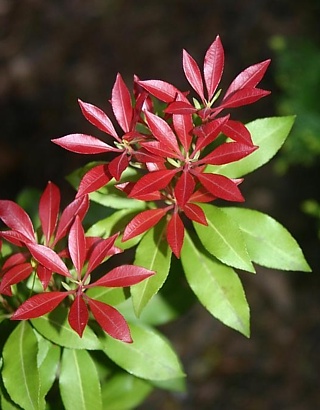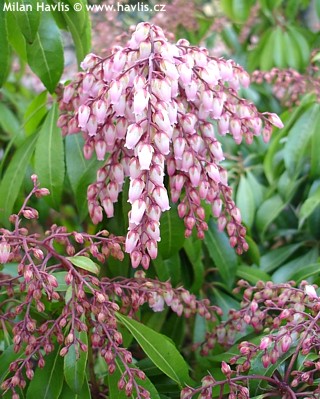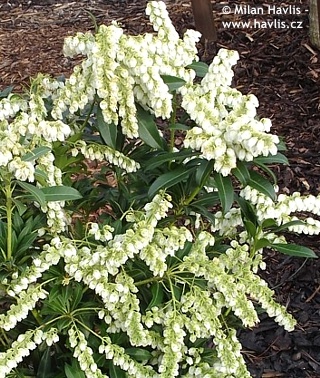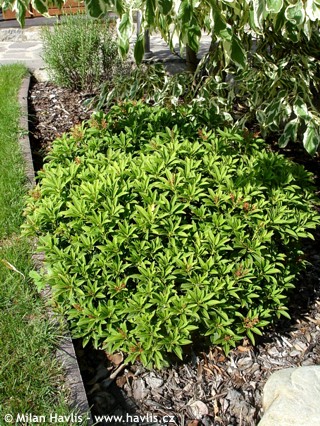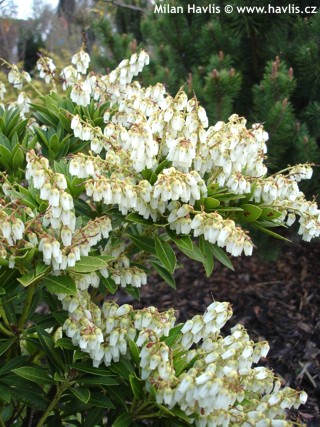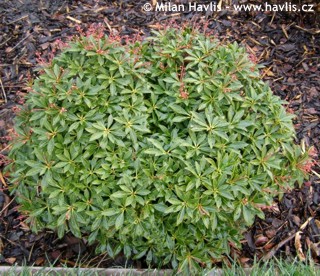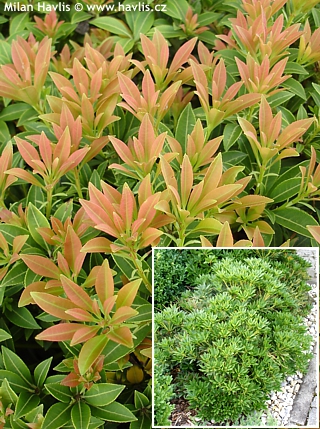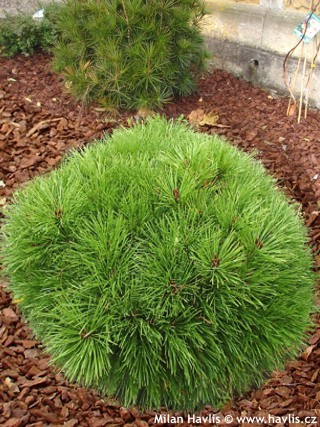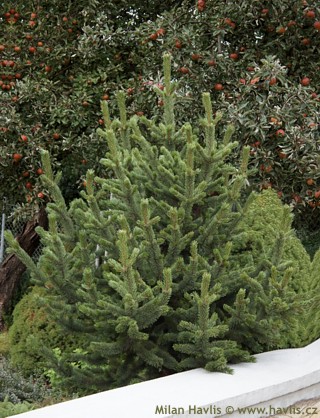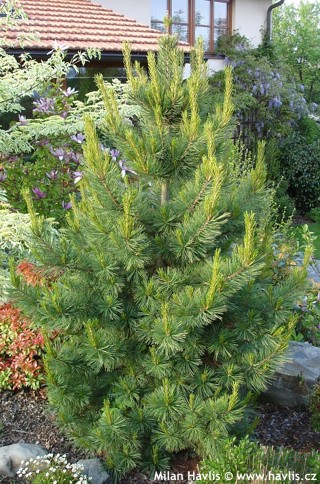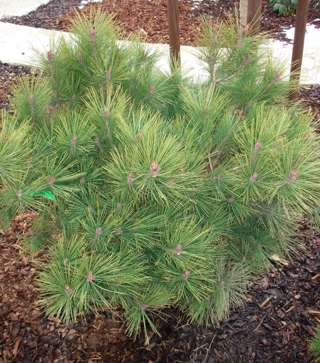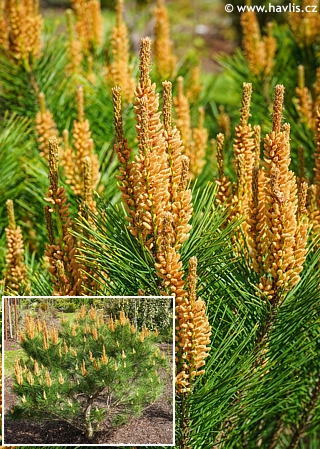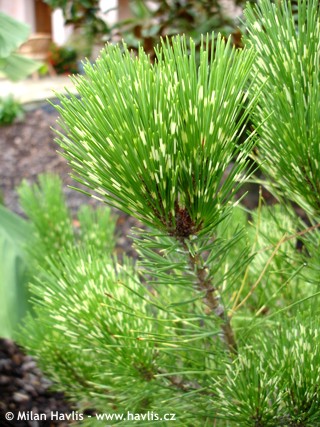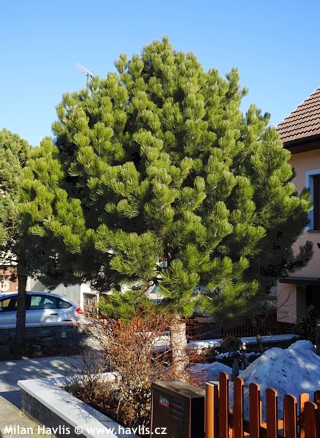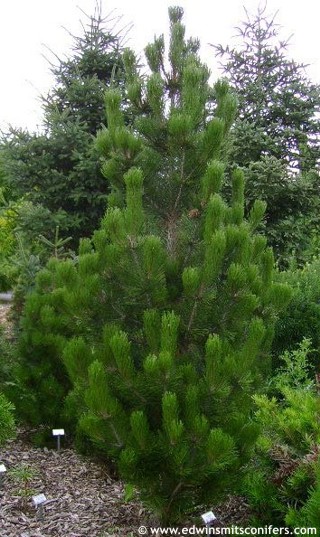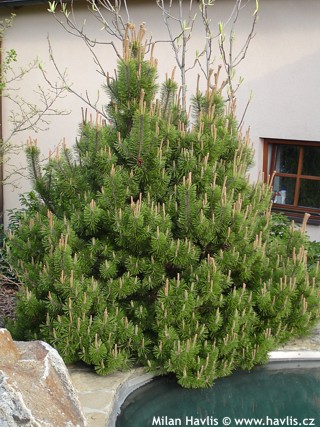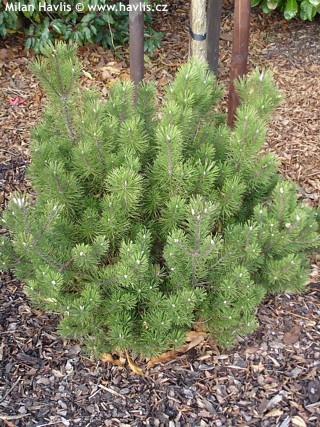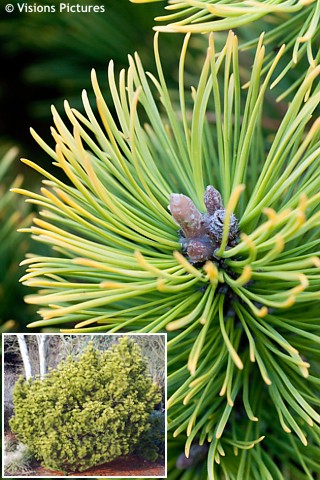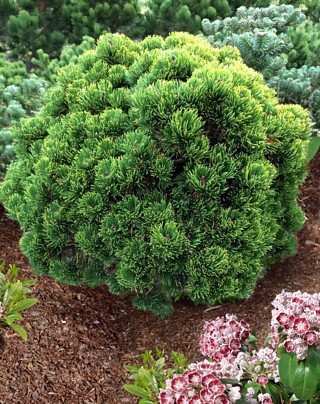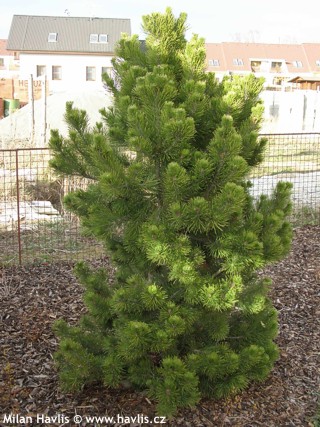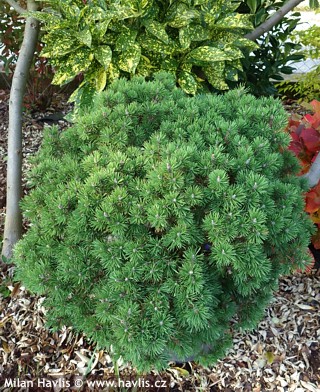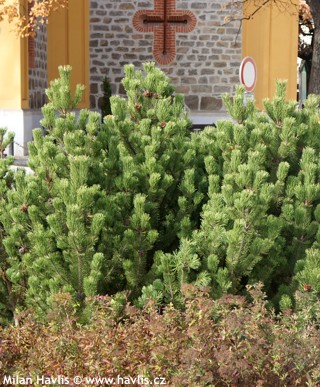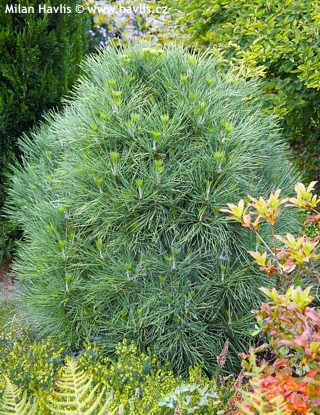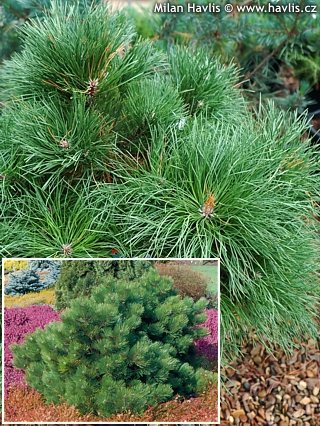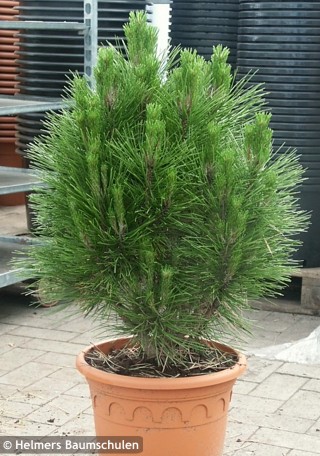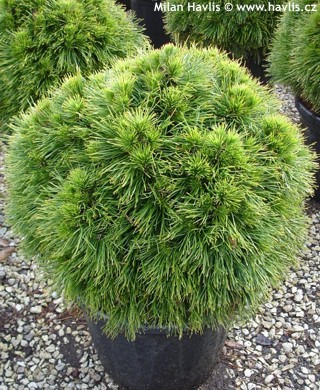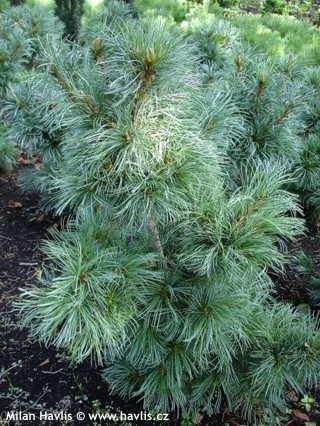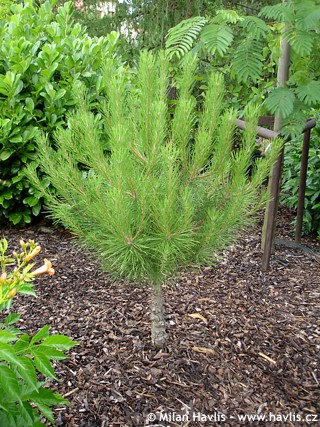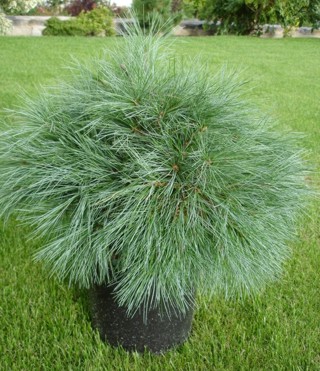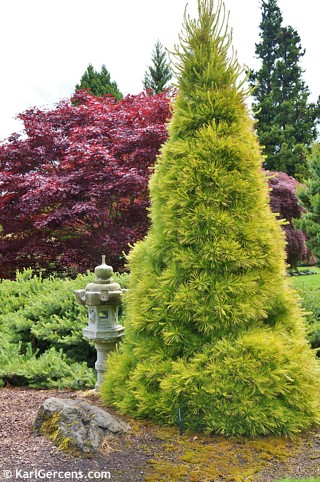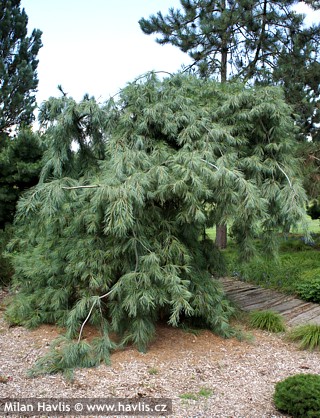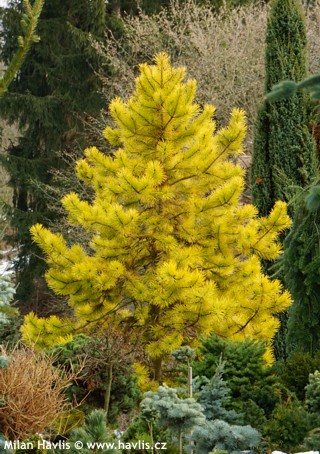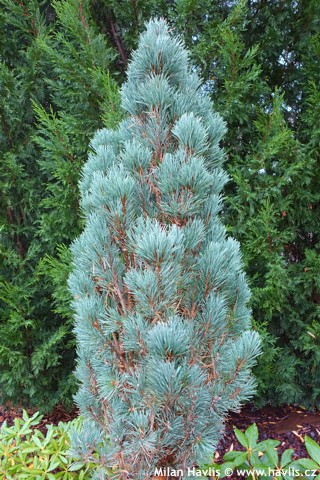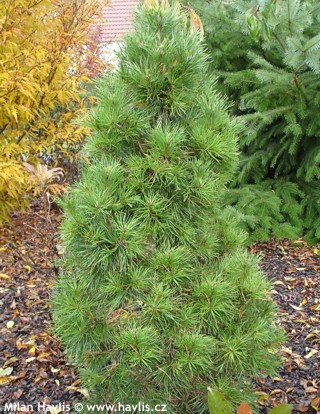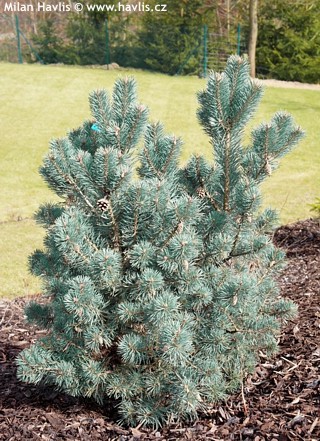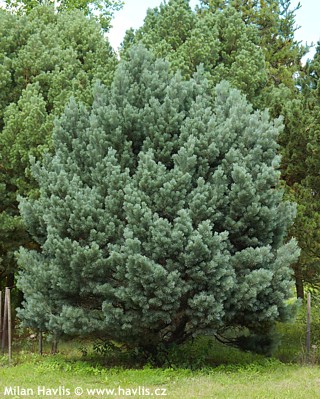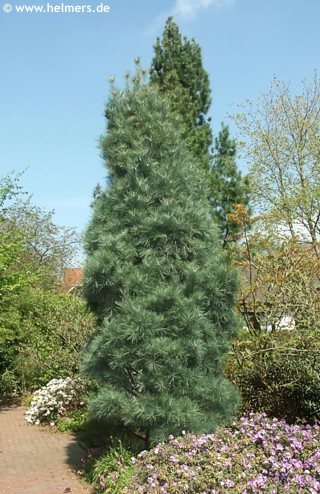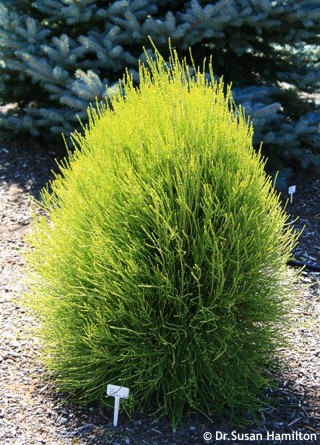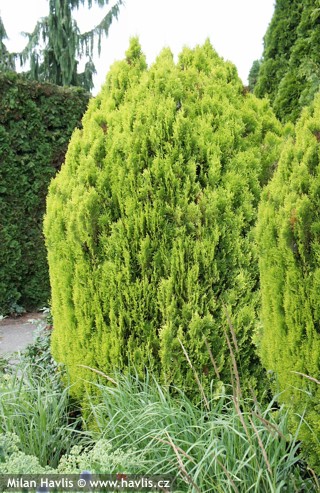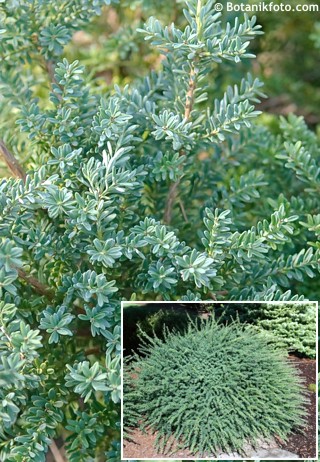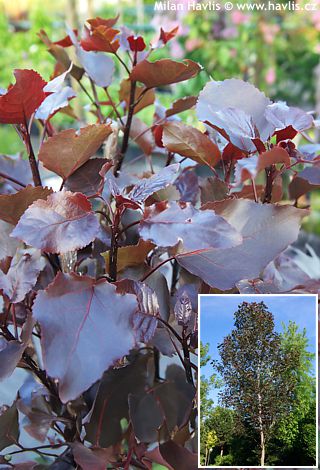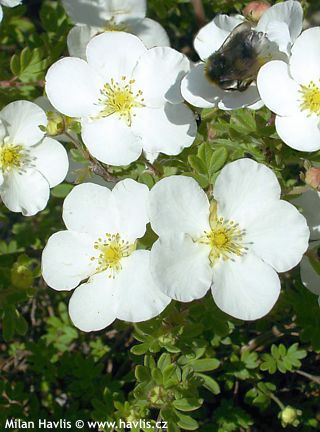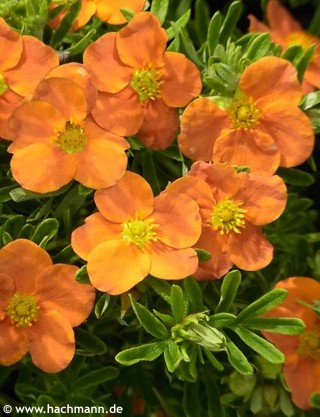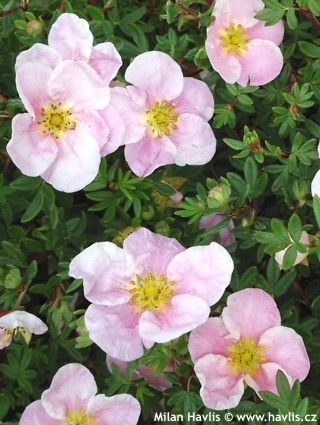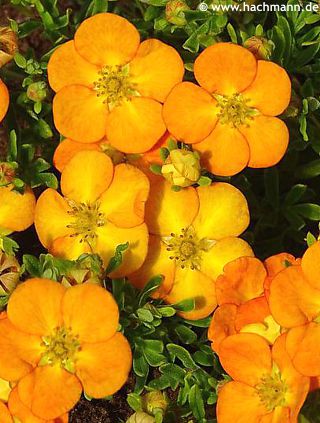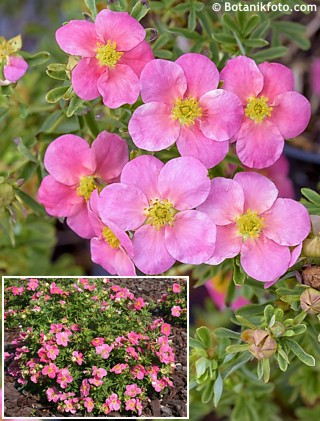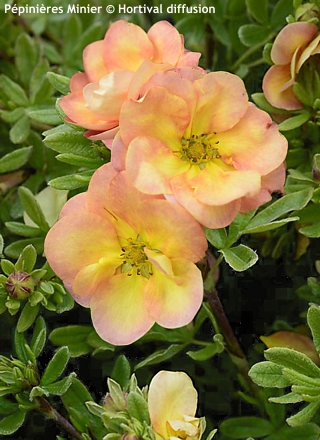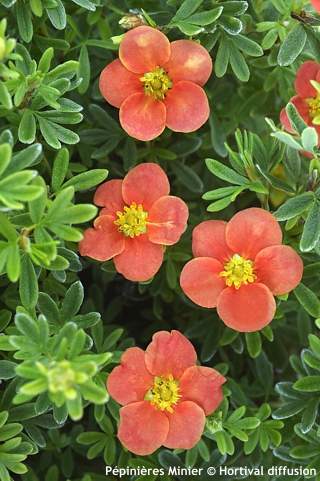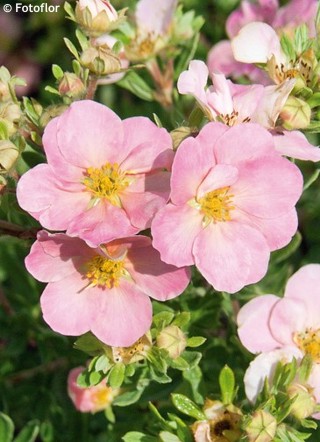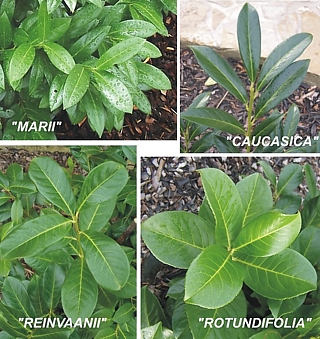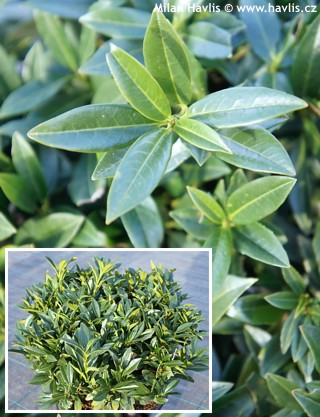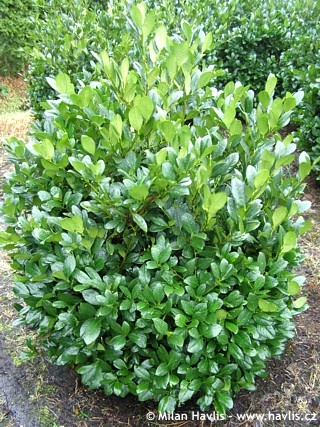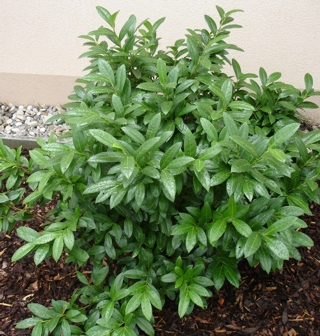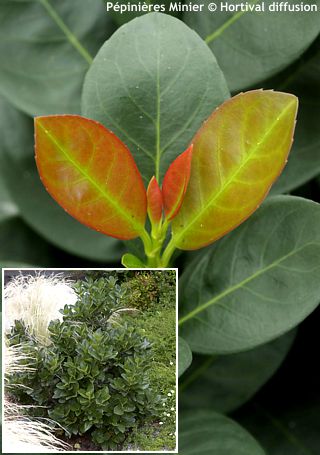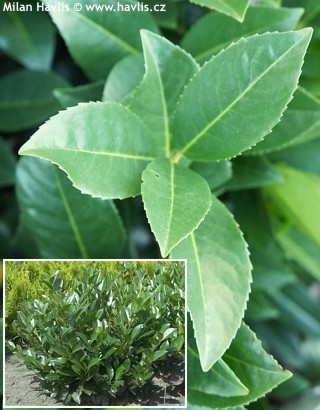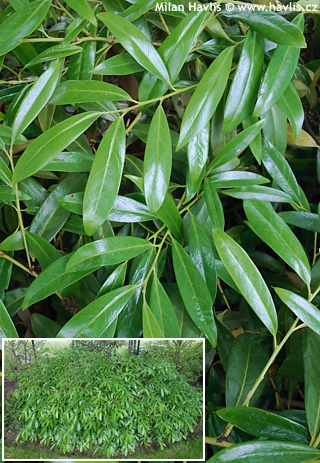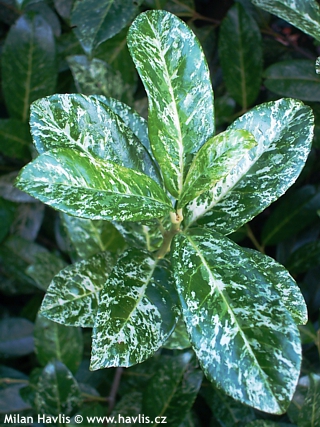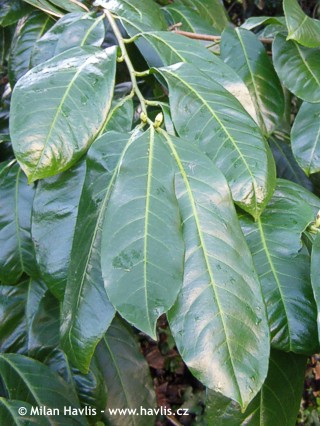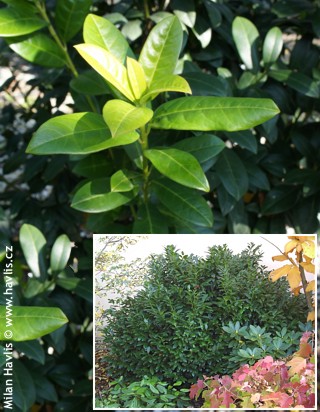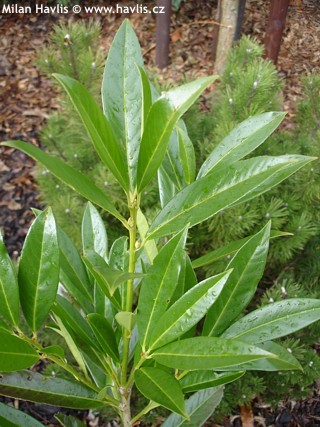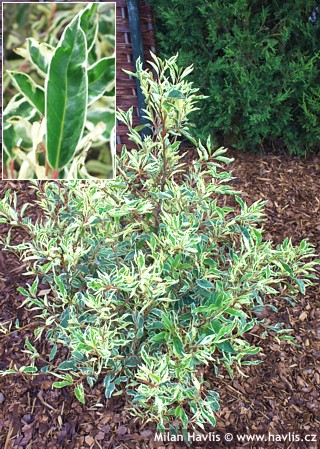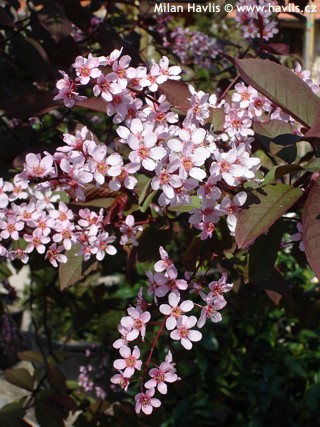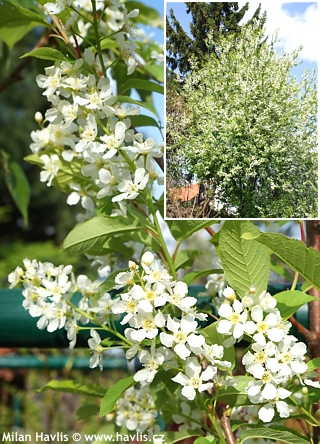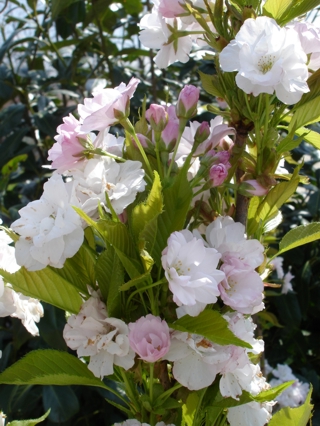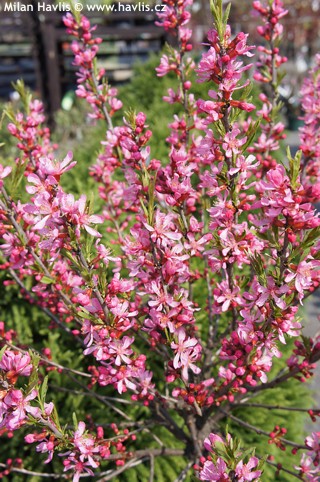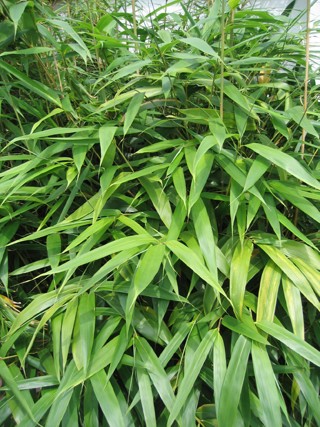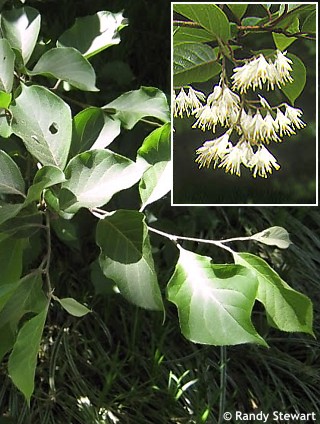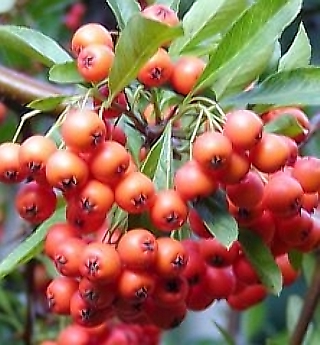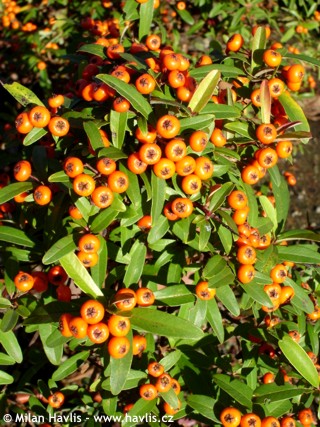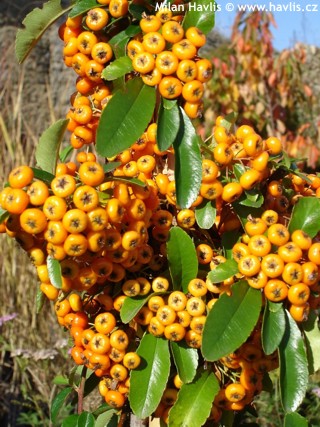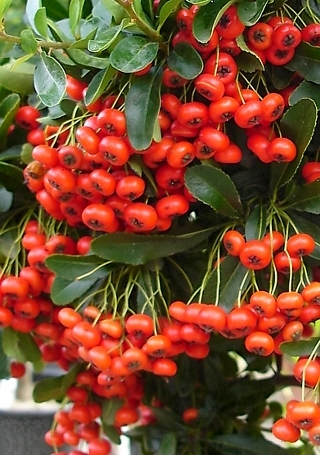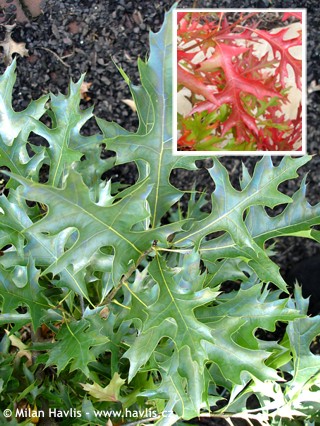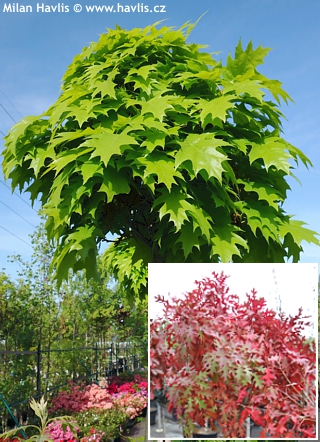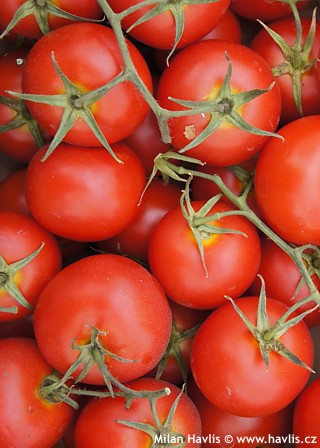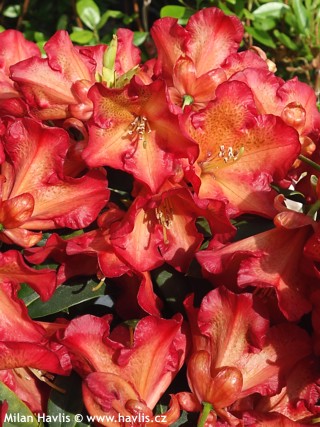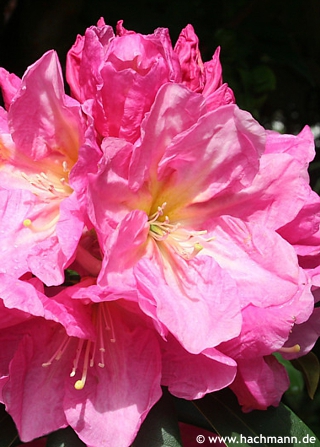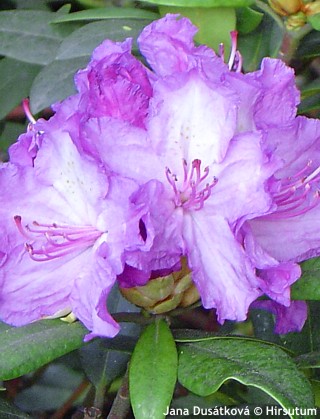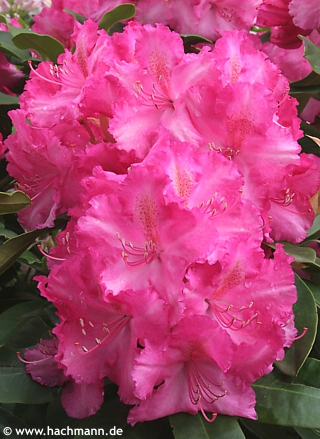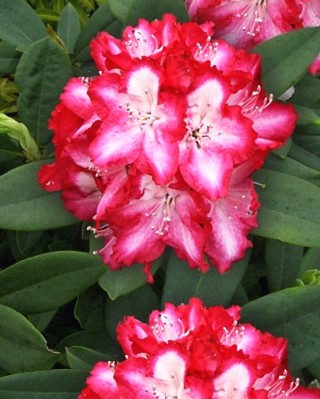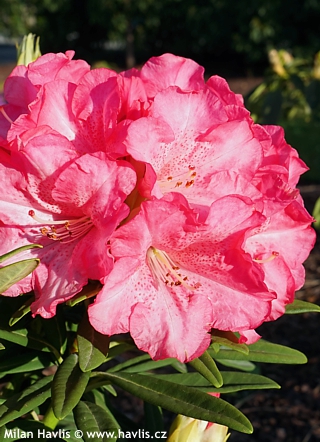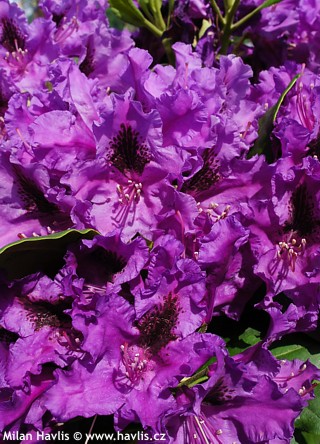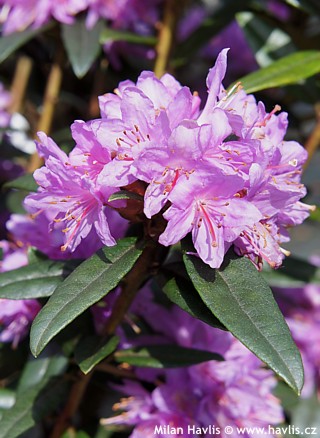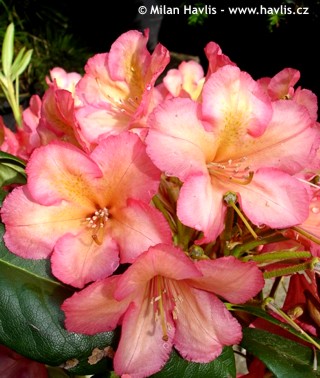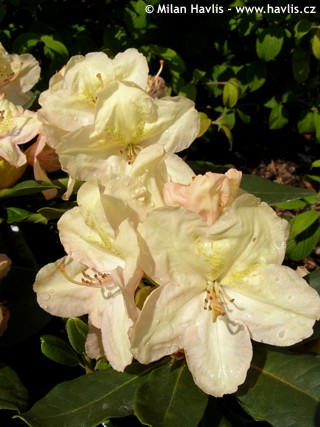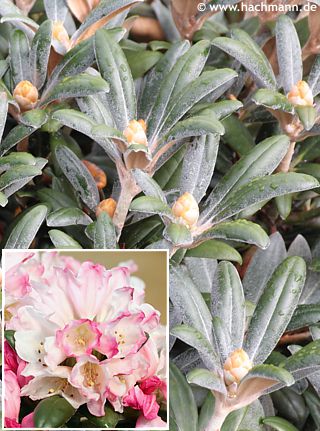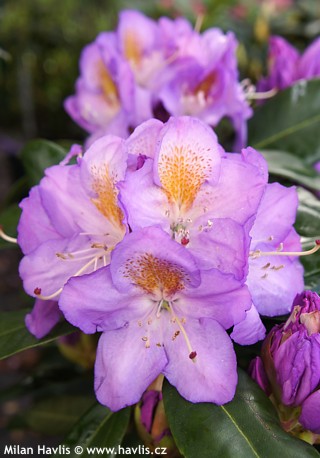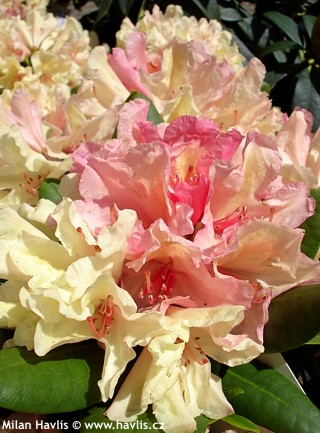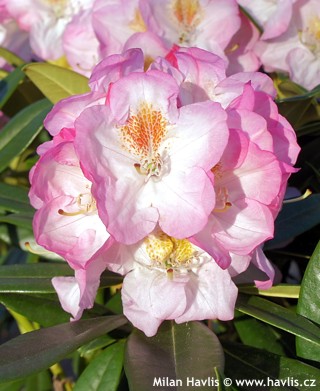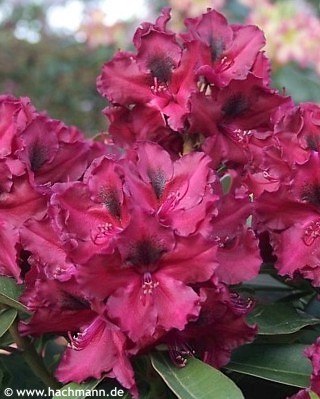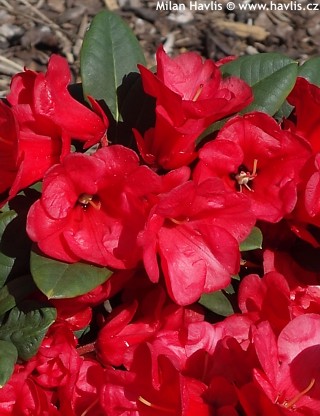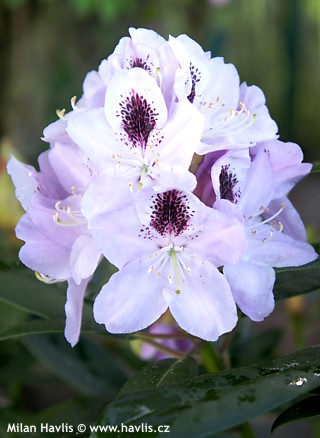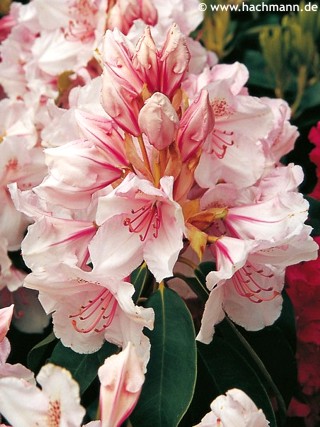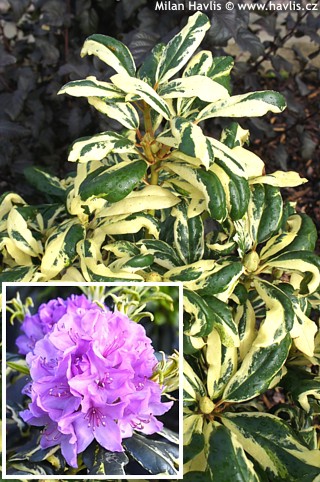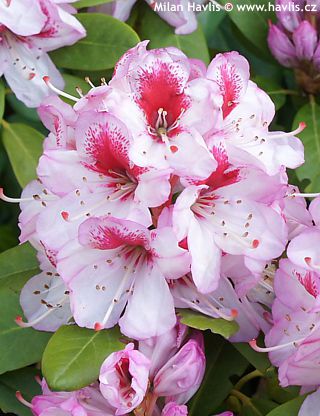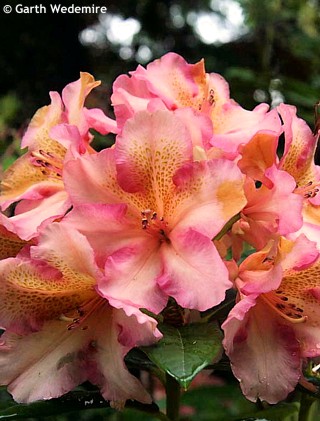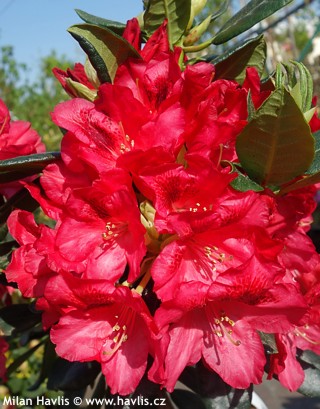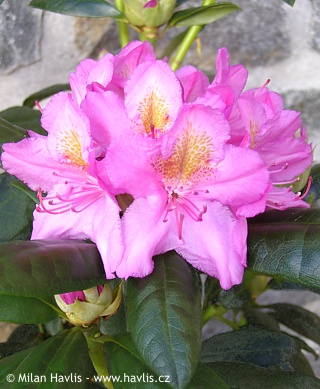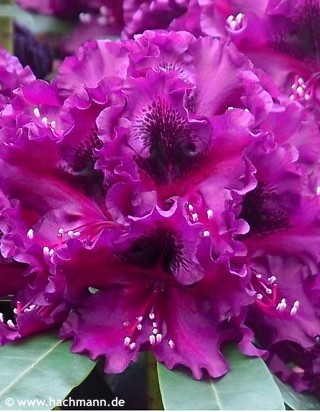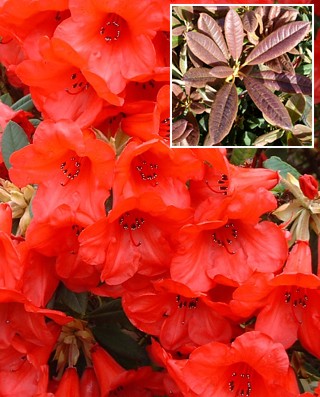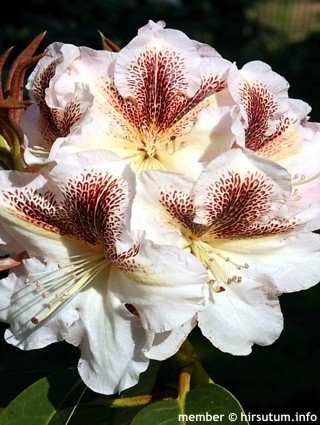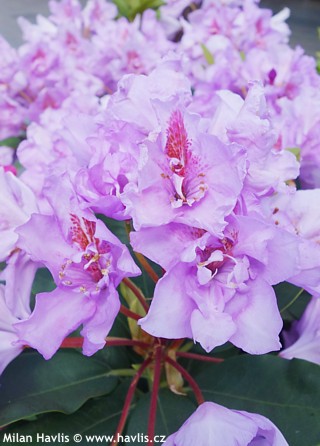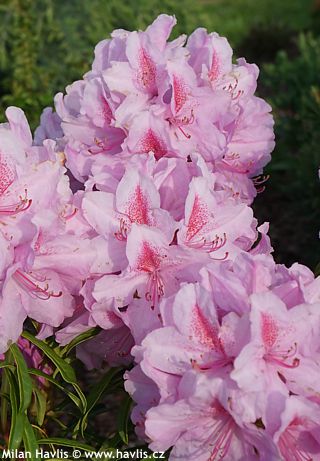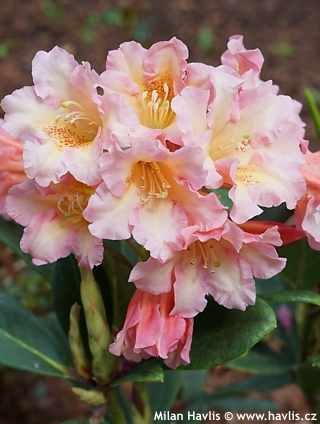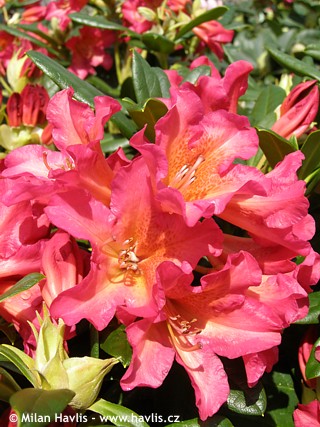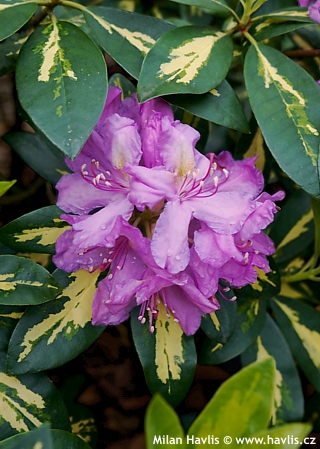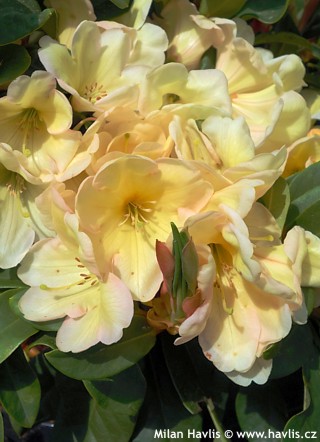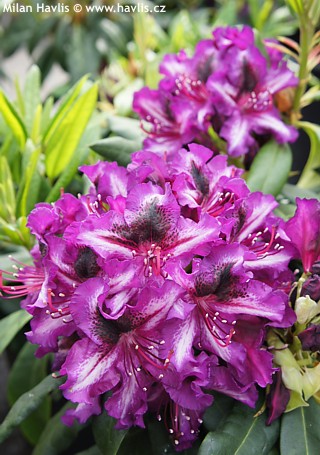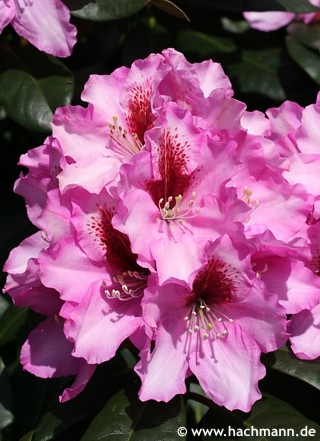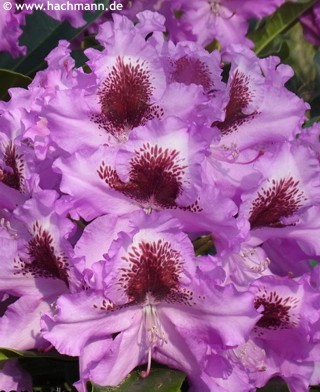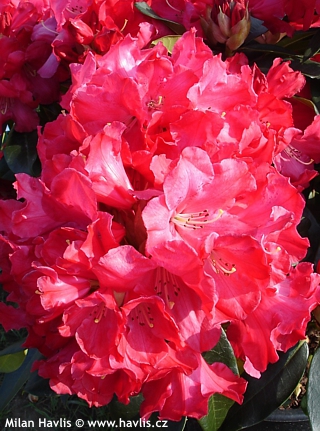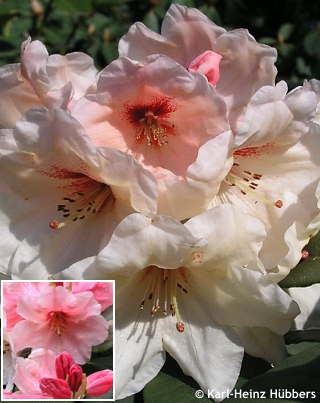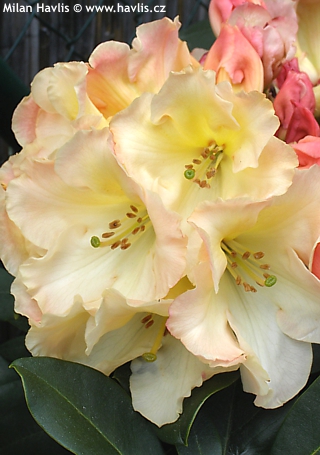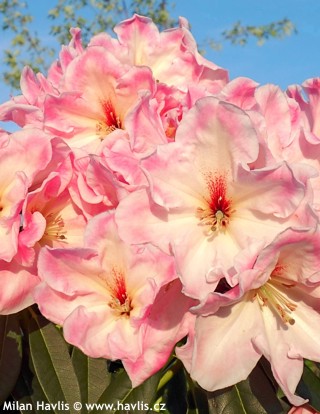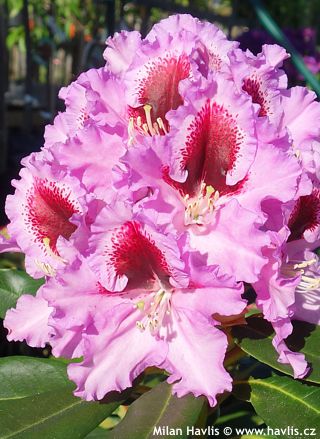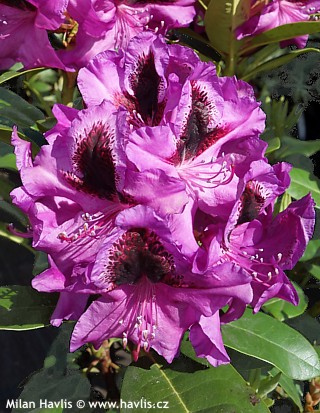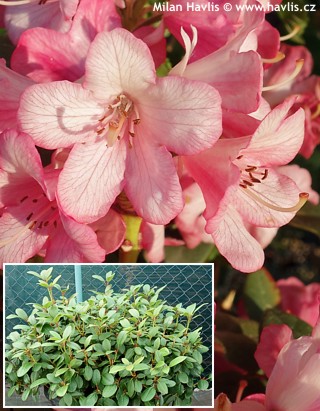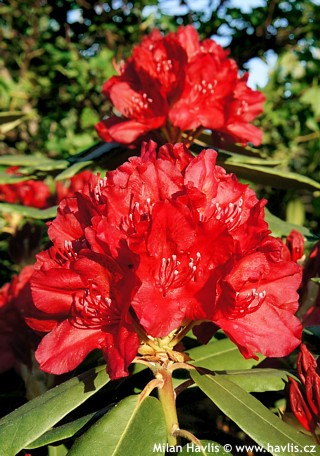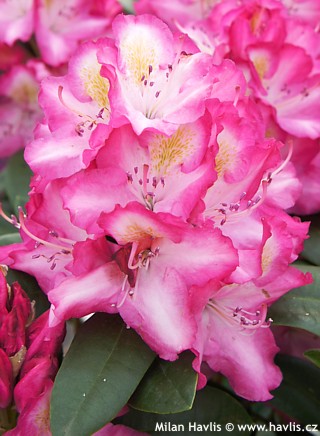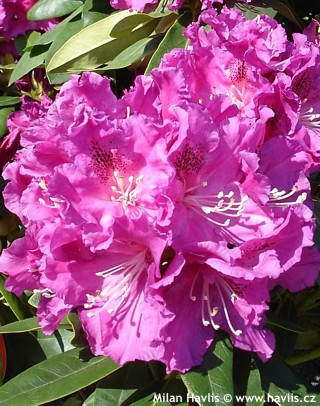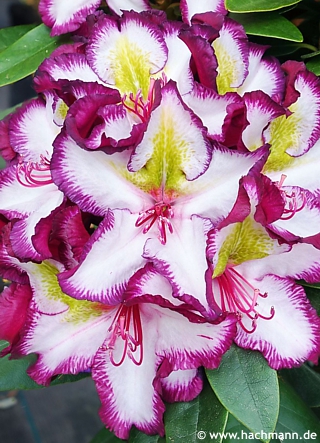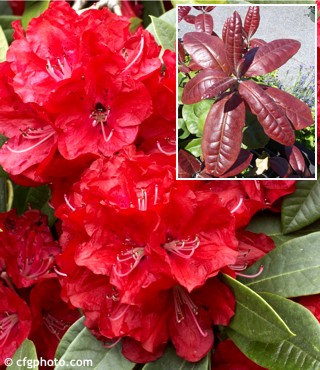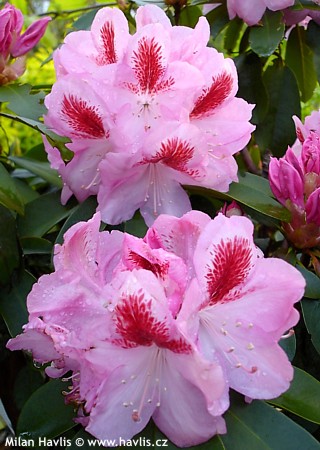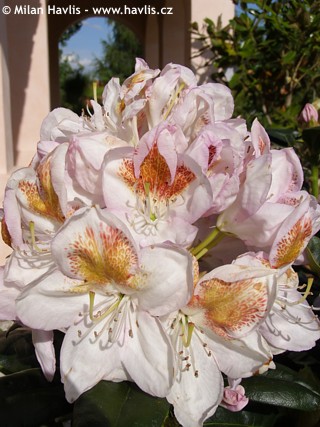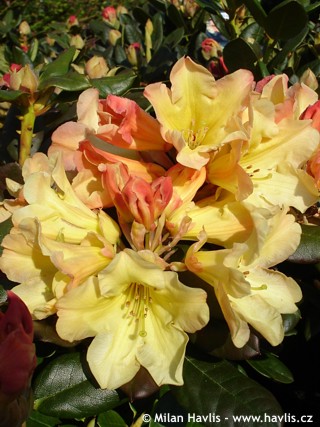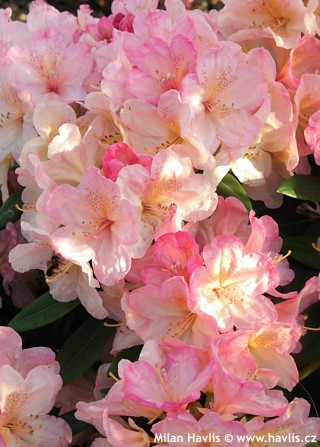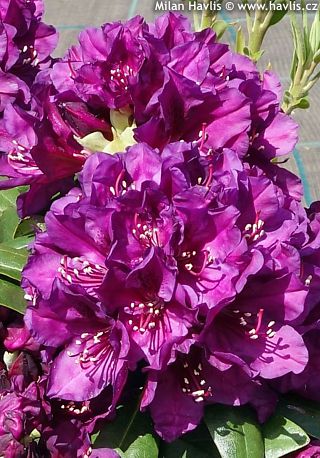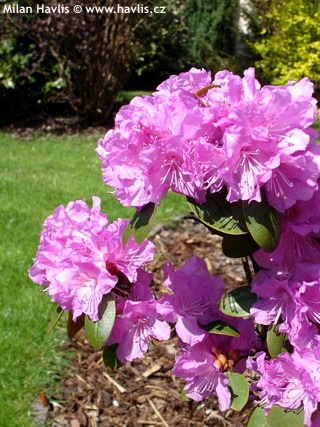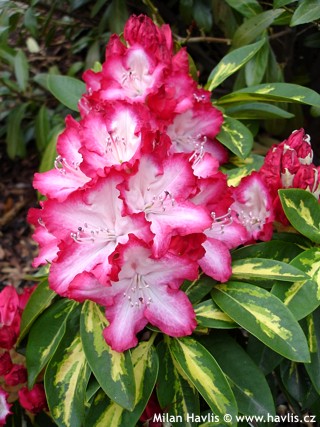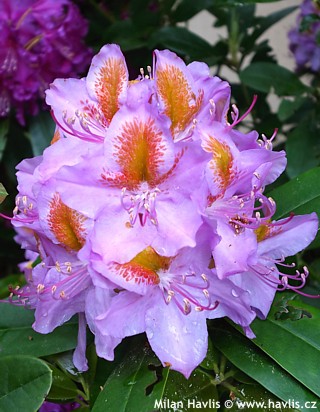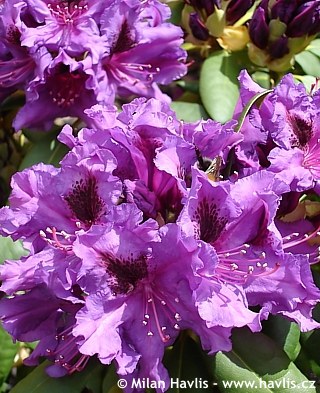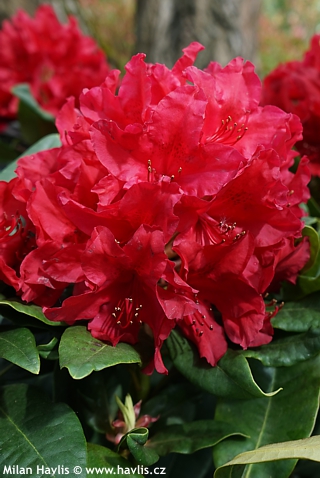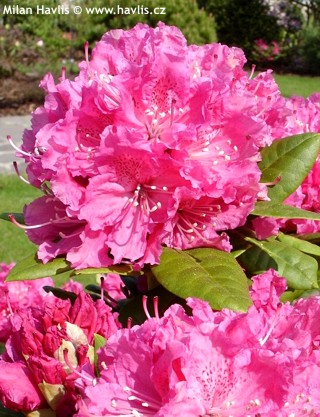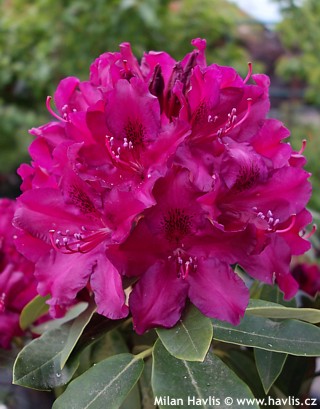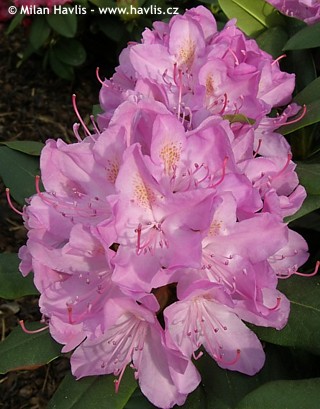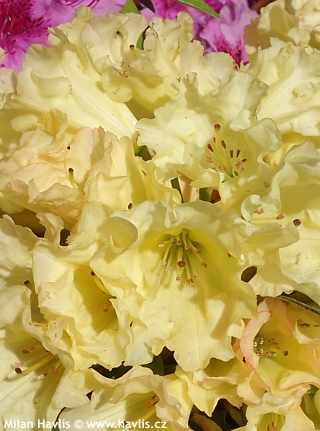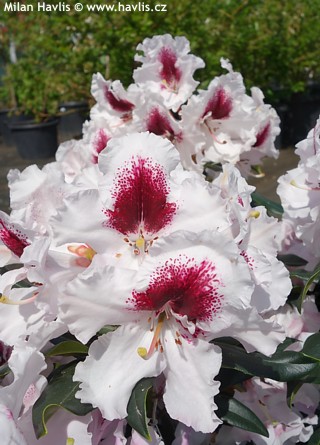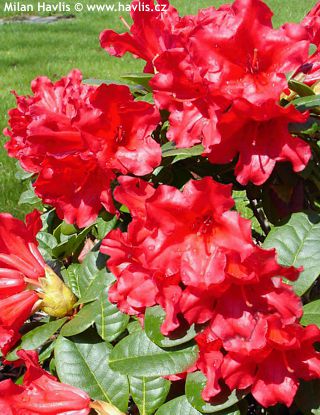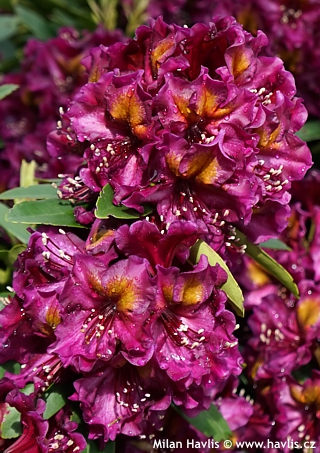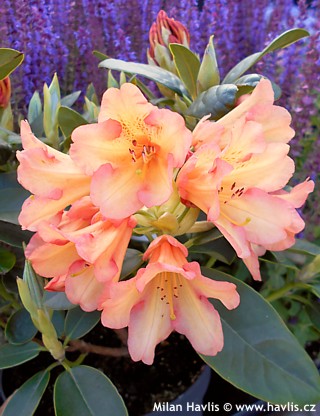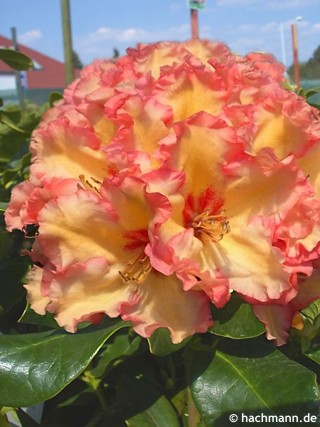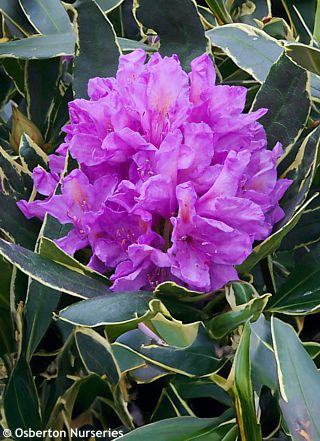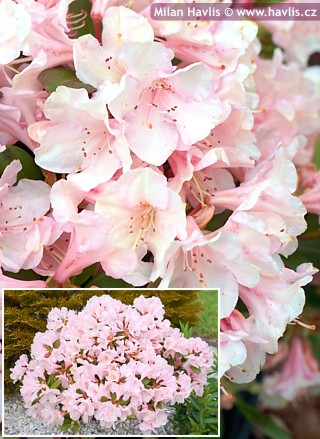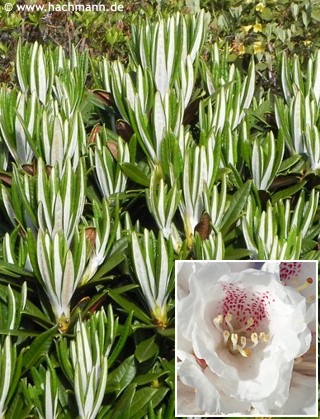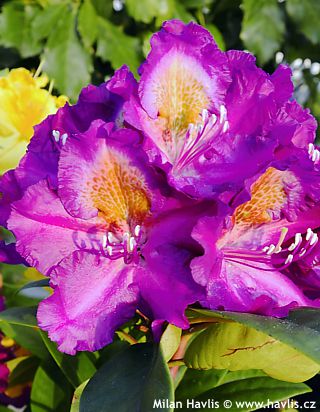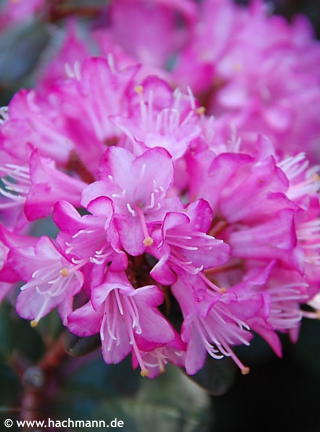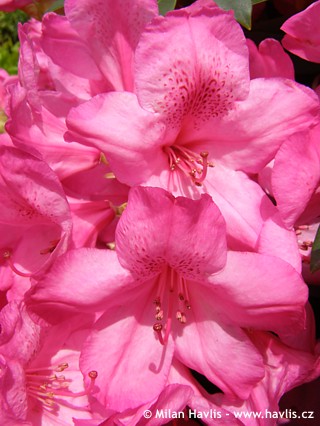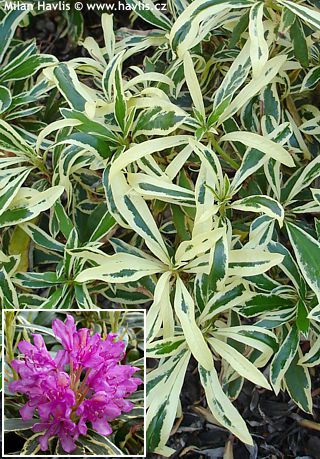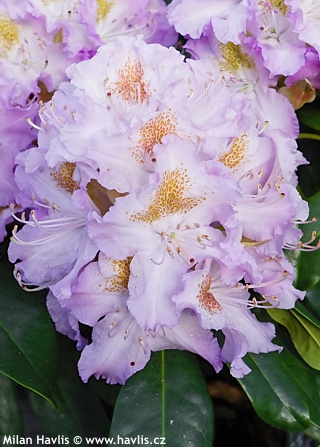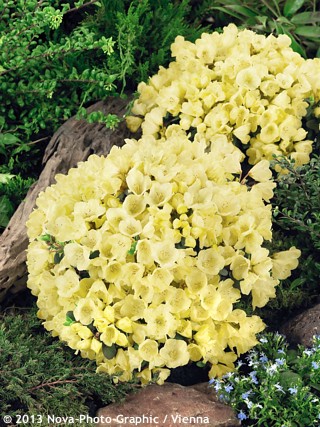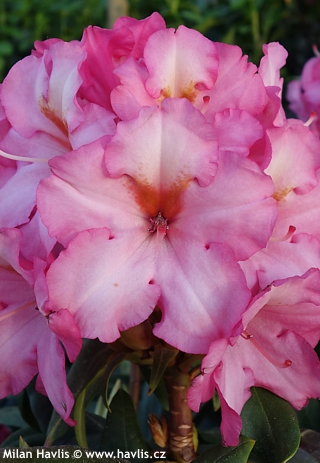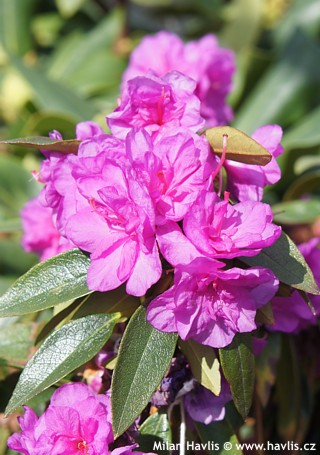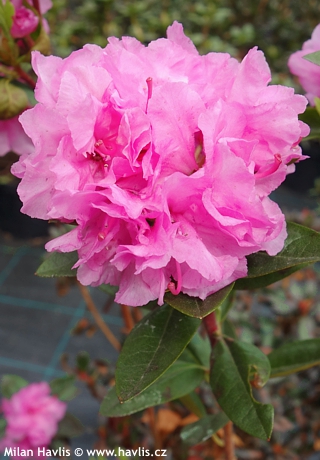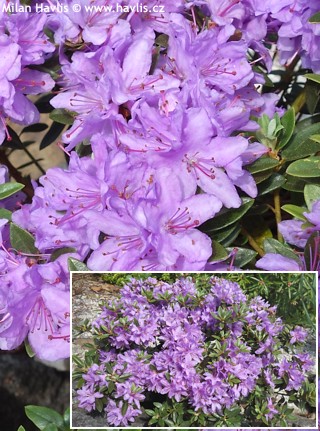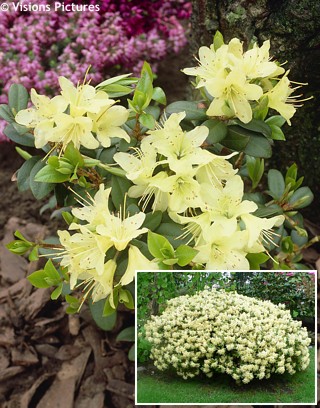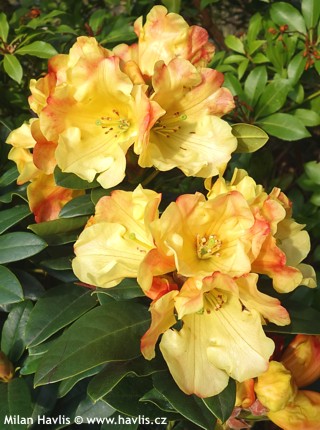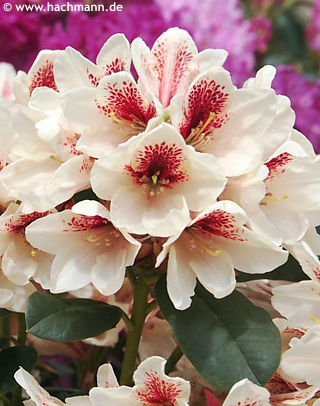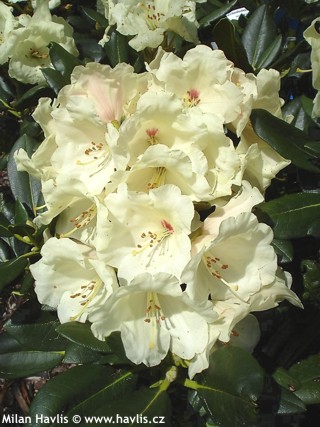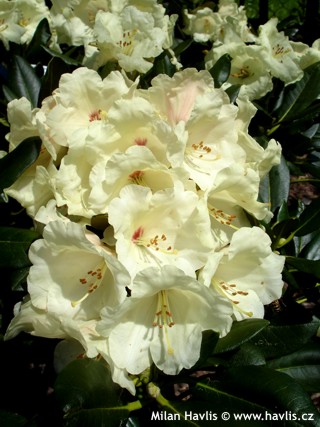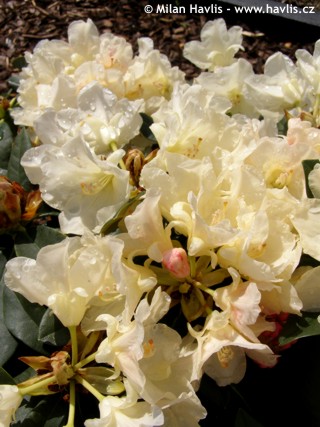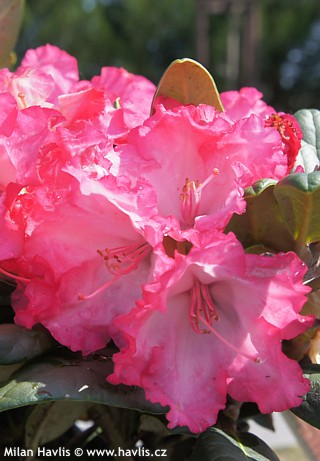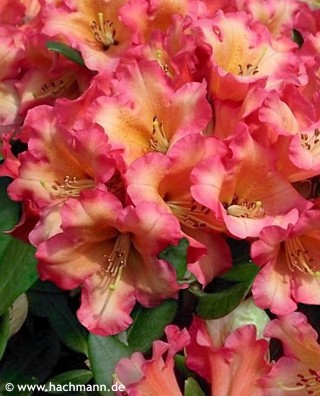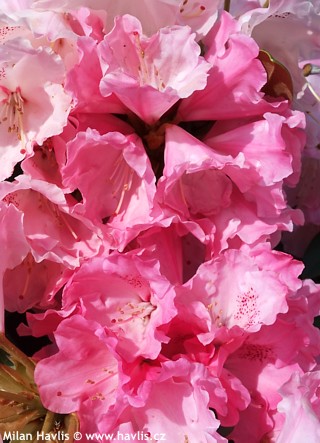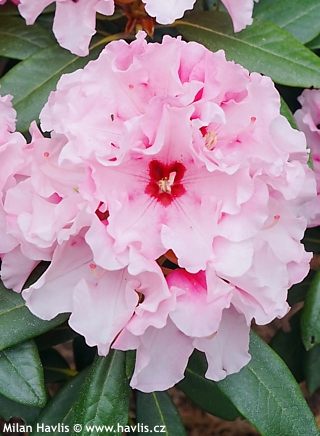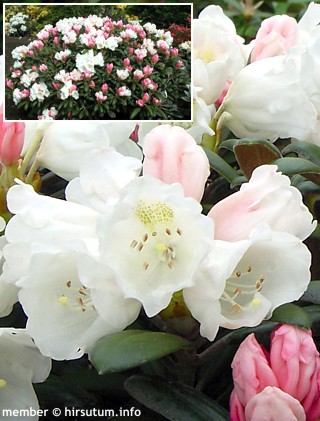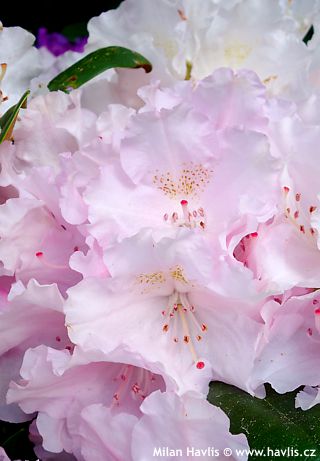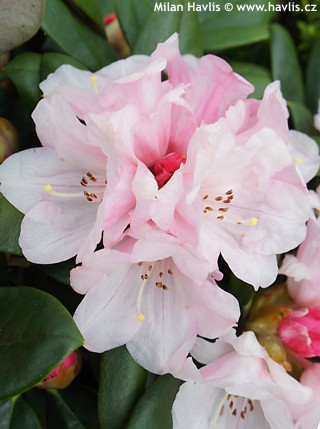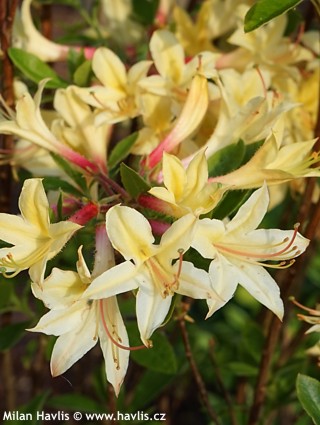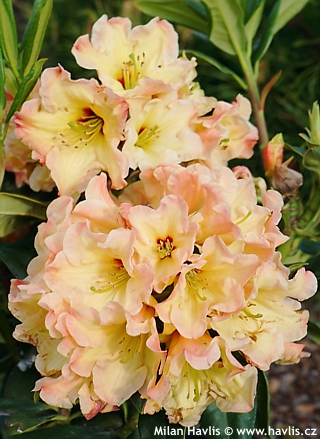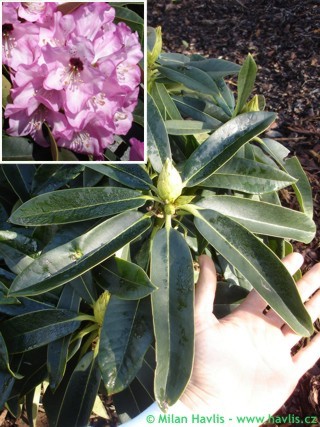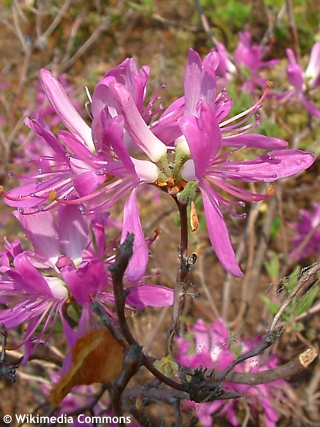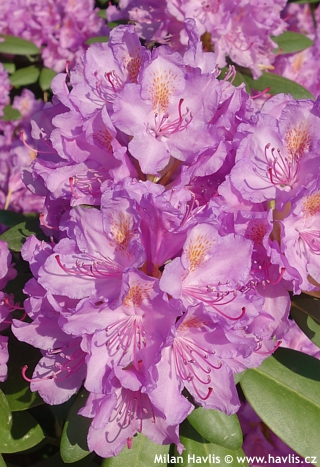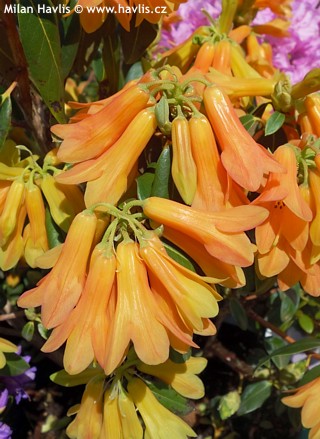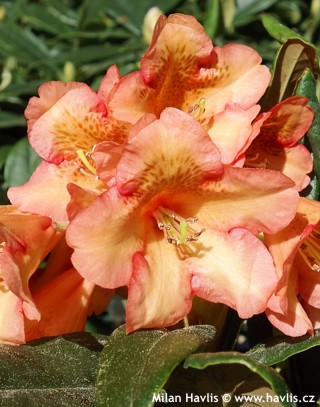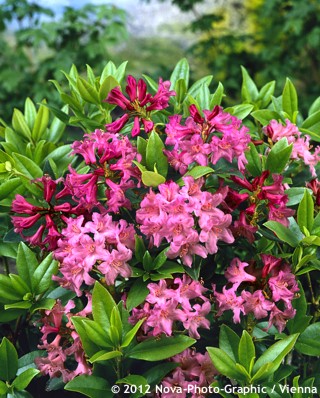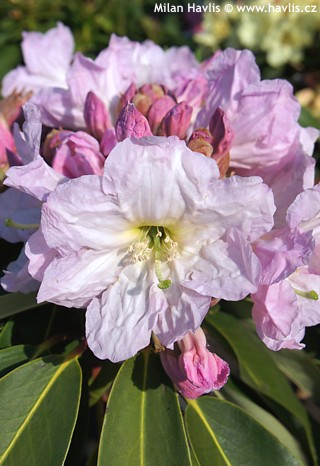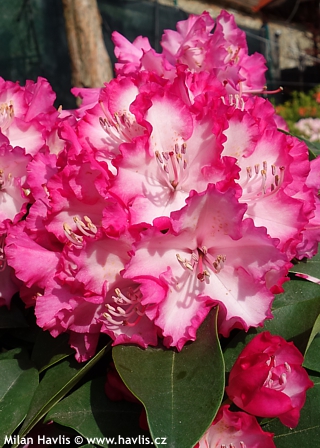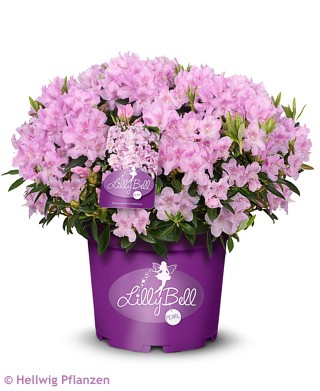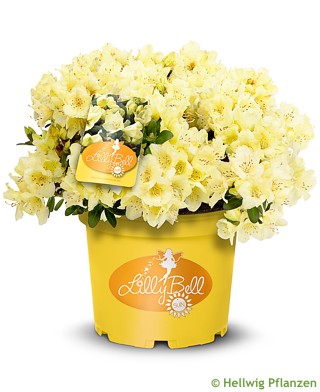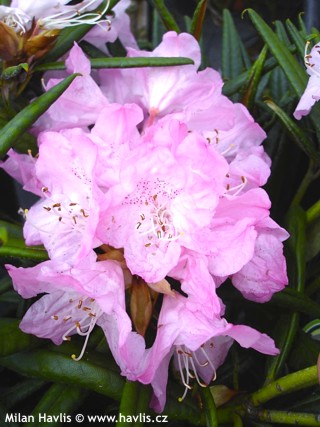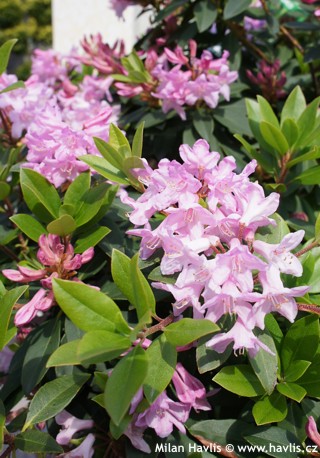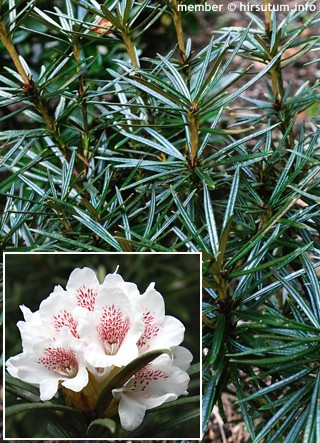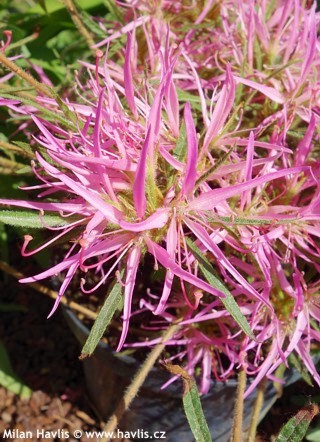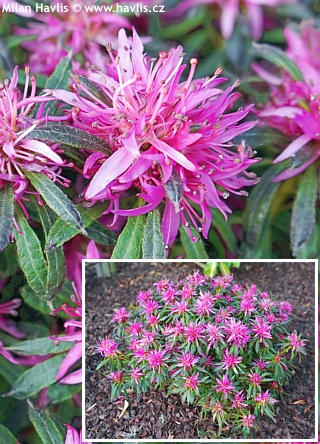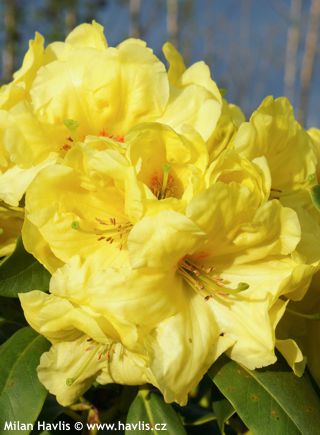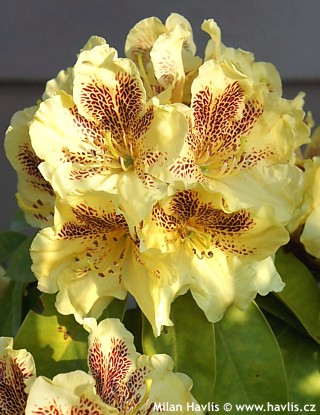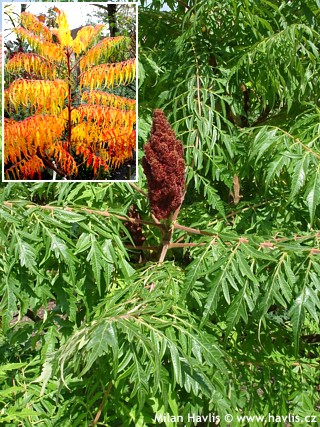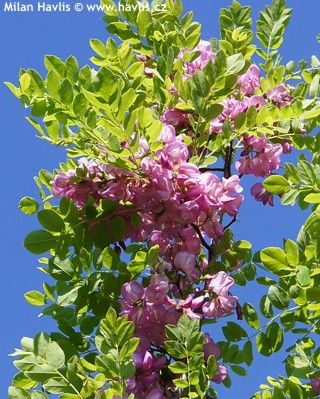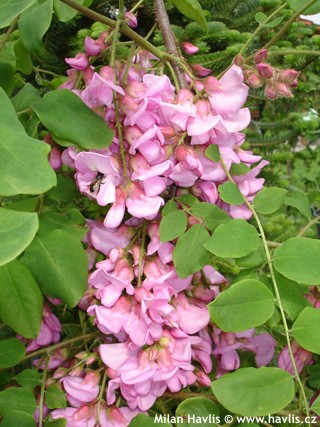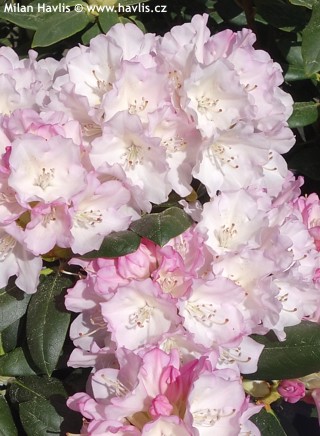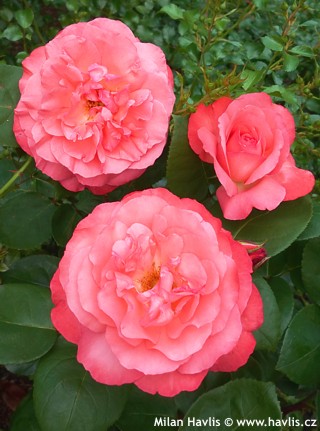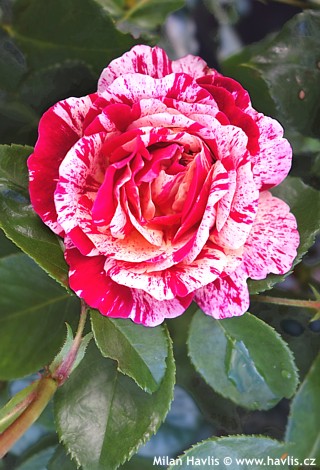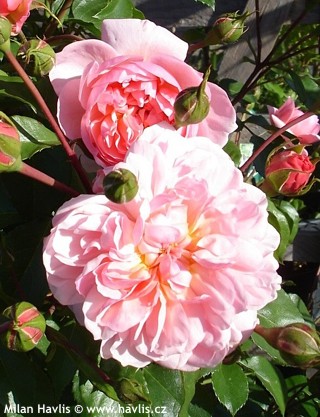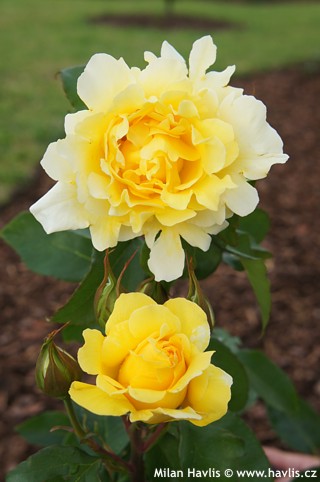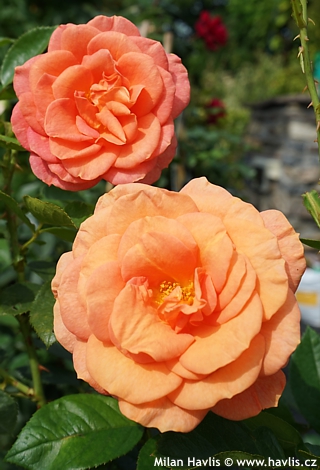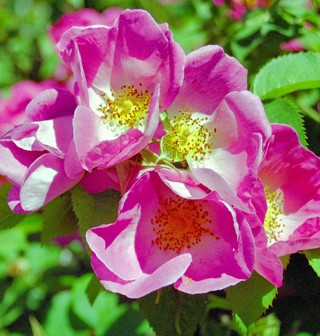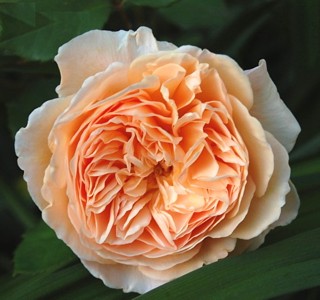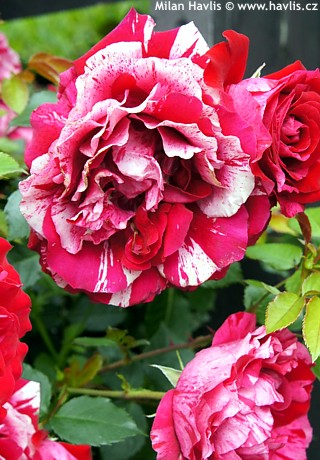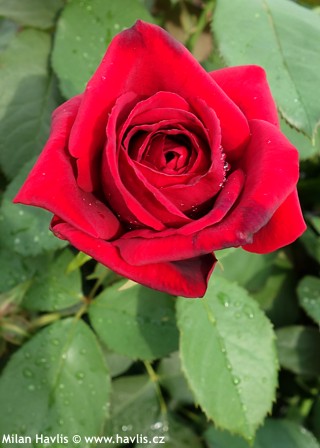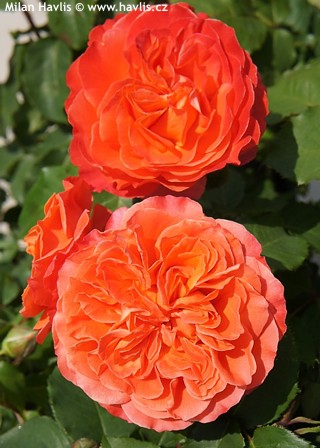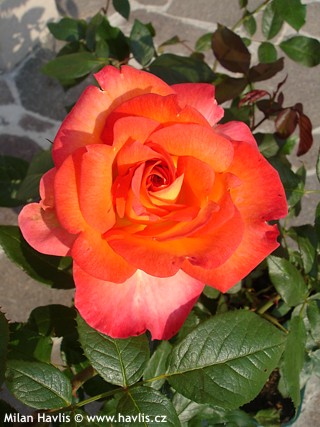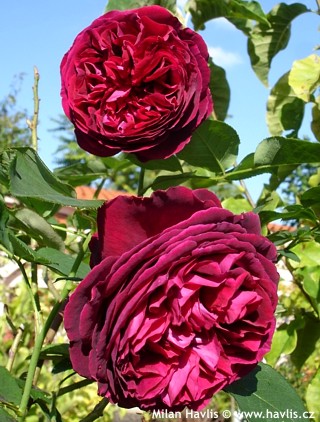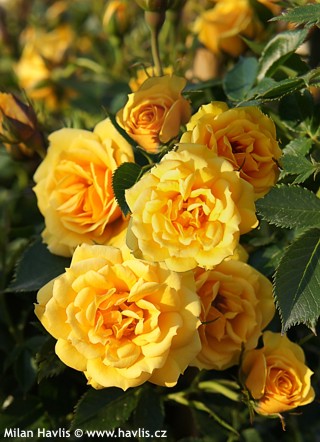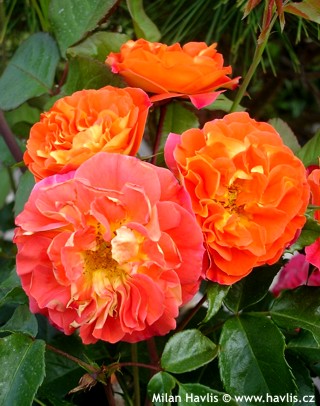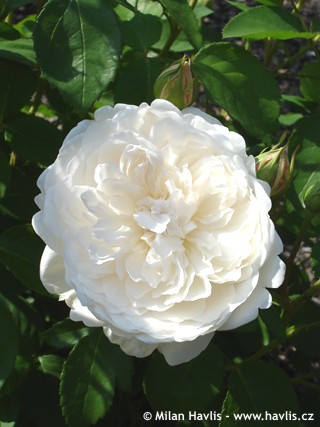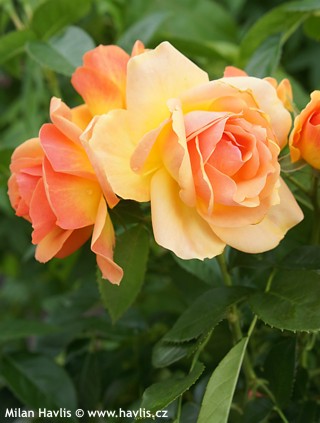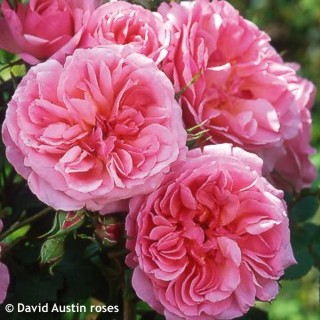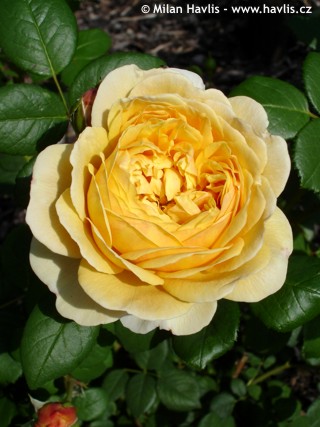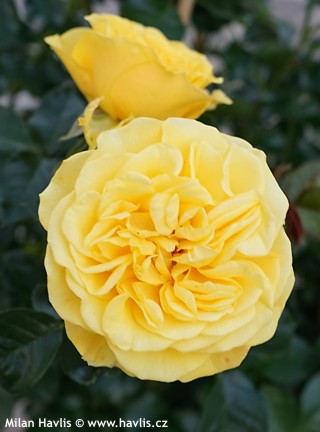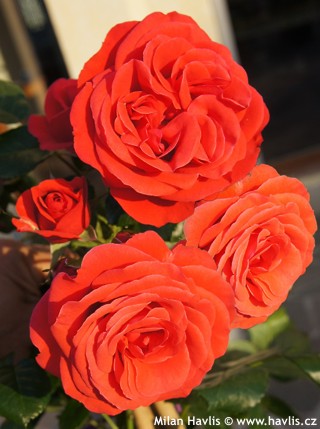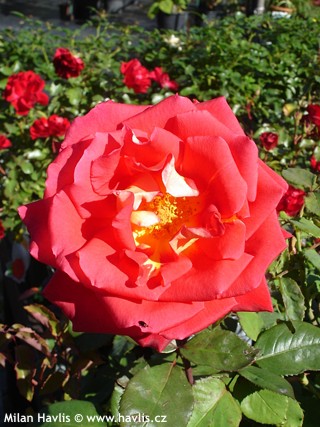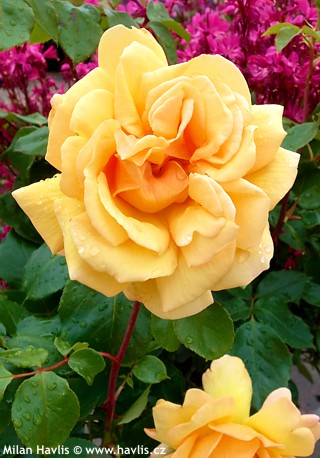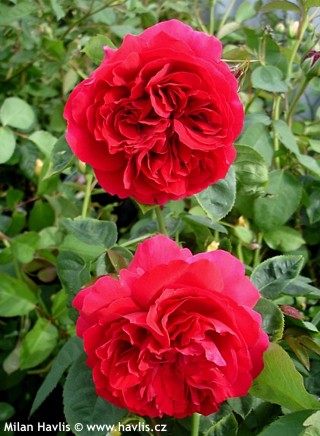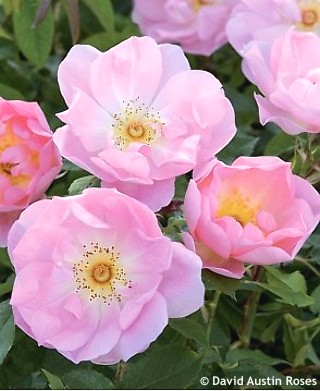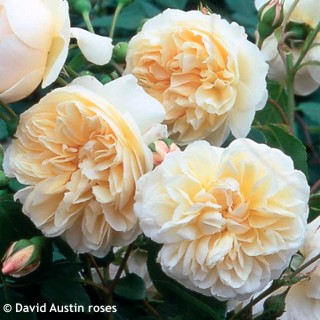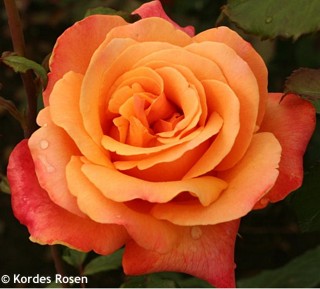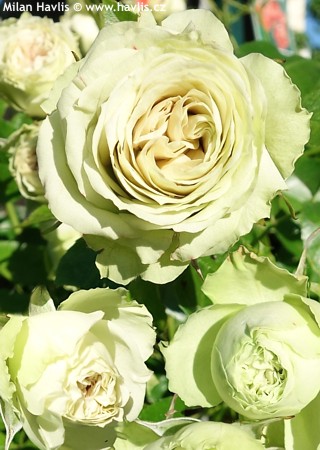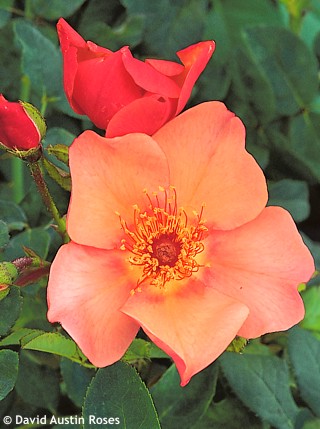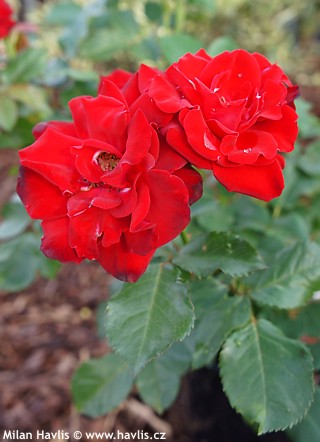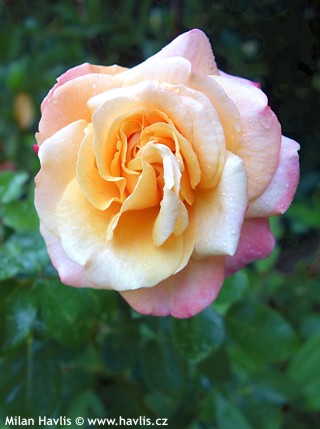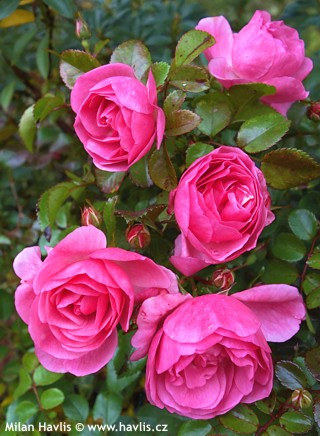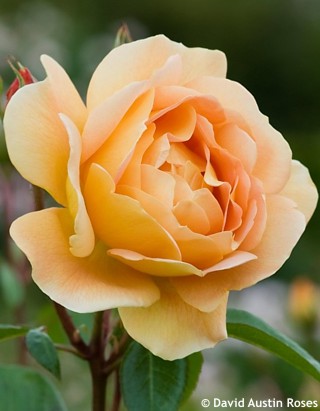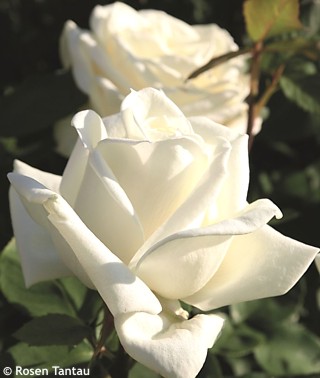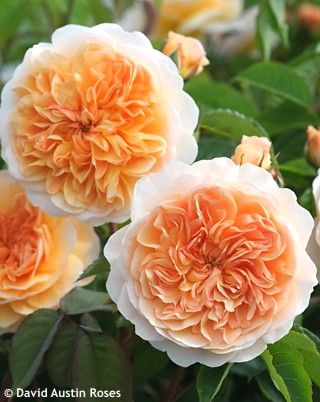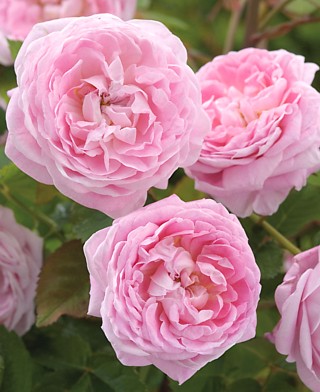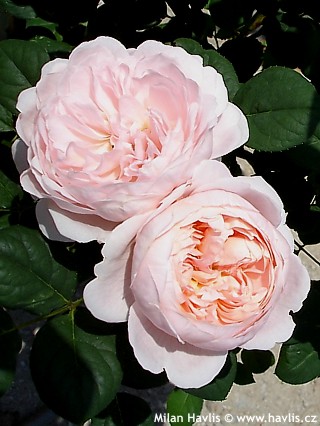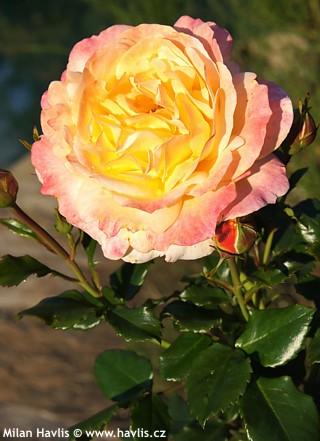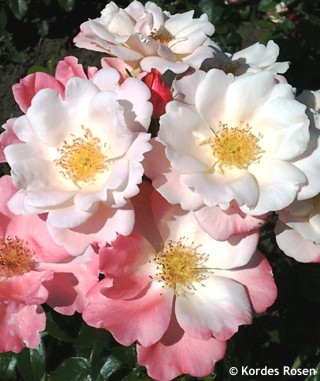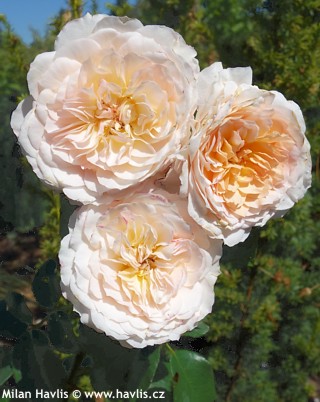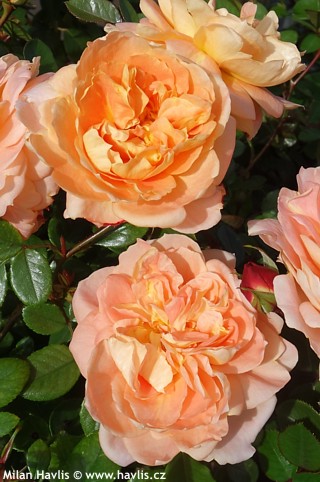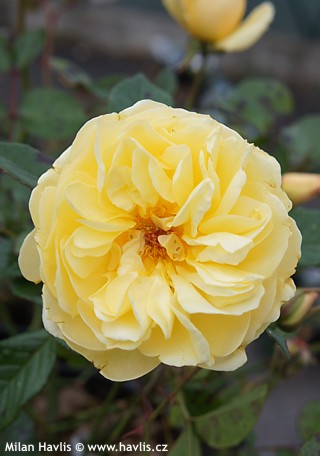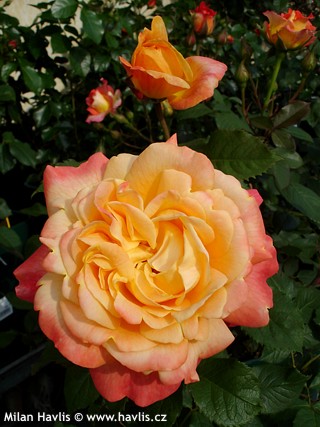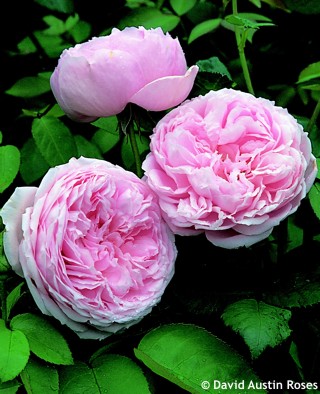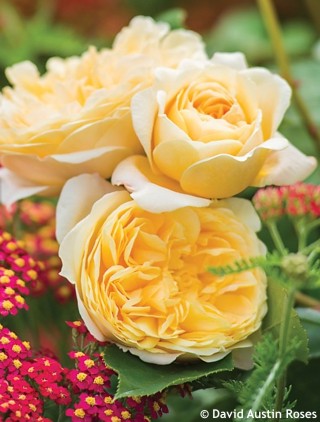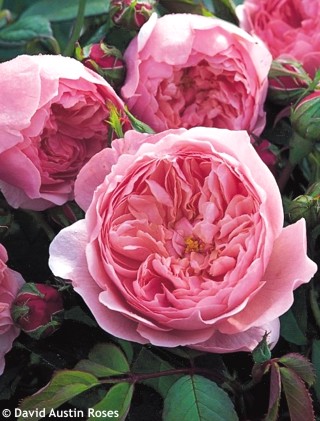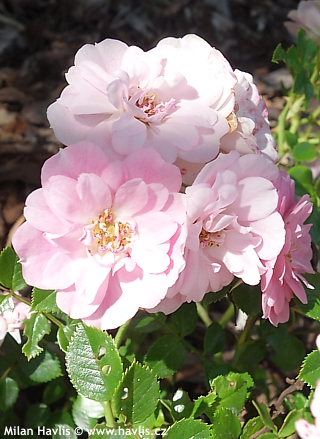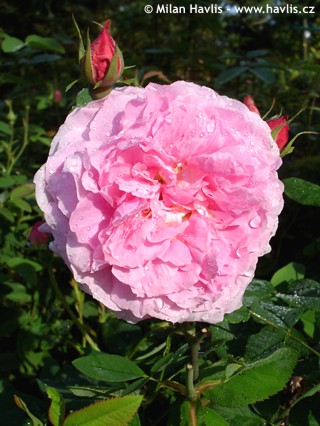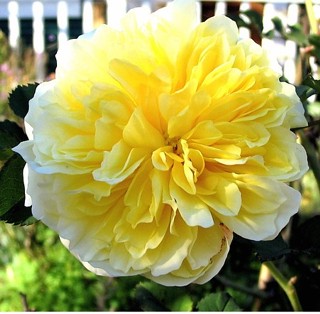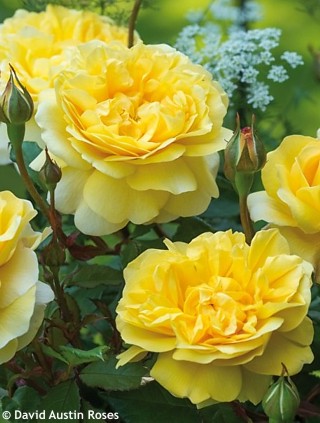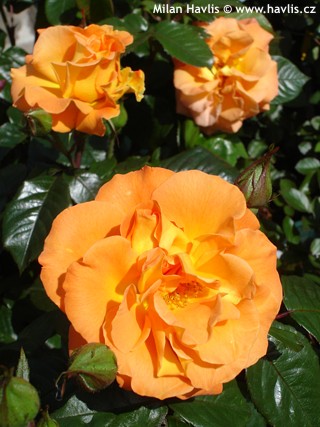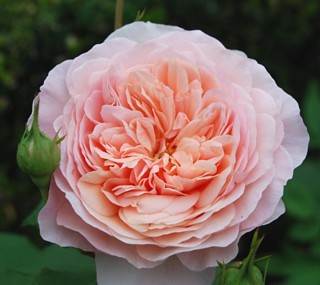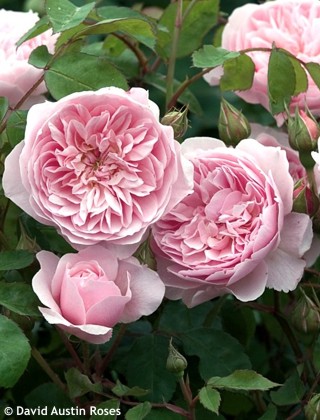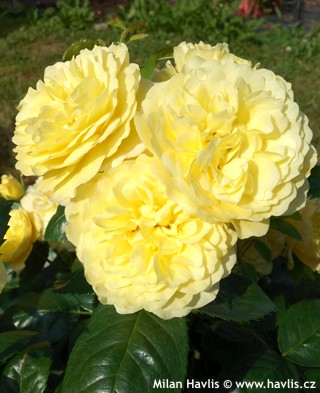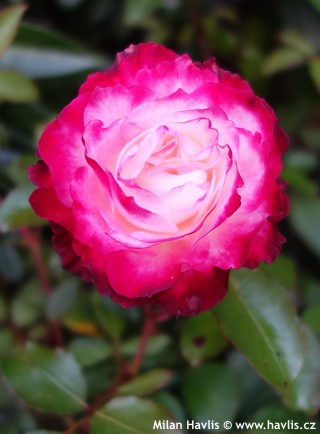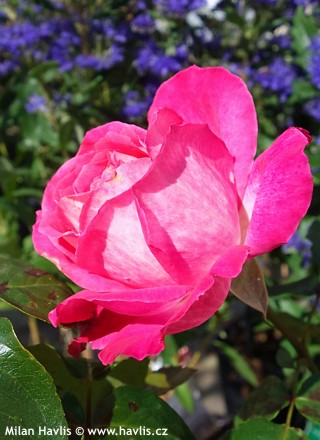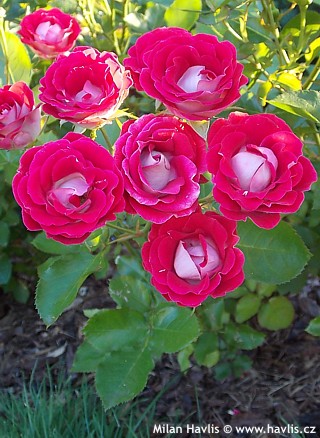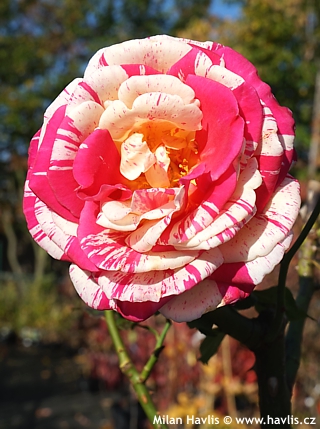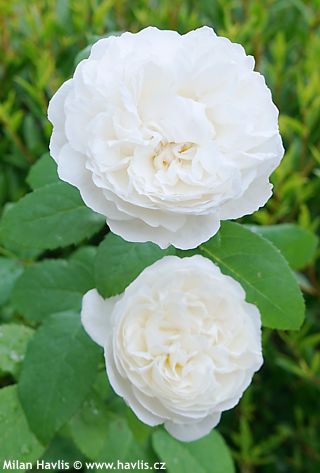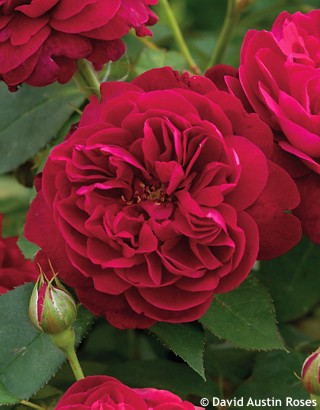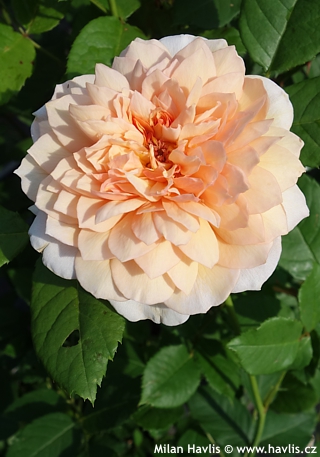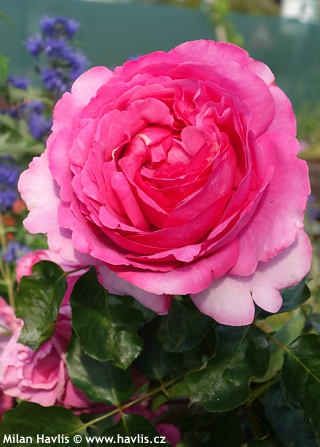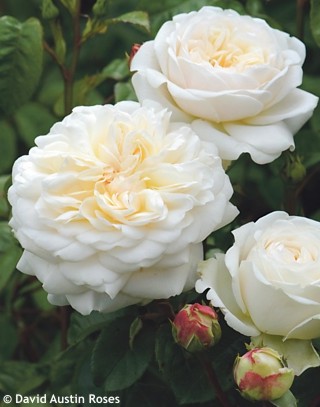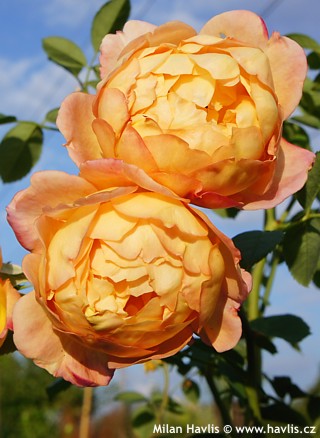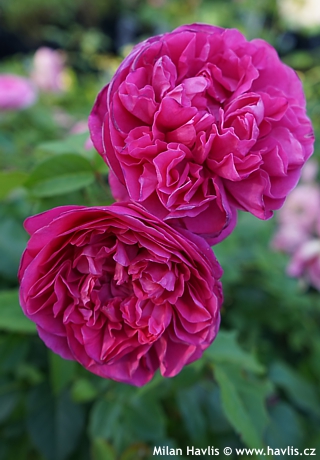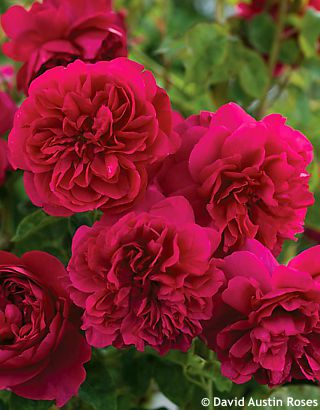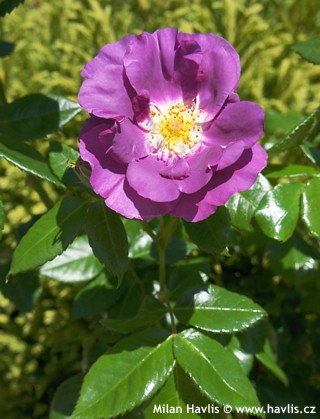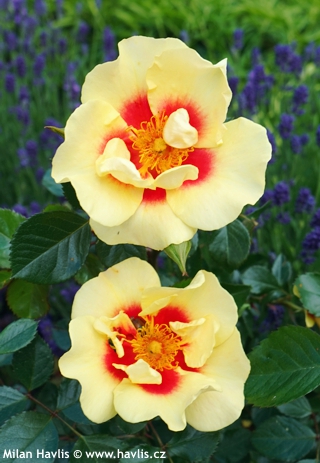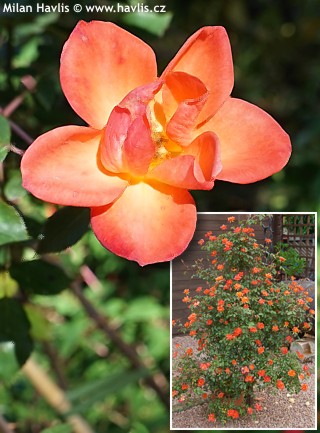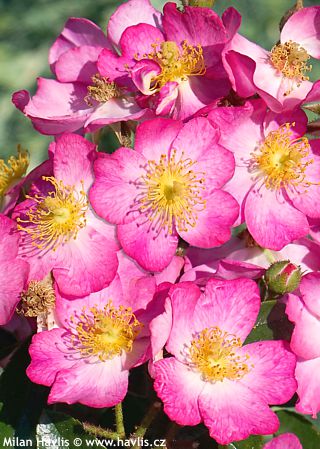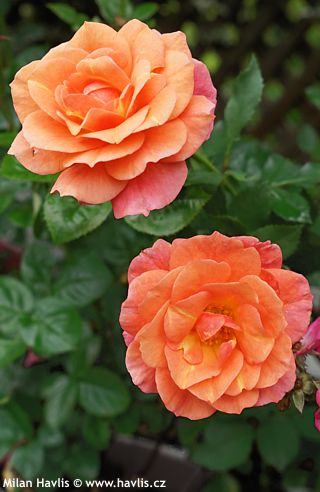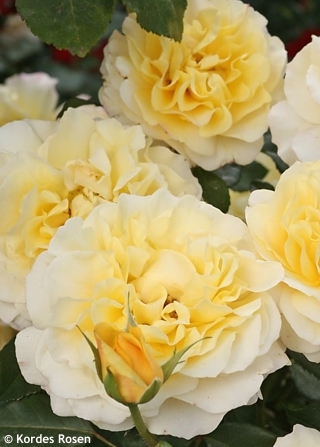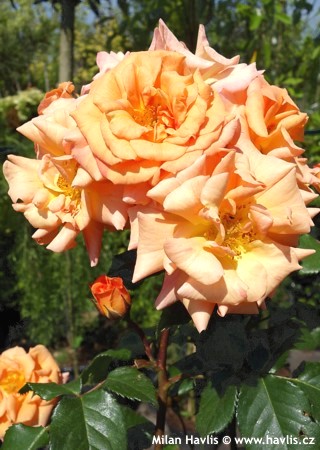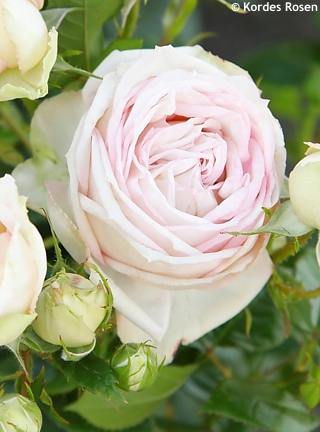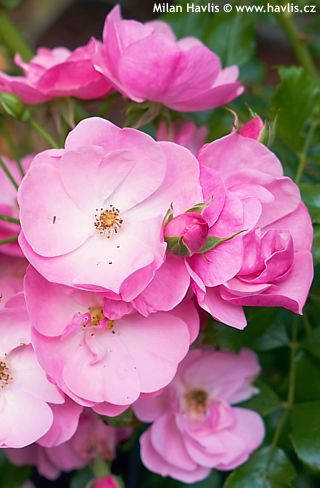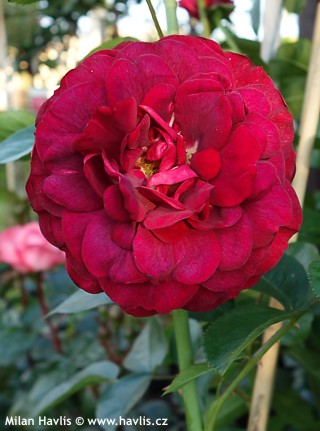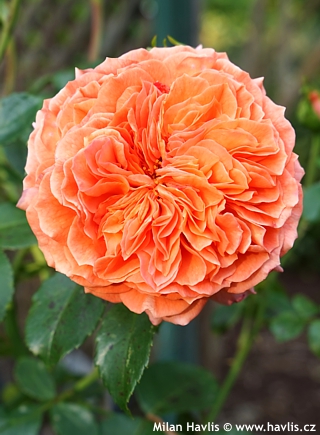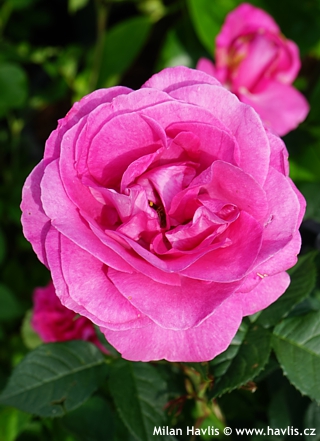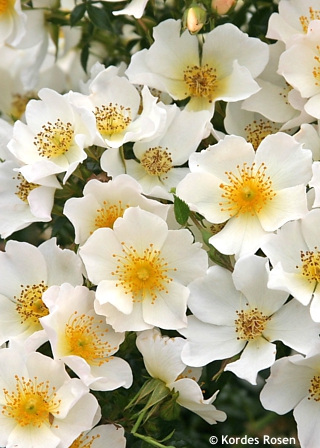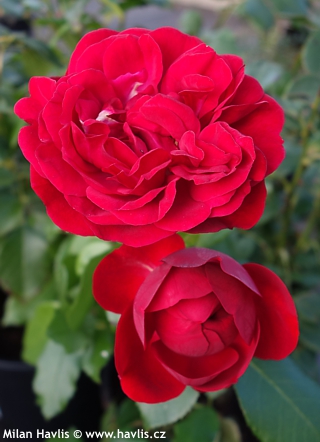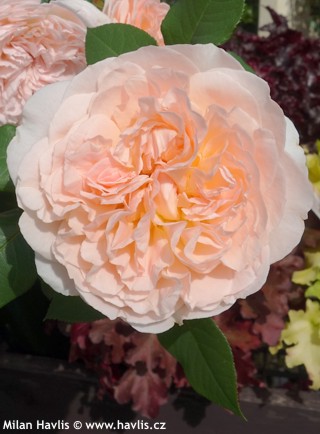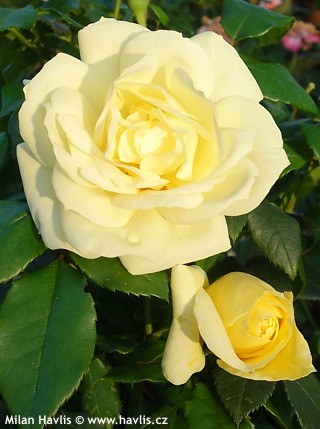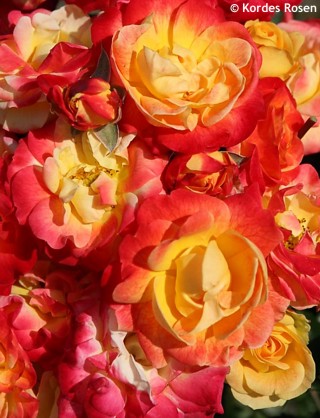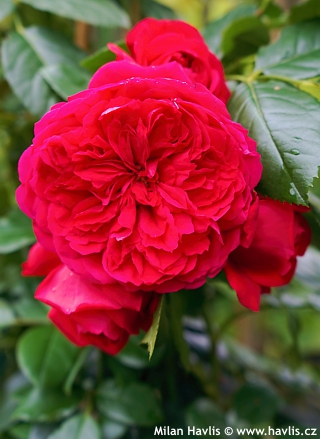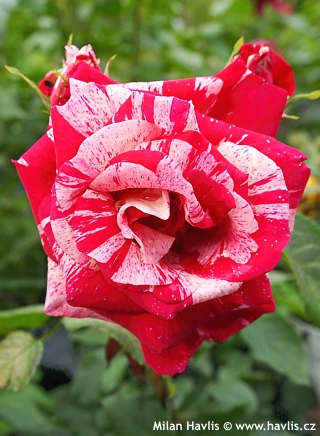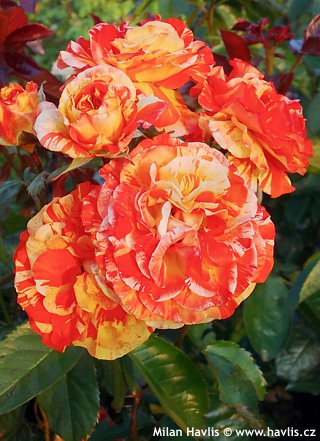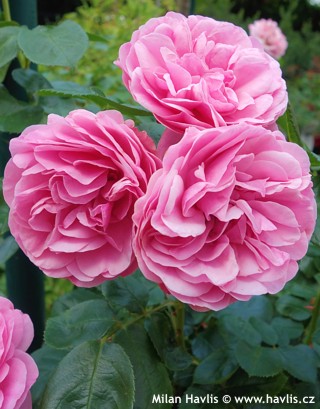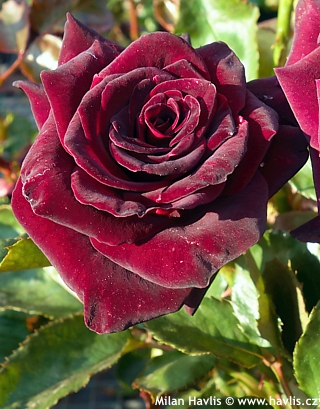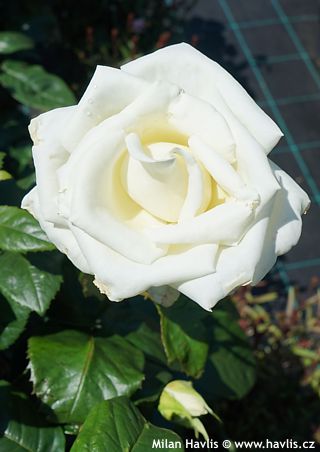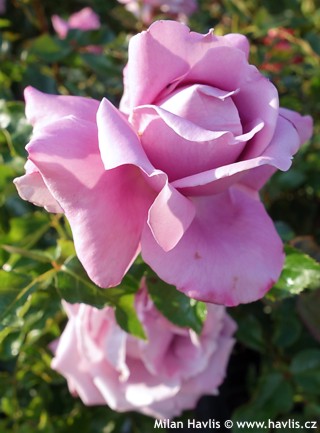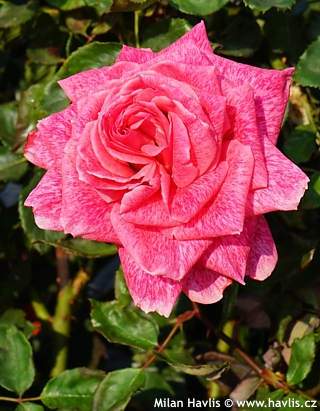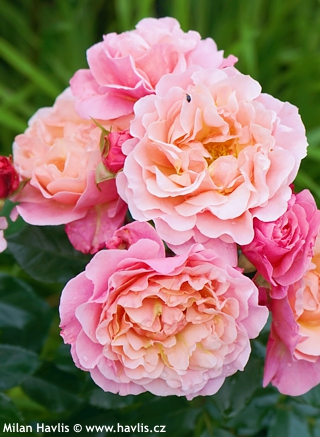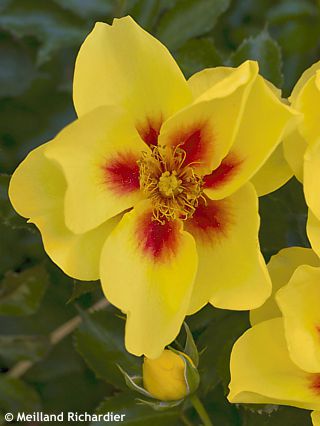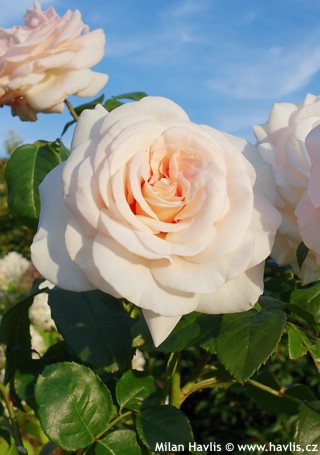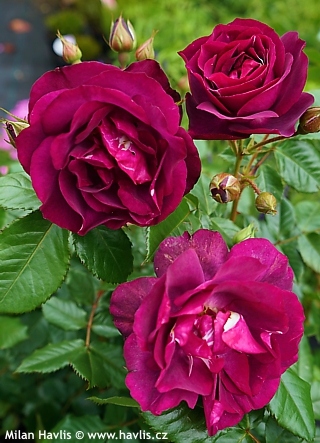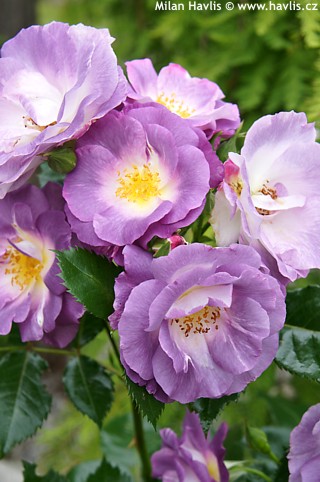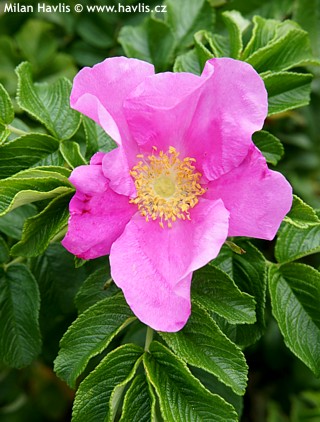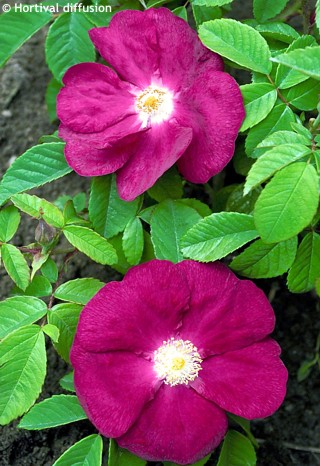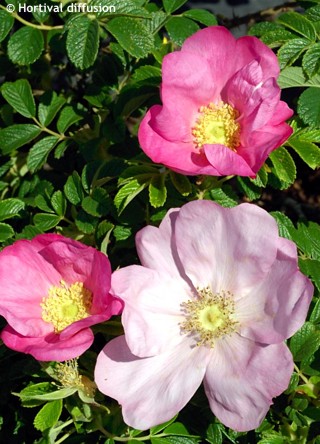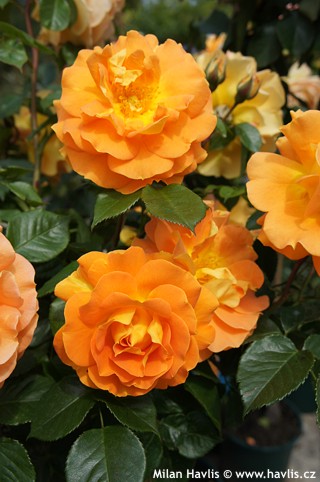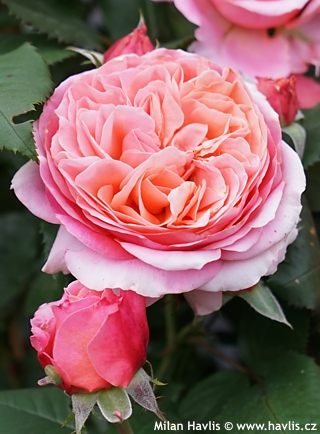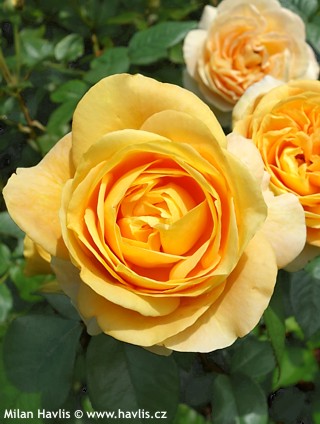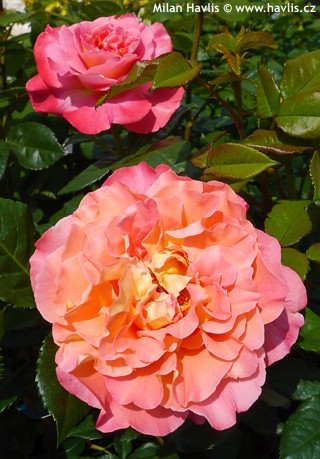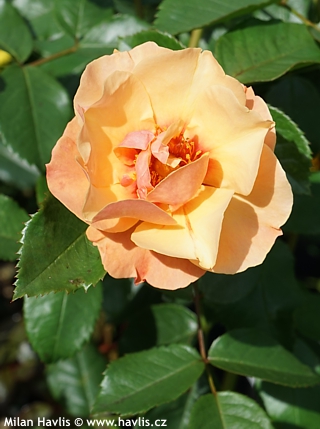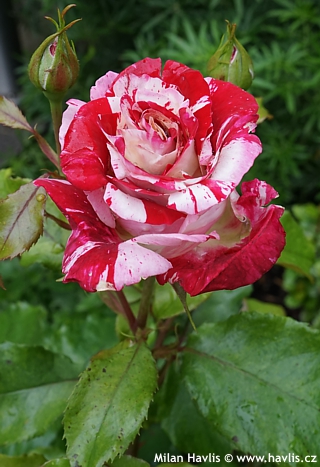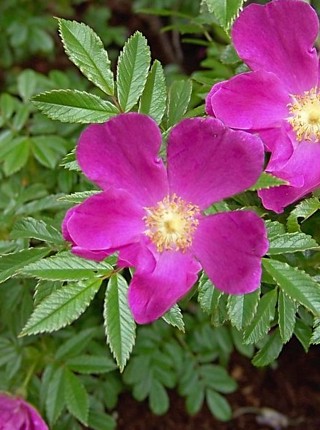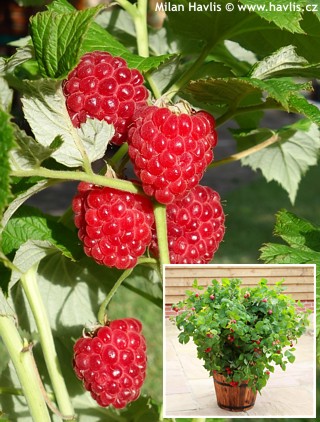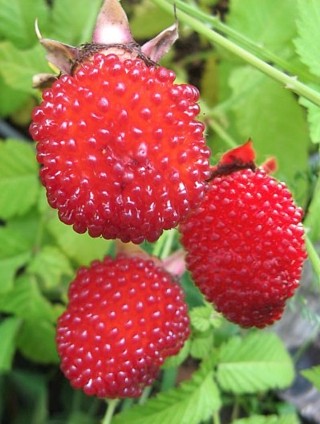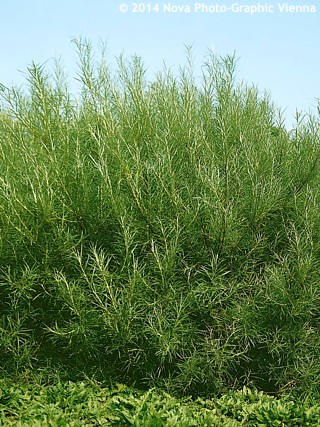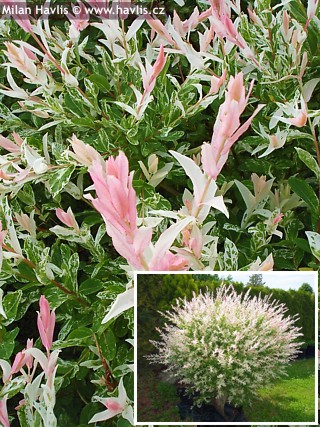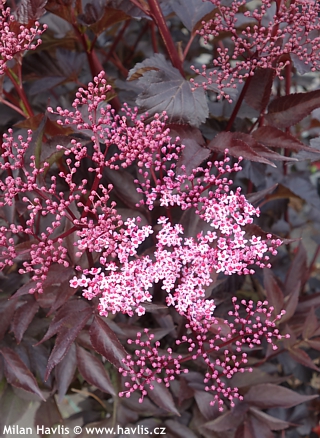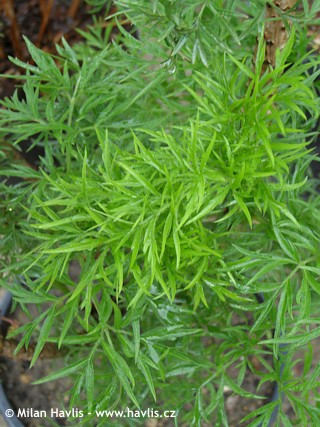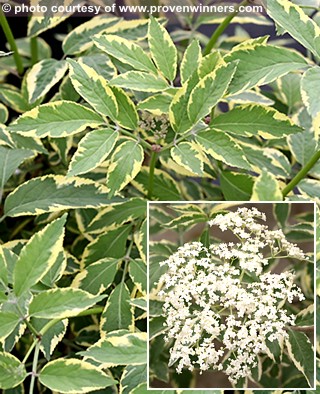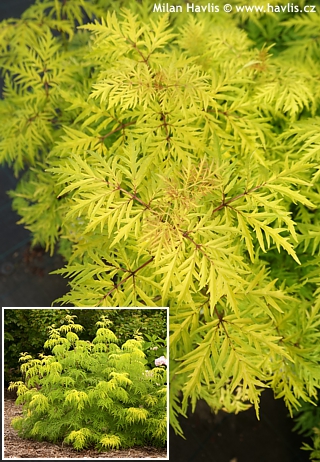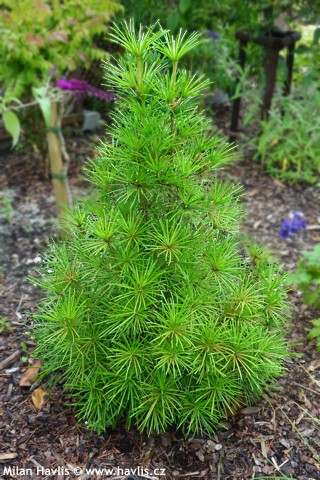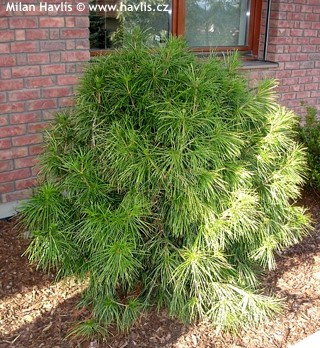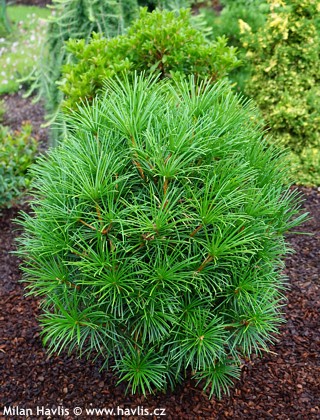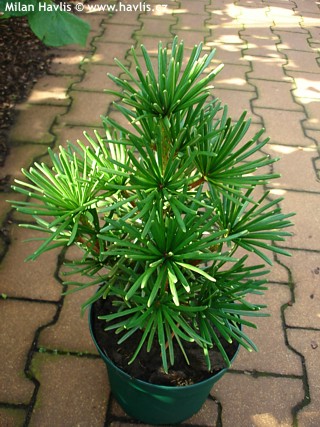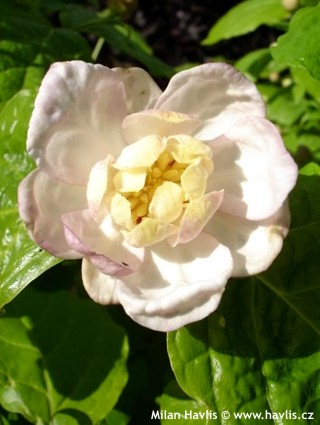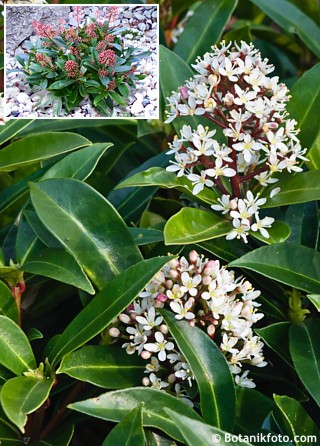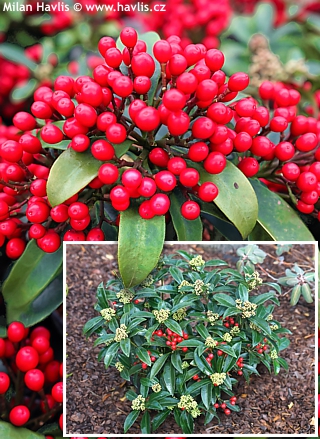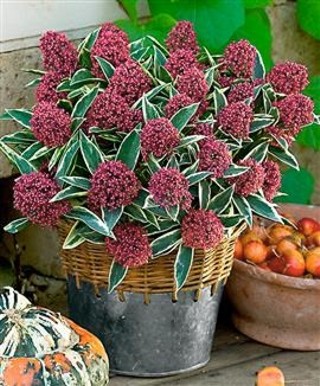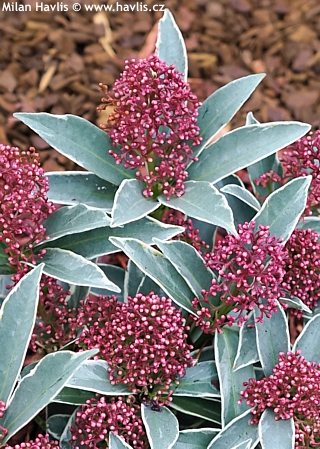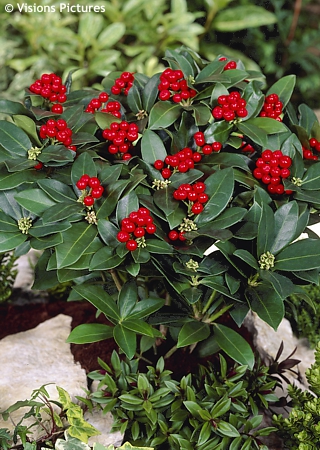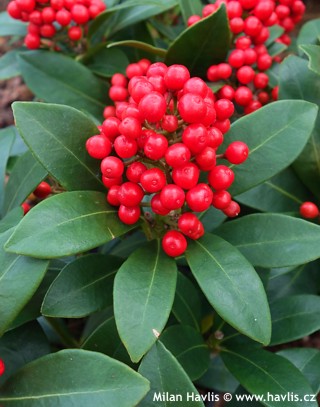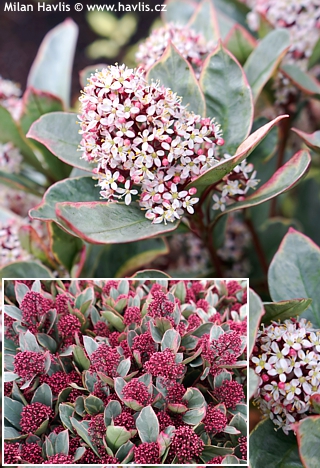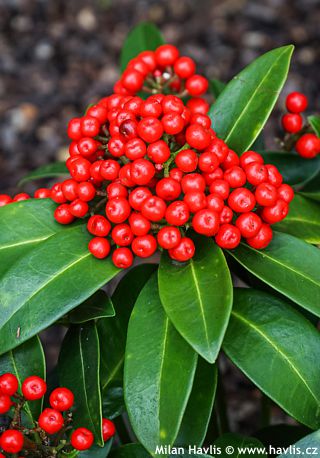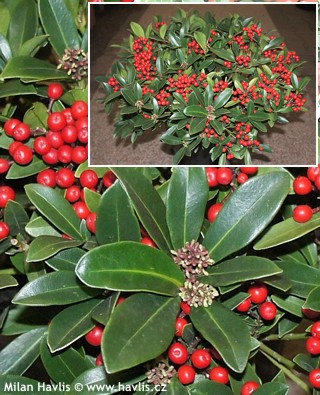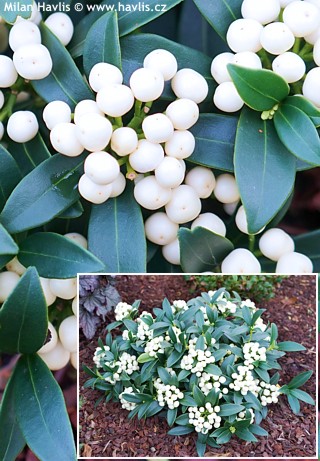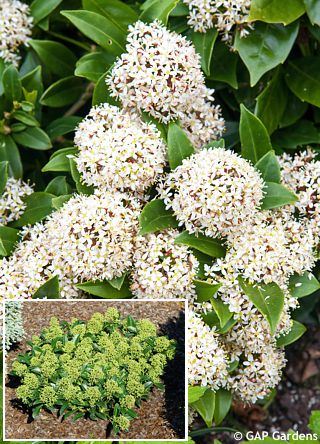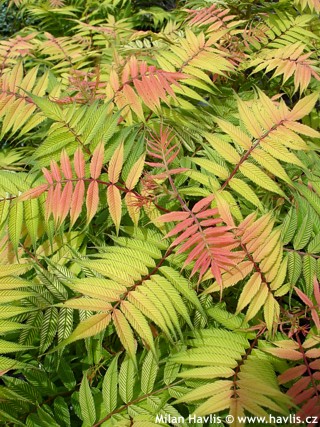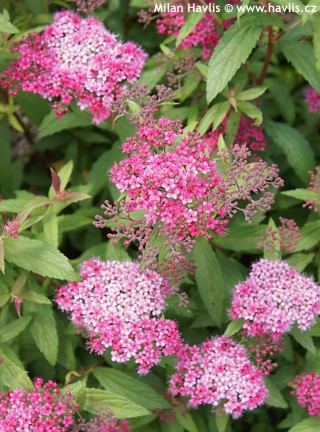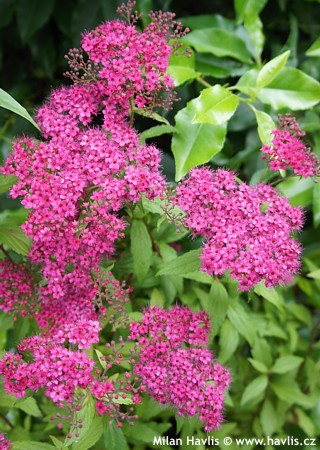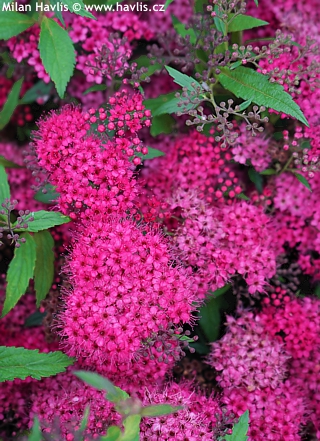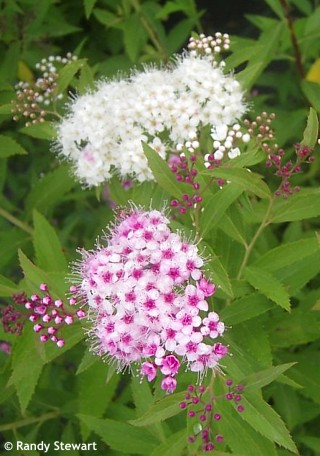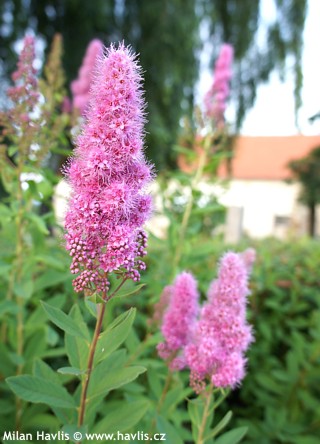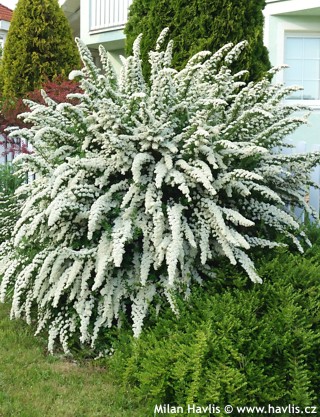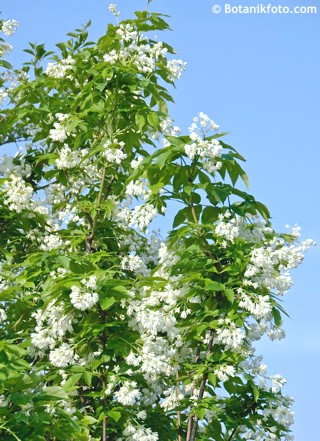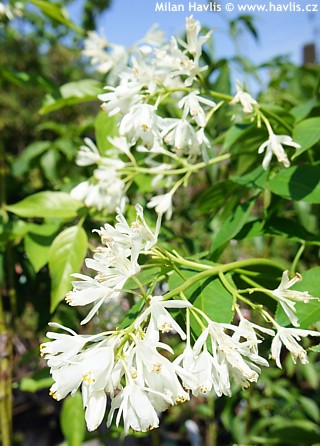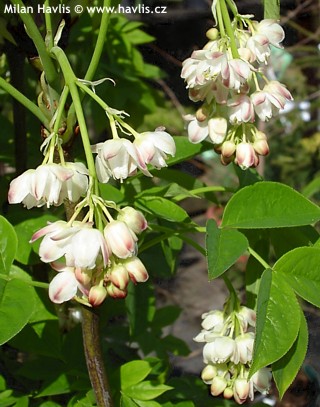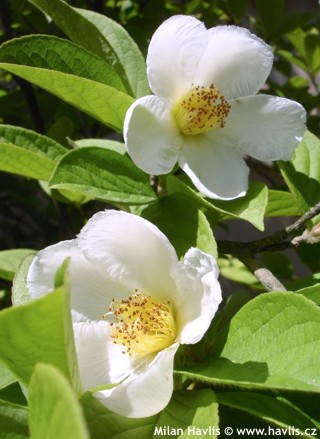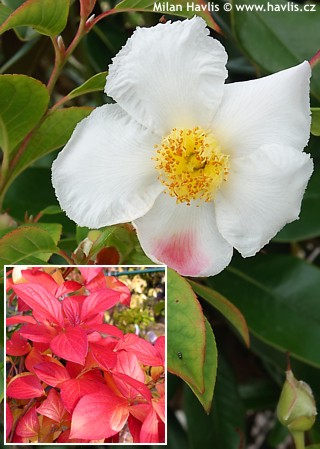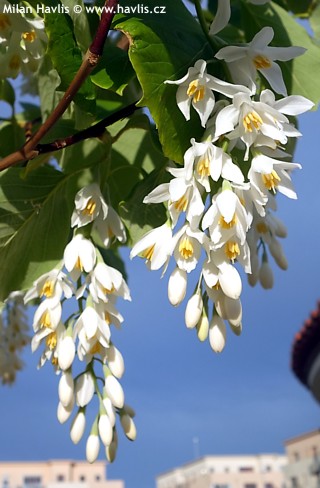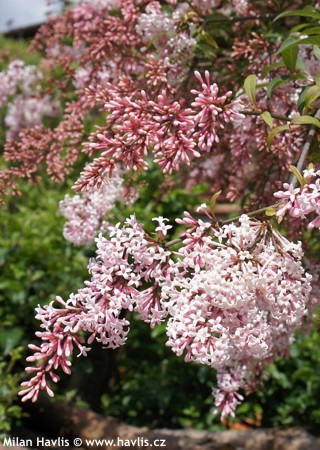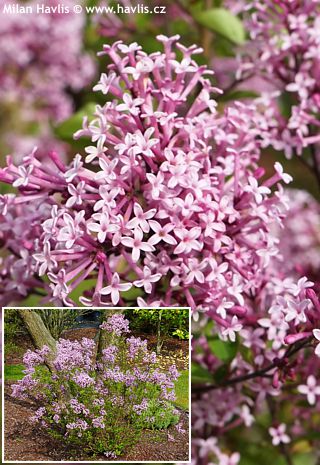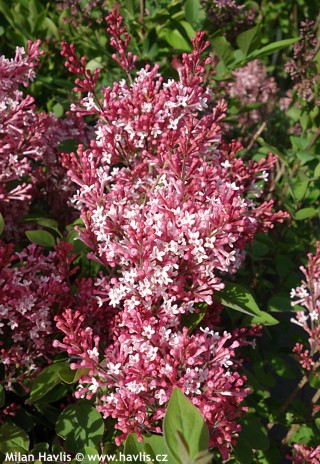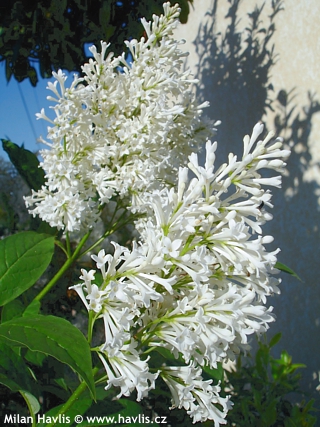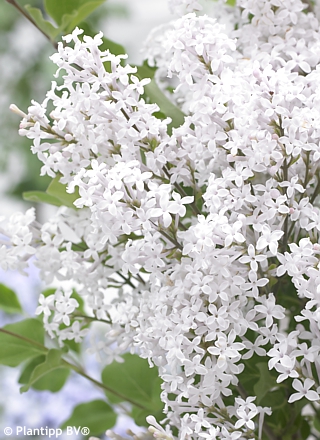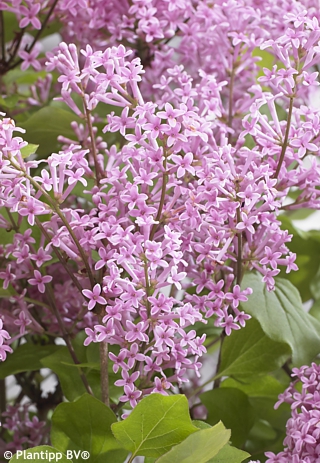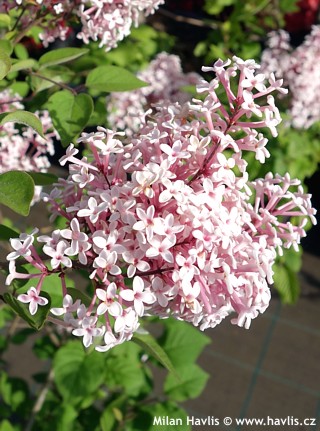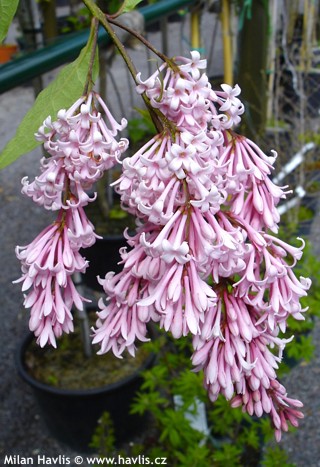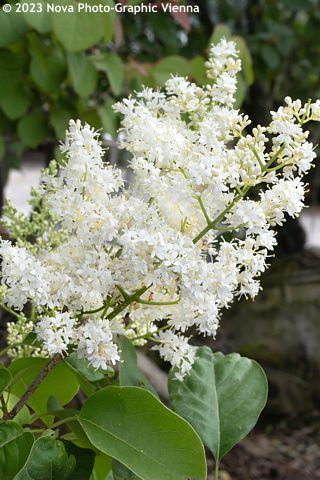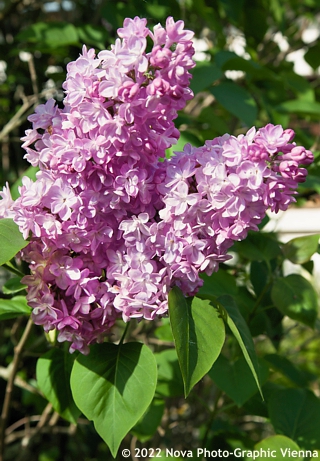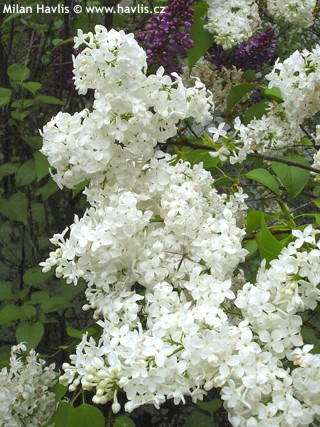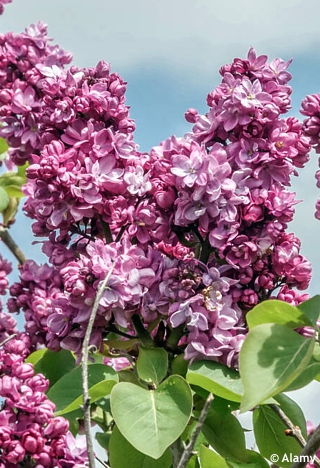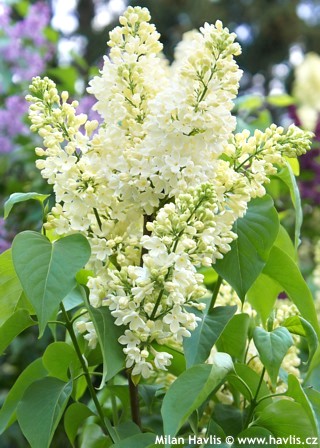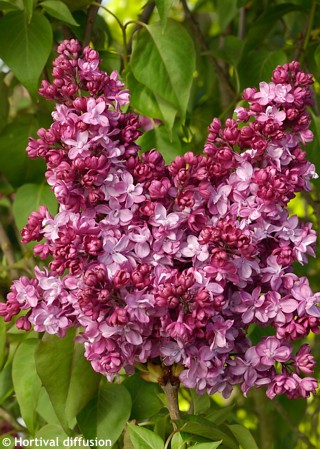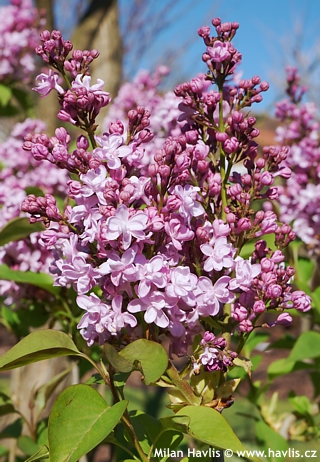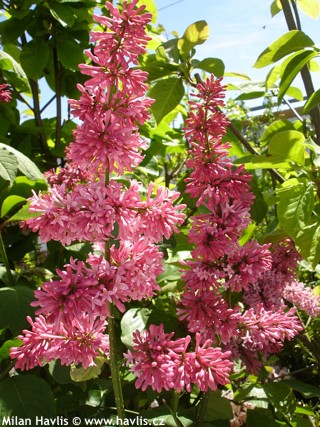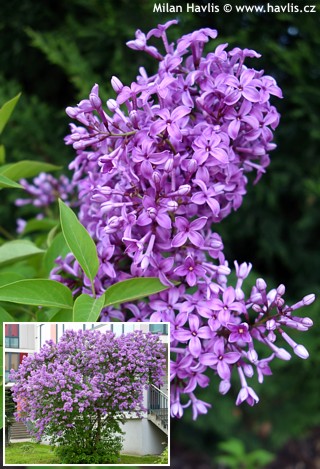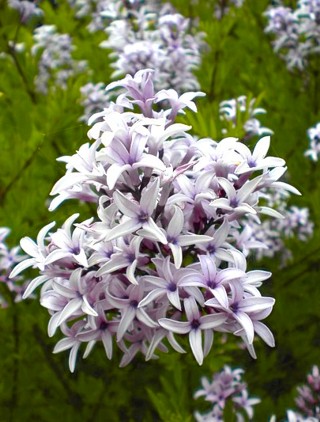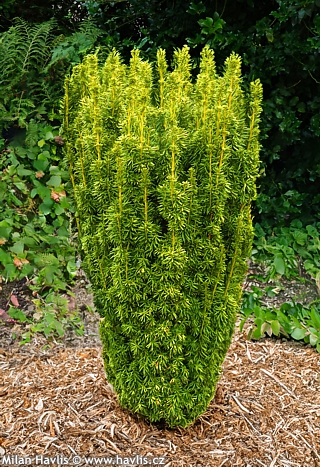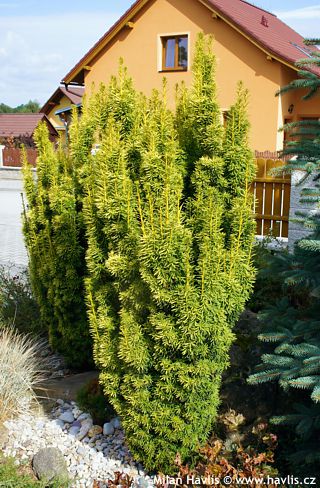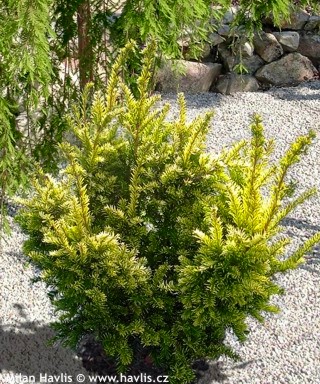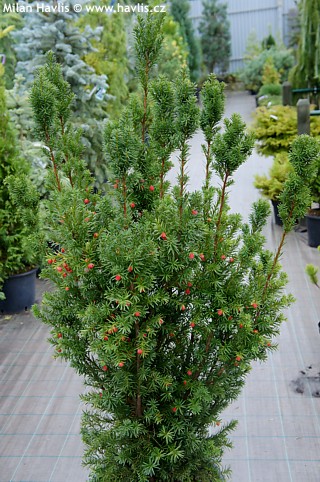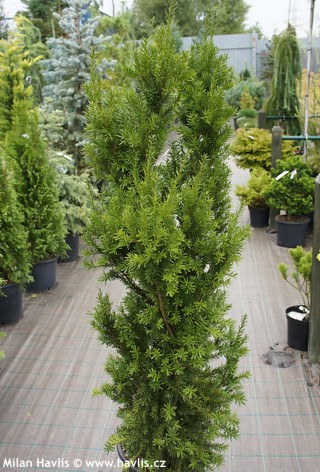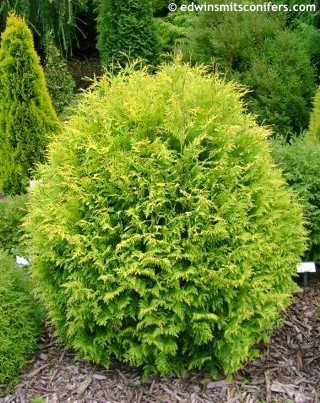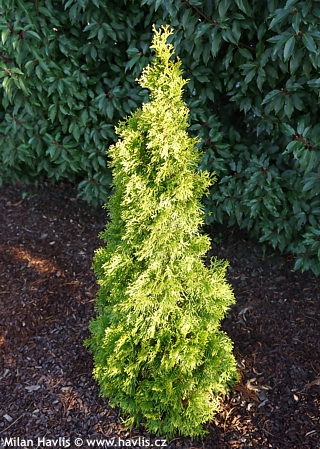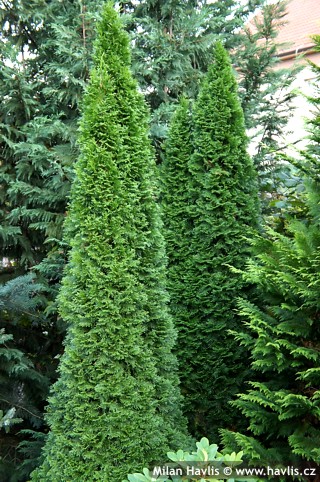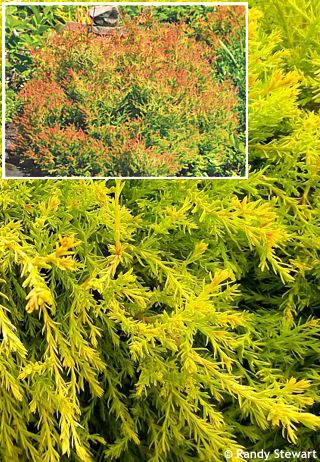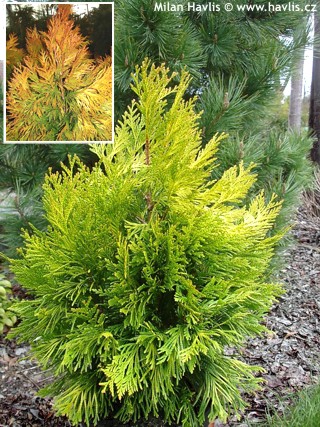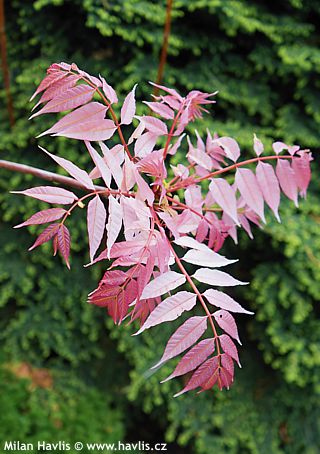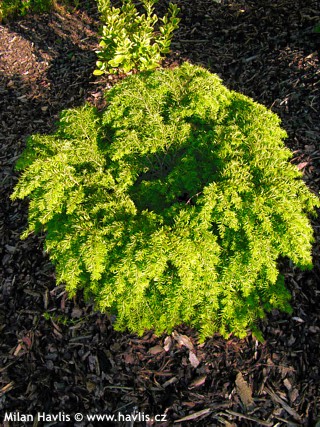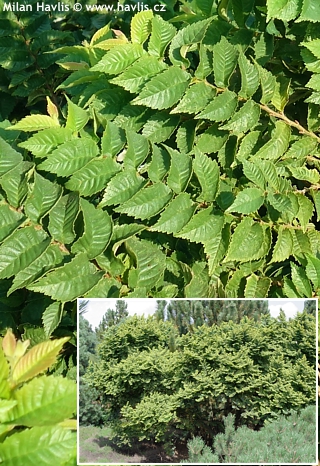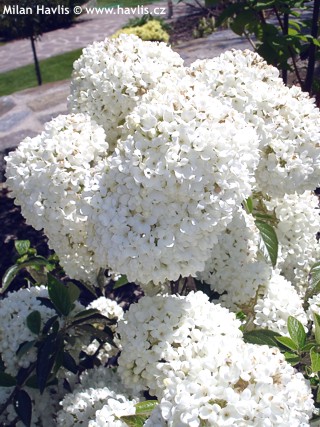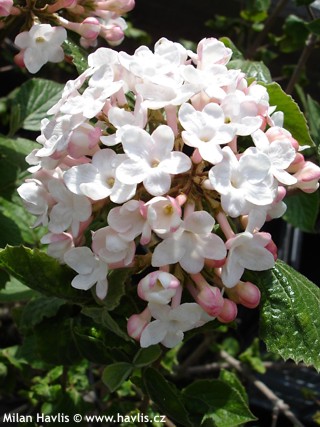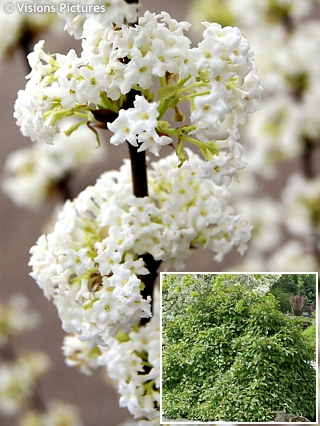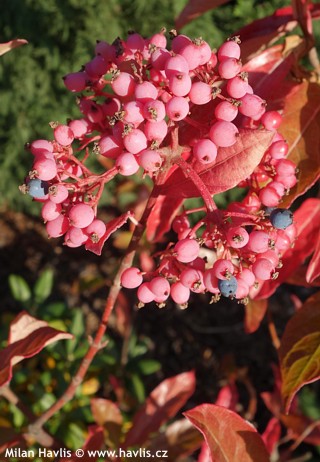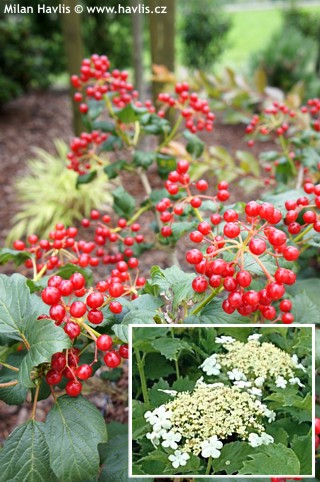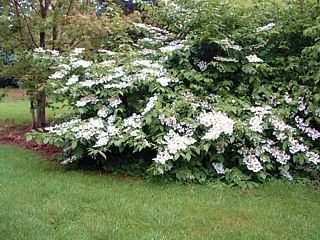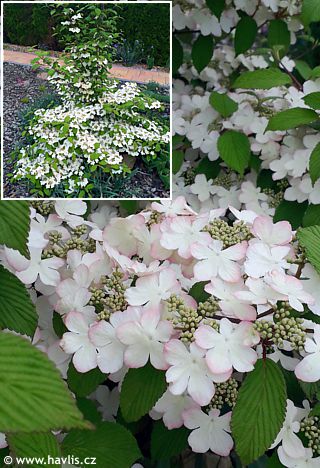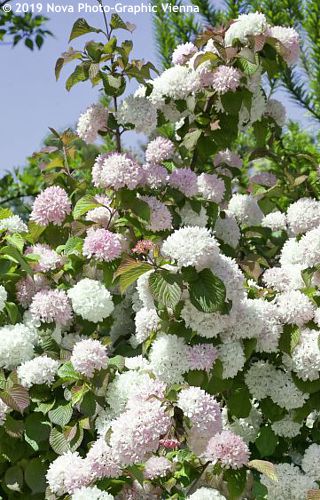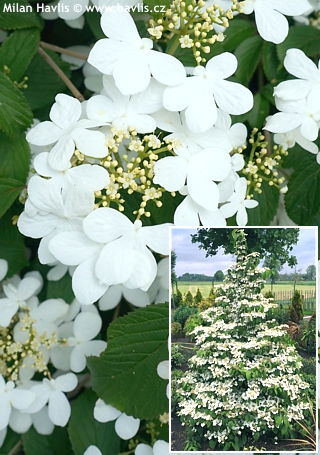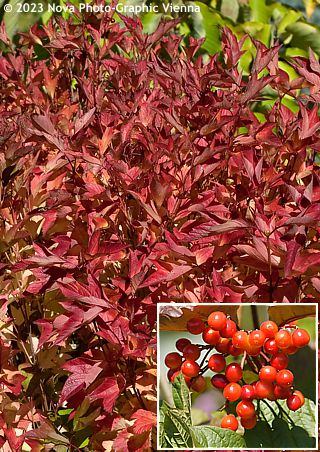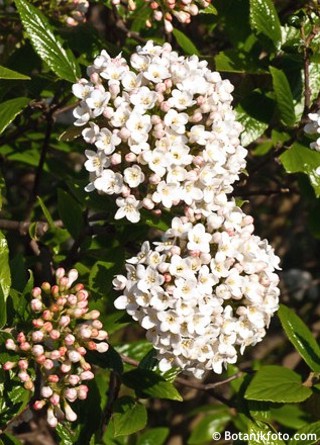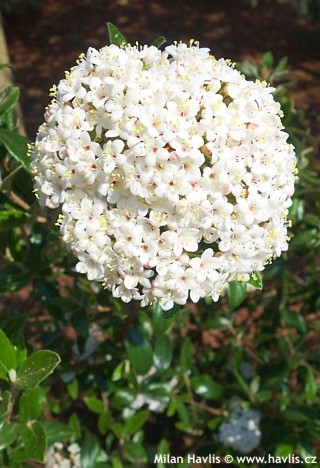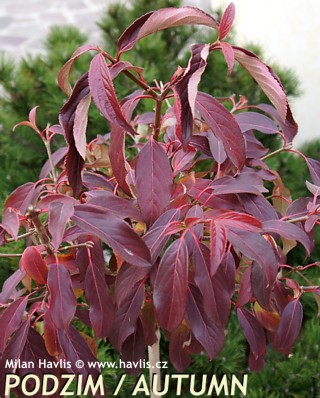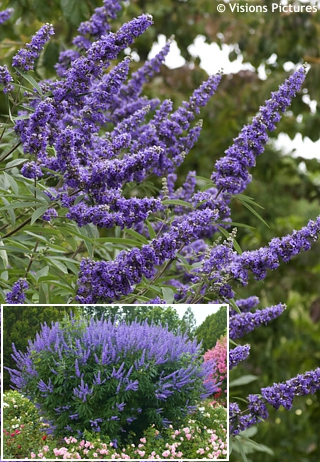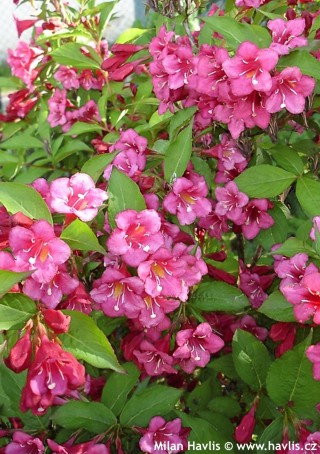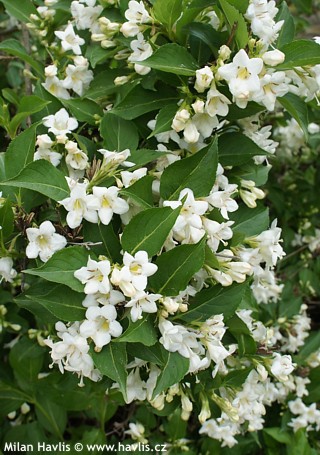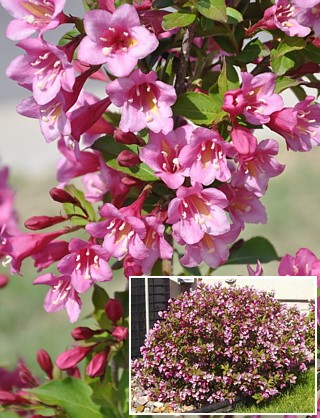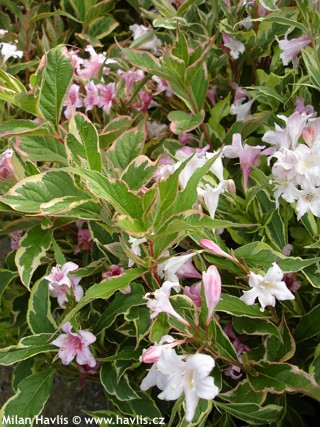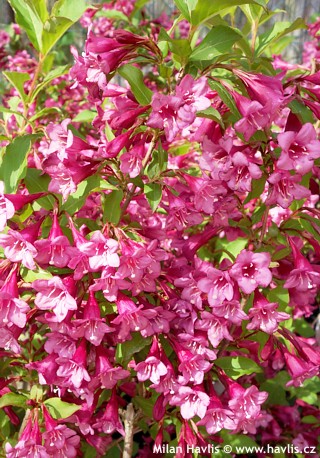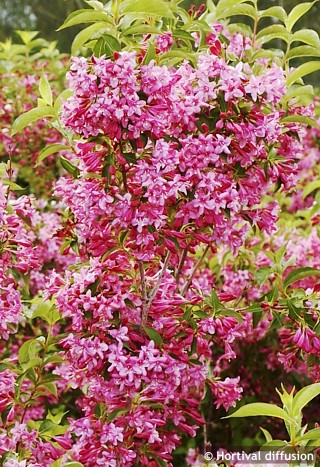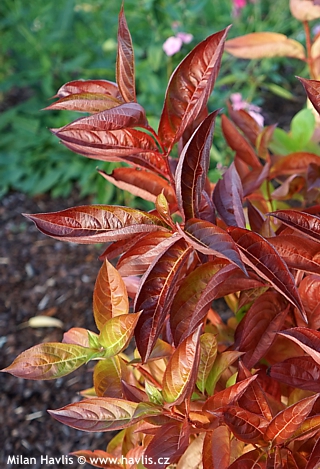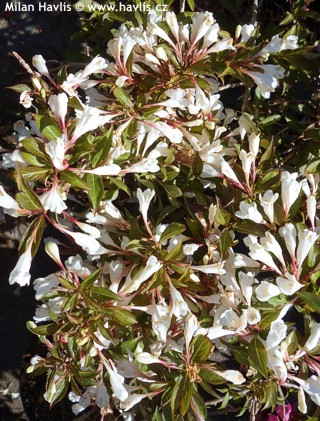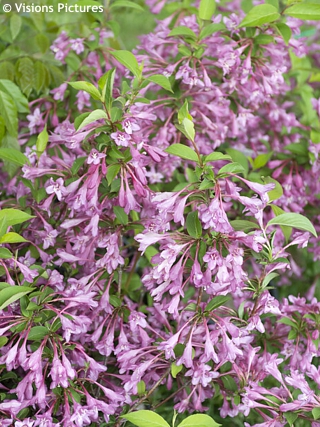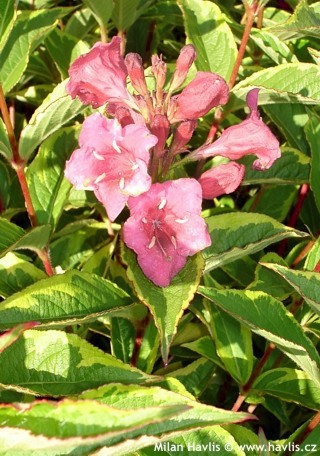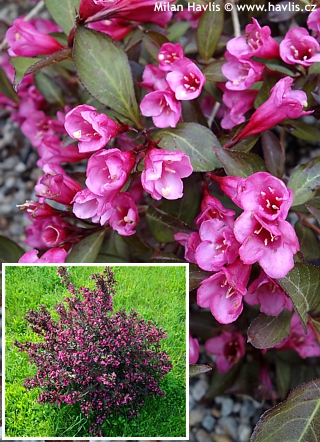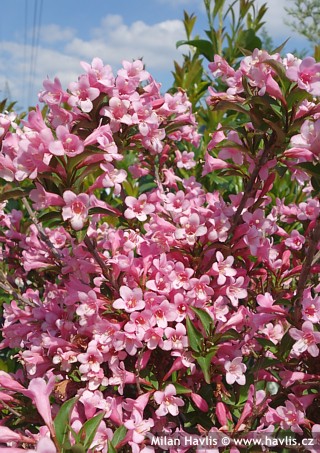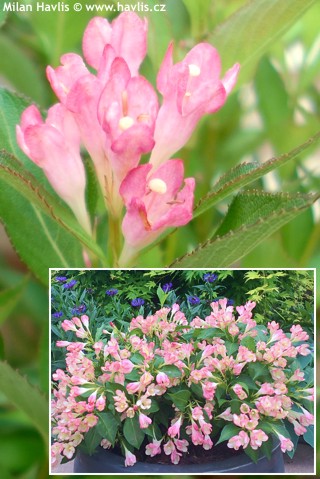CURRENTLY IN STOCK:
Abelias belong to the most popular flowering shrubs of dwarf to small sizes, mainly thanks to its long flowering period: June-October. Variety Edward Goucher was introduced by a botanist of the same name in the USA in 1911 as a cross between abelia x grandiflora and abelia schumannii.
This elegan ...

VI - X

0,3 - 1m

0,3 - 1m

full to partial sun

7 (down to -23°C)

for zone 5+6

for zone 7
Abelia Confetti® can be the true dwarf jewel, for instance, in the evergreen group of your front yard. It has 2-3 cm long, pointed, glossy, semi-evergreen, variegated leaves with white margins and green centres. It blooms from July until October with pale pink, funnel-shaped, tiny flowers. This ...

VII - IX

0,2 - 0,5m

0,2 - 0,5m

full to partial sun

6b (down to -21°C)

for zone 5+6

for zone 7
Kaleidoscope® is another novelty of the turn of the century. It drags attention thanks to its multicoloured foliage, but not only that. This abelia was found as a naturally occurring mutation of abelia x grandiflora “Little Richard” by nurseryman Randall Dale Lindsey in North Caroli ...

VII - IX

0,3 - 0,5m

0,3 - 0,8m

full to partial sun

7 (down to -23°C)

for zone 5+6

for zone 7
Glossy abelia is a garden hybrid between abelia chinensis and abelia uniflora, and is sometimes also called abelia rupestris. Its dominant feature is profuse flowering from late June until late autumn. Flowers are small, funnel-shaped, pure white, and decorated by pale red calyxes thanks to which th ...

VII - X

0,5 - 1,8m

0,5 - 1,5m

full sun

5b (down to -27°C)

for zone 5+6

for zone 7
ICE DRAGON® is a hybrid Korean maple (a. palmatum x a. pseudosieboldianum), the smallest variety from the Jack Frost® series developed by Iseli Nurseries in Oregon, USA. It has finely cut, 7-lobed, deciduous leaves, almost identical to those on Japanese maples from the dissectum group. The ...

1,5 - 2,5m

2 - 3m

full sun

4 (down to -34°C)

for zone 5+6

for zone 7
NORTH WIND® is a hybrid Korean maple from the American Jack Frost® series, bred at Iseli Nurseries in Oregon, and this variety is considered their flagship. It is characterized by the soft red colour of its new leaves which turn green before summer, and their autumn change when they turn f ...

3 - 6m

3 - 4m

full sun

4 (down to -34°C)

for zone 5+6

for zone 7
Vitifolium is a long-time favourite of a Japanese maple variety, proved to thrive in almost any garden, and characterized by large, 8-15 cm wide, palmately rounded leaves, which are divided into 9 to 12 pointed lobes with serrated margins. The number of lobes distinguishes this species from all othe ...

3 - 5m

2 - 4m

full sun

5 (down to -29°C)

for zone 5+6

for zone 7
Montpellier maple is a typical Mediterranean tree commonly found in dry, coastal or mountainous landscapes of Portugal, France, and Italy. It makes small, three-lobed, leathery but deciduous leaves, which are medium green in summer, and turn yellow, amber orange or scarlet red in autumn. Its flowers ...

4 - 6m

4 - 6m

full sun

5 (down to -29°C)

for zone 5+6

for zone 7
Shapes and colours are usually the key features of Japanese maples. But there are other maples, too, that can offer other than green colour plus various leaf shapes. And on top of that they grow much faster.
This is ash-leaved maple, also called box elder. Flamingo is so far the best-selling variet ...

3 - 7m

2 - 4m

full sun

2 (down to -45°C)

for zone 5+6

for zone 7
The species of Japanese maple is a green-leaved tree or rather a large shrub. End even though among landscapers and general green-finger-public the red-leaved versions tend to be more popular I suppose that this is the most beautiful and elegant tree of our climate. With its naturally green leaves i ...

3 - 8m

3 - 6m

full to partial sun

5 (down to -29°C)

for zone 5+6

for zone 7
Atropurpureum is a famous and commonly used variety with deeply lobed, red-purple leaves that turn bright red and orange in autumn. They have 5 tips. It forms a multi-stemmed shrub with widely spread branches. It grows slowly and is suitable as a specimen in any garden, not just a Japanese style gar ...

3 - 6m

3 - 4m

full to partial sun

5 (down to -29°C)

for zone 5+6

for zone 7
Bi-hoo is a new Japanese maple variety found by maple enthusiast, Mr.Masayoshi, in Japan in 1993. It was introduced and licensed in Europe by Maillot Nurseries in France in 2004. It is valued predominantly for its stunning colour in autumn and winter when the stronger branches and stems gain golden ...

2 - 3m

1,5 - 2m

full to partial sun

5b (down to -27°C)

for zone 5+6

for zone 7
Bloodgood is an extremely commercially successful variety with deep burgundy leaves. They have 7 lobes and hold the colour reliably. The leaves turn bright scarlet red in the autumn. The bark is blackish-red.
It forms a small tree or a large shrub with compact, rounded crown with predominantly upr ...

3 - 6m

2 - 3m

full to partial sun

5b (down to -27°C)

for zone 5+6

for zone 7
Butterfly is a variety with 3-coloured foliage. Its deeply cut, palmate leaves are pale green with creamy white margins that turn pink when they emerge and when the weather turns colder. It grows into a V-shaped shrub with dense foliage, especially at the tops of the branches.
It grows slowly abou ...

1 - 2,5m

1 - 2m

semi-shade / partial sun

5b (down to -27°C)

for zone 5+6

for zone 7
Fireglow is a red-leaved Japanese maple variety from Italy. It is similar to Bloodgood with less vigorous growth and brighter red colour, and Atropurupureum with more upright habit and richer leaf colour. Leaves are palmate, 5-lobed, deciduous, glowing crimson red when they emerge and shiny burgundy ...

2 - 4m

2 - 4m

full sun

5 (down to -29°C)

for zone 5+6

for zone 7
Jerre Schwartz Japanese maple was bred by one of the prominent American lovers and growers of Japanese maples, Billy Schwartz of the Green Mansions Nursery in Pennsylvania, and it was introduced to the market in 2005. It belongs to the dwarf varieties, as at the age of 15 years, it is no more than a ...

1,5 - 2,3m

1 - 1,5m

full to partial sun

5 (down to -29°C)

for zone 5+6

for zone 7
Katsura is a Japanese maple that is highly decorative especially in spring, when new leaves emerge, and in autumn, when they change again. They are typically palmate, rather small, 5-lobed, chartreuse yellow-green with coppery margins in early spring, rich green in summer, and glowing golden-yellow ...

1,5 - 3m

1,5 - 3m

full to partial sun

5 (down to -29°C)

for zone 5+6

for zone 7
Ornatum is a cut-leaf Japanese maplecultivated mainly for its deeply lobed leaves of rich reddish brown, almost bronze colour in summer, and bright orange with red tones in autumn. The sgrub grows very slowly, forming a dense, mushroom-head crown.
Japanese maples prefer acidic to neutral soil, mois ...

1 - 2m

1 - 2m

full to partial sun

5b (down to -27°C)

for zone 5+6

for zone 7
The variety name of Osakazuki Japanese maple seems to refer to the third largest city in Japan, Osaka, which is renowned for its extensive vineyards that replaced cotton fields. There could be at least two reasons for choosing it – either in reference to its bright carmine red autumn leaves wh ...

3 - 7m

3 - 5m

full to partial sun

5 (down to -29°C)

for zone 5+6

for zone 7
Red Emperor is another red-leaved Japanese maple, this time from the USA, where it was introduced in 1976 by Dick Wolff from Red Maple Nursery in Pennsylvania. He was an enthusiastic lover of the vibrant shades of red and maroon leaves on Japanese maples, and he was especially proud of his Red Emper ...

4 - 6m

2 - 4m

full to partial sun

5 (down to -29°C)

for zone 5+6

for zone 7
If you google red-leaved Japanese maples I am sure that, amongst the oldest varieties such as Bloodgood and Atropurpureum, you will find this nice piece: Shaina. Unlike the previously mentioned cultivars Shaina is everyone’s love as it offers advantages that come in handy for gardeners-beginne ...

1 - 2m

1 - 1,5m

full to partial sun

5 (down to -29°C)

for zone 5+6

for zone 7
Shindeshojo is a classic variety of Japanese maple that offers exactly what these plants are popular for: bright colours of spring and autumn foliage. Shindeshojo has palmate, 5- or 7-lobed deciduous leaves which emerge fire engine red in spring, turn olive green with pink and white speckles in summ ...

1 - 2m

1 - 2m

full to partial sun

5b (down to -27°C)

for zone 5+6

for zone 7
Japanese maple Skeeter's Broom is a witch's broom found on an older and popular variety Bloodgood. It differs from the parent plant in more ways - it is smaller, more compact, and has foliage of a richer red.
Skeeter's Broom maple produces deciduous, palmate, 5-lobed leaves which emerge glowing cri ...

2 - 3m

1 - 1,5m

full sun

5 (down to -29°C)

for zone 5+6

for zone 7
Wilson's Pink Dwarf is a handsome guy in the family of dwarf Japanese maples. It only grows some 2m tall in a dense, vase shaped, bushy habit. Its most prominent feature is the colour of newly emerging leaves - they are a combination of salmon pink and fiery orange red. The shrub does resemble a fir ...

1,5 - 2m

1 - 1,5m

full to partial sun

5 (down to -29°C)

for zone 5+6

for zone 7
Garnet is one of the top selling Japanese maples ever. It has been popular around the world for many decades. Its filigree leaves are deeply cut = dissected, hence its name. They look like giant snowflakes cut in pieces and densely cover even young plants. The colour show begins with vibrant red in ...

1 - 2m

1 - 2,5m

full to partial sun

5 (down to -29°C)

for zone 5+6

for zone 7
It is hard to believe that only a few bare branches, which you can see in winter, can develop into such a stunning thing. Foliage of this shrub almost looks like a fluffy hairdo of a red-haired lady. The leaves are deeply cut and when young they are glossy and brownish-red, in summer they turn to de ...

1 - 2m

full to partial sun

5 (down to -29°C)

for zone 5+6

for zone 7
Sometimes plants have two names and we tend to choose the easier one to pronounce. That is not the case of this Japanese maple though. Its preferred name is Linearilobum as opposed to another accepted name Scolopendrifolium. Now pick one. On top of that, this variety has the epithet Atropurpureum so ...

1,5 - 4m

1 - 3m

full sun

5b (down to -27°C)

for zone 5+6

for zone 7
Sango-kaku is a Japanese maple that has so many colours that we are lost for words. Its main attraction is the colour of bark which is orangey-red in summer and bright coral red in winter. The palmate leaves have 5 lobes and emerge orangey-yellow with salmon pink shades, changing to light green or y ...

2 - 4m

1 - 2,5m

semi-shade / partial sun

5 (down to -29°C)

for zone 5+6

for zone 7
Dissectum Viridis has light green, very soft, deciduous, deeply cut leaves with 7 or 9 lobes. To maintain its colour we recommend growing it in location with filtered sunlight or semi-shade as the leaves may show signs of sunburn in hot sun, or even change its colour in full sun and dry soil.
The ...

1 - 2m

1 - 2,5m

semi-shade / partial sun

5 (down to -29°C)

for zone 5+6

for zone 7
Crimson Sentry is most certainly a key feature of many mid-sized and small gardens. Its yearly growths are short so it will easily fit even in a front yard.
It is an eye-catching variety of Norway maple owing to the foliage. The leaves are bright purple-burgundy when young, and deep crimson red th ...

3 - 6m

2 - 3m

full to partial sun

4 (down to -34°C)

for zone 5+6

for zone 7
Even among a hundred trees you will notice Red Flamingo hybrid snake-bark maple first. Such a colourful small tree must have been brought directly from Mars where red is constantly in vogue. It is a stunning variety making a breathtaking display wherever you put it. Its key features are the leaves a ...

2 - 4m

1,5 - 3m

full to partial sun

7 (down to -23°C)

for zone 5+6

for zone 7
Evi's Pride (also spelled Evey's Pride) is a purple-leaved form of silk tree which boasts with better hardiness and richer flowering as opposed to Summer Chocolate®. Its flowers are rich pink, hairy spheres with nearly white centres, 3-5 cm large and with a sweet fragrance. Fern-like, compound ...

VII - VIII

3 - 5m

3 - 6m

full sun

7 (down to -23°C)

for zone 5+6

for zone 7
Saskatoon is a native Canadian species of juneberry. It is cultivated for very tasty and juicy fruit which are deep purple to blue-purple berries similar to blueberries. They are formed in short clusters and best picked when fully ripe = when it turns the deepest colour. It can be used in any way yo ...

IV - IV

1 - 3m

1 - 1,5m

full sun

1 (down to -46°C)

for zone 5+6

for zone 7
RAINBOW PILLAR® is a unique variety of shedblow serviceberry with upright, columnar growth that is suitable for small gardens and hedges. In April it produces numerous star-shaped, white, scented flowers that are followed by small, spherical berries. These are ready to be picked when their red ...

IV - IV

2 - 5m

1 - 2m

full sun

4 (down to -34°C)

for zone 5+6

for zone 7
Juneberry is a large shrub cultivated mostly for its delicious and healthy fruit. It is a large deciduous shrub or a small tree.
Flowers are star-shaped, white and scented and appear in mid spring. Oval leaves are up to 8 cm long, emerge bronze and mature to green colour, turning scarlet red or dee ...

IV - V

2 - 6m

2 - 5m

full sun

4 (down to -34°C)

for zone 5+6

for zone 7
Blue Ice is a variety of bog rosemary with bright silvery blue leaves. They are linear-lance-shaped, 2-3 cm long. Urn-shaped flowers appear from mid spring until early summer and are light pink. It is a slow growing, mound-forming or ground-covering.
It loves moist to wet places with humus-rich, co ...

V - VI

0,2 - 0,6m

0,6 - 1m

full to partial sun

2 (down to -45°C)

for zone 5+6

for zone 7
Blue Lagoon is a Bog rosemary with clear blue-grey leaves with silvery hues. They are evergreen, linear-lance-shaped, rosemary-like, 2-3 cm long. Urn-shaped, soft pink flowers appear from mid spring (April/May) and often last until early June. Blue Lagoon differs from its parent plant Blue Ice with ...

IV - VI

0,3 - 0,5m

0,4 - 0,8m

full to partial sun

2 (down to -45°C)

for zone 5+6

for zone 7
Compacta is a dwarf bog rosemary with green foliage and profusion of light pink flowers. Leaves are rosemary-like, linear-lance-shaped, 2-3 cm long. Urn-shaped flowers are paler than on Nikko variety and appear in abundance from end April until early June. It is a slow grower forming a neat cushion ...

IV - VI

0,2 - 0,3m

0,2 - 0,4m

full to partial sun

2 (down to -45°C)

for zone 5+6

for zone 7
Variegata
is one of the first (or possibly the very first) variegated mutation of Japanese angelica tree which probably explains it rather botanical, charmless name. Nonetheless the plant itself is charm impersonified! It produces giant frond-like foliage, compound of 5-6 cm long, broadly obovate ...

VIII - IX

2 - 4m

2 - 3m

full to partial sun

4 (down to -34°C)

for zone 5+6

for zone 7
Strawberry tree is another of my favourite evergreen plant, formerly classified as tender in C.E. continental climate, but we began a long-running trial where we test a group of Mediterranean plants for their hardiness. It started when we noticed that many macchia plants have to struggle with advers ...

X - V

2 - 4m

2 - 4m

full to partial sun

6b (down to -21°C)

for zone 5+6

for zone 7
Atlantic is a French variety of strawberry tree selected and introduced by the Pepinieres Minier in 1993. It boasts a neat and well-behaved habit, dense branching, and improved hardiness. Its evergreen leaves are narrowly obovate, 5-7 cm long, finely serrated at margins, they emerge bronze red and r ...

V

2 - 3m

1 - 2m

full sun

7 (down to -23°C)

for zone 5+6

for zone 7
Compacta is a strawberry tree selection found many years ago as a seedling of the species. It boasts a neat and well-behaved habit, dense branching, and improved hardiness. Its evergreen leaves are narrowly obovate, 5-7 cm long, finely serrated at margins, they emerge bronze red and remain soft gree ...

IX - V

1,5 - 3m

1 - 2m

full to partial sun

7 (down to -23°C)

for zone 5+6

for zone 7
Rubra is a common name for all forms of strawberry tree with red flowers. Only those plants which also boast other distinct features were selected and registered as individual varieties. It makes evergreen, narrowly oval to obovate, 6-10 cm long, leathery leaves with serrated margins, more conspicuo ...

X - V

2 - 4m

2 - 4m

full to partial sun

6b (down to -21°C)

for zone 5+6

for zone 7
MERCURIUS is a French variety of frost-resistant strawberry tree, bred by Jean Giraudet from the French nursery Pépinières du Bocage in Sèvremont, near the city of Nantes in the west of France, and introduced in 2020. This is an absolutely adorable shrub with a slower growth and almost rou ...

IX - XI

0,7 - 1,5m

0,8 - 1,5m

full sun

6b (down to -21°C)

for zone 5+6

for zone 7
Nero is a Slovak variety of purple chokeberry with large fruit and leaves purple tinged on the reverse. The lustrous fruits are black, about twice as big as black currant berries, and are rich in vitamin C and other important microelements such as ferrum and iodine. They can be eaten fresh, in fruit ...

V - V

1,5 - 2m

1 - 2m

full to partial sun

3 (down to -40°C)

for zone 5+6

for zone 7
Recently, less known fruit trees and shrubs are becoming more and more popular mainly thanks to their original taste as well as positive impact on our health. Chokeberry is one of them. It is in the same rosaceae family as the service tree and its fruit is similar, too. The lustrous fruits are black ...

V - V

1,5 - 2m

1 - 2m

full sun

3 (down to -40°C)

for zone 5+6

for zone 7
Powis Castle is an English variety of wormwood that is also called Brass Band. It is most likely a spontaneous hybrid between the species a. arborescens and a. absinthium from the Middle East where wormwoods willingly hybridize among themselves. One plant was found growing in a garden in Yorkshire b ...

0,4 - 0,8m

0,4 - 0,8m

full sun

7 (down to -23°C)

for zone 5+6

for zone 7
This evergreen shrub of Japanese aucuba is a commonly known favourite especially in Britain and in milder parts of humid regions of Germany and Benelux. The first specimen was brought from Japan to Europe in 1783, and has been sought after ever since for its beautifully varigated/golden-spotted leav ...

1 - 1,5m

1 - 1,5m

semi-shade to shade

7 (down to -23°C)

for zone 5+6

for zone 7
Crotonifolia Gold is a spotted laurel variety selected from Crotonifolia. Its leaves are distinctly yellow spotted, new and top leaves are yellower than bottom and older leaves. They are extremely large for a hardy evergreen plant – usually 10-15, sometimes upto 20 cm long and 8-10 cm wide. Va ...

1 - 1,5m

1 - 1,5m

semi-shade to shade

7 (down to -23°C)

for zone 5+6

for zone 7
Golden King is another selection of old Crotonifolia variety with heavily variegated leaves. The blotches of various size always cover at least 50% of the whole foliage area, and in spring new leaves emerge striking yellow. They are evergreen, glossy, and extremely large for a hardy plant - about 10 ...

1 - 2m

1 - 2m

semi-shade to shade

7 (down to -23°C)

for zone 5+6

for zone 7
If you like vivid colours and your garden has a more or less exotic design don’t hesitate to fall in love with this variety of spotted laurel called Picturata. This evergreen shrub bears large, glossy, mid green leaves with rich yellow centres and spots all over the leaves. The leaves are ovat ...

0,8 - 1,5m

0,8 - 1,5m

semi-shade to shade

7 (down to -23°C)

for zone 5+6

for zone 7
Rozannie is an elegant variety of Japanese aucuba. Some might think that it looks too ordinary compared to the other varieties with coloured leaves but the truth is that not every landscape needs a splash of variegated foliage. Rozannie is a compact aucuba shrub with deep green, evergreen leaves tha ...

IV - IV

0,5 - 1m

0,5 - 1m

semi-shade to shade

7 (down to -23°C)

for zone 5+6

for zone 7
Salicifolia is a Japanese laurel variety from the longifolia group. It has very attractive, evergreen, partially drooping, narrowly lance-shaped leaves that are highly glossy and almost lack typical serration at margins. They look quite exotic and densely cover the plant. In mid spring numerous, sma ...

0,8 - 1,5m

0,8 - 1,8m

full sun to shade

7 (down to -23°C)

for zone 5+6

for zone 7
Anneke is a deciduous azalea bred by Danny Pratt and introduced in 1964. From mid May it produces large, sweetly fragrant, wide open flowers of vivid yellow colour that will brighten up darker corners of your garden or complement other rhodes and azaleas of deeper colours. Deciduous leaves are narro ...

V - VI

1,5 - 1,8m

1,5 - 1,8m

full sun

4 (down to -34°C)

for zone 5+6

for zone 7
Cecile is a large-flowered deciduous azalea from the Exbury hybrids group. In late May it produces up to 8 cm wide, strongly fragrant flowers which combine pale pink, dark pink, soft apricot orange colour, and a golden yellow flare. It grows moderately into a compact shrub about 1.5m tall and wide. ...

V - VI

1,3 - 1,8m

1,5 - 1,8m

full sun

4 (down to -34°C)

for zone 5+6

for zone 7
In 1977 Hans Hachmann introduced a sensational deciduous azalea with the richest merge of red and orange colour. Its name is Feuerwerk (Fireworks) and it does look as if taken from the middle of a blazing fire. The individual flowers are large – 7-8 cm across, only lightly scented, and appear ...

V - VI

1 - 2m

1 - 2m

full sun

4 (down to -34°C)

for zone 5+6

for zone 7
...

V

1 - 1,5m

1 - 1,5m

full to partial sun

4 (down to -34°C)

for zone 5+6

for zone 7
Goldtopas is an excellent variety of deciduous azalea with golden yellow flowers. Their colour is like glowing afternoon sun. Flower heads are up to 13 cm large, while individual flowers are 7-9 cm wide. It grows quite compact, forming a shrub 1.1m tall and 1.4m wide when 15 years old. Deciduous lea ...

V - VI

0,5 - 1,5m

0,5 - 2m

full sun

4 (down to -34°C)

for zone 5+6

for zone 7
...

V - VI

1 - 1,3m

1,3 - 1,5m

full to partial sun

4 (down to -34°C)

for zone 5+6

for zone 7
Renowned breeders of rhododendrons and azaleas from Germany Hans Hachmann and his son Holger also hybridized a number of deciduous azaleas, such as Juanita which was introduced in 1979. It is a lovely variety with large flowers whose colour is so joyful and optimistic – rich pink with a deep g ...

V - VI

1 - 2m

1 - 2m

full sun

4 (down to -34°C)

for zone 5+6

for zone 7
Klondyke is a deciduous azalea with charming, deep golden-orange, sweetly scented flowers. Their colour is dark and warm and looks fascinating combined with purple-blue or dark violet. Inflorescence are composed of 7-9 flowers, each is about 7 cm wide. It grows nearly as tall as wide, expect some 1. ...

V - VI

0,5 - 1,5m

0,5 - 1,5m

full sun

4 (down to -34°C)

for zone 5+6

for zone 7
“Mandarin Lights” comes from the Northern Lights line. This one has bright orange flowers with shades of red and yellow and frilled edges. Excellent hardiness to -35°C.
Deciduous azaleas are ericaceous plants, loving insulate position with always moist soil. During temporary summer dry ...

V - VI

1,3 - 1,5m

full sun

4 (down to -34°C)

for zone 5+6

for zone 7
Nabucco is another fantastic azalea bred by Hans Hachmann in 1987. It bears deep red flowers that are 6-7 cm across, and open from trusses of 8-9 flowers in June. Deciduous leaves are oval to elongated, mid green in summer and orange and red in autumn. Medium upright, in 10 years it makes some 1.6m ...

V - VI

1 - 1,8m

1 - 1,8m

full sun

4 (down to -34°C)

for zone 5+6

for zone 7
...

V - VI

1,3 - 1,5m

1,5 - 2m

full to partial sun

4 (down to -34°C)

for zone 5+6

for zone 7
Northern Hi-Lights is a slow-grower with creamy white flowers that grade to pale or bright yellow on top petals. Buds are light pink. Leaves are dark green and turn brilliant carmine and burgundy red in autumn.
Deciduous azaleas are ericaceous plants, loving insulate position with constantly moist ...

V - V

1 - 1,3m

0,8 - 1,3m

full sun

4 (down to -34°C)

for zone 5+6

for zone 7
Pennsylvania azalea was bred by E.V. Mezitt from the Weston Nurseries and introduced in 1963. It is a cross between plum leaf azalea (a. prunifolium) and swamp azalea (a. viscosum). It bears single, deep pink flowers with a golden orange flare on the upper petal. Their perfume is sweet but less stro ...

VII

1,3 - 1,8m

1,3 - 1,8m

full to partial sun

for zone 5+6

for zone 7
Persil is a deciduous azalea with large, white flowers that have a light yellow blotch and nice fragrance. Deciduous leaves are mid green. It grows at medium speed, some 20-25 cm per year, forming an airy shrub with almost equal height and spread.
Deciduous azaleas are ericaceous plants, loving ins ...

V - VI

0,5 - 1,8m

0,5 - 1,5m

full sun

4 (down to -34°C)

for zone 5+6

for zone 7
Sarina is a large-flowered variety of this deciduous azalea, bred by Hans Hachmann already in 1963. Its flowers are rich scarlet red, slightly frilled at margins, and have a large, golden orange blotch on the upper lip. Fragrance is faint. Deciduous leaves are oval to elongated, mid green in summer ...

V - VI

1,5 - 2m

1 - 1,5m

full sun

4 (down to -34°C)

for zone 5+6

for zone 7
Tunis azalea could be a perfect deciduous azalea choice for those who love striking colours. This variety offers large, rich salmon-red flowers with orange throats. Petal margins are a little undulated. It grows at medium speed rate forming a rather symmetrical shrub.
Deciduous azaleas are ericaceo ...

V - VI

0,5 - 1,5m

0,5 - 1,5m

full sun

4 (down to -34°C)

for zone 5+6

for zone 7
Weston’s Sparkler, registered only as Sparkler, is one of those successful swamp azalea hybrids bred by the Mezitt family. It is a cross between a. viscosa and a pink-flowered form a. arborescens. It bears approx. 4 cm wide, single, pastel pink flowers. They stand out for their strong and swee ...

VI - VII

1,3 - 1,8m

1,3 - 1,8m

full to partial sun

4 (down to -34°C)

for zone 5+6

for zone 7
Elsie Lee is a fantastic Japanese azalea variety bred already in 1960. It produces large, 5-7 cm across, double flowers of pastel pink colour. They come out in profusion usually from mid May for 2-3 weeks. Evergreen leaves are small, elliptic, and glossy. It was bred by Anthony Sammarello in Ohio, U ...

V - VI

0,6 - 1m

0,6 - 1m

full to partial sun

5b (down to -27°C)

for zone 5+6

for zone 7
F.C.F. is, so far, a non-registered variety of Japanese azalea from Italy. This small shrub produces abundance of semi-double flowers already in mid May. They are rich pink and completely cover the plant. The evergreen leaves are elliptic to oval, partly glossy, mid green and turn bronze in autumn a ...

V - V

0,5 - 1,3m

0,5 - 1,3m

semi-shade to shade

7 (down to -23°C)

for zone 5+6

for zone 7
Girard’s Fuchsia is an eye-catching Japanese azalea with vivid magenta-pink flowers. They appear quite large – 4-4,5 cm on the background of small leaves. The evergreen foliage is mid green, turning deep burgundy red in autumn and winter, changing back to green with warm days of spring. ...

V - VI

0,4 - 1m

0,4 - 1,3m

full to partial sun

7 (down to -23°C)

for zone 5+6

for zone 7
Hachmann's Rokoko is another beauty from the collection of dwarf or low growing Japanese azaleas bred by German rhodo/azalea guru Hans Hachmann. It produces medium large, about 5 cm across, semi-double flowers of rich pink colour. They open from mid May until early June on the background of small, d ...

V - VI

0,3 - 0,5m

0,8 - 1,3m

semi-shade / partial sun

5b (down to -27°C)

for zone 5+6

for zone 7
Hino Crimson (or Hino-Crimson) is an evergreen azalea with rich red flowers. They are 3-4 cm across and have prominently rounded petal tips. They come out in profusion usually from mid May for 2-3 weeks. Evergreen leaves are 2-3 cm long, elliptic, deep green, glossy, and turn bronze in winter. It wa ...

V - VI

0,6 - 0,8m

0,8 - 1,3m

full to partial sun

5b (down to -27°C)

for zone 5+6

for zone 7
Lady Dark is a new compact variety of evergreen - Japanese azalea. It makes profusion of purple violet flowers from mid May for about 2-3 weeks. They are single, open wide, and reveal delicate dotting on the upper petal. Leaves are small, narrowly elliptic, glossy, and usually reliably evergreen. It ...

V - VI

0,5 - 0,6m

0,6 - 0,8m

full to partial sun

5 (down to -29°C)

for zone 5+6

for zone 7
Pink Spider is a fabulous Japanese azalea for collectors who obviously do not suffer from arachnophobia. This exotic looking jewel produces semi-double flowers with narrow, acuminate flower petals. They are bright pink with purple pink dotting and white margins. They open in profusion from about mid ...

V

0,6 - 0,8m

0,6 - 1m

semi-shade / partial sun

7a (down to -18°C)

for zone 5+6

for zone 7
Purpurkissen is an evergreen Japanese azalea bred by Hans Hachmann and introduced in 1993. It is a compact to dwarf shrub which despite its congested habit and small foliage makes impressively large flowers. They are 5-5.5 cm across, open wide, magenta purple and open late in the season: in early Ju ...

VI

0,4 - 0,6m

0,8 - 1,3m

full to partial sun

5 (down to -29°C)

for zone 5+6

for zone 7
Rosebud is an old variety of Kurume Japanese azalea bred an introduced by J.J.Chisholm in 1934. It bears unique, double flowers of soft pink colour. They look like those on Indian azaleas but are very hardy and bloom from mid May until early June. Evergreen leaves are small, elliptic, and glossy. Ro ...

V - VI

0,5 - 0,8m

0,5 - 0,8m

full to partial sun

5 (down to -29°C)

for zone 5+6

for zone 7
After a success of variegated azalea cultivars Silver Sword and Hot Shot Variegated, there is a new one called Silver Queen. It boasts extra large, pure pink, openly funnel-shaped flowers in May. Evergreen leaves are narrowly elliptic, acuminate, glossy, mid green with thin creamy white margins. Sil ...

V

0,6 - 0,8m

0,6 - 0,8m

semi-shade / partial sun

7 (down to -23°C)

for zone 5+6

for zone 7
JULIETTE is an evergreen Japanese azalea bred by Holger Hachmann in 1990 as a cross between Squirrel and Chippewa. It was introduced in 2004. Its flowers are 3-4 cm across, open wide, soft red to salmon red with orange tones and slightly undulated margins. They come out in May for 2-3 weeks. Evregre ...

V

0,8 - 1m

0,8 - 1m

semi-shade / partial sun

5b (down to -27°C)

for zone 5+6

for zone 7
FLASH DANCE® is a modern series of evergreen azaleas from French nursery Minier from 2017. FLASH DANCE® SALMON produces large, single flowers that are soft salmon pink, and open in profusion from about late April for 3-4 weeks on the background of small, dark green, almost rounded, highly ...

IV - V

0,8 - 1m

0,8 - 1,3m

semi-shade / partial sun

5b (down to -27°C)

for zone 5+6

for zone 7
FLASH DANCE® is a modern series of evergreen azaleas from French nursery Minier from 2017. FLASH DANCE® PINK produces semi-double flowers with two rows of larger petals, and a few dwarf sepals in the centre. They are bright pink, and open in profusion from about mid May for 2-3 weeks on t ...

V

0,8 - 1m

0,8 - 1,3m

semi-shade / partial sun

5b (down to -27°C)

for zone 5+6

for zone 7
Satschiko azalea is sold under a trade name Geisha Orange and is really very close to orange. It has very soft red flowers with salmon orange tones. They open from late April and bloom for almost 3 weeks. Evergreen leaves are small, oval, dark green, and glossy. Geisha Orange azalea forms a compact ...

IV - V

0,3 - 0,5m

0,8 - 1,3m

semi-shade / partial sun

5b (down to -27°C)

for zone 5+6

for zone 7
WALBERTON’S® MAUVE RUFFLES is an evergreen azalea producing extraordinary flowers. They are large, semi-double or fully double, mauve to lilac pink with ruffles margins. They open in profusion from about late April for 3-4 weeks on the background of small, dark green, narrowly elliptic, p ...

IV - V

0,8 - 1,3m

0,8 - 1,3m

semi-shade / partial sun

5b (down to -27°C)

for zone 5+6

for zone 7
WALBERTON‘S® PINK RUFFLES is an evergreen azalea producing extraordinary flowers. They are large, semi-double or fully double, clear pink with ruffled margins. They open in profusion from about late April for 3-4 weeks on the background of small, dark green, narrowly elliptic, partially g ...

IV - V

0,8 - 1,3m

0,8 - 1,3m

semi-shade / partial sun

5b (down to -27°C)

for zone 5+6

for zone 7
This is original, non-hybridized species of Turkey origin. Its heavily scented flowers are lemon to bright yellow with narrower tepals. They open fully into a shape of a star. Grows medium fast to 3m tall and wide.
Deciduous azaleas are ericaceous plants, loving insulate position with constantly mo ...

V - VI

1,5 - 3m

1,5 - 2,5m

full sun

4 (down to -34°C)

for zone 5+6

for zone 7
Aladdin Scout is a great Kurume azalea with profusion of soft red, large flowers. It blooms from end May until early June. Evergreen leaves are medium sized, deep green, and narrowly ovate. It grows medium fast in all direction forming a rounded bush.
Azaleas can be clipped to shapes immediately af ...

V - VI

0,6 - 1,3m

0,6 - 1,3m

full to partial sun

7 (down to -23°C)

for zone 5+6

for zone 7
Hybrid azalea Carolina is a typical item for collectors and everyone who loves multi-coloured flowers. Their centres are almost entirely purplish-pink while the margins show rich white variegation. This effect is similar to another Robin Hill variety called Conversation Piece, however, Carolina doe ...

V - VI

0,5 - 1,5m

0,5 - 1,5m

semi-shade / partial sun

7 (down to -23°C)

for zone 5+6

for zone 7
Haru-no-sono is a hybrid Satsuki azalea, a sport of
, a beautiful, large-flowered chameleon. The flowers are a combination of white and various portions of pink and purple. Even the dots in the throat vary from yellow green to purple red. You never know how many pink, white, and pinky-white flowers ...

V - VII

0,2 - 0,4m

0,8 - 1,3m

full to partial sun

6b (down to -21°C)

for zone 5+6

for zone 7
Martha Hitchcock is a true sensation azalea from Glenn Dale hybrid group. This beauty bears extra large flowers that are 6 cm across, white in the throat grading to neony pink towards the margins. The flowering plant looks like a thousand of pink torches all lit up at once. It starts blooming in ear ...

VI - VI

0,5 - 1,5m

0,5 - 1,5m

semi-shade / partial sun

7 (down to -23°C)

for zone 5+6

for zone 7
Nuccio’s Wild Cherry is one of those great Satsuki azaleas with large flowers. They are cherry red with a light burgundy red blotch. It was bread by Nuccio Nursery of Southern California wich is a leading nursery for Satsuki azaleas and camellias. The flowers appear from early June and continu ...

VI - VI

0,5 - 0,6m

0,5 - 1m

full to partial sun

6b (down to -21°C)

for zone 5+6

for zone 7
Orchidea Empress is a gorgeous name for a gorgeous azalea. It is another of late flowering hybrids, this time with bright pink, hose-in-hose flowers that appear from about mid June for 3-4 weeks. It is never the whole shrub blooming, individual buds burst out continuously one by one. It is not only ...

VI - VII

0,5 - 1m

0,5 - 1,3m

semi-shade / partial sun

6b (down to -21°C)

for zone 5+6

for zone 7
If you are fond of summer-flowering hybrid azaleas then this variety can easily become a jewel in your garden. Its name is Summer Sun and it is another Satsuki azalea. Soft red flowers look very attractive on the background of deep green foliage. They open in late June or early July and continue blo ...

VII - VII

0,4 - 0,6m

0,4 - 1,3m

full to partial sun

6b (down to -21°C)

for zone 5+6

for zone 7
Verbania is a medium late hybrid azalea named after a spa town from North Italy, close to a nursery where it originated. It makes medium large, hose in hose, creamy white flowers with a very elegant, thin, salmon pink margin. They appear from about mid May for almost 3 weeks manifesting the advantag ...

V - VI

0,5 - 1m

0,5 - 1m

semi-shade / partial sun

7 (down to -23°C)

for zone 5+6

for zone 7
REPETITA® RED is a hybrid evergreen azalea from the REPETITA® series developed by Robert and Lisa Head in Long Creek in Oconee County, South Carolina, USA. The aim was to bred reliably evergreen plants with extended bloom time. REPETITA® RED azalea produces large, 7-8.5 cm across, sin ...

V - X

0,5 - 0,8m

0,5 - 0,8m

semi-shade / partial sun

7 (down to -23°C)

for zone 5+6

for zone 7
REPETITA® WHITE is a hybrid evergreen azalea from the REPETITA® series developed by Robert and Lisa Head in Long Creek in Oconee County, South Carolina, USA. The aim was to bred reliably evergreen plants with extended bloom time. REPETITA® WHITE azalea produces large, 6-7.5 cm across, ...

V - X

0,5 - 0,8m

0,5 - 0,8m

semi-shade / partial sun

7 (down to -23°C)

for zone 5+6

for zone 7
REPETITA® CORAL is a hybrid evergreen azalea from the REPETITA® series developed by Robert and Lisa Head in Long Creek in Oconee County, South Carolina, USA. The aim was to bred reliably evergreen plants with extended bloom time. REPETITA® CORAL azalea produces large, 7-8 cm across, c ...

V - X

0,5 - 0,8m

0,5 - 0,8m

semi-shade / partial sun

7 (down to -23°C)

for zone 5+6

for zone 7
Atropurpurea Nana is a red-leaved, dwarf variety of well-known barberry. Its deciduous leaves obovate to elliptic, emerge rich red, and if grown in full sun they turn deep burgundy red in summer and bright carmine red in autumn. New shoots are always red. Bottom leaves without much sunlight remain l ...

0,3 - 0,6m

0,4 - 0,8m

full to partial sun

4 (down to -34°C)

for zone 5+6

for zone 7
Red Rocket is a thorny barberry with very attractive deep red foliage that turns bright cerise / red in autumn (similarly as euonymus alatus). Flowers are pale yellow and appear in spring. They are followed by blood-red fruits, favourite food for birds.
This upright shrub will thrive in any locat ...

1 - 2m

0,5 - 1,5m

full to partial sun

4 (down to -34°C)

for zone 5+6

for zone 7
Rose Glow is an attractive barberry variety with deep purple red leaves marbled light pink. They are deciduous and remain coloured like that for most of the season at the top of the shrub. Foliage inside the shrub lacks variegation totally, and shows deep burgundy red colour which makes a lovely con ...

IV - V

1 - 1,8m

1 - 1,8m

full to partial sun

4 (down to -34°C)

for zone 5+6

for zone 7
White Ball is a Dutch butterfly bush variety from the Dreaming series developed by the Horticultural Reseach International in Boskoop. It produces slender panicles composed of fragrant, tubular, white flowers with golden yellow throat. Deciduous leaves are lanceolate, light green with silver indumen ...

VII - X

0,8 - 1,5m

0,8 - 1,5m

full sun

5 (down to -29°C)

for zone 5+6

for zone 7
BERRIES & CREAM butterfly bush produces 15-20 cm long, slim panicles composed of small, funnel-shaped, fragrant flowers with orange throat. They are a bit naughty when it comes to colour – some are white, some are magenta purple, some are bi-coloured as if you mix a bowl of forest fruit with f ...

VII - IX

1,8 - 2,3m

1 - 1,5m

full sun

5b (down to -27°C)

for zone 5+6

for zone 7
SILVER ANNIVERSARY™ is an attractive buddleia hybrid bred by Peter Moore in 1994 as a cross between b.crispa and b.loricata. It is a deciduous shrub with striking silver, narrowly lance-shaped foliage which resembles Russian olive leaves. Flowers are formed in short panicles. They are creamy w ...

VII - IX

0,5 - 1,5m

1 - 1,5m

full sun

7 (down to -23°C)

for zone 5+6

for zone 7
...

VI - VII

2 - 4m

2 - 3m

full sun

5 (down to -29°C)

for zone 5+6

for zone 7
Black Knight is a butterfly bush variety with one of the deepest colours currently available in the market. They are deep purple blue, heavily scented, up to 30 cm long. Individual flowers are small and tubular, formed in dense panicles at the ends of the branches. The inflorescence may look like li ...

VII - IX

2 - 3m

2 - 3m

full sun

5b (down to -27°C)

for zone 5+6

for zone 7
Border Beauty is a another butterfly bush proved by time. It was bred already in 1962, by a Dutch breeder Henry Schiphorst. It produces about 20 cm long, dense panicles of purple violet flowers with orange throat. Individual flowers are tiny trumpets, composed in conical panicles born at the tips of ...

VII - IX

1,5 - 2m

1,5 - 2m

full sun

5 (down to -29°C)

for zone 5+6

for zone 7
BUTTERFLY CANDY™ LAVENDER is a dwarf and compact buddleja producing deep lavender pink flowers with an orange throat. The inflorescence is conical, fat but short – only about 6-8 cm long, and composed of small, funnel-shaped flowers. They are moderately, sweetly fragrant and bloom from l ...

VII - IX

0,6 - 0,8m

0,6 - 0,8m

full sun

5 (down to -29°C)

for zone 5+6

for zone 7
Nanho Blue is one of three varieties of butterfly bush from the small Nanho series, which also includes the varieties Nanho Purple and Nanho White. It bears lavender-violet flowers and can be easily distinguished from other varieties by its significantly narrower leaves, giving it an airy appearance ...

VII - IX

1 - 1,5m

1 - 1,5m

full sun

for zone 5+6

for zone 7
If you like pink and butterflies at the same time, Pink Delight is butterfly bush variety ideal for you. Individual flowers are small and tubular, formed in up to 40 cm long, dense panicles at the ends of the branches. The inflorescence may look like lilac hence its other name: summer lilac. However ...

VII - IX

2 - 3m

2 - 3m

full sun

5b (down to -27°C)

for zone 5+6

for zone 7
Royal Red is a butterfly bush with deep purple-red flowers that are fragrant and up to 50 cm long. Individual flowers are small and tubular, formed in up to 40 cm long, dense panicles at the ends of the branches. The inflorescence may look like lilac hence its other name: summer lilac. However, it c ...

VII - IX

2 - 3m

2 - 3m

full sun

5b (down to -27°C)

for zone 5+6

for zone 7
SUMMER BIRD Violet is a profusely flowering, dwarf butterfly bush producing short panicles of lilac pink flowers. They are 6-8 cm long and sweetly fragrant, and appear from mid July until autumn if you regularly deadhead spent flowers. Individual flowers are tubular, sweetly fragrant, and have an or ...

VII - X

0,4 - 0,5m

0,4 - 0,6m

full sun

5 (down to -29°C)

for zone 5+6

for zone 7
BUTTERFLY CANDY™ LILA SWEETHEART is a dwarf and compact buddleja producing soft lavender violet flowers with an orange throat. The inflorescence is conical, slim, only some 8-10 cm long, and composed of small, funnel-shaped flowers. They are moderately, sweetly fragrant and bloom from late Jun ...

VII - IX

0,6 - 0,8m

0,6 - 0,8m

full sun

5 (down to -29°C)

for zone 5+6

for zone 7
MAGDA’S GOLD KNIGHT is a natural mutation of Black Knight butterfly bush offering the same deep indigo violet blue flowers and yellow to chartreuse variegated foliage. The conical inflorescence is rather slim, 20-25 cm long, and composed of thin, funnel-shaped flowers with orange throat. They ...

VII - IX

1,5 - 2,5m

1,5 - 2,5m

full sun

5 (down to -29°C)

for zone 5+6

for zone 7
SUGAR PLUM is another fantastic success by English breeder Peter R.Moore. It is a butterfly bush, a cross between varieties Royal Red and Summer Beauty. The result has a rich colour of the first parent, and compact habit and smaller size of the latter.
SUGAR PLUM buddleja produces about 25 cm long ...

VII - IX

1,5 - 1,8m

1 - 1,5m

full sun

5 (down to -29°C)

for zone 5+6

for zone 7
BUZZ™ IVORY is a subtle beauty among all the bright colours of new buddleja varieties introduced in 2009. It produces about 10 cm long racemes composed of small, fragrant, ivory flowers with orange throat. Blooming is profuse and begins in mid July and continues until early autumn. Deciduous l ...

VII - IX

1 - 1,5m

0,5 - 1m

full sun

5 (down to -29°C)

for zone 5+6

for zone 7
BUZZ™ MAGENTA is another compact buddleja from the BUZZ™ series. It makes deep magenta-violet fragrant flowers. The inflorescence is conical, 20-25 cm long, and composed of small, funnel-shaped flowers with an orange throat. They are sweetly scented and bloom from late June until late Se ...

VII - IX

0,5 - 1,2m

0,5 - 1,3m

full sun

5 (down to -29°C)

for zone 5+6

for zone 7
BUZZ™ SKY BLUE is a compact buddleja from the BUZZ™ series with exceptionally coloured flowers. They are pale lavender with sky blue hues and orange throat. The inflorescence is narrowly conical, 15-25 cm long, and composed of small, funnel-shaped flowers. They are sweetly scented and bl ...

VII - IX

0,5 - 1,2m

0,5 - 1,3m

full sun

5 (down to -29°C)

for zone 5+6

for zone 7
Sungold butterfly bush dates back to 1960’s when it was bred in the Netherlands as a sport of Golden Glow. It has mid-sized panicles of rounded clusters with yellow, tubular, sweetly scented flowers from first half of summer until the last hot days of early autumn. Deciduous leaves are broadly ...

VII - IX

2 - 3m

2 - 3m

full sun

7 (down to -23°C)

for zone 5+6

for zone 7
Flower Power® is a recent butterfly bush intruduction with attractive colour play. The buds are lavender violet and open into lilac-pink flowers with conspicuous orange throats that add brightness to the overall appearance. Individual flowers are small and tubular, formed in 30-40 cm long, dens ...

VII - IX

2 - 3m

2 - 3m

full sun

5b (down to -27°C)

for zone 5+6

for zone 7
Although this incense cedar is one of the most sought after conifers of the south, it seems to perform much better in Czech climate thanks to cold and wet winters. It needs a lot of sun in summer though to keep its varigated leaves golden. Though, if the sun is not as hot as in the Mediterranean, fo ...

5 - 10m

full to partial sun

5 (down to -29°C)

for zone 5+6

for zone 7
Aphrodite is a beautiful, large-flowered sweetshrub hybrid between c.chinensis and c.occidentalis. The flowers are often compared to magnolias - both in shape and size. They are 7-9 cm across, rich crimson to burgundy red, and appear with the first hot days of May, and continue blooming until late J ...

V - VIII

3 - 4m

2 - 3m

full to partial sun

7 (down to -23°C)

for zone 5+6

for zone 7
This easy to grow shrub has many names and all of them say something about the beautiful perfume of the flowers: sweetshrub, strawberry shrub, or even pineapple shrub. They really smell like a few types of fruit: strawberry, apple, and even melon. Sweetshrub is native to much of the eastern USA and ...

V - VI

1,5 - 2,5m

1 - 1,5m

full sun

5 (down to -29°C)

for zone 5+6

for zone 7
Hartlage Wine is an interspecific hybrid sweetshrub bred by Richard Hartlage in 1991, a former student of NC State University, USA. He managed to cross calycanthus floridus and sinocalycanthus chinensis. The result is a very floriferous deciduous shrub with quite large 6.9-8.5 cm across flowers. The ...

VI - VIII

1,5 - 2,5m

1 - 1,5m

full to partial sun

5 (down to -29°C)

for zone 5+6

for zone 7
Arctic Dawn is an autumn flowering camellia bred by dr. Ackerman. It is a cross between a very hardy species camellia oleifera (cv. Lu Shan Snow) and camellia ‘November Pink’. It produces large, 10-12 cm across, semi-double to peony double, coral pink flowers with yellow stamens in the c ...

X - III

2 - 3m

1 - 1,5m

semi-shade to shade

6b (down to -21°C)

for zone 5+6

for zone 7
Ashton’s Pride is an autumn flowering camellia from the Ashton series bred by dr. Ackerman. It is a cross between a very hardy species camellia oleifera (cv. Plain Jane) and camellia sasanqua (cv. Santozaki). It produces medium large, 6-8 cm wide, soft pink, single flowers with yellow stamens ...

IX - XI

1,5 - 2,5m

1,5 - 2,5m

semi-shade to shade

6b (down to -21°C)

for zone 5+6

for zone 7
Black Lace is an older and proved variety of hardy camellia, in fact one of the best reds available. Its is a hybrid of c.reticulata and c.williamsii and has so far withstood -20°C. Its fully double, dahlia-like flowers are rich red, and bloom from early April for 6 to 8 weeks if the plant has enoug ...

IV - V

1,5 - 3m

1,5 - 2,5m

semi-shade to shade

7 (down to -23°C)

for zone 5+6

for zone 7
Ice Follies is a spring flowering hardy camellia from dr. Ackerman that first flowered in 1984 and was registered in 1992. It is a cross between c. x williamsii ‚November Pink‘ and c. oleifera. It produces large, 10-12 cm across, semi-double flowers. They are soft pink with a bit darker ...

IV - V

2 - 3m

1,3 - 1,5m

semi-shade to shade

7 (down to -23°C)

for zone 5+6

for zone 7
Pink Icicle is a showy, large-flowered hybrid camellia bred by dr. Ackermann from the United States National Arboretum. Its semi-double, soft pink flowers are 11 cm across, and open in April for 6-8 weeks. Leaves are evergreen, obovate, gently serrated at margins, deep green, and glossy. It grows fa ...

IV - V

1,8 - 2,5m

1,3 - 1,8m

semi-shade to shade

6b (down to -21°C)

for zone 5+6

for zone 7
Snow Flurry is an autumn flowering camellia bred by dr. Ackerman introduced in 1987 (Maryland, USA). It is a cross between a very hardy species camellia oleifera and camellia ‘Frost Princess’ which also has c. oleifera genes. It produces mid-sized, 6-8 cm wide, semi-double to fully doubl ...

X - XII

1,5 - 2m

1,5 - 2,5m

semi-shade to shade

7 (down to -23°C)

for zone 5+6

for zone 7
Spring Festival is one of the most valued hardy camellia hybrids (cuspidata hybrid) with double, pink flowers. They are not very large but appear in profusion from early April for 6 to 8 weeks if the plant has enough buds. These are formed from the previous year and need as long as half a year to ma ...

IV - V

1,5 - 3m

1 - 1,5m

semi-shade to shade

6b (down to -21°C)

for zone 5+6

for zone 7
Spring Frill is a spring flowering hardy camellia from dr. Ackerman that first flowered in 1985 and was registered in 1992. It is a cross between c. oleifera ‚Plain Jane‘ and c. vernalis ‚Egao‘. It produces large, 10-12 cm across, rose-like, double flowers with 34 frilled, ro ...

IV - V

2 - 3m

1,3 - 1,5m

semi-shade to shade

7 (down to -23°C)

for zone 5+6

for zone 7
Winter’s Sunset is an autumn flowering camellia from the Winter series bred by dr. Ackerman. It is one of the very rare varieties with variegated foliage. It produces small, bright pink, single, non-fragrant flowers with numerous yellow stamens in the centre from late October for 4-6 weeks.
L ...

X - XI

1,5 - 2,5m

1,5 - 2m

semi-shade to shade

6b (down to -21°C)

for zone 5+6

for zone 7
Showa-no-sakae is a winter camellia variety which is often classified as Camellia sasanqua. Its pretty flowers are small to mid-sized (6-8 cm), peony-like, semi-double to fully double, medium to deep pink. It begins to bloom according to the maturity of the buds and the weather conditions, usually f ...

I - XII

2 - 3m

1,5 - 2m

semi-shade to shade

6b (down to -21°C)

for zone 5+6

for zone 7
Adeyaka means Fascinating in Japanese, and the name was aptly chosen for this special Japanese camellia. It produces uniquely bell-shaped (but not nodding) flowers, 6-8 cm across when fully open, revealing multiple yellow stamens in the centre. The colour is rich velvet red, and flowers appear from ...

III - V

1,5 - 3m

1,5 - 2m

semi-shade to shade

7 (down to -23°C)

for zone 5+6

for zone 7
Alba Simplex is a spring flowering hardy camellia whose origin, despite the availability of multiple historical sources, is rather uncertain. One source claims that it comes from China but does not support it with any further details. Another source says it comes from Germany, registered in 1816, an ...

III - IV

2 - 3m

1,5 - 2m

semi-shade to shade

7 (down to -23°C)

for zone 5+6

for zone 7
Fire and Ice, or Fire’n’Ice is a rock’n’roll among hardy Japanese camellias, and possibly the largest flowering double, red, hardy camellia so far. Its flowers are 9-10 cm across, semi-double or fully double with shorter sepals, rich red with yellow stamens in the centre. Flo ...

III - IV

1,5 - 3m

1,5 - 2m

semi-shade to shade

7 (down to -23°C)

for zone 5+6

for zone 7
Kimberley is another old Japanese camellia variety from early 20th century, and awarded AGM by RHS in 1934. It produces beautiful, cup-shaped, rich scarlet red blossoms with a crown of yellow stamens. Flowering begins in April and continues for 6-8 weeks. Leaves are evergreen, narrowly obovate, gent ...

IV - V

2,5 - 3,5m

1,3 - 1,5m

semi-shade to shade

6b (down to -21°C)

for zone 5+6

for zone 7
Kingyo-tsubaki is another collectible gem among Japanese camellias. It was first described in Shirai-Bunko from 1789 and has so far received many names. Translation of its accepted Japanese name means goldfish camellia because its leaves are conspicuously divided at the apex into 3 tips, just like a ...

I - IV

1,5 - 2,5m

1,5 - 2,5m

semi-shade to shade

8 (down to -18°C)

for zone 5+6

for zone 7
Kuro Delight is a spring flowering hardy camellia from dr. Ackerman, perhaps the darkest red among the hardy varieties. It is a seedling of c. japonica ‚Kuro-tsubaki‘ x ‚Variety Z‘ that first flowered in 1987 and was registered in 1999. It makes medium-sized, 8-10 cm wide, se ...

IV - V

2 - 3m

1,3 - 1,5m

semi-shade to shade

7 (down to -23°C)

for zone 5+6

for zone 7
Sanpei-tsubaki is a gentle companion of commonly showcase Japanese camellias. It originated in Japanese prefecture Aichi in 1966 and was named after Mr. Sanpei Oguri, jr. (tsubaki means camellia). Its flowers are rather small but very handsome. They single, anemone-like, 6 or 7-petalled, rose pink w ...

I - IV

1 - 1,5m

1 - 2m

semi-shade to shade

8 (down to -18°C)

for zone 5+6

for zone 7
April Dawn is a chameleon hardy camellia producing variable flowers. They are large, 7-10 cm across, fully double, mostly white with rich pink stripes but a few turn solely dark pink with or without white stripes. They bloom from early April for 6 to 8 weeks while the shrub has enough buds. They are ...

IV - V

1,5 - 2,5m

1 - 1,5m

semi-shade to shade

7 (down to -23°C)

for zone 5+6

for zone 7
INDIAN SUMMER® is one of the latest varieties among trumpet creepers. It is a successful cross between c.tagliabuana and c.radicans that originated in the Netherlands and was patented in the USA under the name Kudian.
It blooms abundantly from early July until the first frosts if the plant ha ...

VII - IX

1 - 1,5m

1 - 1,5m

full sun

5 (down to -29°C)

for zone 5+6

for zone 7
Monumentalis is a unique version of hornbeam with strictly conical shape and very slow growth rate. Leaves are bright green and cover the whole of the plant. Even after they fall the tree remains very attractive with its regularly growing branches making a bonsai appearance. No pruning or trimming r ...

1 - 3m

1 - 1,5m

full to partial sun

4 (down to -34°C)

for zone 5+6

for zone 7
HINT OF GOLD bluebeard is a showstopper due to its vibrant golden chartreuse leaves. They are larger than on most other bluebeards – up to 5.5 cm long and 3 cm wide, deciduous, and bear interesting fragrance when crushed. They cover the plant completely and make it an attractive item long befo ...

VIII - X

0,6 - 1m

0,6 - 1m

full sun

5b (down to -27°C)

for zone 5+6

for zone 7
STEPHI is a unique bluebeard variety with flowers that are not blue. They are pale pink to almost white on a clear sunny day. All other features are identical to most other caryopteris varieties. It is a deciduous shrub with fragrant leaves that are medium green, narrowly lanceolate, shallowly notch ...

VIII - X

0,5 - 0,7m

0,6 - 1m

full sun

5b (down to -27°C)

for zone 5+6

for zone 7
Gloire de Versaille is a French hybrid of California lilac, a cross between c. americanus, a Missouri native of excellent hardiness, and very tender Mexican species c. caeruleus with sky blue flowers. The result is a hardy, deciduous shrubs with a profusion of small panicles composed of powder blue ...

VII - IX

1 - 1,5m

1 - 1,5m

full sun

5b (down to -27°C)

for zone 5+6

for zone 7
Marie Simon is another French hybrid ceanothus, a cross from 1830 between c. x delilianus with blue flowers and c. ovatus with beige flowers. The result is a deciduous shrub with a profusion of soft pink flowers composed in small, fluffy panicles. They come out from late July and rebloom continuousl ...

VII - IX

1 - 1,5m

1 - 1,5m

full sun

7 (down to -23°C)

for zone 5+6

for zone 7
Compacta is an Italian dwarf variety of Atlas cedar. This evergreen conifer has short, sharp, mid green needles. It grows slowly, forming a rounded shrub. To maintain a perfect shape it may be pruned beginning of spring.
It is suitable for large rockeries, in full sun. It is widely soil adaptable i ...

0,5 - 1,8m

0,5 - 1,8m

full sun

6b (down to -21°C)

for zone 5+6

for zone 7
If you like cedars or perhaps if you are a collector or just an enthusiast don’t miss this one. It is a beautiful example of a form that is rarely seen in private gardens or arboretums.
Fastigiata is an attractive form of Atlas cedar with strictly narrow, columnar habit. Its evergreen, short ...

4 - 8m

1 - 2m

full sun

7 (down to -23°C)

for zone 5+6

for zone 7
Deodar – Himalayan cedar is the most graceful of all cedars. It has strictly pyramidal habit when young, spreading branching and weeping ends. Aurea is an extremely attractive variety with golden-yellow to yellow-green needles. They are evergreen, borne in whorls of 20-30. Female cones appear ...

3 - 5m

2 - 4m

full sun

5b (down to -27°C)

for zone 5+6

for zone 7
Himalayan cedar is the most graceful of all cedars. Bushes Electra is a slower growing variety bred by Richard Bush in Canby, USA, at the turn of the century. It bears showy, 2-3 cm long, needles of silvery blue colour on insolated parts of the plant, and blue-green color inside the bush. The side b ...

4 - 7m

2 - 3m

full sun

5b (down to -27°C)

for zone 5+6

for zone 7
Golden Horizon is an interesting variety of Himalayan cedar with weeping branches. The needles are evergreen, yellow-green when young and in summer, turning blue-green as they mature and in the shade. The shape of the shrub is irregular, making horizontal branches with weeping ends.
It grows slowl ...

1 - 1,5m

1 - 3m

full sun

6b (down to -21°C)

for zone 5+6

for zone 7
Pendula Himalayan cedar is one of the most peculiar yet highly desired varieties among cedars. Each piece is unique and often quite bizarre, making it a striking specimen in any garden. And if you're an enthusiastic "pruner," you'll definitely have fun here! It is an evergreen conifer with 3–4 ...

2 - 3m

2 - 3m

full to partial sun

5b (down to -27°C)

for zone 5+6

for zone 7
Buttonbush is a very interesting shrub, popular with collectors. Its main feature are flowers that are perfect spheres with tiny, pure white, tubular flowers. They are followed by small, green fruit. It flowers on current year’s wood. They have a nice scent and attract butterflies.
Deciduous ...

VIII - IX

0,5 - 1,8m

0,5 - 1,8m

full sun

5 (down to -29°C)

for zone 5+6

for zone 7
Katsura tree is native to China and Japan, and thanks to its versatility it has found many fans among both professionals and general gardening public. It is a deciduous shrub or very rarely a tree (uneasy to train it into a tree with one central leader). Rotfuchs means Red fox and it is a special va ...

3 - 6m

1 - 2m

full sun

4 (down to -34°C)

for zone 5+6

for zone 7
RISING SUN™ is an American variety of Eastern redbud found by Ray and Cindy Jackson for their Jackson Nursery in Belvidere, Tennessee, as a chance seedling. It boasts large, 10-14 cm long and wide, broadly heart-shaped leaves which emerge bright golden or orange while older leaves are bright y ...

IV - V

2 - 4m

2 - 4m

full to partial sun

5 (down to -29°C)

for zone 5+6

for zone 7
Avondale is a Chinese redbud that comes from New Zealand and is said to be the most profusely flowering redbud ever. From the first hot days of spring small, deep pink, pea-like flowers appear on bare wood, opening from buds that overwintered from the previous season. Flowering lasts for as long as ...

IV - V

1,5 - 3m

1,5 - 2,5m

full sun

7 (down to -23°C)

for zone 5+6

for zone 7
Sweet pepper bush or summersweet is a deciduous shrub from the east coast of USA, occurring in moist locations to wetlands, and on stream banks. It is a trouble-free plant which is becoming popular again in our country thanks to its strongly scented flowers and fresh green foliage.
Summersweet is a ...

VII - VIII

1 - 2m

1 - 1,5m

full to partial sun

4 (down to -34°C)

for zone 5+6

for zone 7
Hummingbird is a cute name for a cute and truly dwarf sweet pepper bush variety. From late July it produces a profusion of rather short, spike-like, erect racemes composed of creamy white, sweetly scented flowers. They last for 2-3 weeks but a well-established shrub may produce 2 or 3 flushes of flo ...

VIII - IX

0,5 - 1,2m

0,5 - 1,3m

full to partial sun

4 (down to -34°C)

for zone 5+6

for zone 7
Ruby Spice has flowers of has the deepest shade of pink so far selected. Flowers are bell-shaped, light pink, opening from rose buds, formed in upright racemes in July and August. They have a lovely, sweet fragrance, hence its name. Flower buds are deep pink.
Oval leaves are deciduous, mid-green, ...

VII - VIII

1 - 2m

1 - 2m

semi-shade / partial sun

4 (down to -34°C)

for zone 5+6

for zone 7
This giant dogwood has another name which, in my opinion, characterizes the plant much better = wedding cake tree. Looking at the habit of the more commonly grown cultivar Variegata one knows exactly what it means. This beauty can easily become a show-stopping specimen in a garden of literally any s ...

IV - V

3 - 5m

2 - 3m

full sun

5 (down to -29°C)

for zone 5+6

for zone 7
Cherokee Daybreak® has 4 large, creamy white bracts around a tiny flower head. Leaves are mid green with yellowish-white varigation that turns pink towards the end of summer. Autumn leaves show multiple of colours with prevailing purple shades.
This shrub does not like stress of any kind. Find ...

IV - V

2 - 4m

full to partial sun

5 (down to -29°C)

for zone 5+6

for zone 7
Benifuji is a Japanese dogwood variety which in this case originated in Japan, near Mount Fuji. It was found among selected seedlings in Shinkyo Gotenba-shi nursery already in 1970, still, its patent was released only in 1994 (PP8,676).
Benifuji (or Beni Fuji) is a Japanese dogwood with the deepest ...

V - VI

2,5 - 3,5m

1,5 - 2,5m

full sun

5 (down to -29°C)

for zone 5+6

for zone 7
Big Apple is a Japanese dogwood variety from the USA where it was discovered and selected by Polly Hill in the 1960s. The seeds were obtained from M.M. Brubaker of Pennsylvania and as the plants grew she noticed one that was different from the species. She named it Big Apple and while most contempor ...

VI - VII

3 - 5m

2 - 3m

full sun

5 (down to -29°C)

for zone 5+6

for zone 7
“Satomi” is the most sought after variety among the Japanese ones. Its flowers are of light to deep pink colour that is unevenly spread throughout the flowers. Technically, they are not flowers but 4 flower bracts composed around small flower heads. They are up to 10 cm wide and conspicu ...

VI - VI

1,5 - 3m

full sun

5 (down to -29°C)

for zone 5+6

for zone 7
This Japanese dogwood has both large leaves and flowers. It flowers in June when the shrub is fully in leaf. The flowers are 6-8 cm wide, creamy white flower composed around small flower heads. They are followed by edible, bright pink fruit that looks like litchi. Pointed leaves are deciduous, ovate ...

V - VI

2 - 3m

2 - 3m

full to partial sun

5 (down to -29°C)

for zone 5+6

for zone 7
China Girl is a freely flowering Japanese dogwood with numerous creamy white flowers in June when the shrub is fully in leaf. Technically, they are not flowers but 4 flower bracts composed around small flower heads. They are followed by edible, bright pink fruit that looks like litchi.
Pointed lea ...

VI - VI

2 - 3m

2 - 4m

full sun

5 (down to -29°C)

for zone 5+6

for zone 7
Bloodtwig dogwood is a low-maintenance shrub that is popular especially in parks and gardens with reduced time for regular care.
Its main attraction are beautifully coloured leafless branches in winter. This variety shows glowing orange at the base to vivid red and purple towards the top of new, se ...

V - V

1 - 1,5m

1 - 1,3m

full sun to shade

4 (down to -34°C)

for zone 5+6

for zone 7
European hazelnut is a well-known shrub of European woodlands which is popular mainly for its fruit - nuts. It is a suckering, thicket-forming shrub with numerous upright stems. As it is a dense and large shrub it is commonly used as a screening plant. It will also make a wild hedge which should be ...

II - III

2 - 4m

2 - 4m

full to partial sun

4 (down to -34°C)

for zone 5+6

for zone 7
Hazel is a well-known shrub of European woodlands which is popular mainly for its nuts.
It is a suckering, thicket-forming shrub with numerous upright stems. As it is a dense and large shrub it is used as a screening plant. It will also make a wild hedge which should be controlled if required compa ...

II - III

2 - 4m

full to partial sun

4 (down to -34°C)

for zone 5+6

for zone 7
Contorta is a contorted version of our European hazelnut. It was found as a spontaneous mutation of a branch in a hedge in Tortworth, England, in the middle of 1800’s by a Victorian gardener Canon Henry Nicholson Ellacombe. Enthusiastically and willingly he cut off a twig brought it to his fri ...

II - III

2 - 3m

2 - 3m

full to partial sun

4 (down to -34°C)

for zone 5+6

for zone 7
Filbert is a hazelnut species from S.E. Europe and S.W. Asia and exhibits a vigorously growing many-stemmed shrub with deciduous leaves. Purpurea is an old variety with deep maroon to near black leaves. They are 5-12 cm long, 4-10 cm wide, and during summer the colour of maturing leaves changes to d ...

II - III

3 - 6m

3 - 6m

full sun

4 (down to -34°C)

for zone 5+6

for zone 7
DUSKY MAIDEN is a new smoke bush introduction from England by Peter Moore. It was invented in 1998 as an interspecific cross between Cotinus szechuanensis (male parent) and Cotinus coggygria ‘Velvet Cloak’ (female parent). After almost a decade of testing it was applied for a patent that ...

VI - VII

1,5 - 2,5m

1,5 - 2,5m

full sun

7 (down to -23°C)

for zone 5+6

for zone 7
Smoke tree might have a slight problem these days when smoking outside becomes prohibited ... just joking, the alleged smoke is what flowering of this shrub looks like. It blooms from
June to July and from a distance the clusters do look like purple smoke. The leaves of Royal Purple are deep burgund ...

VI - VII

2 - 5m

full to partial sun

5 (down to -29°C)

for zone 5+6

for zone 7
GOLDEN SPIRIT® is a new variety of smoke tree from Boskoop, Netherlands, patented in 2000 by Sanders-van Harn a Adriana Christina Bastiona under the name „Ancot“.
It is unique for its bright lime-yellow foliage on relatively long stalks compared to the leaf size. Leaves are oval t ...

VI - VII

2 - 3m

2 - 3m

full to partial sun

5 (down to -29°C)

for zone 5+6

for zone 7
Lilla® smoke tree is a novelty that was first introduced at the Plantarium exhibition in Holland in 2011 where it received bronze medal. It is a dwarf version of Royal Purple variety with slower and more compact growth. It has deciduous, deep wine red, rounded leaves that turn scarlet red, oran ...

VI - VII

1 - 1,3m

1 - 1,3m

full sun

4 (down to -34°C)

for zone 5+6

for zone 7
Splendens hawthorn is undoubtedly one of the most beautiful trees of northern hemisphere not only among hawthorns. It is valued for its lush, glossy foliage and a profusion of red berries. Leaves are deciduous, broadly elliptic, serrated at margins, dark green in spring and summer, and take on vibra ...

V - VI

4 - 7m

3 - 4m

full to partial sun

4 (down to -34°C)

for zone 5+6

for zone 7
One of the most beautiful conifers of our climate is Japanese cedar. There are many species and varieties. Globosa Nana was first discovered in 1923 in Japan, where it is called Mitama-sugi.
It is a dense, compact conifer with rounded branches. The needles are curved, inward-pointing, bright green ...

1 - 1,8m

1 - 1,3m

full to partial sun

7 (down to -23°C)

for zone 5+6

for zone 7
Little Diamond is another dwarf variety of Japanese cedar. It was found in the Netherlands in 1990. It is very similar to Little Champion or Globosa Nana but grows yet a little smaller.
Little Diamond is a dense, compact conifer with rounded branches that look like woven rope. The needles are curv ...

0,5 - 0,8m

0,5 - 1m

full to partial sun

5 (down to -29°C)

for zone 5+6

for zone 7
Little Champion is a witche’s broom of another Japanese cedar variety called Gracilis, found in Europe. It is very similar to Globosa Nana variety but has slightly different foliage and shape and grows smaller.
Little Champion is a dense, compact conifer with rounded branches that look like w ...

0,5 - 1m

0,5 - 1,3m

full to partial sun

5b (down to -27°C)

for zone 5+6

for zone 7
Vilmoriniana is a dwarf variety of Japanese cedar imported from Japan and introduced around 1890 by French botanist and horticulturist Auguste Louis Maurice Lévêque de Vilmorin (1849-1918). At least 20 different plant species or cultivars proudly bear his name. This cryptomeria is a low and den ...

0,5 - 1,2m

0,8 - 1,5m

full to partial sun

5b (down to -27°C)

for zone 5+6

for zone 7
Sekkan is a gorgeous evergreen conifer not only for Japanese gardens. It forms a fat, cone-shaped shrub or small tree with bright, sulphur-yellow or creamy-yellow new growths. They remain yellow throughout the year until next spring when they turn deep green and are replaced by new foliage that is a ...

3 - 8m

2 - 3m

full to partial sun

5b (down to -27°C)

for zone 5+6

for zone 7
Gold Rider is still quite new in the Leyland cypress family. It produces flattened sprays of bright yellow-green, scale-like leaves. The branches are not pendent, not erect. Something in between and that makes it stand apart from chamaecyparis. The big advantage of Leyland cypress is the fact that i ...

2 - 10m

2 - 4m

full to partial sun

5b (down to -27°C)

for zone 5+6

for zone 7
...

2 - 10m

2 - 3m

full sun

5b (down to -27°C)

for zone 5+6

for zone 7
Smooth cypress is an extraordinary conifer whose steel-blue needles will leave no doubt that this one is really something.
The species of this cypress comes from SW of the USA, while Fastigiata variety was selected in Italy. It has distinctly silvery-blue to glaucous colour of thread-like needles a ...

5 - 11m

1 - 3m

full sun

7 (down to -23°C)

for zone 5+6

for zone 7
Smooth cypress comes from SW of the USA and is probably the only true cypress that can stand winters down to zone 6. Fastigiata varieties are of columnar habit and are a sought after plant for both exotic types of gardens as well as typical Central-European landscapes where it will create a perfect ...

5 - 9m

1 - 3m

full sun

6b (down to -21°C)

for zone 5+6

for zone 7
Garda is a selected form of Tuscan cypress found in the Italian Lake Garda region. It naturally forms slender, evergreen columns, whose dense branches are covered with dark green, scale-like needles that do not lose their colour even in winter. The branches are shorter, firmly attached to the trunk, ...

6 - 12m

1 - 2m

full sun

8 (down to -18°C)

for zone 5+6

for zone 7
Lena is a very attractive variety of broom that bears small, pea-like flowers that are soft red outside and vivid golden-yellow inside. This combination looks striking and at the same time pleasant thanks to warm colour tones. Blooming time is early May to early June. Leaves are small, deciduous, mi ...

V - V

0,5 - 1,5m

0,5 - 1,5m

full sun

5b (down to -27°C)

for zone 5+6

for zone 7
Summer Ice is a variegated form of hybrid daphne caucasica found by Bob Tichnor of Oregon State University’s North Willamette Research and Extension Centre in Oregon, USA. The source does not say whether the plant is a mutation of unnamed hybrids or an existing variety Jim’s Pride with g ...

VI - IX

0,5 - 1m

0,5 - 1m

full sun

7 (down to -23°C)

for zone 5+6

for zone 7
ETERNAL FRAGRANCE™ is a compact and dense growing variety of a hybrid daphne with long flowering period. Its small flowers are tubular, almost white inside and pale lilac pink outside. They have a strong and sweet perfume and are produced in profusion from late May until early July, and then s ...

VI - X

0,5 - 1m

0,5 - 1m

full sun

5b (down to -27°C)

for zone 5+6

for zone 7
Sonoma dove tree is a sensation that has been a subject of excited debates and positive comments on horticultural forums for some time now. It is a variety that arose from grafts taken from Sonoma Heritage Tree No.20 at Sonoma Horticultural Nursery. This tree was about 60 years old at the turn of th ...

V - VI

6 - 8m

2 - 4m

full to partial sun

7 (down to -23°C)

for zone 5+6

for zone 7
Decaisnea is a very attractive and rare small tree from China. It is cultivated for its beautiful, exotic looking foliage, and coloured seed pods. It produces multiple of thin, upright trunks which bear leaves usually at the tops, just like aralias.
The deciduous leaves are elegant, light to mid gr ...

VI - VI

2 - 5m

1 - 3m

full to partial sun

7 (down to -23°C)

for zone 5+6

for zone 7
In 2020 American company Proven Winners® introduces a stunning compact new deutzia provisionally called Compact Paradise. It is very similar to successful varieties YUKI CHERRY BLOSSOM and YUKI SNOWFLAKE but produces incredible amount of flowers.
Compact Paradise is a unique deutzia producing ...

VI

0,3 - 0,5m

0,4 - 0,6m

full to partial sun

4 (down to -34°C)

for zone 5+6

for zone 7
RASPBERRY SUNDAE is a horticultural treat. Ever since its introduction in 2014, this Deutzia has been outperforming many other older varieties. Bred by English grower Ian J. Ashton from Warsash in Southampton (Southern England) it is a cross between Magicien (a variety) and D. setchuenensis var cory ...

V - VI

0,6 - 1,2m

0,6 - 1,3m

full to partial sun

5 (down to -29°C)

for zone 5+6

for zone 7
YUKI SNOWFLAKE deutzia overwhelms you with a profusion of small, snowy flowers. They are single and truly cover the plant like a late snowfall, creating almost a waterfall effect on its arching branches. They are non-fragrant and bloom from about mid May for 3-4 weeks. Then it is best to prune the s ...

V - VI

0,3 - 0,5m

0,3 - 0,6m

full to partial sun

5 (down to -29°C)

for zone 5+6

for zone 7
Strawberry Fields is a hybrid variety of deutzia with deep rose-pink, star-shaped, fragrant flowers. Bearing the same name as one of the old song by the Beatles it really looks like green fields with strawberries as it grows as a compact, low shrub with dense foliage and profusion of almost strawber ...

VI - VI

0,8 - 1,5m

0,8 - 1,5m

full to partial sun

5 (down to -29°C)

for zone 5+6

for zone 7
What more does one have to say to describe this plant other than its name? It is called beautiful deutzia and rest assured that the name fits. This deutzia is an arching, not very tall shrub with amazing rich pink flowers. They come out in late May and last for 2-3 weeks. They are star-shaped and de ...

V - VI

0,8 - 1,3m

1 - 1,5m

full to partial sun

4 (down to -34°C)

for zone 5+6

for zone 7
Rose deutzia is a hybrid, or more accurately, it was originally a group of several hybrids and selections resulting from the crossbreeding of D. gracilis and D. purpurascens, conducted by the renowned French botanist Victor Lemoine (1823-1911) between 1895 and 1900. All these hybrids are very simila ...

VI

1 - 1,5m

1 - 1,5m

full to partial sun

5 (down to -29°C)

for zone 5+6

for zone 7
Butterfly is a yellow flowering variety of bush honeysuckle with rich green leaves. They are stalk-less, lance-shaped, acuminate, and deciduous. 2-lipped, honeysuckle-like, sulphur yellow flowers come out from June for about 6 to 8 weeks. The plant is sometimes called American weigela because of its ...

VI - VII

0,6 - 1,3m

0,6 - 1,3m

full to partial sun

4 (down to -34°C)

for zone 5+6

for zone 7
COOL SPLASH is a variegated cultivar of southern bush honeysuckle forming small, deciduous shrubs with attractive variegated foliage and small honeysuckle-like golden yellow flowers. Leaves are stalk-less, lance-shaped, acuminate, mid green in the centre, and cream white variegated at margins. In au ...

VI - VII

0,5 - 1m

0,5 - 1m

full to partial sun

4 (down to -34°C)

for zone 5+6

for zone 7
DIVA is a German variety of bush honeysuckle bred by Spilkers Jungpflanzen from Barmstedt, home town of a famous rhododendron breeder Hachmann Baumschule. The plant received a Gold Medal at prestigious fair of novelties Plantarium in Dutch Boskoop in 2017.
The dominant feature is its dark burgundy ...

VI - VII

0,6 - 1,3m

0,6 - 1,3m

full to partial sun

3 (down to -40°C)

for zone 5+6

for zone 7
Compacta is a recent selection of Evergreen (Ebbing's) silverthorn, very probably of Italian origin (not confirmed). Unlike its mother plant - the species of Ebbing's silverthorn - it makes a compact and well-behaved shrub without overgrown twigs in one season. In fact, this sport makes quite a hand ...

IX - X

2 - 3m

1,5 - 2m

full to partial sun

7 (down to -23°C)

for zone 5+6

for zone 7
Gilt Edge is a beautiful variety of this evergreen silverthorn. It has ovate, up to 10 cm long, leathery but thin leaves that are deep green in the middle and bright yellow at margins. Newly emerging leaves and twigs are silvery-beige. Apart from the foliage this plant is also interesting for its al ...

IX - X

1,8 - 3m

1 - 2m

full to partial sun

6b (down to -21°C)

for zone 5+6

for zone 7
Limelight is my personal favourite among evergreen silverthorns. It has ovate, up to 10 cm long, leathery but thin leaves that are bright yellow in the middle and deep green at margins. The area between the centres and margins is light, soft green so the overall effect is 3-coloured. Newly emerging ...

2 - 3m

1 - 2m

full to partial sun

7 (down to -23°C)

for zone 5+6

for zone 7
MARYLINE® is a trade name for a striking selection of evergreen silverthorn, found by Albert Breneliére in France. It is a very bushy, upright growing, evergreen shrub with irregularly variegated leaves. They are leathery, oval to ovate, partially undulated, and glossy. The centres are very pal ...

VIII - IX

1,5 - 2m

1 - 2m

full to partial sun

7 (down to -23°C)

for zone 5+6

for zone 7
Viveleg silverthorn is a bushy, upright growing, evergreen shrub with irregularly variegated leaves. They are leathery, oval to ovate, partially undulated, and glossy. The centres are dark green, the margins are rich yellow, and the borderline between these two colours is light green but is not pres ...

IX - X

2 - 3m

1 - 2m

full to partial sun

7 (down to -23°C)

for zone 5+6

for zone 7
Pagode is a red-vein variety producing cute, little, bell-shaped, creamy flowers. Compared to the species they are slightly bigger and have redder margins and prominent veins. They appear from mid to late spring, underneath the umbrella of leaves. Deadheading spent flowers should increase the number ...

V - VI

1,5 - 2,5m

1 - 1,5m

full sun

4 (down to -34°C)

for zone 5+6

for zone 7
Latin name enkianthus was made up from two Greek words: enkyos (pregnant) a anthos (flower) although this deciduous shrub originates in Japan. It belongs to the heath family and also fits in there perfectly. No other rhododendron or azalea has its structure. Its main stems are always fully vertical ...

V - VI

0,5 - 1,5m

0,5 - 1,5m

full to partial sun

4 (down to -34°C)

for zone 5+6

for zone 7
PRETTYCOAT is a unique variety of red-vein producing cute, little, bell-shaped, creamy flowers which almost lack pink margins. They show prominent maroon veins which meet at the very bottom of the bells and hang underneath the umbrella of leaves. Flowering begins in mid spring and deadheading of spe ...

V - VI

1 - 2m

1 - 1,5m

full sun

4 (down to -34°C)

for zone 5+6

for zone 7
Kramer's Rote (syn. Kramer's Red) heath is one of the top favourite varieties among Darley Dale heaths. It makes a profusion of rich magenta pink, urn-shaped flowers from late February until late April. Its evergreen leaves are short, narrowly lance-shaped, almost linear, rich green in summer, and d ...

II - IV

0,2 - 0,3m

0,5 - 0,8m

full to partial sun

5b (down to -27°C)

for zone 5+6

for zone 7
AZURA is undoubtedly the first reliably hardy cider gum variety of European origin. It has typically steel blue-green, rounded, highly aromatic, evergreen foliage along silvery blue stems. It grows moderately to fast and its ultimate height is expected to reach about 4-5m without pruning but it can ...

2 - 4m

1,5 - 2m

full to partial sun

7 (down to -23°C)

for zone 5+6

for zone 7
This winged euonymus belongs to deciduous shrubs and is truly an eye-catcher in every garden. Its leaves are compound like on ash. Young leaves are bright, grass green, and as the first colder days of October come, they change the colour to highly ornamental scarlet red. Even when they fall off, the ...

1,5 - 2,5m

1,5 - 2,5m

full to partial sun

4 (down to -34°C)

for zone 5+6

for zone 7
Canadale Gold is a sensational, fully hardy variety with large, gently serrated, ovate to rounded leaves of mid green colour with bright yellow margins that turn pink in winter. It grows vigorously and bushy in sun or not too deep shade.
Wintercreepers are excellent, low shrubs that not only withs ...

0,5 - 1,5m

0,5 - 1,5m

full sun to shade

5 (down to -29°C)

for zone 5+6

for zone 7
...

V - VII

0,5 - 0,7m

0,5 - 0,8m

full to partial sun

7 (down to -23°C)

for zone 5+6

for zone 7
Beauty is simplicity. Or the other way round? Pearl bush confirms both. The name itself sounds very attractive and the shrub definitely is a show-stopper when in full bloom. This variety is a novelty from Dutch nursery town Boskoop, and was bred by Herman Geers.
Its name is Niagara®. This pear ...

V - V

0,5 - 1,3m

0,5 - 1,5m

full to partial sun

4 (down to -34°C)

for zone 5+6

for zone 7
BLUSHING PEARL is a Dutch variety of pearl bush producing pink-tinged flower buds. The are almost spherical and before opening they resemble pearly on a string hence its common name. The flowers are 5-petalled, snow-white, composed in short racemes, and appear from late April for 2-3 weeks. They hav ...

IV - V

1 - 2m

1 - 2m

full to partial sun

4 (down to -34°C)

for zone 5+6

for zone 7
LOTUS MOON™ is a slow-growing pearl bush variety with a profusion of flowers. They are 2-3 cm across, snow white, composed of 5 petals which are narrower than on other varieties owing to which they look like stars. They are borne in short racemes from late April for 2-3 weeks. They have no fra ...

IV - V

1 - 1,5m

0,5 - 1m

full to partial sun

for zone 5+6

for zone 7
An amazing variety of common beech is this narrow-leaved variety called Mercedes. Its leaves are deciduous, deep green, glossy, about 10cm long and max. 1cm wide, and turn yellow in autumn. They look identical to another beech variety Aspleniifolia but Mercedes forms a dense, low shrub, growing abou ...

1 - 2m

1 - 2m

full sun

4 (down to -34°C)

for zone 5+6

for zone 7
MIDNIGHT FEATHER is a unique variety of European beech from the Netherlands with attractive foliage. Its deciduous leaves are deep maroon during the season and brighter burgundy red in autumn. They are glossy and conspicuously incised or notched at margins like many Japanese maple varieties. The wil ...

3 - 6m

2 - 3m

full to partial sun

for zone 5+6

for zone 7
Another hardy fig that can grow and even fruit in our climate (zone 6) is called Bornholm’s Diamond (Bornholms Diamant). Its name and characteristics were derived from a Swedish variety called Bornholm bred on on island of the same name. This one is more tolerant of damp weather which makes it ...

1 - 2m

full sun

6b (down to -21°C)

for zone 5+6

for zone 7
One of the hardiest figs for our climate (zone 6) is named Brown Turkey. As the name suggests the fruit is brownish-red or blackish-purple, relatively large and sweet. They do not require pollination. Immature fruit and branches contain sap which can be an eye and lip-irritant. Palmate leaves are ve ...

1 - 2m

1 - 2m

full sun

6b (down to -21°C)

for zone 5+6

for zone 7
Peretta® is a Swiss addition to the group of hardy figs for zone 6. It produces greenish-brown, sweet fruit from mid August. They do not require pollination. Immature fruit and branches contain sap which can be an eye and lip-irritant. Palmate leaves are very ornamental – mid green and la ...

1 - 2m

1 - 2m

full sun

7 (down to -23°C)

for zone 5+6

for zone 7
Golden bell is one of the earliest blooming shrubs in Central European spring. Though considered one of the most usual, perhaps boring and omnipresent shrubs, once it puts up its millions of vivid yellow flowers it cheers up many tired faces. Forsythia x intermedia is a hybrid between F. suspensa x ...

IV - IV

1 - 2m

1 - 2m

full to partial sun

5 (down to -29°C)

for zone 5+6

for zone 7
MINIGOLD® is a French variety of compact and shorter growing golden bell from 1972. It makes strong and upright branches, covered with a profusion of sulphur-yellow flowers from April. They are usually not visited by bees as they contain very little nectar and are only used if other flowers des ...

IV - V

1 - 1,5m

1 - 1,5m

full to partial sun

5 (down to -29°C)

for zone 5+6

for zone 7
MIKADOR® is a French introduction of golden bell from 2012. It exhibits compact growth with upright, strong branches, and rich, sulphur yellow flowers. Deciduous leaves are lanceolate, mid-green, serrated. The bark is yellow-green to yellow-brown. It can be pruned almost any time from spring un ...

IV

1 - 2m

1 - 2m

full to partial sun

5 (down to -29°C)

for zone 5+6

for zone 7
Blue Mist is a unique variety of dwarf witch alder renowned for blue-green foliage. It forms a compact, profusely flowering shrub. In mid April emerge abundance of brush-like, fragrant, white flowers in terminal spikes at the ends of erect branches. They flower for a long time, before the leaves unf ...

IV - V

1 - 1,3m

1 - 1,3m

full to partial sun

5 (down to -29°C)

for zone 5+6

for zone 7
Fine Line® buckthorn is a gorgeous shrub which in its few years on the market has managed to gain attention of many gardeners as well as landscape architects. It is a result of cross-pollination carried out by Ronald Williams in 1989, but only in 1999 he selected plants showing stable character ...

1 - 2m

0,5 - 1,5m

full to partial sun

3 (down to -40°C)

for zone 5+6

for zone 7
We always notice a happy smile on our customers’ faces when we show them a plant that is beautiful and maintenance-free at the same time. This is the case of fernleaf buckthorn – a gorgeous shrub that requires zero care from the minute you plant it.
It has very narrow, fern-like, linea ...

1,5 - 2,5m

1 - 2m

full to partial sun

3 (down to -40°C)

for zone 5+6

for zone 7
Royal Gold is a dyer's greenweed variety with extended blooming period. It produces masses of small, rich yellow flowers formed in erect racemes from late June for about a month, and then continues producing short racemes of scattered flowers through to September. Deciduous leaves are small, narrowl ...

VI - IX

0,4 - 0,8m

0,5 - 1m

full sun

4 (down to -34°C)

for zone 5+6

for zone 7
Honey locust is known as a beautiful and elegant tree. No wonder that the breeder of this variety called it Elegantissima. From Roman languages we know that everything with suffix –issima is used for everything a grade higher. And looking at this honey locust it is clear that the name was aptl ...

2 - 4m

1,5 - 3m

full to partial sun

4 (down to -34°C)

for zone 5+6

for zone 7
Silver bell is a gorgeous shrub whose other name is probably even more accurate: snowdrop tree. Its origin is SE USA and it is still quite rare in Europe although it is easy to grow and hardy.
Silver bell is cultivated mostly for its snow-white bell-shaped flowers produced in masses in late April a ...

IV - V

4 - 7m

3 - 4m

full sun

5 (down to -29°C)

for zone 5+6

for zone 7
Barmstedt Gold Vilín is unique in its flower colour. It is not sulphur yellow like many other yellow flowering varieties. This one is truly golden yellow with a hint of light orange. The flowers are fringe-like and very fragrant, their perfume is strongly fruity with a little bit of spice. They come ...

I - III

2 - 3m

2 - 3m

full sun

5 (down to -29°C)

for zone 5+6

for zone 7
Witch hazels are unique shrubs that offer profuse flowering at times when everything else in the garden looks dull and far from cheerful. Pallida is a tried and proved variety that has been popular for decades and loved for its rich yellow, fringe-like, sweetly scented flowers which lack the typical ...

II - IV

2 - 3,5m

2 - 3,5m

full to partial sun

5 (down to -29°C)

for zone 5+6

for zone 7
Pinguifolia hebe is probably one of the hardiest hebes of our climate (zone 6). It bears small, blue-green leaves and makes a mounding shrub, useful as a ground cover or a beautiful feature of a heather border. Cobb Valley is a compact and desne growing variety. In early summer and often in early au ...

VI - VI

0,2 - 0,4m

0,4 - 0,6m

full to partial sun

7 (down to -23°C)

for zone 5+6

for zone 7
New Zealand hebe (veronica) is a non-flowering hebe hebe odora hybrid, hardier than its parent. It has small, rich emerald green, evergreen leaves on erect branches. The plant forms a neat cushion of a sharp, dome-shaped outline, and can be lightly clipped or shaped in early spring after all frosts. ...

0,5 - 1m

0,6 - 1,3m

full to partial sun

7 (down to -23°C)

for zone 5+6

for zone 7
Green Globe is a true gem among hebes. This variety, though relatively new to the market, has become one of the best-selling hebes ever. Its dominant feature is a deep but yet warm green colour of tiny, scaly leaves and mounding habit. This hebe does not flower. It can be used along garden pathways ...

0,2 - 0,4m

0,6 - 0,8m

full to partial sun

7 (down to -23°C)

for zone 5+6

for zone 7
Blue hebe comes from the mountains of Marlborough and Cantebury in the South Island of New Zealand. It is a low, evergreen shrub with small, perfectly elliptic, silvery blue leaves. In June or early July appear small clusters of tiny, pale lilac violet flowers atop its rather thin and flexible twigs ...

0,3 - 0,6m

0,5 - 0,8m

full to partial sun

7 (down to -23°C)

for zone 5+6

for zone 7
Persian ivy is a beautiful species with extremely large leaves that no other hardy ivy is able to offer. This is a shrubby ivy variety whose name was recently changed from Arborescens to Fall Favourite because Arborescens had already been used for another hedera helix (Irish ivy) variety.
Fall Favo ...

0,3 - 0,6m

0,5 - 1,5m

full sun to shade

for zone 5+6

for zone 7
When a shrubby version of ivy was discovered it was a breakthrough. A non-climbing ivy with even more attractive foliage was an entirely different plant that could be used in various ways unlike a climber. Now there is an improvement over this invention – a dwarf version of shrubby ivy, even m ...

0,3 - 0,4m

0,4 - 0,8m

full sun to shade

5 (down to -29°C)

for zone 5+6

for zone 7
Chinese helwingia, var. chinensis, was first described by Batalin in 1893. It is a hardy species found in North Burma, West and Central China (Yunnan, Szechuan, Kansu, Kweichou, Hupeh). For me it is the most attractive one as it produces reliably evergreen leaves. They are 5-6 cm long, narrowly lanc ...

1,5 - 3m

1 - 2m

semi-shade to shade

7 (down to -23°C)

for zone 5+6

for zone 7
Seven son flower is a fascinating shrub that was first found in China by Ernest H.Wilson more than a hundred years ago, in 1907. Still, it took almost 80 years before this plant was cultivated commercially.
Seven son flower is a large shrub or a small tree with 3 predominant features. Leaves, inflo ...

VIII - X

3 - 5m

2 - 3m

full to partial sun

5b (down to -27°C)

for zone 5+6

for zone 7
Resi is a Dutch variety of hybrid hibiscus (h. syriacus x h. paramutabilis) bred by Piere Theunissen and introduced by the nursery Piet Vergeldt Boomkwekerijen in 2008. In the US it is sold under the brand name FULL BLAST™. European Patent No. 33825 was granted in 2013 (expired in 2021). It be ...

VII - IX

3 - 5m

2 - 3m

full sun

5 (down to -29°C)

for zone 5+6

for zone 7
“Hamabo” will no doubt attract your attention thanks to its rare, pink-red veins on pale pink or almost white flower petals, each of which has its own deep red blotch in the centre. The shrub is always erect and slightly rounded with age.
It has very decorative leaves that are unique. T ...

VII - IX

2 - 3m

full sun

5 (down to -29°C)

for zone 5+6

for zone 7
Purpureus Variegatus is an unusual variety of Rose-of-Sharon. It is commonly demanded for its variegated leaves rather than flower. The leaves are pea-green in the centre and creamy white at margins. They are a little larger than on other hibiscus varieties. The plant produces numerous, burgundy red ...

VII - IX

1,5 - 3m

1 - 2m

full sun

5 (down to -29°C)

for zone 5+6

for zone 7
Red Heart bears snow white flowers with conspicuous burgundy red hearts, hence the name. There are often veins of the same colour running from the inside.
It has very decorative leaves that are unique. They are narrowly palmate, 3-lobed, mid to dark green and coarsely toothed. If they turn yellow ...

VII - IX

1,5 - 2,5m

1 - 1,5m

full sun

5 (down to -29°C)

for zone 5+6

for zone 7
Russian Violet is a popular large-flowered variety of Rose-of-Sharon. Its flowers are purple pink with violet tones and a large burgundy red eye and rays in the centre. Blooming begins in early July and continues until sunny and warm days of September. It has very decorative leaves that are unique. ...

VII - IX

2 - 3,5m

1,3 - 1,8m

full sun

5b (down to -27°C)

for zone 5+6

for zone 7
Speciosus is an elegant, semi-double flowering variety of Rose-of-Sharon. Its flowers are medium-sized, snow white with burgundy red eye, and are composed of two rows of large petals and a set of dwarf, odd-shaped petals in the centre which surprisingly do not spoil the flower’s purity and ele ...

VII - IX

1,5 - 3m

1 - 1,5m

full sun

5 (down to -29°C)

for zone 5+6

for zone 7
Totus Albus is a very elegant variety that bears large, 7-9 cm across, flowers of pure white colour, sometimes with dwarf lacy petals in the center. They come out reliably every year in July and don’t stop blooming until all buds have gone - sometimes by end September. Pruning is not needed. B ...

VII - IX

1,5 - 3m

full sun

5 (down to -29°C)

for zone 5+6

for zone 7
Woodbridge is an ideal choice for everyone who loves shiny-coloured flowers in summer. They are bright pink, sometimes of a faint lavender touch, with a bright red eye in the middle, small enough not to disturb the entire colour of the bloom. They come out every year in July and don’t stop blo ...

VII - IX

1,5 - 3m

full sun

5 (down to -29°C)

for zone 5+6

for zone 7
Sugar Tip® is a unique Rose-of-Sharon variety, one of the very few with variegated foliage. Its flowers are 6-7 cm across, fully double, very soft pink with deep burgundy red eye in the centre which is difficult to see for the many dwarf petals. Blooming usually begins in late July and continue ...

VII - IX

1,5 - 2,5m

1 - 1,5m

full sun

5 (down to -29°C)

for zone 5+6

for zone 7
This Rose-of-Sharon variety has a French name Oiseau Bleu which was difficult enough to be replaced with an English translation Blue Bird. It had long been the only blue variety in trade until Marina (BLUE SATIN™) appeared in 1996, and in 2007 a much deeper blue variety from France named ULTRA ...

VII - IX

2 - 3m

1 - 1,5m

full sun

5 (down to -29°C)

for zone 5+6

for zone 7
Lady Stanley is a gorgeous variety with semi-double to double pinkish white flowers with purple veins which come out every year in July and don’t stop blooming until all buds have gone - sometimes by end September. Towards the end of the flowering season the flowers tend to reveal more pink ra ...

VII - IX

2 - 3m

1 - 1,5m

full sun

5 (down to -29°C)

for zone 5+6

for zone 7
CHINA CHIFFON® is another striking new variety from the chiffon range of hardy hibiscus. These plants are remarkable for larger flowers that are double or full. China Chiffon has snow-white petals with a small burgundy red eye in the centre with fine lines like sun rays but burgundy red. There ...

VII - IX

1,5 - 2,5m

full sun

5 (down to -29°C)

for zone 5+6

for zone 7
The columnar-growing rRose-of-Sharon originated from unnamed seedlings at the Italian nursery Gandini, where the owner showed them to Maria and Adrienne van Aart of the Dutch nursery Van Aart Boomkwekerijen in 2013. They agreed to take some plants back to Holland for further examination and propagat ...

VII - IX

2 - 3m

0,5 - 1m

full sun

5 (down to -29°C)

for zone 5+6

for zone 7
FLOWER TOWER WHITE is an upright and slender growing variety of rose-of-Sharon with large, single flowers with a few toussled sepals in the centre which lacks maroon eye so the flowera are overall clean and snow-white. Their diameter is 8-10 cm and they come out from mid-July until September if the ...

VII - IX

2 - 3m

0,5 - 1m

full sun

5 (down to -29°C)

for zone 5+6

for zone 7
FLOWER TOWER RUBY is an upright and slender growing variety of rose-of-Sharon with large, single to semi-full flowers. Just take a chance to see how many flowers will be single and how many will bear a few dwarf sepals in the centre, you never know at the beginning. They are bright magenta purple wi ...

VII - IX

2 - 3m

0,5 - 1m

full sun

5 (down to -29°C)

for zone 5+6

for zone 7
FRENCH CABARET® RED is a rich burgundy red Rose-of-Sharon variety from the FRENCH CABARET® series bred by French nursery Minier and introduced in 2015. Its flowers are about half the size compared to those of the Chiffon® series but they are reliable fully double and their rich red do ...

VII - IX

1,5 - 3m

1 - 1,5m

full sun

5 (down to -29°C)

for zone 5+6

for zone 7
FRENCH CABARET® PURPLE is a deep purple pink Rose-of-Sharon variety from the FRENCH CABARET® series bred by French nursery Minier and introduced in 2015. Its flowers are about half the size compared to those of the Chiffon® series but they are reliable fully double. They come out reli ...

VII - IX

1,5 - 3m

1 - 1,5m

full sun

5 (down to -29°C)

for zone 5+6

for zone 7
ERUPTION® is a Rose-of-Sharon variety with large, up to 10 cm wide flowers. They are semi-double i.e. producing 5 large petals and several dwarf sepals in the centre whose size and quantity increases with age. They are glowing purple pink in colour and decorated with a conspicuous maroon eye an ...

VII - IX

1,5 - 3m

1 - 1,3m

full sun

5 (down to -29°C)

for zone 5+6

for zone 7
ULTRAMARINE® is a striking Rose-of-Sharon variety from the breeders of Minier Nursery in France. Its large flowers are 10 cm across, deep violet blue with a typical burgundy red eye and veins in the centre. Blooming begins in early July and continues until sunny and warm days of September. Deci ...

VII - IX

2 - 3m

1 - 1,5m

full sun

5 (down to -29°C)

for zone 5+6

for zone 7
WHITE CHIFFON® belongs to the Chiffon group hybridized by English botanist Dr.Roderick Woods. Showy flowers are pure white and large: 7-9 cm across and look double although from the botanical point of view they are single with dwarf lacy petals in the center. They come out reliably every year i ...

VII - IX

1,5 - 3m

1 - 2m

full sun

5 (down to -29°C)

for zone 5+6

for zone 7
STARBURST CHIFFON® is a masterpiece among the CHIFFON® series of Rose-of-Sharon hybridized by English botanist Dr.Roderick Woods. It was found in 2010 and bears eye-catching flowers of snow white colour with prominent, star-like, vibrant purple red rays coming from the central eye. There a ...

VII - IX

1,5 - 3m

1 - 1,5m

full sun

5 (down to -29°C)

for zone 5+6

for zone 7
To complement the Chiffon range there is another variety of rose-of-Sharon called PURPLE RUFFLES ® that has large, 7-9 cm across, double (or even triple) purple-red flowers. Leaves are darker green than other varieties with lighter flowers. They come out reliably every year in July and don̵ ...

VII - IX

1,5 - 3m

full sun

5 (down to -29°C)

for zone 5+6

for zone 7
Hikul is a very attractive variety of sea buckthorn. It is a slow growing, deciduous shrub of very compact and dense habit. It has short, narrowly lanceolate, deciduous leaves that are mid green from spring till autumn, and silver when they emerge. There is no significant colour change in autumn but ...

1 - 1,8m

1 - 1,8m

full sun

4 (down to -34°C)

for zone 5+6

for zone 7
STRONG ANNABELLE® is a new name for a beautiful sevenbark variety from 2009, PP20571. It was patented as 'Abetwo' and marketed as INCREDIBALL® from the beginning. However, after a few years of continuous misspelling the name was changed to STRONG ANNABELLE® which is exactly what this ...

VIII - IX

0,5 - 1,5m

0,5 - 1,5m

full to partial sun

3 (down to -40°C)

for zone 5+6

for zone 7
CANDYBELLE® MARSHMALLOW is a smooth hydrangea
with flowers that do resemble those fluffy sweets. They form 17-23 cm wide rounded corymbs (flower-heads) composed of sterile flowers that are off white to pale salmon pink heads. They appear from mid June atop strong stems 80-90 cm tall. Deciduou ...

VI - VIII

0,8 - 1m

0,5 - 0,8m

full to partial sun

4 (down to -34°C)

for zone 5+6

for zone 7
Invincibelle Spirit® is a fantastic novelty from 2010. This sevenbark hydrangea is historically the first one with pink flowers and extreme hardiness. The flowers are a little smaller than the ones of Annabelle but they show pure pink to rosy purple colour from mid to late summer. Deciduous lea ...

VIII - IX

0,5 - 1,5m

0,5 - 1,5m

full to partial sun

3 (down to -40°C)

for zone 5+6

for zone 7
SWEET ANNABELLE® is a smooth hydrangea with clear pink flowers forming large, mop-head inflorescence, up to 20 cm across, composed mostly of sterile flowers. They come out from from late May until early July. If pruned immediately after flowering they can rebloom in late summer. Deciduous leave ...

V - IX

1 - 1,5m

1 - 1,5m

full to partial sun

3 (down to -40°C)

for zone 5+6

for zone 7
Hot Chocolate® is a long-awaited novelty in the field of rough-leaved hydrangea. It bears very attractive leaves that are deciduous, felt-like, narrowly ovate, dark green with a notable chocolate-brown overlay when mature, and silvery green to light olive green when young. The added value is a ...

VII - IX

1 - 2m

1 - 2m

semi-shade / partial sun

5 (down to -29°C)

for zone 5+6

for zone 7
Rough-leaved hydrangea is a less common type from the group. It is an upright shrub, originated in eastern Asia. Large, up to 25 cm long, suede-like, dark green leaves are covered with tiny hairs. Inflorescence are formed in large, flattened corymbs of tiny, violet-pink to purple-mauve fertile flowe ...

VII - VIII

1 - 2m

1 - 2m

semi-shade / partial sun

5 (down to -29°C)

for zone 5+6

for zone 7
The Hy-Pe bigleaf hydrangea series is bred by hydrangea specialists at the Dutch nursery Sjaak van Schie, located west of Rotterdam. The Hy-Pe Original Red variety bears deep red, large flowers from June until the end of the season, provided you fertilize well. The flowers are round (mop-head), abou ...

VI - IX

0,5 - 1m

0,5 - 1m

semi-shade to shade

8 (down to -18°C)

for zone 5+6

for zone 7
The new millennium brought a hydrangea sensation called Endless Summer®. This developed into a hydrangea series composed of a few varieties, each of a different colour. The plants have been a big success as they flower reliably on both old and new twigs, and are very hardy. The only trouble is ...

VI - IX

0,5 - 1,3m

0,5 - 1,3m

semi-shade to shade

5 (down to -29°C)

for zone 5+6

for zone 7
...

VII - IX

1 - 1,5m

1 - 1,5m

semi-shade to shade

7 (down to -23°C)

for zone 5+6

for zone 7
Grandiflora is a panicle type hydrangea, not a mop-head one with big leaves and large flower heads. It has 20-30 cm long panicles with mostly sterile (= showy) flowers giving the inflorescence full and rich appearance. The flowers come out in the second half of summer. They are white at first, chang ...

VIII - IX

1,5 - 3m

1 - 2m

full to partial sun

4 (down to -34°C)

for zone 5+6

for zone 7
Polar Bear panicle hydrangea offers almost snow white flowers composed in large panicles topped with lime green caps. The inflorescence is 20-25 cm long and almost 15 cm wide, and is composed mostly of sterile flowers that open from mid July. In late summer and autumn they turn only a pale shade of ...

VII - X

1 - 1,5m

1 - 1,5m

full to partial sun

4 (down to -34°C)

for zone 5+6

for zone 7
PETITE CHERRY is a very short and compact growing panicle hydrangea bred by Jacques Couturieux from Moyenmoutier, France. It is one of those hydrangeas with almost globular inflorescences composed of predominantly sterile (large and showy) flowers. They are pale lime green when they begin to bloom i ...

VII - IX

0,4 - 0,5m

0,4 - 0,6m

full to partial sun

4 (down to -34°C)

for zone 5+6

for zone 7
This attractive hydrangea comes from Belgium and was bred by Johan van Huylenbroeck. It was patented only in 2004 and got a peculiar name: Pinky Winky. Allegedly, the breeder was inspired by the children’s programme Teletubbies.
Pinky Winky® is a panicle type hydrangea, not a mop-head o ...

VIII - IX

1 - 1,5m

1 - 1,5m

full to partial sun

3 (down to -40°C)

for zone 5+6

for zone 7
SKYFALL is a panicle hydrangea of compact habit and small size. From mid July it produces large inflorescence packed with hyacinth-like individual flowers which emerge pale lime green, changing to cream white, and maturing to very pale pink in August and September. The plant forms nice shrubs with e ...

VII - IX

0,8 - 1,3m

0,5 - 1m

full to partial sun

4 (down to -34°C)

for zone 5+6

for zone 7
WHITELIGHT® is a compact and dense growing panicle hydrangea variety producing slightly smaller (12-14 cm tall and wide) panicles composed of tiny fertile flowers and numerous larger sterile flowers. They come out pale lime green, soon turn to creamy white, and mature to light pink in late summ ...

VII - IX

0,4 - 0,6m

0,4 - 0,6m

full to partial sun

4 (down to -34°C)

for zone 5+6

for zone 7
Panicle hydrangea BOBO® is unique for its small and compact growth and incredible amount of flowers. This variety produces numerous panicles, 25-30 cm tall and about 15 cm wide, composed of sterile flowers that emerge creamy white with lime green shades in midsummer, and mature to pale pastel p ...

VII - IX

0,5 - 0,8m

0,5 - 1m

full to partial sun

3 (down to -40°C)

for zone 5+6

for zone 7
Vanille Fraise® is a breathtaking novelty among panicle hydrangeas. It bears extra large flowers that emerge clear white in midsummer, turning light pink first and deep raspberry pink in late summer. The panicles are up to 30 cm long and 20 cm wide and remain on the plant for a long period of t ...

VIII - IX

1 - 2m

1 - 1,5m

full to partial sun

5 (down to -29°C)

for zone 5+6

for zone 7
This special hydrangea comes from southeastern USA. It is an attractive mound-forming shrub with oak-like, deeply cut leaves of bright green colour turning purple-bronze in autumn. The flowers appear beginning of summer. They come in upright panicles of pure white individual flowers that open one by ...

VI - VII

1 - 2m

semi-shade to shade

5 (down to -29°C)

for zone 5+6

for zone 7
HOVARIA® Quercifolia is an oak-leaved hydrangea producing up to 35 cm long panicles composed of double flowers whose petals are carefully assembled in several layers. They come out pale lime green in late June into bright creamy white flowers for about two months. Then they slowly, layer by lay ...

VI - IX

1 - 1,8m

1,3 - 1,5m

full to partial sun

5 (down to -29°C)

for zone 5+6

for zone 7
Ruby Slippers is an American variety of oak-leaved hydrangea from McMinnville in Oregon. It is a cross between varieties Pee Wee and Snow Queen from 1998, introduced by U.S. National Arboretum in 2010.
It produces very attractive, deeply lobed foliage with conspicuous tips. Leaves are deciduous, l ...

VI - IX

1 - 1,3m

1,3 - 1,5m

full to partial sun

5 (down to -29°C)

for zone 5+6

for zone 7
Sikes Dwarf is a smaller variety of oakleaf hydrangea from the USA, discovered by Sarah Sikes of Alabama, a breeder known primarily for her work on daylily hybridization. The variety was introduced by Louisiana Nursery around 1980. It has all the qualities of the species with one major difference &# ...

VI - IX

1 - 1,5m

1,5 - 2m

semi-shade / partial sun

5 (down to -29°C)

for zone 5+6

for zone 7
Snow Queen is an oak-leaved hydrangea from Princeton in New Jersey, USA. It was bred and introduced by nurseryman William Flemmer III in 1979. It was distinct from the species by its large flowers of pure white colour and somewhat more upright habit. It was patented under PP4,458 and may not be repr ...

VI - VII

1,3 - 1,8m

1,3 - 1,8m

full to partial sun

5b (down to -27°C)

for zone 5+6

for zone 7
Snowflake is possibly the earliest flowering oak-leaved hydrangea bred so far. From early June, as soon as hot weather comes, it produces large, cone-shaped, pendent panicles for about two months. They are 30-40 cm long and composed of white, double, sterile flowers whose petals grow in up to 5 laye ...

VI - IX

1,5 - 2m

1,5 - 2m

full sun to shade

5 (down to -29°C)

for zone 5+6

for zone 7
BLUEBERRY CHEESECAKE is a beautiful and hardy variety of mountain hydrangea from the Flairs & Flavours® series bred by Timothy D. Wood of the Spring Meadow Nursery in Michigan, USA, in 2009. It a slow-growing, compact shrub with large, bright green, deciduous leaves. It produces flat infloresce ...

VI - IX

0,6 - 0,8m

0,6 - 1,3m

full to partial sun

5b (down to -27°C)

for zone 5+6

for zone 7
DAREDEVIL is a very beautiful and hardy variety of mountain hydrangea, bred by French breeder Jean-Paul Davasse. US plant patent No. PP33412 was granted in 2021. It is a slow and upright growing, compact shrub with very deep maroon, almost black foliage with mahogany tones. The colour is stronger an ...

VI - IX

0,8 - 1,2m

0,5 - 0,8m

full to partial sun

5 (down to -29°C)

for zone 5+6

for zone 7
This beautiful hydrangea belongs to Villosa group of rough-leaved hydrangeas. This unique variety is called Anthony Bullivent. Its flowers are composed in flattened corymbs, and consist of both fertile and sterile flowers. Fertile flowers in the middle are deep purple or violet, while sterile flower ...

VII - IX

1 - 2m

1 - 2m

full sun to shade

5 (down to -29°C)

for zone 5+6

for zone 7
Velvet Lace (or 'Velvet and Lace') is a beautiful rough-leaved hydrangea with attractive flowers. They are composed in flattened corymbs, and consist of both fertile and sterile flowers. Fertile flowers in the middle are deep violet, while sterile flowers on the outer ring have pale mauve flower pet ...

VIII - IX

1 - 2m

1 - 2m

full sun to shade

5 (down to -29°C)

for zone 5+6

for zone 7
The name of this St. John’s Wort MIRACLE® BLIZZ looks like one of those many omnipresent internet acronyms. But what if it is a play on words – a combination of bliss and blizzard. Because the berries of this hypericum are snow white and combined with fresh yellow flowers they look ...

VI - IX

0,5 - 0,8m

0,5 - 0,6m

full sun

7 (down to -23°C)

for zone 5+6

for zone 7
What else can you expect from a plant whose variety name says MIRACLE® MARVEL? An extraordinary sight, I believe, and it is correct in case of this St. John’s wort hybrid variety. From midsummer it produces dark maroon berries that follow bright golden yellow flowers. Those open in severa ...

VI - IX

0,5 - 0,8m

0,4 - 0,6m

full sun

7 (down to -23°C)

for zone 5+6

for zone 7
MIRACLE® PISTACHE St.John's wort offers a unique colour of its berries – they are bright pistachio green. They follow small, yellow flowers that open in several flushes from late June until late September. Its deciduous, broadly ovate leaves are dark green. The plant forms dense shrubs wi ...

VI - IX

0,5 - 0,8m

0,5 - 0,6m

full sun

7 (down to -23°C)

for zone 5+6

for zone 7
SUNNY BOULEVARD® is a low, dense growing shrub with erect stems and rosemary-like green leaves. Each stem bears cymes of up to 7 saucer-shaped, 3-4 cm across, golden yellow flowers with profusion of stamens in the centre. Its starts blooming in July and continues until early autumn which makes ...

VII - IX

0,8 - 1m

0,8 - 1m

full sun

5 (down to -29°C)

for zone 5+6

for zone 7
Latifolia is a St. John’s wort selection with broader and larger leaves. They are deciduous, narrowly lance-shaped, rich green, and completely cover the plant before the flowers open. Those are small, 3-4 cm across, saucer-shaped, golden yellow with a profusion of stamens in the centre. Bloomi ...

VII - VIII

0,8 - 1,3m

0,8 - 1,5m

full sun

5 (down to -29°C)

for zone 5+6

for zone 7
RADIANCE is a low-growing shrubby St. John’s Wort with coloured foliage. In early spring, its leaves emerge dark salmon-pink along salmon pink twigs. As they mature, pink shades vanish, and the almost white leaves exhibit pale green marbling similar to Hakuro Nishiki or Flamingo Japanese willo ...

VI - IX

0,5 - 0,8m

0,5 - 0,8m

full to partial sun

5b (down to -27°C)

for zone 5+6

for zone 7
Pink Storm is a pink flowering variety of Chinese flowering quince from the DOUBLE TAKE™ series. From early spring it makes large, 4-6 cm across, semi-double, crepe-myrtle-like, pink flowers with partially frilled margins. They commonly open in the first decade of April, however, if the winte ...

IV - V

1,5 - 2m

1,5 - 2m

full to partial sun

5 (down to -29°C)

for zone 5+6

for zone 7
Scarlet Storm is a unique variety of Chinese flowering quince from the DOUBLE TAKE™ series. From early spring it makes large, 5-6 cm across, semi-double, camellia-like flowers of rich red color, decorated with yellow stamens in the centre. They commonly open in the first decade of April, howe ...

IV - V

1,5 - 2m

1,5 - 2m

full to partial sun

5 (down to -29°C)

for zone 5+6

for zone 7
Pink Lady is a hybrid variety of Japanese quince, a cross between ch.japonica and ch.speciosa with large, pink flowers which usually open from mid April. However, if the winter is warm you can see numerous buds opening already in March. The shrub flowers for 4-6 weeks, well into early May when leave ...

IV - V

1 - 1,5m

1 - 1,5m

full to partial sun

5 (down to -29°C)

for zone 5+6

for zone 7
Drooping Solo is a Lawson cypress variety discovered by a Dutch conifer lover and horticulturist Wiel Linssen from Baexem. It was a seedling mutation of Imbricata Pendula, a similar variety of much taller but narrower habit. Drooping Solo forms dense shrubs of a broadly pyramidal shape with drooping ...

2 - 3m

1,5 - 2m

full to partial sun

5 (down to -29°C)

for zone 5+6

for zone 7
Cypress trees trees and shrubs are very popular for their variable shapes, leaf types and colours. Ivonne variety (or sometimes spelled Yvonne) has almost flat, soft needles of bright greeny-yellow colour from spring to summer, changing to golden-yellow in winter. It grows medium fast into a columna ...

3 - 6m

full to partial sun

5 (down to -29°C)

for zone 5+6

for zone 7
Cypress trees and shrubs are very popular for their variable shapes, leaf types and colours. Stardust is a variety with almost flat needles of pale green colour near the main stem, grading to greenish-yellow towards the bright golden-yellow ends of the branches which tend to droop slightly as they g ...

3 - 6m

1 - 2m

full to partial sun

5 (down to -29°C)

for zone 5+6

for zone 7
Cypress trees and shrubs are very popular for their variable shapes, leaf types and colours. Variety Columnaris has blue needles and compact shape. It does not grow wider than 1m which makes it ideal for hedges that are only trimmed at the top. Mature plants can reach 6-8m in many decades, they are ...

3 - 6m

1 - 1m

full to partial sun

5 (down to -29°C)

for zone 5+6

for zone 7
The Hinoki cypress is both a must-see and a must-have thereafter. Its dark green foliage is tightly congested, forming a tiny mound. It forms twisting fan-shaped branchlets in dense tiered layers.
Want to ask how fast it grows? Well it takes the same time as your partner does getting prepared for ...

1 - 1,5m

1 - 1,5m

full to partial sun

5 (down to -29°C)

for zone 5+6

for zone 7
Burgundy is a beautiful variety of desert willow of untraceable origin, possibly a selection of Rio Salado with slightly paler flowers. Burgundy desert willow makes deep maroon, velvety flowers with white and yellow stripes in the throat. They are slightly fragrant and formed in narrow, terminal, up ...

VI - IX

2 - 5m

2 - 4m

full sun

7 (down to -23°C)

for zone 5+6

for zone 7
Fringe tree is a very rare and beautiful small shrub or small tree. In early summer it has profusion of upto 20 cm long pendent panicles of fragrant, shiny snow-white, narrow flowers. Female plants produce bluish black berries, however, usually only male plants are sold in nurseries.
Mid to deep g ...

V - VI

1,5 - 3m

1,5 - 3m

full sun

4 (down to -34°C)

for zone 5+6

for zone 7
Pink Dawn is a name that fits this beauty perfectly. The orchid-like flowers are soft pink as a new dawn promising a lovely day. They have yellow throats with purple-pink veins and frilled margins. They are lightly scented with a sweet perfume that attracts butterflies. They keep coming out for as l ...

VI - IX

3 - 5m

2 - 4m

full sun

5b (down to -27°C)

for zone 5+6

for zone 7
The orchid-like flowers are pale to bright pink with a yellow throat and frilled margins. Flowers have a lovely, sweet scent. Summer Bells® is a chitalpa variety repeating flowering. It starts in early summer and last for 2-3 weeks, and then again in second half of August for further 2 weeks. U ...

VI - VIII

3 - 5m

2 - 4m

full sun

5b (down to -27°C)

for zone 5+6

for zone 7
This variety called Aztec Pearl was bred by Peter Moore and introduced in 1989, when Hiller Nurseries celebrated their 125th anniversary. Its name perfectly describes this evergreen plant from the moment it begins to show flower buds. They are pearl-shaped, very light pink, and open into simple, sta ...

V - VI

1 - 2m

1 - 2m

full to partial sun

7 (down to -23°C)

for zone 5+6

for zone 7
Possibly every plant is capable of creating its gold-leaved mutation. No wonder Peter Moore helped choisya with this process when crossing choisya ternata Sundance with choisya arizonica pollen. It was named GOLDFINGERS and was registered in 1998 i.e. 14 years before Hillier Nurseries introduced the ...

V

1 - 1,3m

1 - 1,5m

full sun

7 (down to -23°C)

for zone 5+6

for zone 7
GREENFINGERS® is a large-leaved Mexican orange variety from 2019, developed by Peter Catt from Liss Forst Nursery in Liss, Hamshire, England. It bears evergreen, softly leathery, glossy, palmate leaves divided into 7 leaflets, which have a distinct, spicy aroma when crushed, but do not use them ...

V

1 - 2m

1 - 2m

full sun

7 (down to -23°C)

for zone 5+6

for zone 7
WHITE DAZZLER is a follow-up choísie to Aztec Pearl from Peter Moore, introduced in 1991. It produces masses of simple, star-shaped, pure white, and very fragrant flowers with yellow stamens in May and June. Their perfume is very similar to orange flowers hence its name Mexican orange or Mexican bl ...

V - VI

1 - 2m

1 - 1,5m

full sun

7 (down to -23°C)

for zone 5+6

for zone 7
Mary Nell is a hybrid holly from the USA, bred by Joe McDaniels in Tom Dodd Nursery in Alabama in 1962. It is a cross between large-leaved holly ilex latifolia and hybrid holly Red Delight which is a cross between ilex cornuta and ilex pernyi. Joseph C. McDaniels (1912-1982) was a renowned horticult ...

3 - 4m

1,5 - 2m

full to partial sun

7 (down to -23°C)

for zone 5+6

for zone 7
This Japanese holly is a unique species formerly known as ilex mutchagara. Its correct Latin name is far too long and a bit complicated to both pronounce and spell, hence its modern trade name IMPALA® holly.
The easiest way to describe IMPALA® holly is to compare it with Japanese box-lea ...

1,5 - 2,5m

0,5 - 1m

full to partial sun

7 (down to -23°C)

for zone 5+6

for zone 7
The species of common holly is one of the tallest evergreen plants available in zone 6. It has 5-7 cm long, dark green, alternate leaves, very glossy, and with sharp thorns along the edges. Tiny flowers appear at the end of spring and are followed by vivid red berries in the autumn, so typical for h ...

2 - 4m

1 - 3m

full to partial sun

5b (down to -27°C)

for zone 5+6

for zone 7
Ingramii
is a male English holly variety whose origin I did not manage to find. There are notes about its existence yet before 2000 but it appears to be commercially attractive only from about 2015 or so. It makes heavily toothed, mid-sized leaves or deep green colour with rich silver-white marblin ...

1 - 1,8m

1 - 1,8m

full to partial sun

5b (down to -27°C)

for zone 5+6

for zone 7
J.C.van Tol variety, more than any other holly, is known for making almost spineless leaves when the plant reaches a height of abt. 1m. They are glossy, deep green to olive green on the undersides.
It is a female veriety bearing showy, bright red berries that appear abundantly and reliably every y ...

1,5 - 3m

full to partial sun

7 (down to -23°C)

for zone 5+6

for zone 7
This holly seems to have identity crisis. In the book of varieties there are two names - Myrtifolia Aurea Maculata and Angustifolia Aurea Maculata. Both mean basically the same: narrow-leaved spotted gold. Well, I recon there must have been a reason then why naming them differently, supposedly there ...

1 - 1,8m

1 - 1,8m

full to partial sun

5b (down to -27°C)

for zone 5+6

for zone 7
Since we specialize in evergreen broadleaved plants we are always happy to see a beautiful novelty belonging to this group. Northern Lights is a beautiful holly from Dutch nursery town Boskoop, and was found as a naturally occurring mutation of AlaAlaska holly in 1998 by Peter Spek.
Northern Light ...

1,5 - 3m

1 - 2m

full to partial sun

7 (down to -23°C)

for zone 5+6

for zone 7
Rubricaulis Aurea is supposed to be the hardiest holly from the aquifolium group with varigated foliage. The leaves are deep green in the centre with rich yellow, spiny margins which turn pink in cold months.
It is a female variety which bears red fruits in the autumn. To do so it needs a male plan ...

2 - 6m

2 - 4m

full sun to shade

5 (down to -29°C)

for zone 5+6

for zone 7
White Cream? is a fantastic new variety of holly. It was bred in Germany by Ingo Stührenberg. White Cream? is a natural mutation of another English holly called Myrtifolia, hence its spiny margins. The leaves are bright creamy white in the centres, changing through light green to deep green at the m ...

1 - 2m

1 - 2m

full sun to shade

7 (down to -23°C)

for zone 5+6

for zone 7
Anicet Delcambre is a Chinese holly often sold under its alternative English name Needlepoint. Its leaves almost completely lack sharp spines, they are entire with only one tip. They emerge soft green and remain such for a long time until they mature in late summer to dark green. They are very gloss ...

2 - 3m

1,5 - 2,5m

full sun to shade

6b (down to -21°C)

for zone 5+6

for zone 7
Convexa is a variety of Japanese box-leaved holly which is most popular with bonsai growers and is ideal for topiaries. Compared to the species it grows denser and more compact so when pruned or clipped it never leaves an empty hole. The very glossy leaves are mid to dark green, 1-2 cm long, they ar ...

1,5 - 3m

1,3 - 1,8m

full sun to shade

5b (down to -27°C)

for zone 5+6

for zone 7
This holly is a popular variety for Japanese bonsai. It has dark green, glossy leaves similar to box. This cultivar has upright habit without pruning and is rather slim. It is very popular for evergreen groups with spreading or groundcovering shrubs, for patios or front gardens. Fruits are small, gl ...

1,5 - 2m

0,3 - 0,8m

full to partial sun

5b (down to -27°C)

for zone 5+6

for zone 7
Golden Gem variety is a low, dense shrub with bright golden-yellow top leaves, leaving the bottom ones dark green. This bicolour effect is very elegant. Leaves are small and glossy, gently serrated at margins. Fruits, if any, are small, glossy black berries in autumn.
Pruning is possible in April: t ...

0,3 - 0,6m

0,5 - 1m

full to partial sun

5b (down to -27°C)

for zone 5+6

for zone 7
Stokes is an elegant and small variety of Japanese holly. This evergreen shrub grows slowly and makes small, elliptic, deep green and glossy leaves that are almost flat. Its branches form a frond-like structure when young, resulting in tiered effect later.
This holly will look great as a small spec ...

0,5 - 1m

0,5 - 1m

full to partial sun

5b (down to -27°C)

for zone 5+6

for zone 7
DARK GREEN is a Japanese holly variety which says it all in a name. Evergreen, small, oval leaves are very dark green, handsome, and glossy, and appear along deep purple red stems. Being a female variety, it produces profusion of small, creamy white flowers in mid spring, followed by abundance of sp ...

1 - 3m

1 - 2m

full sun to shade

5b (down to -27°C)

for zone 5+6

for zone 7
GEMBUX®, in America sold as GEM BOX®, is a true gem among inkberry varieties. It is renowned for extremely dense, rounded habit and slow growth, making it a great substitute for English box which proves rather difficult in the new millennium. Its evergreen leaves look like anything but hol ...

0,5 - 1m

0,5 - 1m

full to partial sun

4 (down to -34°C)

for zone 5+6

for zone 7
Tarajo (pronounced tarayo) is a large-leaved holly from southern Japan and southeastern China. It is considered a rarity and a collector's gem among evergreen shrubs everywhere outside its native region. No wonder, it was love at first sight for me, too. “Tarayo” means “many leaves ...

2 - 6m

2 - 4m

full to partial sun

7 (down to -23°C)

for zone 5+6

for zone 7
Being addicted to special and rare plants I could not miss this unique holly which comes from the USA and is extremely hard to find in Europe. I cannot figure out why knowing that it proves to be one of the hardiest and at the same time utterly beautiful evergreen plants.
Long-stalk holly is a spin ...

3 - 4m

1,5 - 2,5m

full to partial sun

5b (down to -27°C)

for zone 5+6

for zone 7
Belgica Aurea is a variegated version of Highclere holly a sport of Belgica variety, found and introduced by a Dutch nursery Koster & Son in 1908. Originally it was erroneously named ilex perdao aurea. Once Highclere hybrid hollies spread out it was corrected to i. x altaclerensis given a name Silve ...

3 - 5m

1,5 - 3m

full to partial sun

7 (down to -23°C)

for zone 5+6

for zone 7
Golden King holly is a beautiful and easy to grow shrub with almost spineless leaves. They are oval to rounded, deep green in the centre and richly varigated yellow at the margins. The colder the weather, the deeper yellow margins.
Golden King name, however, is a sort of a screw-up: this plant is f ...

1 - 3m

1 - 3m

full to partial sun

5b (down to -27°C)

for zone 5+6

for zone 7
Lawsoniana is my favourite. It is a female, variegated version of male plant Hendersonii which is just green. The leaves of Lawsoniana are deep green at the margins, grading through light green towards bright yellow centres. They are curled which gives the plant an extraordinary appearance. Being a ...

1,5 - 4m

1 - 2,5m

full to partial sun

7 (down to -23°C)

for zone 5+6

for zone 7
Blue Prince® is probably the most popular variety of all so-called blue hollies. It is a male plant that does not produce fruits but is a pollinator for female plants of this group (e.g. Blue Princess). On the other hand, it grows faster than female varieties and has larger, attractive leaves, ...

1,5 - 3m

1 - 2m

full to partial sun

5 (down to -29°C)

for zone 5+6

for zone 7
Blue Princess is probably the most popular female variety of blue hollies. It flowers abundantly in the spring and fruits are born in the autumn. They are bright red, shiny berries that remain on the plant until early to mid spring. To produce fruits it needs a male pollinator
e.g. Blue Prince® ...

1,5 - 3m

full to partial sun

5 (down to -29°C)

for zone 5+6

for zone 7
Germany has another novelty among blue hollies. Its name is Heckenpracht and it is a cross between ilex aquifolium Pyramidalis and ilex x meserveae Blue Prince®.
Heckenpracht is a bushy shrub with upright branches and evergreen, medium large, glossy leaves that are dark green and serrated at ...

1,5 - 2,5m

0,5 - 1,5m

full sun to shade

5 (down to -29°C)

for zone 5+6

for zone 7
Little Stranger is a rare, compact growing blue holly variety from Germany. It is an upright, slow growing shrub with evergreen foliage. Leaves are very dark green, narrowly lance-shaped, almost spineless or just gently serrated at margins, and very glossy. As a male variety it has no fruit but is a ...

2 - 3m

1 - 1,5m

full to partial sun

5 (down to -29°C)

for zone 5+6

for zone 7
Heckenfee® is a new variety of blue holly from Germany, bred by Hans Hachmann and patented only in 2000. It is a female variety of its male form Heckenstar. This means that this cross produces berries. Outside Europe it is distributed under trade name Castle Spire™.
Heckenfee® is a ...

2 - 3m

1 - 1,5m

full sun to shade

5 (down to -29°C)

for zone 5+6

for zone 7
Heckenstar® is quite a novelty from Germany, bred by Hans Hachmann and patented only in 1998. It is a cross ilex aquifolium „Pyramidalis“ and ilex x meserveae „Blue Prince“® . The result is a strictly upright growing, very hardy, evergreen shrub. Outside Europe it ...

2 - 3m

0,5 - 1,5m

full to partial sun

5 (down to -29°C)

for zone 5+6

for zone 7
Blue Maid® is a female variety of blue holly. It produces abundance of tiny, white flowers in spring that are followed by attractive berries in autumn. They are bright red and glossy, and remain on the plant until the birds find them in winter. Once they do they will eat them all. In order to p ...

1,5 - 3,5m

1 - 1,8m

full to partial sun

5 (down to -29°C)

for zone 5+6

for zone 7
HECKENBLAU® ('Hedge Blue') is another Hecken- variety of so-called blue holly, again from Germany. It is an upright, moderately growing shrub with evergreen foliage. Leaves are dark green, broadly elliptic to almost rounded, gently serrated at margins but not prickly, and very glossy. Young lea ...

2 - 3,5m

1 - 1,5m

full to partial sun

5 (down to -29°C)

for zone 5+6

for zone 7
Little Rascal® is a beautiful new variety of blue holly, found in US nursery Monrovia in 1996 as a natural mutation of another blue holly called Blue Boy. The plant exhibits unique features, distinctly different from its parent for which it was patented under PP9,999 as ilex x “Mondo̶ ...

0,5 - 0,6m

0,5 - 1m

full to partial sun

4 (down to -34°C)

for zone 5+6

for zone 7
Himalayan indigo is an unusual shrub from, wonder of wonders, Himalayas. Its deciduous, compound leaves are pale green and look like miniature locust leaves. Flowers cannot be compared to anything you normally see growing in Central European gardens. They are pea-like, formed in erect racemes where ...

VI - VIII

0,5 - 1,5m

0,5 - 1,5m

full sun

5 (down to -29°C)

for zone 5+6

for zone 7
Indigo is a genus of over 700 species from various habitats. The African species indigofera tinctorial was historically the first source of blue dye before lapis lazuli was discovered. Chinese indigo – Kirilow’s indigo comes from Korea, north China and South Japan.
Kirilow’s indig ...

VI - VIII

0,5 - 0,8m

0,5 - 1,3m

full sun

5 (down to -29°C)

for zone 5+6

for zone 7
Winter jasmine is a deciduous shrub native to western China and Tibet where it was discovered by a significant Scottish botanist and plantsman Robert Fortune (1812-1880) during his long-term stay in China between 1843 and 1861. He collected its seeds and sent them to England to his friend, also a bo ...

I - III

1 - 2m

1 - 3m

full sun

5 (down to -29°C)

for zone 5+6

for zone 7
Hibernica is an old juniper variety first introduced in 1838, and still in popular demand, especially for its habit and reliability. Hibernica juniper is an evergreen, columnar shrub of dense habit. It has short, prickly, rich green needles with bluish hues. The branches grow strictly upwards and do ...

3 - 5m

0,5 - 1,5m

full to partial sun

4 (down to -34°C)

for zone 5+6

for zone 7
Blue Arrow juniper is as thin as a supermodel. This conifer has a truly slim, columnar habit and attractive blue-green to almost silvery blue colour. It is often compared to another juniper variety called Skyrocket against which it has a big advantage – Blue Arrow has shorter branches that do ...

1,5 - 2,5m

0,3 - 0,5m

full to partial sun

3 (down to -40°C)

for zone 5+6

for zone 7
Bay State is a soft pink flowering variety of mountain laurel, bred and introduced by an American breeder of ericaceous plants Elinor Clarke in 1989. She named it after the nickname of her home state Massachusetts. Its flower buds are just a tone darker than opened flowers so the whole inflorescence ...

V - VI

1 - 1,5m

1 - 1,5m

full to partial sun

4 (down to -34°C)

for zone 5+6

for zone 7
Black Label is a German mountain laurel variety bred by a specialist kalmia breeder Dr. Karl-Heinz Hübbers and introduced in 2011. It is a cross between varieties Mitternacht and Ginkona. Its flowers are 2.5-3,5 cm across and combine a broad, deep maroon to almost black band on almost white backgrou ...

V - VI

1,3 - 1,5m

1,5 - 1,8m

full to partial sun

4 (down to -34°C)

for zone 5+6

for zone 7
Bull's Eye is a favourite mountain laurel variety from times when it was difficult to get any other. This one has rich burgundy red colour on white background and white-ish buds. Flowering is abundant and reliable. It grows wider than tall, like a rhododendron.
There are many cultivars combining a ...

VI - VI

0,5 - 1,5m

0,5 - 1m

full to partial sun

4 (down to -34°C)

for zone 5+6

for zone 7
Carousel is an attractive mountain laurel variety bred by Richard Jaynes, and introduced in 1982. It has medium-sized flowers with irregular, deep maroon, dotted corolla on white background. Buds are grayish white and open in late May for blooming period of 4-5 weeks. Evergreen leaves are rich green ...

V - VI

0,5 - 1,5m

0,5 - 1,5m

full to partial sun

4 (down to -34°C)

for zone 5+6

for zone 7
Galaxy is a very unusual variety of mountain laurel. Its complete botanical name is kalmia latifolia f.polypetala which means that it has strictly divided petals and that is unusual for a mountain laurel. The flowers make the same effect as deutzia. They are a combination of deep burgundy red and wh ...

V - VI

0,8 - 1,8m

0,5 - 1,5m

full to partial sun

4 (down to -34°C)

for zone 5+6

for zone 7
You needn’t be a mountain laurel collector to fall for this new variety from the first sight. Its name is Ginkona and it has the largest flowers ever seen on this plant. They are up to 4 cm across, almost white with deep burgundy brown blotches that may join in a band around the flower. The ev ...

V - VI

0,5 - 1,5m

0,5 - 1,5m

full to partial sun

4 (down to -34°C)

for zone 5+6

for zone 7
Kaleidoscope is another mountain laurel with dark-coloured flowers. They are mostly dark cinnamon red to deep burgundy red with a conspicuous white margin, and open from deep red buds. It was bred by Richard Jaynes in 1987. Leathery leaves are elongated, flat, medium green. This variety forms a dens ...

VI - VI

1 - 1,3m

1 - 1,8m

full to partial sun

4 (down to -34°C)

for zone 5+6

for zone 7
Keepsake is another mountain laurel variety with dark maroon flowers. It was bred by a specialist kalmia breeder Richard Jaynes from Oregon, USA, in 1983 and registered in 1997. It boasts dark burgundy red flowers with thin white margins. The flowers are yet a little darker than those of Kaleidoscop ...

V - VI

1,3 - 1,8m

1,3 - 1,8m

full to partial sun

4 (down to -34°C)

for zone 5+6

for zone 7
Little Linda is a bit older variety of mountain laurel bred by Richard Jaynes in 1982. It was awarded AGM (Award of Garden Merit) by the Royal Horticultural Society in England in 2002. Its female parent is Star Cluster which bears white flowers with a rich maroon band. Surprisingly, Little Linda cam ...

V - VI

0,5 - 1m

0,5 - 1m

full to partial sun

4 (down to -34°C)

for zone 5+6

for zone 7
Minuet bears large flowers with cinnamon red corolla and almost white centre and margins. Buds are light pink to pale red. Leathery leaves are narrow, laurel-like, pointed, mid green and partly glossy.
There are many cultivars combining all sorts of red, pink and burgundy shades with white, all of ...

VI - VI

1 - 1,5m

0,8 - 1m

full to partial sun

4 (down to -34°C)

for zone 5+6

for zone 7
Mitternacht means midnight and it is a new, fantastic mountain laurel variety from Germany, bred by one the biggest kalmia enthusiasts Karl-Heinz Hübbers. In 1987 he managed to cross-pollinate 2 well-known varieties Olympic Wedding and Goodrich which resulted in a gorgeous plant with the deepest flo ...

V - VI

1 - 1,8m

1 - 1,8m

full to partial sun

4 (down to -34°C)

for zone 5+6

for zone 7
Moyland is a new variety of mountain laurel from 2009 named after a castle near the city of Kleve, Germany. Its parents are the same as for another spectacular variety with dark leaves called Mitternacht. Moyland, however, has only light pink leaves with conspicuous blotches around the flower coroll ...

V - VI

0,5 - 1,5m

0,5 - 1,5m

full to partial sun

4 (down to -34°C)

for zone 5+6

for zone 7
Nani is a mountain laurel variety from 1994, named in 2007 after the grandmother of Karl Hübber’s wife, hence Nani has nothing to do with ‘nana’ commonly used for dwarf plants. Nani mountain laurel has striking flowers with rich maroon red blotches arranged in band-like form on alm ...

V - VI

0,8 - 1,3m

0,8 - 1,3m

full to partial sun

4 (down to -34°C)

for zone 5+6

for zone 7
Olympic Fire has larger flowers of pink colour opening from deep pink or almost red buds. Leathery leaves are narrow, laurel-like, pointed, mid green and partly glossy, with slightly wavy margins.
There are many cultivars combining all sorts of red, pink and burgundy shades with white, all of them ...

VI - VI

0,5 - 1,5m

full to partial sun

4 (down to -34°C)

for zone 5+6

for zone 7
Ostbo Red is a very popular variety with the darkest red buds. Flowers are pink and make aperfect contrast with dark red buds. Leathery leaves are narrow, laurel-like, pointed, mid green and partly glossy.
There are many cultivars combining all sorts of red, pink and burgundy shades with white, al ...

VI - VI

1 - 1,5m

full to partial sun

4 (down to -34°C)

for zone 5+6

for zone 7
Peppermint is one of the most sought after novelties that was hybridized and first introduced in 1991 by Richard Jaynes. The main colour of the flowers is white, with 10-12 deep red stripes along the petals in outward direction. The buds are white. Leathery leaves are elongated, flat, medium green. ...

VI - VI

1 - 1,5m

1 - 1,5m

full to partial sun

4 (down to -34°C)

for zone 5+6

for zone 7
Pinwheel is a unique variety with regular, star-shaped, crimson to burgundy red marbling inside the flower. The margins are almost white same as the buds. Leathery leaves are narrow, laurel-like, pointed, mid green and partly glossy.
There are many cultivars combining all sorts of red, pink and bu ...

VI - VI

1 - 1,5m

1 - 1,5m

full to partial sun

4 (down to -34°C)

for zone 5+6

for zone 7
Schokra is another dark-flowered mountain laurel variety from Germany, bred by Dr.Karl-Heinz Hübbers in 1993 a s across between Shooting Star and Mitternacht. Its flowers are deep burgundy red but not black, decorated with almost white margins. Buds are a combination of off-white and a hint of the i ...

V - VI

1 - 1,5m

0,8 - 1,3m

full to partial sun

4 (down to -34°C)

for zone 5+6

for zone 7
Sterntaler mountain laurel is a successful result of a controlled breeding programme hybridizing two older varieties: Ginkona and Mitternacht. By the way a year later the same programme brought another nice variety Bandeau. The star-shaped flowers are the same large size as on Ginkona, decorated wit ...

V - VI

0,8 - 1,3m

0,8 - 1,3m

full to partial sun

4 (down to -34°C)

for zone 5+6

for zone 7
Tad is a large flowered mountain laurel variety bred by Dr.Karl-Heinz Hübbers in 2002. The flowers are rich burgundy red with silvery white margins, and silvery grey colour of closed buds. There are up to 140 flowers in a truss making a stunning display at peak flowering. Evergreen leaves are dark ...

V - VI

1,3 - 1,8m

1 - 1,3m

full to partial sun

4 (down to -34°C)

for zone 5+6

for zone 7
Tiddlywinks is one of a few dwarf mountain laurels available so far. It was bred by Richard Jaynes in 1978 and introduced to trade ten years later. It makes a profusion of smaller flowers that are soft pink outside, almost white inside, and open from pink buds. It is very similar to kalmia myrtifoli ...

V - VI

0,6 - 1m

0,6 - 1m

full to partial sun

4 (down to -34°C)

for zone 5+6

for zone 7
Zebulon is a mountain laurel bred by Karl-Heinz Hübbers in 2003, and introduced 6 years later. It is a cross between large-flowered Ginkona, and white-flowered Peppermint. The result bears rich trusses with up to 100 individual flowers. They open from pale pink buds into large, 3-3.5 cm across, whit ...

V - VI

1 - 1,3m

1 - 1,3m

full to partial sun

4 (down to -34°C)

for zone 5+6

for zone 7
Coral Sun® is a fascinating new variety of golden-rain tree. It was found by Henny Kolster as a natural mutation among many seedlings in his Dutch nursery in Boskoop in 1993. For three years he had been grafting it onto the koelreuteria paniculata species rootstock and all new plants proved to ...

3 - 7m

2 - 5m

full sun

5 (down to -29°C)

for zone 5+6

for zone 7
Pink Cloud is a very beautiful variety of beauty bush with pink flowers. They are bell-shaped, deep pink outside, lighter pink inside with yellow-flushed throat. They come out in profusion from end May to early June. Beauty bush resembles two shrubs: leaves, bark and shape is very similar to deutzia ...

V - VI

1 - 3m

1 - 3m

full sun

4 (down to -34°C)

for zone 5+6

for zone 7
The most popular form of flowers are racemes. Golden rain is a perfect example with its long racemes of deep yellow pea-like flowers. This species makes very dense, 10-30 cm long racemes of yellow flowers. Clover-like leaves are bright to mid green, 3-palmate. This medimum sized shrub slowly grows a ...

V - VI

3 - 5m

2 - 3m

full sun

5 (down to -29°C)

for zone 5+6

for zone 7
The most popular flower forms are racemes. Golden rain is a perfect example with its long racemes of deep yellow, pea-like flowers. Vossii variety makes up to 60 cm long racemes of bright yellow flowers.
Clover-like leaves are bright to mid green, 3-palmate. This medium sized shrub slowly grows ab ...

V - VI

3 - 5m

2 - 3m

full sun

5 (down to -29°C)

for zone 5+6

for zone 7
Hopi is a crepe myrtle hybrid variety suitable for zone 6 and higher. It produces rich panicles of bright pink flowers earliest of all known hardy varieties so far introduced – it begins blooming in late July or early August. Deciduous leaves are 3-4 cm long, elliptic to obovate, very glossy, ...

VII - VIII

1 - 2m

1 - 1,5m

full sun

7 (down to -23°C)

for zone 5+6

for zone 7
Pink Velour® is a very attractive crape myrtle with upright panicles of pink-red to purple red flowers with crepe margins and rich yellow stamens in the centre. It starts flowering earlier than the species which makes it suitable for colder regions where the summer begins a little later. The in ...

VII - IX

1,5 - 3m

1 - 1,5m

full sun

6b (down to -21°C)

for zone 5+6

for zone 7
Purple Magic is a showy crepe myrtle variety of compact (now dwarf) habit. It makes bright purple flowers with violet hues arranged in upright panicles, and appear, according to the quality of summer, from August to September in C.E. climate. The leaves are deciduous and glossy, coral red in spring, ...

VIII - X

1 - 2m

1,5 - 2,5m

full sun

7 (down to -23°C)

for zone 5+6

for zone 7
Tuscarora is another successful cold-hardy lagestremia hybrid variety from the US National Arboretum. It has bright coral pink to scarlet red flowers composed in upright panicles and appear, according to the quality of the summer, from August to September or October. The leaves are deciduous, glossy ...

VIII - IX

2 - 5m

2 - 4m

full sun

7 (down to -23°C)

for zone 5+6

for zone 7
World’s Fair is a short growing crepe myrtle variety producing arching branches on shrubs that seldom exceed one meter tall and some 1.5m wide. Bright pink flowers are composed in terminal racemes and open continuously from early August until mid to late September (upon weather conditions) in ...

VIII - IX

0,5 - 1m

0,5 - 1,5m

full sun

7 (down to -23°C)

for zone 5+6

for zone 7
Fantasy is a fast-growing Japanese crepe myrtle variety. It makes white flowers arranged in short, upright panicles. They are not fragrant and appear, according to the quality of summer, from August to September in C.E. climate. The leaves are deciduous, glossy, tinted mahogany red as they emerge an ...

VIII - IX

3 - 6m

3 - 4m

full sun

7 (down to -23°C)

for zone 5+6

for zone 7
BERRY DAZZLE® is another crape myrtle introduction by Michael A.Dirr from Georgia, USA. It is a chance seedling of Pocomoke from 2002 forming small, compact and very dense shrubs with bright fuchsia pink flowers, composed in erect racemes from late July until early September (in C.E.). The deci ...

VIII - IX

0,5 - 1m

0,5 - 1m

full sun

7 (down to -23°C)

for zone 5+6

for zone 7
Benoit is an Indian crepe myrtle variety with rich mauve purple flowers and attractive colouring of new leaves. The flowers are arranged in upright panicles, non-scented, and appear, according to the quality of summer, from August to September in C.E. climate. The leaves are deciduous, glossy, brigh ...

VIII - X

2 - 5m

2 - 4m

full sun

7 (down to -23°C)

for zone 5+6

for zone 7
Petite Pink crepe myrtle belongs to the Petite series which means 'small' in French and that's exactly what all of its varieties are. Petite Pink has bright pink flowers composed in smaller racemes compared to tall varieties. But they appear in such abundance that they almost completely cover the pl ...

VIII - X

0,5 - 1,5m

0,5 - 1,5m

full sun

for zone 5+6

for zone 7
Powhatan is an Indian crepe myrtle variety (not a hybrid) developed at the US National Arboretum. It is a compact, moderately fast-growing shrub or small tree with a dense, almost impenetrable canopy with slightly arching branches on older specimens. The flowers are lilac mauve to pale lavender viol ...

VIII - IX

2 - 5m

2 - 4m

full sun

7 (down to -23°C)

for zone 5+6

for zone 7
RHAPSODY IN BLUE is an attractive crape myrtle variety from the Play It Again® series introduced in 2022. The series comprises of varieties with double flowering on the same panicle and in a few cases dark foliage as a bonus. RHAPSODY IN BLUE bears deep purple flowers with mauve hues against a ...

VIII - IX

2 - 3m

1,5 - 2m

full sun

7 (down to -23°C)

for zone 5+6

for zone 7
DYNAMITE® is possibly the reddest crepe myrtle variety known to trade. It produces large (30x20 cm), upright panicles of the richest red shade you may have seen. Flowering begins in late July or early August and continues till the last sunny and warm days of autumn.
The deciduous leaves are le ...

VIII - IX

1,5 - 3m

1 - 1,5m

full sun

7 (down to -23°C)

for zone 5+6

for zone 7
Grey Pearl is a picturesque dwarf variety of Japanese larch. It is a low growing shrub with soft, deciduous needles that emerge fresh green and soon turn silvery blue green. It makes a fluffy appearance and is almost irresistible not to touch every time you pass by. It grows slowly making tiered bra ...

0,5 - 1m

0,6 - 1,3m

full sun

4 (down to -34°C)

for zone 5+6

for zone 7
Little Flames® leucothoe is a love at first sight if you like vibrant red colours. It has short, narrowly ovate, evergreen leaves with a conspicuous tip. They emerge rich red in spring, mature to medium green with red margins in summer, and change to vibrant carmine red in autumn, and glossy wi ...

0,3 - 0,4m

0,4 - 0,6m

full sun to shade

5 (down to -29°C)

for zone 5+6

for zone 7
Curly Red® variety comes from Dutch town Boskoop where it was found as a naturally occurring mutation among plants of another variety named SCARLETTA®. It was fits introduced in 2003 and received the award of “most striking plant novelty” at the Aalsmeer flower market in Novemb ...

0,3 - 0,4m

0,3 - 0,6m

full sun to shade

7 (down to -23°C)

for zone 5+6

for zone 7
Leucothoe species is a relatively new group of plants in Central Europe which gain more and more attention and admirers, including me. They are low or prostrate evergreen shrubs with leathery leaves and sufficient hardiness. Twisting Red® is a Dutch selection by Ron van Opstal, introduced at Pl ...

0,3 - 0,5m

0,4 - 0,6m

full sun to shade

7 (down to -23°C)

for zone 5+6

for zone 7
DARK DIAMOND® leucothoe is a small evergreen shrub with large, 8-10 cm long and about 4 cm wide, leathery, glossy leaves. They are acuminate and emerge rich carmine red and mature to dark green while tips of the branches keep on producing new, small, red leaves until the autumn. Then the whole ...

0,3 - 0,6m

0,4 - 0,6m

full sun to shade

5 (down to -29°C)

for zone 5+6

for zone 7
Rainbow is a multicoloured variety of leucothoe. It has mid green leaves with rich, creamy white variegation / marbling. New leaves emerge bright pink and in autumn they gain burgundy red shades. Rainbow flowers quite reliably with 5-7 cm long racemes of pieris-like flowers. It dislikes direct sunli ...

0,3 - 0,6m

0,3 - 0,6m

semi-shade / partial sun

7 (down to -23°C)

for zone 5+6

for zone 7
Whitewater® leucothoe is a low, mound-forming evergreen shrub with narrowly elliptic leaves that have thin ivory variegation at the margins. In spring new leaves emerge pink, coppery and green, maturing to mid and dark green with creamy or ivory margins. In autumn and winter they turn various p ...

0,3 - 0,8m

0,3 - 1m

semi-shade to shade

5 (down to -29°C)

for zone 5+6

for zone 7
HALLOWEEN is a compact Japanese leukotoe producing unusually narrow leaves. They are evergreen, leathery, acuminate, narrowly lance-shaped, and very glossy. When they emerge in mid spring and several more times during the season they are deep orange brown, and in autumn they change to deep burgundy ...

0,4 - 0,6m

0,4 - 0,6m

full sun to shade

5 (down to -29°C)

for zone 5+6

for zone 7
BURNING LOVE® leucothoe is a keiskei species i.e. it makes narrowly lanceolate leaves with a conspicuous tip. They are evergreen, leathery, very glossy, and change colours from crimson red when they emerge to dark green when mature, and dark burgundy red from autumn till spring, when they rever ...

0,3 - 0,4m

0,3 - 0,6m

full sun to shade

5b (down to -27°C)

for zone 5+6

for zone 7
LOVITA is a unique variety of leucothoe. Its evergreen leaves are narrowly ovate to short lanceolate with a distinct tip. Their colour is bright burgundy red as they emerge, maturing to dark olive green in summer, and turning crimson red and burgundy red with brown hues in autumn and winter. This co ...

V - V

0,4 - 0,8m

0,5 - 1,3m

full sun to shade

5b (down to -27°C)

for zone 5+6

for zone 7
Korea Dwarf is a neat and compact version of Japanese privet forming congested shrubs with evergreen foliage. The leaves are 2.5-3.5 cm long, ovate to oval, dark green, and glossy. In June appear numerous lilac-like panicles composed of small, creamy white, narrowly funnel-shaped, sweetly fragrant f ...

VI

0,5 - 1,5m

0,5 - 1,5m

full to partial sun

7 (down to -23°C)

for zone 5+6

for zone 7
Texanum is a highly attractive variety of Japanese privet, also called waxleaf privet. Its evergreen leaves are leathery, narrowly ovate, 4-6 cm long, bright green and glossy above, pale green and matte on the reverse. In mid-summer appears a quantity of about 10 cm long, terminal panicles composed ...

VII - VIII

1,5 - 2m

1,5 - 2m

full to partial sun

8 (down to -18°C)

for zone 5+6

for zone 7
GREEN SCREEN privet is a reliably evergreen shrub with medium-sized, evergreen, ovate leaves of an attractive colour. In spring, it emerges with a striking mahogany-red color, which fades as the leaf matures, and the leaf turns olive green. However, before it turns completely green, its matte unders ...

VIII - IX

2 - 5m

1 - 2m

full to partial sun

8 (down to -18°C)

for zone 5+6

for zone 7
Privet is the number one hedging plant. However, its foliage and overall appearance have made many nurseries grow it as a standard plant on stems, be it short or long. Very popular are also trimmed plants shaped into balls, pyramids or any other desired shape.
It has rich green, ovate leaves, 3-4 c ...

VI - VI

2 - 3m

1 - 2m

full to partial sun

7 (down to -23°C)

for zone 5+6

for zone 7
Privet is the number one popular hedging plant. Golden privet obviously brings extra features: it is evergreen or semi-evergreen, multicoloured and has larger leaves. They are glossy, ovate, 2-3 times bigger than the species (up to 6 cm long), bright golden-yellow margined at the edges grading to de ...

VII - VII

2 - 3m

1 - 2m

full sun to shade

5 (down to -29°C)

for zone 5+6

for zone 7
Lemon and Lime® is a modern variety of privet. It produces semi-deciduous, golden yellow to yellow-green, small leaves which persist on the plant until the first hard frosts (January in zone 6), and are replaced by new foliage in spring.
This variety grows slower than common privet, however, i ...

1 - 1,5m

1 - 2m

full sun to shade

5b (down to -27°C)

for zone 5+6

for zone 7
Oriental sweetgum is a beautiful, slow growing shrub or a small tree from SW Asia. It bears attractive, deeply cut leaves that are fresh green from spring until late summer, and turning rich yellow in neutral soil or orange and red in highly acidic soil in autumn. Each lobe is decorated with a pair ...

2 - 4m

1,5 - 2,5m

full sun

5b (down to -27°C)

for zone 5+6

for zone 7
If you like sweetgum and you are afraid of its size in maturity try this one. Gum Ball is a great variety with dwarf growth and reduced size. After 10 years it can grow to some 2.5m with a total of 3m in maturity. Its crown is quite regular even without pruning.
The leaves are identical to basic s ...

2 - 3m

1,5 - 2m

full to partial sun

5b (down to -27°C)

for zone 5+6

for zone 7
Naree sweet gum was found as a spontaneous mutation of the species in Australia and did not reach Europe until after 2000 – it was first introduced by the Junker’s Nursery from Milverton, United Kingdom, in 2002. It belongs among a few unique varieties with yellow leaves. These are decid ...

6 - 10m

3 - 6m

full sun

5 (down to -29°C)

for zone 5+6

for zone 7
We are happy to introduce one of the most beautiful and very rare variety of sweetgum called Rotundiloba. The Latin name says it all: with rounded lobes. Its leaves show distinctly rounded lobes on 3 segments of a 5-lobed star-shaped leaves. They are deciduous, deep green, glossy, turning various sh ...

6 - 12m

4 - 7m

full sun

5b (down to -27°C)

for zone 5+6

for zone 7
Stella is an attractive sweet gum selection, similar to Stared variety, yet a little broader in habit. Its leaves are beautiful, 15-20 cm large, deciduous, star-shaped, deeply lobed, green in summer and rich scarlet red and deep burgundy red in autumn for almost 2 months. An extra feature is the lea ...

6 - 12m

2 - 4m

full sun

5 (down to -29°C)

for zone 5+6

for zone 7
Honeyberry is an edible version of honeysuckle with fruit of similar taste and appearance of blueberry. The fruit is sweet or sweet-and-sour, 25-35 mm long, oval, deep blue. The fruit ripens very early, often already in May, about two weeks before the first strawberries.
Trávníèek is a Czech select ...

III - V

1 - 1,8m

1 - 1,5m

full sun

3 (down to -40°C)

for zone 5+6

for zone 7
Golden Glow is a Dutch introduction of box honeysuckle, found by Hendrik Johan Harmen Nijland in his nursery Nijland Siergroen in 2008 as a natural mutation of an older variety Maigrün. It makes small, 1-2 cm long, broadly ovate, evergreen leaves which are rich golden yellow in winter and spring, an ...

0,5 - 1m

0,5 - 1m

full sun to shade

7 (down to -23°C)

for zone 5+6

for zone 7
Maigrün is a German variety of box honeysuckle valued for its unbeatable bright green, evergreen leaves that are a little larger than those on the species. The plant exhibits a more compact growth with arching branches that may resemble fern fronds. Leaves are very glossy and their colour remains br ...

0,3 - 0,6m

1 - 2m

full to partial sun

7 (down to -23°C)

for zone 5+6

for zone 7
Athene is a large-flowered magnolia hybrid, a cross between magnolia „Mark Jury“ and magnolia x soulangeana „Lennei Alba“. The flowers have almost white petals with deep red or purple red shades at the bottom. They are very fragrant and reach 25-30 cm across when fully opened ...

IV - IV

3 - 4m

3 - 4m

full to partial sun

7 (down to -23°C)

for zone 5+6

for zone 7
Black Beauty magnolia is another brooklynensis hybrid from the Brooklyn Botanic Gardens, USA, which, surprisingly, does not bear yellow flowers. It is a cross of m.acuminata (cucumber magnolia with yellow flowers) and m.liliiflora (lily magnolia with rosy red flowers). It produces 10-20 cm tall, ere ...

IV

3 - 6m

2 - 3m

full to partial sun

5 (down to -29°C)

for zone 5+6

for zone 7
Are you a magnolia lover who thinks he has seen them all? Well, have another look at this almost blue magnolia. Of course it is slightly exaggerated, there are just blue hues in the bud, yet they are stunning.
Blue Opal magnolia is a selection from magnolia acuminata (so-called cucumber magnolia) ...

V - V

3 - 6m

2 - 3m

full to partial sun

5 (down to -29°C)

for zone 5+6

for zone 7
Another unique jewel among magnolias is this yellow flowering hybrid. It is a cross between m.denudata and m.acuminata (cucumber magnolia). It was raised by Phil Savage in Michigan, USA, in 1988 and patented three years later.
Medium-sized flowers are unusual and truly gorgeous. The colour is clea ...

IV - V

3 - 5m

3 - 5m

full to partial sun

5 (down to -29°C)

for zone 5+6

for zone 7
Cleopatra is another magnolia success by a renowned magnolia breeder Vance Hooper from New Zealand. It is a cross between Sweet Simplicity and Black Tulip varieties. The result is a rich purple red, large flower, almost 20 cm across with a lovely fragrance. In Central European climate it grows moder ...

IV - V

3 - 4m

2 - 3m

full to partial sun

7 (down to -23°C)

for zone 5+6

for zone 7
Columnar Pink is an admirable magnolia variety selected by famous English gardener Maurice Foster. His 15-acre large garden is located near Sevenoaks in Kent, U.K., a place about 500 meters above sea level which is sometimes called Kentish Alps since the rest of this south-eastern English county is ...

IV - V

3 - 4m

1 - 2m

full to partial sun

5 (down to -29°C)

for zone 5+6

for zone 7
Coral Lake is a chameleon magnolia changing colours during flowering. It is a cross between Legend (m. acuminata x m. acuminata ssp. subcordata, 1985) and Butterflies (m. acuminata x m. denudata ‚Sawada’s Cream‘, 1988). The most interesting fact about it breeding is that neither of ...

IV - V

3 - 5m

3 - 4m

full sun

4 (down to -34°C)

for zone 5+6

for zone 7
If you like the spring profusion of blooming magnolias, look at this yellow rarity. Probably the best yellow magnolia so far was raised by a Belgian breeder, Philippe de Spoelberch. It is a cross between ´Miss Honeybee´ a ´Gold Crown´.
It is called Daphne. Its flowers are deep yellow, long lasting ...

V - VI

1,5 - 3m

1 - 2m

full to partial sun

5 (down to -29°C)

for zone 5+6

for zone 7
Daybreak magnolia has a unique shade of pink. The flower buds are slim and tall, rich pink but not garish. They show small, flame-like triangles of green colour at the bottom of their calyxes. The buds take quite some time looking precious for many days before they open wide into fascinating, soft p ...

IV - V

3 - 5m

1,5 - 2m

full to partial sun

5 (down to -29°C)

for zone 5+6

for zone 7
Felix magnolia, also called Felix Jury, is a recent introduction by Mark Jury, and a gorgeous hybrid named after his late father who fortunately lived to see its first flowers, but not its worldwide success a few years later. It was made in 1984 as a cross between extremely large-flowered Atlas and ...

IV - V

2 - 3,5m

1,5 - 2m

full to partial sun

5b (down to -27°C)

for zone 5+6

for zone 7
Genie is a sensational new magnolia from New Zealand. After 15 years of breeding there is eventually a plant that holds its deep red-purple colour well and offers prolonged flowering period. The hybridizing process was truly awesome, if you are interested in how this jewel came to life follow its hi ...

V - VI

1 - 3m

1 - 3m

full to partial sun

5 (down to -29°C)

for zone 5+6

for zone 7
Another rare magnolia is this cross between magnolia acuminata var. subcordata “Miss Honeybee” and magnolia stellata. It gained flower shape fro stellata and colour from acuminate.
Goldstar has medium sized flowers with 14 narrow petals, very similar to star-shaped magnolias. The colour ...

IV - V

2 - 3m

full to partial sun

5 (down to -29°C)

for zone 5+6

for zone 7
Among deciduous magnolias there are varieties that bloom later than most of the Asian ones. This selection named Charles Coates originated in England in Kew, famous for its Kew Gardens, by crossing m.sieboldii and m.tripetala.It makes leaves first, and only at the end of spring it shows a magnificen ...

V - VI

3 - 5m

1,5 - 2,5m

full to partial sun

5b (down to -27°C)

for zone 5+6

for zone 7
Judith D. Zuk (1951-2007) was an American horticulturist and conservationist, a graduate of the prestigious Rutgers University, where many beautiful plants are bred, several of which have reached us, too. From 1990 to 2005, she served as president of the Brooklyn Botanic Garden, and during her tenur ...

IV - V

4 - 7m

1,5 - 2,5m

full to partial sun

5 (down to -29°C)

for zone 5+6

for zone 7
Livingstone magnolia is a cross between m. sprengeri ‘Diva’ and m. ‘Vulcan’. Sprenger’s magnolia is often used in hybridization for flower size and fragrance, and Vulcan was surely chosen for the colour. The result is splendid. A large flower of a vibrant purple red col ...

IV - V

4 - 6m

1,5 - 3m

full to partial sun

5b (down to -27°C)

for zone 5+6

for zone 7
Manchu Fan is a white flowering rare magnolia from New Zealand. It bears medium-sized, goblet-shaped flowers that are almost pure white with a very light pink smudge at the bottom. The petals look like fragile china and do not open up completely keeping the elegant goblet shape. The flowers open in ...

IV - V

3 - 6m

2 - 4m

full sun

5 (down to -29°C)

for zone 5+6

for zone 7
Maxine Merrill is a magnolia cross between m.acuminata ssp. subcordata ‚Miss Honeybee‘ and m. x loebneri ‚Merrill‘. It was bred by one of the greatest magnolia breeders Phil Savage from the USA. It produces medium-sized, cup-shaped flowers with 6 sturdy petals of soft banana ...

IV - V

4 - 5m

2 - 3m

full to partial sun

5 (down to -29°C)

for zone 5+6

for zone 7
Norman Gould is a compact growing Japanese magnolia hybrid. It makes 10 cm large, snow-white, goblet-shaped, fragrant flowers with 8-9 petals. They come out already from late March if the weather is nice. Deciduous leaves are 10-15 cm long, broadly ovate, mid green, and puckered. The plant forms com ...

III - IV

3 - 5m

2 - 3m

full sun

4 (down to -34°C)

for zone 5+6

for zone 7
Olivia magnolia was developed by August Kehr as a hybrid between the varieties Miss Honeybee and Gold Crown, and in 2003, two years after his death, it was selected and named by Koen Camelbeke and Philippe de Spoelberch from the Belgian Arboretum Wespelaar. It bears medium-sized flowers with a span ...

IV - V

3 - 5m

2 - 3m

full to partial sun

5 (down to -29°C)

for zone 5+6

for zone 7
Pink Charm is a pink-flowered and highly attractive magnolia variety that, along with Rose Marie, emerged from the crossing of Pink Surprise and Daybreak. It was bred and introduced by Dennis Ledvina in 2013. The flowers are bright pink on the outside, pale pink to almost white on the inside, and ha ...

IV - V

3 - 6m

2 - 3m

full to partial sun

5 (down to -29°C)

for zone 5+6

for zone 7
Purple Star magnolia is a modern variety from 2015 from the renowned Belgian breeder Phillippe de Spoleberch, whose perhaps the greatest success, with which he gained fame around the world, is Daphne magnolia, so far considered the best deep yellow available. Purple Star is a cross between m. cylind ...

IV - V

3 - 6m

2 - 3m

full to partial sun

7 (down to -23°C)

for zone 5+6

for zone 7
Satisfaction is a European novelty among magnolias from 2002. Its origin is not known, however, so far it has proven to be a real winner.
Satisfaction is a small or mid-sized magnolia with mid-sized to large blossoms. The outside colour is deep burgundy red and pure white inside. The cup-shaped fl ...

IV - IV

1 - 3m

full to partial sun

5 (down to -29°C)

for zone 5+6

for zone 7
Shirazz (two zeds) is a lush magnolia variety from New Zealand. It is a cross between magnolia denudata and magnolia Vulcan. The result is a profusion of vibrant claret red flowers with paler interior. They are fragrant and come out along strictly upright branches like closed tulips, opening wide a ...

IV - IV

3 - 5m

1,5 - 2m

full to partial sun

5 (down to -29°C)

for zone 5+6

for zone 7
Susan magnolia has narrow, goblet-shaped flowers of deep pink, nearly red colour outside and slightly lighter red inside. This is the reddest coloured variety among spring magnolias. It flowers reliably already when young. It does not require pruning at all. As it has flower buds at the ends of last ...

IV - V

1,5 - 3m

1 - 2m

full to partial sun

5 (down to -29°C)

for zone 5+6

for zone 7
This magnolia variety has only recently been imported from China, under the name Fei Huang. It is a sensational plant with large yellow flowers. It belongs to magnolia denudata (Yulan magnolia) group, however, we have not been able to search for the exact breeding details. The Chinese probably keep ...

V - V

3 - 5m

2 - 3m

full to partial sun

5 (down to -29°C)

for zone 5+6

for zone 7
Another jewel among magnolias came from New Zealand, again, and was raised by Mark Jury. Its name is Black Tulip® and has been sought after thanks to its very deep purple colour of flowers. They are rich purple in colour, not too large – only about 10-15 cm across, goblet-shaped making a ...

V - V

3 - 5m

1 - 2m

full to partial sun

5 (down to -29°C)

for zone 5+6

for zone 7
Red As magnolia (sometimes referred to as Red As Red) by Ian Baldick is a hybrid between the varieties Pickard’s Ruby and Vulcan and has been on the market since 2004. It produces stunning, chalice-shaped flowers of a deep purple-red colour especially on the outside, and a tone paler inside, a ...

IV - V

3 - 4m

2 - 3m

full to partial sun

7 (down to -23°C)

for zone 5+6

for zone 7
Golden Gift is a magnolia crossing between m. acuminata ‘Miss Honeybee’ and (m. acuminata x m. denudate) which makes it obvious that thanks to a lot of genes of cucumber magnolia (m. acuminata) the flowers should be yellow. And they are! They are 6-petalled, mid-sized, tulip-shaped, soft ...

IV - V

3 - 4m

2 - 3m

full to partial sun

5 (down to -29°C)

for zone 5+6

for zone 7
ALTA® is a gorgeous southern magnolia of dense habit and narrowly columnar, very elegant shape that looks like a candle flame. From the first hot days of summer large – 20-24 cm across, creamy white, strongly sweet-scented flowers are produced singly and continuously for 2 months or a lit ...

VII - VIII

3 - 6m

1 - 2m

full sun

7 (down to -23°C)

for zone 5+6

for zone 7
Ferruginea is a southern magnolia variety with large, 24-26 cm across, creamy white, lotus-like flowers whose fragrance attracts not only bees and other insects, but also most perfume producers and every passer-by, especially in late afternoon and early evening when it releases its rich, sweet and c ...

VI - IX

4 - 8m

3 - 5m

full sun

7 (down to -23°C)

for zone 5+6

for zone 7
Francois Treyve evergreen magnolia is more compact than the species. It bears deep green, glossy, broadly ovate or almost rounded leaves with cinnamon-brown leathery undersides that protect them from drying winds and cold. Flowers appear from the first hot and sunny days of summer. They are beautifu ...

VII - VIII

3 - 6m

2 - 3m

full sun

7 (down to -23°C)

for zone 5+6

for zone 7
Evergreen - bull bay magnolias are the queens of flowering trees. We choose the most beautiful and at the same time the hardiest varieties. Ever since Little Gem bull bay magnolia appeared in European market, it has been a sought after variety ever since. Though, not everyone could grow this jewel s ...

VI - VIII

2 - 4m

1 - 2m

full sun

7 (down to -23°C)

for zone 5+6

for zone 7
Little Gem is an evergreen magnolia which is smaller in every aspect but offers more of everything. The glossy, leathery leaves are numerous, making the plant very dense. They are deep green with distinct rusty underneath. When crushed they release a fine resin perfume.
The amount of creamy white, ...

VI - X

2 - 4m

1,5 - 2,5m

full sun

6b (down to -21°C)

for zone 5+6

for zone 7
Evergreen magnolias are the queens of flowering trees. We choose the most beautiful and at the same time the hardiest varieties available. MarylandMarylandwhich offers something unique – different leaf colour as it is a cross between magnolia grandiflora and magnolia virginiana. Thanks to its ...

VI - VIII

3 - 8m

2 - 4m

full to partial sun

5 (down to -29°C)

for zone 5+6

for zone 7
Bracken’s Brown Beauty, commonly shortened to BBB, is one of the hardiest and reliable southern magnolias. It was selected as a chance seedling by Ray Bracken in his nursery in Easley in South Carolina, USA, in 1968. Further 15 years of vegetative propagation confirmed stable behaviour so in 1 ...

VI - IX

4 - 8m

3 - 5m

full sun

5b (down to -27°C)

for zone 5+6

for zone 7
Evergreen (bull bay) magnolia is the queen of flowering trees and a typical plant of our nursery. We choose the most beautiful and at the same time hardiest varieties. Nannetensis® is a French variety that gained popularity at the turn of the millennium, probably thanks to internet that spread ...

VI - IX

3 - 8m

3 - 5m

full to partial sun

7 (down to -23°C)

for zone 5+6

for zone 7
Goliath is bushier than the species. As you can tell by its name, something is going to be extraordinary here. True: the flowers are extremely large, often up to 30 cm wide, strongly fragrant and appear on the plant usually from June, often from late May if the end of spring is hot, and continue blo ...

V - IX

3 - 8m

3 - 4m

full sun

7 (down to -23°C)

for zone 5+6

for zone 7
This is one of the latest varieties of spring magnolias opening its flowers in May, thus avoiding late frosts that may damage flower petals or entire buds. Nigra’s petals are dark burgundy-purple on the outside and very light purple or nearly white on the inside. The goblet-shaped flowers are ...

V - V

2,5 - 3,5m

1 - 2m

full to partial sun

5 (down to -29°C)

for zone 5+6

for zone 7
With the new millennium, large-flowered magnolias seem to have become a new fashion for broad public and collectibles for magnolia enthusiasts. The number of new cultivars increases every year. EMPEROR is an impressive one from New Zealand based breeder Vance Hooper. It is a cross between Felix Jury ...

IV - V

3 - 5m

1,5 - 2,5m

full to partial sun

7 (down to -23°C)

for zone 5+6

for zone 7
Discovering magnolia STARBURST was a thrill. Not only has it gorgeous flowers, but it also has something very practical for small gardens – narrower, almost fastigiate habit. Its fragrant flowers are 15-20 cm across, purple red on the outside and much paler inside with pink stars airbrushed on ...

IV - V

2 - 4m

1 - 2m

full to partial sun

7 (down to -23°C)

for zone 5+6

for zone 7
Star magnolia is a one of the earliest magnolias to flower in March already. It has star-shaped, pure white flowers with a lovely scent. As it blooms on bare branches early in the spring we recommend placing it in front of an evergreen shrub, e.g. cherry laurel, holly, or any bright green conifer, t ...

III - IV

2 - 4m

1 - 3m

full to partial sun

5 (down to -29°C)

for zone 5+6

for zone 7
Umbrella magnolia is a unique plant of its species. It is quite unusual though easy to grow. Its main feature are exotic-looking, large leaves that can grow 30-45 cm long. Their colour is mid-green flashed with bronze from spring to early summer. They are soft and slightly hairy beneath, crowded at ...

V - VI

6 - 10m

full to partial sun

5 (down to -29°C)

for zone 5+6

for zone 7
Bloomfield is a sensational new variety of an already fantastic umbrella magnolia. Though quite unique this plants is so easy to grow and needs no or very little care. This variety produces even larger leaves than the species, they can be up to 60 cm long. They are deciduous, mid-green flashed with ...

V - VI

6 - 10m

3 - 6m

full to partial sun

5 (down to -29°C)

for zone 5+6

for zone 7
Sweet bay is a unique magnolia species that was first described by Carl Linnaeus, founder of modern taxonomy, already in 1753. Magnolia virginiana, that was the Latin name it received, was the very first magnolia species ever listed under this name. Interestingly, the plant had already been sent fro ...

VII - VIII

3 - 6m

2 - 3m

full to partial sun

5 (down to -29°C)

for zone 5+6

for zone 7
Hattie Carthan magnolia was bred by Doris Stone from the Brooklyn Botanic Garden by cross-pollinating several unnamed m. x brooklynensis hybrids (m.acuminata x magnolia x liliiflora) and ‘Evamaria’ variety. The result was a stunning magnolia with firm flowers of elongated tepals. They ar ...

IV - V

4 - 7m

1,5 - 3m

full to partial sun

5 (down to -29°C)

for zone 5+6

for zone 7
Woodsman is more than a lumberjack. In a broader sense, he's also someone who takes care of the forest and its trees, not seeing them as a commodity. He loves and appreciates them. People connected with occupations such as woodsman or lumberjack are often described in a manly manner which nowadays ...

V

2 - 4m

1,5 - 2,5m

full to partial sun

5 (down to -29°C)

for zone 5+6

for zone 7
“Yellow Bird” magnolia is a cross between magnolia acuminata and magnolia brooklynensis “Evamaria” from 1967. Yet that year it was suggested the best yellow cultivar so far. Well, a lot of time has passed and these days there are a few more girls to ask that honour that we co ...

V - V

3 - 6m

full to partial sun

5 (down to -29°C)

for zone 5+6

for zone 7
If you like strong and sweet perfume of magnolia flowers do not miss out on Mag’s Pirouette. It is a seedling of Ballerina variety and was found by Tetsuo Magaki in Japan. It is as slender and beautiful as a ballet dancer and produces snow white, semi-double to double flowers. Their petals are ...

IV

3 - 4m

1,5 - 2m

full to partial sun

5 (down to -29°C)

for zone 5+6

for zone 7
Wildcat is a beautiful and unique fully double flowered magnolia hybrid. It produces white, chrysanthemum-like, 10 cm wide flowers with some pinkish hues. It has an advantage of 1-2 weeks later flowering as opposed to star magnolias (m.stellata) which can be damaged during early flowering by late ni ...

IV - IV

3 - 4m

2 - 3m

full to partial sun

5b (down to -27°C)

for zone 5+6

for zone 7
Proctor magnolia is a hybrid of two Japanese magnolia species – m. stellata and m. salicifolia. It is distinguished by early flowering and profusion of star-shaped, white, fragrant flowers, larger than on m. stellata, with less petals but of firmer appearance. Slavin’s Snowy is a selecti ...

III - IV

6 - 8m

3 - 4m

full to partial sun

5 (down to -29°C)

for zone 5+6

for zone 7
It was in 1826 when the very first bloom of this famous saucer magnolia came into the world. It was bred by French botanist Etienne Soulange-Bodin who 6 years before that success made a cross between m.denudata and m.liliflora. It blooms on bare branches with beautifully scented, goblet- or saucer ...

IV - V

4 - 8m

semi-shade / partial sun

5 (down to -29°C)

for zone 5+6

for zone 7
If you are a magnolia lover who still has some space in the garden which is a rare combination, have a look at this immense beauty in white named Alba Superba. It is a reliable and hardy variety of saucer magnolia. If the weather is nice, from mid April (in zone 6) begins to open its profusion of me ...

IV - V

4 - 6m

3 - 4m

full to partial sun

5 (down to -29°C)

for zone 5+6

for zone 7
Based on the successful crossing of saucer magnolia a new variety was bred at the end of the 19th centutry. Its name is Rustica Rubra or just Rubra and comes from the nursery town Boskoop in the Netherlands.
The beautifully scented flowers are goblet- to saucer-shaped, bright purplish red outsid ...

IV - V

4 - 8m

3 - 5m

semi-shade / partial sun

5 (down to -29°C)

for zone 5+6

for zone 7
Thompson magnolia boasts large, creamy white, very fragrant flowers which come out from June until July on a fully leafed out plant. The flowers are up to 15 cm across and the fragrance is deep and sweet. Deciduous leaves are broadly ovate to obovate, 15-25 cm long, fresh green above and glaucous be ...

VI - VII

3 - 5m

2 - 3m

full sun

7 (down to -23°C)

for zone 5+6

for zone 7
Cabaret® is a fantastic new leatherleaf mahonia from 2009. It produces 10-15 cm long, semi-erect racemes of rich orange and yellow flowers that open from deep coral red buds. Unlike other similar mahonias this one has no fragrance. They are followed by blue berries in autumn and winter. The eve ...

IX - XI

0,5 - 1,3m

0,5 - 1m

semi-shade to shade

7 (down to -23°C)

for zone 5+6

for zone 7
Apollo is a modern variety of Oregon grape offering leathery, deep green, glossy, pinnate leaves composed of holly-like leaflets with serrated or thorny leaf margins, and mainly beautiful flowers that come out in profusion every year in April. They are deep sulphur yellow and have a strong but fresh ...

IV

0,5 - 0,8m

0,8 - 1,3m

full sun to shade

5 (down to -29°C)

for zone 5+6

for zone 7
Leatherleaf mahonia is an attractive, architectural shrub. It has distinctive and coarse, bold foliage. The evergreen leaves are pinnate, mid green to almost blue-green and only partly glossy. They have sharp spines along the margins. This mahonia is hardier for zone 6 as opposed to hybrid holly mah ...

II - III

1 - 2m

1 - 2m

semi-shade to shade

7 (down to -23°C)

for zone 5+6

for zone 7
SWEET WINTER® is a threadleaf mahonia variety from Minier Nursery in France, found as a naturally occurring mutation in 2005. European patent EU33353 was granted in 2012. It makes much narrower and longer foliage than the Chinese species yet a little bit wider than Soft Caress variety from the ...

X - XII

1 - 1,5m

1 - 1,5m

semi-shade / partial sun

7 (down to -23°C)

for zone 5+6

for zone 7
Japanese breeder Seiju Yamaguchi from Mizunami-shi in Prefecture Gigu has been working with mahonias for some time now. In 2023, he comes with a completely unique product – a hybrid of threadleaf mahonia which is the world's first registered variety with golden yellow flowers and orange buds. ...

X - XI

0,5 - 1m

0,5 - 1m

semi-shade / partial sun

8 (down to -18°C)

for zone 5+6

for zone 7
First time introduced in 1954, this grape holly has been commercially spread at the turn of the century. Its dramatic foliage makes it as successful in continental climates as palm trees in the coastal areas. The leaves are holly-like but gigantic, arranged in spectacular rosettes. These are very co ...

XII - III

1,5 - 3m

1 - 2m

semi-shade to shade

8 (down to -18°C)

for zone 5+6

for zone 7
Profusion crab apple is a hybrid, sometimes classified as malus x moerlandsii. It comes from the Netherlands.
Its main feature are dark purple-pink flowers that come out from mid to end spring in profusion. They are followed by small, spherical fruit of purplish-black colour and look like wild che ...

IV - V

2 - 5m

2 - 5m

full to partial sun

4 (down to -34°C)

for zone 5+6

for zone 7
Coccinella® is a relatively new variety of crab apple. It is protected as a registered trademark and its features speak for itself. The flowers are pale to rich purple, with tints of red rather than pink as on ornamental cherries. Moreover, this selection has burgundy leaves and dark red branch ...

IV - IV

3 - 5m

full sun

4 (down to -34°C)

for zone 5+6

for zone 7
Bolero columnar apple tree makes medium-sized, rounded to slightly cylindrical fruits with a smooth, green skin that turns yellow as it ripens and takes on faint red tones. The flesh is almost white and its taste is best compared to James Grieve – very juicy, crispy, and pleasantly sweet with ...

IV - V

2 - 3m

0,4 - 0,5m

full sun

5 (down to -29°C)

for zone 5+6

for zone 7
Polka columnar apple tree makes medium-sized, rounded to slightly cylindrical fruits with a pale green skin that changes to rosy red as it ripens. The flesh is almost white and its taste is best compared to Spartan – very juicy, crispy but firm, and pleasantly sweet with low acidity. It mature ...

IV - V

2 - 3m

0,4 - 0,5m

full sun

5 (down to -29°C)

for zone 5+6

for zone 7
Redcats is a columnar apple variety with deep red fruit of excellent flavour. It resembles Gala variety. It is medium-sized, rounded, the flesh is firm and crisp, juicy, with a good sweet/sour balance. The fruit is resistant to scab, canker, and powdery mildew. Redcats a midseason variety can be pic ...

IV - V

2 - 3m

0,4 - 0,5m

full sun

5 (down to -29°C)

for zone 5+6

for zone 7
Malus Perpetu® is another crab apple. This variety offers snow-white flowers, very similar to those you can see on apple trees. They open from pink buds and their number is very high every year. Deciduous leaves are green, ovate, mid-sized. The best attraction is the fruit – many tiny app ...

IV - V

3 - 5m

2 - 3m

full to partial sun

4 (down to -34°C)

for zone 5+6

for zone 7
AMBER GLOW™ is the result of the breeding work of William A. Head, an American breeder from Seneca, S.C., who aimed to develop a variety of dawn redwood with golden leaves that could withstand the hot summer sun without scorching, even if it didn't have roots in constant moisture. He succeeded ...

3 - 7m

2 - 4m

full sun

4 (down to -34°C)

for zone 5+6

for zone 7
Bog myrtle is a deciduous shrub found in moist and constantly waterlooged areas all around Northern Hemisphere. It makes small, inversely lance-shaped or narrowly obovate, dark green to slightly blue-green leaves, and fragrant flowers from mid spring. The flowers are yellow green to golden yellow, e ...

V - V

1 - 1,8m

1 - 1,8m

full sun

1 (down to -46°C)

for zone 5+6

for zone 7
Northern bayberry is native to eastern coast of North America, and obviously Pennsylvania where its name comes from. It is probably the showiest of all hardy myricas thanks to its light green, leathery, and highly glossy foliage which resembles pittosporum. Leaves are 4-6 cm long, undulated, inverse ...

V - V

1,5 - 2,5m

1,5 - 2,5m

full sun

3 (down to -40°C)

for zone 5+6

for zone 7
Nandina is an evergreen or semi-evergreen shrub from India, China and Japan. Common name heavenly bamboo refers to its crinkly leaves that really whisper like papery bamboo when touched and in stronger wind.
This is the species that is believed to be the toughest of all nandinas as far as both hard ...

VII - VIII

0,5 - 1,5m

0,5 - 1,3m

full to partial sun

7 (down to -23°C)

for zone 5+6

for zone 7
Nandina originally comes from India, China and Japan but this variety is a smashing introduction from New Zealand. It is called Firepower and shows various colours of leaves throughout the year. Common name heavenly bamboo refers to its crinkly leaves that really whisper like papery bamboo when touc ...

0,3 - 0,8m

0,3 - 1m

full to partial sun

7 (down to -23°C)

for zone 5+6

for zone 7
Nandina species is believed to be the toughest of all nandinas as far as both hardiness and soil adaptability. Gulf Stream is a variety discovered by Hines Nursery from Texas, USA, and exhibits a dwarf version of this beautiful plant. It makes a neat and very dense shrub with pinnate up to 3-pinnate ...

0,3 - 0,8m

0,3 - 0,8m

full to partial sun

7 (down to -23°C)

for zone 5+6

for zone 7
Twilight nandina is a variegated beauty among heavenly bamboo varieties. It was found as a naturally occurring mutation of Gulf Stream variety by Neil Marek of Magnolia Gardens Nursery from Texas, USA, in 2010. In spring emerges clear pink foliage that quickly turns pure white before marbling appear ...

0,5 - 1,2m

0,5 - 0,8m

full to partial sun

7 (down to -23°C)

for zone 5+6

for zone 7
OBSESSED is a patented nandina variety discovered by April Hering and Adeiana Garza from Texas, USA, as a natural mutation of Gulf Stream variety in 2005. It grows slowly and makes a compact shrub with very attractive burgundy red young foliage. The leaves are pinnate, composed of small, lance-shape ...

0,3 - 0,6m

0,3 - 0,6m

full to partial sun

7 (down to -23°C)

for zone 5+6

for zone 7
Turkey olive comes from Asia Minor where it was first found in the region of Lazistan (Turkey and partly Georgia) at the Black Sea coast. It is a warm and humid subtropical climate without winter frosts, but with enough precipitation during autumn and winter, i.e., large-leaved evergreen trees thriv ...

IV - V

2 - 4m

2 - 3m

full to partial sun

6b (down to -21°C)

for zone 5+6

for zone 7
The species of sweet olive is an evergreen shrub from Asia where it occupies a wide area from the western Himalayas to Indochina, and among the large-leaved sweet olive species it stands out with one important feature – it has perfectly smooth (entire) leaf margins without a single prickle. On ...

X - XI

3 - 4m

2 - 3m

full to partial sun

8 (down to -18°C)

for zone 5+6

for zone 7
Aurantiacus, sometimes also called simply rubra, is a valued selected form of sweet olive which offers perhaps the strongest scented flowers. They are small, rich orange and their perfume also resembles orange zest and tangerines. It blooms profusely from the very end of the growing season, usually ...

X

3 - 4m

1,5 - 2,5m

full to partial sun

8 (down to -18°C)

for zone 5+6

for zone 7
Holly osmanthus or false holly is a taxon of evergreen shrubs and small trees native to East Asia, southern Japan, and Taiwan. The species bears evergreen, leathery, dark green, highly glossy, and thorny leaves, which resemble hollies, but something seems to be wrong for the more experienced eye: ho ...

X - XI

2 - 6m

1,5 - 3m

full to partial sun

7 (down to -23°C)

for zone 5+6

for zone 7
Gulftide is an American variety of holly osmanthuswhich originated in Gulf Stream Nursery in Virginia, possibly in 1980’s. It is easily distinguished by heavily serrated / spiny leaves and more uniform, dense growth. Its evergreen leaves are 5-8 cm long, deep green, and glossy. In spring they ...

IX - X

2 - 4m

1,5 - 2,5m

full to partial sun

5b (down to -27°C)

for zone 5+6

for zone 7
This osmanthus has elegantly varigated leaves which look similar to holies but are smaller. The leaves are spiny but not as sharp as on common hollies. The varigation is creamy white on pale green background, new growth is pink. To maintain a compact shape we recommend cutting it 1-2x a year. First, ...

1,5 - 3m

1,5 - 3m

full to partial sun

7 (down to -23°C)

for zone 5+6

for zone 7
If you like spiny leaves and colours, this variety of holly osmanthus is a must have in your collection. Its name is Goshiki and you are right to assume that it comes from Japan where its name means 'Five Colors'. It was chosen not only for its spectacular colour, but also for its excellent toleranc ...

0,5 - 1,5m

0,5 - 1,5m

full to partial sun

5b (down to -27°C)

for zone 5+6

for zone 7
San Jose is a Fortune's osmanthus variety developed by an influential American breeder Walter Bosworth Clarke in his nursery in San Jose, California, and introduced in 1941. It is a mid-sized shrub or a small multistemmed tree with leathery, deep green, and glossy leaves with serrated rather than sp ...

X - XI

2 - 4m

1,5 - 2m

full to partial sun

7 (down to -23°C)

for zone 5+6

for zone 7
Fortune's osmanthus is a cross between o.heterophyllus (small, very spiny leaves) and o.fragrans (large, entire leaves). It was first brought from Japan to Europe to Holland Philipp Franz von Siebold in 1856. Over the years its name has developed from osmanthus aquifolium to o.aquifolium var.latifo ...

X - XI

1,5 - 3m

1,5 - 2,5m

full to partial sun

6b (down to -21°C)

for zone 5+6

for zone 7
You can tell by the name where this medium sized tree comes from: former Persia (current Iran). Rather unusual tree maintains branches from the ground. It has moderate growth rate and does excellently in our climate. It can grow to 3-6 m. Attractive beech-like leaves are 7-13 cm long, bright grass g ...

5 - 12m

4 - 6m

full to partial sun

4 (down to -34°C)

for zone 5+6

for zone 7
LACEY BLUE perovskia is a fantastic plant offering an extremely long time of attractivity. It bears profusion of deep indigo-blue flowers that open up from hairy, violet buds. These buds appear from early summer and take quite some time before they let the flowers out which usually happens from mid ...

VII - IX

0,4 - 0,6m

0,5 - 0,8m

full sun

5 (down to -29°C)

for zone 5+6

for zone 7
Mock orange is a reliable and absolutely maintenance-free shrub of old European gardens. It is popular for its snow white flowers, in case of this hybrid they are medium-sized or large with slight purple shade in the centre. They come out in early or mid summer and release heavy fragrance that can h ...

VI - VII

1,5 - 2m

full to partial sun

5 (down to -29°C)

for zone 5+6

for zone 7
Mont Blanc is a reliable variety among dwarf mock oranges. From early summer it produces masses of pure white, cross-shaped, fragrant flowers. It forms a compact, rather small but dense shrub reaching only about one meter tall and wide. Deciduous leaves are narrowly ovate, 3 cm long, mid green.
Mo ...

VI - VII

0,5 - 1m

0,5 - 1m

full to partial sun

5 (down to -29°C)

for zone 5+6

for zone 7
Snowbelle is a dwarf mock orange with a profusion of snow white, sweetly fragrant, double flowers already from early June. It grows moderately into an upright and compact shrub, about 1.3m tall and wide. Deciduous leaves are narrowly ovate, 4-5 cm long, mid green.
Pruning is not necessary but can b ...

VI

0,8 - 1,3m

0,8 - 1,3m

full to partial sun

4 (down to -34°C)

for zone 5+6

for zone 7
Mock orange is a reliable and absolutely maintenance-free shrub of old European gardens. It is popular for its snow white flowers, in case of this variety they are double, which come out in early or mid summer. They release a heavy fragrance that can hardly be mistaken for anything else. It flowers ...

VI - VII

2 - 3m

full to partial sun

4 (down to -34°C)

for zone 5+6

for zone 7
Narrow-leaved mock privet is another typical plant of so-called macchia vegetation found in dry and hot, rocky slopes of South Europe, i.e. plants which cope extremely well with long-lasting drought and are usually unattacked by wild animals. This mock privet has narrowly elliptic to lance-shaped, 4 ...

1,5 - 3m

1,5 - 3m

full sun

7 (down to -23°C)

for zone 5+6

for zone 7
Green Up is a narrow-leaved mock privet selection introduced after 2020. It exhibits slower, narrower, and more uniform growth compared to the species. Its evergreen leaves are narrowly elliptic to lance-shaped, 3-4 cm long, leathery, and partially glossy. They are entire – non-spiny. In mid o ...

1,5 - 2,5m

1 - 2m

full to partial sun

7 (down to -23°C)

for zone 5+6

for zone 7
Media mock privet bears evergreen, opposite, 3-4 cm long, broadly elliptic, very dark green, leathery, and glossy leaves. In mid or late spring appear profusion if tiny, insignificant, creamy white flowers followed by small, blue-black, spherical fruit which recalls tiny balls of black pepper when f ...

3 - 4m

2 - 4m

full sun

7 (down to -23°C)

for zone 5+6

for zone 7
David's photinia / Chinese stranvaeasia is an evergreen shrub whose close relative is a garden hybrid photinia Red Robin. It comes from China and Vietnam and has better cold resistance and narrower leaves. They are deep green and glossy but emerge dark burgundy red in the spring. Before autumn some ...

V - VI

1,5 - 4m

1,5 - 3m

full sun

5b (down to -27°C)

for zone 5+6

for zone 7
DYNAMO RED is an Australian variety of Japanese photinia from the town of Kulnurra, where it was selected by its breeder John Robb in 2001. One parent was the hardy variety Red Robin and the other was a male plant of p. glabra, so botanically the result should only be referred to as hybrid photinia ...

V - VI

2 - 4m

1,5 - 2,5m

full to partial sun

8 (down to -18°C)

for zone 5+6

for zone 7
MAGICAL VOLCANO is a new photinia bred by Peter R.Kolster from the Netherlands in 2009. It is a cross between popular Fraser’s hedging photinia and Chinese photinia serratifolia. It is renowned for extremely serrated leaf margins, compact growth, and longer lasting colour of new shoots. It was ...

V - V

2 - 3m

1,5 - 2m

full to partial sun

7 (down to -23°C)

for zone 5+6

for zone 7
Taiwanese photinia is renowned for notably narrower leaves as opposed to Chinese photinia. Those are deep green, narrowly lance-shaped, and glossy. They emerge coppery red in spring, and in autumn many of older leaves turn scarlet red or light maroon, some plants may gain these shades all over.
It ...

VI

1,5 - 4m

1,5 - 4m

full to partial sun

7 (down to -23°C)

for zone 5+6

for zone 7
PINK CRISPY photinia is a drama at first glance. Exceedingly showy foliage reveals creamy white variegation on dark green, slightly undulated, gently serrated, and broadly oval to obovate, evergreen leaves. And the real extravaganza show kicks off when new leaves emerge. They are so intensely pink y ...

1,5 - 1,8m

1 - 1,5m

full to partial sun

6b (down to -21°C)

for zone 5+6

for zone 7
Chinese photinia is a species which is less common in trade and almost nonexistent in European nurseries. Reason being that all European encyclopedias rate it much less winter hardy than David’s or Fraser’s photinia which are very popular evergreen shrubs used for hedges in zones 6 and h ...

1,5 - 2m

1 - 1,3m

full sun to shade

7 (down to -23°C)

for zone 5+6

for zone 7
Oriental photinia is a heavily underutilized hardy shrub that is still very rare both in gardens as well as European garden centres. This deciduous shrub is native to Korea, China, and Japan. Although the evergreen sisters of this photinia are more commercially successful we would like to introduce ...

VI - VI

2 - 3,5m

2 - 3,5m

full to partial sun

4 (down to -34°C)

for zone 5+6

for zone 7
Camilvy is one of the new selections of Fraser´s photinia. It has darker red young leaves compared to Red Robinwhose leaves are more or less coppery red. They are large and glossy and turn very dark green in summer. They are evergreen and have wavy margins. In mid spring medium-sized panicles of cre ...

IV - V

2 - 4m

1 - 2m

full to partial sun

7 (down to -23°C)

for zone 5+6

for zone 7
Red Robin is a New Zealand selection of Fraser's photinia which is considered the first and also possibly the most successful Fraser's photinia variety of 20th century. After 20 years from its introduction it received the Award of Garden Merit (AGM) by the English Royal Horticultural Society (RHS) f ...

V

2 - 4m

1 - 2m

full to partial sun

7 (down to -23°C)

for zone 5+6

for zone 7
This photinia was given a nice name Cassini, but is marketed as PINK MARBLE®. That name tells the truth, though. PINK MARBLE® is an evergreen shrub producing dark green leaves that emerge rich red with white margins, maturing to deep green with silvery-white veins just like marble, gaining ...

1,5 - 3m

1 - 2m

full to partial sun

7 (down to -23°C)

for zone 5+6

for zone 7
Carré Rouge is a French selection of Fraser's photinia from Red Robin variety. It originated in Nantes and produces smaller leaves of intensely red colour when young, maturing to deep green, yet keeping the top leaves crimson or wine red. New leaves with red colour emerge at least twice a year: in e ...

IV

1,5 - 3m

1 - 1,5m

full to partial sun

7 (down to -23°C)

for zone 5+6

for zone 7
LOUISE is a Scottish selection of Fraser’s photinia. It was found as a naturally occurring mutation of one branch on Red Robin photinia by Louise McWhinnie from McLaren’s Nurseries in 2008. Since there’s already one variegated photinia called PINK MARBLE® let’s describe ...

V - VI

2 - 4m

1,5 - 2,5m

full to partial sun

7 (down to -23°C)

for zone 5+6

for zone 7
Lady in Red is a new sport of common ninebark with 3-lobed leaves, which appear early in the spring. It was first sown in 2000 in Norfolk, England. Unlike Diabolo® variety this one has brighter shade of red in the leaves and forms a dense and regular-shaped shrub from young age, rather arching. ...

IV - V

1 - 2m

1 - 2m

full sun to shade

3 (down to -40°C)

for zone 5+6

for zone 7
Red Baron is a non-patented (in 2011) variety of common ninebark with deep burgundy red or almost black-red 3-lobed leaves, which appear early in the spring. They have more tones of red as opposed to their parent variety Diabolo from it was found as a selection and called Red Baron later. Profusion ...

V - VI

1,5 - 2,5m

1 - 2m

full sun to shade

3 (down to -40°C)

for zone 5+6

for zone 7
AMBER JUBILEE™ ninebark is a perfect chameleon that transforms itself throughout the growing season. Thanks to its second parent, its earliest foliage in spring brings a bright yellow color, but before the leaves unfold, salmon and deep amber-orange tones appear, making the whole bush look lik ...

V - VI

1,5 - 2m

1,5 - 2m

full to partial sun

2 (down to -45°C)

for zone 5+6

for zone 7
TINY WINE® is a dwarf ninebark variety growing only about half the size of the species i.e. about 1.5m. It produces a profusion of small leaves which are deep burgundy red overall, and dark green inside the shrub. They are serrated at margins and turn deep orange and red in autumn. In late spri ...

V - VI

1 - 1,5m

1 - 1,3m

full to partial sun

3 (down to -40°C)

for zone 5+6

for zone 7
SWEET CHERRY TEA™ belongs among compact to dwarf ninebark varieties with one extra trait: it re-blooms in summer. Its deciduous leaves are small, conspicuously serrated (notched) at margins, and three-lobed like, for example, fire maple leaves. In early spring they emerge bright red with orang ...

VI - VIII

1 - 1,5m

1 - 1,5m

full to partial sun

2 (down to -45°C)

for zone 5+6

for zone 7
RASPBERRY LEMONADE™ belongs among compact ninebark varieties with a fine texture of small leaves. They are deciduous, about haf the size of the species, conspicuously serrated (notched) at margins, and three-lobed like, for example, fire maple leaves. In early spring they emerge almost yellow ...

VI

1 - 1,5m

1 - 1,5m

full to partial sun

2 (down to -45°C)

for zone 5+6

for zone 7
Acrocona is a beauty among Norway spruces. It is a smaller variety with picturesque cones at the tips of the branches. They are small, rich raspberry red and appear from May. Later they turn brown as they mature.
Needles are medium short, deep green, and prickly. The habit is somewhat narrowly con ...

V - VI

3 - 5m

3 - 4m

full sun

3 (down to -40°C)

for zone 5+6

for zone 7
Another lovely piece for miniature lovers is this dwarf spruce. It grows slowly, compact and dense to it mature height of 3m only after a few decades.
Needles are short and stiff, rich green. New branches show bright orangey-brown bark and are short. No pruning needed for dense growth. The shape is ...

1,5 - 3m

1 - 2m

full sun

3 (down to -40°C)

for zone 5+6

for zone 7
Brewer spruce is an evergreen conifer native to the Siskiyou Mountains of southwestern Oregon and northern California where it is a rare plant owing to its sparse occurrence. It has a beautiful shape. The stem and inner branches are firm and upright whereas new branches are soft and pendulous which ...

8 - 15m

3 - 5m

full sun

7 (down to -23°C)

for zone 5+6

for zone 7
J.W. Daisy’s White is another dwarf variety of cone-shaped white spruce found by Canadian breeder J.W. Daisy from Edmonton, Alberta. He was one of the pioneers of the twentieth century in the breeding of conifers, especially for colder regions, where hardy species of conifers thrived better th ...

0,5 - 1m

0,4 - 0,6m

full to partial sun

3 (down to -40°C)

for zone 5+6

for zone 7
Blue Diamond is a true jewel. This conifer is a variety of Colorado spruce with intensely blue coloured needles with silver overlay. They are quite prickly and evergreen. It grows about 15 cm per year, and only 10 cm upwards making about 1m tall plant in 10 years time. It is well branched from the b ...

4 - 7m

1 - 3m

full sun

3 (down to -40°C)

for zone 5+6

for zone 7
Forest Flame is a variety that belongs to floribunda group. It has deep green, elliptic, pointed, glossy leaves that emerge orange-bronze to fiery-orange coloured. Flowers are small, vase-shaped, compound in 10-15 cm long, hanging racemes. Buds are orange-red. We recommend dead-heading spent flowers ...

IV - V

0,8 - 1,5m

0,8 - 1,5m

full to partial sun

5 (down to -29°C)

for zone 5+6

for zone 7
Bonfire is a new variety of pireis which will be loved by those of you, who dislike the pendent habit of its flower racemes: this novelty holds it flower strictly upright, like lined-up soldiers. They are deep burgundy red and appear from early autumn. The flowers themselves may come as a surprise b ...

III - IV

0,5 - 1,5m

0,5 - 1m

full to partial sun

5b (down to -27°C)

for zone 5+6

for zone 7
Carnaval is a beautiful and colourful variety of Japanese lily-of-the-valley shrub. This evergreen gem shows narrowly lance-shaped, evergreen leaves that are dark green in the middle and creamy white along the margins. New foliage is vivid red or purple-pink. This colour remains for a few weeks befo ...

III - IV

1 - 1,5m

0,5 - 1m

full sun to shade

5 (down to -29°C)

for zone 5+6

for zone 7
Flaming Silver is a fantastic variety of a lily-of-the-valley shrub. This evergreen gem shows narrowly lance-shaped, evergreen leaves that are dark green in the middle and creamy white along the margins. New foliage is vivid red or purple-pink. This colour remains for a few weeks before it matures t ...

III - IV

1 - 1,5m

0,5 - 1m

full to partial sun

5 (down to -29°C)

for zone 5+6

for zone 7
Vase-shaped flowers are very light pink and hang on red stamens in long, pendent racemes. Katsura is the darkest variety with deep burgundy red new leaves, which turn dark green in summer. It grows medium slowly, forming a compact shrub with equal height and spread. No pruning required. If you want ...

III - IV

0,5 - 1m

0,5 - 1m

full to partial sun

5b (down to -27°C)

for zone 5+6

for zone 7
Little Frosty is a dwarf lily-of-the-valley shrub bred by Ron van Opstal. Its evergreen leaves are narrowly elliptic, short, acuminate, medium green with white variegation at margins. In spring they emerge coppery orange to orange brown and their white margins gain pink shades. In winter pink colour ...

0,3 - 0,6m

0,3 - 0,6m

full to partial sun

5b (down to -27°C)

for zone 5+6

for zone 7
Little Heath is a dwarf variety of pieris. It is a neat little shrub with short, elongated, pointed leaves of mid green colour with white margins. New leaves emerge orange to copper red. It grows very slowly, forming a low, compact shrub. No pruning required. It dislikes excess amount of heavy, wet ...

0,2 - 0,5m

0,3 - 0,5m

full sun to shade

5b (down to -27°C)

for zone 5+6

for zone 7
Growers and fans of lily-of-the-valley shrubs probably know Little Heath variety, but few of them know that there was a selection made some time ago with only green foliage. In my view it is much more elegant since there is no variegation to disturb its beautiful green colour.
Little Heath Green pi ...

0,3 - 1m

0,3 - 1,3m

full to partial sun

5b (down to -27°C)

for zone 5+6

for zone 7
Lily-of-the-valley shrubs are very popular ericaceous plants with attractive foliage and abundant flowering. Mountain Fire is one the best old varieties. It produces abundance of vase-shaped, creamy white flowers hanging on pink stamens in slightly pendent, long racemes. After 3-4 weeks of flowering ...

III - IV

1 - 1,8m

0,5 - 1,5m

full to partial sun

5b (down to -27°C)

for zone 5+6

for zone 7
Lily-of-the-valley shrubs are very popular ericaceous plants with attractive foliage and abundant flowering. Purity is another dwarf variety. It is similar to Prelude but more rounded and regular in habit. The flower buds are green and open into pure white, lily-of-the-valley-like white flowers in e ...

IV - IV

0,4 - 0,6m

0,4 - 0,6m

full to partial sun

5 (down to -29°C)

for zone 5+6

for zone 7
Lustrous green foliage of Valley Valentine pieris complements extraordinary deep rose-pink flowers which come out from late March till early April. They are urn-shaped, sweetly scented, composed in long, pendent racemes, and last for 2-4 weeks. Deadhead spent flowers immediately after flowering so t ...

III - IV

0,8 - 1,5m

0,5 - 1,5m

full sun to shade

5 (down to -29°C)

for zone 5+6

for zone 7
Variegata is a coloured form of Japanese pieris. Its leaves are dark green and glossy with bright white margins which turn pink in autumn. New leaves emerge coppery red. Well established plants grown under good conditions bear long racemes of small lily-of-the-valley like white flowers from March to ...

III - IV

1 - 1,5m

0,8 - 1,3m

full sun to shade

5 (down to -29°C)

for zone 5+6

for zone 7
LITTLE GOLDY is a dwarf lily-of-the-valley shrub that follows a success of its preceding variety Little Frosty. Its evergreen leaves are narrowly elliptic, short, acuminate, soft green with golden hues and white variegation at margins. In spring they emerge in several colours of fruit jams – f ...

III - IV

0,3 - 0,6m

0,3 - 0,6m

full to partial sun

5b (down to -27°C)

for zone 5+6

for zone 7
POLAR PASSION® is a lily-of-the-valley shrub with dark purple pink flowers in dense racemes. Individual flowers are urn-shaped, slightly fragrant, and come out from late March for 6-8 weeks. Evergreen leaves are narrowly lance-shaped, dark green with white variegation, and emerge dark pink in l ...

III - V

0,3 - 0,6m

0,3 - 0,6m

full to partial sun

5b (down to -27°C)

for zone 5+6

for zone 7
Taiwanese lily-of-the-valley shrub is a botanical species the island of Taiwan which was discovered and first described by the British botanist and plant collector E.H. Wilson. He introduced it in Great Britain in 1918, and 4 years later the Royal Horticultural Society (RHS) awarded it the AGM (Awar ...

III - IV

0,8 - 1,5m

0,8 - 1,5m

full to partial sun

5 (down to -29°C)

for zone 5+6

for zone 7
Compacta Glauca is an arolla pine variety of reduced size. It was selected by C.Frets & Son nursery in Boskoop, the Netherlands, around 1930, in a field of older variety called Glauca which had been known since 1860's. It exhibits much denser and congested growth, and produces about 10 cm long needl ...

3 - 5m

1 - 1,5m

full sun

4 (down to -34°C)

for zone 5+6

for zone 7
Rocky Mountains white pine is a North American pine species whose origin ranges through the Rocky Mountains of Alberta in Canada down to Colorado, USA. It has distinctively flexible young twigs and soft, blue-green to silvery-blue needles. Female cones are yellow-brown, 8-15 cm long, and are borne a ...

5 - 9m

1 - 2,5m

full sun

4 (down to -34°C)

for zone 5+6

for zone 7
BAMBINO® is another beautiful dwarf hybrid pine, following success of its forerunners Marie Brégeon and BREPO®. It has medium to dark green, 3-4 cm long needles that recall those of pinus mugo. The plant naturally forms symmetrical, mounding shrubs which need no trimming whatsoever, and gr ...

0,5 - 0,8m

0,8 - 1,3m

full sun

4 (down to -34°C)

for zone 5+6

for zone 7
Bosnian pine is one of the posh pines with a typical, almost perfect conical shape. Compact Gem is an excellent choice for even the smallest of gardens as it grows slowly and does not exceed 3m when fully mature.
Needles are born in two’s, they are deep green, glossy and hard, always vertica ...

1 - 3m

0,5 - 1m

full sun

5 (down to -29°C)

for zone 5+6

for zone 7
Malinki, however Slavic the name sounds, is a Danish variety of Bosnian pine. It originated in Tånum Planteskole and was introduced to market by Werner Wüstermeyer’s Nursery in Recklinghausen, Germany, in mid-1990’s. It is a dwarf selection making a neat, elegantly pyramidal trees w ...

2 - 3m

1 - 1,5m

full sun

5b (down to -27°C)

for zone 5+6

for zone 7
Pine trees are superb trees which grow in a wide climate scale - from cold northern countries to hot coastal sites. They are probably most beautiful in their natural environment.
Satellit is a narrowly columnar variety of Bosnian pine. Thanks to slow growth and limited size it is suitable for smal ...

3 - 6m

1 - 1,5m

full sun

5 (down to -29°C)

for zone 5+6

for zone 7
Ammerland is a very decorative, medium-sized western pine. These pines come from western parts of North America but this variety was bred in German Jeddeloh.
Its needles are borne in whorls of 5. They are mostly erect, stiff, blue-green, long. The shape of this pine is rather conical, looking bett ...

3 - 5m

full sun

5 (down to -29°C)

for zone 5+6

for zone 7
Columbo is a mountain pine that has absolutely nothing to do with inspector Colombo. Its original name given in 1984 was Columnaris and it perfectly described its columnar habit. It grows slowly and dense, bears short, dark green, stiff needles borne in pairs. Thanks to its compact habit and columna ...

1 - 3m

0,5 - 1,3m

full sun

3 (down to -40°C)

for zone 5+6

for zone 7
Would you like a gnom for your garden? Not the one from plaster, a living one – a dwarf pine called the same name = Gnom. This one is very beautiful, slow and dense growing with short to medium sized, dark green needles. It is mound-forming when young, making a shrub about 60 cm tall and almos ...

1 - 2,5m

1 - 2,5m

full to partial sun

3 (down to -40°C)

for zone 5+6

for zone 7
Green Tower is a fastigiate and dwarf variety of Austrian pine. It was found as a seedling, possibly of Pyramidalis variety, by Martin Zimmer in late 1990's. It has about 10 cm, stiff, dark green needles borne in whorls of 2. It grows slowly - 20 cm per year and makes a very narrow tree which will f ...

2 - 3m

0,5 - 1m

full sun

4 (down to -34°C)

for zone 5+6

for zone 7
Oregon Green is a very beautiful addition to the family of small to mid-sized pine trees. It was found as a seedling by Morris Van Meter in his nursery in Boring, Oregon, USA, in early 1990's. It is easily distinguished by its stiff habit with erect branches where needles are borne in such density a ...

4 - 6m

3 - 4m

full sun

4 (down to -34°C)

for zone 5+6

for zone 7
You needn’t be a specialist to fall in love with this Japanese white pine at the first sight; this is probably one of the top ones mostly sought after by bonsai-makers, though. Needles of Negishi are 5-6 cm long, dark green with silvery grey film which gives it a unique, almost turquoise appea ...

0,5 - 2m

0,5 - 2m

full sun

4 (down to -34°C)

for zone 5+6

for zone 7
Tiny Curls is a picturesque selection of white pine with twisted needles and straight trunk and branches. The needles are mid green with a silver stripe. It is very similar to another variety with twisted needles called Torulosa but Tiny Curls show much more symmetrical growth, forming a compact, co ...

1 - 3m

1 - 1,5m

full sun

3 (down to -40°C)

for zone 5+6

for zone 7
If you like pines with soft needles, white pines are the best choice. Radiata is an old variety from 1923 which is a slow grower with silvery blue-green needles decorated with green underneath. The appearance is fluffy and you feel like touching it everytime you pass it.
Radiata forms a mounding h ...

1,5 - 4m

1,5 - 2,5m

full sun

3 (down to -40°C)

for zone 5+6

for zone 7
Moseri is a dwarf variety of Scots Pine from Moser Nursery in Versailles, France, from 1900. It has long, slightly twisted needles of soft green colour in summer and rich golden yellow in winter. It grows very slowly (8-12 cm per year) and naturally forms dense, broadly pyramidal shrubs with rounded ...

2 - 3m

1,5 - 2,5m

full sun

3 (down to -40°C)

for zone 5+6

for zone 7
Wiethorst is a witch’s broom of Schwerin’s pine, found and named by Johann Wieting in Gieelhorst, Germany. It is dwarf, slow growing version of this pine with symmetrical, pyramidal shape and dense habit. It has beautiful, 10-12 cm long, silvery blue-green, and always pendent needles. In ...

1 - 2,5m

1 - 1,5m

full sun

4 (down to -34°C)

for zone 5+6

for zone 7
Aurea Nana is a dwarf conifer with golden-yellow, scale-like leaves. It belongs to cypress family and is known under its other name – oriental thuja. It grows slowly, keeps it compact shape and dense habit and is suitable for cultivation on short stems.
Platycladus is a trouble-free conifer w ...

1 - 2m

0,5 - 1m

full to partial sun

5b (down to -27°C)

for zone 5+6

for zone 7
This ornamental cherry plum is popular in demand for its deep burgundy leaves, almost no maintenance at all and no special soil requirements.
Deciduous leaves are ovate to elliptic, of deep burgundy red colour. Such shade is perfect to break an overall green landscape with or to be used in front o ...

IV - IV

3 - 7m

2 - 4m

full sun

3 (down to -40°C)

for zone 5+6

for zone 7
Jojo® is the world's first ever plum tree variety fully resistant (not just tolerant) to PPV (plum pox virus). It is a German cross between highly popular, early variety called Stanley, and German variety Ortenauer which brought genes responsible for its health. The fruit is very good. It is me ...

IV

3 - 6m

2 - 3m

full sun

5 (down to -29°C)

for zone 5+6

for zone 7
Fuji cherry Kojou-no-mai is a fantastic must have for small gardens and yards. This little shrub or tiny tree (if grafted on a short stem) is an eye-catching jewel with year-round interest. In winter it shows attractive architecture of slightly curved and fractured branches that have different angle ...

III - IV

1 - 1,5m

1 - 1,5m

full sun

7 (down to -23°C)

for zone 5+6

for zone 7
Ani is a Hungarian cherry laurel bred by Dr. Jozsa Miklos in order to achieve hardy and compact varieties suitable for cold winters of Central And Eastern Europe as well as resistant to summer heat and drought. Ani looks a bit like Etna variety because its new leaves also emerge bronze red in spring ...

IV

1 - 2m

1,5 - 1,8m

full sun to shade

5 (down to -29°C)

for zone 5+6

for zone 7
Ivory is a fantastic new variegated cherry laurel. It was found as a naturally occurring mutation of Caucasica hence its similar features. Evergreen leaves are 10-12 cm long, oval, flat and medium glossy. The base colour is very deep green, splashed with irregular blotches of almost snow white, not ...

IV - V

1,5 - 3m

1 - 2m

full sun to shade

5b (down to -27°C)

for zone 5+6

for zone 7
Novita is a new sensation among cherry laurels. Eventually there is a hardy variety which has benefits of the formerly more tender ones: it grows fast and big, has large leaves of a nice colour, and is surprisingly hardy for a large-leaved cherry laurel. It is a selection of Rotundifolia variety hen ...

V - V

2 - 5m

1 - 3m

full sun to shade

5b (down to -27°C)

for zone 5+6

for zone 7
Rotundifolia is one of the most popular cherry laurels in Great Britain, Belenux, and southern Europe. It has mid green to dark green, widely ovate leaves as opposed to most cherry laurels whose leaves are more narrow and elongated and usually very dark. It makes a neat, compact habit because new sh ...

IV - V

2 - 4m

1 - 2m

full to partial sun

6b (down to -21°C)

for zone 5+6

for zone 7
Etna® is the queen of laurels. Its bright emerald green leaves are glossy and healthy, slightly curved at the ends and edges which gives the whole shrub added plasticity. New leaves emerge coloured in rich bronze. Etna’s foliage is much more tolerant of winter sun scald than most laurels. ...

IV - V

1,5 - 2,5m

1,5 - 2,5m

full sun to shade

5b (down to -27°C)

for zone 5+6

for zone 7
BONAPARTE® is a German cherry laurel variety from Baumschule Straver in Emmerich, west Germany on German-Dutch border. EU plant patent No. 60081 was granted in 2022. It bears beautiful coppery orange-red new leaves when they emerge in spring before they mature to deep green. They are evergreen, ...

IV

1,5 - 3m

1 - 2m

full to partial sun

7 (down to -23°C)

for zone 5+6

for zone 7
GENOLIA® is an excellent addition to the family of hedging cherry laurels. It comes from Switzerland, and was bred by Pepiniéres de Genolier in 2002. It forms a handsome, columnar, evergreen shrub which requires no pruning to look recent great. Leathery leaves are mid to dark green, narrowly o ...

IV - V

2 - 3m

0,5 - 1m

full sun to shade

for zone 5+6

for zone 7
ELLY® is a German introduction of slender growing cherry laurel from Adrian Straver. It forms a dense, columnar, evergreen shrub which requires no pruning to look great. Leathery leaves are mid to dark green, narrowly ovate, and glossy. Its naturally upright habit makes it ideal for a hedge, ho ...

IV - V

2 - 4m

0,5 - 0,8m

full sun to shade

7 (down to -23°C)

for zone 5+6

for zone 7
SOFIA is a dwarf cherry laurel that can easily be mistaken for a holy because of its distinctly serrated (not spiny) leaves. Hoar frost makes a picturesque sight in autumn and winter and you will want to make a photo of them every time you pass them by. They are evergreen, leathery, narrowly lance-s ...

0,5 - 1,5m

0,5 - 1,5m

full sun to shade

5b (down to -27°C)

for zone 5+6

for zone 7
We are specialists in evergreen plants and offer the widest possible range of hardy, quality plants.
Angustifolia is a very elegant variety of Portugal laurel. Irrespective of its origin it belongs to the hardiest evergreen plants for our climate and performs better than some large-leaved cherry la ...

V - VI

2 - 6m

2 - 3m

full to partial sun

7 (down to -23°C)

for zone 5+6

for zone 7
Brenelia is an elegant novelty variety of Portugal laurel from early 21st century. In appearance and use it is similar to Angustifolia variety but has larger leaves with undulated margins. The stalks and new stems are rich burgundy red not only in winter but most of the growing season. It grows mode ...

V - VI

3 - 6m

2 - 4m

full to partial sun

7 (down to -23°C)

for zone 5+6

for zone 7
You can easily fall in love with this Portugal laurel if you like evergreen plants. It will enchant you with its lush, glossy leaves. They are large, thick, somewhat undulated, and emerge coppery orange, turn soft green, and mature to dark green in summer. They resemble foliage of viburnum odoratiss ...

V - VI

2 - 3m

1,5 - 2m

full to partial sun

7 (down to -23°C)

for zone 5+6

for zone 7
Bonanza is a dwarf variety of peach with excellent fruit. It has profusion of typical peach-like, bright pink flowers that are clustered along short branches in a dense plant. The leaves are mid green, semi-glossy, narrow and elongated, and not much smaller than on a classic peach tree. Extreme dens ...

IV - IV

1 - 1,5m

1 - 1,5m

full sun

5a (down to -29°C)

for zone 5+6

for zone 7
Ice Peach is a dwarf peach tree variety and the first white-skin peach in history. It produces medium-sized fruit with very pale yellow to almost white skin as well as the flesh which is sweet, low in acidity, aromatic, and juicy. It matures in first half August and makes small, slightly spreading t ...

1 - 1,5m

1 - 1,5m

full sun

5b (down to -27°C)

for zone 5+6

for zone 7
Silver Prolific is a dwarf nectarine variety with excellent fruit. It has profusion of usual peach-like, bright pink flowers that are clustered along short branches in a dense plant. The leaves are mid green, semi-glossy, narrowly lanceolate, and not much smaller than those on any other peach tree. ...

IV - IV

1 - 1,5m

1 - 1,5m

full sun

5a (down to -29°C)

for zone 5+6

for zone 7
A beautiful ornamental plum tree with deep purple leaves. Flowers appear in May, after the leaves have started to wrap out, and they are pale, nearly white with light purple tint. They do not flower as richly as the flowering cherries, however, this small tree is exquisite for its foliage. The small ...

V - V

2 - 3m

1 - 1,5m

full sun

3 (down to -40°C)

for zone 5+6

for zone 7
Scarlet firethorn has been a favourite plant for a long time because it presents a low-maintenance plant that can grow almost anywhere. Golden Charmer is one of the modern varieties bred not only for berry colour but mostly for disease resistance to common firethorn diseases, mostly scab.
Golden C ...

VI - VI

2 - 3m

1 - 2m

full to partial sun

5b (down to -27°C)

for zone 5+6

for zone 7
Orange Charmer firethorn produces mid-sized, bright orange, glossy berries maturing to the richest colour from mid to late September. Leaves are narrowly ovate, deep green and glossy, mostly evergreen. Branches have thorns. Berries are not edible but not poisonous and are scab resistant.
You can g ...

2 - 3m

1 - 3m

full to partial sun

5 (down to -29°C)

for zone 5+6

for zone 7
Scarlet firethorn Soleil d´Or has profusion of vivid yellow fruits which beautifully contrast with deep green foliage. To maintain a compact shape we recommend to trim it a few times a year, but only after flowering. It likes clay, alkaline soil, and is drought tolerant. ...

1 - 3m

full to partial sun

7 (down to -23°C)

for zone 5+6

for zone 7
Holm oak is a natural species, not a hybrid in spite of two specific names in its Latin title. Around 2000 Tranquillo Matteini discovered a single seedling of different characteristics in his nursery in Pistoia, Italy. After a few years of growing and testing it turned into a beautiful tree with lar ...

4 - 12m

4 - 8m

full sun

7 (down to -23°C)

for zone 5+6

for zone 7
Holm oakis a natural species, not a hybrid despite two specific names in its Latin title. Integrifolia is one of its few selections first described in 1836. Its evergreen, leathery leaves are spineless with less conspicuous notches or serration at margins, often with none whatsoever. They are 3-6 cm ...

4 - 10m

3 - 6m

full sun

7 (down to -23°C)

for zone 5+6

for zone 7
We are always utterly happy when we can introduce a plant which in its original form was too tall or wide for a usual-size garden. But thanks to special breeding we can then enjoy dwarf varieties with slower growth which still keep their main features. This pin oak is a perfect example. The thick co ...

1,5 - 3m

0,5 - 1m

full to partial sun

4 (down to -34°C)

for zone 5+6

for zone 7
It is always so nice to learn about a new plant that represents a smaller version of a large species just because many of us want to enjoy its features without having to fear that it will take up the whole of our garden. GREEN PILLAR® is one of them. It is a narrowly columnar variety of pin oak ...

7 - 15m

1 - 3m

full sun

4 (down to -34°C)

for zone 5+6

for zone 7
Armenian oak is one of my most favourite oaks. It produces very large, attractive leaves and the plant itself resembles sea-side flora. Its deciduous leaves can be up to 25 cm long, exceptionally even larger, broadly elliptic to obovate, mid green, soft and hairy when young, changing to smooth and g ...

V - VI

2 - 5m

2 - 4m

full sun

5 (down to -29°C)

for zone 5+6

for zone 7
Pseudoturneri is a later variety of Turners oak. Its leaves are very similar to common oak, mid green, shallowly lobed and partly glossy. Compared to its hybrid parent it is a little smaller, hardier, and holds its leaves more reliably over the winter. Still, some leaves may fall down at the end of ...

3 - 6m

2 - 4m

full sun

7 (down to -23°C)

for zone 5+6

for zone 7
Matador is a name for a new rhododendron variety, however, it appears that the breeder did not check the registration list because there is already a rhododendron of that name - bred by Lord Aberconway from 1931. Anyway, we will call it 'the new' Matador. New Matador produces dark red, glossy flower ...

V

1 - 1,5m

1,5 - 1,8m

full sun to shade

5b (down to -27°C)

for zone 5+6

for zone 7
Before bass became the lowest male voice, baritone was supposed to be the one. Just like this rhododendron named Bariton for its colour depth. Bred by Hans Hachmann in 1974 it produces large, beautifully open wide flowers of dark purple blue colour with deep burgundy red, almost black blotch on the ...

V - VI

1,5 - 2m

1,5 - 2m

full to partial sun

5b (down to -27°C)

for zone 5+6

for zone 7
Belami® is a new variety of popular rhody with very attractive flowers. They are large, with white base and prominent red blotch with dotting extending nearly to the flower petal margins.
For richer flowering and growth dead-head where possible. Rhododendrons are low-maintenance shrubs that w ...

V - V

1 - 1,8m

1 - 2m

semi-shade / partial sun

7 (down to -23°C)

for zone 5+6

for zone 7
„Blattgold“ is a sensational new variety from Germany. It is more attractive for its colourful leaves than lavender pink flowers. The leaves have irregular variegation that starts with bright golden yellow in the centre, is followed by light green blotches towards the edges, and finishes ...

V - VI

0,5 - 0,8m

0,5 - 1,5m

semi-shade / partial sun

7 (down to -23°C)

for zone 5+6

for zone 7
Blue Peter is an old time favourite rhododendron whose origin is dated in 1930. It produces rich trusses of large, frilled flowers. Their colour is violet-mauve towards the margins and almost white in the centres with a large, deep burgundy red blotch. They come out from end May until early June. Ev ...

V - VI

1 - 1,8m

1,5 - 2,5m

semi-shade / partial sun

5b (down to -27°C)

for zone 5+6

for zone 7
Caruso rhododendron is a pink-flowering hybrid which, thanks to some yaku-blood in its veins, produces profusion of flowers on a compact plant. The flowers are large, borne in erect trusses, bright pink with delicate red stigma and slightly frilled margins. They appear from mid May for about two wee ...

V - V

1 - 1,5m

1 - 1,5m

full to partial sun

7 (down to -23°C)

for zone 5+6

for zone 7
Like a glowing neon sign. This is how Claudine rhododendron shines when in full bloom. It has 6-7 cm large, bright pink flowers with gently frilled margins that are surprisingly lighter that the petals which outlines their beauty even more. It grows strong and wider than tall. Hybridized by Hans Hac ...

V - VI

1 - 1,5m

1 - 2m

semi-shade to shade

5 (down to -29°C)

for zone 5+6

for zone 7
Cunningham's White is probably the best known white flowering rhododendron hybrid. The upper petal is decorated with multicoloured flare – grading from yellow, green, and brown to deep red. Prolific, year-to-year bloomer.
For richer flowering and growth dead-head where possible. Rhododendrons ...

IV - V

1,5 - 3m

1,5 - 3m

full to partial sun

7 (down to -23°C)

for zone 5+6

for zone 7
Dagmar is a Czech rhododendron variety bred by Bohumil Kavka in 1965. It is a rather slow growing, compact, evergreen plant with gorgeous flowers. Each inflorescence bears up to 14 soft pink flowers with golden yellow throat in the second half of May. The petal margins are a little frilled.
Leaves ...

V - VI

0,5 - 1,3m

0,8 - 1,8m

full to partial sun

5 (down to -29°C)

for zone 5+6

for zone 7
Dolcemente is a beautiful rhododendron with Italian name and flowers sweet like Italian ice cream. They are 7-8 cm large, bi-coloured: salmon pink at the margins and golden yellow in the centre. The margins are elegantly frilled. Leaves are deep green and glossy. The shrub is compact, 10-year-old pl ...

V - V

1 - 1,5m

1 - 2m

semi-shade to shade

7 (down to -23°C)

for zone 5+6

for zone 7
Rhododendron Dora Amateis is an old favourite from the USA, bred in 1951 by Edmond Amateis from Brewster, New York. The plant is a cross between r.minus and r.ciliatum, and bears profusion of pure white, funnel-shaped flowers in May. The evergreen leaves are unique for a dwarf rhododendron, unlike m ...

V - V

0,5 - 1m

1 - 1,8m

full to partial sun

5b (down to -27°C)

for zone 5+6

for zone 7
Edith Hachmann is the wife of Hans Hachmann (1930-2004), a prominent German breeder, whose son Holger took over the mantle at a young age and continues the breeding of rhododendrons. On his mother's 90th birthday, he decided to name his newest beautiful creation with splendidly red flowers in her h ...

V

1,5 - 2m

1,5 - 2,5m

full to partial sun

5b (down to -27°C)

for zone 5+6

for zone 7
The breeder himself, Hans Hachmann, considers this variety Erato the most reliable deep red rhododendron so far produced. The flowers are 7-8 cm wide, deep but bright red. When the shrub is in full bloom it steels all the attention of passers-by. Leaves are deep green, slightly glossy. It grows comp ...

V - VI

1 - 1,8m

1 - 1,8m

semi-shade to shade

7 (down to -23°C)

for zone 5+6

for zone 7
“Germania” attracts you first with leaves that are lighter green and broadly ovate. The huge flowers open from big buds, they have clear pink colour with gentle spotting. It grows bushy, and compact, making a bush wider than tall. It will not grow in full sun.
For richer flowering and g ...

V

0,8 - 1,3m

0,5 - 1,5m

semi-shade to shade

5b (down to -27°C)

for zone 5+6

for zone 7
Gomer Waterer has profusion of neat trusses of funnel-shaped nearly white flowers flushed pink at the margins. The top petal flare is brownish-yellow. This variety is quite easy to grow – it can take sun, heat, and wind. It grows slow to medium fast and very compact.
For richer flowering and ...

V - VI

1,5 - 2m

1,5 - 2m

full to partial sun

5 (down to -29°C)

for zone 5+6

for zone 7
Graziella is a unique variety with narrow leaves and deep red buds. Funnel to bell-shaped flowers are lilac pink and appear in early June. Leaves are dark green with deep burgundy tint. Though exotic looking it is hardy to min. -24°C. Sturdy plant.
For richer flowering and growth dead-head where po ...

V - VI

0,6 - 1m

1 - 1,5m

full to partial sun

5b (down to -27°C)

for zone 5+6

for zone 7
Great Dane belongs among rhododendrons that are cultivated predominantly for their beautiful foliage. As the leaves emerge they are covered with dense, silvery grey indumentum. Customers are sometimes afraid that this film is a sign of a disease and try to get rid of it or spray it. Don’t! You ...

V

1 - 1,5m

1 - 2m

full to partial sun

5b (down to -27°C)

for zone 5+6

for zone 7
Hachmann's Picobello® is a proof that it is worth waiting for the best result of the many crossings a breeder has to make in order to have enough material to select new plants from. This gorgeous rhododendron makes outstanding, large flowers which are open wide, pure white with a deep garnet re ...

V - VI

1 - 1,5m

1,3 - 1,5m

full sun to shade

5b (down to -27°C)

for zone 5+6

for zone 7
This rhododendron is currently the flag ship of Hachmann’s nurseries in Germany. It was bred and introduced by Holger Hachmann in 2009, and named after his late father Hans Hachmann (†2004). It bears uniquely coloured flowers with almost white centres, deep violet purple margins, and vel ...

V - V

1 - 1,8m

1,5 - 2m

semi-shade / partial sun

7 (down to -23°C)

for zone 5+6

for zone 7
Kalinka is a yakushimanum rhododendron bred by Hans Hachmann in 1983. It flowers are a unique combination of light pink, deeper lilac pink at frilled margins, and orange markings in the throat. They open from almost red buds in the middle of May and densely cover the whole plant. The evergreen leave ...

V - VI

1 - 1,5m

1 - 2m

full to partial sun

5b (down to -27°C)

for zone 5+6

for zone 7
Large-flowered rhododendron hybrid Karl Naue was bred by Hans Hachmann in 1994, and 11 years later his son Holger introduced it to the market. He named it to honour the 71st birthday of the head of the German nursery Dittersdorf Baumschulen, which Karl Naue founded in 1960 and where he devoted much ...

V - VI

1,5 - 2,5m

1 - 1,5m

full to partial sun

5b (down to -27°C)

for zone 5+6

for zone 7
Can you still recall how to dance Macarena? Well, refresh your memory because once you get yourself this gorgeous rhododendron hybrid, you will dance around the bush every other day when it starts blooming. The hose-in-hose flowers are very wide: 9-10 cm, deep golden yellow in the centre, grading to ...

V - V

1 - 1,5m

1 - 2m

semi-shade to shade

6a (down to -23°C)

for zone 5+6

for zone 7
„Marcel Menard“ is truly a unique looking rhody with deep violet-purple flowers with a golden flare. It grows slower than others and remains compact.
For richer flowering and growth dead-head where possible. It prefers bright to dappled shade or partial shade (partial sun). The roots ar ...

V - VI

1 - 1,5m

1,5 - 2m

semi-shade / partial sun

7 (down to -23°C)

for zone 5+6

for zone 7
Metallica is an awesome variety of rhododendron bred by Holger Hachmann. It produces profusion of pure violet flowers with very dark, almost black blotch from late May until early June when most other rhododendrons have finished flowering. Evergreen leaves are leathery, ovate, very dark green and gl ...

V - VI

1,3 - 1,5m

1,5 - 1,8m

full sun to shade

7 (down to -23°C)

for zone 5+6

for zone 7
Midnight Beauty is a masterpiece from Hachmann’s nurseries in Germany. It is the deepest purple red variety bred so far. The flowers are of a stunning colour depth and form – held upright, the upper petal decorated with black blotches. The evergreen leaves are oblong, deep green. It grow ...

V - V

1 - 1,8m

1 - 2m

semi-shade to shade

7 (down to -23°C)

for zone 5+6

for zone 7
This rhododendron’s name is as mystical as its looks: Midnight Mystique. It offers large, 7-8 cm across, flowers that are almost white in the throat and rich magenta red or purple at the margins. They come out from mid May until early June. Their colour may slightly vary with soil conditions. ...

V - VI

0,5 - 1,5m

1 - 1,8m

semi-shade / partial sun

7 (down to -23°C)

for zone 5+6

for zone 7
Mogambo is a fantastic variety of deep purple-blue rhododendron bred by Holger Hachmann in 2004. Its flowers are large, open wide with slightly frilled margins, marked with a deep maroon-red blotch in the throat. Evergreen leaves are leathery, elongated and quite long – up to 17 cm. It grows m ...

V - VI

1 - 1,8m

1 - 2m

semi-shade to shade

7 (down to -23°C)

for zone 5+6

for zone 7
Nova Zembla – another old time favourite among the ironclads, this time with bright purple-red flowers with a deep burgundy blotch. On a good site it can grow taller and wider than 2m.
For richer flowering and growth dead-head where possible. The roots are shallow, spreading to sides in sear ...

V - VI

1,8 - 2,5m

1,8 - 2,5m

semi-shade to shade

4 (down to -34°C)

for zone 5+6

for zone 7
Orakel means ‘Prophecy' in German and it is a name for a fantastic variety of rhododendron bred by Holger Hachmann in 1998. It is a cross between Pfauenauge and Galaxis, launched in 2009. Its beautiful flowers have wavy margins, they are a warm tone of blueberry smoothie while the upper lobe i ...

V - VI

1 - 1,5m

1 - 1,5m

full to partial sun

5b (down to -27°C)

for zone 5+6

for zone 7
After a huge success with bi-coloured rhododendrons Hachmann Nursery in Germany comes with another gem called Painted Purple. Its large flowers have frilled, rich purple red margins. The throat is almost white decorated with a fantastic curry yellow blotch. Blooming begins in the first decade of May ...

V

1 - 1,5m

1,3 - 1,5m

full to partial sun

7 (down to -23°C)

for zone 5+6

for zone 7
Have you had a penguin in your garden yet? Well, here’s your chance to get one. This rhododendron is called Pinguin not just because it can take the cold but because of its beautifully contrasting flowers. They are only very light violet with conspicuous deep burgundy red, almost black blotch. ...

V - VI

1 - 1,5m

1 - 1,5m

semi-shade to shade

7 (down to -23°C)

for zone 5+6

for zone 7
Queen Bee, sometimes also called Berg's Queen Bee after its breeder Warren Berg, is a rhododendron hybrid, a cross between the Japanese species r. yakushimanum and the Indian species r. tsariense. Due to its latter parent it belongs to the sub-section lanata (wooly), which includes species and varie ...

IV - V

0,8 - 1,3m

1 - 1,5m

full to partial sun

7 (down to -23°C)

for zone 5+6

for zone 7
Rabatz is another red success among rhododendrons bred by Hans Hachmann. This one is a cross between Double Date and Erato and produces rich red flowers with some dark wine red dots on the upper lip. Evergreen leaves are very attractive - elliptic, deep green, and cover the plant symmetrically. Raba ...

V - VI

1,5 - 2m

2 - 2,5m

semi-shade to shade

7 (down to -23°C)

for zone 5+6

for zone 7
Raphaela is an attractive bi-coloured rhododendron hybrid by Hans Hachmann from 2009. The flowers combine striking purple pink margins and golden yellow throat. It is an early variety blooming already from second half April for 2-3 weeks. In partial shade the flowers last longer. Evergreen leaves ar ...

IV - V

0,8 - 1,3m

0,8 - 1,5m

full to partial sun

7 (down to -23°C)

for zone 5+6

for zone 7
Rasputin is a large-flowered rhododendron variety from Hans Hachmann in Germany, introduced in 1986. It boasts 7-8 cm wide, deep purple violet flowers with a deep maroon blotch. They come out from late May until mid June. Evergreen leaves are leathery, dark green, matt, narrowly elliptic, 10-14 cm l ...

V - VI

1,3 - 1,8m

1,5 - 2m

full to partial sun

5 (down to -29°C)

for zone 5+6

for zone 7
Red Jack is a huge rhodo variety from the Netherlands from 1975. It produces large, widely funnel-shaped, brilliant red flowers with slightly frilled margins and gentle dotting in the throat from about mid May. Evergreen leaves are ovate, leathery, dull green, and matte. It can grow almost 3m tall a ...

V - VI

2 - 3m

2 - 2,5m

full sun to shade

5b (down to -27°C)

for zone 5+6

for zone 7
Rusty Dane is a charming rhododendron variety from the Dane series developed by Svend Hansen from Denmark. It is a cross between Chinese species r. bureavii and Taiwanese species r. pachysanthum. They are both renowned for felt-like indumentum on the leaves and they both received the prestigious Awa ...

V

0,6 - 1m

0,8 - 1,3m

full to partial sun

7 (down to -23°C)

for zone 5+6

for zone 7
Tanaga rhododendron is one of those with an interesting colour contrast between the petal colour and the blotch. This hybrid opens its large, funnel-shaped flowers from pale lavender violet buds into lilac pink flowers with a conspicuous amber orange blotch with yellow and green hues. It is an early ...

V - V

1,5 - 1,8m

1,5 - 2m

full sun to shade

5b (down to -27°C)

for zone 5+6

for zone 7
Tortoiseshell Orange is an awesome rhododendron hybrid from 1954. It combines soft golden yellow and pale salmon pink shades resulting in a beautiful pastel orange colour. Freshly opened flowers and in morning light they appear more pink, mature ones and in afternoon sun they turn more orange. They ...

VI - VI

1 - 2m

1 - 2m

full to partial sun

7 (down to -23°C)

for zone 5+6

for zone 7
April Reign is the lightest pink, or more accurately pale lilac flowering variety of dahurian rhododendron. The flowers are double, borne in profusion, and open early in the season – mostly from early April. Leaves are semi-evergreen, small, elliptic, mid green in summer and coppery red in win ...

IV

1 - 1,3m

1 - 1,3m

full to partial sun

5 (down to -29°C)

for zone 5+6

for zone 7
Makiyak is a Makino rhododendron that offers broadly bell-shaped flowers, which open from deep pink buds to light pink, almost white flowers. It starts blooming in the second half of May and, among other varieties of this special species, is popular for its abundant flowering, which is not always a ...

V - VI

0,5 - 1,3m

1 - 1,5m

full to partial sun

5b (down to -27°C)

for zone 5+6

for zone 7
NUGGET BY BLOOMBUX® is a beautiful rhododendron cross of r.hirsutum and r.micranthum. It is a compact, evergreen shrub with profusion of small but lovely flowers from late May until mid June. They open from salmon pink buds into pale pink, funnel-shaped flowers that look like miniature weigela ...

V - VI

0,5 - 1m

0,5 - 1m

full to partial sun

7 (down to -23°C)

for zone 5+6

for zone 7
BLOOMBUX® MAGENTA rhododendron is a sister variety which rose from the same breeding as NUGGET BY BLOOMBUX® and only differs in having deeper pink flowers with magenta calyxes. It is a beautiful rhododendron cross between r. micranthum and r. hirsutum. It is a compact, evergreen shrub with ...

V - VI

0,5 - 1m

0,5 - 1m

full to partial sun

5 (down to -29°C)

for zone 5+6

for zone 7
Linearifolium is probably the oldest selected variety of this unique so-called spider azalea. It is special for its extra narrow petals and leaves. The flowers are medium pink and slightly fragrant. Blooming begins in May and lasts for 2-3 weeks. Its leaves are semi-deciduous, narrow to almost linea ...

V

0,5 - 0,8m

0,5 - 0,8m

full to partial sun

7 (down to -23°C)

for zone 5+6

for zone 7
Charming. Wine and Roses® rhododendron is in one word simply charming. It is another Rosevallon hybrid of the neriiflorum subspecies, a follow-up to a very successful red-blooming Burletta variety bred by Hans Hachmann in 1994. Wine and Roses was bred by Kenneth Cox from Glendoick Gardens in Sc ...

IV - V

0,8 - 1,3m

1 - 1,3m

semi-shade / partial sun

7 (down to -23°C)

for zone 5+6

for zone 7
From Bailey Nurseries, USA, which also gave birth to hardy hydrangea Endless Summer®, comes a new plant, a special variety of sumac. Within a short time it has become a popular novelty among growers and gardeners around the world.
Tiger Eyes® is a cut-leaf form of sumac. Its pinnate, fe ...

1 - 1,8m

1 - 1,5m

full sun

3 (down to -40°C)

for zone 5+6

for zone 7
...

1 - 2m

1 - 2m

full to partial sun

3 (down to -40°C)

for zone 5+6

for zone 7
VARIETIES
Orion is a Czech variety of white currant. It produces long racemes of medium sized berries. They are sweet and juicy, and mature from midsummer. Shrubs are upright and strong. Very resistant to fungi diseases.
Weisse aus Jüterborg is a white currant variety with medium long racemes of ...

1 - 2m

1 - 1,5m

full to partial sun

5 (down to -29°C)

for zone 5+6

for zone 7
VARIETIES
Jonkheer van Tets is a red currant from the Netherlands. This famous variety has long racemes of bright red berries of excellent taste, only medium sour. Best grown as espalier because it is a rampant grower. Ripens in July.
Kozolupský raný is an early maturing Czech variety from 2003. ...

1 - 2m

1 - 2,5m

full to partial sun

5 (down to -29°C)

for zone 5+6

for zone 7
VARIETIES
Captivator - midseason, almost thornfree variety with rich red, mid-sized, sweet fruit of a very good taste. Late July to early August. Very resistant to mildew. Upright, moderate to fast growth, average yield.
Invicta is an early variety from England producing yellow-green fruit of good ...

1 - 2m

1 - 1,5m

full to partial sun

5 (down to -29°C)

for zone 5+6

for zone 7
An attractive eye-catcher is this medium-sized shrub with contorted branches. This black locust is a grafted selection with bright green leaves that curl as well as the twigs. The plant produces new growths all season long which give the shrub a fresh appearance until the autumn. It does not bloom r ...

1,5 - 3m

1,5 - 3m

full to partial sun

3 (down to -40°C)

for zone 5+6

for zone 7
Alexandra is a new Kordes rose from 2009 named after the Princesse of Luxembourg, whom it was dedicated for her 18th birthday. It makes a robust shrub about 1.2 tall with pink, double flowers that are up to 10 cm across, very fragrant. Alexandra will look great combined with lavender or a low perenn ...

VI - IX

0,8 - 1,3m

0,6 - 0,8m

full sun

5 (down to -29°C)

for zone 5+6

for zone 7
So elegant and yet classy is this hybrid tea rose by Kordes from 2014. It makes so beautiful and large flowers with creamy white petals which are light yellow in the centre and light pink towards the margins. Perfume is weak and fresh. Repeated flowering guarantees flower production from June until ...

VI - X

1 - 1,3m

0,3 - 0,5m

full sun

5b (down to -27°C)

for zone 5+6

for zone 7
Friesia® is a strongly scented floribunda rose by Kordes. It produces plenty of semi-double rich yellow flowers which mature to banana yellow. Repeated flowering guarantees flower production from June until October. The shrub is upright. Leaves are partially affected by black spot and mildew in ...

VI - X

0,3 - 0,6m

0,3 - 0,4m

full sun

5 (down to -29°C)

for zone 5+6

for zone 7
Deep red roses have always been the most sought after among rose lovers. Grande Amore® means big love which this rose may as well soon become either in a border or ina a bouquet.
Planting instructions: Prepare a hole of size 30x30 cm. Put your rose in the way that the grafting point is 3 cm de ...

VI - IX

0,6 - 0,8m

0,3 - 0,4m

full sun

for zone 5+6

for zone 7
If you are looking for a compact rose with red flowers have a look at this beautiful Kordes rose Cherry Girl®. It makes 5-7 cm large, double flowers of incredibly rich but soft red colour. It has a slight fragrance. Leaves are very healthy, highly resistant to common diseases. Bengali® gro ...

VI - IX

0,6 - 0,8m

0,3 - 0,5m

full sun

5b (down to -27°C)

for zone 5+6

for zone 7
La Villa Cotta® is a beautiful rose by Kordes from the Fairy Tale Collection. It makes medium-sized flowers of rich copper orange, fully double flowers which turn strong pink at margins as the flowers mature. Fragrance is weak. Repeated flowering guarantees flower production from June until Oct ...

VI - X

1 - 1,5m

0,3 - 0,5m

full sun

7 (down to -23°C)

for zone 5+6

for zone 7
Apparently most of rose breeders took up the challenge of breeding a blue rose a couple of decades ago. So far the bluest flower is achieved by soaking the cut rose stems with blue ink. However, without jokes or cheating some breeders celebrate great success with their results. Just like Kordes from ...

VI - X

0,6 - 0,8m

0,3 - 0,5m

full to partial sun

5b (down to -27°C)

for zone 5+6

for zone 7
Perennial Blue is a fast-growing rambling rose from 2003 bred by Bernard F. Mehring in his company Eurosa in England, and now is offered by Rosen Tantau. It is a cross between Super Excelsa and Veilchenblau. It makes rich clusters composed of small, 3-4 cm across, semi-double flowers of a unique col ...

VI - IX

2,5 - 3m

0,5 - 1m

full sun

5b (down to -27°C)

for zone 5+6

for zone 7
Pomponella is one of the incredible rose achievements by Kordes introduced in 2005. It is a floribunda shrub rose from the Fairy Tale Roses series. The flowers are dark pink, fully double, and before they open wide they remain in a peony-type phase for some time which is the most attractive show. Fl ...

VI - X

0,6 - 0,8m

0,4 - 0,6m

full sun

5 (down to -29°C)

for zone 5+6

for zone 7
Red-leaved rose is a wild species of rose from mountainous regions of Poland, Slovakia, as well as the Alps and Carpathians. It produces numerous, single, 5-petalled flowers in June and July that are followed by vibrant red, glossy hips. They are classified as edible, though with not much flesh so t ...

VI - VII

1,5 - 2,5m

1 - 2m

full sun

2 (down to -45°C)

for zone 5+6

for zone 7
LUPO® is another miniature floribunda rose which should belong to the notional hall of fame of roses bred by Tim Hermann Kordes. It produces rich clusters of small, single, vibrant pink flowers with pale to almost white centres. They open continuously from June until November on the background ...

VI - XI

0,3 - 0,5m

0,3 - 0,4m

full sun

5 (down to -29°C)

for zone 5+6

for zone 7
SUMMER OF LOVE® is a showy floribunda rose bred by Kordes Rosen in Germany and launched in 2017. It produces 6-7 cm wide, single, cherry-red flowers with yellow centres. They bloom repeatedly in several flushes from June until October. They lack a fragrance but offer plenty of bee food, therefo ...

VI - X

0,6 - 0,8m

0,5 - 0,6m

full sun

5 (down to -29°C)

for zone 5+6

for zone 7
Herzogin Christiana®, or also only CHRISTIANA® is another of those beautiful light-coloured roses. It was bred by Hermann Kordes in 2003 and introduced in 2013. Open field trials proved its health and hardiness so in 2015 it was awarded ADR for being absolutely trouble-free. It produces mi ...

VI - X

0,6 - 0,8m

0,4 - 0,6m

full sun

7 (down to -23°C)

for zone 5+6

for zone 7
ALEXANDER VON HUMBOLDT® is a low-growing rose listed among ground-covering varieties, but fortunately, it does not create those typical tangles of thorny branches just above the ground from which fallen leaves cannot be cleaned in autumn without ending up with scratched hands. It produces short ...

VI - X

0,3 - 0,5m

0,3 - 0,5m

full to partial sun

5 (down to -29°C)

for zone 5+6

for zone 7
FLIRT 2011® is a dwarf, miniature rose with small pink flowers that truly flirt with you: today they are neon-bright and bold, and tomorrow, as if blushing, they reveal just pastel pink tones. The flowers are about 4-5 cm wide, semi-double, and playfully tousled when fully opened. They bloom pr ...

VI - X

0,3 - 0,5m

0,3 - 0,5m

full to partial sun

5 (down to -29°C)

for zone 5+6

for zone 7
It happens quite often that a variety of rose has more than one name, even three or four if the original name is somehow closely connected to the country of origin and/or hard to spell or pronounce in other languages. KÖLNER FLORA® is a perfect example. This is its original German name which wa ...

VI - X

1 - 1,3m

0,6 - 0,8m

full sun

5 (down to -29°C)

for zone 5+6

for zone 7
STERNTALER® is a hybrid tea rose from the Fairy Tale collection by Kordes Rosen from Germany. It produces large, 10-12 cm wide, fully double, quartered flowers of soft yellow to medium yellow clour. They release a strong but very pleasant fragrance and appear repeatedly in several flushes from ...

VI - X

0,8 - 1,2m

0,6 - 0,8m

full sun

5 (down to -29°C)

for zone 5+6

for zone 7
SOUVENIR DE BADEN-BADEN® is another stunning hybrid tea rose by Kordes. It makes medium-sized flowers 10-12 cm across. They are a combination of very soft pink and pale flesh or beige colour, with an interesting deep pink outline at the margins of the petals. The scent is usually described as t ...

VI - X

0,8 - 1,3m

0,4 - 0,6m

full sun

5b (down to -27°C)

for zone 5+6

for zone 7
ROSENGRÄFIN MARIE HENRIETTE is a floribunda rose from the Parfuma® series bred by German rose specialists Kordes Rosen. It bears medium-sized, 8-10 cm wide, pink flowers. They resemble the English roses being fully double. The most striking feature about this variety is its intoxicating perfume ...

VI - X

0,6 - 0,8m

0,3 - 0,5m

full sun

for zone 5+6

for zone 7
BELLEVUE® is a hybrid tea rose from Kordes, sold as Gypsy Soul in USA. It produces enchanting and noble flowers of deep red to burgundy red, velvety smooth petals. Flowers are about 10 cm across and release a rich and deep perfume with hints of forest fruit. It is a very healthy rose with deep ...

VI - X

0,6 - 0,8m

0,6 - 0,8m

full sun

5b (down to -27°C)

for zone 5+6

for zone 7
ZWERGENFEE 09® is another fascinating addition to the group of absolutely healthy and reliable miniature floribunda roses bred by Kordes Rosen. It produces clusters of small, fully double, vibrant red flowers continuously from June until November on the background of glossy, healthy foliage whi ...

VI - I

0,3 - 0,4m

0,3 - 0,4m

full sun

5 (down to -29°C)

for zone 5+6

for zone 7
Alba is a Ramanas rose variety producing abundance of medium-sized (5-8 cm across), single, fragrant, pure white flowers with bright yellow stamens in the centre. Borne singly or in clusters of 2-3 they come out from June until September, and are followed by deep orange red to scarlet red hips. The ...

VI - IX

1 - 2m

1 - 2m

full sun

2 (down to -45°C)

for zone 5+6

for zone 7
ANGELIA® EGLANTINE is a Ramanas rose variety bred French nursery Minier/Hortival Diffusion and introduced in 2019. European plant patent No. 55023 was granted in 2020. It bears large, 7-9 cm across, single, vivid purple pink, sweetly fragrant flowers. They are produced in profusion from late Ma ...

V - VIII

1 - 2m

1 - 2m

full to partial sun

2 (down to -45°C)

for zone 5+6

for zone 7
ANGELIA® WHITE is a white-flowered Ramanas rose bred French nursery Minier/Hortival Diffusion and introduced in 2019. European plant patent No. 55022 was granted in 2020. It bears large, 7-9 cm across, semi-double to fully double, snow-white, sweetly fragrant flowers. They are produced in profu ...

V - VIII

1 - 2m

1 - 2m

full to partial sun

5 (down to -29°C)

for zone 5+6

for zone 7
It is difficult to tell if breeders from Rosen Tantau expected that their Nostalgie® rose would become such a blockbuster after its release in 1995. This rose has been a top seller ever since irrespective of how many new varieties are introduced every year for it is truly unique. Nostalgie® ...

VI - X

0,6 - 1m

0,4 - 0,5m

full sun

5 (down to -29°C)

for zone 5+6

for zone 7
VARIETIES:
Oregon Thornless is a fantastic blackberry variety from the leading US blackberry producer: Oregon. It offers high yields of tasty fruit and does not irritate us with thorns. On top of that it has evergreen, deeply cut leaves so the plant looks beautiful even before it sets fruit. The b ...

IV - V

2 - 4m

0,5 - 1m

full to partial sun

5 (down to -29°C)

for zone 5+6

for zone 7
VARIETIES
Idaeus is the botanical species of raspberry producing slightly oval, rich pink-red fruit that is very aromatic, medium sweet, and its juice has a rich colour. It matures in early July is best eaten fresh, either off the bush or in fruit salads or smoothies. It can be canned, frozen, or m ...

VI - VIII

1 - 2m

1 - 2m

full to partial sun

3 (down to -40°C)

for zone 5+6

for zone 7
Tayberry is relatively new type of summer fruit, a cross between raspberry and blackberry. The fruit looks like long raspberry and fully mature it has deep red to burgundy colour. The taste is aromatic and sweet, though somewhat sharp as in blackberries. They are best eaten fresh but you can store t ...

V - VI

2 - 2,5m

full sun

3 (down to -40°C)

for zone 5+6

for zone 7
Swiss willow is a cute little shrub, a uniquely dwarf version of willow. It is our native taxon whose natural habitat extends north-east to Poland, south-west to France, and is most often found in the Alps and Tatras. You can recognize it by its smoot, soft leaves. They are deciduous, 5-6 cm long, n ...

0,5 - 1m

0,5 - 1,3m

full sun

for zone 5+6

for zone 7
Hakuro Nishiki dappled willow is probably the most popular willow in our country. It originated in Japan and was introduced to Europe by a Dutch botanist Harry van den Laar in 1979. Its deciduous leaves are small, elliptic, 3-4 cm long, pea green with rich cream-white variegation. When new leaves em ...

1,5 - 3,5m

1 - 3m

full to partial sun

4 (down to -34°C)

for zone 5+6

for zone 7
Golden Sunshine willow makes very elegant, narrowly lance-shaped, deciduous leaves which emerge bright yellow green, mature golden yellow in summer, and turn chartreuse in late summer and autumn. They are 7-10 cm long and withstand summer heat and direct sunshine without sunburn. Catkins are produce ...

2 - 4m

2 - 4m

full to partial sun

5b (down to -27°C)

for zone 5+6

for zone 7
Thundercloud is another dark-leaved variety of European elder. It is a sport of Guincho Purple from 1997 producing attractive purple red, almost purple black, deciduous leaves, and numerous flowers on young plants. They are formed in flattened panicles, open from rich purple pink buds to soft cotton ...

V - VI

2 - 3m

2 - 2,5m

full to partial sun

4 (down to -34°C)

for zone 5+6

for zone 7
BLACK TOWER is another child from the nursery breeding programme of popular Black Beauty and Black Lace®. It was awarded a prize for best new ornamental plant in England in 2010. It is a variety of European elder with deep burgundy black, deciduous leaves and strictly upright habit which is ide ...

V - VI

1,5 - 3m

0,2 - 1,3m

full sun to shade

for zone 5+6

for zone 7
Black Lace is a variety of European elder that has lace-like, deep burgundy leaves that look like those of dissectum Japanese maples. Flowers are striking pink panicles that appear in May. Its vigorous growth helps this shrub soon make a dense cover of leaves that are vivid purple in the spring, dee ...

V - VI

2 - 3m

1,5 - 2,5m

full to partial sun

4 (down to -34°C)

for zone 5+6

for zone 7
CHERRY LACE is a European elder variety which originated from the seedlings of the highly successful BLACK LACE variety from 2001. It was discovered by John and Maria Jones at their Hyfryd Plants nursery in Wales, in the midwest of Great Britain, in 2014. It differs from its predecessor by having pi ...

V - VI

1,5 - 2m

1,5 - 2m

full to partial sun

4 (down to -34°C)

for zone 5+6

for zone 7
GOLDEN TOWER is a slender growing variety of European elder, a sister variety of BLACK TOWER, but this time with golden foliage. Its deciduous leaves emerge bright lime green and reach a vivid yellow green or almost golden yellow shade in full sun. They are deeply incised and perfectly soften the st ...

V - VI

1 - 3m

0,5 - 1m

full to partial sun

5 (down to -29°C)

for zone 5+6

for zone 7
This variety of elder comes from England. It has striking golden-yellow fern-like foliage. New leaves have pink to reddish-purple margins. Flowering panicles are not too showy but are followed by very attractive fruit: bright red glossy berries in late summer. For best appearance we suggest pruning ...

IV - V

2 - 3m

2 - 3m

full to partial sun

5 (down to -29°C)

for zone 5+6

for zone 7
This sweet box is believed to have come from western China where it probably originated as a natural hybrid of two species. Nowadays, you will not find it in the wild either because it is extinct or perhaps it never existed as a botanical species. Very interesting is a fact that there are no varieti ...

II - IV

0,5 - 1,5m

1 - 1,5m

semi-shade to shade

7 (down to -23°C)

for zone 5+6

for zone 7
Purple Stem is a Himalayan sweet box variety renowned for rich maroon stems in late winter and spring. They also may (but may not) turn purplish blue in autumn just like young stems of some blue hollies. It boasts highly glossy, evergreen, narrowly lance-shaped, dark green foliage. In autumn are for ...

I - III

0,5 - 1m

0,5 - 1m

semi-shade to shade

7 (down to -23°C)

for zone 5+6

for zone 7
Winter Gem is a Himalayan sweet box variety bred by Peter Moore from England. He succeeded in hybridizing a sweet box that will grow well in a pot which is something that sarcococca dislikes and will tolerate chalk (lime soil). Winter Gem boasts highly glossy, evergreen, narrowly lance-shaped, dark ...

I - III

0,5 - 1m

0,5 - 1m

full sun to shade

7 (down to -23°C)

for zone 5+6

for zone 7
FRAGRANT VALLEY™ is a Canadian contribution to the Himalayan sweet box family. It is a chance seedling selected by Gurjit Sidhu in their Sidhu & Sons Nursery in Mission, British Columbia, Canada in 2002. It was one of only two plants out of 2,000 seedlings that showed different characteristics ...

I - III

0,3 - 0,4m

0,5 - 1m

semi-shade to shade

5b (down to -27°C)

for zone 5+6

for zone 7
Willowleaf sweet box is a charming species of this little-known evergreen shrub, native to northern Pakistan. Its generic name refers to the similarity of its narrow foliage to willow leaves. Unlike those, however, sweet box has evergreen leaves. They are up to 14 cm long, bright green, leathery, an ...

II - IV

0,5 - 1,5m

1 - 1,5m

semi-shade to shade

8 (down to -18°C)

for zone 5+6

for zone 7
Japanese umbrella pine is an exquisite-looking conifer with dark green needles. They are glossy, 5-12 cm long and grow in whorls of 15-20. They are borne at the shoot-tips like the spokes of an umbrella, hence it name.
In Japan it grows some 10m tall, however, in our climate you can count on 2-4m, ...

1,5 - 4m

1 - 2m

full to partial sun

5b (down to -27°C)

for zone 5+6

for zone 7
If you like the smell of Japanese skimmia in the spring, then this variety is ideal for you. Fragrant Cloud will cover you in lovely, sweet lilac-like perfume. It is a luxurious, evergreen plant with small, white flowers that open from lime green flowers buds formed in fat, upright panicles the prev ...

IV - IV

0,3 - 0,8m

0,5 - 1,3m

semi-shade to shade

5b (down to -27°C)

for zone 5+6

for zone 7
Skimmia is a very nice small shrub, often used as a groundcover. It comes from Japan and the Himalayas. It needs a shady spot or a semi-shade as it loses leaf colour and suffers from sunburn in full sun. In the spring it has clusters of tiny fragrant flowers. It needs well cultivated, permeable, aci ...

IV - V

0,2 - 0,6m

0,3 - 0,8m

semi-shade to shade

5b (down to -27°C)

for zone 5+6

for zone 7
Reevesiana is a sought after subspecies of skimmia. It is a hermaphrodite plant that does not need a male pollinator to produce berries. These are vivid red and are follow tiny, white flowers in the autumn and winter. Evergreen leaves are elongated, elliptic, deep green and glossy. The plant grows ...

IV - IV

0,3 - 0,8m

0,5 - 1,3m

semi-shade to shade

5b (down to -27°C)

for zone 5+6

for zone 7
Winter Gold Japanese pagoda tree is a novelty brought by the new millennium. It produces vibrant shades of lemon yellow new leaves, and is decorated with rich golden yellow colour or twigs and branches in winter.
The pinnate leaves are deciduous, individual leaflets are small, elliptic, and emerge ...

2 - 4m

2 - 4m

full to partial sun

5b (down to -27°C)

for zone 5+6

for zone 7
It is our utmost pleasure to offer this summer-blooming beauty: false camellia. It comes from moist woodlands of North America and eastern Asia (Japan, China, Vietnam, Nepal). It belongs to the same genus theaceae like camellia and tea.
Its main attraction are the flowers. They are 6-7 cm wide, pu ...

VI - VIII

4 - 6m

1 - 3m

full to partial sun

5 (down to -29°C)

for zone 5+6

for zone 7
We like offering less usual plants which are beautiful and fully hardy at the same time (we are in zone 6).
This Japanese snowbell is one of them. It is a graceful, spreading, deciduous tree with almost horizontal branches that form nearly a flat canopy when mature. Its main attraction are undoubt ...

VI - VI

3 - 5m

2 - 4m

full to partial sun

5 (down to -29°C)

for zone 5+6

for zone 7
Pink Chimes is a rare variety of Japanese snowbell with pink, bell-shaped flowers that hang on short stalks underneath the leaved branches. Leaves are glossy, ovate to elliptic, mid to dark green, turning yellow or red in autumn. It can be pruned at the end of winter.
Grow it as a specimen shrub or ...

VI - VI

3 - 5m

2 - 4m

full to partial sun

5 (down to -29°C)

for zone 5+6

for zone 7
Miss Canada is a big seller among Canadian lilacs. It bears brilliant pink flowers opening from red buds. Individual flowers are tubular and sweetly scented. Thanks to very compact growth it is ideal for grafting on half-standards as a small tree for small gardens. The difference between these and c ...

V - VI

1 - 1,5m

1 - 1,5m

full to partial sun

2 (down to -45°C)

for zone 5+6

for zone 7
Miss Japan is another variety of Canadian lilacs with Miss in its name. It recalls young and beautiful girls looking their best on stages where awards are given for the best appearance. Which is exactly the same case of this lilac – its flowers are light salmon-pink and open from slightly deep ...

V - VI

1 - 2m

1 - 2m

full to partial sun

2 (down to -45°C)

for zone 5+6

for zone 7
Redwine is a Canadian lilac of so far the deepest burgundy red colour. It sweetly scented flower are tubular, and formed in partially pendent panicles. The difference between these and common lilacs is that panicles of Canadian lilac are not as clustered as on common lilac, flower 2-3 weeks later an ...

V - VI

1 - 2m

1 - 2m

full to partial sun

2 (down to -45°C)

for zone 5+6

for zone 7
Among Canadian lilacs you can also find one whose colour resembles common lilacs – thanks to its lavender or bluish-lilac flowers. Its name is Royalty. They are tubular, sweetly scented, formed in upright panicles and appear in abundance every year. The difference between these and common lila ...

V - VI

1 - 1,5m

1 - 1,5m

full to partial sun

2 (down to -45°C)

for zone 5+6

for zone 7
Pink Perfume is a Dutch addition to the Bloomerang® series of re-blooming lilacs marketed by Proven Winners® in USA. The plant was bred by Andre Franciscus van Nijnatten from Zundert, the Netherlands, in 2003, and patented as PP24252 in 2012. It is a cross between dwarf s.meyeri and small- ...

V - VIII

1 - 1,5m

1,3 - 1,8m

full to partial sun

3 (down to -40°C)

for zone 5+6

for zone 7
Hungarian lilac has its origin in Rumania and obviously Hungary. It prefers cooler climates to perform well. Its sweet scented flowers are formed in upright panicles that are not as clustered as on common lilac. Their colour is pink. The individual flowers are longer and tubular and look somewhat re ...

VI - VI

1,5 - 3,5m

1,5 - 3,5m

full to partial sun

5 (down to -29°C)

for zone 5+6

for zone 7
Meyer lilac comes from China and is a dwarf plant. Palibin is a variety with flower panicles that are just a little larger as opposed to the species. The colour of the flowers is lavender pink, the buds are burgundy purple. It grows very slowly, forming a dense mound, flowering profusely every sprin ...

V - VI

0,5 - 1,3m

0,5 - 1,3m

full to partial sun

3 (down to -40°C)

for zone 5+6

for zone 7
LILLIFEE is a cute little Korean lilac variety bred by Austrian botanist Dr. Helmut Pirc, European patent Nr. EU 55527 was granted in 2020. It produces a profusion of small, about 10 cm long panicles composed of narrowly funnel-shaped, lilac pink, sweetly fragrant flowers. They bloom for about 3 wee ...

V

0,5 - 1m

1 - 1,5m

full to partial sun

3 (down to -40°C)

for zone 5+6

for zone 7
This variety was first introduced in the UK in 1954. The seeds came from Korea hence its name: Miss Kim, Kim being the most common name in Korea. The scented flowers are pure lavender-lilac colour, opening from darker purplish buds. They are formed in upright panicles that are not as clustered as o ...

V - VI

1 - 1,5m

1 - 1,5m

full to partial sun

4 (down to -34°C)

for zone 5+6

for zone 7
BLOOMERANG® Dark Purple is a hybrid lilac with dark lilac pink to light purple flowers and dark purple buds. They are tubular and composed in lose erect racemes, and open from mid May until early June and re-bloom from mid July until late summer. They bear a lovely fragrance which is different ...

V - VIII

1,5 - 2m

1,5 - 2,3m

full to partial sun

3 (down to -40°C)

for zone 5+6

for zone 7
Andenken an Ludwig Späth (syn. Souvenir de Luis Spaeth) is a sought-after lilac variety mainly for its deep purple violet. The inflorescence is longer and narrower than on other commonly known varieties, made up of short, tubular and widely open flowers. Lilac flowers are very fragrant and open in e ...

V - V

2 - 4m

2 - 3m

full to partial sun

3 (down to -40°C)

for zone 5+6

for zone 7
Charles Joly and Michel Buchner are probably the most common lilac varieties in the Czech Republic. The flower colour of Charles Joly is rich lilac-pink. The inflorescence is composed of single, very fragrant flowers that resemble mezereon flowers forming a dense, erect panicle. Lilac flowers are ve ...

V - V

2 - 4m

2 - 3m

full to partial sun

3 (down to -40°C)

for zone 5+6

for zone 7
Katherine Havemeyer lilac is another unique double-flowering variety producing much darker coloured buds than opened flowers. Its panicles can be erect or slightly pendent, they are shorter than those on other common lilacs, composed of dark lilac-violet buds which open into soft lilac pink, sweetly ...

IV - V

2,5 - 3,5m

2 - 3m

full to partial sun

3 (down to -40°C)

for zone 5+6

for zone 7
Michel Buchner and with Charles Joly are probably the most common lilac varieties in the Czech Republic. The flower colour of Michel Buchner is a bit difficult to describe – something between lilac pink, light violet, and mauve. Individual flowers are double and form a dense, erect panicle. Li ...

V - V

2 - 4m

2 - 3m

full to partial sun

3 (down to -40°C)

for zone 5+6

for zone 7
President Lincoln is a common lilac variety with pale lavender violet flowers composed in about 25 cm long panicles with an intensely sweet perfume. They open from the first half of May for 2-3 weeks. Pruning is not needed but can be done immediately after flowering. Deadheading is recommended for y ...

V

3 - 4m

2 - 3m

full to partial sun

3 (down to -40°C)

for zone 5+6

for zone 7
Sarah Sands lilac is a true eye-catcher with its vivid purple red flowers. They are composed in 20-25 cm long, erect panicles with an intensely sweet perfume. They open from the first half of May for 2-3 weeks. Pruning is not needed but can be done immediately after flowering. Deadheading is recomme ...

V

3 - 4m

3 - 4m

full to partial sun

3 (down to -40°C)

for zone 5+6

for zone 7
Sensation is a variety with a perfect name. Its individual flowers are deep purple to violet with rich, white margins = an eye-catcher even for those who consider lilacs far too usual. They are strongly fragrant.
Stiff leaves are heart-shaped, upto 10 cm long, mid to dark green. Lilacs are popular ...

V - VI

2,5 - 4m

full sun

3 (down to -40°C)

for zone 5+6

for zone 7
Minuet is a dwarf variety of Canadian lilac. It produces tubular, sweetly scented, light mauve flowers composed in erect panicles, coming out about 2 weeks later than flowers on common lilacs i.e. mid to end May. It grows slowly, making a dense, rounded shrub.
Lance-shaped leaves are 6-12 cm long, ...

V - VI

1 - 1,5m

1 - 1,5m

full sun

3 (down to -40°C)

for zone 5+6

for zone 7
Tamarisk (salt cedar) is a beautiful plant with tiny leaves and profusion of plume-like flowers. This one is called small-flowered and produces pink flowers from about mid May until early June. They are composed in short, 3-4 cm long racemes along arching twigs with reddish brown bark. Deciduous lea ...

V - VI

2 - 4m

2 - 3m

full sun

4 (down to -34°C)

for zone 5+6

for zone 7
Tamarisk is a beautiful plant with tiny leaves and profusion of flowers in late summer. The flowers are small, pink, composed in long racemes. Deciduous leaves are scale-like, blue-green, very small. Overall appearance is feathery and very fluffy and the plant looks great in a Mediterranean-style la ...

VIII - IX

2 - 4m

2 - 3m

full sun

2 (down to -45°C)

for zone 5+6

for zone 7
Tamarisk (salt cedar) is a beautiful plant with tiny leaves and profusion of flowers. There are several types (species) which differ mainly in their flowering period. This one is called 4-stamen tamarisk and belongs to the spring flowering species and Rubra is a variety with very rich pink flowers f ...

V - VI

2 - 3m

1 - 2m

full sun

5 (down to -29°C)

for zone 5+6

for zone 7
Irish yew is a popular evergreen conifer. They are very practical due to many varieties available offering various shapes and sizes. Another advantage is that they grow well in both full sun and in deep shade.
Fastigiata has strictly upright, narrow habit. It grows very slowly which makes it suitab ...

3 - 7m

1 - 2m

full sun to shade

5 (down to -29°C)

for zone 5+6

for zone 7
Fastigiata Robusta is a slender growing variety of columnar yew that originated probably in Italy in 1950. It is similar to its parent variety Fastigiata but much slimmer, like a model who prefers not to eat to stay slim forever. The needles are dark green, glossy, longer than on the species, and e ...

3 - 6m

0,4 - 1m

full sun to shade

5b (down to -27°C)

for zone 5+6

for zone 7
Mr.Bowling Ball is a funny name for a unique arborvitae variety. It is a dwarf, cushion-forming, evergreen conifer with medium green, thread-like, lacy foliage. In winter it gains reddish-purple shade on insolated parts.
It grows rather slowly and looks like cryptomeria Globosa Nana, however, Mr.B ...

0,6 - 0,8m

0,6 - 0,8m

full to partial sun

3 (down to -40°C)

for zone 5+6

for zone 7
Whipcord is a unique variety of western red cedar which does not resemble any other plant from the arborvitae family. It is a slow growing conifer with thin, whipcord-like, arching branches, which always bend downwards making a relaxed appearance. They are deep green from spring to autumn, and turn ...

0,5 - 1,3m

0,5 - 1,3m

full sun

5 (down to -29°C)

for zone 5+6

for zone 7
Wheeltree is an extraordinary evergreen piece from the East (Japan, Korea, Taiwan). Its uniqueness is emphasized by the fact that it is the one and only species of its genus. Moreover, it is a very old species, imprint of its leaf was found in a 49 million years old fossil found in Washington state, ...

VI

1 - 4m

1,5 - 3m

full to partial sun

5b (down to -27°C)

for zone 5+6

for zone 7
This elm is a slender shrub - a cross between ulmus minor and ulmus glabra from Germany, yet from 1875. It has been a popular small tree or rather a shrub ever since. Its size is suitable for gardens with restricted space as it seldom grows more than 1,5m wide and can be 3-5m tall.
The leaves are v ...

3 - 5m

1 - 3m

full to partial sun

5 (down to -29°C)

for zone 5+6

for zone 7
Highbush blueberry is native to North America. It is a deciduous shrub 1-2m tall and wide producing edible, sweet berries in summer. Individual varieties differ in habit, fruit size and also slightly the taste. New, modern varieties are bred to eliminate cracking and to enhance hardiness. Flowers ar ...

V - VI

1 - 2m

1 - 2m

full sun

4 (down to -34°C)

for zone 5+6

for zone 7
Pink blueberries, now commonly called Pinkberry® are a modern attraction of early 2000's. The first plant was achieved by American breeder Mark Ehlenfeldt from Agricultural Research Service (ARS), who in 1991 crossed rabbiteye blueberry whose immature fruit is pink, and usual highbush blueberry ...

IV - V

1 - 1,5m

1 - 1,3m

full sun

7 (down to -23°C)

for zone 5+6

for zone 7
FIREBALLS is a Dutch variety of cowberry from the Netherlands, bred by Sierteeltkwekerij Maarten Bloemen, a nursery in Venhorst, the Netherlands. It produces a profusion of small, glossy, red fruit for a long period of time - from late summer often until spring unless the berries get killed by hard ...

0,3 - 0,4m

0,4 - 1m

full to partial sun

2 (down to -45°C)

for zone 5+6

for zone 7
I always feel a proud when describing a plant that comes from our Czech breeding. Prague viburnum is one of them and the name tells where exactly this hybrid originated in 1955. It is a cross between viburnum rhytidophyllum and viburnum utile.
Prague viburnum is an evergreen shrub with lustrous, g ...

V - VI

1,5 - 3m

1 - 3m

full to partial sun

5 (down to -29°C)

for zone 5+6

for zone 7
Cinnamon-leaved viburnum is a beautiful evergreen shrub that was discovered in China by Ernest H.Wilson in early 20th century and brought to the USA in 1905. It is very similar to David’s viburnum but larger in every aspect. It bears large, evergreen, broadly elliptic, deeply veined leaves tha ...

1 - 2m

1 - 2m

full to partial sun

7 (down to -23°C)

for zone 5+6

for zone 7
David viburnum is a handsome, compact little shrub, with eye-catching foliage. The leaves have prominent, deep veins, which give this shrub an additional 3D image. They are elliptic, emerald green with rich red or burgundy red stalks, young twigs, and flower buds. The flowers open in early spring in ...

0,5 - 0,8m

0,6 - 1,3m

semi-shade / partial sun

7 (down to -23°C)

for zone 5+6

for zone 7
Angustifolia is a botanical term used for plants that have narrow leaves. In case of this variety of David viburnum the leaves are about 50% narrower but darker green compared to the species. They are evergreen, partly glossy, elliptic, and have 3 prominent, deep veins, which give this shrub an addi ...

0,8 - 1,5m

0,8 - 1,5m

full to partial sun

7 (down to -23°C)

for zone 5+6

for zone 7
Fragrant viburnum species can make a substantial shrub, however, December Dwarf is only about half its size - about 1.5m tall and a bit less wide. It was bred in Dutch nursery town Boskoop in 1982. Its flowers are small, tubular, pink in buds, pale pink to almost white when they open, intensely swee ...

XII - IV

1 - 1,5m

1 - 1,3m

full sun

4 (down to -34°C)

for zone 5+6

for zone 7
Wayfaring tree is our domestic species of viburnum. Its natural habitat is all over Europe, especially its sunny and dry rolling land where it commonly used to grow especially along dirt tracks and pathways. It is found as far as in North Africa and Southeast Asia. It is a very hardy and vigorously ...

V - VI

3 - 5m

3 - 5m

full to partial sun

2 (down to -45°C)

for zone 5+6

for zone 7
Snowball tree is a popular deciduous shrub flowering in May. It bears profusion of pure white, spherical inflorescence that might resemble hydrangea flowers from a distance. They are sterile i.e. no fruits are produced. The branches often weep under their weight. The leaves are palmate, three-lobed, ...

V - V

2 - 4m

2 - 4m

full to partial sun

4 (down to -34°C)

for zone 5+6

for zone 7
Mariesii is an architectural shrub with 100% horizontal, tiered branches and profusion of flowers in late spring. It is a variety of Japanese snowball bush with pure white flowers, composed in umbrella-shaped terminal panicles. Most of them are sterile = producing no or very few fruit but if you are ...

V - VI

1,5 - 2,5m

2 - 4m

full to partial sun

5 (down to -29°C)

for zone 5+6

for zone 7
Want a fast grower to fill up an unattractive or empty space in the garden? Go for this one, leatherleaf viburnum will do the job fairly quickly. It has very showy leathery leaves with deep structure of veins. We suggest to control the size and shape by pruning/trimming in late spring to reach a des ...

V - VI

2 - 3m

2 - 4m

full to partial sun

5 (down to -29°C)

for zone 5+6

for zone 7
Eve Price laurustinus is truly a classic today. Its evergreen leaves are up to 8 cm long, ovate, leathery but thinner than most evergreens, medium to dark green, and with conspicuous venation. In autumn it produces a profusion of highly attractive terminal cymes composed of rosy pink flower buds whi ...

XII - III

0,5 - 1,5m

0,5 - 1m

full sun to shade

7 (down to -23°C)

for zone 5+6

for zone 7
Gwenllian is a bushy variety of laurustinus with bright purple red flower buds and lush evergreen foliage. Its leaves are 6-7 cm long, ovate, leathery but thinner than most evergreens, medium to dark green, and with conspicuous venation. In autumn it produces a profusion of highly attractive termina ...

XII - III

0,5 - 1,5m

0,5 - 1m

full sun to shade

8 (down to -18°C)

for zone 5+6

for zone 7
SPIRIT is compact laurustinus variety introduced by Antigone Plantvermeerdering B.V. and protected by European patent No. EU 2352 from 1997. It grows slowly into a mounding to rounded, densely branched shrub with attractive foliage and flower buds. Its evergreen leaves are up 4-6 cm long, ovate, lea ...

XII - IV

0,5 - 1m

0,5 - 1m

full sun to shade

8 (down to -18°C)

for zone 5+6

for zone 7
Lisspurp is a laurustinus variety selected by Peter Catt from Liss Forest Nursery Ltd in England, and European patent No. 36963 was granted in 2014. It received a trade name SECRET VILLAGE. From all others it differs by new leaves that are purple red just like its flower buds and stems in winter. It ...

I - IV

0,5 - 1,5m

0,5 - 1m

full sun to shade

8 (down to -18°C)

for zone 5+6

for zone 7
LISAROSE® laurustinus is a dense and many branched evergreen shrub of broadly upright habit. Its leaves are 6-7 cm long and 3-4 cm wide, ovate, leathery but thinner than most evergreens, medium to dark green, and glossier than most other varieties. As early as in late August it starts to produc ...

X - III

0,5 - 1,5m

0,5 - 1m

full sun to shade

7 (down to -23°C)

for zone 5+6

for zone 7
Dawn is a Bodnant viburnum variety with deep pink flowers when young, maturing to light pink, borne in terminal and axillary clusters on bare wood. Their most attractive feature is heavy, but nice, sweet perfume which is strongest on warm and sunny days. It brings the feeling of forthcoming spring.
...

XII - III

2 - 3m

1 - 2m

full to partial sun

5 (down to -29°C)

for zone 5+6

for zone 7
Charles Lamont is a Bodnant viburnum producing numerous sweetly scented flowers in warm periods of winter, and most profusely from March till April. The flowers are narrowly tubular, pink flushed to almost white, opening from pink buds, borne in terminal and axillary clusters on bare wood. Their int ...

XII - IV

2 - 3,5m

1 - 2m

full to partial sun

5b (down to -27°C)

for zone 5+6

for zone 7
Burkwood viburnum is a garden hybrid between v.carlesii and v.utile made in England in 1924. It belongs to the most fragrant viburnums whose flowers people can smell from a distance of 7 or even 8 meters. Small, intensely sweetly scented, tubular flowers are composed in spherical clusters about 10 c ...

IV - V

1,5 - 2m

1,5 - 2m

full to partial sun

4 (down to -34°C)

for zone 5+6

for zone 7
Hybrid leatherleaf viburnum rose spontaneously from seedlings of viburnum lantana which was pollinated by viburnum rhytidophyllum grown nearby. Only a few varieties have been named and Holland is perhaps the most common. It was introduced in 1925 and has slightly thinner and larger leaves with less ...

V - VI

2 - 3m

3 - 4m

full to partial sun

5 (down to -29°C)

for zone 5+6

for zone 7
Latifolia is a large-leaved version of chaste tree. Botanically not a variety, just a selection of the species, still, I can see that it is the most sought-after chaste tree today. It is easily distinguished by both larger leaves and inflorescence that contains more individual flowers owing to which ...

VIII - IX

2 - 4m

2 - 3m

full sun

5b (down to -27°C)

for zone 5+6

for zone 7
...

VIII - IX

1,5 - 2,5m

1,5 - 3m

full sun

8 (down to -18°C)

for zone 5+6

for zone 7
Weigelas are valuable garden shrubs that grow freely in almost any soil and require little maintenance. They are deciduous shrubs growing 1.5 – 2.0 tall and just a bit less wide. Leaves are ovate to oval. Bell or funnel shaped flowers come in many colours and appear at the end of spring / begi ...

V - VI

1,5 - 2m

full to partial sun

4 (down to -34°C)

for zone 5+6

for zone 7
NAIN ROUGE® is a beautiful new weigela from France. It produces abundance of rich red, funnel-shaped flowers with conspicuous beige anthers that contrast with the vibrant red colour of the flowers. They come out in late spring and early summer. Leaves are deciduous, elliptic with a pointed tip. ...

V - VI

0,6 - 0,8m

0,6 - 1m

full to partial sun

5 (down to -29°C)

for zone 5+6

for zone 7
Foliis Purpureis is a proven weigela variety from France, which rose from a selection of plants grown from seeds received from China before 1857. It was chosen for its exceptional colours and a nice habit. Its deciduous leaves are dark olive green with deep maroon to almost chocolate brown hues, the ...

V - VI

0,8 - 1,5m

0,8 - 1,3m

full sun

5 (down to -29°C)

for zone 5+6

for zone 7
Weigelas are valuable garden shrubs that grow freely in almost any soil and require little maintenance. They are deciduous shrubs growing 1.5 – 2.0 tall and just a bit less wide. Leaves are ovate to oval. Bell or funnel shaped flowers come in many colours and appear at the end of spring / begi ...

V - VI

1,5 - 2m

1 - 1,5m

full to partial sun

4 (down to -34°C)

for zone 5+6

for zone 7
MOULIN ROUGE® weigela, overseas sold as FRENCH LACE®, is an attractive mutation of Bristol Ruby variety, found by Andre Briant in 1999. It bears ovate, deciduous leaves that are green in the centre and yellow at margins. Funnel-shaped flowers are bright purple red and appear from end sprin ...

V - VI

1,5 - 2,5m

1,5 - 2,5m

full to partial sun

5 (down to -29°C)

for zone 5+6

for zone 7
BIG LOVE weigela is big. And loveable. It belongs to the ALL SUMMER™ series which comprises of those varieties that have the ability to bloom all summer long. Not massively but truly continuously throughout the season. It was bred by Gijsbertus Verhoef and received patent No. PP33977 in 2022, ...

V - X

1 - 1,5m

1 - 1,5m

full to partial sun

5 (down to -29°C)

for zone 5+6

for zone 7
Magical Rainbow® is an eye-catching weigela variety from Dutch town Boskoop, 2008. It was bred by Peter Rudolf Koster as a cross between two unnamed seedlings. The result is a compact shrub with vibrant coloured foliage and soft pink, funnel-shaped flowers in late spring and early summer.
Lea ...

V - VI

0,5 - 1,3m

0,5 - 1,3m

full sun

5 (down to -29°C)

for zone 5+6

for zone 7
Middendorff weigela is a small shrub, native to lower parts of Russia, northern China, and various areas of Korea and Japan. It does not usually flower as profusely as common weigela but has larger blooms of a colour that is unique for this species. The first mention about its sale in England dates ...

VI - VII

1 - 1,5m

1 - 1,5m

full to partial sun

5 (down to -29°C)

for zone 5+6

for zone 7
BRIANT RUBIDOR®, formerly sold as Olympiade, is a French weigela variety found in by André Briant around 1980 as a sport of Bristol Ruby weigela. It boasts vibrant red flowers on the background of glowing yellow to chartreuse foliage. Flowers appear from about mid May for 3-4 weeks with a sparc ...

V - VI

1,5 - 2m

1,5 - 2m

full to partial sun

4 (down to -34°C)

for zone 5+6

for zone 7
ALL SUMMER RED® is a novelty weigela selected in the Netherlands in 2007. It was bred by Gijsbertus Verhoef as a cross between weigela Evita and weigela Red Prince. The result is a compact shrub with rich coloured flowers over a long period of time. Patent No. PP23654 was granted in 2011.
ALL ...

V - IX

0,5 - 1m

0,5 - 1m

full to partial sun

5 (down to -29°C)

for zone 5+6

for zone 7
PICOBELLA ROSA is a dwarf, pink-flowered weigela of compact habit. It was bred by Gijsbertus Verhoef in Dutch nursery Bert Verhoef Boomkwekerij. It is suspiciously similar to the Czech variety PINK POPPET® from 1991 and it is possible that it has some of its genes because PINK POPPET® was ...

V - X

1 - 1,5m

0,8 - 1,3m

full sun

5 (down to -29°C)

for zone 5+6

for zone 7
EBONY AND IVORYis an impressive weigela variety the Dutch breeder Gijsbertus Verhoef from the Bert Verhoef Boomkwekerij nursery. Quite often you will find it depicted as a small bush which is not correct – this variety is compact, nevertheless it will grow about one meter in height and width i ...

V - VI

0,8 - 1,3m

0,8 - 1,3m

full sun

5 (down to -29°C)

for zone 5+6

for zone 7
Color Guard is another variegated Adam’s needle. It is a tough and beautiful variety. Its sword-like are medium soft, definitely not sharp as those of yucca gloriosa, deep green at margins and butter yellow to rich yellow in the centre. Between these two colour appear soft green highlights. Fr ...

VI - VII

0,3 - 1,5m

0,5 - 0,8m

full sun

4 (down to -34°C)

for zone 5+6

for zone 7
Spanish dagger comes from coastal parts of S.E. USA (North Carolina to Florida) where it naturally grows on sandy sites, exposed to wind, drought, and heat. It can easily by confused with Adam’s needle (yucca filamentosa) whose leaves are much softer while Spanish dagger makes stiff and leathe ...

IX - XI

1 - 1,5m

0,5 - 1m

full sun

7 (down to -23°C)

for zone 5+6

for zone 7
Citrus Twist Spanish dagger bears grey-green leaves whose striking yellow margins often extend deeper into the centre of the leaf in the form of irregularly wide yellow stripes, making the base green colour a secondary shade. As a bonus, from mid-summer arrives a third colour tone: scarlet red to sa ...

IX - XI

0,5 - 1,5m

0,5 - 1m

full sun

7 (down to -23°C)

for zone 5+6

for zone 7
Variegata is an old and proved variety of Spanish dagger which originated as a mutation of the green-leaved species. Its leaves are evergreen, 40-60 cm long and 3-4 cm wide, medium green with blue-green hues, variegated creamy to pale yellow at margins. They have a sharp tip and remain beautiful for ...

IX - XI

1 - 1,5m

0,5 - 1m

full sun

7 (down to -23°C)

for zone 5+6

for zone 7
Beaked yucca is a tree-like yucca with evergreen, steel-blue leaves formed in a dense rosette. The blades are 40-60 cm long and only 1-1.5 cm wide. You can also come across specimens with a thin yellow margin but those do not seem to be considered separate or named varieties, only mutations of the s ...

IX

1,5 - 3m

0,5 - 1m

full sun

5 (down to -29°C)

for zone 5+6

for zone 7
Sapphire Skies is a valued beaked yucca variety with a more pronounced leaf colour. It is a tree-like yucca with evergreen, rich blue-green, silver-frosted leaves with jade hues. The blades are 40-60 cm long and 1-2,5 cm wide and form a rosette that is denser and holds more leaves compared with the ...

IX - X

1,5 - 3m

0,5 - 1m

full sun

4 (down to -34°C)

for zone 5+6

for zone 7












